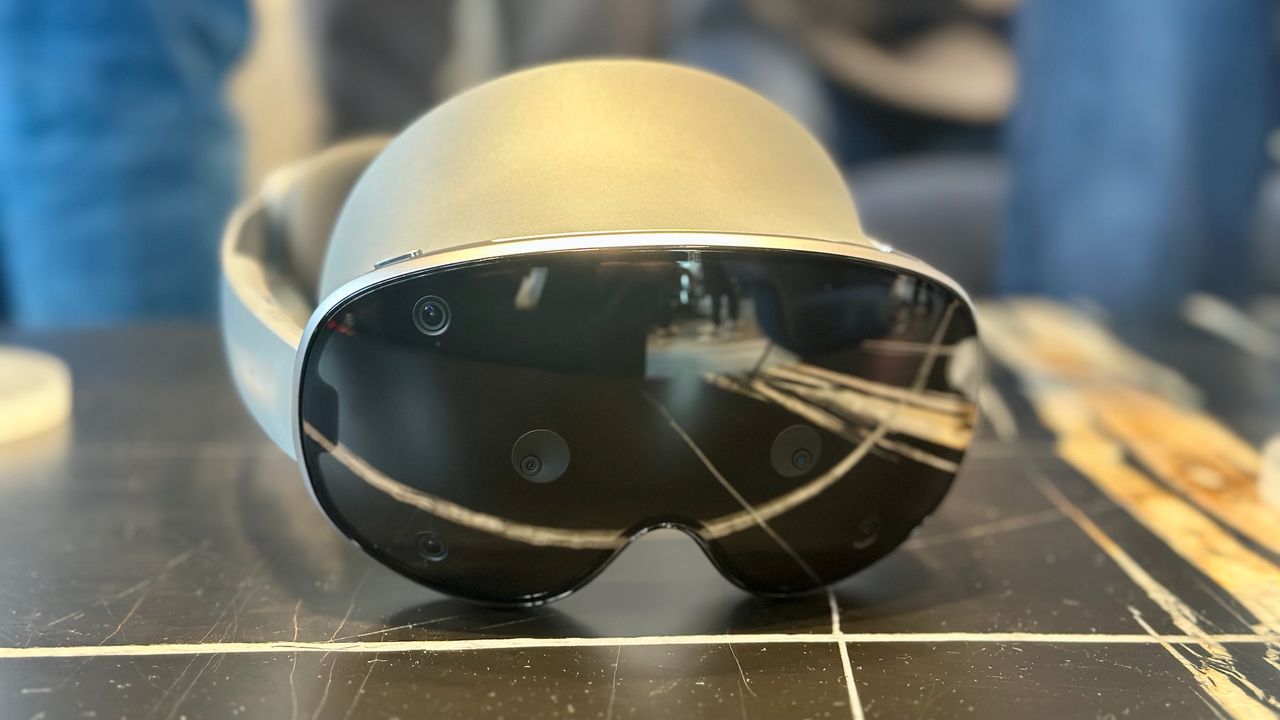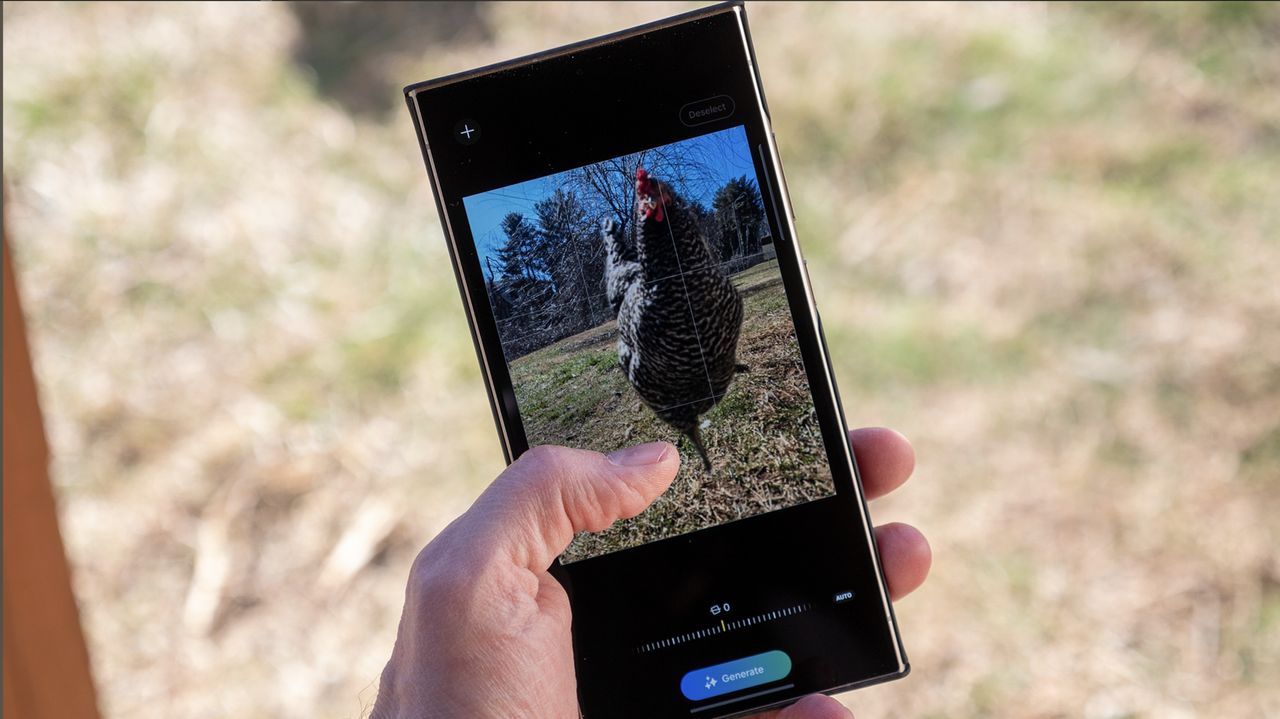Google's analytical October Workspace Drop simplifies data in Sheets, bolsters AI security
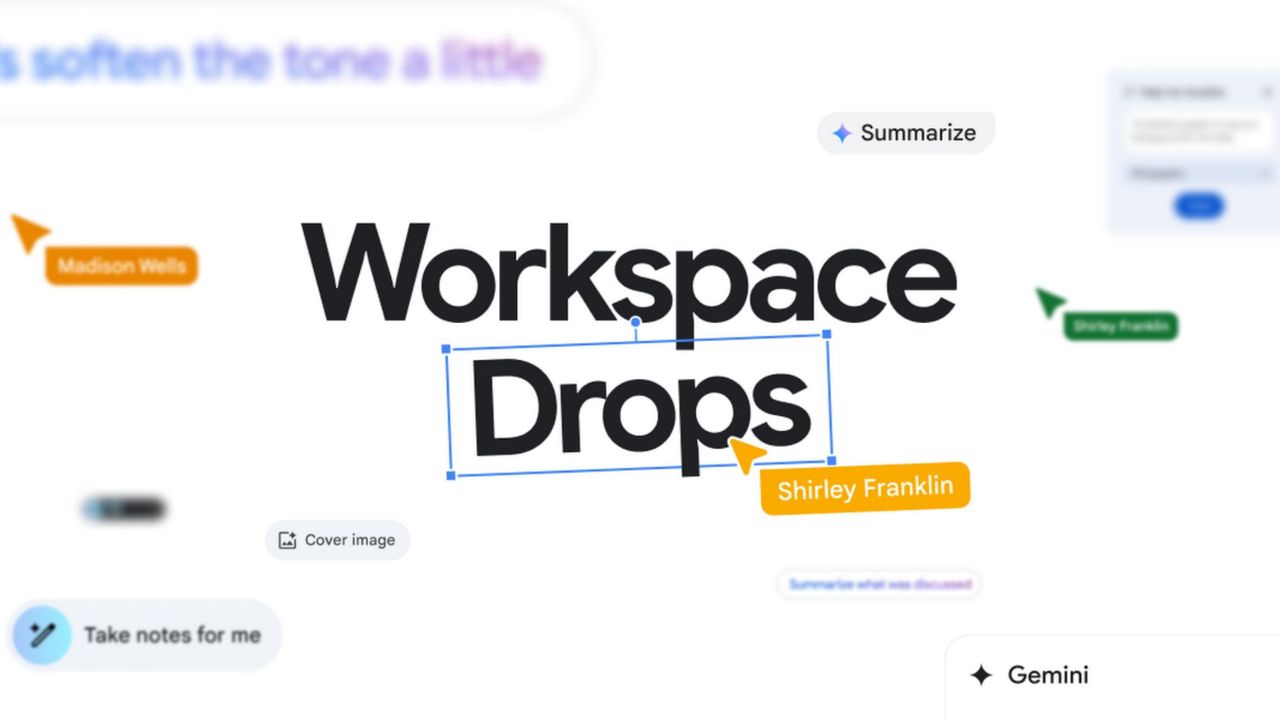







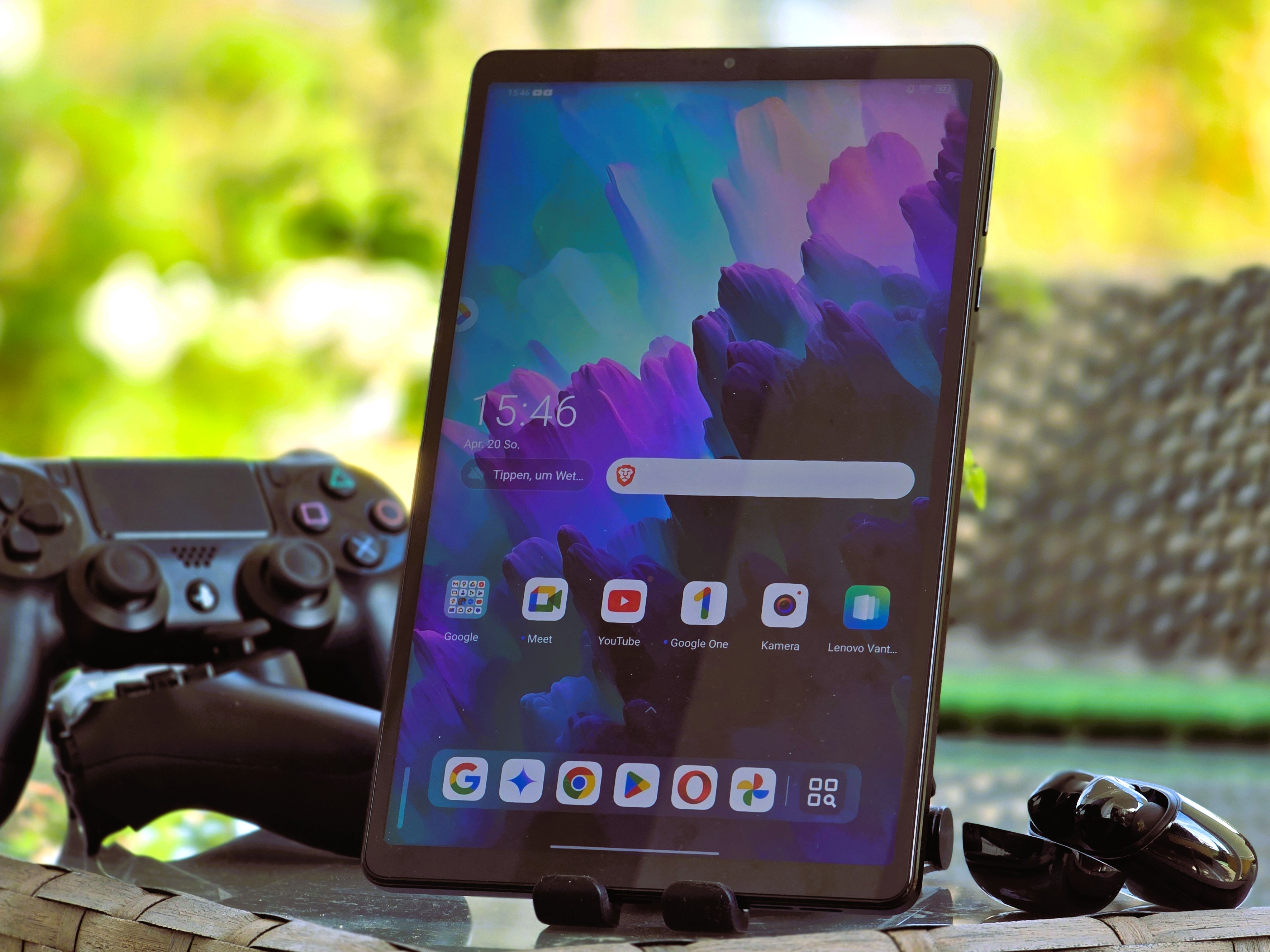
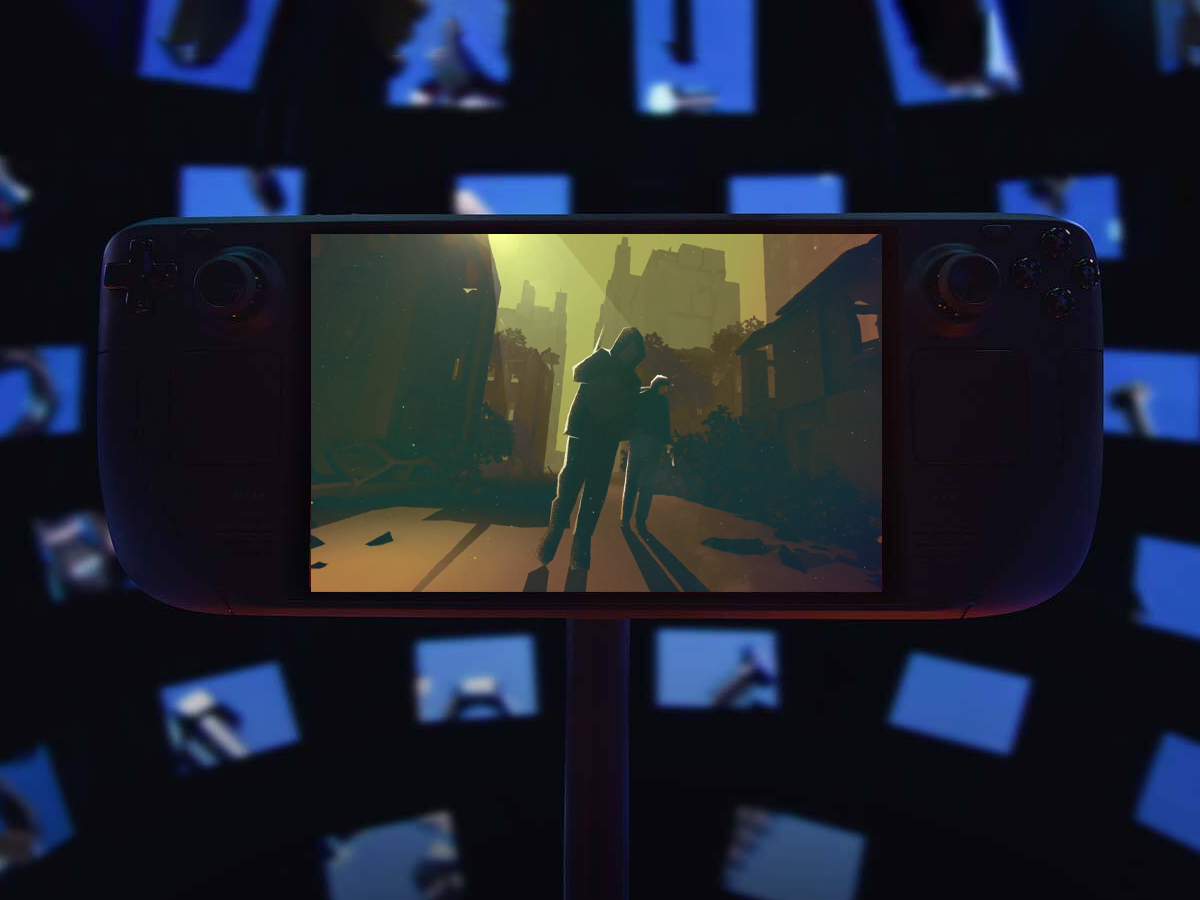

Samsung has released the Android 16-based stable One UI 8 update for two Galaxy A series smartphones - the Galaxy A06 4G and the Galaxy A07 4G. The One UI 8 stable update for the Galaxy A06 4G comes with firmware version A065FXXU7CYJ8, while the update for the Galaxy A07 4G comes with firmware version A075FXXU1BYJA. [#InlinePriceWidget,13265,1#] The update for both smartphones requires a download of around 2.3GB and is rolling out in the Philippines, Thailand, Indonesia, and Malaysia, with the rollout expected to expand to other countries soon. Samsung Galaxy A07 4G However,...
Galaxy S26 Ultra is rumored to receive a battery upgrade, and what if Samsung takes it to 5400 mAh? Even if the company upgrades the battery to 5400 mAh, can the US variant of the Galaxy S26 Ultra get it in the US?
Recent development signals mixed assumptions, with some claiming an mAh consistency and some assuming a boost from 200 mAh to 400 mAh. Beyond technological hurdles, the company also needs to satisfy certification constraints.
Samsung has made a huge jump from a 4,100 mAh battery in the Galaxy S10 Plus to a 5,000 mAh battery in the Galaxy S20 Ultra. Since then, we haven’t seen Samsung boost the battery capacity of its biggest flagship phone.
While 5,000 mAh to 5,400 mAh doesn’t sound like a major switch, it requires double the engineering efforts. The company will have to make architectural changes under the hood to make this upgrade happen.
Increasing the battery size could result in a thicker body, which Samsung couldn’t pursue. The S26 Ultra is rumored to be even thinner than the S25 Ultra despite featuring Qi2 charging magnets inside the phone’s back panel.
Samsung might consider adopting silicon-carbon or silicon-anode cells to keep the battery pack thin and increase capacity. However, the company stays cautious while considering such changes after the Note 9 incidents.
Apart from this, Samsung needs to comply with US and EU limitations. It’s not impossible to bring a phone with an over 5,000 mAh battery, but there’s a massive structural change that needs to be made with the battery cell.
A battery with up to 5,200 mAh can be used in US phones, but if the vendor wants to go beyond, they need to make changes. OnePlus 13 brings a dual-cell battery that offers an overall capacity of 6,000 mAh, and it’s a living example.
Firstly, a battery upgrade that takes the capacity beyond 5,000 mAh sounds just a dream at Samsung. And if the company raises the bar, it would be interesting to see what changes it has made to make it happen.
The post Can Samsung launch the Galaxy S26 Ultra with 5,400 mAh battery in the US? appeared first on Sammy Fans.
Samsung Galaxy S26 series may get a universal upgrade in the screen segment. It’s being rumored that the company may not keep its most advanced OLED technology limited to the high-end model, i.e., the Galaxy S26 Ultra.
According to a new rumor, Samsung would bring its M14 OLED screen across the Galaxy S26 models with QHD resolution. The base model is the luckiest here, which is getting the advanced and higher resolution panel.
The base Galaxy S25 brings an FHD+ resolution display, while the S25 Plus and Ultra feature QHD+. Plus models’ display matched Ultra last year only, as previous Plus models also used FHD+ panels like the base version.
2026 could mark a major shift in specs of the Galaxy S smartphones. Samsung is expected to use its most advanced OLED technology with the M14 material set. It will bring massive improvements in quality and power efficiency.
The Galaxy S26 and S26 Plus could come with 6.3-inch and 6.7-inch OLED screens. The Galaxy S26 Ultra could sport a 6.9-inch display. While Plus’ screen size remains unchanged, the base and Ultra are getting a little larger OLEDs.
Recently, it was reported that the Galaxy S26 series might upgrade its telephoto sensor. Samsung might use a new 12-megapixel camera with a larger size. It will improve light adoption and offer clearer shots of distant objects.
Continue reading…
The information is based on recent leaks and rumors. Samsung hasn’t officially confirmed these specs for the Galaxy S26 series. Meanwhile, the company hinted at new cameras, Exynos 2600, and advanced Galaxy AI.
The post Samsung Galaxy S26 and Plus to feature Ultra-grade OLED screen appeared first on Sammy Fans.
Samsung One UI 8 is gradually rolling out to Galaxy devices. The Android 16 upgrade introduces various new features and an improved user interface. The company aims to update all the phones, foldables, and tablets by November 2025.
Samsung has made a much-needed comeback with the Android 16-based One UI 8. The company took significant time in optimizing the One UI 7 version, built on Android 15. It was Samsung’s most delayed update rollout in recent years.
Leaks suggest significant changes in One UI 8.5, confirming what every Samsung fan assumes: One UI 8 is not a major upgrade. Well, it’s a thing of the future, and users are currently excited about the One UI 8.0 update for their devices.
Galaxy S series
On September 15, Samsung initiated the Stable rollout in South Korea. The Global expansion took place on September 18 for the Galaxy S25 series. The company will continue to update the Galaxy S series in the coming days/weeks.
Galaxy Z series
Samsung’s Galaxy Z Fold 7, Flip 7, and Flip7 FE were the first to launch with One UI 8. The new features have begun releasing to older foldable phones on September 22, and the expansion will take place throughout October.
Galaxy A series
Samsung surprised fans with an early One UI 8 release for the Galaxy A56 5G. The device wasn’t involved in Beta testing, yet the update hasn’t been delayed. More Galaxy A phones will join the party over the next couple of weeks.
Galaxy M/F phones
Galaxy Tab series
Galaxy Tab S11 series launched with Android 16-based One UI 8. The Korean tech giant has not yet released it with updates to existing tablets.
Galaxy XCover series

Samsung One UI 8
Samsung has dozens of Galaxy devices eligible for the One UI 8 update. After kicking off the official version’s rollout, the company has been sequentially expanding the update to eligible models based on the Global roadmap.
Galaxy S series roadmap:
| Model | Availability |
|---|---|
| Galaxy S25, S25+, S25 Edge and S25 Ultra | From September 18th |
| Galaxy S24, S24+, S24 FE and S24 Ultra | From September 25th |
| Galaxy S23, S23+, S23 FE and S23 Ultra | From October 2nd |
| Galaxy S22, S22+, and S22 Ultra | From October 6th |
| Galaxy S21 FE | From October 16th |
Galaxy Z series roadmap:
| Model | Availability |
|---|---|
| Galaxy Z Fold6 and Z Flip6 | From September 25th |
| Galaxy Z Fold5 and Z Flip5 | From October 2nd |
| Galaxy Z Fold4 and Z Flip4 | From October 6th |
Galaxy A series roadmap:
| Model | Availability |
|---|---|
| Galaxy A56 5G and A36 5G | From September 25th |
| Galaxy A55 5G, A35 5G, A26, A17 and A17 5G | From October 2nd |
| Galaxy A54 5G, A34 5G, A25 5G, A16 5G, A16, A15 5G | From October 6th |
| Galaxy A73 5G, A53 5G, A24, A15, A07, A06 5G and A06 | From October 16th |
| Galaxy A33 5G | From October 23rd |
Galaxy Tab series roadmap:
| Model | Availability |
|---|---|
| Galaxy Tab S10, Tab S10+, Tab S10 Ultra, Tab S10 FE and Tab S10 Lite | From October 2nd |
| Galaxy Tab S9, Tab S9+, Tab S9 Ultra and Tab S9 FE | From October 6th |
| Galaxy Tab S8, Tab S8+ and Tab S8 Ultra | From October 16th |
Last updated October 22, 2025
The post Samsung Galaxy One UI 8 Update – List of Android 16 devices and schedule appeared first on Sammy Fans.




If you buy a flagship on launch day, you get perks like more memory or freebies, but if you wait, you get discounts instead. And you don’t necessarily need a flagship either, not when premium mid-rangers are this good. Let’s look at both options. The Samsung Galaxy Z Flip7 price has hit a new low – it’s now under €800. This puts it between the vanilla Galaxy S25 and the S25+. The flip foldable offers a new form factor experience, unlike the S-phones, which haven’t changed much in the last few years. The Z Flip7 has a 4.1” cover and a 6.9” inner display plus a 50+12MP dual camera on the...
Samsung is about to wrap up its Android 16 rollout, with entry-level Galaxy A06 and A07 phones having also joined the One UI 8 club.
While Chinese OEMs are unveiling their Android 16 release plan, Samsung has nearly completed the distribution. It’s a steep edge that no one is talking about, and One UI 8 is now available for the Galaxy A06 and Galaxy A07.
The firmware update has started releasing in Southeast Asia. An expansion to India is highly likely soon, and Global availability in the next couple of days. You can identify the update for your device via PDA numbers as follows.
One UI 8 build versions
Samsung’s One UI 8 update also brings newer security patches to Galaxy phones. The Galaxy A07 is getting the latest October 2025 patch, while the Galaxy A06 is elevating its system security by installing the September 2025 patch.
Galaxy A07 and A06 get various new and improved features with the One UI 8 update. It’s based on Android 16, which also enhances stability and security by optimizing the functionality of various system and third-party apps.
You get a revamped Quick Share experience with a dedicated interface. The app’s UI has been divided into two sections: Send and Receive. Native One UI apps like Calendar, Clock, and Reminder have also updated their designs.
One UI 8 has no major design differences from One UI 7. This version mainly focuses on refinements, bringing a clean and easily accessible design. It also streamlines the overall experience by integrating key features into Settings.
Update your device through Settings > Software update > Download and install.
The post Samsung’s Android 16 (One UI 8) lands on Galaxy A06, A07 appeared first on Sammy Fans.
Samsung Galaxy S26, S26 Plus, and S26 Ultra might finally end the Telephoto camera weakness with newer and bigger sensors. The delay in launch could potentially benefit every Samsung fan who is waiting for the new flagships.
A new leak suggests Samsung may equip the Galaxy S26, Plus, and Ultra models with a new yet bigger Telephoto camera. The top-tier flagship may surprise with an even bigger and high-resolution Telephoto sensor.
Samsung may bring a new 1/2.55-inch, 12-megapixel Telephoto camera to the Galaxy S26 series. This sensor will replace the conventional solution that is 1/3.52-inch in size and features 10-megapixel resolution.
Beyond that, the leak highlights the possibility of Samsung bringing an even “bigger” telephoto sensor to the Galaxy S26 Ultra. This sensor might match the ultrawide and periscope modules with 50-megapixel resolution.
Samsung might also keep the resolution the same at 12MP but use a little bigger and better Telephoto lens than what it could install in the base and Plus. However, the camera specifications aren’t confirmed yet and are subject to change.

Image Source – Onleaks and AndroidHeadlines
The new camera setup seems quite promising, and it will benefit a lot in terms of sales. Fans have been demanding a new zoom camera for years, but Samsung kept recycling the 10-megapixel telephoto sensor in its flagships.
The Galaxy S26 Ultra may retain the 200-megapixel main, 50-megapixel ultrawide, and 50-megapixel periscope with 5x optical zoom. The selfie snapper may also be continued, which brings 12-megapixel resolution.
If S26 Ultra utilizes a 50MP telephoto sensor, Samsung would be able to target Apple’s iPhone 17 Pro/Max even harder. The latest iPhone brings a triple 48MP camera module, and Samsung’s flagship will have an edge of a 200MP sensor.
(Source – Alchimist_Leaks)
The post Big Telephoto camera rumored for Galaxy S26, Plus and Ultra appeared first on Sammy Fans.
Samsung Art Store is expanding its artworks in celebration of the autumn season. Samsung and The Museum of Modern Art have teamed up to bring 20 carefully curated artworks to the Samsung Art Store on qualifying Smart TVs.
The new autumn artworks land on Samsung Art Store as part of MoMA: Fall Under the Spell. You can access the Art Store on your Smart TV and access the newly joined artworks along with a plethora of stunning art.
New artworks deliver a fresh and delightful way for new audiences. It also impresses longtime MoMA fans alike to experience the Museum’s collection at home.
The new collection introduces artworks by Leonora Carrington, Diego Rivera, James Ensor, and Edvard Munch. The new pieces transform Samsung’s The Frame and QLED TVs into a gallery showcase of museum-quality art.

Source – Samsung Newsroom
Samsung says the new artworks from The Museum of Modern Art bring the mystique and beauty of autumn into living spaces with sophistication. It’s far beyond seasonal decorations at home; just utilize the artworks in 4K resolution.
Daria Greene, Global Curator of Samsung Art Store, said:
“This collaboration allows us to share artworks that capture the spirit of autumn in unexpected and thought-provoking ways. From haunted to whimsical, these pieces from MoMA’s collection offer art enthusiasts a refined alternative to conventional Halloween decor to bring into their home.”
This collection joins Samsung Art Store’s growing portfolio of exclusive collaborations with prestigious institutions, including the Art Institute of Chicago, the Van Gogh Museum, the Louvre, the Musée d’Orsay, the Tate, and Art Basel, as well as collections featuring artists such as Frida Kahlo, Henri Matisse, Georgia O’Keeffe, Roy Lichtenstein, Salvador Dalí, and Kara Walker, René Magritte, Jean-Michel Basquiat, and Marimekko.
The post Samsung Art Store adds 20 new artworks in autumn celebration appeared first on Sammy Fans.

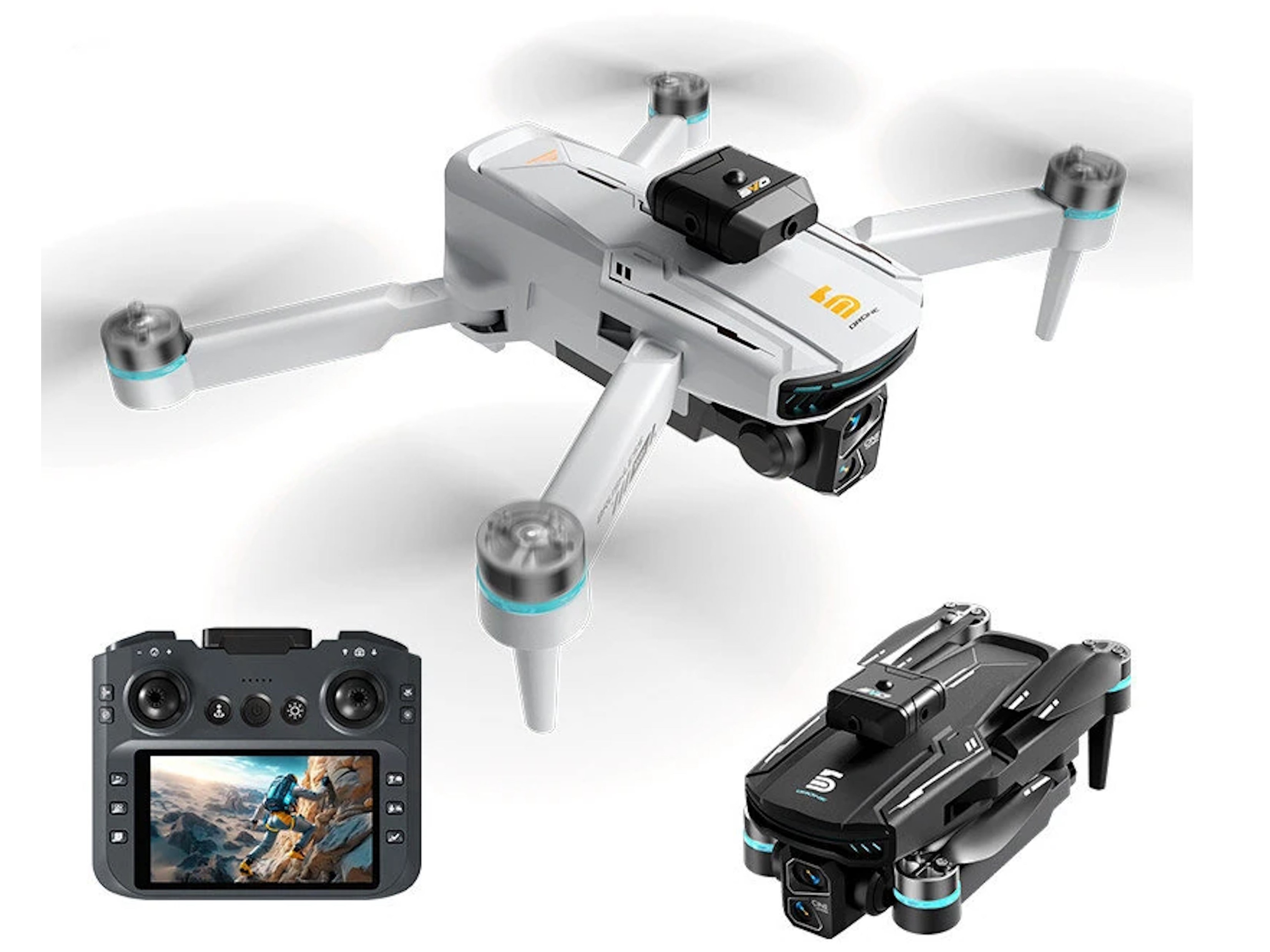
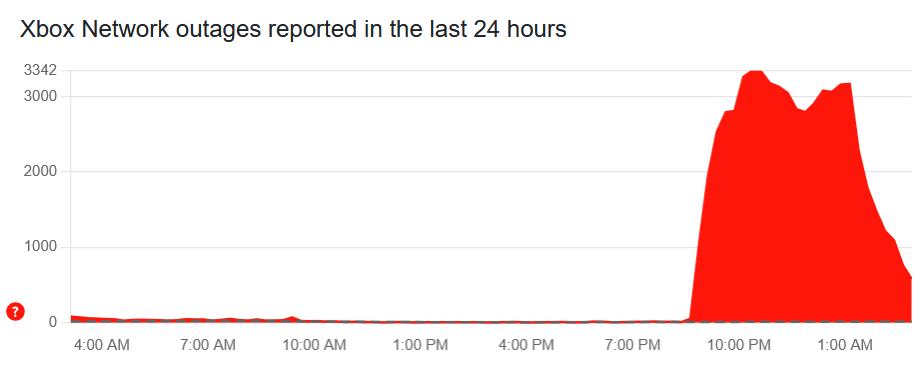





Ayaneo is branching out from handheld consoles and mini PCs into the very crowded realm of smartphones. And, of course, it's aiming its smartphone adventure at gamers. The company has started teasing its first handset, which it bills as "a mobile phone truly made for gamers". In the quick video teaser below, we can see the outline of its rear, which appears to house two camera sensors that are flush with the back cover, without any protrusions, RedMagic-style. Aside from that, there's not really much to go on here. "Real gamers know gamers", Ayaneo says, and that's surely true but...
Following the official launch of the Galaxy XR, Samsung unveiled the 3D capture camera feature for select Galaxy phones. Available through Camera Assistant app, the new tool allows users to capture from their phone and view in the XR headset.
Samsung says Galaxy phones running Android 16-based One UI 8 support the 3D capture camera feature. Not all devices are compatible either, as the company has shared a list, which is dominated by the most recent premium phones.
The Korean tech giant has also made it clear that the 3D capture requires hardware support. That said, if older Galaxy devices don’t meet the hardware requirement, they won’t be eligible for 3D capture with future OS upgrades either.
Good Lock’s Camera Assistant is a requirement to get the 3D capture feature. If you don’t have Good Lock on your Galaxy, get it from Galaxy Store or Play Store and install the Camera Assistant application as well.

Tip: You can confirm the “3D Capture” tag for 3D photos/videos in Gallery > Single View > Swipe Up > Details.
Samsung’s Galaxy XR Headset is necessary if you want to view photos and videos captured using the 3D capture feature. Share the 3D content with your Galaxy XR Headset’s storage and head over to the headset for viewing.
Pay attention, you can only view 3D content as normal photos/videos on your Galaxy smartphone. 3D videos shot on Samsung’s Galaxy phones can also be viewed on other XR devices that support MV-HEVC playback.
Supported devices are the Galaxy S25, S25+, S25 Ultra, S25 Edge, Z Fold 7, and Z Flip 7, as well as the Galaxy XR Headset. More details in the image attached:

The post Samsung 3D Capture Camera Feature: How it works and supported phones appeared first on Sammy Fans.




The Oppo Find N5 launched back in February, and now Oppo is hard at work on its successor, which we assume will be called Find N6. Today in China some fresh details about the upcoming device have been outed. The Find N6 is said to have an 8.1" folding screen and a 6.6" cover display, the Snapdragon 8 Elite Gen 5 SoC at the helm, and a battery capacity that should be around 6,000 mAh. Oppo Find N5 On the rear will be a 50MP main camera using Sony's Lytia LYT-808 1/1.4" type sensor, as well as a 50MP periscope telephoto camera with 3x optical zoom. The fingerprint sensor is still...

For some time now, “artificial intelligence” and “AI” have been the buzzwords in the tech industry. OpenAI is the company that started this great revolution, positioning itself as the name everyone thinks of when talking about AI thanks to its ChatGPT platform. But what if it’s not all as rosy as it seems? What if OpenAI is actually far from profitable and is just “burning money” waiting for something that might never happen (financial sustainability)? The company’s finances seem to tell a story that points in that direction.
ChatGPT undoubtedly captured the world’s imagination. OpenAI’s CEO, Sam Altman, became the face of an artificially intelligent future, guiding humanity toward an era of unprecedented productivity and creativity. Large companies have also poured money into OpenAI, and the firm even changed its business model to allow for easier revenue streams. That said, all the accumulated revenue might not be enough.
According to a recent financial analysis by Will Lockett from Planet Earth and Beyond, OpenAI is in a catastrophic financial freefall. The company that powers a revolution is losing money at a rate that would make most established industries faint. Worse still, its solution to this cash-burning inferno appears to be dousing it with a trillion dollars’ worth of gasoline.
Let’s pull back the curtain on the finances. In the first six months of 2025, OpenAI reportedly generated $4.3 billion in revenue. That’s an impressive figure for a young company. The problem? During that same period, it posted $13.5 billion in net losses.
This isn’t just a rounding error. It means for every dollar OpenAI earns, it loses three.
This puts the company on track for a staggering $27 billion annual loss by 2025. For reference, we are talking about nearly double the $14 billion loss some reports had predicted for 2026. The math of its growth is even more alarming. For every single dollar of new revenue growth, OpenAI is spending an astonishing $7.77.

Lockett described the situation bluntly: “This is a money black hole. I cannot stress how unprecedentedly dreadful that is.” In any normal business, numbers like these would trigger emergency brakes, massive layoffs, and a desperate pivot to survival. But OpenAI is not a normal business. It’s as if its leadership is “fully aware they are driving headfirst into a wall at 100 mph, and instead of stepping on the brakes, they are mashing the throttle,” Lockett added.
Instead of pivoting, OpenAI is doubling down. The company has announced plans to invest about $1.4 trillion annually in data centers and AI infrastructure through 2030. The brand has forged deals with giants like TSMC, Samsung, and Intel.
This investment is a bet that “more is more”—that building bigger and more powerful models is the path to profitability and, eventually, Artificial General Intelligence (AGI). But if the current operational costs are unsustainable, the future costs are astronomical.
Calculations based on industry standards (data centers costing 26% of their build cost annually to operate) paint a grim picture. By 2029, that trillion-dollar infrastructure plan could saddle OpenAI with approximately $650 billion in annual operational costs.
The company’s own optimistic revenue target for that same year? Just $125 billion.

The math simply doesn’t work. “Even if OpenAI hits its $125 billion 2029 revenue target,” Lockett notes, “it will still be making an annual loss of half a trillion dollars.”
This spending spree would be reckless enough on its own. It becomes deeply irrational when you discover what OpenAI’s own researchers have admitted.
The most brutal criticism of OpenAI’s strategy comes from OpenAI itself. The core technical problem plaguing all large language models, including ChatGPT, is “hallucinations.” The term “hallucinations” refers to the AI’s tendency to confidently invent facts, sources, and answers. This one flaw makes them unreliable for the high-stakes business and enterprise tasks that OpenAI needs to sell to justify its valuation.
The company’s trillion-dollar bet assumes that this problem can be fixed by scaling up. That is, by adding more data and more computing power.
There’s just one problem. According to a research paper published by OpenAI, this assumption is false. Their own research reportedly found that “hallucinations are a core part of generative AI technology and can’t be fixed” with more data and compute.
The researchers did find a potential workaround called “active learning,” which essentially involves massive human oversight to correct the AI. But they concluded that “operating such models is so inherently expensive… it is almost always significantly cheaper to have a human do the task instead,” Lockett reports.
The company is betting a trillion dollars on a solution that its own scientists have proven will not work for a problem they admit is inherent to the technology.
This technical flaw is not just theoretical; it’s playing out in the real world. While headlines trumpet an AI takeover, the reality on the ground is one of widespread failure.
An MIT study found that 95% of AI pilots fail to generate any profit or productivity gains for the businesses implementing them. Other research, such as a report from METR, has even shown that AI coding tools can actually slow developers down due to the time spent finding and correcting the AI’s “helpful” errors.

This is the reality check against the hype. While some niche AI tools for data analysis are effective, the generative AI revolution that OpenAI champions is largely failing to launch. Even user engagement, the lifeblood of any tech platform, is showing signs of trouble. There are even reports of ChatGPT usage having peaked and now being in decline.
If the technology is fundamentally flawed and the finances are catastrophic, why is this happening? Why continue to burn billions on a failing strategy?
The answer, critics argue, lies in the incentive structure. “They aren’t developing AI,” Will Lockett states. “They are trying to make the bottom line go up at any cost.”
It’s interesting how in the world of Silicon Valley, AI companies are not valued on core aspects like profitability or product-market fit. They are valued on data center spending. More spending signals more ambition, which attracts more investment at a higher valuation.
This creates a perverse incentive for executives. CEOs like Sam Altman don’t take a traditional salary. Instead, their wealth is tied to the company’s stock valuation. Altman reportedly stands to earn a $10 billion payday from his 7% stake in OpenAI’s for-profit conversion. This incentive structure encourages executives to keep pushing things to enrich themselves before the inevitable bubble pops. Bankers and VCs who previously supported the “AI hype” are now quietly warning of a bubble.
So, is OpenAI’s goal of profitability in the next few years realistic?
The numbers suggest it’s nearly impossible. The company’s revenue growth is already collapsing, falling from 250% in 2024 to just 56% in 2025. To break even, OpenAI would need to triple its revenue annually through 2030. Meanwhile, its core products are failing in 95% of business pilots.
This sets the stage for a brutal reckoning. The $6 billion investor bailout OpenAI took at the end of 2024 merely delayed the inevitable. The company’s trajectory, without a quick and radical restructuring, points toward bankruptcy.

But this isn’t just about one company. OpenAI controls 61% of the US generative AI market and has absorbed over 20% of all AI venture capital. So, basically, there’s a high concentration of risk for an entire industry in a single entity.
When this bubble bursts, it won’t be a quiet failure. It threatens to take the entire AI industry down with it. It could wipe out a big chunk of the $192.7 billion in VC funding poured into the sector.
This is the paradox at the heart of OpenAI. It’s a company built on the promise of superhuman intelligence that is being run with what appears to be a stunning lack of human common sense. It is a story of “greed at the cost of everything,” and it is hurtling toward a conclusion that will impact all of us. Let’s wait and see how events develop.
The post The Trillion-Dollar Paradox: OpenAI Loses $3 for Every $1 It Earns appeared first on Android Headlines.

Remember when ChatGPT launched and everyone predicted Google’s search empire would crumble? Yeah, about that. Here’s the reality check nobody saw coming. A massive new report from Datos, a Semrush company, just analyzed billions of desktop searches from millions of users across the US and Europe. The data reveals an unexpected AI search evolution: Google isn’t just surviving the revolution, it’s absolutely crushing it with a 95% market share in both regions.
And as for all those headlines about OpenAI killing Google with ChatGPT’s search features? Turns out they were way off base.
Don’t get me wrong. ChatGPT and its AI buddies have definitely made an impact. Usage has nearly tripled over the past year. More than 30% of US desktop users and over 40% of Europeans are now using ChatGPT. Tools like Gemini, Claude, and Perplexity have their loyal fans too.
On the surface, it sounds like Google might have just lost 30-40% of its users to AI. But here are some numbers to put it into perspective: AI tools only make up about 1.3% of total browsing activity.
Despite every tech pundit on Twitter declaring that AI would replace Google, it barely makes a dent in how people actually search for stuff online. AI isn’t replacing traditional search at all. It’s just another tool in your digital toolbox. You might ask ChatGPT to help you debug some code or brainstorm ideas. Then you’ll hop over to Google’s AI Mode to find that new Thai restaurant or check if your favorite shoes are on sale.
Okay, so Google’s not dead. However, it does have one major issue that publishers are grappling with. Zero-click searches.
Almost 27% of Google searches now end without anyone clicking anything. This is up from 24.4% just a year ago. People are getting their answers right there on the search results page and calling it a day.
For anyone running a website or trying to drive traffic, this is kind of scary. You’ve done all your SEO homework, you put in the effort into crafting the best articles. All this just so you could rank number one on Google. But then you still get zero visitors because Google just answered the question itself. And the worst part is that these answers might have been scraped from your own website.
Google’s AI Overviews feature is a big part of this. These AI-generated summaries now show up in over 13% of searches, and that number keeps climbing. Some estimates say they could appear in more than 80% of informational searches soon.
In August, Google straight up denied that AI search was hurting website traffic. Publishers weren’t buying it. Multiple reports showed traffic tanking, especially for news sites, but Google said everything was fine.
But if you really want to know what’s actually shaking up the search game, it’s not some fancy AI tool. It’s an oldie but goodie: Reddit.
The community-driven platform has absolutely exploded in popularity. It’s overtaken Facebook in desktop visits in the US and is catching up fast in Europe. Reddit now sits comfortably in the top five destinations people reach from search engines, right alongside YouTube, Amazon, Wikipedia, and Facebook.
This is because people are tired of reading polished, SEO-optimized garbage that tells them nothing useful. When you Google “best budget laptop Reddit,” you’re saying loud and clear that you want real opinions from real people, not some affiliate marketing nonsense. Reddit got so valuable that Google paid them $60 million for access to their data to train AI models.
This is actually a fascinating turnaround. In the past, websites strived to provide readers with neutral commentary and let them make the decisions themselves. But now? We’re missing the human touch so much that sometimes diving deep into an echo chamber like Reddit might yield more interesting (and controversial) opinions and perspectives that traditional websites might not have.
While AI is stealing traffic from some sites, it’s completely failing to disrupt others.
YouTube remains untouchable. It’s the top destination from traditional search in both the US and Europe. It’s also the second-most visited site from AI tools.
But why can’t AI touch video content? Because watching someone actually do something is way more valuable than reading about it. You can’t replace a 10-minute tutorial on fixing your sink with a text summary. Try learning a new dance move from ChatGPT. Good luck with that.
This reveals something important about what AI is actually disrupting. Sites offering basic, factual, “evergreen” content are getting hammered. Wikipedia, for example, lost 5% of its human traffic year over year while bots and scrapers grew massively. Stack Overflow, Chegg, and similar Q&A sites are bleeding traffic.
But platforms offering fresh perspectives, community discussions, and video content? They’re actually thriving. YouTube’s citation rate in AI answers jumped from 37% to 54%. Reddit gets mentioned by ChatGPT as often as it gets cited. These platforms offer something AI can’t replicate: real human experiences and visual demonstrations.
So, what does this mean for anyone trying to drive traffic or build an audience? It’s time to toss out the old playbook and start writing a new one. Creating generic “what is” articles and “how to” guides used to be a solid strategy. Now? AI just scrapes that content, summarizes it, and nobody ever visits your site.
Some publishers are already shifting their strategy. Instead of cranking out evergreen content that AI can easily replicate, they’re focusing on what AI can’t steal: original research, unique data, customer stories, and fresh perspectives that haven’t been said a million times before.
Think about it this way: ChatGPT can tell you what SEO is. But at the same time, it can’t tell you about the weird bug you just discovered in Google Search Console this morning. AI can explain Reddit. But can it spill the tea unfolding in your favorite subreddit right now?
From what we’ve gathered, the content that survives is either too specific for AI to care about, too fresh for AI to have learned yet, or too personality-driven for AI to replicate. As for everything else? Well, you might think of it like roadkill on the information superhighway.
The fear and resistance around AI search evolution isn’t new. We’ve watched this exact movie play out before.
There are strong parallels between how traditional artists reacted to the rise of digital art and how some content creators today feel about AI-generated content. When digital art first emerged, many traditional artists felt threatened, dismissed it as “cheating,” or questioned its legitimacy as “real art” because it offered new tools and shortcuts that made certain aspects of creation easier or faster.
Now, doesn’t that sound familiar?
Early reactions to digital art in the 2000s mirror today’s AI anxiety perfectly. Traditional artists viewed digital tools with skepticism, often calling it “not real art” because it lacked the physicality and manual skill associated with traditional mediums. Some artists felt that digital tools made art creation too easy, reducing the perceived value of the artist’s effort and skill. There was intimidation, as digital art allowed for rapid production and easy corrections, which contrasted with the more labor-intensive and irreversible nature of traditional art.
Just as digital art was once seen as a threat to traditional art, AI-powered search tools are now viewed by some as a threat to traditional websites and publishers. Both faced backlash for being labeled as “cheating” or “not legitimate,” often due to misunderstandings about the creative process and the skills required.
Over time, digital art gained acceptance as artists and audiences recognized that it required its own unique set of skills and creative decisions, much like traditional art. A similar evolution is happening with AI search right now. The tools aren’t replacing the craft. Instead, they’re expanding what’s possible.
Google’s 95% market share isn’t going anywhere. ChatGPT’s search tools didn’t kill traditional search. They just gave us another option.
The real story of this AI search evolution isn’t about AI destroying Google. It’s about how we’re all learning to use multiple tools for different jobs. You’ve got Google for quick facts and finding stuff. You can also use ChatGPT for brainstorming and complex questions. Then, you can always hop on Reddit for real opinions, and finally, YouTube for how-tos.
Some things obviously need to be addressed. Zero-click searches are forcing websites to completely rethink their strategy. Generic content is dead, and community platforms and video are winning.
As for the AI revolution everyone predicted, it feels more like a gentle evolution in search. The reality is less dramatic than the headlines suggested, but way more interesting when you look at how people actually use the internet now.
So, maybe the future of search isn’t about one platform winning. It’s about all of them carving out their own space. Now, it’s up to content creators learning which types of content are worth making in an AI-powered world.
The post Everyone Predicted Google's Death in 2024, Google Hit 95% Market Share Instead appeared first on Android Headlines.

AI is everywhere these days, with Google looking for more ways to bring it into our lives. The tech giant is reportedly putting it to work by bringing AI-generated app review summaries to the Google Play Store. We’ve seen this AI feature on many Android phones in the form of AI Summaries, where it cuts down large pieces of text into short, crisp notes. Google is now doing this with app reviews.
Android Authority reports that AI-generated review summaries in the Play Store are now appearing more broadly. Once available to your account, you’ll see a new “Users are saying” bold heading in the Rating and review section of the Play Store app listings.
The single paragraph AI summary highlights common positive and negative points across that app’s user reviews. However, it appears that apps must have enough reviews for AI to work with.

The report notes that it’s seeing AI app review summaries in the Play Store version 48.5.21-31. However, it doesn’t seem to be available on all devices at the moment. Under the AI text summary, there’s a range of tabs that let you dive deep into reviews, detailing certain aspects of the app. Based on the app’s nature, some common aspects could include interface, feature availability, and performance.
Apple rolled out similar review summaries for the iOS App Store in April. Amazon, too, has been serving AI-generated product review summaries for quite some time.
The post Google Play Store AI Review Summaries Reportedly Rolling Out appeared first on Android Headlines.

Amazon debuted its next generation of Echo devices a little over a month ago. Dubbed the Echo Dot Max, Echo Studio, Echo Show 8, and Echo Show 11, the company has designed the new speakers specifically for Alexa+, which is the firm’s more conversational AI assistant. Two of these devices, the Amazon Echo Dot Max and Studio, are finally available to buy.
Amazon started taking pre-orders for the Echo Dot Max and Studio right after the launch in the US earlier this month, and it has now made them available for purchase. The Echo Dot Max and Echo Studio are up for grabs at $99.99 and $219.99, respectively.
Both come in Graphite and Glacier White color variants. Amazon is offering the Echo Dot Max in an additional Amethyst colorway as well. Amazon Prime consumers in the US are getting Alexa+ Early Access out of the box for free.

For those unaware, the Echo Dot Max is a premium speaker that uses Amazon’s new AZ3 chip. The chip delivers faster Alexa responses and boosts overall performance. The device features a dual-speaker setup with a high-excursion woofer and custom tweeter, providing deeper bass and crisp vocals. It also doubles as a smart-home hub with built-in support for Matter and Zigbee.
As for the latest Echo Studio model, it sports a powerful high-excursion woofer and three full-range drivers. It is 40 percent smaller than its predecessor, yet delivers a more powerful sound. The smart home accessory supports spatial audio and Dolby Atmos. Amazon says the device offers a premium audio performance in a compact form that blends into any living space.
In case you’re interested in the latest Amazon Echo Show 8 and Echo Show 11 displays, you can pre-order them directly from Amazon in the US. The former is available for $179.99, while the latter will set you back $219.99. These will be going on sale on November 29.


The post Amazon Finally Starts Selling the Echo Dot Max and Studio Speakers appeared first on Android Headlines.

The FCC has taken its first step toward scaling back the broadband “nutrition label,” the standardized pricing sheet that helps consumers see the true cost of the plan. These labels were made mandatory back in 2024. Now, after years of debate, the FCC plans to remove those requirements, and therefore indirectly allow ISPs to hide fees from you.
In a 2-1 vote, the FCC approved a proposal to reconsider some major parts of the broadband label rules. Supporters of the rollback, led by Commissioner Brendan Carr, argue that the transparency rules are “burdensome.” They further claim that they do not meaningfully influence customers’ decisions on which internet plan to buy. The proposal would drop rules forcing ISPs to itemize fees, show labels online, offer multilingual versions, and read details by phone. Carr says that these add needless cost and complexity.
Proponents also argue that eliminating certain elements from the rule would allow ISPs to focus on the information that actually matters. Their point is that adding fee information and language details has zero real-world impact.
Democratic Commissioner Anna Gomez, the lone dissenting vote, has sharply criticized the proposal as anti-consumer. She argues that transparency is very important, especially when considering expensive broadband plans. She questioned why the FCC would reverse a requirement designed to empower shoppers, calling it confusing and unnecessary.
Consumer advocates, on the other hand, warn that dropping the fee label and language could revive confusing bills. It may also hide price jumps behind vague charges. Broadband trade groups back revisions and say they remain committed to clarity. Both sides seem to have strong arguments. The next comment phase will determine whether labels are going to stay in their place or get stripped down even before consumers fully reap their benefits.
The post FCC Move May Help ISPs Hide Internet Fees From You appeared first on Android Headlines.

Halloween is a special time of year for many in the US, as it allows them a reason to acquire and scarf down copious amounts of sweets or hand them out to others to do the same, and it’s a reason to dress up in costume and hang spooky decorations, much like Google has recently done with its Android statues around the company campus.
Yes, Google is going all in on spooky season with the Android statues, placing decorations around parts of the campus, and draping ghostly or web-like decorations across statues. One statue now has a sheet over it to disguise the statue as a simple ghost. Meanwhile, another is wrapped in fake spider webs with a few rather sizeable fake spiders crawling all over it. Google has even thrown fake webbing over Stan the dinosaur while placing a few “trick or treat” signs in the ground around it.
Halloween is the perfect time to spread around some decorations, especially if it’s one of your favorite holidays. Seeing Google decorate its Android statues for Halloween begs the question of whether or not it would do the same for others. We couldn’t find any evidence of this being done before, but there’s no reason to suggest that it wouldn’t be done in the future. Seeing as how other holidays like Thanksgiving and Christmas are celebrated widely around the country, it would make sense for Google to decorate the Android statues during those times as well.
The images showing the Halloween decorations originated from a user named rafal_wziatek on Instagram, and were spotted by Search Engine Roundtable’s Barry Schwartz. While there are just these few images that were taken, it’s probably a safe bet that other statue decorations could be found elsewhere.
And if more decorations were abound, then there’s a good chance Google plans on being festive with the statues and around campus during other big holidays. This is just speculation, of course. But it’s fun to think about during these times, imagining statues of the Android mascot being dressed up to match the theme of the holiday.

The post Spooky season catches up with Google's Android statues appeared first on Android Headlines.
If you’re looking for a great deal on a top smartphone this Halloween, here’s your chance! The Samsung Galaxy S25 Ultra (512GB) is now available at an amazing price.
Originally priced at $1,419.99, the Samsung Galaxy S25 Ultra is now only $849.99, saving you an impressive $570. This special offer is available directly on Samsung’s official website, and the discount applies to all color options. The discount appears when you choose not to trade in a phone.
Samsung Galaxy S25 Ultra is one of the best smartphones out there right now. It’s packed with powerful features that make it stand out. The phone has a Qualcomm Snapdragon 8 Elite processor and 12GB of RAM, so it can easily handle everything from gaming to apps without any lag.
The phone also comes with a huge 6.9-inch AMOLED display that has a sharp 3,120 x 1,440 resolution and a 120Hz refresh rate. It even comes with the S Pen, so you can write or draw on the screen like a pro.

Samsung Galaxy S25 Ultra
On top of that, the Galaxy S25 Ultra is built to last. It has a titanium frame, Gorilla Glass 2, and an IP68 rating, meaning it’s resistant to water and dust. Also, Samsung promises seven years of software updates, so you’ll keep getting new features and security updates for a long time.
This Halloween treat is one you won’t want to miss. Get the Samsung Galaxy S25 Ultra at a scarily low price of $849.99 and enjoy a premium phone with the newest features. Click here to visit the deal page.
The post Save $570 on the Samsung Galaxy S25 Ultra this Halloween! appeared first on Sammy Fans.
Samsung took the top spot in the global smartphone market in Q3 2025, with 60.6 million units shipped, showing a 6% growth compared to last year. This strong performance helped Samsung lead the market during a time when other smartphone brands faced challenges.
The success of Samsung’s Galaxy Z Fold 7 and Z Flip 7 models, along with its popular Galaxy A series, played a big part in this growth. The Galaxy A series, in particular, performed well in regions such as the Asia-Pacific and the Middle East. These markets helped boost Samsung’s overall sales.
Samsung’s 6% growth came at a time when the smartphone market was recovering from a slow start in 2025. In the first half of the year, supply chain issues and higher costs made the market grow slowly. However, in Q3, things turned around, and Samsung was one of the companies that benefited the most from this recovery.

Image via Omdia
Despite competition from brands like Apple and Xiaomi, Samsung managed to stay on top. Apple came in second, shipping 56.5 million units with 4% growth. However, Samsung’s stronger performance showed its ability to attract customers with both premium models and affordable options.
Looking ahead, Samsung’s sales are likely to keep growing, mainly in Asia and the Middle East, where demand for smartphones is still rising. However, the company might still face challenges from rising component costs and global supply chain issues.
The post Samsung’s growth pushes it to the top in Global smartphone sales Q3 2025 appeared first on Sammy Fans.
Samsung has rolled out a new software update with the October 2025 security patch for several Galaxy phones on the Verizon network in the US. These devices include Galaxy A54, Galaxy A23, Galaxy A15, Galaxy Z Flip 5, and Galaxy Z Fold 5.
The fresh update improves phone security, fixes bugs, and keeps your device safe from harmful software. The new update is available for these Galaxy models with the version numbers given below.
Samsung says the October patch fixes over 30 known security issues found in earlier software versions. These fixes help protect your phone from viruses, data leaks, and other threats. The update also brings small improvements to performance and stability to make your phone run more smoothly.
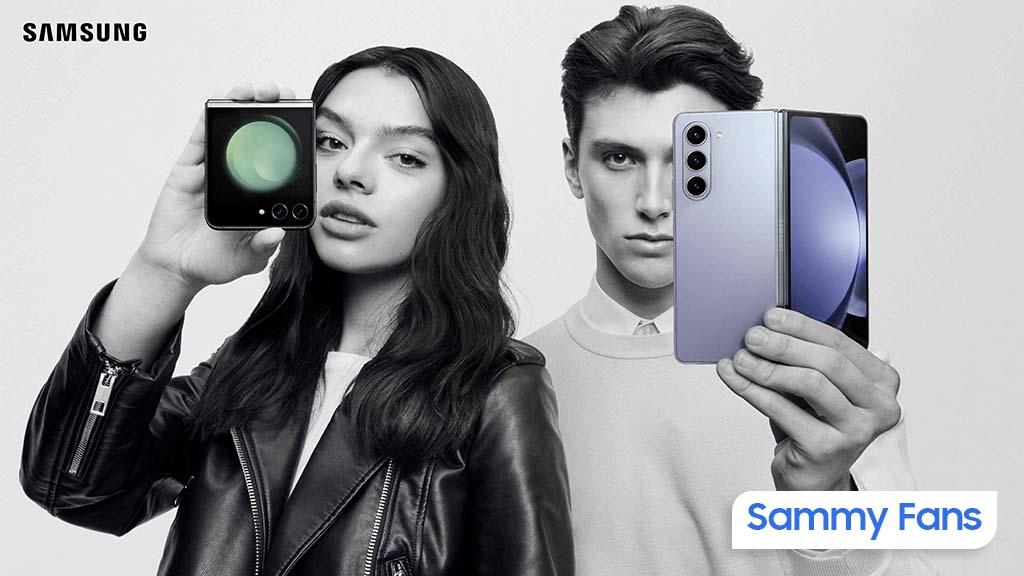
Right now, the update is rolling out to Verizon users in the US, but Samsung plans to release it for more regions and carriers soon. It’s always important to keep your phone updated to enjoy the latest security and software improvements.
If you own one of these Galaxy phones, check for the new update today and keep your device protected. To install the update, open Settings >> Software update >> Download and install. Wait for the download to finish, then tap Install now. Your phone will restart to complete the update process.
The post Samsung Galaxy Z Fold 5, Flip 5, A15, A23, and A54 receive October 2025 security update appeared first on Sammy Fans.
It only takes a few shots to realize just how different the Vivo X300 Pro is as a mobile photography tool. It is laden with improved performance and output, plus a photography kit made up of a 2.35x telephoto lens extender and grip with built-in physical controls and a 2300mAh battery. It's stacked.
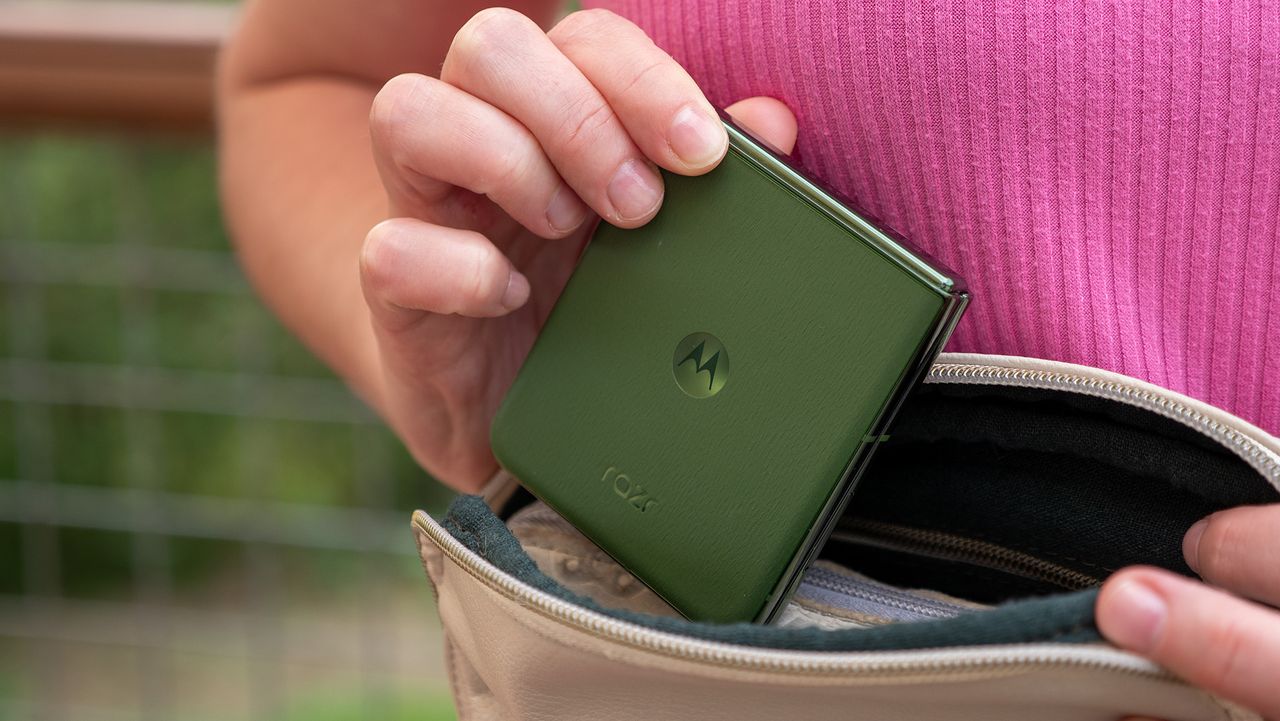

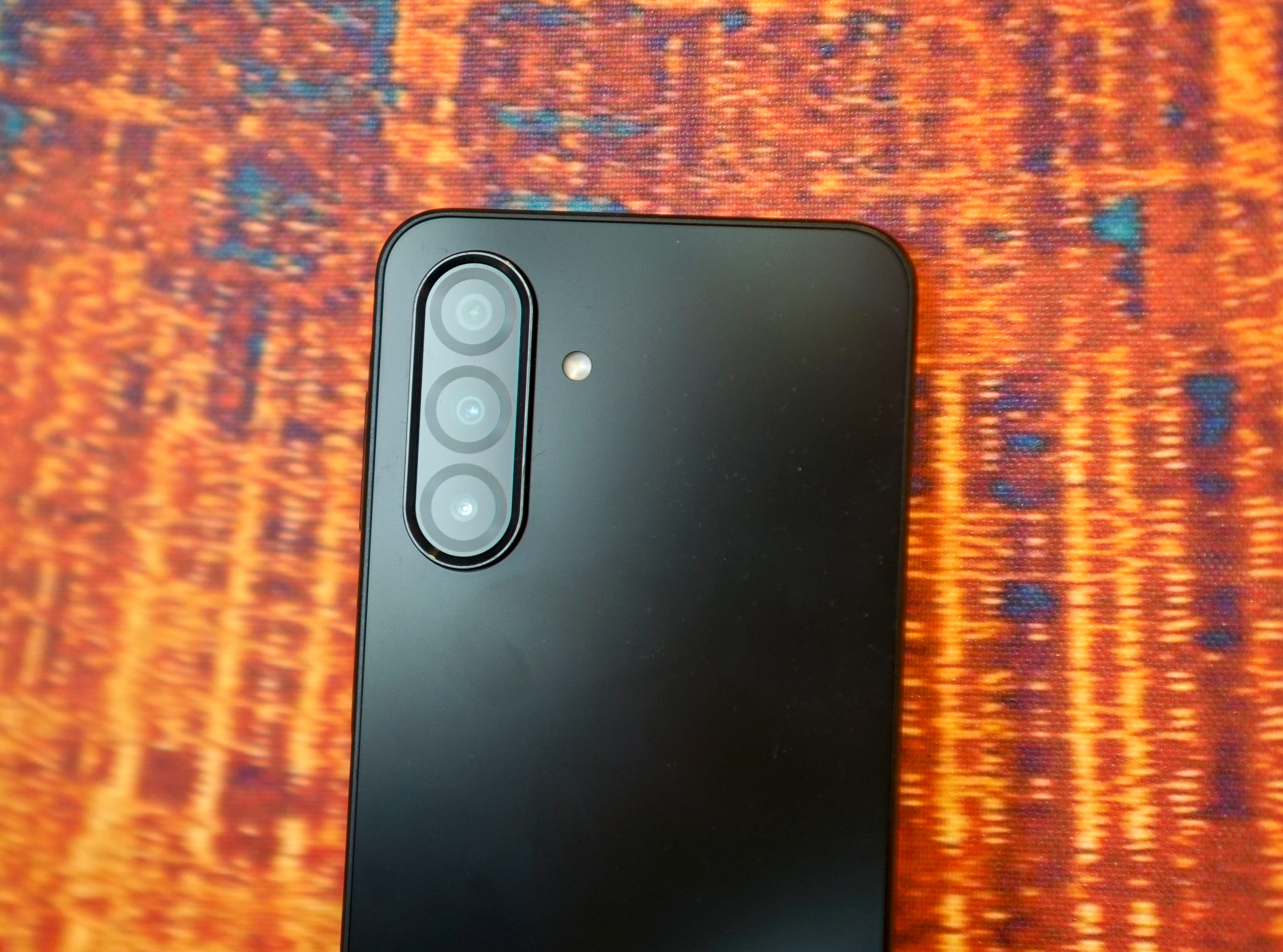





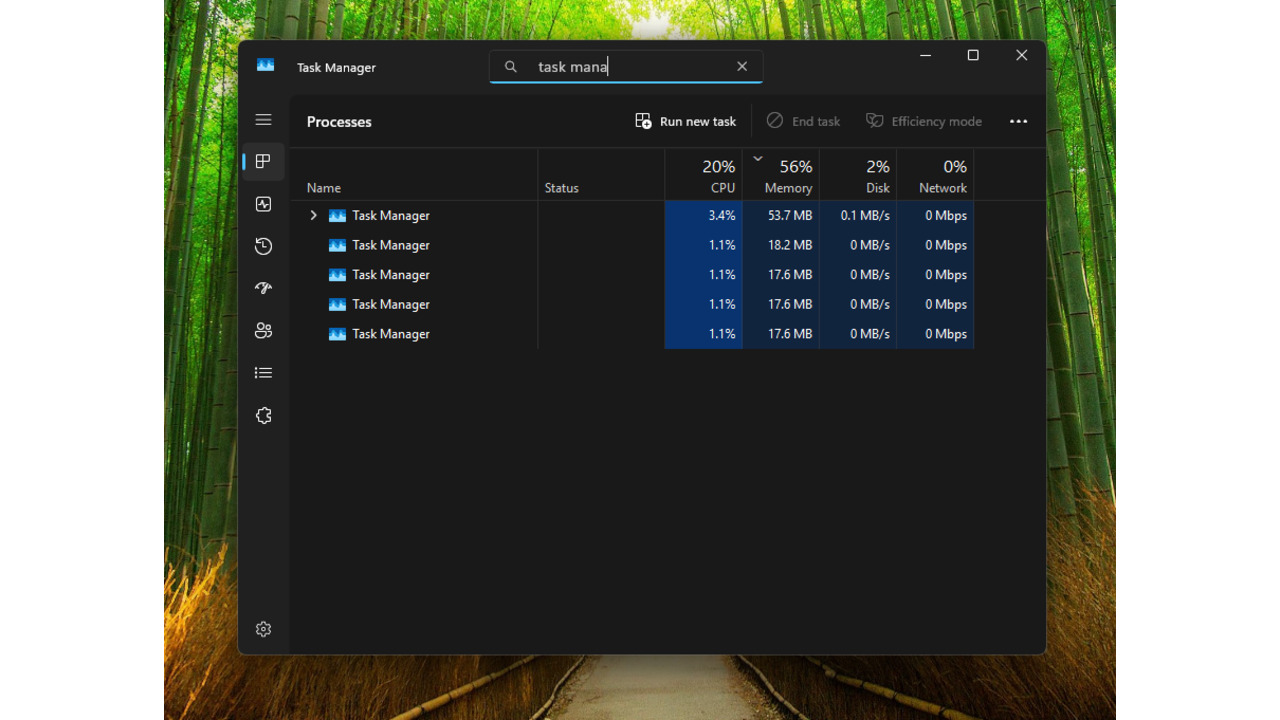



The iPhone 17 Pro launched last month in Silver, Cosmic Orange, and Deep Blue. If you don't like these colors and want something else, all you need to do is wait a year, apparently. Today in China the purported colorways in which the iPhone 18 Pro will be offered in September 2026 have been leaked. They are Coffee, Purple, and Burgundy. They are portrayed in the speculative image below. If this pans out, it means Apple isn't going to switch course. It will still not offer a black or white option. That's a bold strategy for sure, but clearly the company thinks it's the right...

Ugreen has introduced the EnergyPal Pro Mini (model PB727), a compact power bank designed for fast charging and convenient travel. The device features a 10,000mAh battery and supports up to 55W power output. It is now available in China with a retail price of 199 yuan ($28).

The EnergyPal Pro Mini uses high-density 21700 lithium-ion battery cells sourced from “Changhong Sanjie,” which are commonly found in electric vehicles. Ugreen claims the power bank can maintain over 70 percent battery capacity after 1,000 full charge cycles.
Ugreen has equipped the device with two USB-C ports and one USB-A port. Both the built-in USB-C cable and the standalone USB-C port support up to 55W fast charging, while the USB-A port delivers up to 22.5W. When all three ports are used simultaneously, the total combined output reaches 15W. The power bank also supports 45W PD fast input and can recharge fully in approximately two hours.

The device includes a 1.18-inch digital display on the front that shows real-time power input, output wattage, and remaining battery level. It supports several fast-charging protocols, including PD, PPS, QC, SCP, UFCS, and AFC, and is compatible with smartphones from Apple, Huawei, Xiaomi, Samsung, OnePlus, Oppo, Vivo, Meizu, and others. It can also power accessories such as smartwatches, Bluetooth earphones, drones, and handheld fans.
The power bank features a durable PC+ABS outer shell with a piano-grade finish and meets the V-0 flame-retardant safety standard. It includes a built-in 22cm USB-C cable that doubles as a carrying strap. The cable uses a 48-strand nylon weave and is rated for over 10,000 bends and plug-in cycles. Ugreen also ships the product with a 60W USB-C to USB-C cable and a portable strap.
The EnergyPal Pro Mini measures 90.3 x 50.5 x 33.5 mm and weighs 249.1 grams. It also features dual-chip protection and has passed over 150 safety tests, including those for overcurrent, overvoltage, overcharge, temperature, and short-circuit conditions.
In related power bank news, Xiaomi recently introduced the 20,000mAh PB2165 power bank with 165W fast charging and a smart display, while Baseus has unveiled a 100W power bank featuring a 20,000mAh capacity and dual built-in cables.
For more daily updates, please visit our News Section.
Stay ahead in tech! Join our Telegram community and sign up for our daily newsletter of top stories! 
The post Ugreen launches new 10000mAh power bank with 55W output & built-in cable appeared first on Gizmochina.

Big-ticket smartphone orders always come with a bit of excitement — and a bit of anxiety — but one Bengaluru buyer’s Diwali week surprise turned into something far stranger than anyone could have expected. What was supposed to be a brand-new Samsung Galaxy Z Fold 7 ended up being… a piece of floor tile. And the only reason the buyer isn’t out $2,000 today is because he recorded the unboxing from start to finish.

The incident came to light through NDTV journalist Deepak Bopanna, who shared details of the incident on X. According to the report, the customer, an engineer based in Bengaluru, had ordered the Galaxy Z Fold 7 and paid the full amount upfront via credit card. The Amazon parcel arrived with factory-style packaging intact. Even the Fold 7’s retail box appeared completely sealed.
But when he tore open the box — all while filming the unboxing — the phone-shaped package revealed nothing but a tile placed where the $2,000 smartphone should have been.
The footage turned out to be crucial. With an unboxing video as evidence, Amazon quickly issued a full refund and initiated a detailed investigation into the supply chain to figure out where the scam occurred. The buyer also filed a complaint with local police, who have begun their own probe into the matter.
It’s a rare case, but not unheard of — and it highlights the growing trend of high-value delivery scams, where fake or swapped products are slipped into authentic-looking packaging. Had the customer not recorded the unboxing, resolving the issue could have taken weeks or even months, with no guarantee of reimbursement.
The takeaway is simple: whenever you’re accepting an expensive delivery — whether it’s a phone, laptop, or luxury item — record the unboxing from the moment you receive the parcel.
Don’t miss a thing! Join our Telegram community for instant updates and grab our free daily newsletter for the best tech stories!
For more daily updates, please visit our News Section.
(Source)
The post Someone ordered a $2,000 Galaxy Z Fold 7, received a floor tile instead appeared first on Gizmochina.

AOC has unveiled the Agon Pro AGP327UZD, a premium gaming monitor that combines 4K UHD visuals with a high refresh rate, making it one of the company’s most advanced displays yet. The monitor features the same 4K 240Hz configuration as the earlier Agon 6 Pro AG326UZD but now uses LG Display’s Gen 3 WOLED panel. When the resolution is lowered to 1080p, it can reach an impressive 480Hz refresh rate for ultra-smooth gameplay.
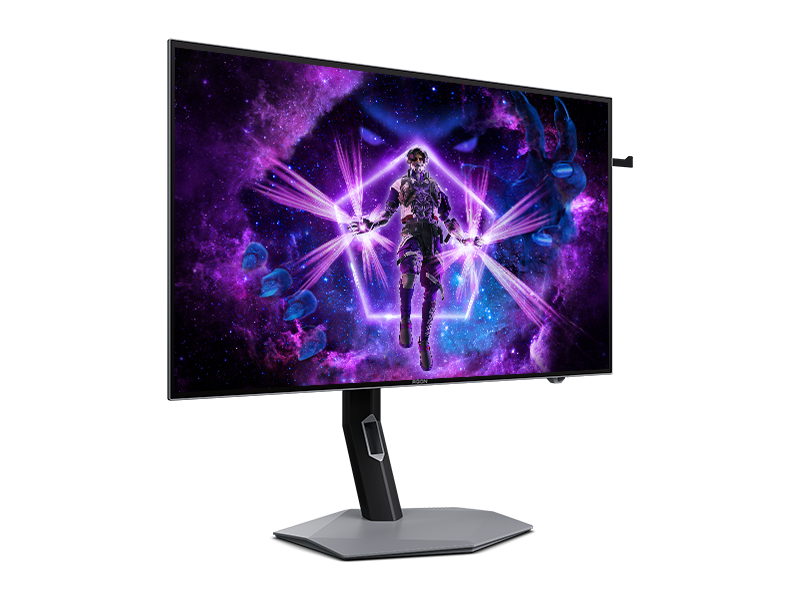

The Agon Pro AGP327UZD delivers 275 nits peak SDR brightness and 1,300 nits HDR brightness (1.5% APL), meeting VESA DisplayHDR 400 True Black standards. It offers a native 10-bit color depth with 1.07 billion colors, 98.5% DCI-P3 color gamut coverage, and Delta E <1 factory calibration for color accuracy. With a 0.03 ms gray-to-gray response time and a static contrast ratio of 1,500,000:1, the display ensures sharp visuals and deep blacks for both gaming and content creation.
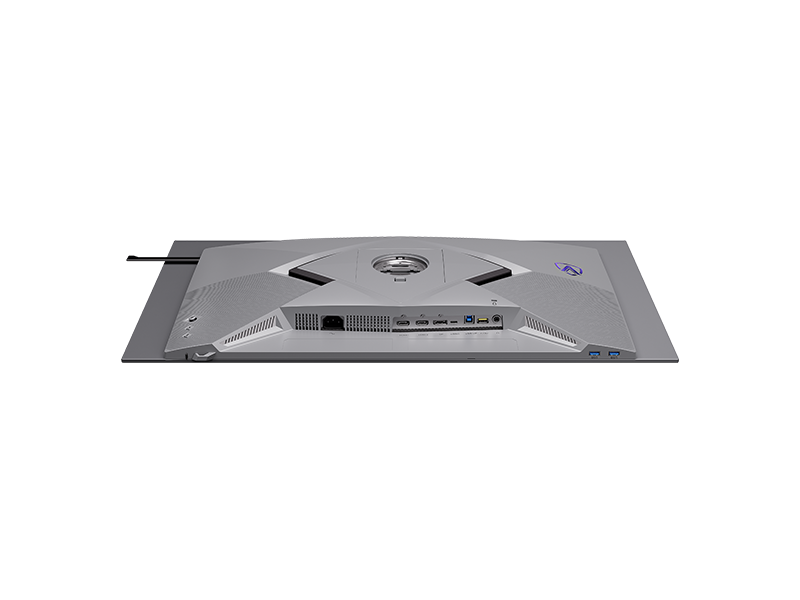
AOC also includes adaptive-sync technology with NVIDIA G-SYNC compatibility to minimize screen tearing and stuttering. Connectivity options are extensive, including DisplayPort 2.1 (80 Gbps), HDMI 2.1, USB-C with 65W power delivery, USB 3.2 Gen1, and built-in 8W stereo speakers.
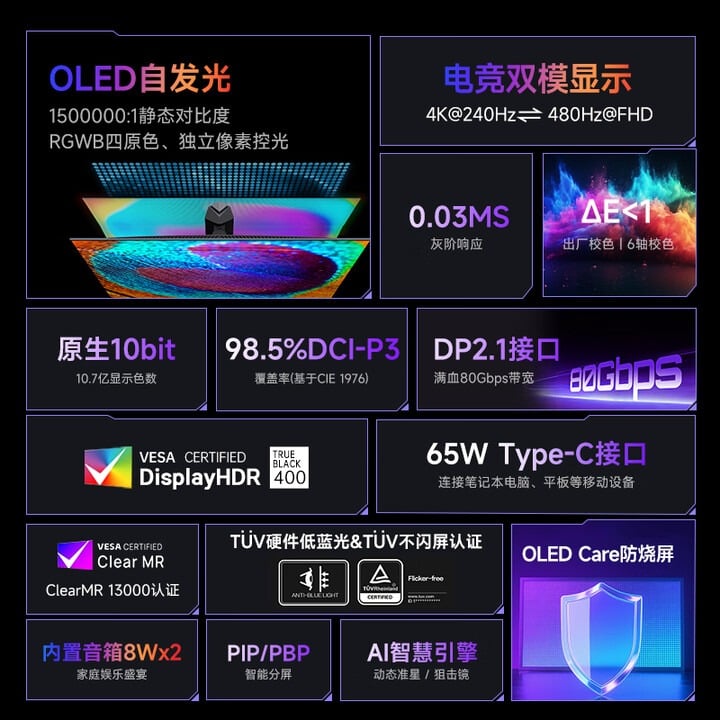
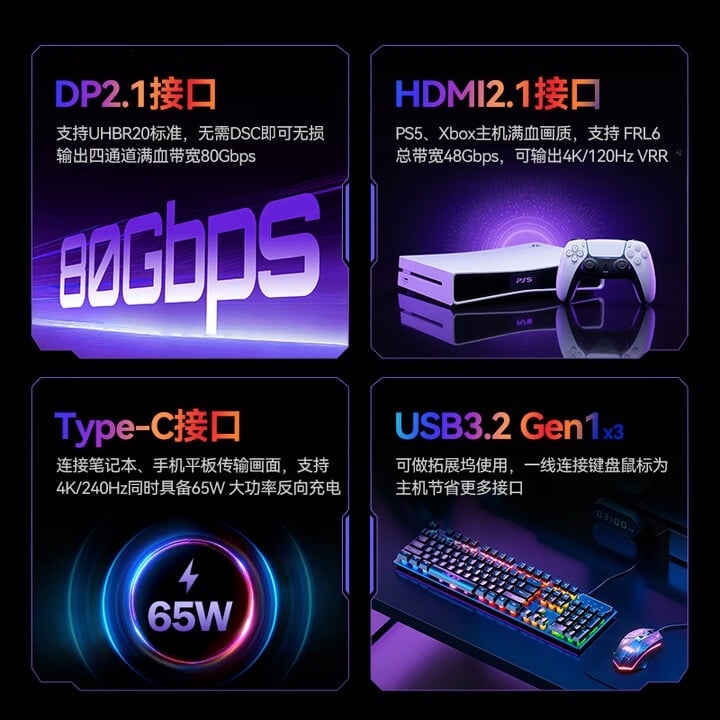
The monitor supports PBP/PIP dual display, KVM switching, and features AGLR anti-glare coating, TÜV Rheinland-certified flicker-free and low blue light technology, and OLED Care anti-burn-in protection. Physically, the monitor is sleek at 5.3 mm thick with a 1.8 mm micro-bezel and a four-way adjustable stand.
The Agon Pro AGP327UZD is priced at CNY 6,499 (around $915) in China, with global release details yet to be confirmed.
For more daily updates, please visit our News Section.
Stay ahead in tech! Join our Telegram community and sign up for our daily newsletter of top stories!
(via)
The post AOC Agon Pro AGP327UZD Debuts with LG Gen 3 WOLED and DisplayHDR True Black 400 appeared first on Gizmochina.

Skyworth has launched its latest 27-inch gaming monitor, the G27Q Max, in China. The display features a QD-Mini LED panel with professional-grade color accuracy, a 2K resolution, and a 250Hz overclocked refresh rate. It is priced at 1,499 yuan ($210), with a limited-time launch offer of 1,199 yuan ($168).

The Skyworth G27Q Max uses a 2560×1440 Fast IPS panel with a native 240Hz refresh rate that can be overclocked to 250Hz. It supports Adaptive-Sync to reduce screen tearing and provides a 1ms GtG response time for smooth visuals during fast-paced gameplay. The monitor also includes Dynamic Overdrive and ten levels of OD tuning for additional responsiveness customization.
Skyworth has equipped the monitor with a QD-Mini LED backlight system that features 220 local dimming zones. It reaches 750 nits in SDR mode and peaks at 1,800 nits in HDR, with support for automatic HDR switching. The display covers 100% sRGB, 98% DCI-P3, and 99% Adobe RGB color spaces. It is factory-calibrated with ΔE<1, making it suitable for tasks that require high color accuracy, such as photo and video editing.

The monitor supports a wide range of color spaces, including sRGB, Adobe RGB, DCI-P3, BT.2020, and Rec.709, with six preset modes tailored for various scenarios. It also features Skyworth’s Luma Boost engine, which enhances brightness in SDR content, and a 30-level image tuning system that allows precise adjustments to brightness, color balance, and tone mapping.
The G27Q Max includes dual 3W stereo speakers and a five-way joystick for navigating its OSD. It supports Sky-SyncHub software, which enables AI-based scene detection and auto mode switching for FPS, MOBA, RPG, and reading use cases. It also features a customizable crosshair, dark area enhancement, frame rate monitor, and an on-screen timer for gamers.
In terms of ergonomics, the monitor offers 130mm height adjustment, -5° to +21° tilt, ±90° pivot, and swivel support, along with VESA 75×75mm mounting. The monitor includes two HDMI 2.0 ports, two DisplayPort 1.4 ports, and a 3.5mm audio jack. It weighs around 4.9kg with the stand and comes in a futuristic design aimed at gaming and studio environments.
In related movie news, HKC recently released the 27-inch UG27EQ gaming monitor featuring a 400Hz refresh rate, 0.5ms response time, and USB-C connectivity. Redmi has also launched the 2026 G34WQ Gaming Monitor, equipped with a 34-inch WQHD curved display and a 180Hz refresh rate.
For more daily updates, please visit our News Section.
Stay ahead in tech! Join our Telegram community and sign up for our daily newsletter of top stories! 
The post Skyworth G27Q Max gaming monitor debuts with 2K 250Hz panel & HDR 1800 nits for under $200 appeared first on Gizmochina.

Amazon has slashed the price of the popular Logitech Lift Vertical Ergonomic Mouse by a massive 38%. Originally priced at $79.99 you can now get this office essential for just $49.99. For anyone struggling with wrist discomfort or fatigue from long hours of computer use,we believe this is a steal deal!
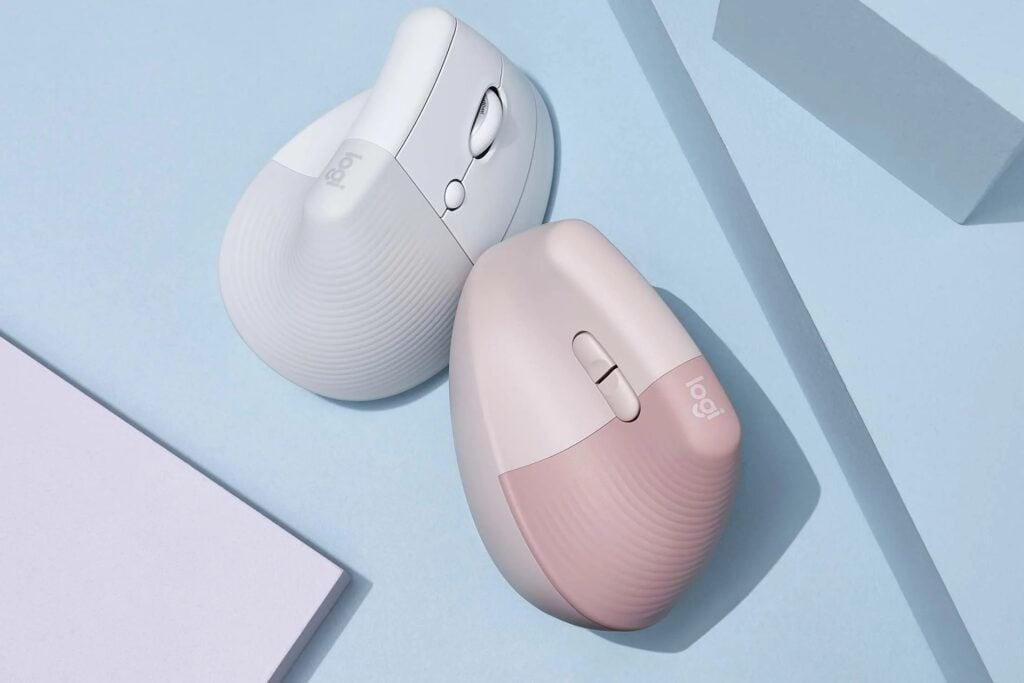
The mouse has an innovative design crafted for comfort. Its unique 57-degree vertical angle, a revolutionary design as per Logitech, places your forearm in a natural “handshake” posture, which optimizes pressure on your wrist and allows your hand and upper body to relax.
The Logitech mouse also offers robust connectivity. You can easily connect it to up to three devices using either Bluetooth LE or the included Logi Bolt USB receiver, making it compatible across Windows, macOS, and iPadOS. Its seamless switching capability is perfect for multitaskers who jump between devices. Furthermore, this model boasts a notable sustainability feature, aligning with eco-conscious users.
The Logitech Lift isn’t just ergonomic in shape—it’s Ergo-certified, designed and tested by leading ergonomics specialists to ensure healthy posture support. If you’re looking for a comfortable, productivity-focused wireless mouse to enhance your desktop setup, the Logitech Lift Vertical Mouse is a smart and health-friendly choice.
| Preview | Product | |
|---|---|---|
|
|
Logitech Lift Vertical Ergonomic Mouse, Wireless, Bluetooth or Logi Bolt USB Receiver, Quiet clicks,… | Check Price on Amazon |
Please Note: When you buy something using the links in our articles, we may earn a small commission at no cost to you.
Head over to Amazon to get the Logitech Lift Vertical Ergonomic Mouse at the discounted price of $49.99 before this limited-time offer expires!
The post Grab Logitech Lift Vertical Mouse for just $49.99, Massive 38% off appeared first on Gizmochina.

Razer has launched two new gaming keyboards, the Huntsman V3 Pro 8KHz and the Huntsman V3 Pro Tenkeyless 8KHz.

These keyboards feature Razer’s Analog Optical Switches Gen-2 combined with True 8000 Hz HyperPolling Technology. Together, they deliver 11 percent faster performance than the nearest competitor with a latency of just 0.58 milliseconds. Every key press registers almost instantly, which is crucial for fast-paced esports play.
Players can adjust the actuation range from 0.1 mm to 4.0 mm to suit their preference. Rapid Trigger Mode allows quick resets for repeated key actions, while Razer Snap Tap helps switch directions instantly without releasing the first key. The switches are factory-tuned for 0.1 mm accuracy, offering 2.5 times better precision than competing models, and are rated for 100 million keystrokes.

Razer worked with Counter-Strike legend Nikola “NiKo” Kovač to develop the Huntsman V3 Pro 8KHz. NiKo collaborated with Razer engineers to refine the keyboard’s feel, latency, and responsiveness. “The 8KHz model takes things to another level,” said NiKo. “I visited Razer’s headquarters in Singapore to test and help fine-tune the performance for pro-level gameplay.”
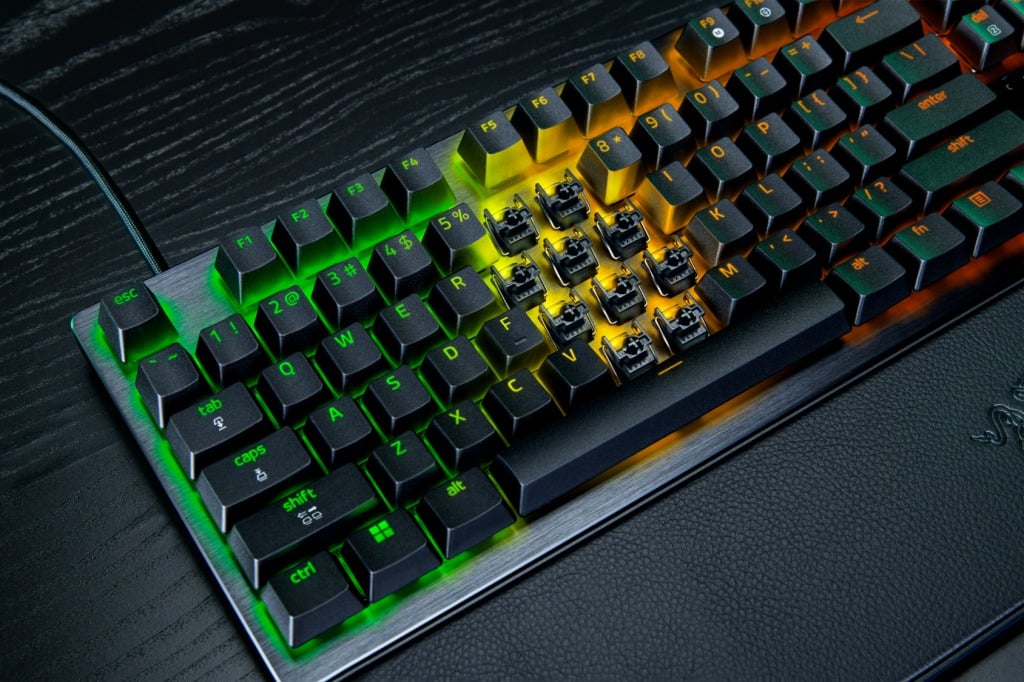
Both versions have a durable 5052 aluminum alloy top plate, sound-dampening foam, pre-lubricated stabilizers, and textured doubleshot PBT keycaps. They also come with a magnetic leatherette wrist rest for comfort during long sessions.
Each model includes a clickable digital dial and dedicated control buttons for media, macros, and quick adjustments to actuation height or Rapid Trigger sensitivity. An onboard LED display provides instant feedback, and all settings are stored directly on the keyboard, removing the need for extra software.
For more daily updates, please visit our News Section.
Stay ahead in tech! Join our Telegram community and sign up for our daily newsletter of top stories!
(Source)
The post Razer Huntsman V3 Pro 8KHz Series Keyboards Brings Gen-2 Optical Switches and 8000 Hz Polling appeared first on Gizmochina.

Razer has partnered with Valve to launch the Razer | Counter-Strike 2 Collection, turning the famous Dragon Lore skin from Counter-Strike into real-world esports gear.

Dragon Lore is one of the most well-known skins in Counter-Strike history. It first appeared in July 2014 as part of the Cobblestone Collection for Counter‑Strike: Global Offensive and quickly became one of the most coveted cosmetic items in the game. Its design features an olive-green base with a fiery dragon motif wrapping around the barrel, accented by Celtic knotwork and red and gold highlights.
The skin’s rarity and high demand came from its extremely low drop rate, especially in the Souvenir version, and the fact that the Cobblestone Collection was later removed from active drop pools. Over time, Dragon Lore became more than just a cosmetic item. It turned into a symbol of achievement, wealth, and prestige within the Counter-Strike community, often representing the pinnacle of in-game status and collector value.

The BlackShark V3 Pro, recognized as the most used esports headset by ProSettings.net, features a HyperClear Super Wideband Mic, pro-tuned CS2 audio profiles, and wireless connectivity. It provides crystal-clear audio, excellent noise isolation, and lasting comfort for competitive play.

The Huntsman V3 Pro TKL was the most popular esports keyboard of 2024. It uses Razer’s Analog Optical Switches Gen-2, includes Rapid Trigger Mode, and allows players to adjust actuation between 0.1 and 4 mm for faster movement, repeated inputs, and greater accuracy during intense matches.

The Viper V3 Pro, leading the esports mouse category since December 2024, weighs just 54 grams and features the Focus Pro 35K Optical Sensor Gen-2. It supports a true 8000 Hz wireless polling rate and uses Optical Mouse Switches Gen-3 for rapid and precise clicks.

The Gigantus V2 is a large soft gaming mouse pad designed for smooth gliding and pinpoint accuracy.

The Iskur V2 X is an ergonomic gaming chair engineered for firm, durable support during long gaming sessions.
The collection is available at the following prices:
For more daily updates, please visit our News Section.
Stay ahead in tech! Join our Telegram community and sign up for our daily newsletter of top stories!
(Source)
The post Razer Counter-Strike 2 Dragon Lore Collection Debuts with Premium Gaming Gear appeared first on Gizmochina.
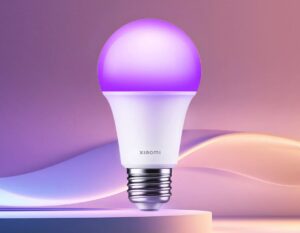
While one of India’s biggest festivals just went by, the festive season isn’t close to the end. With Christmas and New Year’s coming up, festive décor is still all the rage, and smart lighting has become one of the most effective ways to refresh your home ambience. These appliances are practical, energy-efficient and increasingly integrated with voice assistants or smart home ecosystems. So here’s everything you should know about them.
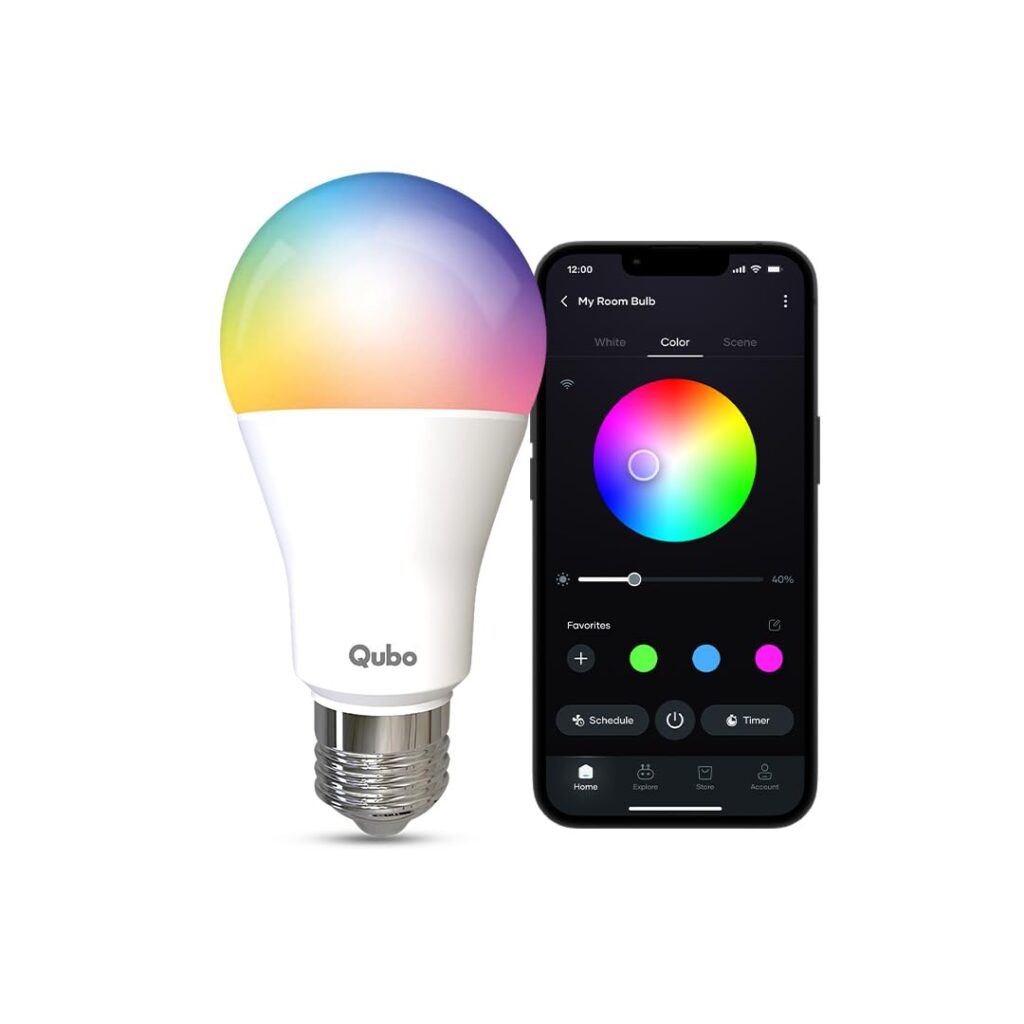
In the Indian market, choosing the right smart lights involves more than just picking a brand and colour. First, check for compatibility with your existing voice assistant, like Amazon Alexa or Google Assistant. Seamless integration makes it easy to control lights by voice or schedule. Many Indian smart lighting brands now offer voice control and scheduling features.
You should also look for connectivity options (Wi-Fi vs Bluetooth) and whether the bulb requires a hub. Some brands like Philips Hue expect you to add a bridge, while others are “plug-and-play”. Versatility is another big aspect to consider, like color hues, brightness levels, and app features like scene creation or sync with music make a big difference during celebrations.
During festivals, homes often shift from ordinary lighting to decorative and mood lighting. Smart bulbs give you flexibility, create warm white scenes for dinner, bright white for cleaning/organising, or vibrant colour scenes for celebration. Many apps allow scheduling so lights can auto-dim or shift tones as evening begins. We already covered the Diwali tech essentials a while back, and these options are also great for upcoming festivals like Christmas. The end of the year usually also brings family time and big dinners, which can be further enhanced with the right lighting.
For more daily updates, please visit our News Section.
Tech enthusiast? Get the latest news first! Follow our Telegram channel and subscribe to our free newsletter for your daily tech fix! 
The post Smart Lights to Upgrade for the Festive Season: Here’s Why You Should Buy Them appeared first on Gizmochina.

Over the last couple of weeks, reports of the next Xbox started circulating online. While Microsoft has failed to compete with Sony’s PlayStation in the console wars, the brand isn’t giving up on consoles yet. Xbox as a platform is evolving, and the next console could be leading this charge as it combines PC gaming, cloud gaming, and other aspects. So here’s everything we know about the next Xbox.

Most credible leaks and reporting point to a release window that could be between 2026 and 2027. Microsoft could be planning on launching the next Xbox sometime in 2027 or as early as late 2026. This new console is reportedly in the works at the moment, with rumors hinting at the upcoming Xbox hardware being in late stage development. If this is true, the expected release timeline puts Microsoft on a roughly seven year update cycle, which is in line with the previous generation.
Under the hood, the biggest change will likely be a jump to much more powerful custom AMD silicon. Multiple sources point to an upgraded Magnus APU, which pairs Zen 6 CPU cores with RDNA 5 graphics hardware. This powerful combination might allow the next Xbox to hit 4K/120fps performance and advanced ray tracing while also enabling PC level features like AI acceleration and broader driver support.
Rumors even suggest a beefier memory subsystem (wider bus and GDDR7 in some leaks), which would let Microsoft push higher fidelity assets and better frame-rate targets. So simply put, the latest Xbox console would offer a major jump in performance over the Xbox Series X.
Microsoft has been clear with its plans for the Xbox name. The focus isn’t on making new hardware/consoles, but also expanding cloud gaming, the Xbox Game Pass gaming library and its accessibility, and even via strategic collaborations. An example of such a partnership is with ASUS, which recently released the ROG Xbox Ally series of gaming handhelds that launched with special optimizations that made it closest to an actual portable Xbox console.
Soon, these hardware partners might also launch TV units and other Xbox Ally-like consoles, which would help bring “Windows in the living room” vision. It remains to be seen how the next Xbox fits in all of this, but it will likely arrive as a “true” Xbox experience, blending PC gaming level hardware with a TV console experience.
Perhaps the most strategic shift is software openness. Microsoft has publicly signaled its next Xbox won’t be locked to a single store. Rather, games could be sold across multiple storefronts, with another focus on backward compatibility with the entire Xbox library.
Combine that with Game Pass, cloud streaming ambitions and tighter Windows integration, and the next Xbox is less a single product and more a distributed gaming ecosystem. For consumers, this could mean more choice about where to buy games and smoother cross-device play, assuming platform partners and publishers cooperate.
If the leaks and early statements are accurate, gamers should expect three practical outcomes: first, significantly higher peak performance for native console titles (4K/120 and better ray tracing); second, a broader set of Xbox-branded hardware options so you can pick the device that fits your use case; and third, a more open marketplace that might reduce friction when buying games across devices. However, these upgrades likely come at a cost, with the most immediate being a more premium price tag.
For more daily updates, please visit our News Section.
Don’t miss a thing! Join our Telegram community for instant updates and grab our free daily newsletter for the best tech stories!
The post Explaining the Next Xbox: PC-Hybrid Console, AMD Magnus APU, & More appeared first on Gizmochina.

Xiaomi is expanding its smart home lineup again, this time with a more advanced version of its Smart Door Lock 4 Pro. The new Dual Camera Edition has officially launched in China, bringing upgraded hardware and improved security features over the original model released earlier this year.

The headline upgrade is right in the name: Xiaomi has added a second camera to the new model. While the standard Smart Door Lock 4 Pro includes a single 2MP camera with a 152° field of view, the Dual Camera Edition steps things up with a 3MP main camera offering a 160° FOV, paired with an additional 2MP camera with a 128° FOV. The combination should give users a wider and clearer look at who’s outside their door.
Xiaomi has kept its set of twelve unlocking methods, covering everything from AI facial recognition and palm vein scanning to fingerprint recognition, NFC, Bluetooth, and traditional passcodes. As always, there’s a physical key included as a last-resort backup.
Inside the home, the lock features a 3.97-inch display for checking who’s at the door before opening it. The device supports Bluetooth and Wi-Fi, allowing users to stream live video from the lock in the Xiaomi Home app, receive alerts if someone approaches or tampers with the lock, and manage settings remotely.
Xiaomi has also boosted battery life for this model. The Dual Camera Edition uses a combination of a 6,870mAh lithium battery and four AA alkaline batteries, which together promise up to six months of use on a single charge — a noticeable improvement over the original.
The Smart Door Lock 4 Pro Dual Camera Edition is priced at CNY 2,899 (~$408) in China. Xiaomi hasn’t launched its smart door locks in markets like Europe yet, though it already sells other smart home devices there, such as the Xiaomi G30 Max cordless vacuum cleaner.
For now, the Dual Camera Edition remains China-only, but it signals Xiaomi’s continued push into more sophisticated smart home security products.
Don’t miss a thing! Join our Telegram community for instant updates and grab our free daily newsletter for the best tech stories!
For more daily updates, please visit our News Section.
(Source)
The post Xiaomi launches upgraded Smart Door Lock 4 Pro with dual cameras and 6,870mAh battery appeared first on Gizmochina.

Corsair has launched the Novablade Pro Wireless, its first leverless controller designed for competitive fighting games. The all-button controller features Hall Effect-based MGX Hyperdrive magnetic switches, customizable actuation, and tri-mode connectivity for PS5, PS4, and PC. It has started selling through the Corsair webstore and will be available soon via Amazon, Best Buy, and other authorized retailers.

The Novablade Pro comes with 15 magnetic keys that support adjustable actuation points between 0.1mm and 4.0mm. Players can fine-tune each key in 0.1mm steps to match their preferred input style. Corsair has rated these switches for up to 150 million presses and designed them with a dual-rail structure to reduce wobble and ensure smooth operation.
The controller supports Rapid Trigger functionality, which resets inputs after only 0.1mm of upward movement. This allows faster re-inputs and makes it easier to hit single-frame links during combos.

Corsair has also added its FlashTap SOCD system, which lets users set directional input priority modes such as up, last, neutral, or first. The feature ensures tournament compliance while offering more control over complex directional inputs.
Corsair has included a Game Mode that disables macros, locks the touchpad, and enables Rapid Trigger and FlashTap with a single button press. This mode helps avoid accidental disqualification in tournaments.

The Novablade Pro supports wired USB, 2.4GHz wireless, and Bluetooth connections. It includes eight programmable G-keys and supports up to five onboard profiles.
The controller features 360-degree RGB LightEdge lighting and 15 individually backlit buttons. Corsair has also designed a removable magnetic top plate to allow users to customize the appearance with personal artwork.
In related news, Corsair’s Elgato brand has launched Embrace, its first studio chair designed with professional ergonomics and a minimalist aesthetic. The company has also introduced the EX300U SSD, featuring up to 1100MB/s transfer speeds, MagSafe compatibility, and storage options of up to 4TB.
For more daily updates, please visit our News Section.
Stay ahead in tech! Join our Telegram community and sign up for our daily newsletter of top stories! 
The post Corsair launches Novablade Pro wireless leverless Hall Effect controller with rapid trigger appeared first on Gizmochina.

Following the surprise release of the Moto Edge 70, Motorola has now unveiled the Moto X70 Air as its latest thin smartphone in China. This is a mid range smartphone with a premium new design, so let’s check it out.

Apart from the name, the Moto X70 Air is basically the China exclusive version of the new Edge 70. So it also sports a 6.67-inch OLED display with a 120Hz refresh rate, 1.5K resolution, 4500 nits of peak brightness, and Gorilla Glass 7i for protection. Under the hood, the Moto X70 Air is equipped with the Snapdragon 7 Gen 4 SoC, which is paired with 12GB of LPDDR5X RAM and up to 512GB of UFS 3.1 internal storage.
Despite its slim 6mm body, the Moto X70 Air houses a sizeable 4,800mAh battery pack that supports 68W wired fast charging and 15W wireless charging. The body also weighs just 159 grams and comes with an IP68 + IP69 rating for water and dust resistance. For optics, the rear has a 50MP dual camera setup, while the front houses a 50MP selfie shooter. Other notable features include stereo speakers and Android 16 OS out of the box.

Motoroal just announced the Moto X70 Air model in China for an introductory price tag of 2,399 Yuan for the 12GB + 256GB starting variant. On the other hand, the 12GB + 512GB version will carry a 2,699 Yuan price tag. You can purchase this model in multiple color options.
For more daily updates, please visit our News Section.
Tech enthusiast? Get the latest news first! Follow our Telegram channel and subscribe to our free newsletter for your daily tech fix! 
The post Moto X70 Air Debuts in China with Razor Thin6 mm Body appeared first on Gizmochina.

Alldocube is adding yet another budget tablet to its lineup, and this one goes straight for value seekers. The new iPlay 70 is now official, and early buyers can grab it at a heavily reduced launch price — making an already inexpensive device even cheaper.

The iPlay 70 arrives as the base model in the company’s growing 70-series, following the iPlay 70S, iPlay 70 Pro, and the smaller iPlay 70 mini Ultra.
The specs are straightforward but practical. The tablet features a 10.1-inch IPS display with a 1,280 × 800 resolution (which translates to 150ppi pixel density) and a 90Hz refresh rate — not the sharpest panel, but good enough for its price. Inside, it runs on an ASR8662 octa-core chip clocked up to 1.7GHz, paired with 4GB of RAM and 128GB of storage. Storage is expandable via microSD.
Connectivity is where the iPlay 70 stands out. It supports 4G cerllimar connectivity alongside Wi-Fi 6, and Bluetooth 5.4, giving it better wireless options than most tablets in this price range. There’s also a 6,000mAh battery with 18W fast charging, plus dual speakers and 5MP cameras on both the front and back. This tablet measures 7.95mm in thickness and ships with Android 15.
Alldocube says the tablet will be available on AliExpress from now until November 9 for $100.88, down from its usual $144.11. There are additional coupons on the product page, too, which can knock the price down even more. (Shipping isn’t included.)
It’s not meant to replace the Snapdragon 7+ Gen 3-powered iPlay 70 mini Ultra — it’s aimed at users who want the basics covered.
Don’t miss a thing! Join our Telegram community for instant updates and grab our free daily newsletter for the best tech stories!
For more daily updates, please visit our News Section.
(Source)
The post Alldocube iPlay 70 tablet with 4G LTE, Wi-Fi 6, 90Hz display, and Android 15 launches with deep discounts appeared first on Gizmochina.

ZTE has launched the F50 Pro 5G Portable Wi-Fi in China as the successor to the F50 5G model. It supports Wi-Fi 6 connectivity and comes with one-touch 5G dual-network switching. The device is priced at 499 yuan ($70), with a limited-time introductory offer of 399 yuan ($56), and is now available on JD.com

The ZTE F50 Pro is a lightweight, travel-friendly mobile router designed for fast and stable wireless connectivity. It measures 79.7 x 64.8 x 10.8 mm and weighs just 56 grams. The front panel includes a small screen that displays network strength, signal status, and battery information. The device uses a black-and-white dual-tone design with a minimalist aesthetic.
ZTE has equipped the F50 Pro with a 5G chipset that supports both SA and NSA networks. It is compatible with Sub-6GHz frequency bands such as n1, n3, n5, n8, n28, n41, and n78. The router also supports 4G LTE and UMTS bands, making it suitable for broader regional coverage. According to ZTE, the F50 Pro can reach peak download speeds of up to 500 Mbps in actual use.

The device uses eight omnidirectional antennas and supports 2×2 MIMO for more stable and efficient data transmission. It enables 360-degree signal coverage and supports up to 16 device connections simultaneously. The router operates on both 2.4GHz and 5GHz Wi-Fi bands under the Wi-Fi 6 standard, allowing users to choose between wider range or higher speed.
The F50 Pro supports NFC one-touch pairing with Android phones, enabling instant connection without entering passwords. It also includes a Type-C port for 5V/2A power input and wired network sharing.
ZTE has added several software enhancements to the device. It includes a dedicated gaming mode powered by the NetEase UU accelerator and a high-speed rail mode that ensures stable connectivity while traveling. The router can be managed through the ZTE Smart Life app, which also supports voice control via the “Xing Zhihui” assistant.

The F50 Pro includes a 64GB shared cloud drive, of which about 50GB is available for user access. It allows connected devices to share and access files instantly, making it convenient for mobile teams and households with multiple devices.
In related ZTE news, the company has unveiled the SC41 surveillance camera featuring 2.5K video recording, Wi-Fi 6 connectivity, night vision, and AI-based detection. They also introduced the BE3600Pro Wi-Fi 7 router with AI-driven antennas, Mesh networking support, and dedicated gaming boost features.
For more daily updates, please visit our News Section.
Stay ahead in tech! Join our Telegram community and sign up for our daily newsletter of top stories! 
(ZTE JD)
The post ZTE launches F50 Pro Portable Wi-Fi with 5G, dual-network switching & Wi-Fi 6 appeared first on Gizmochina.

Anker is refreshing its open-ear audio lineup again, and the latest model brings some meaningful upgrades without raising the price. The new Soundcore C50i earbuds have officially launched in the US.

The C50i sticks to the same open-ear, clip-on design that’s become popular among runners, commuters, and anyone who prefers situational awareness over total isolation. This time, Soundcore is introducing what it calls a Flexible Open-Ring Design, which uses a mix of a speaker module, a small battery, and memory titanium to form a C-shaped frame that grips the ear more securely. Each earbud weighs 5.5 grams, making them slightly lighter (and potentially more comfortable) than the C40i.
This open-ear earphone uses 12 mm drivers tuned for deeper bass and now support LDAC, allowing for high-resolution audio over Bluetooth when paired with compatible devices. They also bring AI-enhanced voice calls, Bluetooth 6.0 multipoint connectivity, and an unexpected feature for a budget-pair of buds: live translation for up to 100 languages.
Durability gets a boost too. The C50i comes with an IP55 rating, an upgrade from the C40i’s IPX4, offering better protection against dust and water splashes. The earbuds rely on physical buttons for playback and call control and charge via USB-C.
Battery life sees a noticeable improvement as well. Users can expect up to 7 hours of playback on a single charge, with the charging case extending total listening time to 28 hours.
The Soundcore C50i costs $69.99, but Amazon Prime members can grab it for $55.99 at launch. That’s significantly cheaper than the C40i’s original $119.99 price tag — despite the added features.
The C50i is available now through Amazon and the Soundcore store, making it an appealing upgrade for anyone looking to switch to a more open and comfortable listening style.
The post Soundcore C50i open-ear earbuds launched with LDAC and live translation for 100 languages appeared first on Gizmochina.

MSI has launched its new mini LED gaming monitor, the MPG 274URDFW E16M, in the US. The monitor was first shown at CES earlier this year and went on sale in China in June. It is now available through Amazon for $499.99.
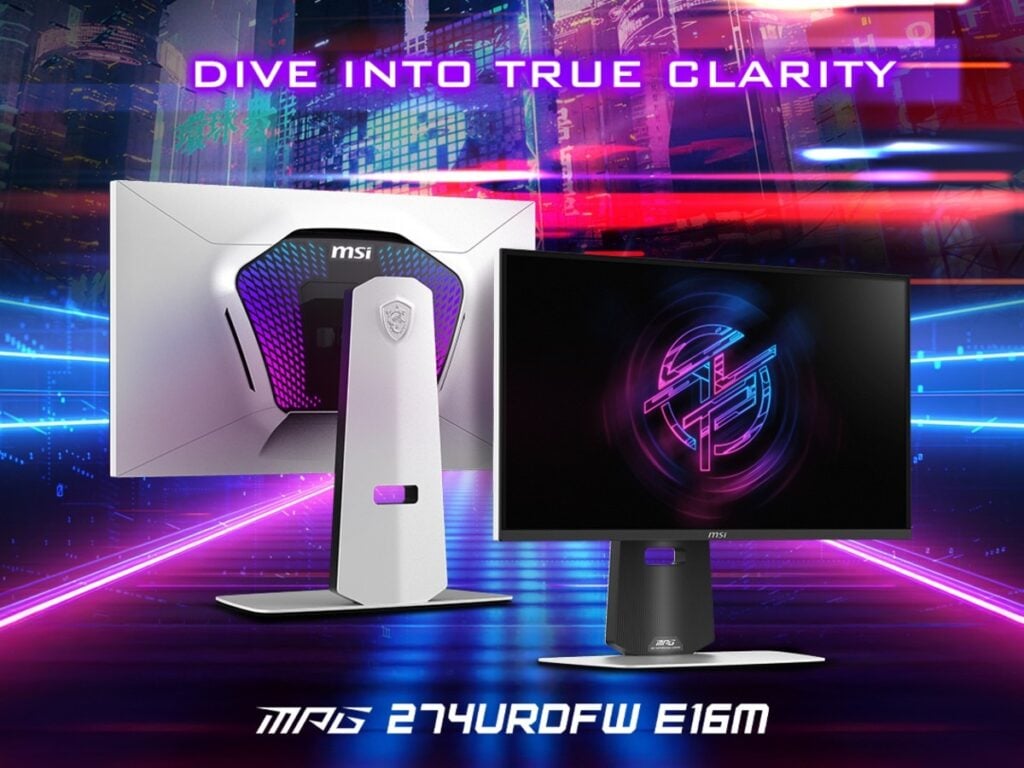
The MPG 274URDFW E16M uses a mini LED backlight with 1,152 local dimming zones, giving it better brightness control and reducing blooming or halo effects around bright areas. It reaches up to 1,000 nits of brightness and is DisplayHDR 1000 certified. The panel covers 98% of the DCI-P3 color gamut for accurate colors and strong HDR performance.
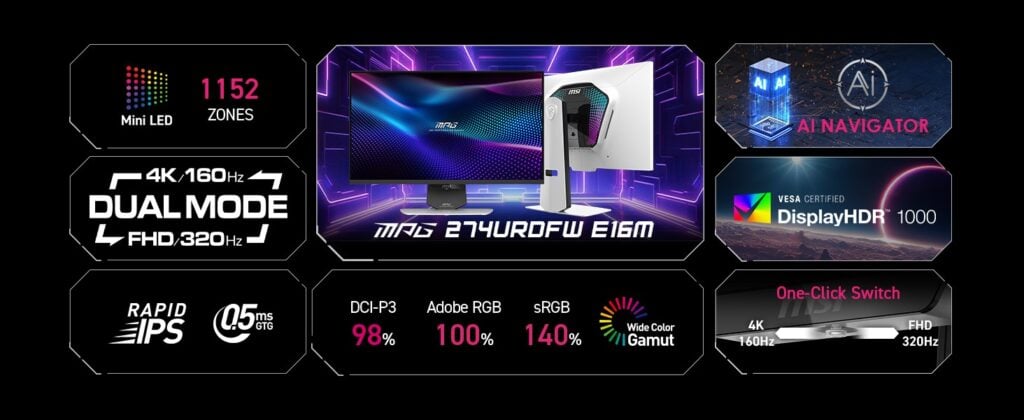
The monitor supports two refresh rate modes: 160 Hz at its native 4K resolution and 320 Hz at 1080p. It also has a 0.5 ms response time, which makes motion look smoother and clearer even though it is not an OLED panel.
For connectivity, MSI includes two HDMI 2.1 ports that support 4K at 120 Hz for gaming consoles, a DisplayPort 1.4, and a USB-C port with 98 W power delivery. There are also dual USB-A 2.0 ports and a headphone jack. The monitor comes with a built-in KVM switch and an anti-glare coating.
Design-wise, the MPG 274URDFW E16M features a clean white and black look with RGB lighting on the back and a fully adjustable stand for height, tilt, and rotation.
The MSI MPG 274URDFW E16M is available now in the US for $499.99.
For more daily updates, please visit our News Section.
Stay ahead in tech! Join our Telegram community and sign up for our daily newsletter of top stories.
(Source, via: Notebookcheck)
The post MSI MPG 274URDFW E16M Monitor Launches in the US: 4K HDR1000, 160Hz, and 98W USB-C Power appeared first on Gizmochina.

OnePlus 15 is designed to deliver exceptional performance, long battery life, and professional-grade photography in one sleek package. Packed with the latest technology, it offers a smooth and premium smartphone experience for users who want both speed and style.

The OnePlus 15 features a stunning 6.78-inch 1.5K BOE Flexible Oriental OLED display with a 165Hz refresh rate. It supports LTPO 2.0 technology, HDR10+, and a peak brightness of 1800 nits, making visuals crisp and vibrant even under bright light. The screen also includes features like Reading Mode, Night Mode, and Vibrant Color Effect for comfortable viewing in any environment. An in-display fingerprint sensor provides quick and secure unlocking.
Under the hood, the OnePlus 15 is powered by the Qualcomm Snapdragon 8 Elite Gen 5 processor, offering lightning-fast performance for gaming, multitasking, and productivity. It comes with 12GB or 16GB LPDDR5X RAM and storage options of 256GB, 512GB, or 1TB using UFS 4.1 technology for super-fast data access. The new Color OS 16 with Dark Mode 2.0 ensures a smoother and more personalized user experience.
The OnePlus 15 boasts a triple rear camera setup featuring a 50MP Sony IMX890 primary sensor with OIS, a 50MP ultra-wide camera, and a 50MP telephoto lens with 3.5x optical zoom and up to 120x digital zoom. Camera modes include Portrait, Night Mode, Panorama, Slow Motion, and Master Mode, allowing users to capture every detail perfectly. The 32MP front camera supports autofocus and multiple modes like Beauty Selfie, Time-Lapse, and Night Mode, making it ideal for selfies and video calls.
With a massive 7,300mAh battery (2×3650mAh), the OnePlus 15 ensures all-day power. It supports 120W SuperVOOC wired charging and 50W AirVOOC wireless charging, allowing users to charge up in minutes. The Ultra Power Saving mode helps extend battery life by reducing power usage.
The OnePlus 15 supports dual 5G connectivity for faster internet speeds and lower latency. Whether for streaming, gaming, or working on the go, this device ensures seamless performance. It’s a complete package that combines innovation, power, and elegant design, making the OnePlus 15 a true flagship smartphone for 2025.

The OnePlus 15 is available globally through Giztop, starting at $699. Customers can choose from three elegant color options: Black, Purple, and Titanium. With worldwide shipping available, buyers across different regions can easily get their hands on the latest OnePlus flagship. The phone’s pricing makes it a strong value proposition for users looking for top-tier performance, design, and camera quality without breaking the bank.
Read More:
The post OnePlus 15 Now Available on Giztop: Flagship Power Starts at Just $699 appeared first on Gizmochina.

Right now, smartphones are kinda strange. Every phone that calls itself a “flagship” always puts most of its focus on the camera. So if you’re someone who doesn’t really care that much about photography, but still wants the rest of that flagship-level experience, well… You basically have no choice but to pay for those expensive camera systems anyway. So the question is: Is there a phone that has all the flagship features, but uses the extra space from the camera to do something different—something surprising?
Yes, my friend. There it is. This is the REDMI K90 Pro Max. It takes the space that would normally belong to the camera and stuffs a subwoofer into it. I genuinely love this phone. In fact, I’d say its role in the lineup is kind of similar to the Xiaomi 17 Plus. And if you don’t hate big screens, this one is definitely worth buying more than the standard Xiaomi 17.
Buy REDMI K90 Pro Max on Geekwills
First, let me correct a common misconception: Three speakers don’t automatically mean louder. Unlike rugged phones, where the rear speaker is just there to increase volume, the extra speaker here on the K90 Pro Max is specifically tuned for low-frequency detail. Its maximum volume is about the same as a normal dual-speaker phone. In fact, when playing music normally, you might not even notice it’s working unless you listen closely. That’s because this is a 2.1 channel setup — each speaker handles a frequency range it’s best at.
The rear one mainly works between 60–200Hz. And the FR graph confirms it: low-end performance is clearly better than that of typical phones. Yes, the crossover does bring some drawbacks, but in real listening, it matters far less than the graph suggests.
One reason iPhones are known for good audio is that they use Loudness Compensation — boosting highs and lows at low volumes to compensate for how our ears perceive sound. The K90 Pro Max now has this feature too. Plus, directional tuning means you don’t have to flip the phone around to get the best sound.
And if you still don’t like the tuning? No problem — REDMI gives you tons of presets and even full EQ control. Honestly, I think every bass guitarist should buy this phone. Because when someone goes, “Are you even doing your job?” Just hand them this phone and be like, “Maybe it’s time you replaced that shit you’re using.”
I’ve said a lot about the design in the hands-on video already, so here are just a few extra notes:

One of the biggest reasons this model is called Pro Max is the display. Size, brightness, clarity — all match the Xiaomi 17 Pro Max. The new RGB S-stripe pixel layout lets it look as sharp as a 2K panel while using less power.
And yes, there are always compromises: the bottom bezel is slightly thicker, and the panel is LTPS instead of LTPO, meaning higher power consumption and no Full-screen AOD. But overall? I still think this display is better than the Xiaomi 17 and 17 Pro.

It uses the same Snapdragon 8 Elite Gen 5, but the tuning here is more aggressive than on the 17 Pro Max — not just in benchmarks, but in real gaming. In Honkai: Star Rail, it tries very hard to maintain high frame rates. But once temps hit 52°C and power draw reaches almost 9W, throttling is unavoidable.
So what about the D2 display chip? Will using it for frame insertion make gaming smoother? Of course not—frame insertion only works for the first ten minutes, and once it overheats, it automatically shuts off. Your hands then feel just like slow-cooked beef—uncomfortable. Plus, frame insertion causes severe screen tearing. Honestly, for this game at least, this chip doesn’t really serve any purpose.
Of course, we tested Genshin Impact as well. But the difference between them was so small, there’s really not much to take away from it.
But here’s the fun part: Xiaomi has been testing a PC game emulator called WinPlay, and on the K90 series, it’s finally available to the public. Right now, it runs three games perfectly: Hollow Knight, Hollow Knight Silksong, and Stardew Valley — with Steam save sync and low power draw. Basically, the Steam Deck experience on your phone. But… if you don’t play these three games, this feature means nothing to you.
There are still a lot of drawbacks. For example, the launcher for this emulator is really hard to find, and the interface hasn’t even been translated into English yet. You also have to be online and logged into a Xiaomi account just to start a game. Want to play other games? Nope. Right now, outside of those three games we mentioned, most of them just won’t run properly.

So yeah, it’s still far from replacing a Steam Deck. At this stage, the emulator is basically a beta. If you want a truly comfortable PC gaming experience on a phone… you’re gonna have to wait a bit longer.
Although the K90 Pro Max’s camera has been upgraded, the improvement might not be as big as everyone imagines. The sensor is exactly the same as the Xiaomi 17’s, and the telephoto has an even smaller aperture because it’s a periscope design. Let’s start with this telephoto first.
The JN5 is an old friend of ours—although the sensor area is still a bit smaller compared to a flagship, in most scenarios, you won’t notice any major issues. Just like the Xiaomi 17 Pro Max, the focal length is 115mm, meaning 3x to 5x zoom is achieved through cropping the main camera. But the K90 Pro Max also uses center fusion technology and AI enhancement, so photos taken between 70mm and 115mm are actually not bad. Images of this quality are more than enough for posting on Instagram or Facebook.
I think its telephoto easily beats the standard Xiaomi 17, though there’s still a gap compared to the 17 Pro Max. Once the center fusion fails—due to low light or moving subjects—AI enhancement alone can’t save the poor image quality.
Even without a rear display, the camera isn’t pushed out of the module, but the K90 Pro Max’s ultra-wide camera is still 18mm. The main reason is cost-saving—using the same lens assembly as the Xiaomi 17 reduces extra expenses.
Although the field of view is narrower, the good news is that the image quality has improved. It’s much better in every aspect than the previous 8MP ultra-wide camera.
The thing is, I can just step back two steps and take the same composition with the higher-quality main camera. The narrow field of view greatly reduces this camera’s practical value.
I’ve already talked too much about the problem of the 18mm lens being too narrow in the Xiaomi 17 Pro Max review video, so I won’t repeat it here. My only hope for next year’s Xiaomi and REDMI devices is: don’t use this 18mm lens that can’t even be called ultra-wide again.
There’s not much to say about the main camera—its performance is almost identical to the Xiaomi 17’s. Compared to other phones in the same price range, its only real advantage is better performance in low-light scenarios.
The front camera has actually been upgraded and is better than the K80 Pro. We shouldn’t expect it to be as strong as a flagship, but judging by the image quality, I think it’s already sufficient.
For video, the front camera supports 4K at 30fps, and the rear camera goes up to 8K. My only complaint about its video quality is, the image stabilization algorithm sometimes makes the footage blur. In lower light, this problem gets worse, so it still has a long way to go in terms of video.

Another point is that the K90 Pro Max cannot record Dolby Vision videos. After all, Dolby Vision requires paying extra, so REDMI is still the familiar REDMI we know.
The K90 Pro Max has a 7560mAh battery, so its endurance is almost identical to the Xiaomi 17 Pro Max. It only falls slightly behind during heavy gaming sessions.
Charging power is also 100W wired, with 50W wireless charging. Using the official 100W charger, the phone can be fully charged in 50 minutes. If you have a charger that supports 100W PPS, the charging speed should be roughly the same as the official charger.
The Xiaomi 17 series and REDMI K90 series look like two product lines, but realistically, if you rename them, they could all just be one. From Mini to Pro Max — Xiaomi gives you everything Apple won’t.

Among them, K90 Pro Max is hands-down the best value — and my personal favorite. It’s balanced in every area, but also unique in a way no other phone is. Even if you never listen to music on your phone’s speakers, you should still give REDMI a thumbs-up. Phones like this make the smartphone world less boring.
The post REDMI K90 Pro Max Review: Apple Took Away the Plus, REDMI Brought It Back. appeared first on Gizmochina.

CORSAIR has partnered with CD PROJEKT RED to celebrate the 10th anniversary of The Witcher 3: Wild Hunt with a new limited-edition lineup of gaming peripherals. The CORSAIR x The Witcher 3: Wild Hunt 10th Anniversary Collection brings officially licensed gear inspired by the game’s world and symbols.
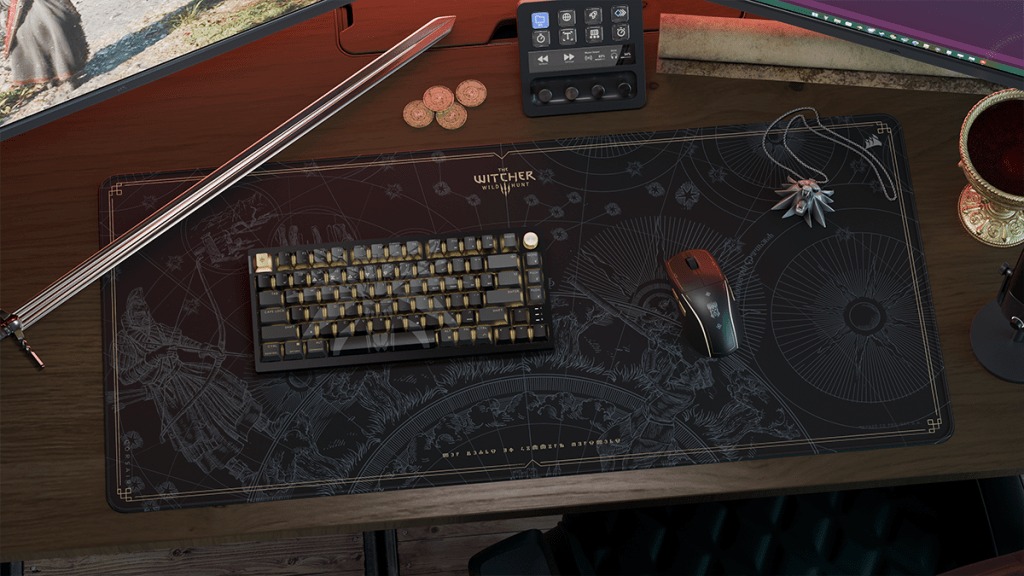
“Fans worldwide have been spellbound by Geralt’s quest to find Ciri, and we’re thrilled to help them find the ideal gear to celebrate 10 years of this legendary game,” said Tobias Brinkmann, Vice President and General Manager of Gaming Peripherals at CORSAIR. “We’re proud to work with CD PROJEKT RED to bring this collaboration to life.”
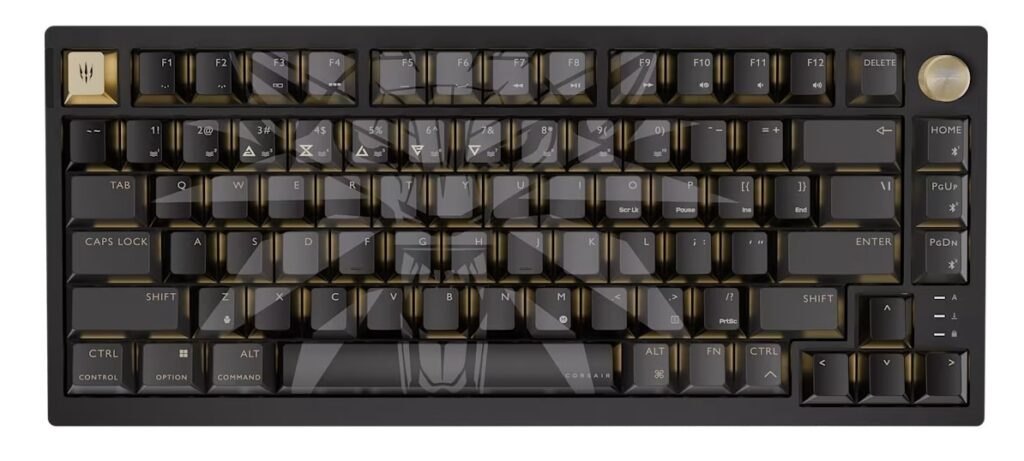
Leading the collection is the CORSAIR K65 PLUS WIRELESS 75% RGB Mechanical Gaming Keyboard, available in the North American layout. It features Witcher signs on the keycaps for easy spell access, a custom Esc key with the game’s logo, and a large Wolf medallion design on the top plate. The keyboard uses CORSAIR’s MLX Red linear switches for smooth and responsive input, supports reliable wireless connectivity, and is built for durability. It is available now for $169.99 / €169.99.

The CORSAIR M75 WIRELESS Gaming Mouse 10th Anniversary Edition features Eredin, the King of the Wild Hunt. It offers fast, precise tracking and lightweight comfort, making it ideal for long gaming sessions. The mouse is priced at $129.99 / €129.99.

Completing the lineup is the MM300 2XL Anti-Fray Cloth Gaming Mouse Pad, featuring the astral map of the Spiral and Witcher symbols across its surface. It provides a large, durable workspace and is available for $49.99 / €49.99.
The CORSAIR x The Witcher 3: Wild Hunt 10th Anniversary Collection is available now in limited quantities worldwide through Corsair.com and CD PROJEKT RED’s website.
For more daily updates, please visit our News Section.
Stay ahead in tech! Join our Telegram community and sign up for our daily newsletter of top stories!
The post The Witcher 3 Turns 10: Corsair Releases Themed Keyboard, Mouse, and Mouse Pad appeared first on Gizmochina.

Lava is getting ready to refresh its Agni lineup, and its latest teaser gives us an early look at what to expect from the upcoming Agni 4. The phone is confirmed to launch in India sometime in November, and if the company’s new post is anything to go by, this year’s model is getting a noticeable design upgrade.

In a teaser shared on X, Lava wrote “Forged from metal—because plastic dreams shatter,” pretty much spelling out that the Agni 4 will switch to a metal build. The accompanying image shows the phone’s frame with visible antenna lines — a staple of metal-framed phones — along with metal-finished power and volume buttons. But it’s not just the materials getting an upgrade: the Agni 4 also moves to a completely flat design, a major shift from the curved builds of the Agni 2 and Agni 3.
On the specs side, leaks suggest the Agni 4 will sit in the ₹25,000 price bracket. It’s expected to feature a 6.78-inch display and run on the MediaTek Dimensity 8350, a 4nm chip. One of its biggest talking points could be the battery — the phone is rumored to pack over 7,000mAh, which would be one of the largest capacities in its class.
Last year’s Agni 3 launched at ₹20,999 and offered a 6.78-inch 1.5K AMOLED display, a 50MP + 8MP + 8MP rear configuration (that includes a 3x telephoto), and even a secondary 1.74-inch AMOLED screen on the back — something the Agni 4 isn’t expected to carry forward.
The Agni 4 seems to be trading some specifications for a sturdier build, faster hardware, and a massive battery — a direction that could appeal to users who prefer practicality over flashy add-ons.
Don’t miss a thing! Join our Telegram community for instant updates and grab our free daily newsletter for the best tech stories!
For more daily updates, please visit our News Section.
(Source: Lava)
The post Lava Agni 4 teaser confirms metal frame ahead of November launch appeared first on Gizmochina.

The Wiko X70 has officially been launched in China. This model was just announced in the region, with some features not commonly found in budget phones. You also get a bunch of other capable features as well, so here are all the details.
The Chinese brand has officially announced the Wiko X70, with support for satellite connectivity that is powered by BeiDou. It works independently of a cellular signal, so you don’t need a mobile connection. This is a feature often found in top of the line flagship smartphones and can be useful in emergency situations. On the front, the device sports a tall 6.7-inch OLED display with an FHD+ resolution, a 120Hz refresh rate, and Kunlun glass.

For optics, the rear has a 50MP main camera, while the front houses a 32MP shooter for selfies and video calls. The Wiko X70 features an IP54 rating for water and dust resistance. A massive 6,100mAh battery pack powers this model, which supports up to 40W wired fast charging. Other notable features include dual SIM support, a USB 2.0 port, and a slim 7.6mm body.
Huawei just announced the Wiko X70 in three color options in China, namely black, white, and light green. It is also available in three storage configurations, which include 8GB + 256GB, 12GB + 256GB, and 12GB + 512GB. This model has a 1,599 Yuan price tag, which is roughly 224 US Dollars.
For more daily updates, please visit our News Section.
Don’t miss a thing! Join our Telegram community for instant updates and grab our free daily newsletter for the best tech stories!
The post Wiko X70 Launches in China: Budget Phone with Satellite Connectivity & 6,100mAh Battery appeared first on Gizmochina.

Lava’s audio division, Probuds, has introduced the Probuds N33, its first neckband with Active Noise Cancellation (ANC). The device has a metallic finish, flexible build, and 13mm dynamic bass drivers that deliver balanced sound for music, calls, and gaming.

The Probuds N33 reduces outside noise by up to 30dB through ANC and includes Transparency Mode for hearing ambient sounds when needed. Environmental Noise Cancellation (ENC) helps improve voice clarity during calls. For gaming, the Pro Game Mode brings 45ms low latency for better sound synchronization during gameplay or video streaming.
It runs on a 300mAh battery that offers up to 40 hours of playback with ANC off and 31 hours with ANC on. A quick 10-minute charge provides 10 hours of playback, and a full charge takes around an hour through a Type-C port. Bluetooth v5.4 ensures stable connectivity, and Dual Device Pairing allows connection with two devices simultaneously.
The neckband also includes a Magnetic Hall Switch for automatic power control and 4-button in-line controls for managing music and calls. With an IPX5 water resistance rating, it can withstand sweat and light splashes, making it suitable for workouts and daily use.
The Lava Probuds N33 is priced at ₹1,299 and is available in Obsidian Black and Cosmic Teal Green. It will be available to purchase through Lava’s official e-store and offline retail outlets across India.
For more daily updates, please visit our News Section.
Stay ahead in tech! Join our Telegram community and sign up for our daily newsletter of top stories.
The post Lava Probuds N33 Neckband Brings ANC, 40-Hour Playback, and Game Mode to Budget Audio Segment appeared first on Gizmochina.

Honor has a couple of new smartphones lined up for China. While it has the Honor Power 2 with a 10,000mAh battery scheduled for a Q1 2026 launch, the brand is expected to unveil the Honor 500 series and GT 2 lineup before the end of this year. A fresh leak that has emerged today has revealed key details about the GT 2 series.

According to tipster Digital Chat Station, the Honor GT 2 and GT 2 Pro will be powered by the Snapdragon 8 Elite and 8 Elite Gen 5 chipsets, respectively. With this, he has debunked previous claims that the GT 2 would feature the upcoming Snapdragon 8 Gen 5 SoC.

Coming to the Honor GT 2 series’ display, a recent leak by tipster Smart Pikachu revealed that both phones will feature a 6.83-inch flat OLED panel that supports a 1.5K resolution and a 165Hz refresh rate, similar to the recently unveiled OnePlus Ace 6.
According to DCS’ latest leak, the Honor GT 2 series is also said to feature a 50-megapixel primary camera with a large sensor, an ultrasonic in-screen fingerprint sensor, a large battery, a metal middle frame, and a fully water-resistant body, which suggests that it may arrive with an IP68/69 rating. The GT 2 duo is expected to run on MagicOS 10 based on Android 16.

In the comments section of the Weibo post, the tipster mentioned that an upcoming Honor phone has a 9,000mAh battery. However, it is unclear whether the tipster was referring to the GT 2 or the GT 2 Pro. As per other leaks, the GT 2 may pack a 9,000mAh (8,800mAh rated value) battery, and both phones may support 100W charging.

As mentioned above, the tipster revealed that the Honor GT 2 series is tentatively scheduled to debut in December in China. However, there is no information yet on whether these devices will be released globally. As far as the Honor 500 series is concerned, it is expected to go official in November in China.
For more daily updates, please visit our News Section.
Stay ahead in tech! Join our Telegram community and sign up for our daily newsletter of top stories.
The post Honor GT 2, GT 2 Pro with Snapdragon 8 Elite, 8 Elite Gen 5 incoming, more details emerge appeared first on Gizmochina.

A new leak from well-known tipster Digital Chat Station gives us a pretty detailed look at MediaTek’s upcoming Dimensity 8500 chip.
According to the leak, the Dimensity 8500 is built on TSMC’s 4nm process and uses an 8-core setup based on ARM’s A725 architecture. That means all cores are big cores, like the Dimensity 8400.
The prime apparently hits 3.4GHz, which is slightly higher than 3.25GHz on its predecessor. Whereas the remaining cores could also have higher clock speeds than before.
On the graphics side, the Mali-G720 GPU is reportedly scaled up and running around 1.5GHz. It’s still early numbers, but the chip reportedly lands around 2.2 million on AnTuTu.

Digital Chat Station claims the GPU’s theoretical performance could beat Qualcomm’s Snapdragon 8 Gen 3 and 8s Gen 4 — at least on paper. Of course, theory doesn’t always match real-world gaming, heat control, or battery life, so it’s better to wait for actual phones before jumping to conclusions.
The first wave of phones with the Dimensity 8500 is already in testing, according to the leak. One is a mid-range phone with a standard-sized display, while the other is focused on battery life with a large-capacity battery. The rollout has reportedly started quietly.
There’s also a familiar brand name tied to this chip. Back in August, the blogger hinted that the Dimensity 8500 may debut on Xiaomi’s Redmi Turbo line. Honor, OPPO, OnePlus, and vivo are expected to follow with their own models soon after.
For context, the Redmi Turbo 4 series split its chips between MediaTek and Qualcomm — the base model launched with the Dimensity 8400-Ultra, while the Pro variant picked the Snapdragon 8s Gen 4.
If the leak pans out, the Dimensity 8500 might slot in as the next step for Xiaomi’s mid-range performance phones. No release date yet, and no confirmation from MediaTek.
For more daily updates, please visit our News Section.
Stay ahead in tech! Join our Telegram community and sign up for our daily newsletter of top stories.
The post MediaTek Dimensity 8500 specs leak, to feature all-big core design appeared first on Gizmochina.

Earlier this month, the Poco F8 Ultra surfaced in the database of Thailand’s NBTC certification platform. At that time, the rumour mill speculated that the F8 Ultra may launch much earlier than its predecessor. In a new development, the Poco F8 Pro has bagged approval from the same certification. At the same time, both devices along with the Xiaomi 17 and Redmi Note 15 (4G) have also received certification from the IMDA certification platform in Singapore.
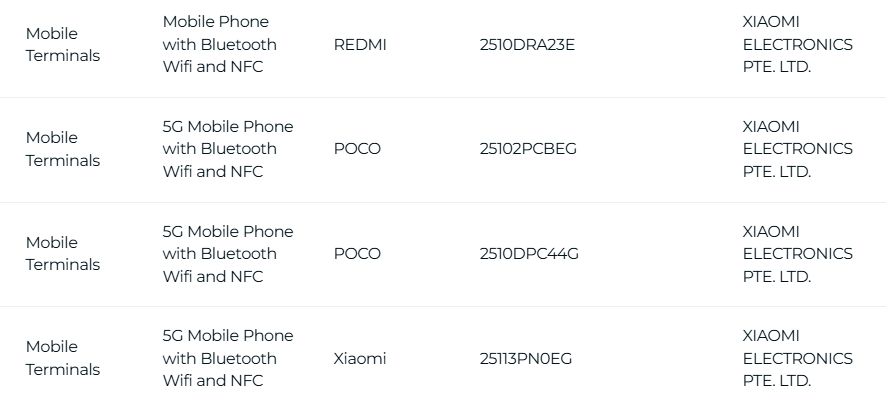
As can be seen above, a couple of new phones from Poco, Xiaomi, and Redmi have received approval from the IMDA authority. These include the Xiaomi 17’s global version with model number 25113PN0EG, the Redmi Note 15 (4G) with model number 2510DRA23E, and the two Poco phones with model numbers 2510DPC44G and 25102PCBEG.
The 25102PCBEG device is the Poco F8 Ultra, whereas the 2510DPC44G phone is the Poco F8 Pro, which has also surfaced in Thailand’s NBTC certification. With multiple certifications under their belt, it appears that the F8 series may launch globally before the end of this year.
The Poco F8 Ultra and F8 Pro are expected to be rebranded versions of the Redmi K90 Pro Max and Redmi K90, respectively, which recently debuted in China. While the F8 Ultra is expected to feature the Snapdragon 8 Elite Gen 5, the F8 Pro may arrive with the Snapdragon 8 Elite onboard.
While the base Note 15 (4G) has been approved by IMDA, its Pro version bearing the model number 25100RA69G has already been certified by the same certification platform earlier this month. There are no concrete details about the chipsets that will power these models.
The Xiaomi 17 with Snapdragon 8 Elite Gen 5 is the company’s most powerful flagship for this year. The lineup also includes the Xiaomi 17 Pro and Pro Max, but rumours say that these models may not be released in markets outside of China.
For more daily updates, please visit our News Section.
Stay ahead in tech! Join our Telegram community and sign up for our daily newsletter of top stories.
(via)
The post Poco F8 Ultra, F8 Pro, Xiaomi 17 receive IMDA certification, launching soon appeared first on Gizmochina.

Poco may be gearing up for a faster refresh cycle than anyone anticipated. Just seven months after the Poco F7 Pro and F7 Ultra debuted, the company already appears to be moving ahead with the next generation — and a new certification suggests the rollout could happen much sooner than expected.

Earlier this month, the Poco F8 Ultra passed through Thailand’s NBTC certification process. Now, the Poco F8 Pro has joined it on the same database, signaling that both models are inching closer to an official unveiling. What’s unusual is the timing: the F7 Pro and F7 Ultra launched in March, but their certifications surfaced much later — the F7 Pro was approved in January, while the F7 Ultra didn’t get its approval until early March, just days before the big reveal. With the F8 series appearing this early, a 2025 release well ahead of March won’t be surprising.

Both phones also seem to be tracking together. Since the F8 Ultra and F8 Pro received approval just days apart, there’s a good chance Poco plans to unveil them side by side, mirroring last year’s strategy. (The standard F7 launched slightly later, so we may see a repeat of that staggered approach.)
As for what the phones actually are, that’s where things get interesting. The F8 Ultra is expected to be a rebranded Redmi K90 Pro Max. But the F8 Pro still remains a mystery — sort of. It can be a rebranded Redmi K90. Designing a phone from scratch takes time and resources, after all.
With both the F8 Pro and F8 Ultra cleared for Thailand and the launch window seemingly shifting forward, it’s only a matter of time before more information starts spilling out. If history is any indication, the leaks will only get louder from here.
Don’t miss a thing! Join our Telegram community for instant updates and grab our free daily newsletter for the best tech stories!
For more daily updates, please visit our News Section.
The post Poco F8 Pro grabs NBTC approval, hinting at an earlier-than-expected launch appeared first on Gizmochina.

Oppo has periodically updated its software update policy to offer longer software support for its devices. The company now offers up to five major Android OS upgrades to select high-end devices, which further reduces the need for frequent smartphone upgrades.
The Oppo Find X8, launched last year, was the company’s first phone to promise five major Android OS updates, and this policy has since been expanded to more devices. We’ve prepared a list of Oppo smartphones that guarantee five Android OS updates. Review it below to check if yours is eligible for long-term software support.
These Oppo smartphones are officially confirmed to receive five Android OS updates. Additionally, they will get security updates for a total of six years. The Find X8 and X8 Pro were launched last year with Android 15, while the Find X9 series was launched this year with Android 16. Hence, the Find X9 and X9 Pro are also eligible to receive Android 21 update.
According to some reports, the Oppo Reno 14 and Reno 14 Pro may also receive five Android upgrades; however, there’s no official confirmation yet. If that’s true, we can expect more Reno phones in the future to come with the same update policy.
Note: We’ll regularly update the list as and when more Oppo devices are announced with a promise of five major Android updates.
Related: ColorOS 16: new features, eligible devices, and rollout timeline
With its latest software update policy, Oppo has become one of the top Android brands offering longer software updates. It outperforms many of its peers, including OnePlus, Realme, and Vivo, which are currently offering up to four OS updates. However, it’s still behind Samsung and Google, which offer two additional major upgrades.
Oppo is currently busy with the ColorOS 16 rollout. The Android 16-based software brings a lot to the table, including numerous exciting upgrades, visual enhancements, extended customization options, and more intelligent AI features. You can check the new features and rollout timeline here.
You can visit the Oppo section on Gizmochina regularly for the latest updates. Alternatively, you can join our Telegram channel to stay updated with the latest happenings in tech.
The post Oppo phones eligible for five major Android OS updates appeared first on Gizmochina.

Before the end of this year, OnePlus may unveil the OnePlus Ace 6 Turbo as the world’s first Snapdragon 8 Gen 5 phone. Next year, the brand is expected to launch the OnePlus 15T as one of its first major phones of 2026. Like the previous generation OnePlus 13T (review), the upcoming 15T will be a compact flagship. So far, the rumour mill has already leaked a few details about the device. Now, a leak by tipster Digital Chat Station has reiterated some of its key specifications.

According to the tipster, the OnePlus 15T will feature a 6.31-inch OLED screen that offers a 1.5K resolution. It will be a flat display surrounded by equal-sized bezels on all four sides. For security, it will have an ultrasonic in-screen fingerprint sensor.
Under the hood, the OnePlus 15T will feature the Snapdragon 8 Elite Gen 5, which also powers the OnePlus 15. The tipster claimed that the battery size of the OnePlus 15T has not been finalized yet. However, he revealed that the engineering prototype currently under testing shows model numbers starting with “7,” indicating that it may pack a battery of around 7,000mAh capacity. He added that the phone will have an IP68-rated build.
As far as the launch is concerned, the tipster claimed that the OnePlus 15T will be announced in the first half of 2026. The tipster did not mention anything about the 15T’s camera specifications, but reports have already suggested that it will include an ultra-wide lens, which was missing in the previous generation. Hopefully, upcoming reports will reveal more details about the compact flagship.

OnePlus is not the only brand gearing up to launch a compact flagship next year. The 15T is expected to face competition from the likes of the Honor Magic 8 Mini, iQOO 15 Mini, and Oppo Find X9s, which are also expected to launch in 1H26.
The OnePlus 15T may get rebranded as the OnePlus 15s in India.
For more daily updates, please visit our News Section.
Stay ahead in tech! Join our Telegram community and sign up for our daily newsletter of top stories.
The post OnePlus 15T may pack a 7,000mAh battery, reveals engineering prototype appeared first on Gizmochina.

Oppo is reportedly working on its next-generation foldable phone, the Oppo Find N6. Last year, the Find N5 debuted as the first-ever foldable phone powered by the Snapdragon 8 Elite chipset. It is speculated that the Find N6, which is expected to launch by early 2026, will be the world’s first Snapdragon 8 Elite Gen 5 foldable.

As per the leak, the Oppo Find N6 will have a 6.6-inch screen on the outside and an 8.1-inch foldable screen on the inside. While the device is said to be thinner and lighter than before, it is expected to pack a 6,000mAh+ battery.
The rear camera setup is said to be headlined by a 50-megapixel Sony LYT-808 main camera, which has a 1/1.4-inch sensor size. It will be joined by an ultra-wide lens (not mentioned in the leak), a thin periscope lens with 3x optical zoom support, and a multispectral sensor.
Like the Find X9 series, the Find N6 is expected to ship with Android 16 and ColorOS 16 preinstalled. It will have other specs such as the Plus key, a side-mounted fingerprint sensor, and wireless charging support. While the exact IP rating is not mentioned, it is said to offer full-level water resistance. This appears to be the same as the Find N5’s IPX8/9 rating. A previous leak claimed that the device will have a titanium build.

The tipster did not mention the Oppo Find N6’s launch timeframe. Likely, it will break cover in the first quarter of 2026.
Oppo hasn’t launched a flip phone since the Find N3 Flip, which was announced back in 2023. Next year, the brand is also expected to unveil the Find N6 Flip. However, there is no information about its launch timeframe.
For more daily updates, please visit our News Section.
Stay ahead in tech! Join our Telegram community and sign up for our daily newsletter of top stories.
The post Oppo Find N6 key specifications tipped, aiming to be world’s first Snapdragon 8 Elite 6 foldable phone appeared first on Gizmochina.

If you plan to capture more than just candy and costumes this Halloween, you’ll need a smartphone camera that performs well in low light, avoids grainy photos, and never misses the perfect shot.
The best phones of 2025 are practically tailor-made for this, offering pro-grade camera hardware, AI-assisted scene detection, and advanced software features that make them feel less like phones and more like pocketable photo studios.
Here are five of the best smartphones for Halloween photography this year, whether you’re taking portraits of carved pumpkins, filming haunted house scenes, or just trying to document your costume in cinematic quality.

The iPhone 17 Pro series takes low-light and portrait photography to an entirely new level, and that’s saying something, considering the bar set by the iPhone 15 and 16 Pro models. Both the Pro and Pro Max come with three 48MP sensors: wide, ultra-wide, and a telephoto that uses a next-generation tetraprism design with a massive sensor upgrade. The 100mm 4x optical zoom is ideal for framing those eerie, distant subjects, while the 200mm 8x zoom delivers the longest optical-quality reach ever on an iPhone.
It also helps that Apple’s new A19 Pro chip and redesigned vapor chamber keep things cool during extended 4K Dolby Vision shoots. The new 18MP square-shaped front camera supports Center Stage with AI-based framing, making it great for selfies that include everyone, even in motion. Add in the triple-layer scratch resistance and glare reduction from Ceramic Shield 2, and it’s clear this iPhone is ready for a night of haunted action.

Samsung’s Galaxy S25 Ultra is the only device here that pairs a 200MP main camera with a pair of high-resolution 50MP zoom sensors, one ultra-wide and one periscope, and delivers consistent 10-bit HDR video. The telephoto setup with 5x optical zoom and 100x Space Zoom remains an asset when you’re trying to photograph the full scale of a haunted house or pick out mysterious figures in the background.
Samsung’s mDNIe-powered image engine helps manage dynamic range at night without aggressive noise reduction, and new AI editing features like Virtual Aperture and Audio Eraser let you fine-tune your Halloween memories after the fact. Its Snapdragon 8 Elite chip and a larger vapor chamber ensure you’re not thermally throttled while shooting extended 8K clips. For anyone serious about mobile photography, it’s a true Halloween-ready flagship.

The Pixel 10 Pro XL leans hard into computational photography, as expected from Google. But this year, it’s backed by the custom-built Tensor G5 chip and the new Gemini AI-powered Camera Coach. Whether you’re framing a foggy cemetery or a dimly lit porch, the Pixel 10 Pro XL can help suggest optimal settings and angles, acting as your night photography assistant.
The 48MP main, ultra-wide, and periscope sensors might not sound drastically different from the Pixel 9 series, but Google’s scene interpretation, HDR stack, and Night Sight algorithms are sharper and faster than ever. It even supports simultaneous dual-camera recording and 8K video. Magic Cue and Auto Best Take make sure that even your busy group photos turn out clear and well-framed.

The OnePlus 13 might just be the underdog Halloween hero. Its Hasselblad-tuned triple 50MP camera setup includes an ultra-wide and an upgraded tri-prism periscope telephoto that is both lighter and faster to focus than its predecessor. Its 2K+ BOE display offers excellent clarity even when reviewing night shots in the field, and the camera delivers balanced exposure with high dynamic range.
What sets it apart is how fast it shoots, processes, and saves. The Snapdragon 8 Elite chip, paired with UFS 4.0 and up to 24GB of RAM, gives it a speed advantage in handling 4K or 8K Halloween videos with minimal lag. Its IP69 rating and ceramic glass build also mean you can shoot in rain or fog without concern.
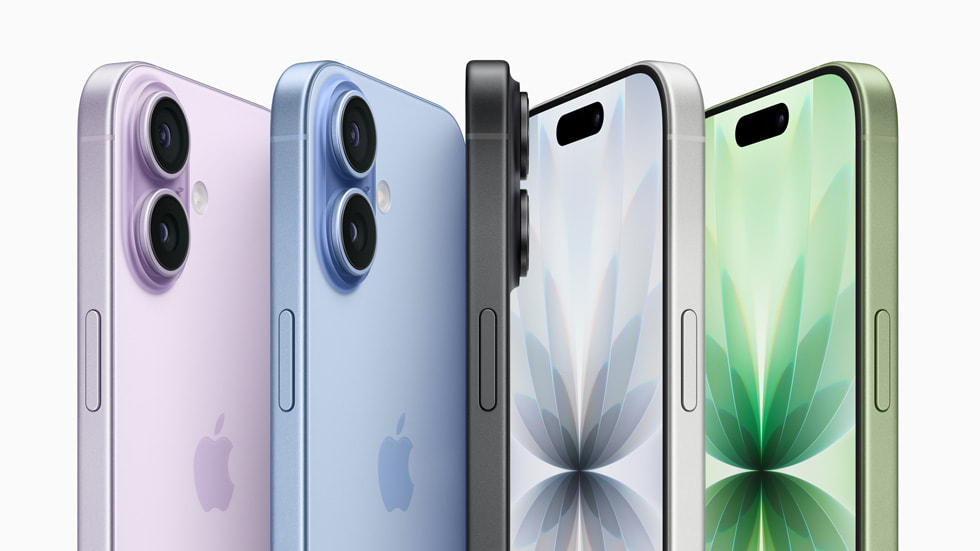
If you don’t need the Pro camera setup but still want Apple’s best low-light tech in a compact body, the iPhone 17 is a solid pick. It now has a 48MP main and 48MP ultra-wide camera, and the front 18MP Center Stage camera has all the software enhancements found in the Pro model, like AI framing and Dual Capture.
It might miss out on the extra zoom flexibility, but for most Halloween needs, from night-time street photos to 4K cinematic clips, it delivers beautifully. And with ProMotion finally on the base model and a 3,000-nit outdoor display, you won’t be squinting to review your dark and dramatic highlights.
For more daily updates, please visit our News Section.
Stay ahead in tech! Join our Telegram community and sign up for our daily newsletter of top stories! 
The post The Best Smartphones for Halloween Photography in 2025 appeared first on Gizmochina.

WhatsApp has added passkey-encrypted backups, giving users a stronger way to secure their chat data stored on Google Drive or iCloud. The new feature builds on WhatsApp’s existing end-to-end encryption, which already protects messages, media, and calls.

With passkey protection, users can now secure their backups using fingerprint, face ID, or screen lock. There’s no need to remember or manage a 64-digit encryption key, making it simpler to keep backups safe. The encryption ensures that only the user can access the data, not WhatsApp or the cloud provider. This protection applies to all stored content, including photos, voice notes, and chat histories.
WhatsApp said that its end-to-end encryption now safeguards more than 100 billion messages sent every day by over 2 billion users. While most chats are stored locally on devices, many people also back them up online. The encrypted backup feature ensures that these files remain private even when stored in the cloud.
The passkey-encrypted backup option will roll out globally in the coming weeks. Users will need to update to the latest version of WhatsApp to access the feature on both Android and iOS.
For more daily updates, please visit our News Section.
Stay ahead in tech! Join our Telegram community and sign up for our daily newsletter of top stories.
(Source)
The post WhatsApp Adds Passkey Encryption for Chat Backups on Google Drive and iCloud appeared first on Gizmochina.

Huawei seems ready to make headlines once again. A new leak suggests the Chinese tech giant is developing a smartphone with two 200MP cameras, potentially setting a new standard for mobile photography. If accurate, this could be the first-ever phone to feature such a setup, and it might arrive sooner than you think.

The information comes from reliable tipster Digital Chat Station on Weibo, who hinted that an upcoming smartphone with dual 200MP cameras is currently under testing. While the post didn’t directly name Huawei, it included an emoji frequently associated with the brand — a subtle but telling clue.
The mystery device is believed to be the Huawei Pura 90 Ultra, a successor to this year’s Pura 80 Ultra. That model debuted in June 2025 with a 50MP 1-inch primary sensor and Huawei’s signature XMAGE processing, positioning it as one of the strongest camera flagships of the year. If this new leak pans out, the upcoming Pura flagship could take things to another level entirely.
Interestingly, another Weibo source mentioned that both the Pura 90 Pro+ and the Pura 90 Ultra are being tested with this setup. If true, it would mark Huawei’s first phone — or phones — to cross the 200MP threshold, a milestone Samsung and all of Huawei’s Chinese competitors have yet to achieve in a dual-sensor layout.

For now, there’s no confirmed launch date, but given Huawei’s pattern, the Pura 90 Ultra will likely arrive sometime in mid-2026.
After pioneering the world’s first tri-fold phone, Huawei might now add another feather to its cap — becoming the first manufacturer with a dual 200MP camera phone.
Don’t miss a thing! Join our Telegram community for instant updates and grab our free daily newsletter for the best tech stories!
For more daily updates, please visit our News Section.
The post Huawei could be working on a smartphone with dual 200MP cameras appeared first on Gizmochina.

Amazon has started selling the Echo Dot Max and Echo Studio, two new smart speakers that were unveiled last month. Both devices are built for Alexa+, Amazon’s next-generation AI assistant designed to hold more natural conversations, understand context, and complete daily tasks more efficiently.

At the heart of these new Echo speakers are Amazon’s latest AZ3 and AZ3 Pro processors. These chips come with an integrated AI Accelerator that allows Alexa+ to handle more advanced AI functions directly on the device, improving speed and reducing dependence on cloud processing.
The Echo Dot Max runs on the AZ3 chip. It improves wake-word detection by more than 50 percent and filters background noise more effectively through a new microphone system. The chip also supports better conversational response and smarter sound adaptation for different room environments.
The Echo Studio uses the more powerful AZ3 Pro chip, which enhances both audio and AI performance. It can process larger language models and advanced sound algorithms, allowing Alexa+ to respond faster and manage connected devices more efficiently.
Both speakers also feature Omnisense, Amazon’s new sensor platform that combines audio, ultrasound, Wi-Fi radar, and motion signals. This helps Alexa recognize activities happening around the room and act proactively, such as reminding users of an open door or starting a routine when it detects someone nearby.
The Echo Dot Max is Amazon’s most powerful compact smart speaker yet. It features a new two-way speaker system with a high-excursion woofer for deeper bass and a custom tweeter for sharper high tones. Compared to the Echo Dot (5th Gen), it delivers nearly three times the bass.
Amazon has redesigned the speaker’s internal structure by integrating the audio components directly into the device housing. This doubles the air space, producing stronger and more balanced sound in a compact design.
The new Echo Studio is 40 percent smaller than the previous version while offering premium, room-filling sound. It includes a high-excursion woofer for rich bass and three full-range drivers arranged to create 360-degree sound coverage. The speaker supports spatial audio and Dolby Atmos, which provide immersive, surround-style sound.
Its spherical design is covered in 3D-knit acoustic fabric, maintaining clear and transparent sound. The familiar light ring now features visual cues powered by a new recognition model for more interactive responses.
Both the Echo Dot Max and Echo Studio can be paired with Fire TV sticks to build a surround sound setup using Alexa Home Theater. The system allows up to five speakers to connect, and Alexa automatically tunes them based on the room layout. This provides a full home-theater experience that normally requires expensive equipment and setup.
The Echo Dot Max is priced at $99.99, while the Echo Studio costs $219.99. Both are now available for purchase.
For more daily updates, please visit our News Section.
Stay ahead in tech! Join our Telegram community and sign up for our daily newsletter of top stories.
The post Amazon Starts Selling Echo Dot Max and Echo Studio with New AI Chips appeared first on Gizmochina.

For many US citizens at this particular moment in time, smartphones have become a valuable tool in the pushback against ICE, in hopes that surveillance of their actions will result in ICE agents reducing their use of force during raids to detain people. In some cases, video recording and what could almost be viewed as verbally shaming these agents in public has resulted in them leaving the scene of attempt to detain someone. Almost like they know they weren’t supposed to be doing it in the first place.
These sorts of recordings, as well as images related to the same subject taken with smartphones we carry with us every day, are being spread all across social media. Making them more of an important thing to have around these days. The sharing on social media shouldn’t be surprising. It’s become a main form of spreading news on current events. Situations that might otherwise get little media attention from big outlets and networks.
Outside of social media, apps like ICEBlock and similar offerings have made their way onto app platforms this year. These apps have served as a way for citizens to share active locations of ICE agents. All in hopes people could avoid those areas. Like users of Waze do when they crowdsource information on speed traps. But smartphones and social media, however much they’ve been useful to the average user, are double-edged sword admist these problems with ICE.
As much as both smartphones and social media have been useful for citizens to share what’s happening, they’ve also been a method for ICE and the Trump administration to use surveillance against the populace. This unfortunate two-way street has and never likely will be a closed-off or one-sided beneficial piece of technology. That is to say, now more than ever, people should be careful about what they say or post online.
Whether or not thoughts of political dissent is something that enters your mind on a daily basis or crops up in conversations with friends, it’s one thing to think about that stuff and discuss with people close to you in person or in personal chats. It’s another thing to outwardly share those thoughts with the world at large onine.
This isn’t to say you shouldn’t talk about or share these things. Just that sharing these current moments require more contemplation. The launch of a new app that shares real-time locations of ICE activity to alert others, an opinion about ICE and what they’re doing, a video of excessive force during a detention. All of these should all be done with forethought and tact. As ICE also have their own tools.
As noted by Kyle Chayka in The New Yorker, ICE has been seen using digital tools created by Palantir to gather information on people it’s detained. These tools scan social media accounts, government records, and bio-metric data of detainees. At the same time, the Trump administration has put pressure on app stores like Google Play and the Apple App Store to remove apps that work against ICE and its goals. ICEBlock and similar offerings have all been pulled down. Other apps, such as Eyes Up, went live on September 1 of this year to archive recordings of excessive abuse and abductions by ICE, only to be pulled down in early October.
So far there haven’t been any widespread (let alone any that are known) instances of people being targeted for what they post about the current situation with ICE raids and the Trump administration’s use of them online. That doesn’t mean that these things won’t happen, however. The further it gets into Trump’s second term, the more that things happen that people probably wouldn’t have believed just a few years ago.
The post Smartphones and social media are the double-edged sword amidst problems with ICE appeared first on Android Headlines.

A week ago, Samsung rolled out the October 2025 Android security patch for the Galaxy Z Fold 7 and Z Flip 7. The firm has now rolled out the same firmware for its older flagship smartphone range. Samsung already shipped the new security update for the Galaxy S22 series, Galaxy S23 FE, Galaxy S24 FE, and Galaxy S25 series. Now, the Galaxy Z Fold 6 and Z Flip 6 are getting their October 2025 security update.
Samsung has kicked off the rollout of the October 2025 security update for the Galaxy Z Fold 6 and Galaxy Z Flip 6, starting with Europe. The new firmware version of the former is F956BXXS2CYJ1, while the latter’s update carries the firmware version F741BXXS2CYJ1.
Samsung is rolling out the latest Android security patch for these devices over the air in a phased manner, so it could take some time to reach all units.
You can check if the update is available for your Galaxy Z 6 series foldable offering by going to Settings > Software update > Download and install. Samsung’s October security update brings fixes for 34 Common Vulnerabilities and Exposures (CVE) and SVE items.
Samsung released the One UI 8.0 update based on Android 16 for the Z Fold 6 and Z Flip 6 recently. The One UI 8.5 will be the next big update for these devices, but it won’t roll out anytime soon.
In the meantime, Samsung is also upgrading the Galaxy Z Fold 4 and Z Flip 4 units with the October 2025 Android security patch. The size of the update, which also carries the One UI 8 enhancements, for the 2022 foldables is nearly 3.5GB. Samsung is currently rolling out the update to these phones in its home market of South Korea, but a wider rollout could begin soon.
The post Galaxy Z Fold 6 & Flip 6 Users—October 2025 Security Update Is Here appeared first on Android Headlines.

A lot of smartphone users spend their time scrolling social media, and this drains the device’s battery very quickly. While Android already has a data saver, Samsung is reportedly working on a smarter data saver for its One UI 8.5 that helps users save data on popular apps like Instagram, TikTok, and YouTube.
As reported by Android Authority, a hidden feature called “Adaptive data saver” was found in an early One UI 8.5 test build. Based on the early findings, it appears to control how social apps load videos. Instead of automatically fetching every video as the user scrolls, the phone may only download clips when they actually tap or stop to watch.
While this might sound very simple, it can prevent heavy background data use when you casually scroll through your feed. Furthermore, a string code in the software confirms that the user won’t notice any downgrade in the video quality. Meaning, your data would be saved without compromising the viewing experience. Samsung is aiming for smarter control rather than aggressive limits.
How exactly the feature works is unclear. It appears that it likely tweaks prefetching, which is when apps load content before you see it. Most social media apps rely on prefetching to offer a smooth scrolling experience. Samsung could reduce or control this process so the phone only loads what you need. If successful, users will save data while still enjoying fast loading and smooth playback.
Since the feature is still hidden, the company is likely working to refine it before the stable release. While the One UI 8.5 release seems to be delayed, the update is shaping up to bring some meaningful changes for the users.
The post Samsung's One UI 8.5 To Stop Social Media from Eating Your Data appeared first on Android Headlines.

What if the most important feature of the next iPhone Pro wasn’t the processor or the camera, but the shade you can’t get? The latest leaks for the iPhone 18 Pro suggest Apple is placing a major bet on aesthetics with three new colors. The change also reportedly involves skipping—again—the most neutral shade.
For the second year running, Apple’s high-end Pro model may skip offering a true black or Space Gray finish. Instead, the company seems to be steering its flagship line toward a warmer color palette.
The latest data bits come from reliable tech tipster Instant Digital on Weibo. Their post on Weibo points to three new color options for the iPhone 18 Pro: Coffee, Purple, and Burgundy.
We still don’t have images of what these alleged new tones might look like. However, we can guess it from their names. The Coffee color suggests a deep, earthy brown, offering a warm hue that differs from the metallic gold options of the past. The Burgundy could have a wine-like shade that involves crimson and brown hues. Meanwhile, the Purple could have a muted finish, moving away from the bright purples seen on the base iPhone models.
That said, there is a segment of the public that might be disappointed with the new colors. If true, the strategy will ignore those who simply prefer a clean, dark neutral. Apple may want the iPhone 18 Pro to look noticeably different from any black slab on the market. But will consumers embrace this forced choice? In the end, the company might be betting that the “luxury” of the new finishes also attracts black color fans.
It’s noteworthy that it’s still quite early. At this point, plans can change significantly. However, the rumors agree that Apple wants its next flagship phones to stand out from the rest from their design.
The post New iPhone 18 Pro Colors Leak: No True Black Option appeared first on Android Headlines.

The OnePlus 15 was announced in China on Monday, October 27, 2025. Typically, companies like OnePlus will wait a few months before bringing the new device to the global market, including the US. However, this year, the wait is much shorter.
OnePlus has announced that the global release date for the OnePlus 15 is going to be November 13. Which means you can have a new OnePlus phone in time for the holidays.
We do already know a ton about the OnePlus 15 thanks to the Chinese launch event, most of which will be the exact same for the global model. Including the removal of Hasselblad. OnePlus announced a few months ago that it had developed its own photo processing engine called DetailMax. So, on the surface, the camera specs might seem like a bit of a downgrade.
The OnePlus 15 will sport a 6.78-inch QHD+ display, powered by the Qualcomm Snapdragon 8 Elite Gen 5 processor, up to 16GB of RAM, and up to 1TB of storage. Though it’s likely that the 1TB of storage model will remain exclusive to China, as we’ve seen in recent years.
It also has a massive 7,300mAh capacity battery, which is expected to be the same size globally. With some phones, Europe ends up with a smaller battery due to regulations. But that’s not the case for OnePlus – technically, this is because it uses two batteries in its phones. We’re still getting 80W wired charging with the charger in the box too. As well as up to 50W of wireless charging.
Pricing is expected to remain mostly the same as the OnePlus 13, which started at $899 here in the US. That would make this a very compelling device from OnePlus, especially in the US where competition isn’t as steep.
| Display Size | 6.78 Inches |
| Display Resolution | 2772 x 1272 |
| Refresh Rate | 1-120Hz (adaptive), up to 165Hz when gaming |
| Dimensions | 161.42 x 76.67 x 8.10-8.20mm |
| Weight | 211/215 grams |
| Chipset | Qualcomm Snapdragon 8 Elite Gen 5 |
| RAM | 12GB/16GB (LPDDR5X) |
| Storage | 256GB/512GB (UFS 4.1), non-expandable |
| Main Camera | 50MP (f/1.8 aperture, 1/1.56-inch sensor size, OIS, 84-degree FoV) |
| Ultrawide Camera | 50MP (OV50D sensor, 1/2.88-inch sensor size, f/2.0 aperture, 116-degree FoV, 6P lens) |
| Periscope Telephoto Camera | 50MP (S5KJN5 sensor, 1/2.76-inch sensor size, 3.5x optical zoom, 4P lens, OIS, f/2.8 aperture, 30-degree FoV) |
| Front Camera | 32MP (Sony IMX709 sensor, 1/2.74-inch sensor size, f/2.4 aperture, 5P lens) |
| Battery | 7,300mAh (silicon-carbon) |
| Charging | 120W wired (80W in the US), 50W wireless |
| OS | Android 16 with ColorOS 16 (China) / OxygenOS 16 (global, coming) |
| Network & Connectivity | 5G, LTE, Wi-Fi 7, Bluetooth 6.0 |
| Water Resistance | IP68/IP69 |
| Colors | Absolute Black, Mist Purple, and Sand Dune |
The post OnePlus 15 Release Date appeared first on Android Headlines.

Amazon has agreed to a $2.5 billion settlement with the US regulator. This comes after the accusations that it misled people into joining its Prime service and made canceling harder than expected. As part of this FTC settlement, a large share of the money will go straight to the Amazon Prime customers in the form of a refund.
Under the settlement, only certain Prime customers will get money back. To be eligible, the user must have purchased the Prime subscription between June 23, 2019, and June 23, 2025. Moreover, the signup must have happened through one of the ads or interfaces that the FTC flagged as misleading. It includes checkout pages, delivery choices, and specific enrollment screens where the user was unable to confirm if they were committing to subscribe to Amazon Prime.
On top of this, there’s a certain usage condition as well. Customers who have barely used the service in their first year of subscription will be given priority. For the first batch, anyone who has used the Prime benefits three times or fewer in the first year will automatically receive a refund. They do not have to fill out any form. Amazon will directly send a refund of up to $51 within 90 days if they meet the criteria.
Once the first batch have received the refunds. Amazon will send claim forms to people who signed up through the same flagged screens but used Prime more actively, up to ten times in their first year. The form will be sent to the registered email. Also, note that there’s no way to manually hit and fill out the form yet. The user will have up to 180 days to submit the claim form. Once verified, they will receive the refund within 30 days.
If both the batches have received their refunds and there is still some money left in the refund fund, the tech giant must continue expanding eligibility gradually until at least $1 billion is distributed to consumers.
The post Amazon's $2.5B FTC Settlement: Are You Eligible to Claim a Refund? appeared first on Android Headlines.

Apple, for now, seems to have earned the favor of the Trump administration. The company, through some deft political maneuvering, has managed to escape the brunt of the tariffs and taxes the Trump administration plans on imposing. However, it is not 100% exempt. In fact, during the latest Apple earnings call, CEO Tim Cook revealed how much in tariffs the company had to pay.
According to Cook, Apple had to pay $1.1 billion in tariffs in the most recent quarter. This is an increase of $300 million from the $800 million in the previous quarter. However, Cook had previously warned that this increase was coming. In the previous quarter, the CEO cautioned investors that the impact of the tariffs would be felt more in the September 2025 quarter.
Why is that? This is because September is when Apple announces its latest iPhones. It is also when the company is expected to sell the most products. With tariffs, the more you import, the more taxes you pay, so this number doesn’t come as a surprise. In fact, Cook had previously estimated that it would be around $1.1 billion, and he was right.
But here’s the thing: if you thought it would go down the next quarter, it won’t. According to Apple CFO Kevan Parekh, he says that the tariffs the company can expect to pay in the December 2025 quarter could reach $1.4 billion. This means that in total, Apple would be paying a little over $3 billion in tariffs for 2025 alone. Unless the countries affected by these tariffs negotiate better rates with the Trump administration, that’s a huge chunk of change for Apple to be paying.
To a certain extent, companies are willing to absorb some costs on behalf of consumers. This isn’t necessarily driven by goodwill, but price sensitivity. If the price goes up too much, consumers will stop buying. So it’s better for a company to take a slight hit on profit if it means continued sales.
But like we said, $3 billion is no small amount. As rich as Apple is, we’re sure that $3 billion is an amount the company would rather spend or invest into something else. If the company were to be forced to keep blowing that kind of cash on tariffs alone, eventually it would pass the buck onto its customers.
At the start of the year, the Bank of America predicted that Apple might have to raise its iPhone prices by 10% to help mitigate these tariffs. For the most part, Apple has managed to maintain the price of its latest iPhone 17 models. There were some increases, like with the iPhone 17 Pro, but users got higher base storage.
We’re not sure what Apple’s plans are for the iPhone 18 series, but at this rate, you should prepare your wallets.
The post Apple Pays $1.1 Billion in Tariffs Amid Trump Administration Trade Policies appeared first on Android Headlines.

Really good Android tablets aren’t exactly available in abundance from a lot of different brands, but one that is available and is most certainly a really good tablet is the Galaxy Tab S10 FE, and this deal saves you a little money on it. Normally, the 256GB model of this tablet would cost you $569.99, but Amazon has it on sale, so right now it’s down to $469.99. With this $100 discount, this is the all-time low price for this tablet. The only caveat is that this price is only available for the Blue and Silver colors. The Gray version is on sale, but it’s only down to $499.99. If you don’t care about the color, then you can save an extra $30.
Samsung’s Galaxy Tab S10 FE comes with a decently large 10.9-inch display that is easy to enjoy all of your content on. From movies to games, e-books to browsing, the display’s larger size makes it easy to see everything on screen. Of course, this does make it a little more hefty to hold, but it’s worth it for the improvement to the entertainment.
It also has a battery life of up to 20 hours, which is pretty good considering you probably aren’t going to spend 20 hours straight on this thing. More than likely, the battery will last for days if you use the tablet on a more casual basis. It has an IP68 rating for dust resistance and water resistance, too, so you shouldn’t have to be afraid if you accidentally splash a little bit of water on it. Though we wouldn’t make a habit of that.

The post Grab Samsung's 256GB Galaxy Tab S10 FE for only $469.99 appeared first on Android Headlines.

If you’re looking for a great pair of wireless headphones, then you definitely want to check out the Sennheiser Momentum 4 headphones, because this Amazon deal has slashed the price, and you’re saving quite a lot of money. It is worth noting that this price may not stick around for long, and it’s also the lowest price in the last 30 days. It’s not quite the all-time low price, but it’s only a couple of dollars off from that. Normally, these headphones would cost you $449.95, but Amazon currently has them on sale for just $199.95, saving you a whopping $250. Having said that, this price is only available for the White and the Graphite colors.
What makes Sennheiser’s Momentum 4 headphones so good is the comfort and the sound quality. Putting these on your ears feels like you’re wearing a pair of pillowy clouds that are hugging your head just right. And of course, they’re Sennheiser, so the sound is quite amazing, as well as rich and immersive. Then, there’s the battery life. These will last for up to 60 hours, which is an absolutely astounding amount of time compared to most options out there.
Another really great feature they offer is the active noise cancellation. Sometimes you just want to shut the world out and enjoy whatever you have playing in your ears. That has never been easier with the ANC on these headphones, which can block out nearly all noise you’re probably accustomed to hearing on a regular basis. When you need to hear something, these have a pretty good transparency mode, so you don’t even have to take the headphones off.

The post Sennheiser's incredible Momentum 4 headphones are $250 off appeared first on Android Headlines.

The annual competition for the smartphone crown often boils down to subtle refinements in display and processing power. However, the latest leaked specs for the Samsung Galaxy S26 lineup suggest significant upgrades in a key area: photography. Apparently, Samsung will finally implement better and larger sensors for the Galaxy S26 series’ 3x zoom telephoto camera.
Camera-wise, one of the areas that has evolved the most in recent years is optical zoom. Several Android brands—especially Chinese ones—are implementing powerful lenses. However, Samsung has maintained a much more conservative approach. The company has focused primarily on software and processing improvements. But what happens when the hardware is so old that it simply can’t offer notable quality improvements?
This has been happening with the Galaxy S models of recent years. For reference, the latest Galaxy S25 Ultra uses the same 10MP 3x optical zoom lens as the older Galaxy S22 Ultra. We’re talking about a pretty small sensor for 2025 premium flagship standards (1/3.52-inch size). However, it looks like that’s finally about to change.
According to Alchemist Leaks, the Samsung Galaxy S26 series will receive a big 3x zoom telephoto camera upgrade. The change would be present in all models, from the base variant to the Ultra model. More specifically, the devices would boast a new, larger 12MP sensor with a 1/2.55-inch size. The leak mentions that the Galaxy S26 Ultra could have an even bigger telephoto camera. However, they note that the latter is not confirmed yet.
If true, this change could be the most important camera update in the entire series. After all, a larger physical sensor dramatically increases light capture, leading to cleaner details, less noise, and superior results when you use that common 3x zoom function.
Continuing with the camera upgrades, the Galaxy S26 Ultra will have an upgraded 200MP main sensor. The 50MP ultra-wide lens will also receive improvements, although no further specific details are available. The 50MP 5x zoom telephoto lens may be the same as the current Galaxy S25 Ultra.
On the other hand, the upgraded 50MP ultra-wide sensor would also be coming to the Samsung Galaxy S26 and S26 Plus. This would represent a big improvement compared to the Galaxy S25 and S25 Plus’ 12MP lenses.
Beyond the optical improvements, the S26 Ultra is chasing endurance. Leaks mention the possibility of a 5,400mAh battery cell. Such an increase would give the phone a nice daily battery life. However, the source mentions that this may be subject to change. This is because it’s a “last-minute change,” so Samsung must conduct tests to confirm the feasibility of its implementation.
In terms of processing, every model is set to receive the next-gen Snapdragon 8 Gen 5 Elite or Exynos 2600. Lastly, the entire lineup, including the S26+ and the standard S26, will also benefit from QHD M14 AMOLED displays.
Overall, Samsung seems to have realized it was falling far behind Chinese brands in terms of camera technology. So, the company appears ready to implement some significant improvements in this area. Let’s hope the rumors are true and we see these camera updates in the Galaxy S26 series next year.
The post Galaxy S26 May Bring the Telephoto Camera Upgrade You've Been Waiting for Years appeared first on Android Headlines.
Samsung Pass app securely stores passwords and personal information, and is about to get a major upgrade. A leaked APK shows that Samsung is preparing to let users store much more than just passwords, hinting at a bigger role for the app in managing personal identity.
The leak via @GalaxyTechie reveals support for storing passports, national ID cards, driver’s licenses, tax documents, and bank invoices. Screenshots shared online show detailed forms for entering personal information such as name, date of birth, gender, issuing authority, expiration dates, and even both sides of an ID card.
There are separate sections for personal documents, private info, and invoices. This shows Samsung is aiming for a thorough and organized system. The APK mentions version 15.3.01.6, though this is likely a typo. The current official version is v5.2.06.1, so the actual build is probably v5.3.01.6.

Image via Galaxy Techie
Right now, the leaked version isn’t fully functional as saved passwords don’t show, Samsung Cloud syncing is broken, and key features are unreliable. This makes it unsuitable for regular use at the moment.

Image via Galaxy Techie
Despite its bugs, the leak hints at Samsung’s long-term plans. Earlier this year, the company encouraged users to move Pass credentials into Samsung Wallet. This shows Samsung wants to combine payments, logins, and personal documents under one secure, Knox-protected system.
The detailed forms suggest Samsung is preparing for more advanced digital ID features in the future, even if they aren’t live yet. Eventually, Samsung Pass is likely to merge fully into Samsung Wallet. These updates show Samsung is serious about expanding its secure identity tools.
The post Samsung Pass leak hints at Wallet-like features – Here’s how it helps you appeared first on Sammy Fans.
Google is making it easier for people to understand app reviews on the Play Store. The company has started using AI to create short summaries of what users are saying about apps. Instead of reading hundreds of reviews, you can now get the main points in a single paragraph.
This feature has been in the works for a while, and some users have been trying it for over a year. Now, it is starting to appear for more people automatically.
When it shows up, you’ll see a bold heading called “Users are saying” in the Ratings and Reviews section of an app. The AI summary will highlight the most common positive and negative comments from users.
Below the summary, there are “chips” that let you click and read reviews about specific parts of the app. This makes it easier to find details if you want them. The summaries are appearing in version 48.5.23-31 of the Play Store. However, not everyone sees them yet.

Image via Android Authority
Using AI to summarize reviews is becoming common. Apple added similar summaries to the iOS App Store in April, and Amazon has been doing this for product reviews for a while. It is as simple as AI reads lots of reviews, understands the main points, and writes a short summary.
By adding AI-generated summaries, Google wants to make the Play Store easier to use and help users find apps faster. It shows how AI can be useful in everyday tasks, not just for new or complicated technology.
The post Google Play Store gets AI-powered app review summaries appeared first on Sammy Fans.
Samsung is preparing to launch its next generation of laptops, the Galaxy Book 6 series. The series is expected to include at least two models – the Galaxy Book 6 Pro and the Galaxy Book 6 Ultra. These laptops will be Samsung’s high-end Windows lineup and are likely to come with improved performance and features compared to the previous generation.
Just recently, the Galaxy Book 6 Pro has been spotted (via Abhishek Yadav) on Geekbench, giving us a closer look at what’s inside. The laptop is said to feature Intel’s upcoming Panther Lake Core Ultra 338H processor, an Intel Arc GPU, and 32GB of RAM. This combination promises strong performance for multitasking, creative work, and even AI-powered applications.
Geekbench results show the laptop scored 4,136 in single-precision, 1,764 in half-precision, and 7,612 in quantized tests. These scores indicate it could handle AI tasks efficiently.

Image via Abhishek Yadav
The leaks also suggest that the Galaxy Book 6 Pro will come in two sizes, 14-inch and 16-inch, just like its predecessor. Both models are expected to have larger batteries than the Galaxy Book 5 Pro, which should give users longer battery life for work and entertainment.
Other details, such as storage options, display features, and pricing, haven’t been revealed yet. However, the early information shows that Samsung is working to provide a better performance, AI capabilities, and longer battery life for its next laptops.
As the launch approaches, more details about the Galaxy Book 6 Pro and the Galaxy Book 6 Ultra are likely to appear online. With Intel’s new chip and Samsung’s upgraded design, these laptops could become popular choices for a high-performance Windows laptop.
The post Samsung Galaxy Book 6 Pro spotted on Geekbench with Intel’s latest processor appeared first on Sammy Fans.
Lost in the shuffle of the launch of the X2D II 100C medium format camera in August was the announcement of a Hasselblad backpack called the Vandra. This boxy, high-end bag is pricy at $469, but that didn't stop interested buyers: Hasselblad sold out its entire first run.
The Royal Meteorological Society's 2025 Standard Chartered Weather Photographer of the Year competition marked its 10th anniversary this year and celebrates the photographers who capture the beauty, drama, and power of weather across the globe.
The Zoner Studio Fall Update 2025 promises a major step forward for photographers seeking faster, more intelligent workflows.
One of the world's leading photo agencies, Getty, has struck a multi-year agreement with Perplexity to display Getty Images across Perplexity's AI-powered search and discovery tools.
The same week that Nvidia became the world's first $5 trillion company, significantly propelled by its AI-related investments and products, Meta's stock had its worst day in three years because traders fear that Meta has overspent on AI.
The NASA/ESA/CSA James Webb Space Telescope got into the spooky season spirit this week by capturing a "cosmic creepy-crawly called NGC 6537," more commonly referred to as the Red Spider Nebula.



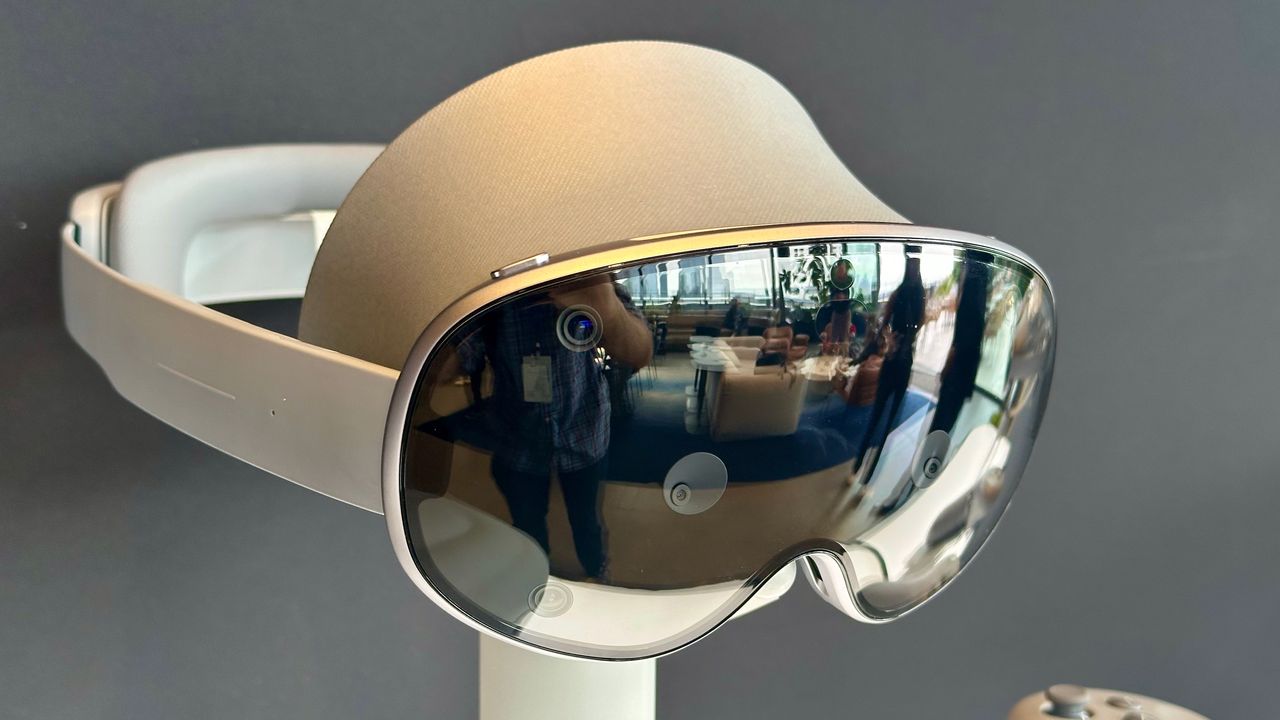

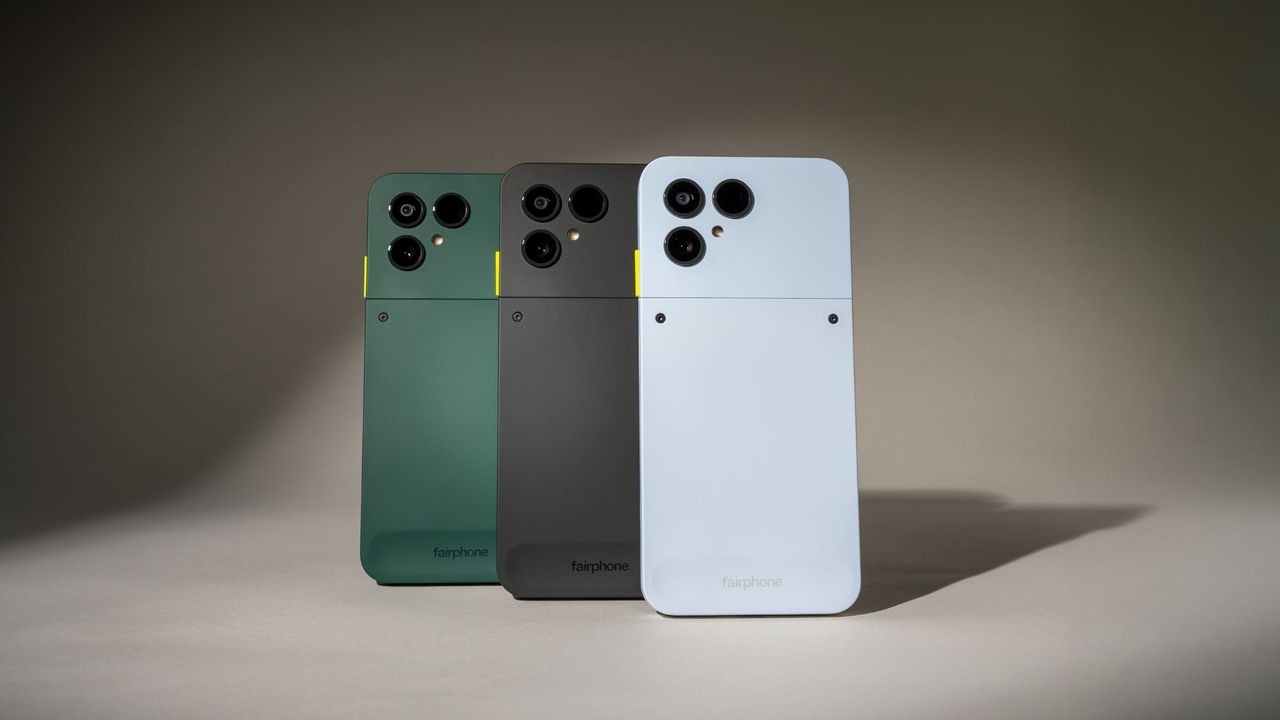
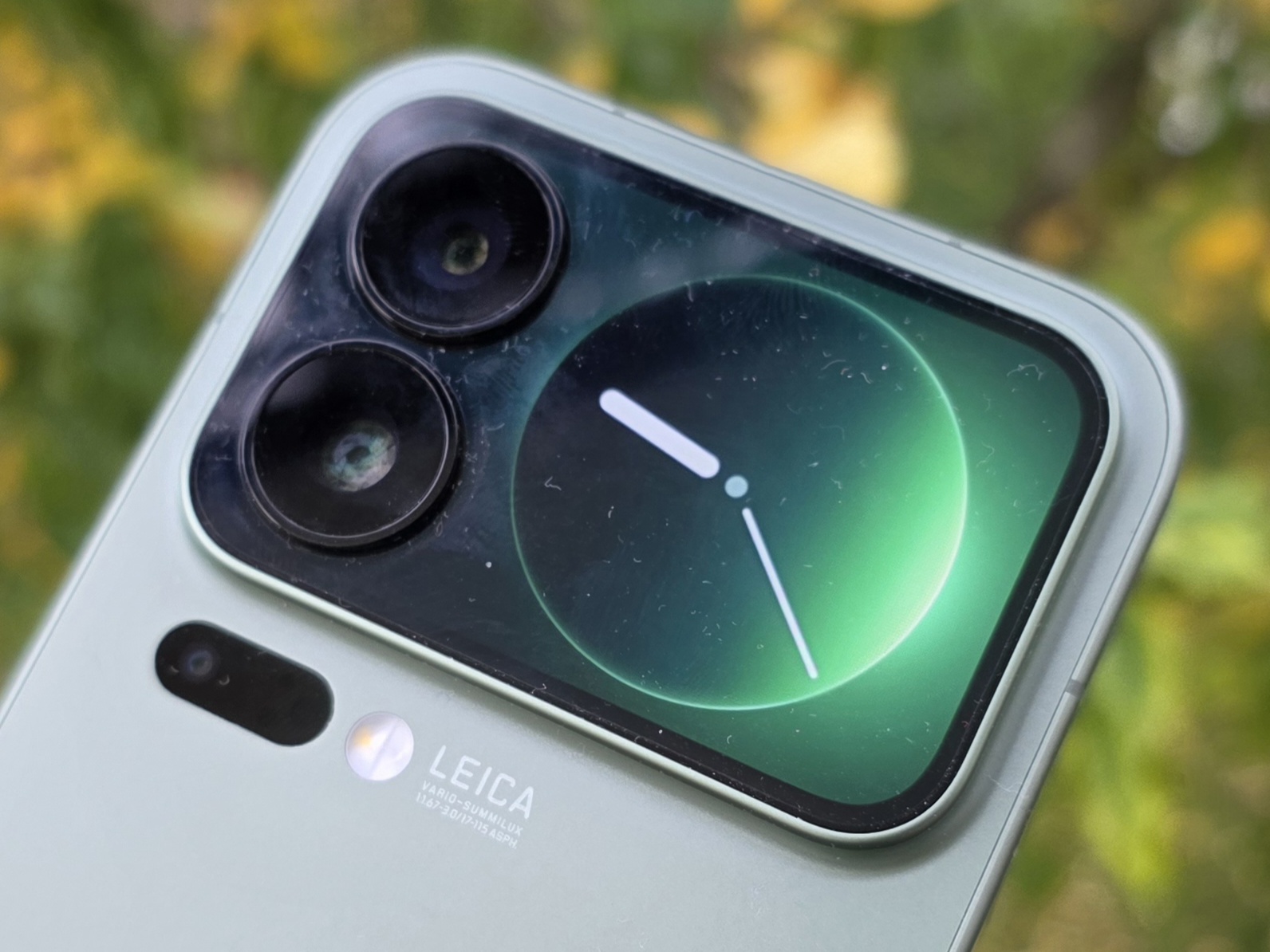
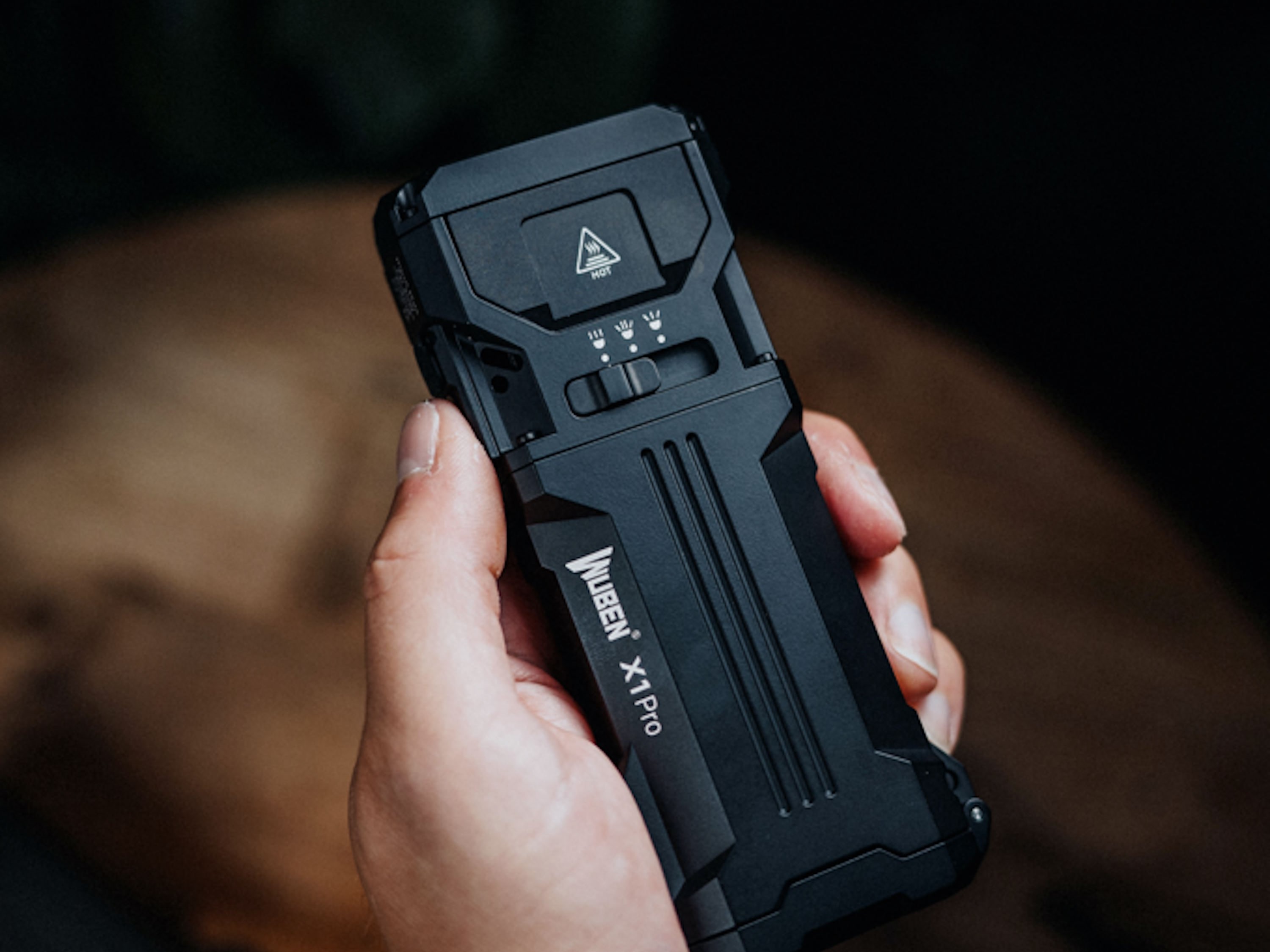
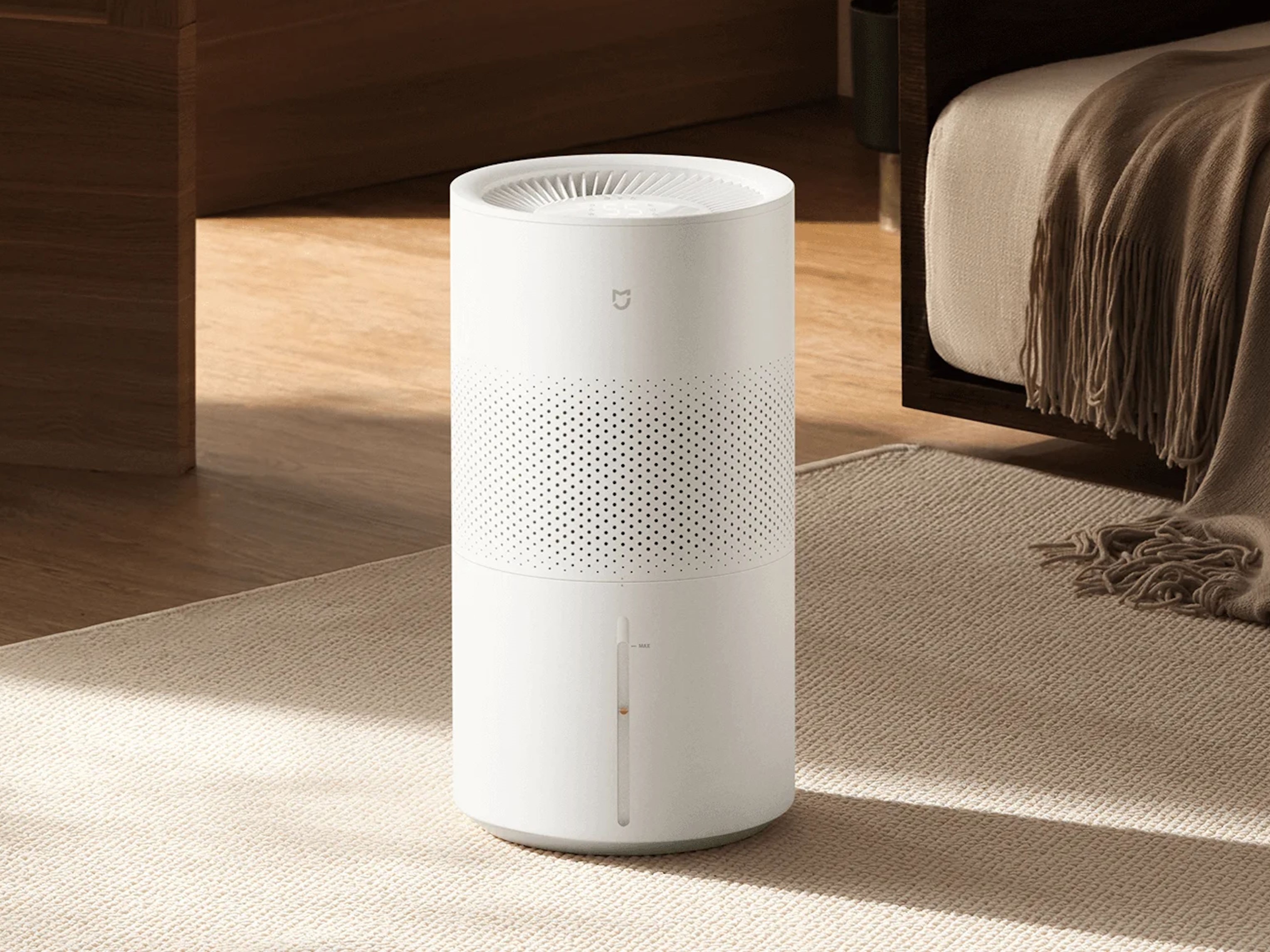
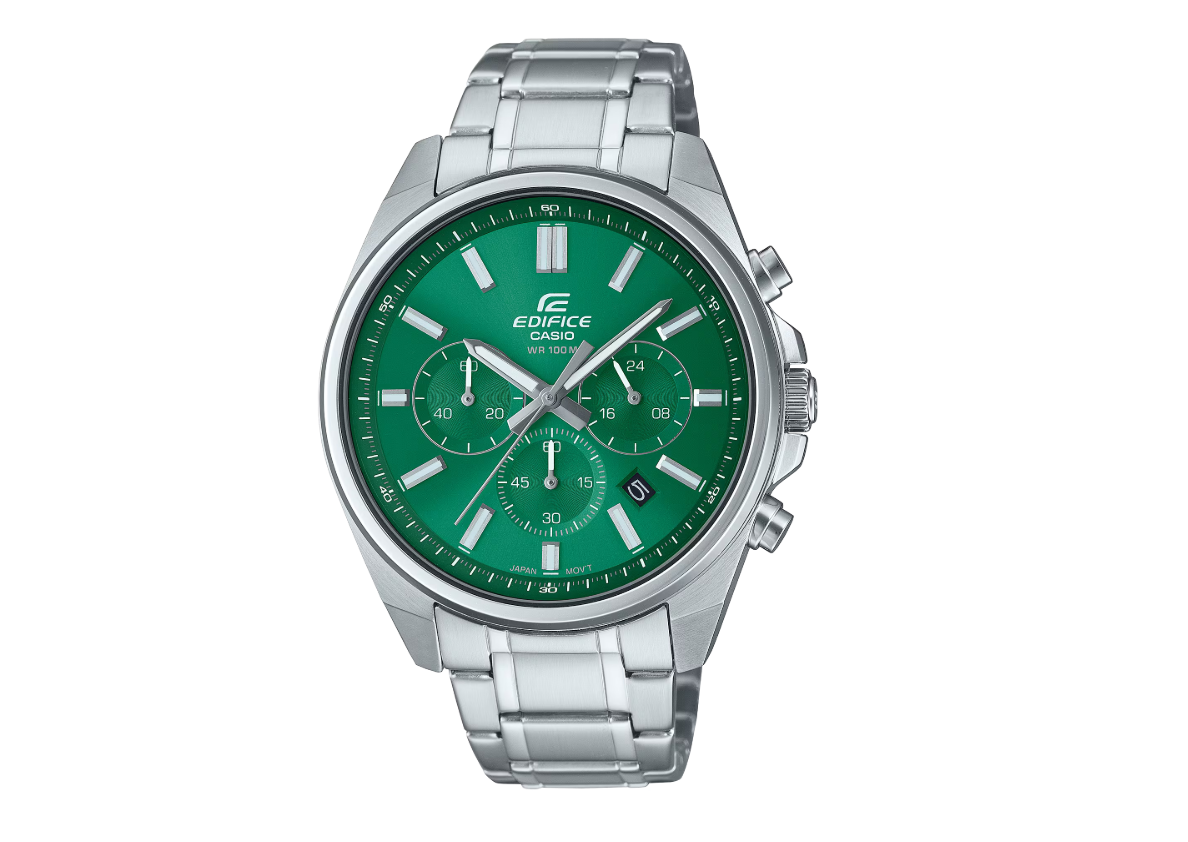

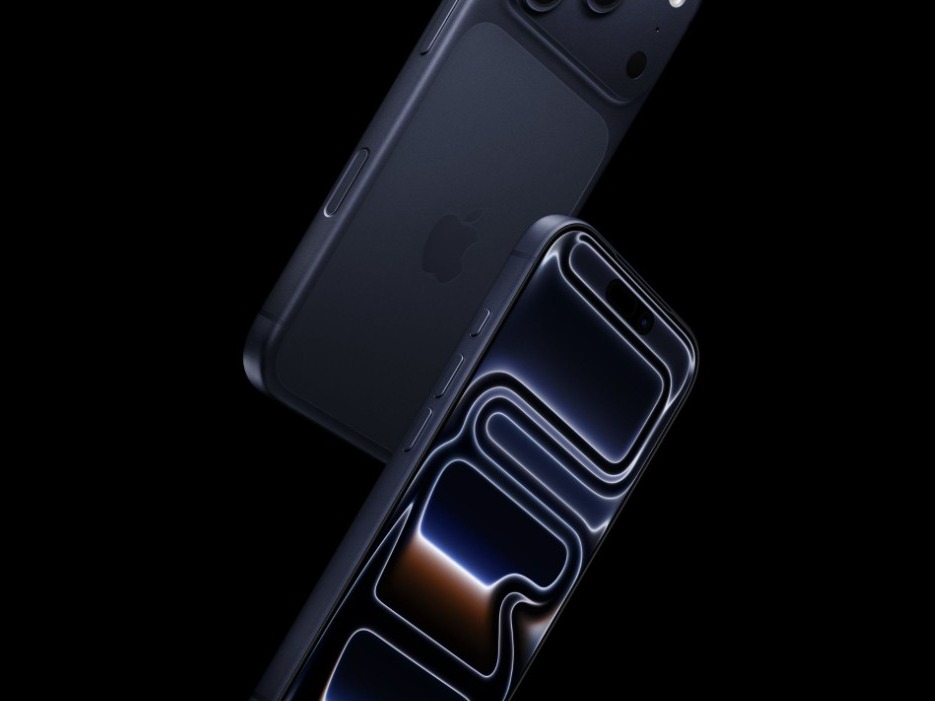



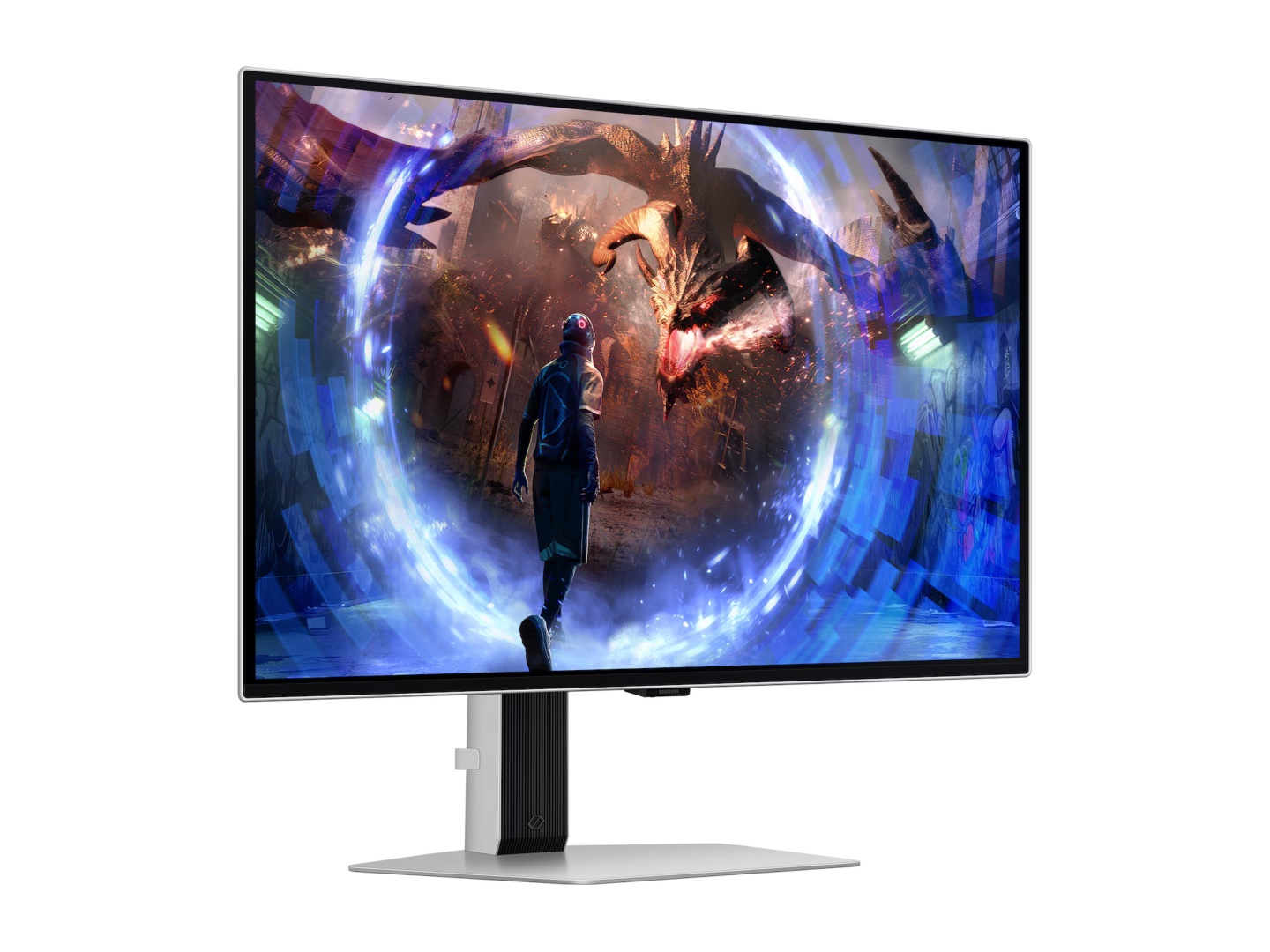
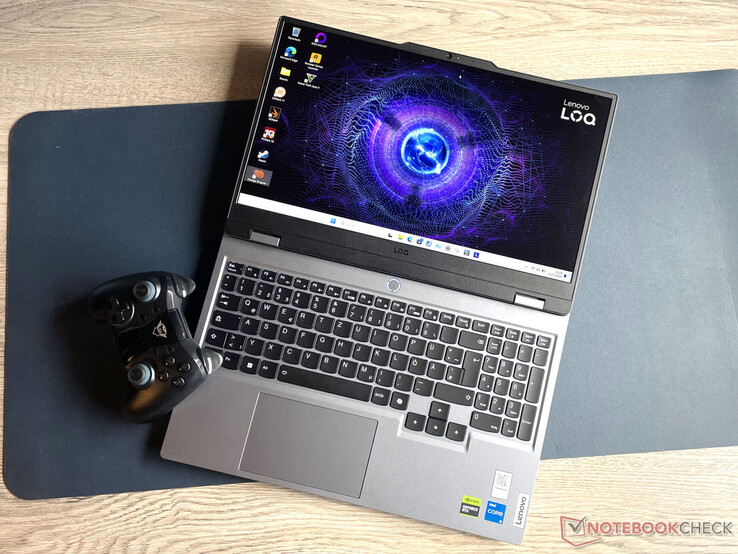


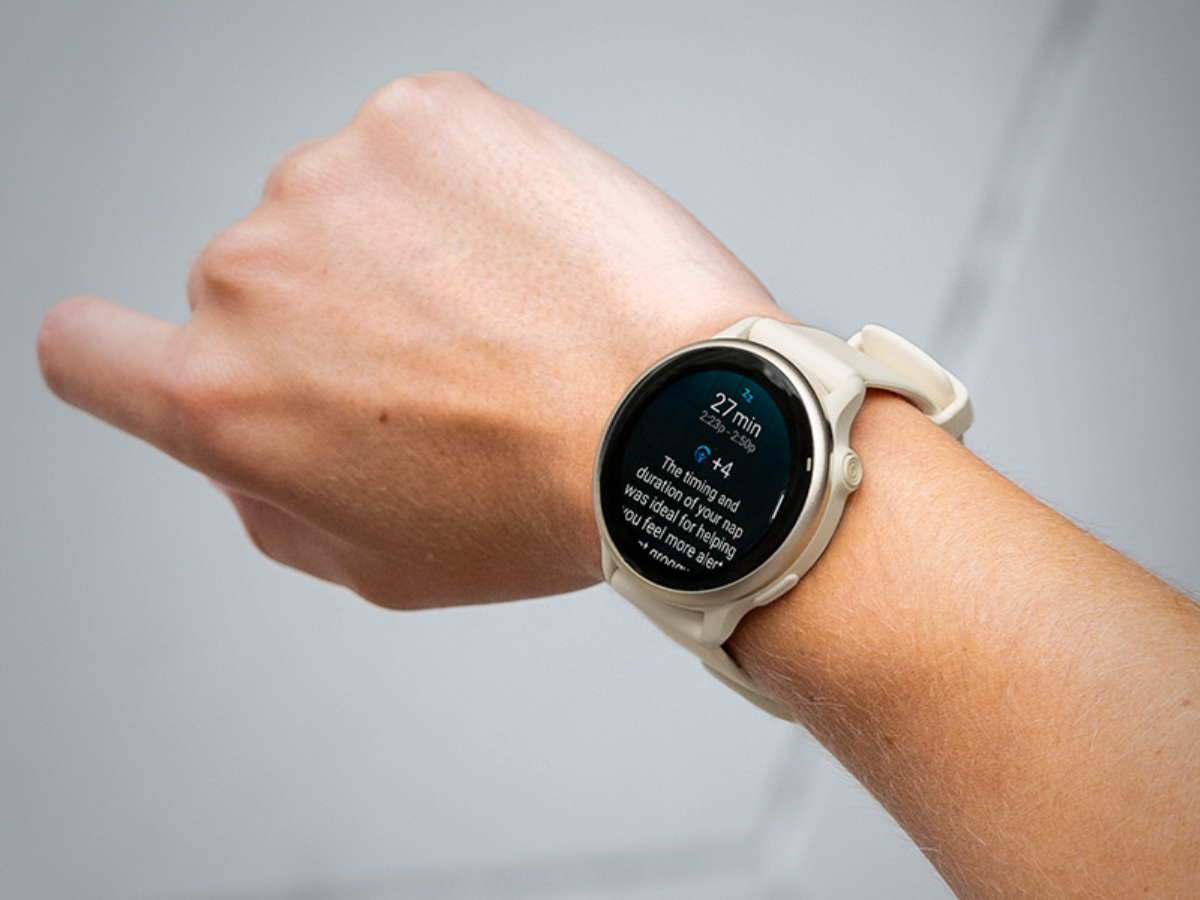

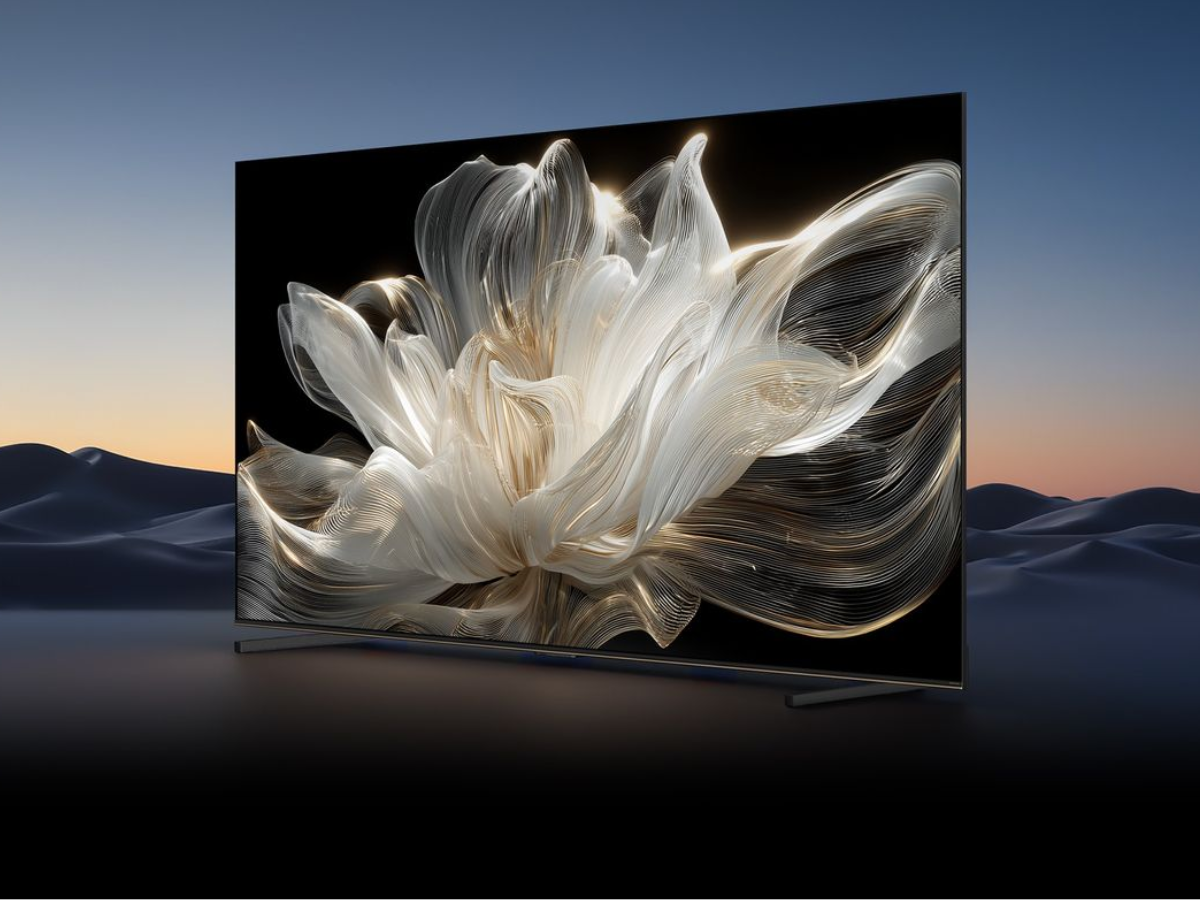


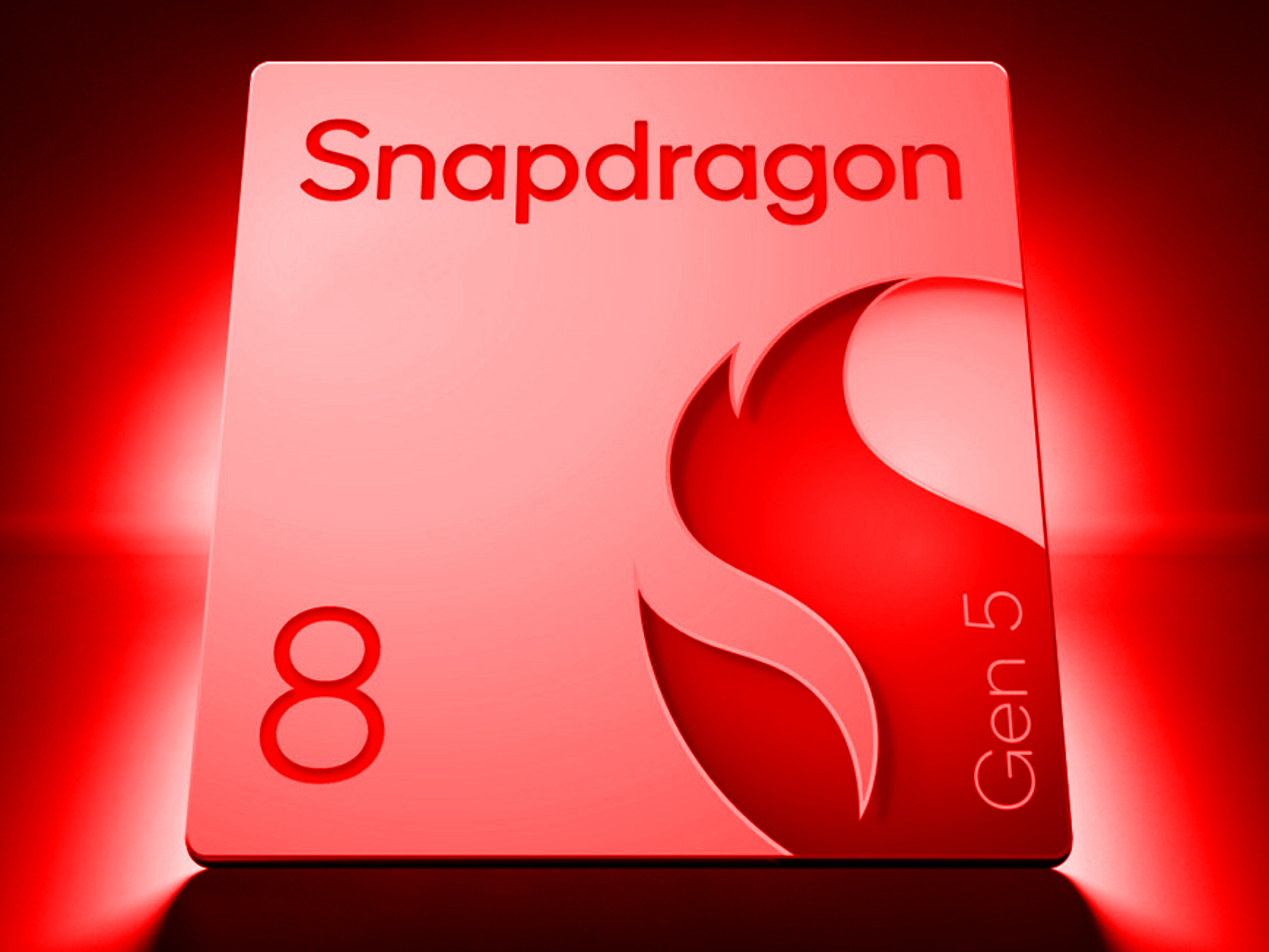


For a while now, Google has been AI-ifying everything it owns, and the latest AI infusion just went straight to the Play Store on Android. This is now showing AI generated review summaries for apps listed in the store, which should save you a lot of time skimming various app reviews to get a feel for how good or bad a specific app is. As with anything Google does, the rollout of this feature is slow, but it has at least finally started - the AI summaries were first spotted more than a year ago in testing. When you get it, you'll see a "Users are saying" section above the reviews...

Yesterday, the Xiaomi 15 global units started receiving the update to HyperOS 3 based on Android 16, following Xiaomi's announcement of the rollout a few days prior. Today it's time for the Poco F7 Ultra to get the same treatment. Specifically, European units are now receiving the update, which identifies as OS3.0.3.0.WOMEUXM. It's based on Android 16 as you'd expect and gives you Xiaomi's latest and greatest skin. The update arrives as a whopping 7.6GB over-the-air download, so make sure you only attempt to grab it while you're connected to a fast enough network. If you have an F7...

These days, just about everyone has a need for a power strip for one reason or another, and over at Amazon, there’s an excellent deal on one from Anker that you don’t want to miss, specifically the Anker Prime 8-in-1 power strip. This power strip, as the name suggests, will charge up to 8 different devices at the same time. Normally, this power strip would cost you $149.99. However, Amazon’s limited-time sale brings that price down to just $89.99. Saving you a grand total of $60.
The one thing to keep in mind is that this is a limited-time deal, which means that this price won’t stick around for too long. On top of that, Amazon only has so much stock of this item at this price, and at the time of writing, 34% of that stock has already been claimed.
In terms of features, this power strip has an output of 240W to distribute across all those devices. There are four USB-C ports, two USB-A ports, and two AC outlets. So, there’s a variety of device types you could charge up using this thing. Or keep powered if they don’t have internal batteries to recharge. The power strip itself is fairly flat and it doesn’t actually take up a whole lot of space, making it easy to fit into various spots around your desk or side tables.
It also has a 5-foot extension cord. That’s a pretty long cord and should be long enough to give you some slack with regard to where you want to plug it in.

The post This Anker power strip charges 8 devices at once and it's now $90 appeared first on Android Headlines.
This time around, we’re comparing the very best smartphone from Google with its predecessor from two years ago. In other words, we’ll be comparing the Google Pixel 10 Pro XL vs Google Pixel 8 Pro. The design language is similar, but still, these two phones do look notably different, while the internals have changed as well. Many of you who are using the Pixel 8 Pro are probably considering upgrading after two years, so… the Pixel 10 Pro XL may be the right choice.
As per usual, we’ll first list the specs of both smartphones, and will then move to compare them across a number of other categories. We’ll be comparing their designs, displays, performance, battery life, cameras, and audio output. There’s plenty to talk about here, so, let’s get started, shall we?
| Google Pixel 10 Pro XL | Google Pixel 8 Pro | |
|---|---|---|
| Dimensions | 162.8 x 76.6 x 8.5mm | 162.6 x 76.5 x 8.8 mm |
| Weight | 232 grams | 213 grams |
| Display | 6.8-inch Super Actual LTPO OLED display | 6.7-inch LTPO OLED |
| Refresh rate | Smooth Display (1-120Hz) | 1-120Hz (adaptive) |
| Resolution | 2992 x 1344 | 2992 x 1344 |
| Chipset | Google Tensor G5 | Google Tensor G3 |
| RAM | 16GB (LPDDR5X) | 12GB (LPDDR5X) |
| Storage | 256GB/512GB/1TB (UFS 4.0) | 128GB/256GB/512GB/1TB (UFS 3.1) |
| Main camera | 50MP (f/1.68 aperture, 1/1.3-inch sensor size, 82-degree FoV) | 50MP (f/1.7 aperture, 1/1.31-inch sensor size, 1.2um pixel size, dual pixel PDAF, OIS) |
| Ultra-wide camera | 48MP (f/1.7 aperture, 1/2.55-inch sensor size, 123-degree FoV) | 48MP (f/1.7 aperture, 1/2-inch sensor size, 126-degree FoV, dual pixel PDAF) |
| Telephoto camera | N/A | N/A |
| Periscope telephoto camera | 48MP (f/2.8 aperture, 1/2.55-inch sensor size, 5x optical zoom, 22-degree FoV) | 48MP (f/2.8 aperture, 1/2.55-inch sensor size, dual pixel PDAF, OIS, 5x optical zoom) |
| Selfie camera | 42MP (f/2.2 aperture, 103-degree FoV) | 10.5MP (f/2.2 aperture, 1/3.1-inch sensor size, 1.22um pixel size, PDAF) |
| Battery size | 5,200mAh | 5,050mAh |
| Charging | 30W wired, 25W Qi2 wireless (charger not included) | 30W wired, 23W wireless (Pixel Stand), 15W wireless (Qi), 5W reverse wired (charger not included) |
| Colors | Moonstone, Jade, Porcelain, Obsidian | Obsidian, Porcelain, Bay, Mint |
Both of these phones are made out of metal and glass, and while their design languages are kind of similar, they’re far from being the same. Both phones include flat displays with a centered display camera hole up top. The one on the Google Pixel 8 Pro is placed a bit higher in comparison. Both devices also have thin and uniform bezels around the display. Those bezels are slightly thinner on the newer model, but not by much. The Pixel 10 Pro XL’s corners are also rounded a bit more.
The Pixel 10 Pro Xl has a flat frame, which curves up towards the edges, just a little bit. The Pixel 8 Pro’s frame is not flat at all, it curves. Both smartphones include their physical keys on the right-hand side. The power/lock button sits above the volume rocker keys on both smartphones.
If we flip them around, you’ll be able to spot even more differences. While both smartphones have camera bars, they’re notably different. The one on the Pixel 10 Pro XL has a pill shape, and it’s not connected to the frame on the side. The Pixel 8 Pro’s camera bar curves towards the frame and connects to it. The cutout inside it is pill-shaped, though. Both of those camera bars do protrude on the back.
The Google Pixel 10 Pro XL is 19 grams heavier in comparison, while the height, width, and thickness of the two phones are almost the same. Both smartphones are IP68 certified for water and dust resistance. Both phones are also quite slippery.
The Google Pixel 10 Pro XL features a 6.8-inch LTPO OLED display. That panel is flat, and it has an adaptive refresh rate (1-120Hz). HDR10+ content is supported here, while the peak brightness is 3,200 nits. The resolution is 2992 x 1344 pixels, while the screen-to-body ratio is around 88%. The display aspect ratio here is 20:9, while the display is protected by the Corning Gorilla Glass Victus 2.

The Pixel 8 Pro, on the flip side, includes a 6.7-inch LTPO OLED display. That panel is also flat, and it supports HDR10+ content. The peak brightness here is 2,400 nits, while the screen-to-body ratio is around 87%. The resolution on offer is 2992 x 1344 pixels, while the display aspect ratio is 20:9. This display is protected by the Gorilla Glass Victus 2 by Corning as well.
The main benefit of the Pixel 10 Pro XL’s display, in comparison with the Pixel 8 Pro’s, is its brightness. That panel is notably brighter. Both displays offer the same resolution, though, and both are quite vivid and have good viewing angles. The touch response is also quite good, actually. There’s not much to complain about here, as both displays are solid, but the brightness difference will be noticeable, especially in direct sunlight.
The Google Tensor G5 processor fuels the Pixel 10 Pro XL. That is Google’s newest and most powerful chip. It is the first processor made by TSMC, and it’s a 3nm processor. That chip is combined with 16GB of LPDDR5X RAM inside this phone, while Google opted to use UFS 4.0 flash storage this time around.
The Google Pixel 8 Pro, on the other hand, is fueled by the Google Tensor G3 chip. That is a 4nm processor, and it is combined with 12GB of LPDDR5X RAM inside this phone. The storage that Google opted for here is UFS 3.1. Just to be clear, neither phone supports storage expansion.
Now, the performance that both smartphones offer is really good. Yes, when you compare them directly, you will notice a difference. The Pixel 10 Pro XL is a bit faster, but the Pixel 8 Pro still does a great job when it comes to day-to-day use, that’s for sure. That’s not the (main) reason to upgrade, at least not in our opinion.
What about gaming? The Pixel 10 Pro XL is the better choice for gaming, that’s for sure. It does get less warm, and it does have more powerful hardware to push demanding games. Neither of these two phones is made for gaming, however, so… keep that in mind.
The Google Pixel 10 Pro XL comes with a 5,200mAh battery, while the Pixel 8 Pro includes a 5,050mAh unit. The Pixel 10 Pro XL does have a slightly larger display in comparison, even though that chip is supposed to be more power-efficient. While the Google Pixel 10 Pro XL does offer better battery life in comparison, the difference is not huge. Both of them offer good battery life, generally speaking, though they cannot compete with the best battery life smartphones out there, not at all.
For the most part, we managed to go through our whole day without charging either phone. If you’re a power user, however, that may be an issue, it all depends on how much you’re pushing the two phones. The Pixel 10 Pro XL can pull out around 1 hour extra of screen-on time, but not more than that, at least in our experience. Your mileage may vary, though, of course. Don’t expect them to go the distance as some of the competitors, which, granted, have battery packs with a lot more capacity.
The Pixel 10 Pro XL supports 45W wired, 25W wireless (magnetic, Qi2), and reverse wired charging. The Pixel 8 Pro supports 30W wired, 23W wireless, and reverse wireless charging. Despite the fact the Pixel 10 Pro XL technically has faster peak charging, both smartphones will take around an hour and 20 minutes to fully charge. Do note that neither comes with a charger, though, so you’ll have to supply that.
The Google Pixel 10 Pro XL features three cameras on the back. A 50-megapixel main camera (1/1.31-inch sensor size) is backed by a 48-megapixel ultrawide camera (1/2.55-inch sensor size, 123-degree FoV). There is also a 48-megapixel periscope telephoto camera (1/2.55-inch sensor size, 5x optical zoom) included on the back.

The Pixel 8 Pro, on the other hand, also has three cameras on the back. It includes a 50-megapixel main camera, with the same 1/1.31-inch camera sensor on the back. A 48-megapixel ultrawide camera is included, but with a smaller 1/2.0-inch camera sensor and 126-degree FoV. The periscope telephoto camera is the same as on the Pixel 10 Pro XL, actually, it’s identical.
Google did not really do much in terms of general photo quality in two years. In fact, the Pixel 8 Pro’s camera performance was more reliable and more relevant when it launched. The Pixel 10 Pro XL had issues with balance out of the box, though Google did fix some things. While both of these phones provide contrasty images that look good, and have a ton of additional AI tools to help you, they cannot really go head-to-head with the best camera smartphones in the market, not at all.
Both smartphones are equipped with stereo speakers. The ones on the Pixel 10 Pro XL are louder than the ones on the Pixel 8 Pro, though. The difference is not big, but some of you will notice it.
There is no audio jack on either one of these two smartphones. You can use their Type-C ports to connect your wired headphones, though. The Pixel 10 Pro XL also supports Bluetooth 6.0 for wireless connectivity, while the Pixel 8 Pro comes with Bluetooth 5.3.
The post Phone Comparisons: Google Pixel 10 Pro XL vs Google Pixel 8 Pro appeared first on Android Headlines.

Samsung is one of the few companies in the world that are largely self-reliant. The company makes a lot of components in-house. We’re talking about memory chips and semiconductors. They even have factories to help others make semiconductors. Now, Samsung is taking things to the next level by building an AI megafactory with the help of NVIDIA.
The facility will deploy more than 50,000 NVIDIA GPUs across Samsung’s manufacturing operations. It will also embed AI into every step of the process. This includes semiconductor design, processing, equipment operation, and quality control. The goal here is to make chip production faster, smarter, and more efficient through real-time analysis and optimization.
The Samsung AI megafactory will use NVIDIA’s Omniverse platform to create digital twins of its facilities. For those unfamiliar with the concept of digital twins, these are essentially virtual replicas of physical fabs. By creating a virtual replica, Samsung can simulate and test changes before implementing them in real life. This helps with predictive maintenance, spotting problems early, and planning operations more effectively.
Samsung is also working with NVIDIA on GPU-accelerated chip design tools alongside partners like Synopsys and Cadence. These tools speed up the design process significantly, with computational lithography performance getting a 20x boost using NVIDIA’s cuLitho library. Shorter development cycles mean better chips reaching the market faster.
The partnership extends beyond semiconductor manufacturing. Samsung will use NVIDIA’s RTX PRO 6000 Blackwell Server GPUs to power intelligent robotics in mobile device production. This will help to enable real-time AI reasoning and automate task execution.
Both companies are also advancing AI-RAN technology, which integrates AI into mobile networks. This is crucial for the next generation of AI-powered robots, drones, and industrial machinery that need real-time processing at the network edge.
While Samsung doesn’t have the same reputation when it comes to semiconductors compared to TSMC, leveraging the use of AI to make its manufacturing process smarter and more efficient could help. The company has typically struggled with its yields. This has resulted in companies like Qualcomm turning to TSMC for its chip production. Perhaps with the use of AI, Samsung might finally be able to turn things around.
The post Samsung & NVIDIA Join Forces to Build AI 'Super-Chip' Megafactory appeared first on Android Headlines.

One of the features of OpenAI’s Sora was the ability to add cameos. This is basically an AI-generated version of yourself that you can insert into the videos to make it more “believable.” But now, OpenAI has announced a new feature for Sora that lets you add other characters into the video.
In a post on X, OpenAI revealed that character cameos in videos are now coming to Sora. This means that in addition to inserting yourself in videos, you can select from other characters as well. These characters can include pets, illustrations, or toys. In fact, to get users started, OpenAI is launching a selection of pre-made characters that are ready to go.
According to OpenAI, “Once created, each character comes with its own permissions, separate from your personal likeness: keep it just for yourself, share it with mutual followers, or open it to everyone on Sora. Give your character a display name and handle, and tag it whenever you want it to appear in a video.”
OpenAI actually announced plans for additional character cameos last week. This was part of the company’s upcoming update to the app, which would also see OpenAI finally bring it over to Android after it enjoyed a bout of iOS exclusivity. However, do take note that Sora is still invite-only. This means that you’ll have to put your name on a waitlist to be notified. We’re not sure how long before OpenAI opens it up to everyone, so we’ll have to wait and see.
However, we wouldn’t be surprised if it takes a while for general access to happen. AI already consumes a lot of resources, even when it comes to text-based prompts and responses. So, we imagine that generating videos on the fly will be even more resource-intensive. This might explain why OpenAI isn’t so eager to open the floodgates just yet.
As cool as Sora is, we can’t help but feel that these types of apps only serve to further the problem of deepfakes. In the past, even when these apps weren’t that convincing, many people were already getting fooled. So, imagine that AI has progressed to the point where it’s so believable, the type of chaos it could cause.
OpenAI is trying to mitigate this by inserting a Sora watermark in videos made using the app. However, we imagine that it probably won’t be too hard to digitally remove them. Or users could just crop the video to hide it. In any case, the next time you watch a video on social media, maybe go in with a healthy dose of skepticism.
Introducing character cameos, now available in the Sora app. pic.twitter.com/k1R4FdCRPV
— OpenAI (@OpenAI) October 29, 2025
The post OpenAI Sora Adds New Character Cameos for AI-Generated Videos appeared first on Android Headlines.

By now, most of you have probably heard that Apple has filed a lawsuit against popular YouTuber and leakster, Jon Prosser. This lawsuit is over the leaks of iOS 26, which Prosser revealed in his own mockups ahead of Apple’s official reveal. Prosser has maintained that he did not plot to access the device. Now, new court documents in the Apple lawsuit reveal the payment details between Prosser and Michael Ramacciotti.
According to recently published court documents in the lawsuit, it revealed payment details between Prosser and Ramacciotti, the other person that is also being sued by Apple.
The court documents reveal that Prosser offered to pay Ramacciotti $650 after the FaceTime call. It also stressed that there was no prior promise or agreement for payment. This contradicts Apple’s initial claim, where the company alleges that Prosser “promised” payment if Ramacciotti could get him access to the Development iPhone.
For those unfamiliar, at that time, Ramacciotti was living with a former Apple employee, Ethan Lipnik. Lipnik had on his person a Development iPhone with an early prototype of iOS 26. At some point in time, Ramacciotti managed to gain access to the phone and unlock it. He then made a FaceTime call to Prosser to show off the early design of iOS 26. Prosser then took that information and had his own mockups made based on what he saw.
Eventually, this led to Apple filing a lawsuit against Prosser over the leaks. However, like we said, Apple’s lawsuit alleged that both parties had somehow plotted to make this happen, with Prosser promising Ramacciotti payment for his efforts. Now, these court documents are saying otherwise.
Apple has filed lawsuits against both Prosser and Ramacciotti, but both are progressing at different speeds. Ramacciotti had requested for two extensions to respond to Apple’s complaint. Prosser, on the other hand, missed the deadline. This resulted in Apple requesting the court to enter default against him.
We’re not sure why Prosser missed the deadline. However, in a recent update, the YouTuber said that he has been in “active communications” with Apple since the beginning. We all know that Apple does not take leaks lightly. We saw what happened when Gizmodo managed to get their hands on a prototype of the iPhone 4.
The post Apple Lawsuit Reveals Payment Details Between Jon Prosser and Ramacciotti appeared first on Android Headlines.

Here in the US, we’re pretty limited on what phones we can buy. We’re mostly stuck with Samsung or Apple. There are a few options from Google, Motorola and OnePlus as well, but for the most part its Samsung and Apple. They both make good phones, but when you get the chance to play with some phones available in other regions – like the new Find X9 Pro from OPPO – it really makes you realize how far the US government has overstepped.
As a phone reviewer for the past 13 years, I’ve had the chance to review hundreds, actually probably thousands of phones. Many of which are not available in the US. While it’s true, we do get OnePlus devices here in the US, which is mostly the same as what OPPO launches, it’s not entirely the same. And that’s especially true for the OPPO Find X9 Pro and OnePlus 15 – OnePlus doesn’t even have Hasselblad anymore.
Whenever I use some of these phones, I really want to switch to them full-time, but then I remember that they won’t work fully on the US networks. If you do have T-Mobile, it’ll work mostly on their network. But you’ll miss out on features like VoLTE, WiFi Calling and more. And if you’re in an area where T-Mobile already has spotty service and uses a band that the phone doesn’t have, you won’t have service.
It’s not all on the government; a big part of why these Chinese companies don’t sell here is the carriers. Which I’ll touch on in a bit.
But, back in 2019, the US banned Huawei. Not only did they ban Huawei from selling in the US, they also could not work with US companies. That meant they couldn’t use Qualcomm chips, they couldn’t use Microsoft Windows on their laptops, nor use Android on their phones. They also struggled to make their own chips because they couldn’t work with ARM (despite not being an American company).
This really set Huawei back, but because of how large they are, and their resources, they were able to weather the storm. And now they’re back like they never left. Their Kirin chips are still pretty far behind the competition, however. But they do have some of the best cameras on the market.
Now, Huawei is very paranoid about doing anything related to the US or even Europe, for the fear of being sanctioned even harder. Because of this, they sold off HONOR, though we can still tell they have a heavy influence in that company. They also don’t invite US media to a lot of events. I was able to go to one last year, but it was really hard to make that happen.
Other Chinese companies, such as OPPO, Vivo, and Xiaomi, have seen this happen and are now not looking at the US at all. Surprisingly, though, they do have a presence in Mexico, but not the US and Canada.

The graph above is from Statcounter, showing market share in Mexico. You’ll notice that Xiaomi and OPPO are both listed here at around 10% market share. Of course, Samsung is a big chunk here, which is the case in most countries.
Unfortunately, in the US the majority of buyers go to their carrier and buy a new phone. Instead of buying unlocked, like is the case in Asia and Europe. Carriers in fact, will give you discounts for buying through them, versus unlocked – the complete opposite versus Europe.
And because of that, if you are not selling your phone on a carrier, you’re not going to sell very many. OnePlus and ZTE’s Nubia are prime examples of this. Now OnePlus is available in more places, and available in Best Buy stores, but you can’t get it from T-Mobile, AT&T or Verizon. Which greatly affects how many units they will sell.
A big reason why OnePlus doesn’t sell on carriers is the cost, which then gets passed down to the customer. Many years ago, their phone was on T-Mobile for several hundred dollars more than directly from OnePlus. That was a very bad look, since the phone was identical.
Some OEMs are working to make buying unlocked more feasable and attractive, like Samsung. Who offers more colors of their phones through their website, cutting out retailers and carriers. But to get a major chunk of Americans to buy unlocked, that won’t happen for quite some time.
Choice is always good for consumers. It also drives innovation and competition. Looking at the US smartphone landscape, it’s pretty boring. Actually, it’s incredibly boring. Most phones look the exact same every year, with nothing more than a processor upgrade.
Meanwhile, looking at Europe with things like the vivo X300 Pro, OPPO Find X9 Pro and the Xiaomi 17 Pro/Pro Max, those are some pretty big upgrades in almost every area.
Just imagine walking into a Verizon store and seeing the vivo X300 Pro, OPPO Find X9 Pro, Samsung Galaxy S25 Ultra, and iPhone 17 Pro Max on display. How many do you think would still choose Samsung or Apple? Likely quite a few, because of the brand recognition, but people would be interested in the vivo and OPPO, especially seeing the specs.
The government needs to stay out of what companies can sell in the US, and carriers need to make it easier to use unlocked phones here. Then, we might be able to get some of these more interesting devices.
The post Why the Best Android Phones Never Make It to America appeared first on Android Headlines.

Meta’s Threads app is on a growth path as it hit the 150 million daily active users milestone. Shortly after adding communities and disappearing “ghost posts,” the platform is now introducing new tools that’ll give you, as a user, more control over the conversations. New Threads reply approval and Activity feed filters put more power in your hands.
The new Reply Approvals feature will let you decide which replies from other users appear on your posts before anyone else can see them. This lets users monitor conversations around their posts and keep discussions on-topic. You will be presented with a list of pending replies, which you can make public using approve buttons. There is also an ignore button for each one. If this feels like a stretch, you can approve or ignore all comments in one tap.
Threads already offers tools that’ll let you limit replies to people you follow, your followers, or people you mention. This new feature lets you “set the tone of the conversations.”

In addition to approvals, Meta is also rolling out new Activity feed filters. This will allow you to more easily view the replies from people you follow, or replies that include mentions. These join options, like Verified, Quotes, and Reposts, as other ways to filter replies. These new Threads filters and reply approval tools are now rolling out to everyone.
As Meta adds new features and the user base continues to grow, the company is moving to ramp up monetization by rolling out ads on Threads globally. It’s also adding new ad formats, including video ads. It’s also testing controls that’ll allow users to tune their algorithm by adding/removing topics of their interests. The company notes that it’s always listening to user feedback.

The post New Threads Tools Let You Approve and Filter Replies appeared first on Android Headlines.
Modern-day smartphones carry a huge amount of data, including personal details, bank records, etc. In the past, they did not have strong security, but thankfully, things have changed over time. But this doesn’t mean that your smartphone and its data are completely safe. Some companies build tools that help law enforcement break into phones. One such company is Cellebrite. A recent leak shows that Google Pixel phones can be hacked using the Cellebrite tool.
The person, who uses the online name rogueFed, quietly entered a Cellebrite online session and took screenshots. It later posted these screenshots on a community forum of GrapheneOS users. For reference, GrapheneOS is an AOSP skin that focuses on privacy and security. It doesn’t even have Google Apps pre-installed. It is very popular among privacy-seeking tech enthusiasts.
The leaked screenshots mention Pixel 6, Pixel 7, Pixel 8, and Pixel 9 devices. Yes, the recently launched Pixel 10 models weren’t shown. However, this doesn’t mean that they are completely safe. The chart showed three phone conditions. One is before the first unlock, which means the phone has been restarted and remains fully locked. Another is after the first unlock, when some data becomes easier to reach. The last one is when the phone is already unlocked.
According to the leak, the Cellebrite tool can get data from a Google Pixel phone running on the stock Pixel software in all three conditions. However, the tool still cannot break the phone passcode or copy the digital SIM card. That means some safety remains. But the tools can take a lot of information if the device software is not extra protected.
However, thing seems to be different with devices running GrapheneOS. The chart shows that newer Pixel models running updated GrapheneOS versions are much harder to access. Phones updated after late 2022 appear safe in both locked and unlocked states. Even if a phone is open, the tool cannot grab the stored data the same way. Only things already visible to the user can be checked.
The post Cellebrite Leak Raises Alarms — Are Pixel Phones Really Hackable? appeared first on Android Headlines.

YouTube TV has been routinely angering its customers, though it’s not all its fault. Between raising prices to almost double what it initially launched at – now $82.99 per month – and losing channels, many customers are not happy. But luckily, you can cancel your YouTube TV subscription. That’s the beauty of cord-cutting. The ability to ditch a service for a competitor in just minutes. Meanwhile, with cable, that is not possible. Most areas only have one or two cable operators available. So that’s another reason that it’s a good idea to switch to a streaming service. Makes it easier to vote with your wallet.
YouTube TV has recently lost the Bally Sports regional sports networks (though that’s more Sinclair’s fault than YouTube TV’s, since they are removing the networks from all the streaming services). Then they almost lost the NBC networks, which is roughly a fifth of YouTube TV’s channel offerings. However, NBC decided to step up and not force YouTube TV to include Peacock with its membership. And surprisingly, the price did not go up, which is a good thing.
If you just want to stop using YouTube TV for a few weeks, maybe cut some costs, we’d recommend pausing YouTube TV instead. That will keep all of your recordings and continue recording, but without charging you. You can pause YouTube TV for up to six months. We’ll also show you how to pause your YouTube TV membership in this tutorial.
To cancel YouTube TV, you’ll need to either open the app, or go to tv.youtube.com. The process is virtually the same, aside from tapping versus clicking.


Click on that. Now you can see options for pausing or cancelling your membership.
After you click cancel, it’ll ask to make sure you want to cancel, and just go through that process until it has successfully cancelled.
And that’s it. It’s pretty simple to cancel, and that’s one thing that YouTube TV still has over cable. The ability to easily cancel TV service, without needing to call them and explain to them you don’t want it any longer.
Pausing YouTube TV has a pretty similar process to cancelling it. Start out by opening the YouTube TV app.
Now, you’ll see an option to pause your account. It defaults to eight weeks, but you can adjust the slider all the way up to 24 weeks (or about six months). It will also show you below when your account will resume. YouTube TV also mentions that your recordings will be kept, which is a big deal.

Now, just tap on Pause.
You’ll now get a confirmation that your account is put on pause (you’ll also get an email with details). And you’re all set.
That’s just how easy it is to pause your YouTube TV account. You can also choose to unpause it at any time. So if you paused it by mistake, or paused it for too long, you can unpause it and be back in business. Keep in mind that if you share this membership with others, their accounts will also be paused.
Cancelling means that you’re not planning to return anytime soon. While pausing means that you plan to return in a month or two, or even longer.
If you do want to get rid of YouTube TV for a couple of months, pausing is the right way to go. This is because it will keep all of your shows in your library. While cancelling will get rid of it all.
However, with this price hike, YouTube TV is likely going to be seeing a whole lot of people cancelling their membership, unfortunately. Even though YouTube TV is a really good service – I’d still say, one of the best out there. At $65 per month, it’s a pretty tough ask. Especially since YouTube TV only has one plan, so you’re stuck paying for all of those channels at $65/month. Instead of having a smaller plan option that costs, say $50 per month for fewer channels.
Pausing is a good idea if you are looking to cut some costs for a few months, or if your favorite shows are off season now, so you don’t need YouTube TV. And that will save you $65 per month, which is no small cost, to be quite honest. Most other streaming Live TV services don’t really offer this ability. So this is a big deal.
YouTube TV has continued to improve its service, and is looking to add some more flexible packages. So we may not see any more price increases on the base plan. But we may lose some channels from that base plan. With them moving into the add-ons. This is simply because the costs to carry these channels are getting pretty pricey.
The post How To Cancel YouTube TV appeared first on Android Headlines.

The OnePlus 15 just arrived, and yet plenty of information regarding the OnePlus 15T just surfaced. The OnePlus 15T is expected to succeed the OnePlus 13T, which was announced back in April. So the OnePlus 15T is not expected to drop anytime soon.
With that being said, Digital Chat Station, a well-known tipster, just shared some of the OnePlus 15T specs. Do note that this information is based on an engineering prototype.
According to what he said, the phone will be fueled by the Snapdragon 8 Elite Gen 5 processor. In other words, it’ll utilize the same chip as the OnePlus 15. This will be the company’s compact flagship, in a way.
The OnePlus 15T is tipped to utilize a 6.31-inch 1.5K display, which will be an OLED panel. That display will be flat, and its bezels will be both thin and uniform. Below the display, OnePlus will include an ultrasonic fingerprint scanner.
The phone will be IP68 certified, while the battery details have still not been confirmed. The tipster did note that the engineering sample does have a battery starting with 7, so it’s at least a 7,000mAh unit. That’s plenty for basically any smartphone, let alone a compact one.
Based on these specs, the OnePlus 15T will be a true compact powerhouse. It could actually become the world’s most powerful compact smartphone, based on what we’ve seen here. We still don’t have the complete image, though, of course.
We’re hoping that OnePlus will opt to launch the OnePlus 15T in more markets this time around. The OnePlus 13T was announced in China, and then re-released in India as the OnePlus 13s. It did not make its way to Europe or the US. Pushing that phone to those two markets would create plenty of competition for Apple, Samsung, and Google.
The OnePlus 15T is expected to arrive in the first half of next year. It could arrive towards the end of April, just like its predecessor, but it remains to be seen.
The post OnePlus 15T Could Bring Snapdragon 8 Elite Gen 5 Power to Smaller Phones appeared first on Android Headlines.

Remember when Apple announced Apple Intelligence last year? Remember what a disaster that was? During WWDC 2024, Apple showcased a ton of cool features. The problem was that these features were mostly conceptual, as we later found out. Important features and features that users actually wanted, like an upgraded Siri, was nowhere to be found. But that will change in 2026, which is when the upgraded Siri will finally arrive.
Speaking to MSNBC, Apple CEO confirmed that a new and upgraded Siri will arrive in 2026. Cook said that the company is making “good progress” on the new Siri, and that it is on track to arrive next year. However, we’re not sure if we have to wait for iOS 27, or if the upgraded Siri will arrive as part of an iOS 26 update.
Also, when asked if Apple has plans to integrate other AI models with Siri, Cook said that there are plans to do so over time. As it stands, OpenAI’s ChatGPT is the only non-Apple AI model to feature integration in iOS. There have long been rumors that Apple and Google could work together to bring Gemini integration to iOS. However, despite those rumors, nothing has happened to date.
That being said, we’re still a bit skeptical about this upgraded Siri. Sure, the demo videos were cool, but will it actually work that way in real life? For those who remember, Siri also had a somewhat impressive demo, but in reality, it fell way short of expectations. It eventually led to a lawsuit over misleading claims.
Then there’s the issue with Apple Intelligence. We would have had higher hopes if Apple Intelligence wasn’t such a joke. It can barely get the basics right, let alone more complex tasks. If that’s the state of Apple’s AI efforts, we’re not holding our breaths.
We’ve heard rumors that Apple could be eyeing a potential acquisition of Perplexity to bolster its AI efforts. So far, nothing has happened yet. However, it’s not a bad idea. Apple has the resources, but for some reason it’s not making the same headway in AI compared to smaller startups. Maybe just buying the technology outright is the smarter play.
The post Apple’s Upgraded Siri Will Finally Arrive in 2026 — After Years of Waiting appeared first on Android Headlines.
Samsung is preparing to launch its next big software update, One UI 8.5, for Galaxy phones and tablets. This update is expected to bring several new features and improvements. Now, new leaked code reveals that the One UI 8.5 update will add the “Adaptive Data Saver” feature.
The leaked details show that Adaptive Data Saver will make social media videos download only when you’re ready to watch them. Normally, videos on apps like Instagram or TikTok start loading or playing automatically, even if you don’t watch them.
This background activity uses up a lot of data. With Adaptive Data Saver turned on, your phone will only download a video once you actually tap on it to watch, helping you save data without losing video quality or speed.

Image – SammyFans
It may also limit how apps prefetch content. Many apps download videos or posts in advance, trying to predict what you’ll watch next. While this makes scrolling smoother, it uses extra data in the background.
By reducing this preloading, Adaptive Data Saver can help users control how much data is being used without them even noticing. While we’ll have to wait for Samsung to officially launch One UI 8.5 to know exactly how Adaptive Data Saver works, it already looks like a smart feature for anyone who wants to make their mobile data last longer.
Along with this, One UI 8.5 is expected to bring many other improvements, such as better camera options, easier sharing tools, and special features for the Galaxy S26 series. Stay tuned for more information.
The post One UI 8.5 could bring Adaptive Data Saver to reduce background downloads appeared first on Sammy Fans.
An unprecedented Amazon delivery scam has ruined the Diwali celebration of an Indian techie who received a tile instead of a $2,000 Samsung phone.
NDTV’s Deepak Bopanna brought this bizarre Amazon scam to the light when Amazon delivered a tile to a Bengaluru-based engineer instead of his order of the Samsung Galaxy Z Fold 7, costing a huge $2,000.
The netizen opened a complete Amazon packaging on camera, followed by a device unboxing. Fortunately, the precaution of unboxing the device on camera has saved him from a pretty big financial loss as well as mental trauma.
The parcel had no damage or defect from any angle. The phone’s retail box also looks accurate without even a scratch and in a sealed state. Tearing the retail box seal exposed a tile in place of the Galaxy Z Fold 7 device.

Via – Deepak Bopanna / X
Notably, the man has already made a payment for the device through his credit card. The report suggests that the victim has also registered a formal complaint at a local police station, and cops have launched an investigation.
Amazon was also quick to respond, offering the consumer a full refund of the payment he had made. The e-commerce platform has also started an investigation to find where the scam happened in the entire chain until final delivery.
Think if it had not happened on camera? The man may have been facing a lot of troubles, and the same platform who’ve immediately refunded the money may have taken months to address the claim and financial loss.
Whenever you get a precious product delivered, make sure to unbox it with your phone’s camera, from the e-commerce’s packaging to the end. If everything is fine, you can freely delete the recording, but skipping this step could cause huge.
Bengaluru Techie orders a smart phone from @amazonIN gets a stone tile instead. FIR registered. The Samsung Galaxy Fold 7 cost him 186,999. He recorded the unboxing on video, amazon has issued a refund, but cops continue probe. pic.twitter.com/KDMONtqfHJ
— Deepak Bopanna (@dpkBopanna) October 30, 2025
The post Bizarre Amazon scam: Tile delivered instead of $2,000 Samsung phone appeared first on Sammy Fans.
A photographer's lens "shattered into about 1,000 pieces" during an NHL game between the Nashville Predators and Tampa Bay Lightning this week.
The shortlist for Close-up Photographer of the Year 7 (2025) has been revealed after the 22 judges assessed 12,557 photographs across 11 categories during 20 hours of Zoom calls.
Sh! The Octopus may not be remembered as a great film of the 1930s like King Kong or The Awful Truth, in fact it was named as one of the greatest bad movies of all time. But there is one scene, involving some very clever camera work, that continues to get talked about today.
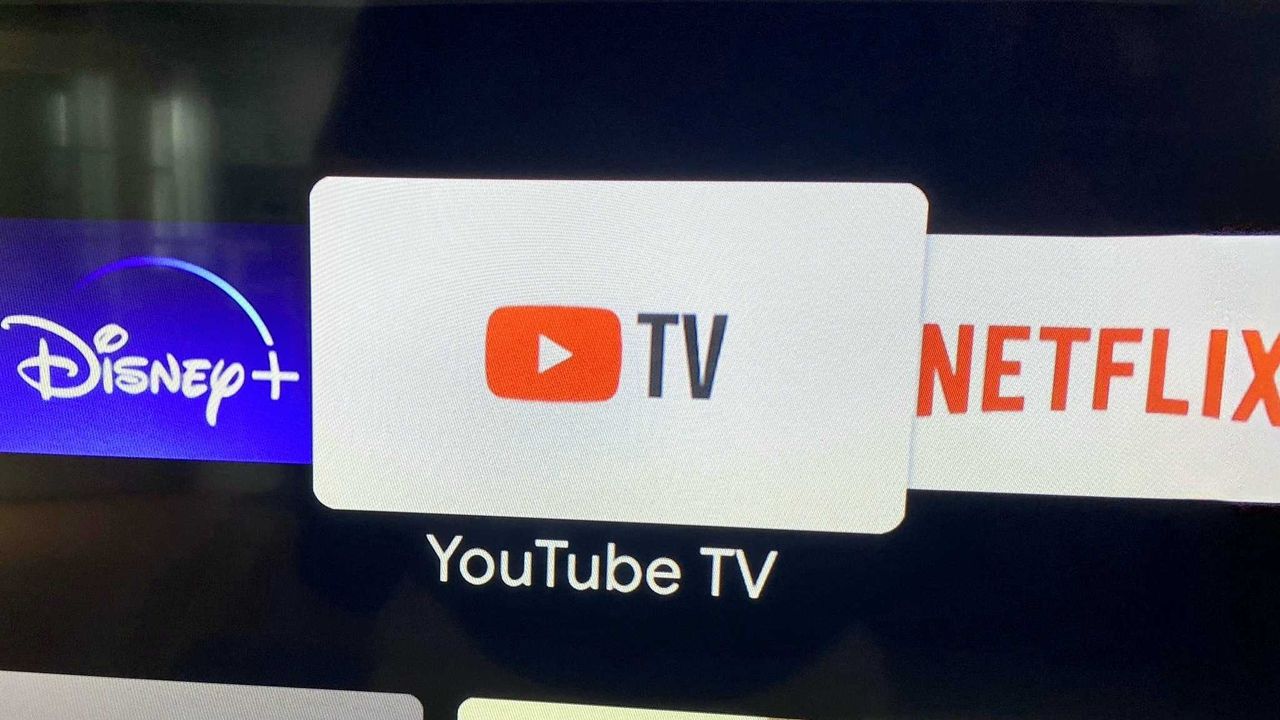
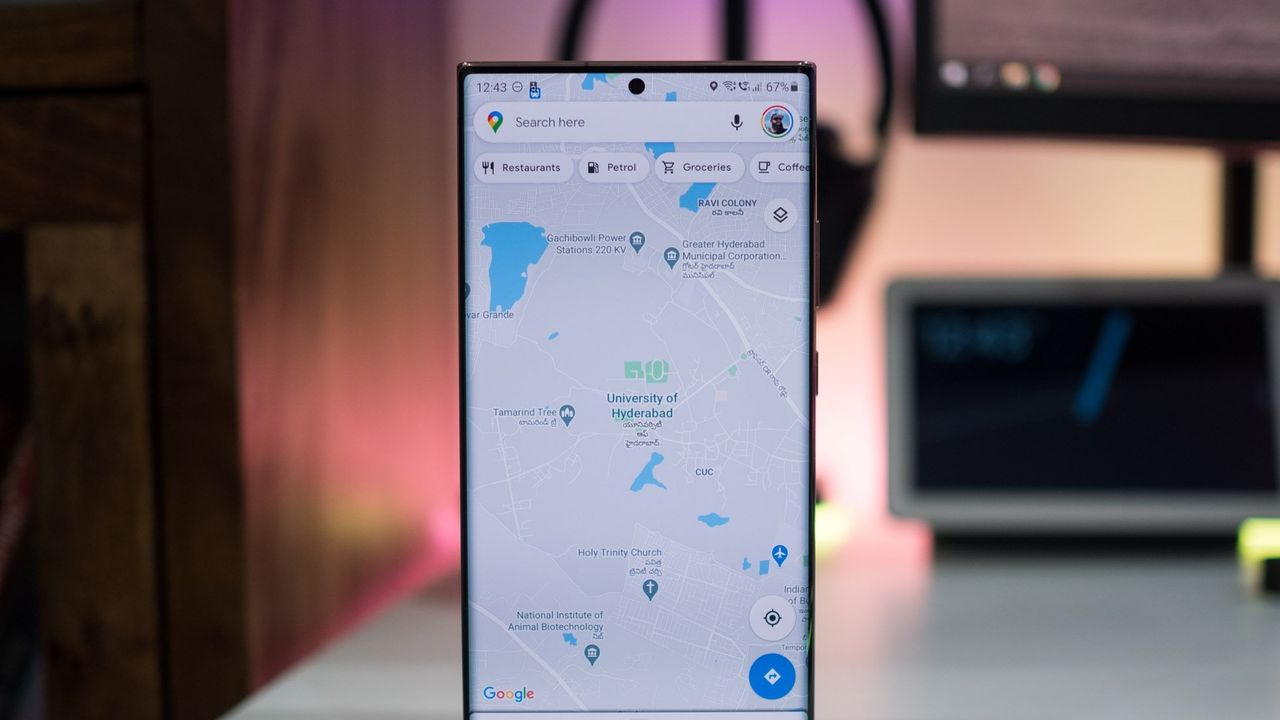
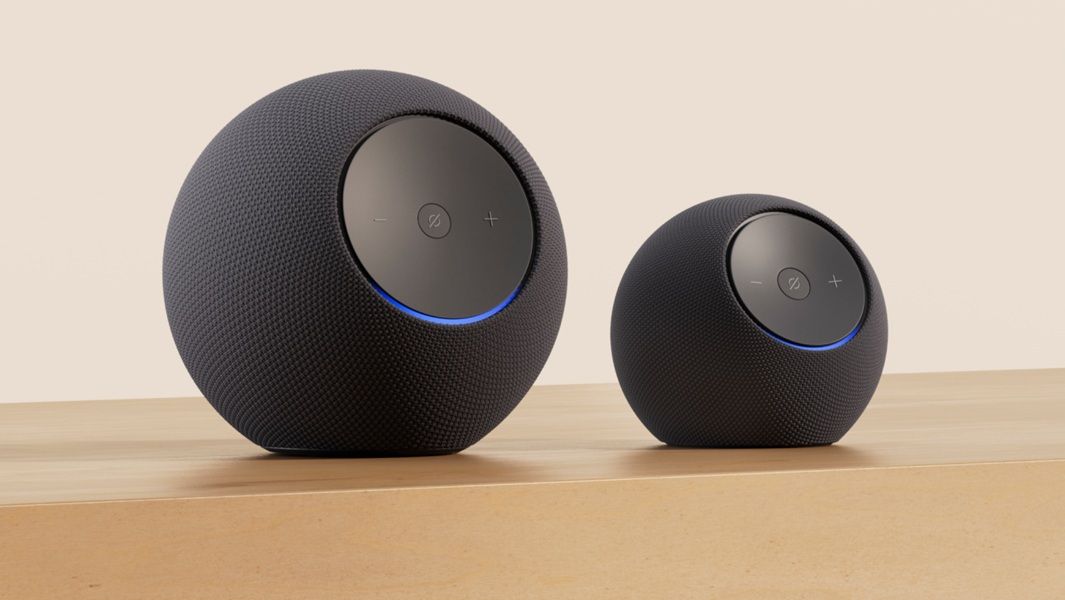


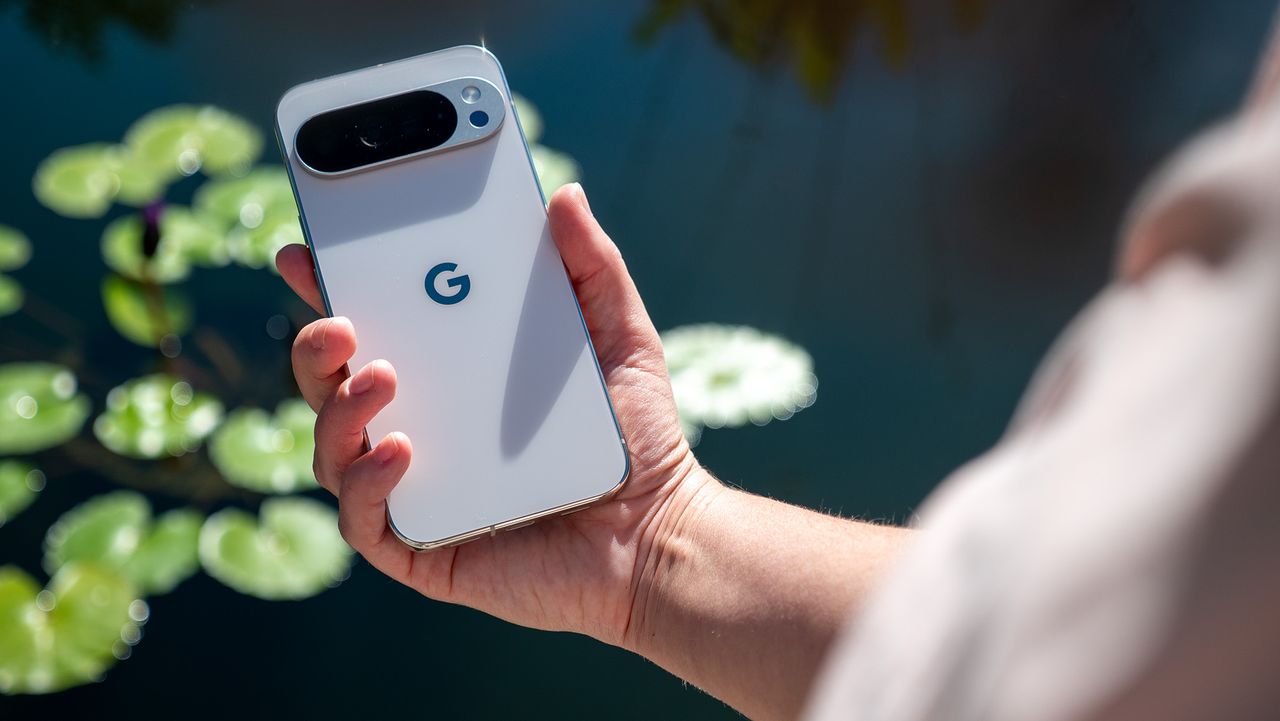
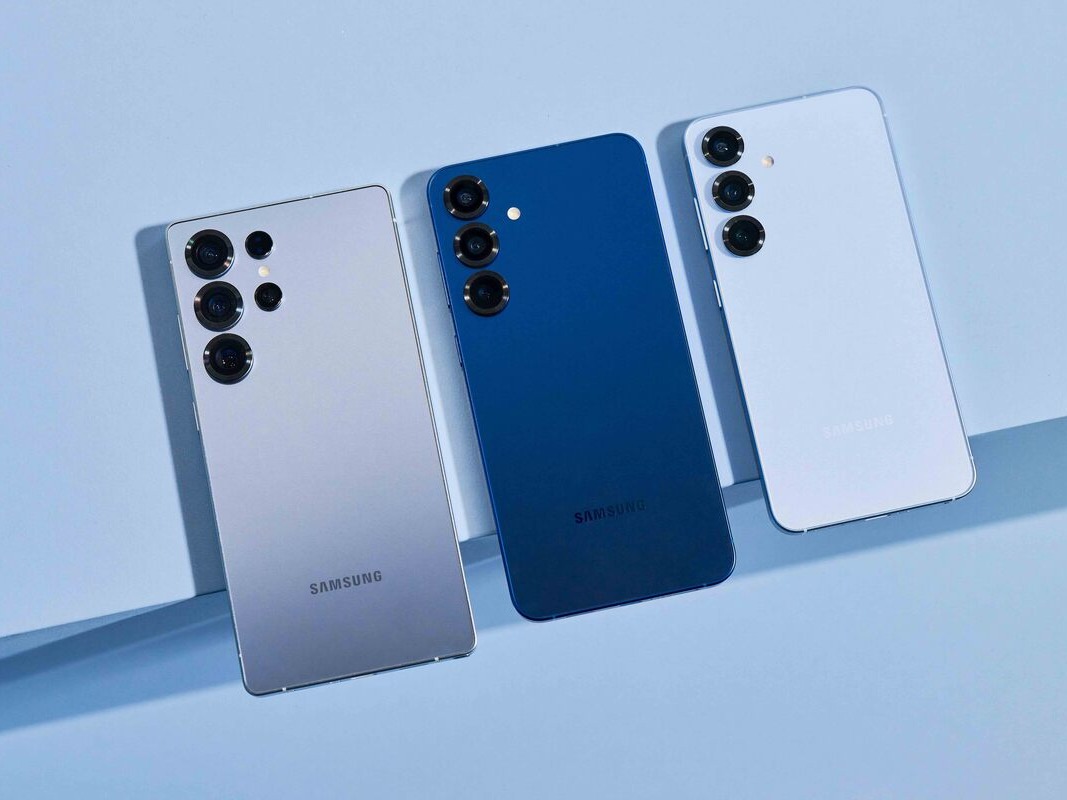
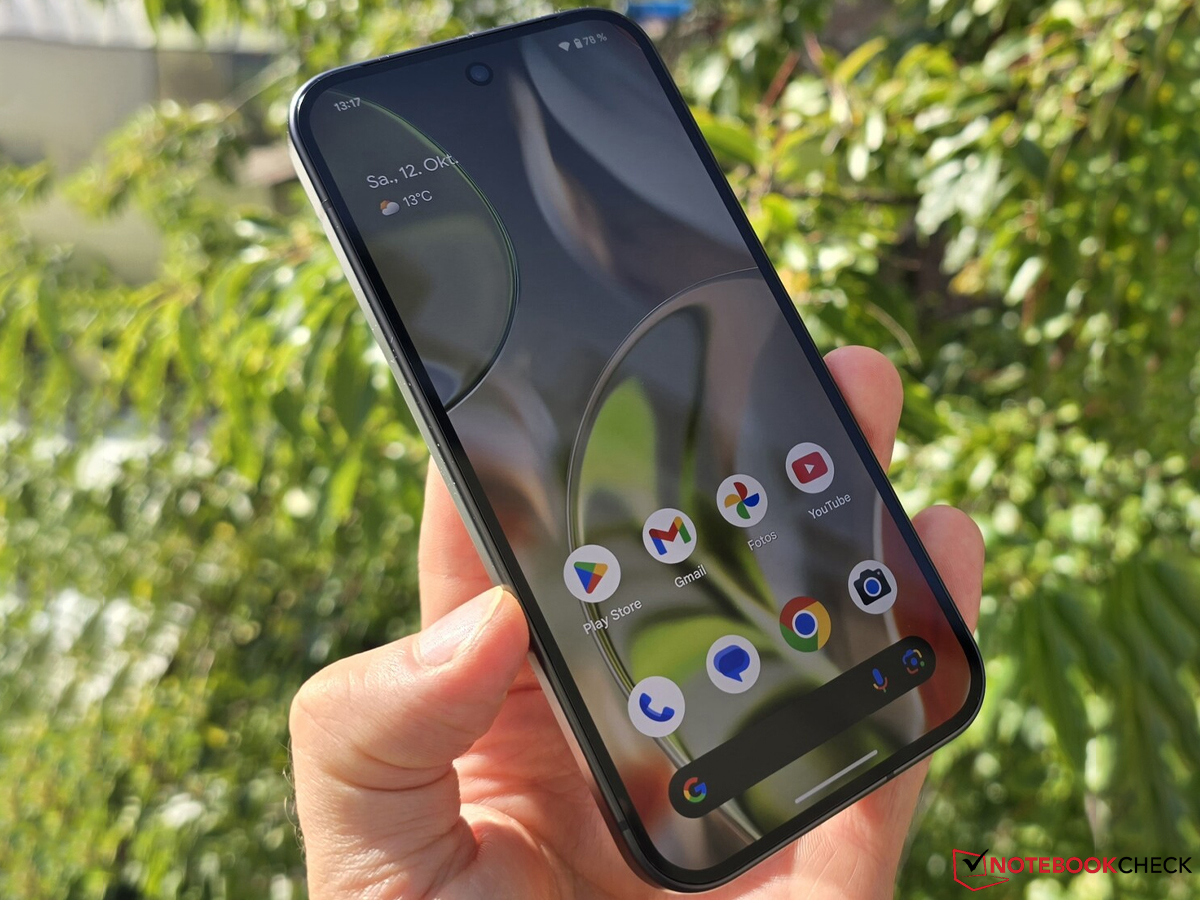
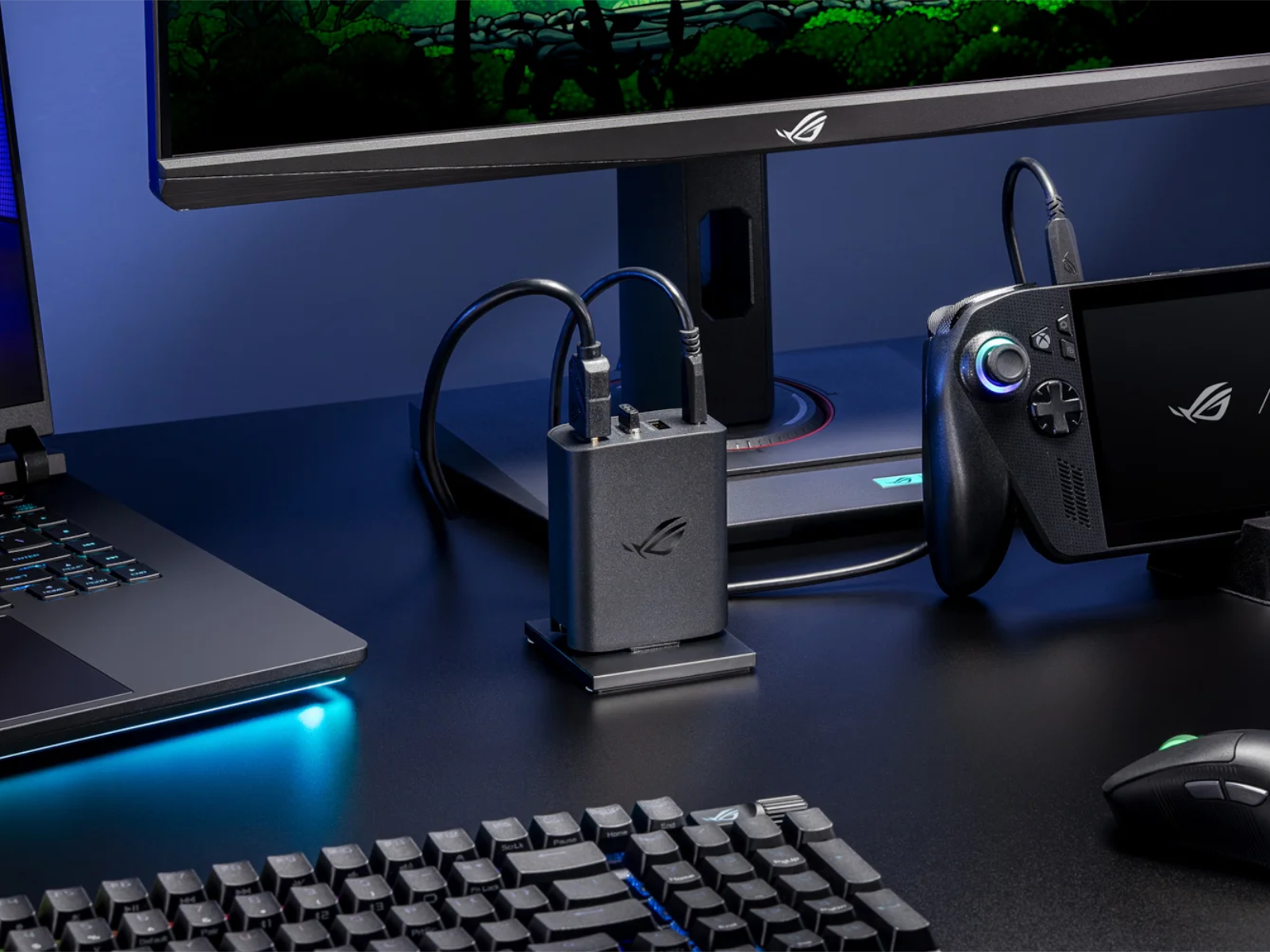


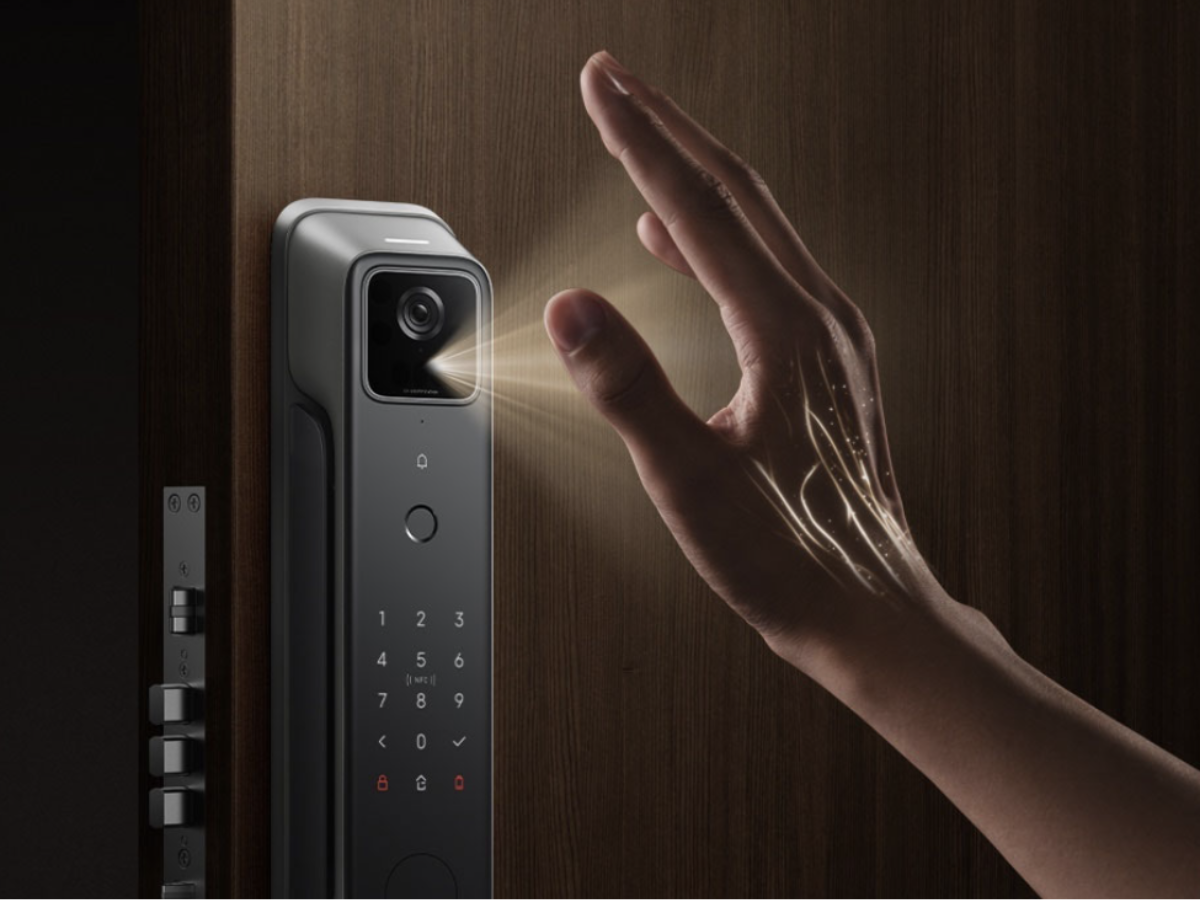
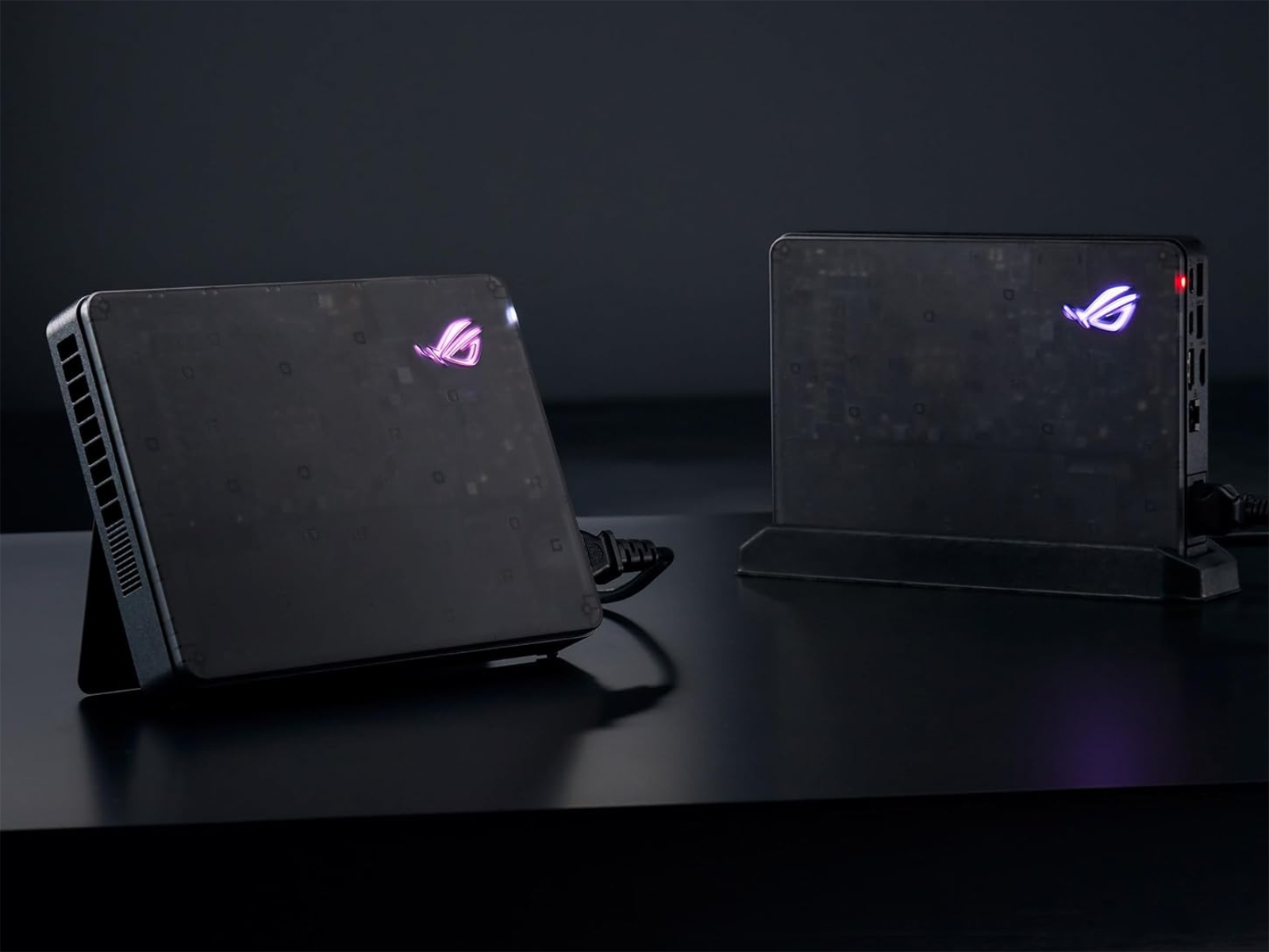

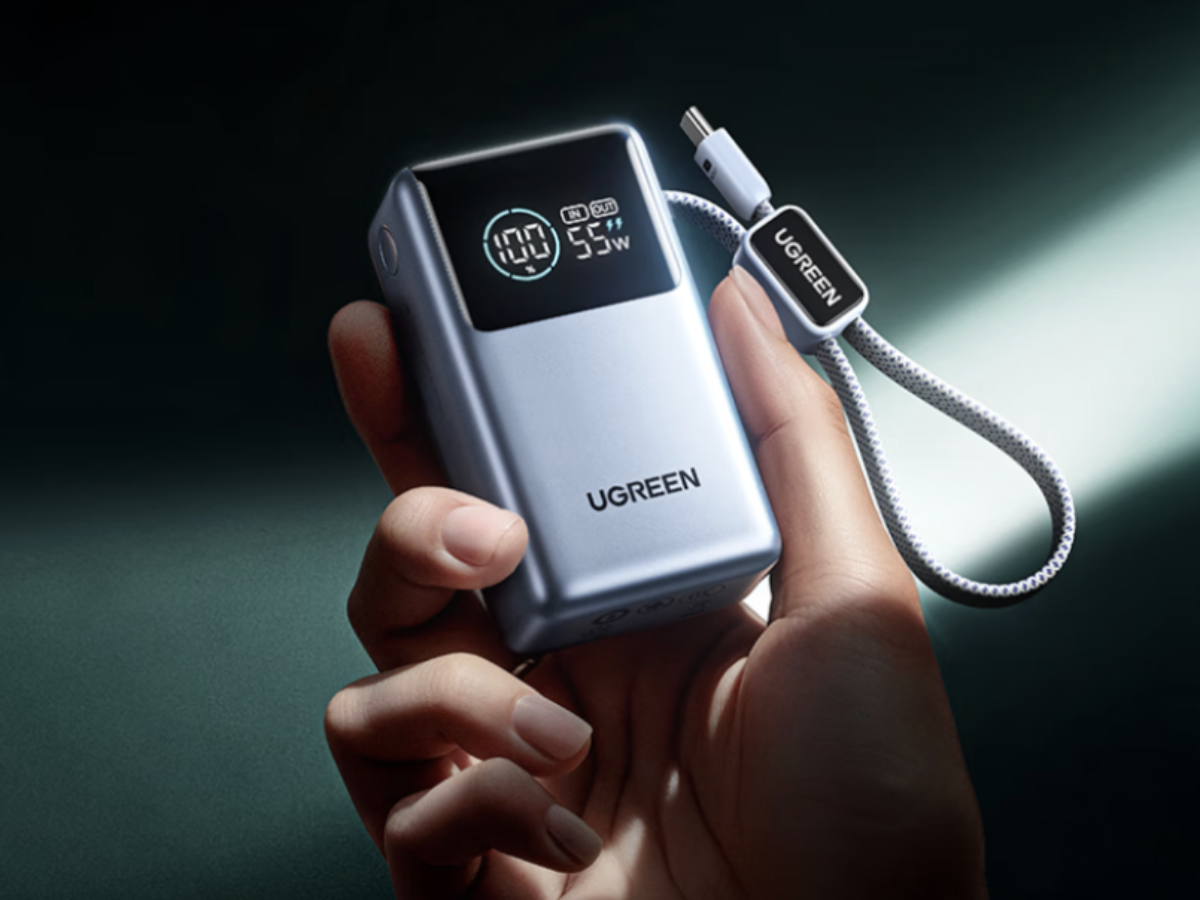
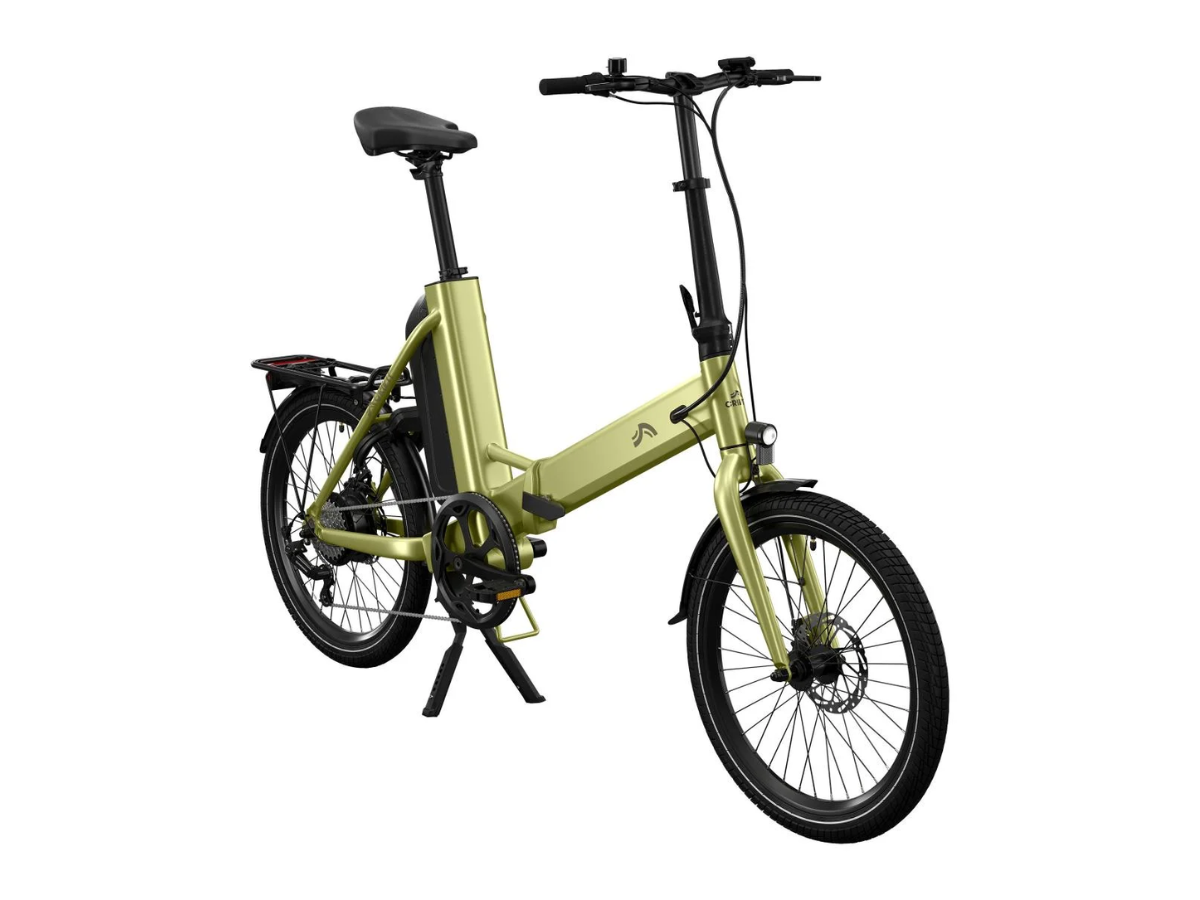









Following a successful Q4 where Apple posted $102.5 billion in revenue, CEO Tim Cook spoke to CNBC about the company’s performance and its future goals. Cook revealed that despite the strong demand, Apple was facing supply constraints on several models of the iPhone 17 and last year’s 16 series. Apple’s favorable revenue results are also expected to carry over into the Holiday period, with projected revenue growth for the December quarter up by 10%-12%. Cook also confirmed that Cupertino plans to release its long-awaited and delayed version of its AI-overhauled Siri next year....

According to a new rumor from the prolific Digital Chat Station over on Weibo, OnePlus is working on a smaller-screen device with a flagship chipset. This is likely to be branded OnePlus 15T and OnePlus 15s, depending on market, and will be the successor to the 13T and 13s, which both launched earlier this year. The 15T/15s is expected to arrive in the first half of 2026 with the Snapdragon 8 Elite Gen 5 SoC on board. Its screen will be 6.31" with "1.5K" resolution, most likely LTPS, flat, with symmetrical small bezels on all sides, and an embedded 3D ultrasonic fingerprint...

Samsung and NVIDIA had a meeting in South Korea this week, and this also included an appearance by Jay Y Lee, who is the Executive Chairman of Samsung, at NVIDIA’s GeForce Gamer Festival.
At this event, Lee made an interesting comment that we don’t usually see from executives. He noticed a lot of people were using iPhones, and joked “Why are there so many iPhones here?” It was a pretty lighthearted joke from Lee, not a serious question, but it was still interesting to see Lee mention this.
Typically, companies do not mention their competitors, let alone mention them by name. So this did catch a lot of people off guard. In fact, earlier this week at the OPPO Find X9 Series global launch, they compared their phone to “Competitor Ultra” and “Competitor Pro Max”, making it obvious who they were comparing against, without directly calling out their names.
Of course, Lee would have loved to come out to a crowd that was full of Galaxy phones, especially seeing as they were in South Korea, where Samsung has its biggest market share.
Samsung Chairman Lee Jae-yong (live): “Why are there so many iPhones here?” pic.twitter.com/Cu4H2xh5ol
— Jukan (@Jukanlosreve) October 30, 2025
Samsung and Apple are number one and two for smartphones around the world, often times swapping places depending on the time of the year. However, in Q2 2025, which ended in June, Samsung had a 20% market share, while Apple was at 17%. That will likely change in Q3 and Q4, with the release of the iPhone. In fact, if we look at Q4 2024, it was 23% for Apple and 16% for Samsung.
So seeing that many iPhones, even in South Korea is really not that much of a surprise.

The post Samsung’s Jay Y. Lee Calls Out iPhones in the Crowd — in the Middle of South Korea! appeared first on Android Headlines.

Verizon recently shared its results for the third quarter of 2025, and the outcome paints a mixed picture. The company is trying to recover after its former CEO, Hans Vestberg, was suddenly removed. He has been replaced by Dan Schulman. During a recent earnings call, Verizon’s new CEO promised to make customers happy again and improve the telecom giant’s performance.
Dan Schulman did not give any detailed roadmap plan yet, but he explained his main goals. Before anything, he wants Verizon to cut costs, remove the weak parts of the business, and operate in a simpler and faster way. He emphasized that the customers will be the main focus of the company going forward.
The CEO mentioned that Verizon has spent numerous years building the most reliable network. Now, with that foundation in place, the company aims to focus on offering good value and a better customer experience. Moreover, he adds in his statement that Verizon must stop becoming an easy target for its competitors who want to snatch away its customers.
The financial report shows that Verizon’s performance was not the worst, but also not strong enough to calm worries. The consumer division lost 7,000 wireless postpaid phone customers, while the business side gained 51,000 customers, leading to a total gain of 44,000 postpaid phone customers. Verizon made $28.20 billion in service revenue. The company also added 261,000 fixed wireless access customers and 61,000 FiOS customers, but those numbers were below predictions.
For reference, other carriers performed better in the same period. AT&T gained 405,000 postpaid phone customers and reported strong earnings. T-Mobile added about a million postpaid phone customers and also saw big growth in fixed wireless access numbers. Industry experts are unsure how Verizon will compete without lowering prices or offering big promotions.
The post Verizon’s New CEO Promises a Comeback — With a Big Focus on Customers appeared first on Android Headlines.

OPPO’s next flagship foldable smartphone, the Find N6, could become the world’s first foldable smartphone with the Snapdragon 8 Elite Gen 5 chip. That is not surprising at all, actually.
The information comes from Digital Chat Station, one of China’s most prominent tipsters. He went to Weibo to share the information. The chip information is not the only detail he shared, though. The tipster shared the key specifications of the OPPO Find N6, actually.
He claims that the phone will feature an 8.1-inch main, foldable display. A 6.6-inch cover display will also be used. The phone is tipped to utilize a 6,000mAh+ silicon-carbon battery as well. It will once again have a much larger battery than what the Galaxy Z Fold 7 offers.
A 50-megapixel main camera (Sony’s LYT-808 sensor) is tipped. That is a 1/1.4-inch sensor size, by the way, and an improvement over what the Find N5 delivered. An ultrawide camera will also be used, but no details were shared. The third camera on the back will be a periscope telephoto unit (3x optical zoom), and there will be a multispectral sensor as well.
Android 16 will come pre-installed on the device, along with OPPO’s ColorOS 16 skin. A customizable button will replace the alert slider, while a side-facing fingerprint scanner will be included, too. It will double as power/lock key.
The tipster also claims that the phone will offer “full water resistance”, meaning full protection. We’re not sure what rating will it be exactly, but that’s good to hear.
Wireless charging will be supported too, as was on the Find N5. The last piece of information that the tipster shared has to do with weight and thickness. The OPPO Find N6 will be even thinner and lighter than its predecessor, which is immensely thin and light for a foldable of that size.
The OPPO Find N6 will probably arrive in Q1 2026. The Find N5 landed in February this year, so we’re expecting a similar timeframe for the launch of its successor. That’s not something that Digital Chat Station mentioned, however.
The post This Foldable Could Be the First to Rock Snapdragon 8 Elite Gen 5 Chip appeared first on Android Headlines.
How often would you say you upgrade your phone? If you upgrade it every year or every other year, one good way to get rid of your old phone would be to either sell it off or trade it in. This will help offset the cost of your new phone. However, if you are planning to get a foldable, note that these phones will not hold as much resale value compared to traditional smartphones.
According to a recent report by SellCell, it found that when it comes to foldable phones, its resale value does not hold up quite as well compared to traditional phones. The report claims that foldables actually lose up to 15.4% more resale value.
The report claims on average, foldable devices lose about 62.3% of their value in the first 6 months. But how does this compare to regular smartphones? SellCell estimates that regular phones lose about 49.8% of its value in the first 6 months. This means not only do you spend more on a brand new foldable, but you won’t recoup as much if you do decide to sell it off.
Interestingly enough, Samsung’s foldables experience the steepest decline. The report says Samsung phones see a 63.7% loss in value in the first 6 months. This is compared to other foldables, like Google’s Pixel Fold series, which loses about 58.1% of its value. But if we’re looking at which foldable brand holds its value the best, that would go to OnePlus. While the company hasn’t released a new foldable in a while, the OnePlus Open lost 55.2% of its value in the first 6 months.
It’s not hard to see why foldable phones lose their value faster than regular phones. One of the main concerns when buying a secondhand smartphone is battery life. Second would be the overall condition of the phone, like if there are scratches to the body, display, and camera lens. Other than that, there’s really not too much else that you need to be bothered about.
However, foldables are a different story. You have those concerns, but now you have to wonder about the overall durability of the display. This is because the displays of foldables have a finite lifespan when it comes to opening and closing them. You also don’t know if the original user took care not to press on the crease, or if dust and debris got caught in the hinge.
Ultimately, this means you’d be taking on a bigger risk buying a refurbished foldable. However, if you are curious about foldables, furbished models are a less expensive way to see if the form factor is for you. Also, based on SellCell’s report, you might be able to find one that’s at a lower-than-expected price.
The post Foldable Phones Lose More Resale Value Than Regular Smartphones appeared first on Android Headlines.

Overnight, YouTube TV emailed all of its subscribers to let them know that ESPN and ABC channels are no longer available on the platform, as of October 30, 2025. Why is that? Well, Disney and YouTube TV are in the middle of a carriage dispute, likely about fees.
You see, every time one of these contracts come up, the content provider (Disney, NBCU, Paramount, etc) all try to squeeze as much money as they can out of the carrier (YouTube TV, Comcast, Spectrum, etc). And YouTube TV is looking to get fair rates, versus paying what bigger companies like Comcast would have to pay.
YouTube TV and Disney will likely come to an agreement pretty soon. This happened the last time the contract was up, though it was later in the year, in late December, so a bit surprising that the contract is up for renewal now. But that outage only lasted about 2 days. So we’d expect a similar time-frame here. Keep in mind that there’s more for Disney to lose here versus YouTube TV.
YouTube TV, for its part, is going to offer customers a $20 credit if the channels are off of its platform for an extended period of time.
Let’s clear up some myths here. While it seems like these carriage disputes only happen to YouTube TV, that is far from the truth. This happens with every single cable company and live TV streamer. YouTube TV has a louder audience, however.
Google has noted that they are not going to “agree to terms that disadvantage our members while benefitting Disney’s own live TV products.” Which is a problem in the industry now. NBCU and Disney both make the content and also deliver it with Hulu + Live TV and Comcast Cable. YouTube TV doesn’t make the content, they simply deliver it.
Content providers like Disney continue to overpay for content, and try to pass those costs down to the carrier like YouTube TV, and Google won’t have it. Good for Google for sticking up for the consumer here.
Here are the channels that will be removed until a deal is reached:
The post Disney Just Pulled ESPN and ABC From YouTube TV — Here’s Why It’s a Big Deal appeared first on Android Headlines.

Meet the DOOGEE U12, the company’s new Android tablet. It is a direct successor to the DOOGEE U11, which received Android 16 two months ago. The DOOGEE U12 is now here, and it can handle anything you throw at it, basically.
DOOGEE says that the tablet is made for both “busy students and families”, as it’s made for both work and play. The company also announced the worldwide release of this tablet, and we have a special offer for you, which we’ll talk about at the very end.
This tablet has a large 12-inch 2K IPS display, which offers a 90Hz refresh rate. This display is also larger than the one on its predecessor. You’re also getting Certified Eye Comfort technology here, to protect your eyes.

There is a 9,000mAh battery included on the inside, and DOOGEE says it’s an “all-day battery”, as in you won’t have to charge it no matter what you end up doing. It can also charge other devices, act as a power bank.

The Unisoc T7255 octa-core chip fuels this device, while you get 6GB of RAM. You can expand that up to 24GB via virtual RAM, though. DOOGEE included 128GB of storage here, though you can expand that up to 2TB via a microSD card.

Android 16 comes pre-installed on this tablet, by the way, the latest version of Android OS. There is also a ‘VIP Edition’ of the tablet that comes with a suite of accessories. Those accessories include a Bluetooth keyboard, a stylus, a mouse, a tempered glass screen protector, and a protective cover.

You’ll also notice that the bezels around the display are not too thin or too thick, which is always nice to see.
With that being said, you can purchase this tablet via Amazon as we speak. We also have a 30% off coupon (£100) +5% off code for you to use, in order to get a very nice discount. You’ll see both the purchase link and codes listed below. You can get the tablet with free shipping and an extended warranty. If you’d like to know more about the company’s products, visit DOOGEE’s official website.
Discount coupon (30% off): U30
Discount code (5%): PE9YCPVK
The post Save Big on DOOGEE’s New U12 Tablet With This Exclusive Coupon appeared first on Android Headlines.

The Shark AI Ultra (AV2511AE) robot vacuum is currently on sale over at Amazon for a whopping 50% off right now. That’s going to bring the price down to just $299. And makes it a really good value now, almost a no-brainer purchase. That is also good for an all-time low.
This incredible robot vacuum from Shark is able to pick up just about anything that might be on your floors, with Shark claiming 50% better edge cleaning when compared to the RV2502AE model. The incredible suction also makes the Shark AI Ultra a perfect robot vacuum for pets in homes. It’s able to get up all of that pet hair, even the most stubborn of pet hair. HEPA filtration is also a good feature, especially for those with allergies.
Shark uses 360-degree LiDAR vision to quickly and accurately map out your home. This allows the robot vacuum to methodically clean and detect, and avoid objects that are in its path. It’s also able to adapt to day or night, so even with not much light, it can clean your home with ease.
Finally, we can’t forget about the docking station. Like most newer robot vacuums, the Shark AI Ultra also has an auto-empty dock. This actually comes in two models – a 45-day capacity and a 60-day capacity – Currently, the 60-day capacity is actually much cheaper. So that’s our pick for this one. That means it can vacuum your home every day for 60 days before it needs to be emptied. That’s not too shabby.
All in all, this is a pretty impressive robot vacuum that you can pick up at home for not a lot of money.

This robot vacuum features 360-degree LiDAR for navigation and mapping, a pretty small but mighty dock that can hold dirt and debris for about 30 days, and some very impressive suction power.
The post This 'Life Changing' Shark AI Ultra Robot Vacuum is on Sale for $299 appeared first on Android Headlines.

Maps is one of Google’s core platforms, one that’s frequently polished to make the experience seamless for users. In our latest dose, we’re learning that Google Maps for Android may soon gain a new power saving mode. This apparently works independently of your phone’s power saver mode, and you can enable it by pressing the power button.
Android Authority has discovered evidence of the new ‘power saving’ mode within the 25.44.03.824313610 beta release of Google Maps for Android. It includes the strings that suggest the new feature and the overview of how it works. Once available, you should be able to activate Maps’ power saving directly in the app manually. As said, you can trigger it by pressing the phone’s physical power button.
The report shares an illustration for the power saving mode that highlights the enabling part of it. Maps will display a message at the bottom of the screen when you activate power saving.








The UI changes make it very obvious that power saving mode is on, as it goes monochrome and drops almost all of the UI elements. The images shared by the report suggest that the power saving mode’s minimalistic UI may be taking things too far. It even removes the name of the street you’re turning onto. You’ll just see the arrow direction, the ETA, the distance left, and how much time you still have to go.
Power saving mode in Maps could support walking, two-wheeler directions, and driving. However, it’s not clear if it’ll support public transit, where it would have to display your bus or train number. There are chances it might not support because of the low-text approach. The report notes that the new power saving mode could still feature audio output (voice navigation).
There appears to be another limitation, where you can’t use Maps in landscape mode when power saving is on. Considering the feature is still not available publicly, things might change before debuting. While the feature can be handy to save some battery during long drives, are you willing to let go of all the flagship features of Google Maps?
The post Google Maps Could Soon Get a Power-Saving Mode for Android Users appeared first on Android Headlines.
Google has just published a surprising new update for Pixel smartphones, an update that is all about “performance improvements”. This late October update follows the one that arrived earlier this month with the October 2025 Android security patch.
This update is coming for Pixel 7, 8, 9, and 10 series devices, and Verizon shared the information about it. Google has still not updated its monthly community post or released a new one (at the time of writing this article), which is why we’re referring to Verizon.
In any case, Verizon says that this update “provides performance improvements for your device.” There are no new features mentioned, or anything like that, so it seems to be a general performance-improving update.
In case you’re wondering, no, this is not a Verizon-exclusive update. Users have been reporting that they’re receiving the update despite not being on Verizon, or in the US, for that matter. This one seems to be rolling out to all Pixel smartphones (7-10 series).
The update weighs around 30MB, in case you’re wondering, so it’s not that big at all. That’s not surprising as this seems to be more like a hotfix update than anything else.
The timing of this update is a bit odd, though, as November is right around the corner. We’re literally in the last day of October, so the November Android update should be arriving in the near future.
There is a possibility Google will release it later in November, though, hence this update. That’s just a wild guess, it remains to be seen. The company usually pulls the trigger earlier in the month, though. Either way, you’ll be receiving this update soon, if you haven’t already, so stay tuned for that.
The post Google Rolls Out Surprise Pixel Update With Performance Improvements appeared first on Android Headlines.
Samsung has activated the Priority notifications feature in the most recent One UI 8.5 build, and the design is pretty impressive. It’s the first time we’re seeing the in-development Prioritise notifications feature in action.
X user @SandeepAdap shared an image showcasing the design of the One UI 8.5 Prioritise notifications feature. The leak reveals the feature will not be just limited to prioritising, but also making them visually appealing.
Labeled under “Priority notifications,” the alerts card features an elegant visualization. The gradient matches with other key Galaxy AI graphics. Think of generative edit’s glow up animation with a more blurred design language.
The regular notifications look quite boring in comparison. The priority alert card has adopted a sleek, blurry card with an elegant gradient. We may see some corrections in the design as the internal testing goes ahead.
In the previous two builds, Samsung first added the feature and applied the setup section. Now in the latest one, the feature has started to work. The visual makeover accurately differentiates the notifications prioritized for you.

Courtesy of Sandeep Adap (@SandeepAdap/X)
One UI 8.5 will be a major upgrade over One UI 8. Like the latest one, the next will also be based on Android 16. However, the scope of changes is huge in the mid-cycle version as compared to the main version of the skin.
Samsung will launch One UI 8.5 with the Galaxy S26 series. A Beta Program was slated for late November but it may face a delay as the company might have also pushed the Unpacked 2026 to March from February.
The post Your notifications are about to get prettier in One UI 8.5 appeared first on Sammy Fans.
Samsung is working on a “More Slim” phone project instead of continuing development of the Galaxy S26 Edge. Recent leaks and rumors have made the S26 lineup a mess, and a new rumor appears with the “More Slim” phone’s key specs.
A new rumor going viral on X lists key specs of the Samsung “More Slim” phone. It signals a totally new setup from display to camera and battery to body.
The phone that Samsung is developing under the “More Slim” project could be slimmer than 5.56mm. It would be a major improvement over the S25 Edge (5.8mm) and a minimal thickness cut over Apple’s iPhone Air (5.6mm).
The smartphone could sport a 6.6-inch LTPO OLED screen. Under the hood, it would be powered by Exynos 2600 and a 4,300mAh battery. The display is rumored to be 0.1-inch smaller than the S25 Edge released this year.
The new rumor retains the chip and battery capacity inputs that arrived in the past. Exynos 2600 is shaping up to be a massive upgrade over Exynos 2500. Battery capacity could also be boosted by 400mAh despite the thickness reduction.
In terms of optics, the next slim Galaxy could come with a 50MP primary and a 50MP ultrawide, while a periscope sensor is under consideration. The selfie camera might be the same, 12-megapixel, as utilized in recent models.
Removal of the 200MP sensor in favor of a new 50MP main, 50MP ultrawide, plus a dedicated zoom camera makes sense. It will significantly ramp up the appeal of the device, making it a slim masterpiece with the Ultra camera.
The details are based on rumors that surfaced on the internet. Samsung hasn’t yet confirmed anything about the models of the Galaxy S26 series.
The post Is the Galaxy S26 Edge dead? Samsung’s ‘More Slim’ phone leak signals a reinvention appeared first on Sammy Fans.
Samsung had Q3 2025 as its best quarter, riding on the HBM boom and foldable phones. The MX Division of Samsung flagged a steep 30% increase in profits, thanks to the successful launch of its Galaxy Z Fold 7.
While Samsung profits rose a huge 30% in Q3 2025, the Galaxy Z Fold 7 sales volume may cause trouble in the next quarter, as per ChosunBiz.
In the third quarter, Samsung’s MX and NW Division recorded a 30% profit increase year-over-year. The profits were pushed by the new foldable model, which gained impressive sales in South Korea and key global markets.
Samsung revealed in the past the sales figures of the Galaxy Z Fold 7.
The new model’s pre-orders were increased by over 25% in the US. The Indian smartphone market has also impressed Samsung, with the brand achieving a huge 49% market share in the premium segment, surpassing Apple.
Improved sales of the Galaxy Z Fold 7 have also spiked Samsung’s average selling price. However, the success story is facing a harsh reality. The ASP is set to decline next month, and Fold 7 sales volume continues to decrease.
MX Division’s ASP in Q3 2025 was $304, over $295 in Q3 2024. Adding to this, the ASP saw a 12% increase over Q2 2025, jumping from $270. The fourth quarter would flag a decline in ASP driven by increased sales of the Galaxy A series.
It’s not a failure, but sales remain at peak in the initial month of launch. The next waves will depend on regional aspects such as festive shopping and sales. That said, the next quarter will be a reality check of the Galaxy Z Fold 7.
The post Samsung Galaxy Z Fold 7 success story meets a harsh reality appeared first on Sammy Fans.
Polar Bears International has published guidelines for photographers and filmmakers using drones to capture wildlife in the Arctic.

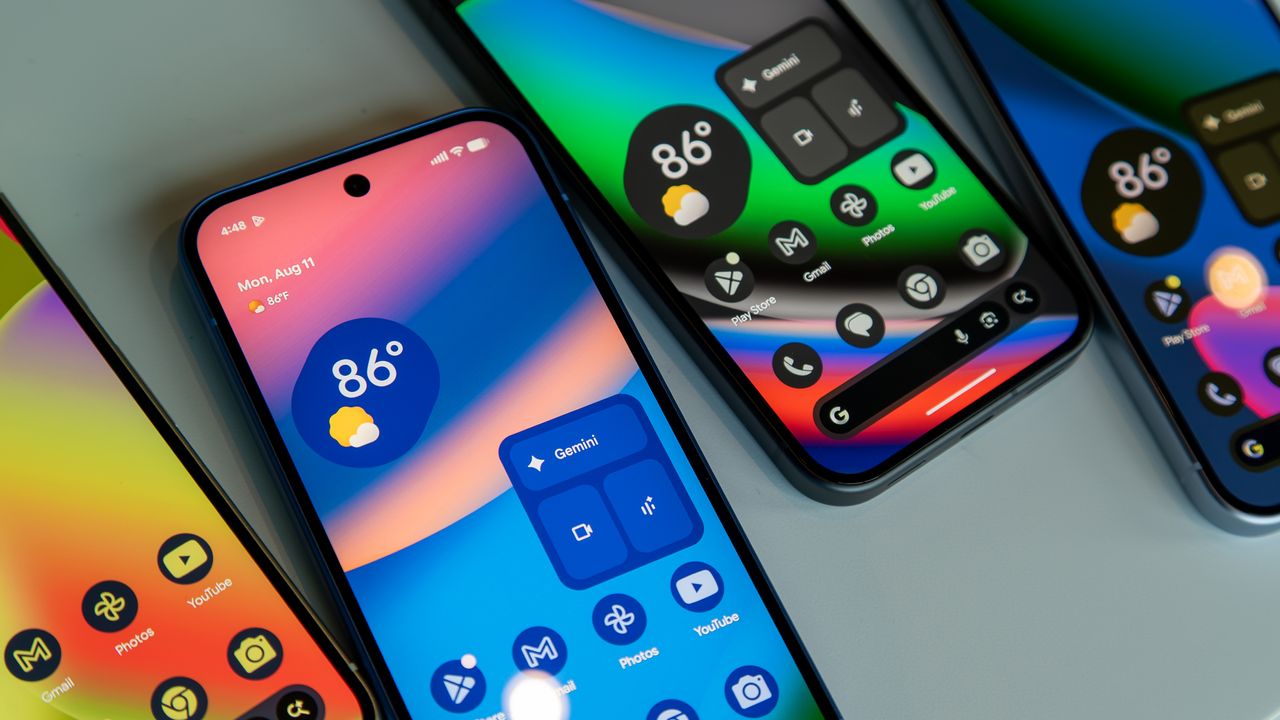

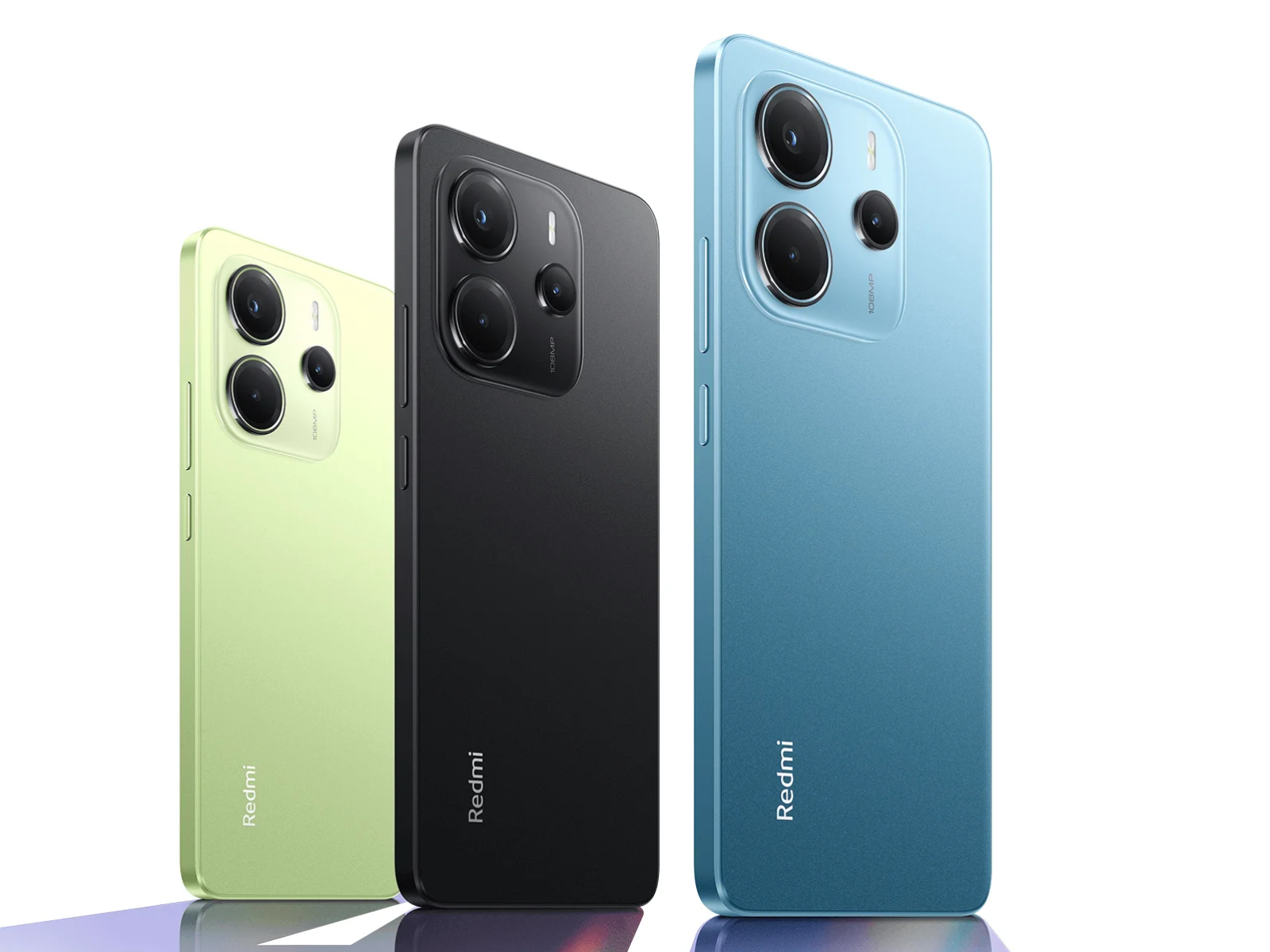
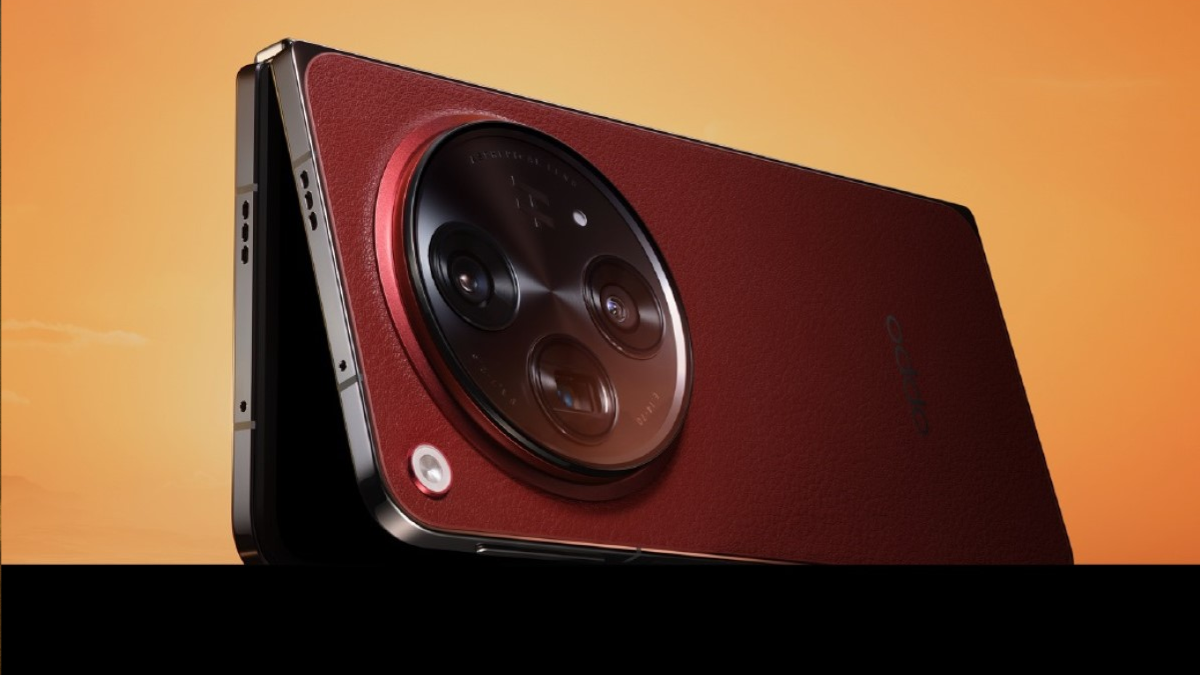
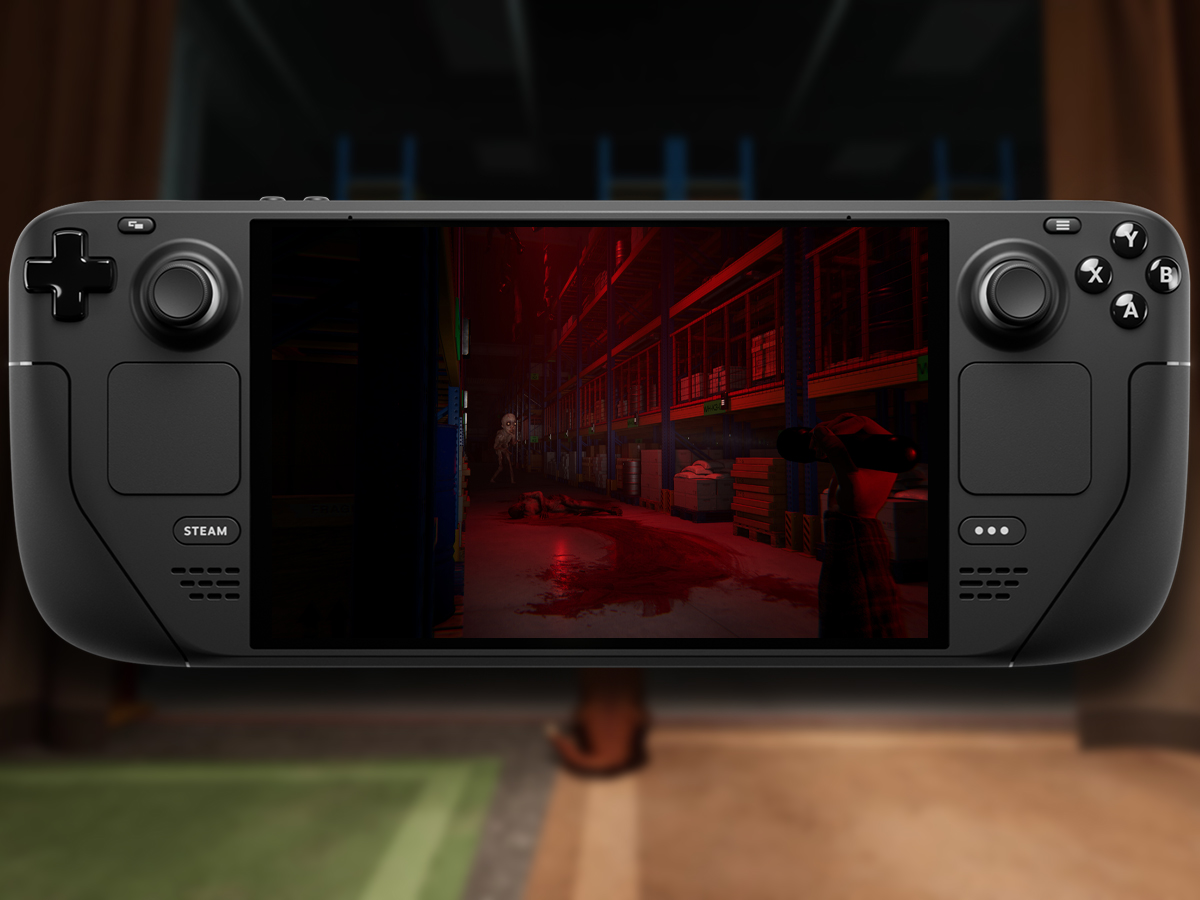
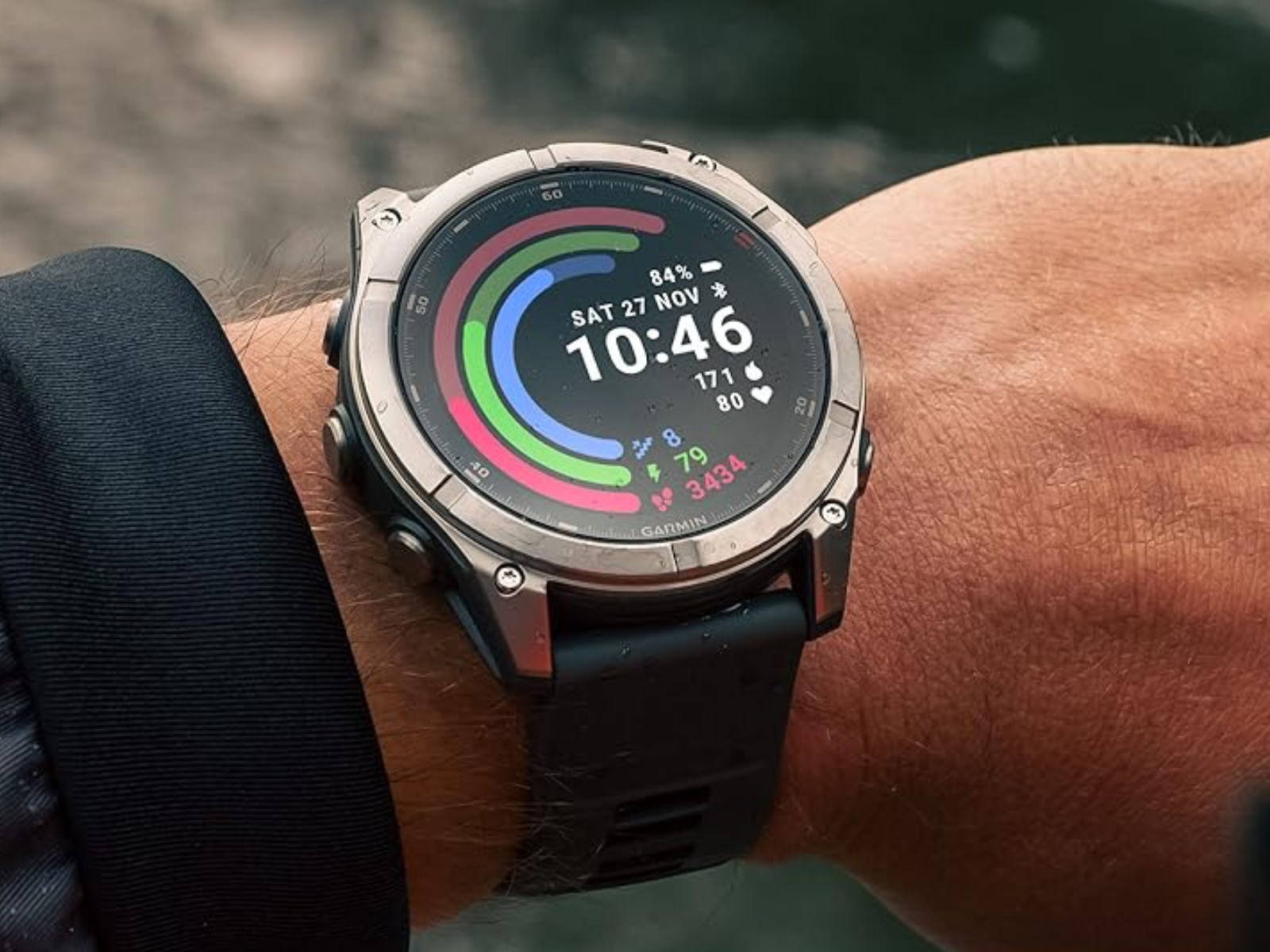






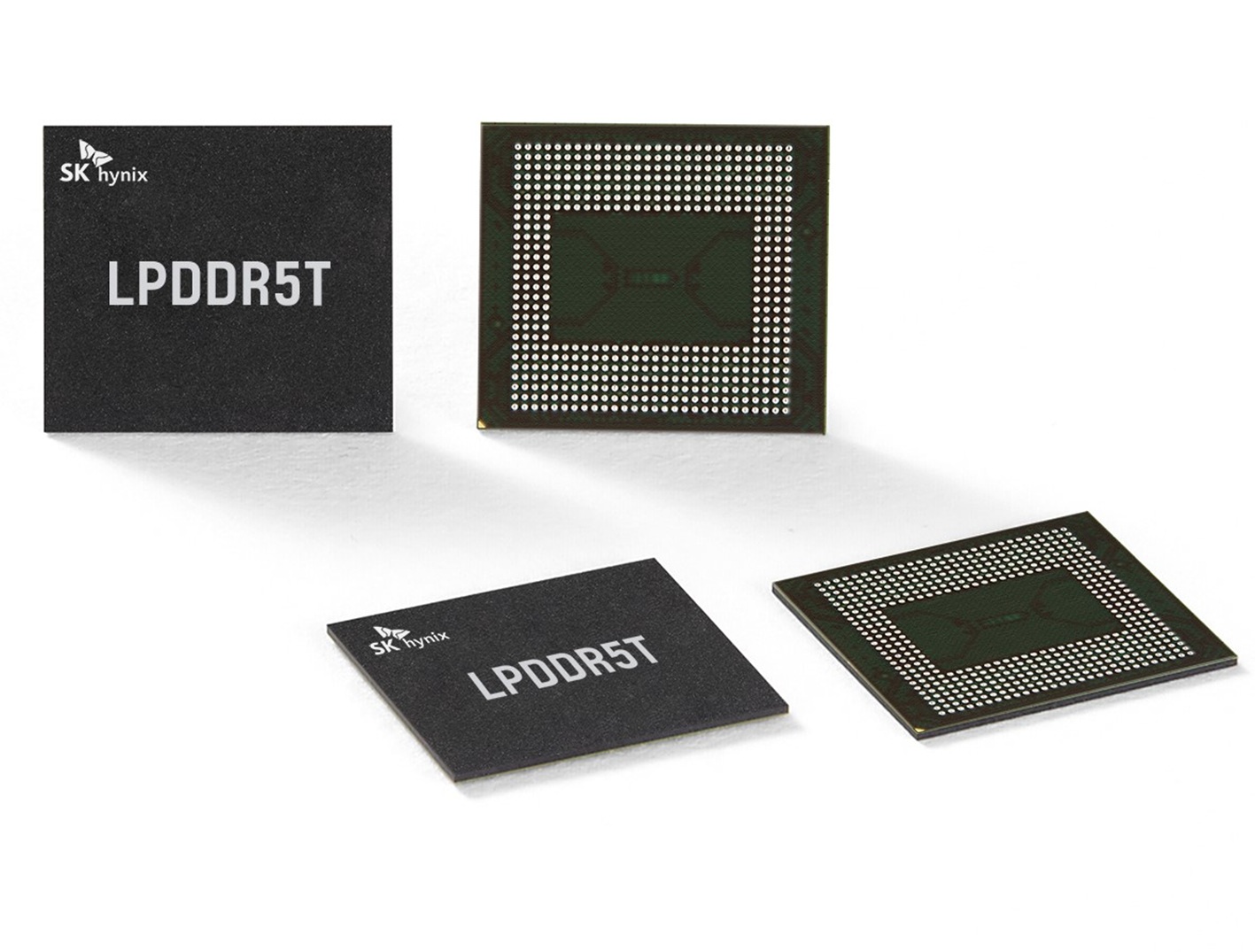
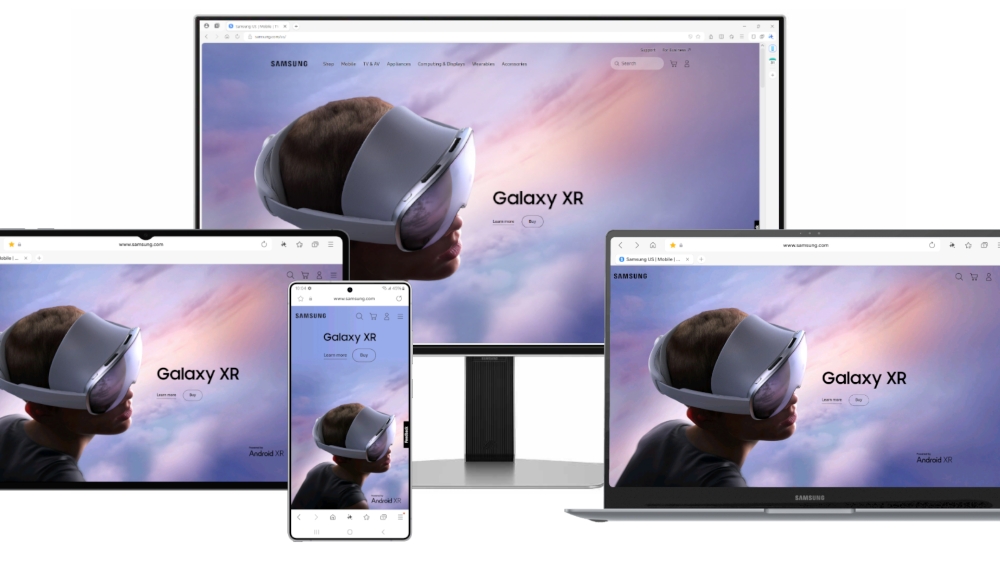

Apple reported its financial results for the quarter ending on September 27, 2025 and Cupertino welcomed several new records. Total revenue stood at $102.5 billion, which is an 8% increase compared to the same period last year. Profits stood at $27.5 billion, while earnings per share jumped to $1.85, which is up 13% on a yearly basis. Apple, FY25-Q4 Financial Statement Thanks to strong demand for its iPhone 17 series, iPhone revenue reached a new record of $49.02 billion. This amounts to a 6% increase in revenues compared to the iPhone 16 series, but the 17 models and the Air were...

Honor is rumored to launch the GT 2 series in December, reportedly consisting of the GT 2 and GT 2 Pro. While there's no word from the brand about these phones' features yet, reliable tipster Digital Chat Station has revealed key specs of the GT 2 duo, giving us an idea of what to expect from the two phones. According to DCS, the Honor GT 2 will be powered by last year's Snapdragon 8 Elite SoC, while the Honor GT 2 Pro will have the latest Snapdragon 8 Elite Gen 5 chip at the helm. Snapdragon 8 Elite-powered Honor GT Pro which was launched in April with a 7,200 mAh...

Apple introduced its Self Service Repair program in the US in April 2022, allowing users to order genuine parts and repair their devices. The company has now expanded the program to include the iPhone 17 series. If you’ve got an iPhone 17, iPhone 17 Pro, iPhone 17 Pro Max, or iPhone Air that needs a repair, you can now order parts and download repair manuals from Apple. However, it’s recommended to attempt the repair only if you know what you’re doing. While the manuals do provide detailed instructions, replacing components yourself can be challenging. [#InlinePriceWidget, 13964,...

Multi-tasking on an Android tablet has always been an average experience. It’s not bad, but there is certainly room for improvement. However, the recent Android Canary 2510 release has signalled good news for tablet users. Google is preparing a new, system-wide App Bubbling feature for the Google Pixel Tablet and high-end Samsung models. The feature is expected to completely elevate the way users use these devices for activities like work, studies, and leisure.
To break down how the feature would work, it helps to have a visual. For instance, let’s say you are editing a video in LumaFusion, but you need access to your gallery. You can use this feature to keep Google Photos (or a cloud storage app) open in a floating bubble on the same screen, and just drag and drop items into the workspace as needed.
Alternatively, you may want to take a break and hop onto your go-to offshore casino to play some spin slot reels or Blackjack. Even when you play outside state regulation, you will still need to deposit money into your account to enjoy those large game selections and massive bonuses. The app bubble feature will guarantee a seamless experience as you can approve a payment without needing to disrupt your gaming session.
Busy in Google Docs and need to check your schedule or respond to a message? You can do so without needing to break your workflow.
The actual mechanics of the feature are quite straightforward. Users will need to use a gesture wherein they drag the app from the bottom corner of the screen, and this will automatically turn it into a resizable floating window. It will function very similarly to how the conversation bubbles or “Floating Notifications” work on current Android devices.
Think of it as a polished, more intuitive version of the Android 15 QPR1 Beta 2’s “Bubble Anything” feature. Although the feature is yet to be announced officially, a full tutorial and animations have been confirmed to be found in the code of the Android Canary 2510 release. This suggests that the feature is past the concept stage and is already deep into the development phase.
As it stands, even the best tablets do not have great multitasking features, with most of them consisting of Split-Screen, 90:10 mode, or Taskbar. Not only is this very clunky, but it is also rigid and can overcomplicate simple, temporary interactions with different apps. Although the floating window system might not be the best for smaller screens (like your standard smartphone), it is perfect (and vital) for tablets.
The majority of the time, these devices are being utilized by power users who are working primarily on one app, but might need to reference content from another app. This Bubble Anything-esque feature allows such users to maximize output on the large display by taking advantage of screen real estate and workflow. From a business standpoint, the implementation of this is necessary for Google to gain a competitive edge over other tablet operating systems with similar multitasking capacity.
Google has yet to provide an official release date, but there is much speculation that it will be rolled out soon based on the elements found within the code. Some speculate it will be released with Android 16 QPR3 in early 2026, while others believe it may be held back until the full release of Android 17. With the current blueprint already out for tech experts to pick apart, chances are the update will come sooner rather than later.
Regardless, it is a huge development for the Android tablet ecosystem, and naturally, it has resulted in a lot of excitement from users. Such a refinement from Google showcases the tech giant’s commitment to efficiency and might just ensure Android dominates the tablet sphere.
The post New Android Gesture Will Transform Tablet Multitasking appeared first on Android Headlines.
Samsung Galaxy Watch 6 and Watch 6 Classic are receiving a new One UI 8 Watch Beta 4. It follows the recent rollout of the One UI 8 Watch Beta 3 for the smartwatches in South Korea.
The latest Beta also has the October 2025 security patch for the smartwatches. It makes the update a complete package that includes crucial bug fixes, performance improvements, and the most up-to-date system security patches.
On Beta 4, you should experience a better overall performance. Battery efficiency may also see a notable boost driven by optimization. The problem arising with the GPS function is also addressed for a better user experience.
Rapid deployment of software updates signals Samsung is gearing up to initiate the Stable update’s rollout. With the One UI 8 Watch Beta 4, the Galaxy Watch 6 and Classic are now one step closer to the public version of the software.
The Beta 4 will bump your smartwatch’s software version to ZYJ6. It should be the last Beta version as Samsung should now open the public availability. Users of the Watch 7 have also received the official version of One UI 8 Watch.
Since the Beta Program is limited to South Korea, users residing in Samsung’s home country can now grab the latest update. Consumers in the Global market need to wait until the company begins the rollout of the official version.
If you’ve joined the Beta Program, head to the Galaxy Wearable app on your device. Now, open Watch settings, followed by Watch software update. Hit the Download and install to check if the OTA is arrived for your smartwatch.

Source – Samsung Community Korea
Thanks for the tip, Aptivi!
The post Samsung brings October 2025 patch to Galaxy Watch 6 with One UI 8 Watch Beta 4 appeared first on Sammy Fans.
Samsung and Nvidia are collaborating to build an AI Megafactory. This project will change how every AI chip is built on the planet, leveraging artificial intelligence, thousands of GPUs running, and advanced automation.
Samsung says it will embed AI throughout its manufacturing flow by deploying 50,000 NVIDIA GPUs, realizing an AI Megafactory. It will accelerate the development and production of next-gen chips, mobile devices, and robotics.
The AI Megafactory’s plan includes the establishment of an intelligent network, which will comprise every aspect of semiconductor manufacturing, from design and process to equipment, operations, and quality control.
Samsung will put AI to analyze, predict, and optimize production environments in real time. The AI Megafactory will serve as an intelligent manufacturing platform that connects and interprets the immense data generated across:
Samsung also revealed that Nvidia is closely collaborating on HBM4. It comes after the recent meeting of Samsung Chairman Jay Y Lee and Nvidia CEO Jensen Huang. Nvidia recently approved Samsung’s HBM3E for its AI accelerators.
HBM4 will deliver incredibly high bandwidth and energy efficiency. Samsung says its advanced AI memory semiconductors will help accelerate the development of future AI applications, riding the evolving artificial intelligence market.
Samsung also disclosed that its HBM4, built on 6th-gen 10nm-class DRAM and a 4nm logic base die, can reach 11 Gbps processing speed. It massively outclasses the JEDEC standard of 8Gbps and seems sealed for Nvidia’s future.
The South Korean tech giant also plans to extend its AI Factory infrastructure to its global manufacturing hubs, including Taylor, US, bringing greater intelligence and agility to its worldwide semiconductor operations.

The post Samsung and Nvidia building AI Megafactory for phones, chips, HBM4 and robotics appeared first on Sammy Fans.
An informal meeting between Samsung Chairman Lee Jae-Yong and Nvidia CEO Jensen Huang has attracted a crowd, which also led the Samsung leader to poke fun at the iPhone users who gathered to see these high-profile leaders.
On October 30th, Huan, Lee Jae Yong, and Hyundai Chairman Chung Eui-sun met for a casual dinner of Korean fried chicken and beer in Seoul. The three moguls met at around 7:30 pm at Kkanbu Chicken, a popular restaurant near Samseong Station on Subway Line No. 2 in the affluent Gangnam district.
They shared the dinner and also performed a love shot, a symbolic gesture of closeness often seen in Korean drinking culture. The meeting lasted for about an hour, and then the three left in a single vehicle.
Lee Jae-yong said that he is happy that the US tariff problem is resolved, and “I realize happiness isn’t about much – eating good food and sharing drinks with good people.” He later thanked the government officials for resolving the differences between the two countries to foster business.
However, there was a time when Lee looked at the gathered crowd and noticed that there were so many iPhone users. He asked, “Why are there so many iPhones?” and then laughed, and the crowd closely followed.
IDC Korea has reported 3.32 million units in the second quarter of 2025, with a 10.9% upstream from a year earlier. The researcher noted that the strong demand for the Galaxy S25 series has provided a growth momentum for the market. However, the forecasts and results for Q3 are yet to come.
On the other hand, the foldable smartphone shipment has reached 110,000 units with a double-digit growth compared to last year. Still, Apple has its fans all around the globe, and Korea is no exception.
Below, you can check the live feed of the meeting (via @Jukanlosreve) showing the Samsung Chairman poking fun at iPhone users.
Samsung Chairman Lee Jae-yong (live): “Why are there so many iPhones here?” pic.twitter.com/Cu4H2xh5ol
— Jukan (@Jukanlosreve) October 30, 2025
The post Samsung Chairman pokes fun at iPhone users in Korea appeared first on Sammy Fans.
Samsung’s Galaxy Z Fold 6, Z Flip 6, Z Fold SE, Z Fold 4, and Z Flip 4 are receiving the One UI 8-based October 2025 update. It also marks the major One UI 8 update’s expansion to South Korea for the 2022 foldable phones.
It’s the last day of October 2025, and Samsung didn’t forget to offer the latest security update to the Galaxy Z Fold 6, Z Flip 6, Z Fold SE, Z Fold 4, and Z Flip 4. The new patch follows the major rollout of the One UI 8 software update.
Samsung’s October update has fixes for 34 CVE and SVE items. The software still lacks some important improvements due to Google. The Android bulletin will now bring an extended set of CVEs for a broad user base.
While it’s a fresh start for Korean Galaxy Z Fold 4 and Flip 4 users, the October patch is a crucial development for the Fold 6, Flip 6, and Fold SE. It will bring a notable improvement in everyday usage as well as key functions.
You can access the latest software through Settings > Software update > Download and install. The October patch can be installed over cellular, but the One UI 8 for 2022 foldable is a nearly 3.5 GB update, requiring an unmetered connection.
Note that the update has started to roll out in South Korea; expansion would take some time.
Also, make sure to back up your data before installing the OTA and keep your phone’s battery charged above 50%. Don’t panic if you see a sudden drop in battery, as it takes about a week for the new software to optimize.
The post October One UI 8 update arrives for Galaxy Z Fold 6, Flip 6, Fold SE and more appeared first on Sammy Fans.
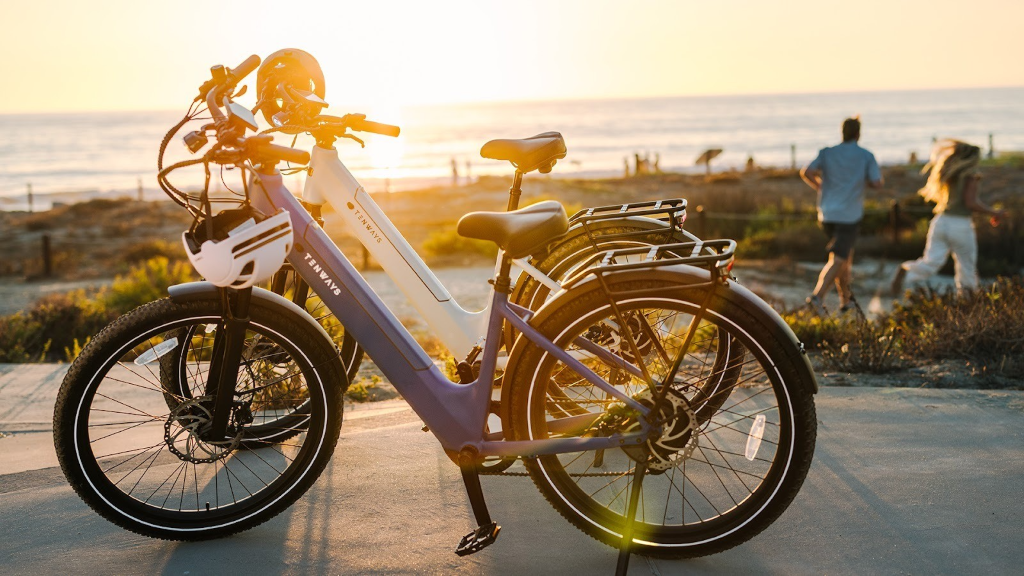







WhatsApp has started testing a companion app for the Apple Watch, reports WABetaInfo. This app allows Apple Watch users to view messages and media in their WhatsApp chat list, send new messages without waiting for a notification, and send message reactions using emojis. Additionally, users can send audio messages and dictate messages using voice input. However, it's worth noting that the Apple Watch still needs to be connected to an iPhone with WhatsApp installed for users to do everything we mentioned above, because this app is a companion app rather than a standalone...

A new report by Omdia is out today and it crowns Samsung as the winner of the smartphone sales game in the third quarter (July to September). The Korean company shipped 60.6 million devices for a 19% market share, growing 6% over Q3 2024. Apple is second with 56.5 million shipments and 18% of the pie, growing 4% from the year-ago quarter. Xiaomi is in third with 43.4 million shipments, 14% market share, and a 1% growth year-on-year (YoY). Transsion (owner of Infinix, iTel, and Tecno) is in fourth with 28.6 million shipments, 9% market share, and the biggest YoY growth of the top five at...

Earlier this month, the Poco F8 Ultra got certified for sale in Thailand by NBTC, and today the same has happened to the Poco F8 Pro. This is rather interesting because the F7 Pro and F7 Ultra only launched in March, and we're barely seven months removed from that moment. And yet, these certifications came much earlier than they did for the F7 series, which strongly implies that we'll see the F8 Pro and F8 Ultra getting official way sooner than next March. And since they've been certified very close to each other, we're assuming they will launch together just like their predecessors did...
Samsung will launch the Galaxy A57 in 2026, but the phone has just shown up on the One UI test portal. This development hints at an early release of the smartphone, but it’s not likely to happen until March 2026.
Galaxy A57 appearing on the One UI test portal reveals Samsung has started the firmware development. The 1st build version, as spotted by Koram_Akhilesh, is A576BXXU0AYJ7 that belongs to the Global version.
Apart from the version number, the software server hasn’t revealed any other details. However, the smartphone is highly likely to launch with Android 16-based One UI 8.5, following the upcoming Galaxy S26 flagship lineup.
One UI 8.5 is being developed with tons of UI changes and new features. The company has just begun iOS 26-like Glass UI testing, which brings a significant overhaul to the entire design language on Galaxy devices.
Galaxy A57 could be powered by Samsung’s in-house Exynos 1680. The chipset is said to feature an Xclipse 550 GPU, based on AMD architecture. It will bring notable improvements over the Exynos 1580 used in the A56.
Earlier, the device was spotted on the IMEI database with the SM-A576B/DS model number. The listing confirmed support for dual SIM. We may also see improvements in the camera hardware, but details remain unknown.
Samsung brought its premium Galaxy A phone to the US this year. While it’s not the bestseller, it’s a decent alternative to Apple and Google’s similar offerings. The company may also launch the Galaxy A57 in the US next year.
The post Galaxy A57 phone shows up on One UI test portal appeared first on Sammy Fans.
Samsung reiterated its pledge to become an AI-driven company to survive global tech turbulence. The company is totally ready to reinvent its innovative approach and future plans around AI (artificial intelligence).
The company’s semiconductor chief repeated that Samsung is actively focusing on ramping up its competitiveness in the AI sector. Key officials see artificial intelligence as a light of hope amid external business uncertainties.
Samsung developed a Gauss model that is being used by employees internally. The company’s Galaxy AI and evolving feature suite have become a new growth engine. Now, AI is aimed to be integrated into Samsung inside out.
Jun said Samsung needs to become an “AI-driven company” as the company stands at a critical point in the wake of external uncertainties.
Top officials have made claims that Samsung won’t leave making any effort in integrating its technology and artificial intelligence. It shows a rock-solid commitment to grow like the AI is growing to stay ahead in competition.
Vice Chairman Jun Young-hyun said:
The AI sector has already demolished boundaries among industries to make a new world.
These remarks were made during an event organized to celebrate the 56th anniversary of Samsung Electronics. This is not the first time either that the Korean tech giant has vowed to go all-in on artificial intelligence.
The post Samsung says it’s ready to reinvent itself around AI appeared first on Sammy Fans.
BMW and Solid Power join Samsung SDI to test its all-solid-state battery in their electric vehicles. It’s a major leap toward the future of next-gen EVs as the battery technology is expected to be adopted by mobile devices, too.
Samsung is rumored to install its all-solid-state battery technology in wearable devices like watches. Compared to phones, smartwatches will be less difficult to commercialize the new battery and verify its reliability.
Well, Samsung SDI’s latest announcement says it will jointly pursue a technology verification project with German premium finished-vehicle brand BMW and US battery material specialist Solid Power to integrate all-solid-state battery into EVs.
Samsung SDI, BMW, and Solid Power have also signed a trilateral business agreement, which focuses on the development and demonstration of all-solid-state batteries.
The Korean tech giant will utilize the solid electrolyte developed by Solid Power in its all-solid-state battery cells. The new battery tech with enhanced energy density will be supplied to BMW, which will develop modules for EV usage.
All-solid-state battery replaces the liquid electrolyte found in lithium-ion batteries with a solid electrolyte. As a result, the next-gen battery delivers superior safety and can achieve a higher energy density.

Via – Chosun Biz
It will significantly enhance the electric vehicles’ driving range. It all will come in the battery pack having the same size as a lithium-ion battery. The test project will decide when the new battery will roam on the road inside EVs.
All-solid-state battery would take some time to be installed in mobile devices. It would take years to evaluate the performance and reliability of the solution, but the silicon carbon battery doesn’t seem much away from Galaxy devices.
The post Samsung’s all-solid-state battery moves from prototype to test track appeared first on Sammy Fans.





Quick question - which is safer? Android or iOS? A lot of people would instinctively pick the latter, and argue that it's Apple's 'walled garden' approach that makes it so - in fact, Apple itself keeps saying something like that every time the EU is trying to make it open up some other part of its ecosystem. But things are not always what they seem. And at least in one specific way, Android is actually safer than iOS. We're talking about protection from scams. A YouGov study says iOS users are 65% more likely than Android users to report receiving three or more scam texts in a week, while...

Today WhatsApp has announced that it's started supporting passkey-encrypted backups. What this means in practice is that you can use your fingerprint, face, or screen lock code to encrypt your WhatsApp chat backups, instead of having to resort to memorizing a password or a "cumbersome 64-digit encryption key", WhatsApp says. The company goes on to explain that "with just a tap or glance, the same security that protects your personal chats and calls on WhatsApp is applied to your chat backups", so they are always "safe, accessible, and private". The feature is expected to roll out...

Maps is one of Google‘s most convenient and useful services. Street View, one of its most popular features, is extremely popular. With a few quick clicks, we can virtually drop into any neighborhood, scouting a vacation rental or checking out a new restaurant. But that same convenience comes at a cost to privacy: anyone in the world can virtually stand on the curb outside your home. Fortunately, there is a way to ask Google Maps to blur, or “ghost,” your home. This is ideal for homeowners uncomfortable with this level of exposure.
This action is not about deleting your home’s existence from the map. However, it will minimize the information available to strangers.
Here are the two primary ways to request a permanent blur. You can do it from your computer or the mobile app. However, one of the two methods is simpler and more convenient.
Google Maps is available on every mobile device. That said, the process for requesting a blur is significantly easier and more precise from a web browser on a desktop computer.
This action will take you to a dedicated form where you must define exactly what needs blurring. Use your mouse and the zoom controls to adjust the image view. You need to ensure the red and black box clearly contains your house, driveway, or any other private object you want hidden. You then should select the reason for the blur—specifically, Your Home.
While slightly more challenging for precise framing, the mobile app (iOS or Android) allows you to submit the request on the go.
Google requires that only the property owner or tenant submit a blur request. This is because the decision is final and irreversible. Once Google approves the request and processes the blur, that digital distortion is permanent and will apply to all future Street View updates. Therefore, you must be absolutely certain about your choice before moving forward.
After providing a few clarifying details and a valid email address (necessary for status updates), submit the form. Google will review the report and respond via email, though the processing time can vary from a few days to a few weeks. By taking these steps, you successfully regain more control over your home’s digital footprint.
The post How to Permanently Blur Your Home on Google Maps Street View appeared first on Android Headlines.

The massification of generative AI has intensified concerns regarding the authenticity of digital content. This is especially true for news reporting and broadcasting. With that in mind, Sony is expanding its verification technology with a solution designed to confirm the integrity and origin of video.
This initiative provides professionals with the means to verify content recorded on specific Sony cameras. The solution implements the C2PA (Coalition for Content Provenance and Authenticity) standard, an open framework designed to establish the provenance of digital content. Sony is a member of the C2PA steering committee and integrates its standards directly into its video workflow.
The process begins with the camera itself. Users must install a paid digital signature license on a supported Sony camera. Once installed, the camera attaches a digital signature and metadata to the video file during recording. This signature allows a dedicated verification site to confirm two key facts: that the content originated from a specific Sony camera and whether the file has been manipulated since its capture.
The technology incorporates an additional layer of verification. Where supported, the system can utilize 3D depth information captured by the camera to increase the accuracy of the verification. This mechanism helps confirm that the video content was recorded of actual, existing subjects.
The verification process is designed to integrate into the fast-paced news environment. For broadcasters dealing with large video files, a “trim function” allows them to quickly extract and verify specific segments of the footage while maintaining the digital signature. This process notably reduces the time necessary for authentication. Furthermore, Sony’s cloud platform for video production, Ci Media Cloud, will display the C2PA-compliant digital signature information.
Sony is rolling out the new video verification capability to a list of professional models. The list includes the Alpha 1 II, Alpha 9 III, FX3, FX30, and the latest PXW-Z300. Sony plans to continue expanding support to more interchangeable-lens and professional camera models throughout 2026. The Alpha 7R V, Alpha 7 IV, Alpha 1 models will arrive in November 2025 or later. Lastly, the Alpha7S III cameras will have to wait until 2026.
The post Sony Cameras Now Use 3D Depth to Verify That Videos Are Not AI appeared first on Android Headlines.
At least one historical daguerreotype was among a set of more than 1,000 artifacts that were stolen from the Oakland Museum of California earlier this month.



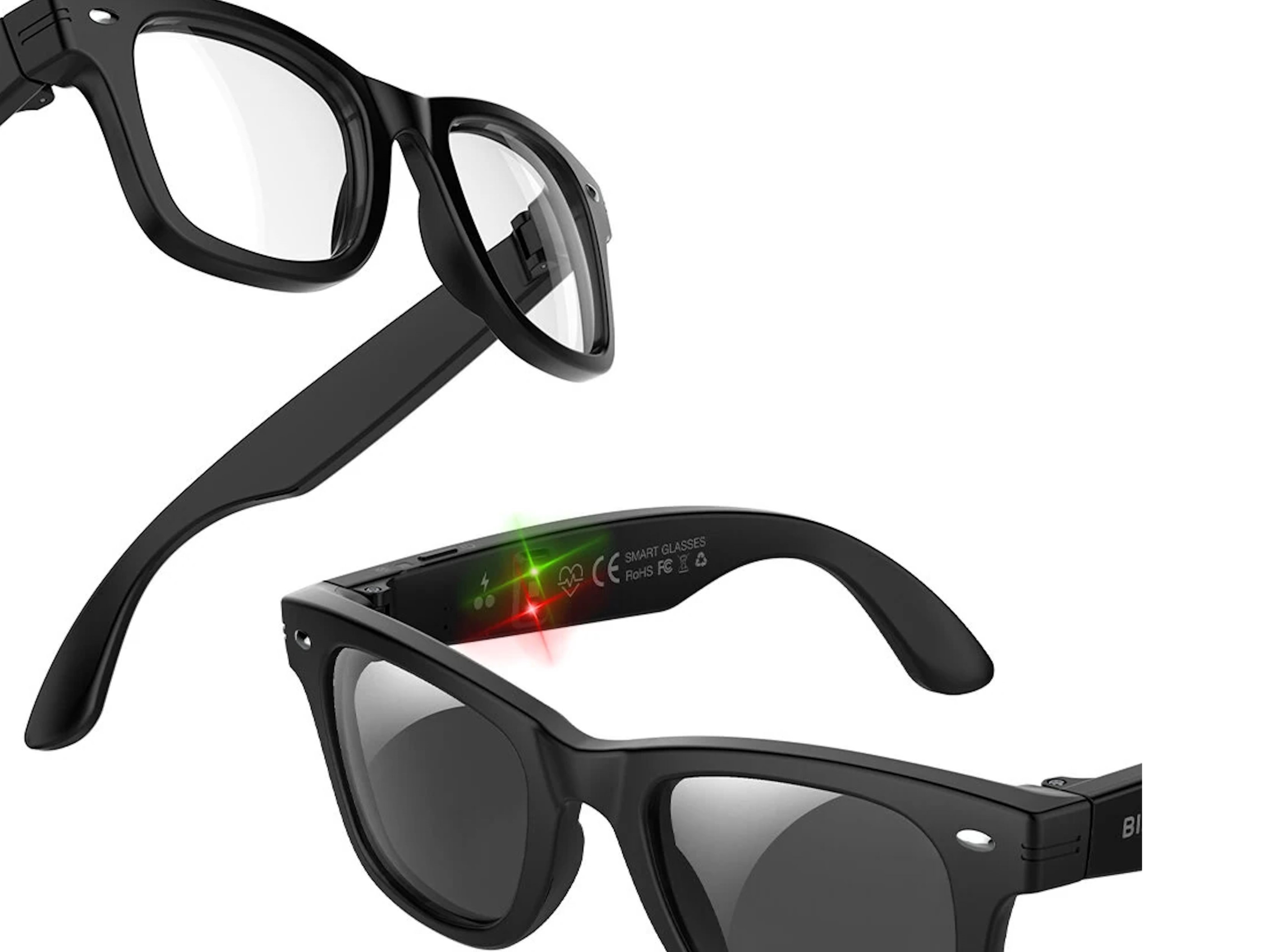

Apple unveiled the M5-powered iPad Pro earlier this month, and now the folks over at iFixit have disassembled one in order to take a look at its insides and ascertain how repairable it actually is. It's the 13" model, by the way, which is just 5.1mm thick. That thinness in itself makes repairs harder, since every component needs to be insanely tightly packed, with the screen mounted flush against the internals. And the only way to get in is through the screen, unfortunately. Obviously, taking the screen off without cracking it isn't easy to do, but at least Apple is providing repair...

Smartphone manufacturers and consumers have always demanded a strong performance chip, but at an affordable cost. To support this idea, Qualcomm is planning a useful change for the upcoming year. Instead of pushing only its most expensive Snapdragon 8 Elite Gen 5 chip, the company will also offer a more budget-friendly option called Snapdragon 8 Gen 5, and in a new leak, the chipset is confirmed to share the same CPU cluster and lithography as the top-end model.
The Snapdragon 8 Gen 5 chipset is made specifically for users who want high-end performance but at a lower cost. It is built on TSMC’s advanced 3nm N3P tech. It shares the same CPU cluster and lithography as the flagship 8 Elite Gen 5 SoC. Furthermore, it has eight CPU cores in total, with two high-performance cores and six power-saving cores. The performance cores run at 3.80GHz while the power-saving ones run at 3.32GHz.
For the first time, Qualcomm is bringing its Oryon CPU design into a non-flagship chip with this processor. The company has used the Adreno 840 CPU, which is slightly older but still powerful. It runs at 1.20GHz and is pretty much capable of running almost all the high-end mobile games.
Early benchmark report shared by Digital Chat Station shows that the Snapdragon 8 Gen 5 performs very close to the older flagship chips. It is able to achieve 3.3 million points on AnTuTu. On Geekbench, it scores above 3,000 points for single-core tests and above 10,000 points for multi-core tests. It also crosses 100 frames per second in the GFXBench Aztec 1440p test. These numbers are strong enough to run demanding apps and games smoothly.
The post Snapdragon 8 Gen 5 to Feature Similar CPU Cluster to Snapdragon 8 Elite Gen 5 appeared first on Android Headlines.

The United States has signed important new technology deals during President Donald Trump’s visit to Asia. As per an agreement, Japan, South Korea, and the US will help each other develop their technologies, including AI chips. The main focus areas of the deal are artificial intelligence, semiconductors, quantum computing, 6G, space research, biotech, and more.
The United States, Japan, and South Korea want to join forces to build better technology for the future. Japan is already strong in terms of robotics, material science, and other tech, while South Korea is a leader in memory chips and advanced manufacturing. With the newly signed agreement, the countries promise to share knowledge, support each other’s industries, and stay ahead in global competition.
The major part of the agreement is to set common technology rules and standards. The US and Japan will work together to expand AI exports, protect sensitive technology, and develop policies to support technological growth. At the same time, the United States and South Korea will focus on reducing hurdles for tech companies, including making data storage and data movement easier across borders.
One of the key parts of the agreement is to help the US reduce its reliance on China for importing technology and its materials. By strengthening ties with Japan and South Korea, the US wants to build a secure and stable supply chain for chips, AI systems, and future communication networks. All three countries want to lead in setting rules for new technologies like quantum computing.
That’s not all. The countries will also help each other support research groups, improve cross-border technology sharing, and build a safe environment for new technologies.
The post US, Japan, and Korea Unite to Lead AI Chips Race appeared first on Android Headlines.

For some years now, Always-On Display (AOD) has become a fundamental feature for millions of Android phones. It allows you to quickly check key data like the time, weather, and new notification icons without consuming much battery. However, Google seems ready to evolve Always-On Display in Android 17 with a new capability called Min Mode.
This feature seems to want to noticeably change how we interact with our devices while they are “idle.” It could move the AOD beyond simple status updates to display persistent, full-screen interfaces from our favorite applications.
As spotted by Android Authority, Min Mode is not replacing the standard AOD. Instead, it is a separate, dedicated display state. It works by using the same low-power technology as the regular AOD. This ensures the screen brightness and refresh rate remain limited to preserve battery life.
The key breakthrough of Android 17’s Min Mode is allowing apps to persist on the Always-On Display. When you set your phone down, instead of reverting to the clock, your phone can transition to a special, full-screen interface provided by the active app. For this to work, developers must register a stripped-down component, a “MinModeActivity,” in their app’s code. This activity will run in the AOD’s resource-constrained environment.
This development turns the AOD into a mechanism for enabling “persistent live activities.” Apps can now offer highly essential, minimalist information without forcing the user to fully wake the device.
Google itself appears to be the first to adopt Min Mode. The company is reportedly focusing its efforts on the Maps application, a perfect testing ground for the feature.
Technical evidence suggests Google Maps is preparing a highly specialized, power-saving interface. This monochrome mode strips away nearly all unnecessary visual elements to display key data bits—like turn-by-turn navigation—even when your phone appears “off.” This is a huge benefit for anyone using GPS on a long drive, where the continuous use of location services and a bright screen typically drains the battery quickly.






Min Mode is likely to be introduced as a new developer API in Android 17. Developers of fitness apps could display live workout metrics, and music apps could show simple controls and track titles. Smart home apps could also offer quick, glanceable status updates.
Ultimately, the success of Min Mode will depend on developers using restraint, focusing on surfacing the one or two things the user genuinely needs while the device is at rest. In other words, the industry must strike that balance between utility and power efficiency. If so, Android 17 has the potential to reshape the definition of an “idle” phone.
The post Android 17 Will Put Full-Screen Apps on Your Always-On Display appeared first on Android Headlines.
Google debuted the Pixel 10 series back in August at its Made by Google event. The latest smartphone series has been praised for AI and other core features that elevate the user experience in daily usage. It’s worth noting that new devices are susceptible to bugs, and the Pixel 10 series has had its fair share of them. The list of bugs doesn’t seem to end, as a new report suggests that the Pixel 10 series phones have a persistent speakerphone button lag.
The news comes via folks at PiunikaWeb, who spotted posts on Reddit and Google’s support forum related to the issue. Many report that the toggle for speakerphone doesn’t work during calls. Those who got it working say that there’s a significant delay in the response. As a result, one has to tap the toggle multiple times to get it to work.
One user, explaining the issue, notes, “I have a new Pixel 10 Pro XL and when the phone calls the speaker button to change from ear to sound, the speaker takes a few taps to respond.” While another user says that the possible workaround is to double-tap the toggle. No wonder users are saying this is a frustrating issue.
It’s worth noting that Pixel 9 series users also reported the speakerphone button bug. The issue was the same back then as well. Many suggest that the issue stems from the Google phone app and not the latest Google Pixel phones. Apparently, the issue doesn’t affect users when using third-party calling apps. The report also mentions that users who toggle the speakerphone from the call notification don’t find any issue at all.
Interestingly, Google knows about the Pixel 10’s speakerphone button bug, but hasn’t fixed it yet. An IssueTracker report dated August 29 mentions this problem. However, at the time of writing, it has been closed by the company, noting a lack of “actionable information.” We can only hope for now that Google fixes this issue.
The post Pixel 10 Series Users Are Still Facing The Speakerphone Button Bug appeared first on Android Headlines.

The notification panel on modern smartphones often feels like a digital jungle. It is a mix of crucial alerts, persistent updates, and low-priority spam. Well, Samsung is finally addressing this chaos in its next major update, One UI 8.5, by introducing a smart feature designed to bring order to the clutter: Priority Notifications.
This isn’t the first time we’ve heard about this improvement. A leak this week revealed that the company was working on the new feature. Fortunately, we didn’t have to wait long for a proper first look.
According to SammyGuru’s report, Priority Notifications on One UI 8.5 will use artificial intelligence—likely Galaxy AI—to ensure you never miss a truly important alert again. The concept behind the feature is straightforward: “Notifications that may be important will appear above other notifications to make sure you don’t miss them.” However, the implementation is what matters most.
Instead of just reorganizing the stack, Priority Notifications actively highlights the important ones. In the leaked images, these prioritized alerts are stacked cleanly at the very top of the notification panel.

They also feature a subtle glow and adopt the gradient visual style commonly associated with Galaxy AI features. This visual distinction ensures that even in a moment of hurried glance, the user immediately recognizes which alerts demand their attention. Plus, Samsung gives users the control to choose which apps qualify for this prioritized treatment.
The integration of on-device intelligence is key to the system’s speed and security. All content processing used to determine notification priority happens directly on the device. This ensures that the system works efficiently without sending sensitive notification data to external cloud servers.
Ultimately, Priority Notifications is a subtle but significant quality-of-life improvement. By using AI to intelligently sift through the noise, One UI 8.5 promises to make the notification panel a more useful tool, rather than a source of distraction and missed messages.
Regarding One UI 8.5, leaks suggest the beta program will start soon. However, recent reports indicate a slight delay related to the potential halt of the Galaxy S26 series launch.
The post Samsung One UI 8.5 Leak Shows Priority Notifications in Action appeared first on Android Headlines.

Samsung Health is making it easier for people to have a visit with their doctor using a new virtual appointment feature, the company has announced. Virtual doctor visits aren’t new in general, but they are new to Samsung Health users. Samsung is partnering with HealthTap to bring this feature to the app, and it’ll allow users to do everything from calling their doctors to booking a consultation and having a virtual visit.
This one-stop shop feature of sorts should be particularly useful to anyone who may not be able to have an in-person consultation for any reason. It’s also one of convenience. Calling and booking a consultation to see your doctor in person takes time. Sometimes you have to wait on hold.
Even if that process goes quickly, driving to the doctor’s office and having the meeting in person could be a time-consuming task. Depending on where you live, it could also be a slog having to drive all the way across town just to get to your doctor. Now, Samsung Health users can skip all that and get the same thing done. It’s not stated that a Galaxy device is needed for access, and Samsung Health is available outside of Galaxy devices, so this should be for anyone using Android.
While Samsung likely plans to expand on this, its partnership with HealthTap will begin with users in the US. Neither Samsung nor HealthTap mentions a timeframe for the expansion of this offering outside of the US. Additionally, there’s no mention of what regions may see this kind of thing next. That being said, something like this also probably has to go through regulatory approvals. So, availability outside the US probably depends on each region’s regulations.
According to the announcement, users will be able to open up the Samsung Health app, view the virtual visit options, and select one that meets their needs. From there, they will need to complete a short intake before they can connect for a video consultation. All of this happens within minutes, however, so the process appears to be fairly quick.
It’s also stated that users can read the notes and follow-up instructions from the consultation within the app after the virtual visit is over. The one thing to keep in mind is that consultations happen with HealthTap’s network of licensed doctors. Your doctor may not be included in this network.
The post Samsung Health now lets you have a virtual sit-down with your doctor appeared first on Android Headlines.

The current browser landscape seems clearly defined. There are names we all know, like Chrome and Firefox, in addition to many other alternatives. However, a new—and unexpected—big tech company is entering the segment: Samsung. The company already has its own browser for mobile devices running One UI. Now, they have announced a desktop version of Samsung Internet.
Samsung Internet is now available in beta for Windows users in the US and Korea. The move is part of the firm’s strategy to build a cohesive Galaxy ecosystem that spans your phone, tablet, and computer. In fact, Samsung officially describes its desktop browser as part of its “vision for ambient AI.”
To realize its vision, Samsung recognized it needs control over the browsing experience on the PC. Other major companies have already taken significant steps in integrating AI into their browsers. We have the Copilot experience in Microsoft Edge, Perplexity’s Comet, OpenAI’s new Atlas AI browser, and even the upcoming AI-powered revamp of Google Chrome. It seems that the next thing we’ll see in this segment will be the Galaxy AI suite running on Samsung Internet for desktop.
For users already invested in the Galaxy ecosystem, the initial focus will be cross-platform functionality. The new desktop browser supports synchronization of key data, including browsing history, bookmarks, and login information via Samsung Pass. This feature aims to smooth the transition for Galaxy users who need to resume a session when moving between their phone and PC. It will provide the kind of integration common among other major tech ecosystems.

Although AI integration will be deeper in the future, there are already some key AI-powered features. The browser includes Browsing Assist, a feature driven by Galaxy AI that provides webpage summary and translation capabilities. This tool will help users manage information overload, a core requirement for any modern “AI browser.” Furthermore, Samsung maintained the privacy measures from the mobile version. The brand implemented “Smart Anti-Tracking” to block third-party cookies and a Privacy Dashboard for managing security controls.
Ultimately, the new Samsung Internet beta on Windows is part of its strategy to boost the company’s own ecosystem and ensure its AI strategy can function end-to-end. The browser is currently available as a beta on Windows 10 and 11. Plus, only users in the US and Korea can access the tool for now.
The post Samsung Internet Launches on Windows: Joins the AI Browser Race appeared first on Android Headlines.

Xbox hardware sales are, suffice it to say, in a bit of a downward spiral. This probably doesn’t come as a shock to most, but it wasn’t really put into perspective until this week, following Microsoft’s latest earnings call. Microsoft is still planning to continue putting out Xbox hardware, but the company has continued with a drastic shift in how it’s approaching the console space.
Earlier this week, a report claimed that the next-gen Xbox is actually going to be a high-end PC running on Windows with an Xbox UI layered on top. This decision may very well have been made due to how things have been going in terms of hardware sales. It’s also a continuation of the Xbox Everywhere strategy that more or less began with the rollout of Xbox cloud gaming. A feature that allows users to stream Xbox titles across various screens, including phones, smart TVs, and PCs. In other words, Xbox is not the same as it used to be. Gone are the days when, if you wanted to play Xbox games, you’d have to buy an Xbox console. With the most recent figures of the brand’s hardware sales, it’s easy to see why.
A decrease in hardware sales by 29% is by no means a small amount. That being said, it might not be that bad if this were the first time sales had dipped. However, the declining hardware sales have been a trend for Xbox for basically the entire past year. As reported by The Verge (via Microsoft’s earnings call), hardware sales were down for Q4 2025 by 22%, while the first two quarters of 2025 each saw a dip of 29%. It’s a worrying trend that, for better or worse, has caused Microsoft to make some changes to what Xbox is and how it plans to increase revenue.
These numbers are likely at least part of Microsoft’s decision to increase the price of Xbox Series X hardware across the globe. For reference, the Xbox Series X now starts at a price of $599.99. This is for the 1TB model with no disc drive. If you want the disc drive, it’s $649.99, and the 2TB version costs $799.99. A full $50 more than Sony’s 2TB PS5 Pro. Microsoft also more recently increased the price of Xbox Game Pass Ultimate, pushing the monthly subscription cost up to $29.99 from its previous $19.99 price tag. Everything Xbox is more expensive, and that likely isn’t changing, since the next-gen console is going to be a “very premium and high-end” experience.
The post Xbox isn't doing great in terms of hardware sales appeared first on Android Headlines.
Google has announced that its Clock app will no longer support non-Pixel smartwatches, including the Samsung Galaxy Watch. This means that if you own a Galaxy Watch or another Wear OS watch, you won’t be able to download the Clock app from the Play Store anymore.
If you already have the app installed on your Samsung Galaxy Watch, don’t worry, as you can still use it. However, the app will not receive any updates in the future. Only Pixel Watches will continue to get updates, and the Clock app will come pre-installed on these devices.
This change comes after users noticed issues with the app last month. Galaxy Watch and OnePlus Watch owners saw that the Clock app was missing from the Play Store, and for those who already had it, the Play Store said their device was not supported. Google has now confirmed this is not a bug, but an intentional change.
![]()
Google explains that most smartwatch brands already include their own clock apps, so a separate Google Clock app is not necessary for non-Pixel watches. For users who really want the Google Clock app on a Galaxy Watch, there is an option to sideload it. However, this has limitations as the app may not sync correctly.
So, if you own a Wear OS based Samsung Galaxy Watch, you will need to rely on the watch’s built-in clock app or find another app from the Play Store. Pixel Watch owners are unaffected and will continue to get the Clock app and updates as usual.
The post Google Clock app no longer available for Samsung Galaxy Watch appeared first on Sammy Fans.
Samsung’s One UI on Android 17 is expected to bring a big upgrade to the Always-On Display (AOD). Most Android phones already have AOD, which keeps your screen on to show the time, notifications, and other small details. While it is useful, it only shows limited information and uses some extra battery.
With Android 17, Google is working on a new feature called “Min Mode.” This will let apps show their own simple, full-screen views on the AOD. Instead of just a clock or notifications, apps could display more useful information while keeping battery use low.
Min Mode will use the same low-power mode as regular AOD, keeping the screen dim and simple to save energy. Apps that want to use this feature will need to set up a special screen called “MinModeActivity.” When the phone is idle, Android will show this screen on the AOD.

Image via Android Authority
To prevent screen burn-in, it will move pixels slightly every minute. This allows apps to provide useful information at a glance without draining the battery.
Google Maps is one of the first apps likely to use this feature. It is preparing a low-power navigation mode that removes most buttons and uses a black-and-white display. The mode will only work in portrait orientation, which fits the AOD style.
Min Mode could eventually be available to other apps through a developer tool, allowing more apps to show glanceable information while the screen is off. The feature is expected to launch with Android 17, which makes AOD much smarter and more interactive.
The post One UI built on Android 17 to bring massive AOD upgrade appeared first on Sammy Fans.
Samsung Galaxy S22 users in the US are starting to receive their last major Android update, One UI 8. Verizon recently updated its support pages to show that Galaxy S22, S22+, and S22 Ultra phones bought from the carrier can now download One UI 8. This update is based on Android 16 and includes the October 2025 security patch.
Now, Verizon Galaxy S22 users in the US can officially download it. Some users on AT&T are also reporting that their phones have received the update. However, it’s still unclear when unlocked devices or phones from other carriers will get it.
Users of the Galaxy S22 series can verify the One UI 8 update in the US via the One UI build versions given below.
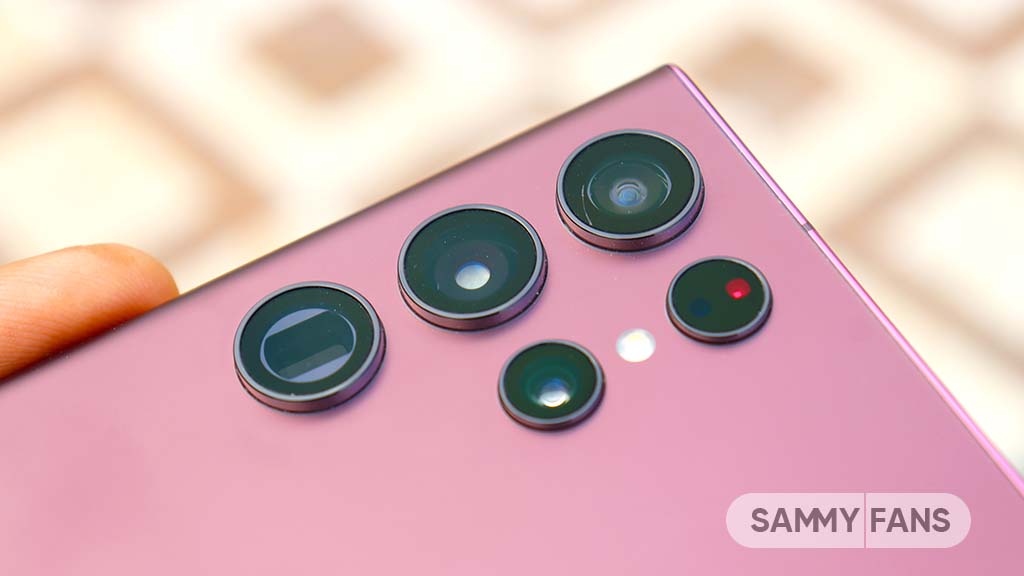
One UI 8 is the Galaxy S22 series’ fourth and final major Android update. Samsung’s newer Galaxy S24 phones now come with seven years of Android updates, but the S22 series will stop at four. This update brings new Android features, improvements to Samsung’s One UI interface, and the latest security protections.
Users who receive One UI 8 can now enjoy a smoother experience, updated features, and better security. If you have a Galaxy S22, it’s important to check your settings to see if the update is available. Remember to back up your important files and keep your phone charged before starting the download.
The post US Galaxy S22 users can download Samsung’s One UI 8 update appeared first on Sammy Fans.
Google is making a big change for Android users in the US. Starting October 29, 2025, people will be able to download apps and make payments outside of the Google Play Store. This change comes after a court order in Google’s legal case with Epic Games, which has been fighting for more freedom for app developers.
Until now, Google did not allow developers to tell users about other places where they could buy apps or make payments. Developers also couldn’t share links to websites offering cheaper prices or alternative payment methods.
With the new rules, they can now do all of that. This means users may find better deals, discounts, or even different versions of apps outside the Play Store.

Image via Google
Developers can use their own payment systems or other services like PayPal or direct credit card payments. The court’s order will last until November 1, 2027, giving users and developers more flexibility for the next two years.
Google says it still wants to keep users safe and will continue to follow its SAFE principles. The company promised to protect user data and security while following the court’s decision.
Also, it said that these changes apply only to US users for now. But it will share more updates in the future based on feedback from both users and developers. This new policy is a big win for both sides. Developers will have more control over how they sell their apps, and users will have more choices and possibly lower prices.
The post Google gives US users more choice and freedom on the Play Store appeared first on Sammy Fans.
Alongside new Sony a1 II and a9 III firmware updates, Sony has bolstered its commitment to content authenticity, extended its verification technology to video content recorded with select Sony cameras. It is the industry's first C2PA-compliant camera-authentication solution for video.
Citing budgetary deficits, Indiana University ended the print edition of its student newspaper and fired the director of student media, igniting national debate over censorship.
Today Affinity announced that it was going free to use for everyone, a move that probably surprised a lot of you because it was certainly unexpected to me. However, the more I think about it, the more it makes perfect sense.
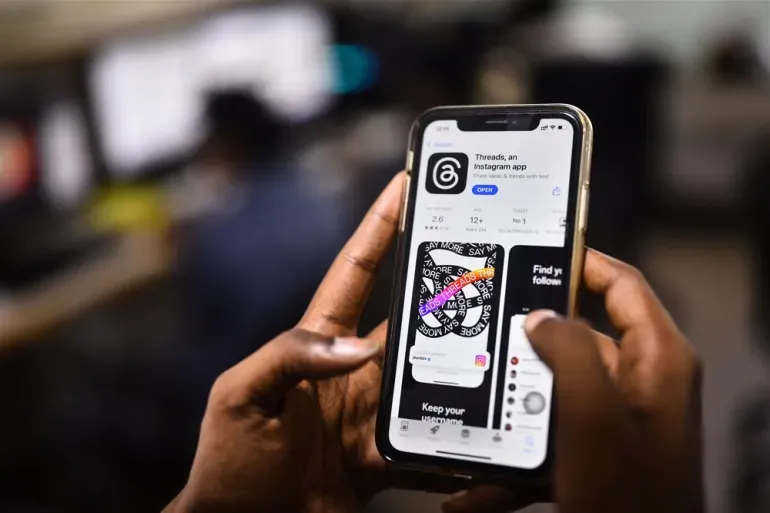

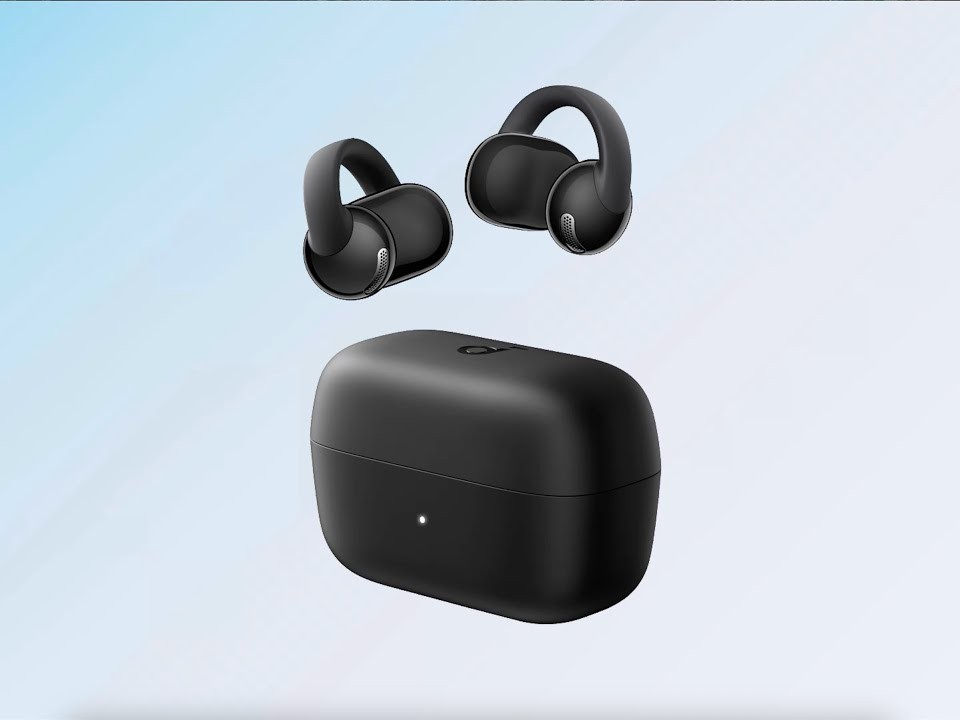




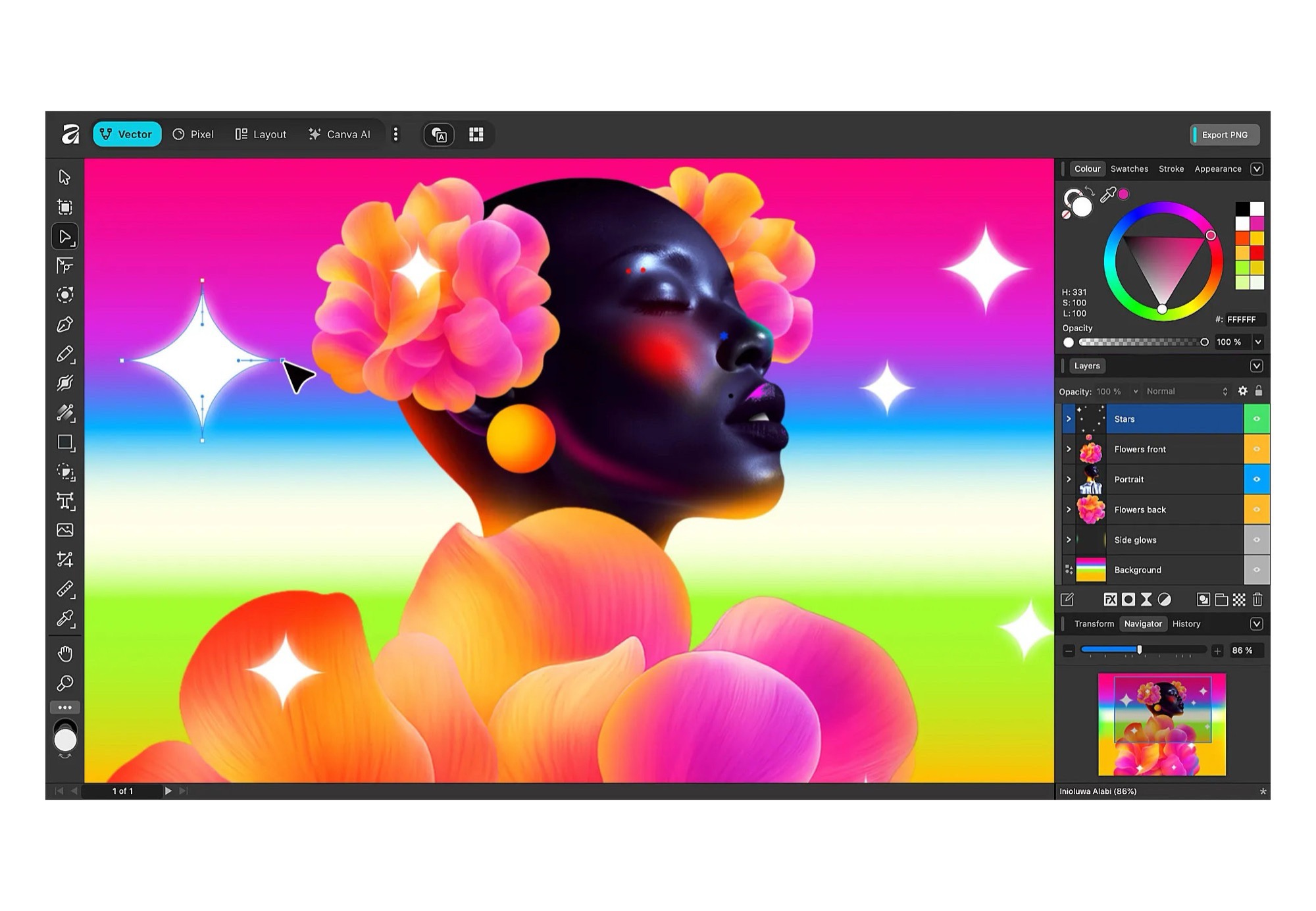



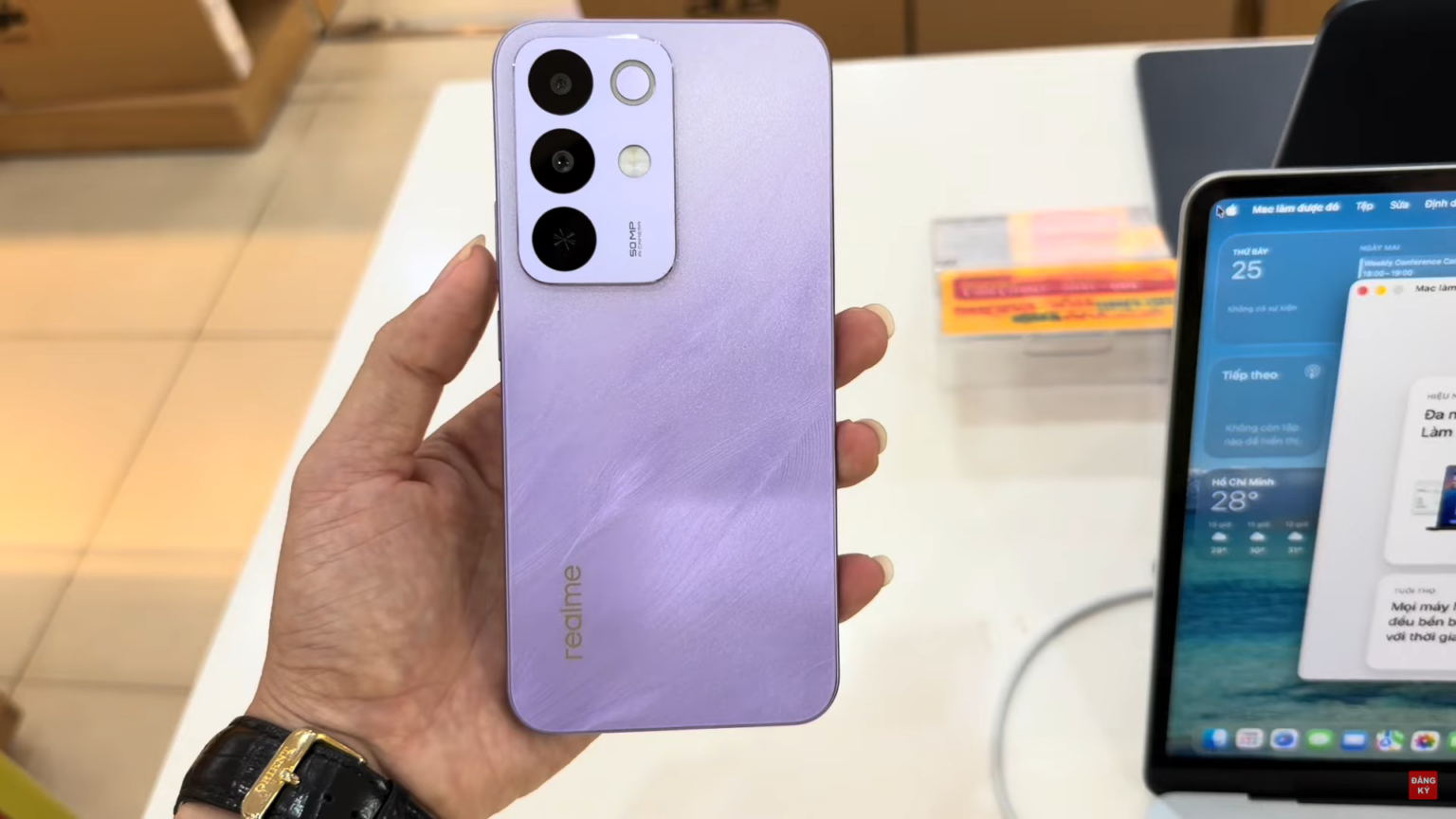
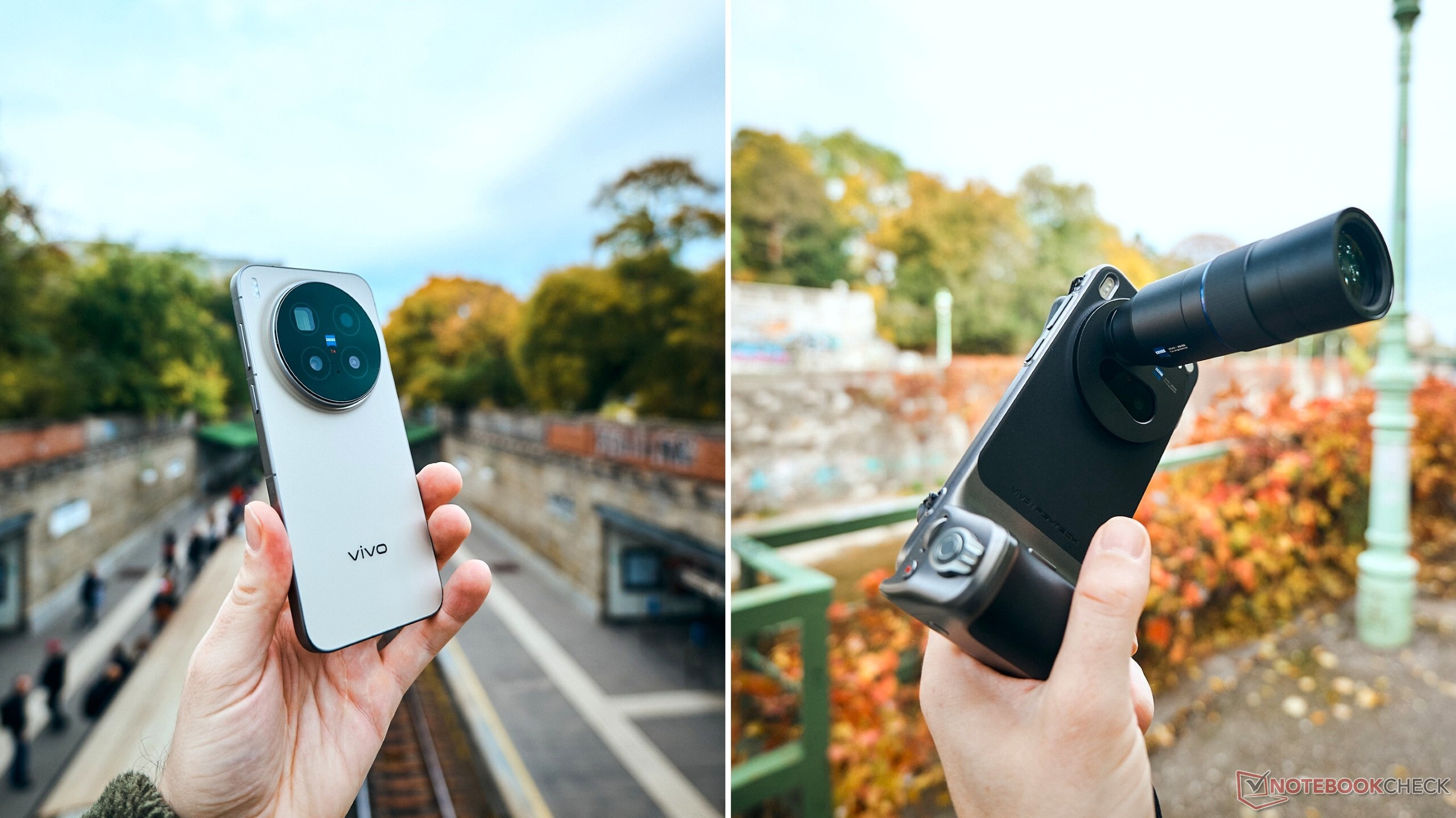
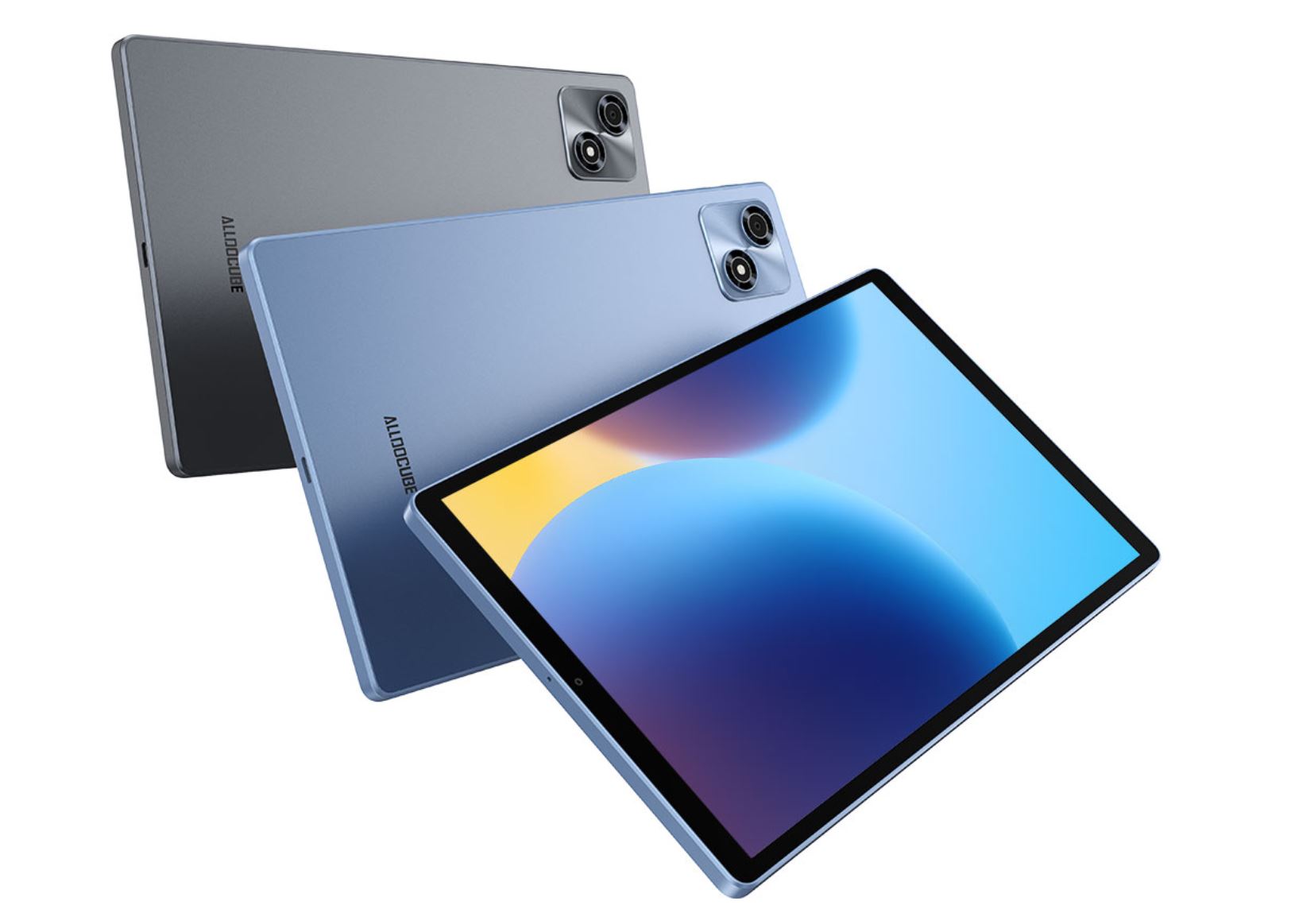







Tariffs have been a major topic in the tech world this year, with the ongoing US-China trade war, but it seems we’ve reached a turning point. President Trump came to an agreement with Chinese peer Xi Jinping to reduce tariffs on Chinese goods from 57% to 47%. In addition, China is suspending its restrictions on US rare-earth mineral imports for one year. This latest development is a breath of fresh air as the Trump administration’s tariffs on Chinese goods reached 145 % at their peak earlier this year. This is certainly good news for Apple, which was one of the companies that suffered...

Last month, we used a Realme GT8 Pro prototype to run early benchmarks of the Snapdragon 8 Elite Gen 5. The phone was officially unveiled last week and is preparing to launch globally next month, so we are ready to do some proper benchmarking. Even better, in the meantime we have reviewed several competing flagships, so we can have a better look at the key chipsets for the next twelve months. There are those that run on the same Snapdragon 8 Elite Gen 5 like the Xiaomi 17 Pro Max. Others picked the Dimensity 9500, e.g. the vivo X300 Pro. And there’s the Apple A19 Pro inside the iPhone 17...

We’ve seen an influx of E Ink devices from brands like Onyx with its Boox Palma 2 and P6 Pro and now Bigme - an established player in the E Ink device market has announced its HiBreak S smartphone. HiBreak S comes in a monochrome E Ink version (left) or a Kaleido 3 color E Ink panel (right) It comes in two versions, with one sporting a traditional monochrome E Ink display and a second version featuring a Kaleido 3 color E Ink panel. Regardless of which one you pick, they measure 5.84 inches and feature a 24Hz refresh rate and a 36-level adjustable color temperature. The monochrome...

Hisense has launched the E8S Pro TV in China. The model is now on sale, targeting the high-end 4K segment with advanced hardware, gaming-focused performance, and premium audio tuning.

The Hisense E8S Pro is available in three sizes. The 75-inch model features 4,200 local dimming zones, the 85-inch model has 7,020 zones, and the 100-inch version includes 9,360 zones.
The E8S Pro uses a custom RGB-Mini LED backlight system that replaces the typical single-color LEDs with tri-color red, green, and blue light-emitting chips. This design allows more accurate light and color output, eliminating the need for quantum-dot color conversion. The display reaches up to 6200 nits peak brightness through XDR Pro enhancement.
The TV features Hisense’s self-developed Hi-View Engine H7, an AI image processor that performs pixel-level scene recognition, tone mapping, and noise reduction. The panel covers 100% of the BT.2020 color gamut and achieves 108-bit color depth with 99% purity. Hisense claims this setup improves clarity and energy efficiency while reducing harmful blue light by 42%.

The E8S Pro uses a 4K panel with a native 170Hz refresh rate and dynamic support up to 330Hz. It includes four full-bandwidth HDMI 2.1 ports with 48Gbps throughput, along with support for VRR, ALLM, and FreeSync Premium Pro. It also features an AI Game Mode that automatically adjusts picture and latency based on genre.
For audio, Hisense integrates a 4.2.2-channel sound system developed in collaboration with French audio brand Devialet. The system uses a 7.6L speaker cavity and delivers up to 270W of power. It supports Dolby Atmos, DTS:X, and IMAX Enhanced for spatial audio playback.

The TV runs on MediaTek’s MT9655 chipset with 4GB of RAM and 128GB of storage. It includes Wi-Fi 6, Bluetooth 5.4, USB 3.0 and 2.0 ports, Ethernet, AV input, and coaxial support. The TV uses a metallic frame with a 44mm ultra-slim design and a zero-gap wall-mount option.
The 75-inch model is priced at 16,599 yuan ($2,320), the 85-inch model costs 20,999 yuan ($2,933), and the largest 100-inch version is listed at 29,999 yuan ($4,190). It is now up for sale through major online retailers, including JD.com.
In related TV news, Dreame has introduced the V3000 Aura 4K Mini LED TVs featuring 2800 nits peak brightness and Dolby Atmos support. Panasonic has also unveiled the 77Z8BA OLED TV with Dolby Vision, Dolby Atmos, and a 144Hz refresh rate.
For more daily updates, please visit our News Section.
Stay ahead in tech! Join our Telegram community and sign up for our daily newsletter of top stories! 
The post Hisense launches E8S Pro TV with RGB-Mini LED display, 4K 170Hz refresh & Devialet audio appeared first on Gizmochina.

Rockstar’s latest website update has reignited fan theories that GTA 6’s third trailer might be dropping soon — possibly even in early November. The studio hasn’t made any official announcements, but eagle-eyed fans think a few new homepage details could be teasing something big.

The speculation kicked off after fans noticed a refreshed homepage for GTA 6, with one image in particular sparking wild theories. Some believe it hides subtle hints about the next trailer’s release date, continuing Rockstar’s long tradition of cryptic teasers.
According to a post from X user @TREVOR4REAL, the clues point to a November 4 launch of the Trailer 3. The theory hinges on the wristwatch of Jason, one of GTA 6’s main characters — the time shown reads 14:42, which, when the digits are added up (1+4+4+2), equals 11, possibly hinting at November. The same fan also noted that a statue’s shadow in the background looks like the number “4,” further fueling the idea that the trailer might drop on November 4.


Interestingly, this isn’t the first November-related theory to gain traction. Earlier this month, another fan suggested that November 8 could be the date, linking it to the time on Jason’s watch in the second trailer (11:08) and the fact that the first trailer was announced on November 8, 2023.
The timing would make sense from a business standpoint too — Take-Two Interactive, Rockstar’s parent company, reportedly has an investor call on November 6. Dropping a new trailer just before that could be a strategic move to generate buzz and reassure investors about GTA 6’s progress.
Still, these theories remain just that — theories. While the clues are intriguing, Rockstar has kept quiet, as usual. But with the homepage update and mounting speculation, fans might not have to wait much longer to see what’s next for GTA 6, one of the most anticipated games in history.
Don’t miss a thing! Join our Telegram community for instant updates and grab our free daily newsletter for the best tech stories!
For more daily updates, please visit our News Section.
The post GTA 6 Trailer 3 could be around the corner, hints Rockstar’s updated Trailer 2 artwork appeared first on Gizmochina.

The Vivo X300 Pro recently made its debut as the brand’s latest flagship smartphone in China. Now, this model is getting a wider release, with the premium camera phone arriving in Europe along with its exclusive photography kit. So here’s everything you need to know.
Similar to the base Vivo X300, the company unveiled the Vivo X300 Pro in Europe with one major change, which is the battery capacity. It is also seeing a downgrade from a 6,510mAh cell to a 5,440mAh battery in the global variant. But apart from this, you still get a tall 6.78-inch LTPO AMOLED display with a 1.5K resolution, 1.1mm uniform bezels, and a 120Hz refresh rate.

Under the hood, the Dimensity 9500 powers this model, promising smooth performance in gaming, AI tasks, and everyday workloads. The main highlight is still the cameras, which include a 50MP Sony LYT-828 sensor (1/1.28″, f/1.57), paired with a 50MP Samsung JN1 ultra wide (1/2.76″) and a 200MP Samsung HPB telephoto (1/1.4″) for detailed zoom shots. For selfies and video calls, the front houses a 50MP JN1 sensor (with autofocus). Vivo is continuing its collaboration with Zeiss for the camera system on its latest flagships.
Other notable features include Android 16 OS based OriginOS 6 custom skin out of the box, stereo speakers, an IP68 + IP69 rating for water and dust resistance. This time around, Vivo is even introducing its photography kit outside of the Chinese market. This is basically a telephoto lens extender, offering Zeiss 2.35x zoom. This model is also available in only a single 16GB + 512GB storage option, which costs 1,399 Euros.
For more daily updates, please visit our News Section.
Don’t miss a thing! Join our Telegram community for instant updates and grab our free daily newsletter for the best tech stories!
The post Vivo X300 Pro Officially Goes Global With Its Photography Kit appeared first on Gizmochina.

Following its Chinese debut from earlier this month, the Vivo X300 is now hitting the global market. The brand’s next gen flagship smartphones have officially been unveiled in Europe, carrying a hefty price tag and an unfortunate downgrade. So let’s check it out.
The Chinese tech giant’s base X300 model also comes with MediaTek’s latest and greatest Dimensity 9500 SoC. It sports a relatively compact 6.31-inch BOE Q10+ LTPO AMOLED display with a 1.5K resolution, a 120Hz refresh rate, 1.05mm uniform bezels, and an in-display ultrasonic fingerprint scanner. The Chinese variant of the Vivo X300 packed a large 6,040mAh battery pack, but the global version is getting a noticeably smaller 5,360mAh battery in EU.

Although, you still get support for 90W wired fast charging and 40W wireless fast charging. The rest of the specs remain identical as well, so you still get Zeiss triple camera lenses on the rear with three 50MP cameras, and a 50Mp selfie shooter on the front. This model also runs on the Android 16 OS based OriginOS 6 custom skin out of the box. Other notable features include Bluetooth 5.4, IP68/69 rating for water and dust resistance, and dual stereo speakers.
The Vivo X300 was just announced in the European market in a single 12GB + 256GB storage configuration, which costs 1,049 Euros. To recall, the same variant in China costs 4,399 Yuan, which is nearly half the EU pricing. It is also listed in two color options, namely Phantom Black and Halo Pink.
For more daily updates, please visit our News Section.
Tech enthusiast? Get the latest news first! Follow our Telegram channel and subscribe to our free newsletter for your daily tech fix! 
The post Vivo X300 Launches Globally with Premium Price Tag & a Battery Downgrade appeared first on Gizmochina.

DJI has officially unveiled the Neo 2, a compact but highly capable drone. This palm sized drone features various upgrades over its predecessor, high resolution recording, improved stabilization, and much more. So here are all the details.
The popular drone maker just announced the Neo 2 model in its home market of China. This release also arrives just ahead of the DJI Neo 2’s global release, which is tipped for November 13. The Neo 2 is slightly larger and heavier than the original Neo, measuring 151 grams in weight (160 grams with the Digital Video Transmission Module attachment). In comparison, the DJI Neo featured a 135 gram body. But despite the added heft, it offers a similar flight range and speed.

Under the hood, this tiny drone is powered by a 1,606 mAh (11.5 Wh) battery pack and features a built-in storage of 49GB. DJI equips the Neo 2 with a 1/2-inch camera sensor with a 119.8 degree FOV, f/2.2 aperture, and 4K/60 or 4K/100 fps video recording options, with a peak video bitrate of 80Mbps. The compact drone features dual axis gimbal for improved image stabilization, along with gesture controls, and an omnidirectional obstacle avoidance system that uses the front facing LiDAR sensor.
The DJI Neo 2 was just announced in China for 1,499 Yuan (roughly 211 US Dollars), marking a 200 yuan increase in price. Users can even buy the drone along with the batteries and a charging case for 1,999 Yuan, while the bundle with the RC-N3 controller costs 2,499 Yuan. Lastly, one can even buy the Motion 3 controller and Goggles N3 with the drone for 3,699 Yuan.
For more daily updates, please visit our News Section.
Don’t miss a thing! Join our Telegram community for instant updates and grab our free daily newsletter for the best tech stories!
The post DJI Neo 2 launches as a tiny palm-sized drone: LiDAR, 4K60FPS recording, & more appeared first on Gizmochina.

Xiaomi is expanding its smart home lineup again — this time with a vacuum cleaner that’s more clever than it looks. The Xiaomi Vacuum Cleaner G30 Max has popped up on the brand’s global website, hinting at an imminent launch. The cordless model promises strong suction, smart dirt detection, and a few thoughtful touches that make cleaning a little less of a chore.

The listing claims this vacuum cleaner can deliver up to 280AW (25,000 Pa) of suction power — about 50% stronger than the older G11 model. It offers three cleaning modes: Eco, Auto, and Turbo. In Auto mode, it can automatically adjust suction based on how dirty the surface is, with a colored line on the digital display showing how much dust it’s picking up. There’s also a built-in LED light near the brush head to help spot hidden debris in darker corners or under furniture.
Dust and air are separated through a 14-cone cyclone system, backed by a five-stage filtration setup that Xiaomi says captures 99.98% of fine particles. The vacuum comes with seven attachments in the box — including an anti-tangle brush bar, a sofa brush, and a pet brush for homes with furry friends.
Battery life looks solid too: the 4,000 mAh cell is rated for up to 90 minutes of runtime in Eco mode or around 70 minutes with the electric brush bar attached. Replacement filters will be sold separately as the G30 Max Filter Kit.

Xiaomi hasn’t shared release dates or pricing yet, but the global listing suggests an official announcement isn’t far off. With this mix of power, endurance, and smart cleaning tricks, the G30 Max could be a strong contender for anyone looking to upgrade from a basic cordless vacuum.
Don’t miss a thing! Join our Telegram community for instant updates and grab our free daily newsletter for the best tech stories!
For more daily updates, please visit our News Section.
(Source: Xiaomi)
The post Xiaomi G30 Max cordless vacuum with smart dirt detection now official with full details appeared first on Gizmochina.

Amazon India has slashed the price of the latest Google flagship, the Google Pixel 10 5G. The price is hovering roughly around the ₹70,000 mark for the 12/256GB variant, and the current listing price, as of this writing, is ₹70,700, which is roughly ₹10,000 less than its launch price.

You can lower the total cost further by taking advantage of the available bank offers. If you Amazon ICICI credit card, an instant cashback of approximately ₹3000 (for prime members and ~₹2000 for non-prime) is also in the table. So, the effective price if the device can be even lowered to around ₹67,000.
Amazon is also providing better value under the Exchange Your Old Program scheme. Trading in your current device can drop the effective cost of the Pixel 10 5G even further. So, you have the potential to save up to a massive ₹59,450, provided you trade in the correct device to get the maximum threshold discount.
Please Note: When you buy something using the links in our articles, we may earn a small commission at no cost to you.
The Pixel 10 5G offers a 48MP primary lens, 13MP ultra-wide, and 10.8MP telephoto camera with 5x optical zoom, which is well known for its camera performance. Pixel 10 stock Android experience, and top-tier durability, all backed by Google’s commitment to seven years of updates. Powered by Google Tensor G5 Chip, the flagship ought to give you substantial performance in day-to-day life. It packs with a 4,970mAh battery, supporting 30W fast wired charging, 15W Qi2 wireless charging, and reverse wireless charging to power accessories on the go. The Pixel 10 ensures reliable all-day battery life with fast and flexible charging options.
If interested, you may visit the Amazon product page right now to avail the offer before it expires!
The post Google Pixel 10 5G 12/256GB price slashed to ₹70,000 appeared first on Gizmochina.

Amazon has launched the Fire TV Stick 4K Select in India, adding a new model to its Fire TV range. The device delivers 4K Ultra HD streaming with HDR10+ and HLG support and comes with Alexa integration for voice control. It is priced at ₹5,499 and is available on Amazon.in.

The Fire TV Stick 4K Select enables 4K Ultra HD playback with improved brightness, contrast, and color accuracy. It can convert any standard TV into a smart TV, allowing access to major streaming platforms such as Prime Video, Netflix, YouTube, Disney+ Hotstar, Apple TV, and Zee5, with subscriptions required for premium content. It also provides access to more than 4 lakh free titles through ad-supported apps.
The Alexa Voice Remote included with the device supports voice commands in multiple Indian languages, including Hindi, Tamil, and Telugu. The remote has dedicated buttons for apps, power, and volume control. With Alexa, users can perform quick tasks such as checking the weather, playing music, or viewing live camera feeds from compatible smart home devices.
The Fire TV Ambient Experience feature lets users display over 2,000 artworks when the TV is idle, turning the screen into a digital frame. Alexa can also manage connected devices, including lights, speakers, and other smart home appliances.

The Fire TV Stick 4K Select runs on a quad-core 1.7 GHz processor and has 8 GB of internal storage. It supports dual-band Wi-Fi 5 with MIMO and Bluetooth 5.0 with Low Energy, allowing connection with headphones, controllers, and speakers. It offers HDMI output up to 2160p, 1080p, and 720p at 60 fps, and supports HDR10, HDR10+, HLG, H.265, H.264, VP9, and AV1 video formats. The device supports HDMI pass-through for Dolby AC-3, E-AC-3, and E-AC3_JOC audio.
It is compatible with 4K UHD TVs (HDCP 2.2) and HD TVs at 50 or 60 Hz. Accessibility features include VoiceView, Screen Magnifier, Text Banner, Closed Captions, and Audio Descriptions. The box includes the Fire TV Stick 4K Select, Alexa Voice Remote, power adapter and cable, HDMI extender, two AAA batteries, and a quick start guide. The device weighs 42 grams, measures 99 x 30 x 14 mm, and is available in black. Amazon guarantees security and software updates for at least four years after the product’s last sale and offers a one-year warranty.
For more daily updates, please visit our News Section.
Stay ahead in tech! Join our Telegram community and sign up for our daily newsletter of top stories.
The post Amazon Fire TV Stick 4K Select offers HDR10+, Alexa remote, and 4K streaming in India appeared first on Gizmochina.

Vivo’s big European debut for its X300 and X300 Pro flagships has hit a last-minute snag — the company accidentally revealed key pricing and release details just hours before the official launch. And while the phones are set to pack serious hardware, early signs suggest they’ll cost a little more than some of their biggest rivals.

According to the leak, Vivo revealed Eurozone pricing for both models on its official website, confirming what many had suspected: the X300 and X300 Pro won’t come cheap. The two devices, already launched in China earlier this month, will carry higher European price tags than Oppo’s Find X9 (€999) and Find X9 Pro (€1,299). However, Vivo plans to soften the blow with a round of launch discounts and promotional codes that will go live later today.
As per the accidental listing, the Vivo X300 will start at €1,049, making it €50 pricier than Oppo’s equivalent. The X300 Pro was listed at €1,399, which is €100 more than the Find X9 Pro. The leak also revealed pricing for accessories designed to complement the X300 series: a PGYTECH Imaging Grip Kit priced at €199, and a Telephoto Extender Kit listed at €399. Fans can also opt for the “X300 Pro Best Experience Set”, which bundles multiple accessories for €1,997.

That places Vivo’s new flagships squarely in premium territory — though both phones pack bigger batteries and much better cameras than Samsung’s latest Galaxy S25, S25 Plus, and S25 Ultra.
The leak underscores Vivo’s growing ambitions in Europe, aiming to position the X300 lineup as a true flagship alternative to Samsung and Apple — but at a cost. With the official reveal just hours away, Vivo may have lost the element of surprise — but not the spotlight. In the meantime, interested readers can learn more about the X300 and X300 Pro from our China launch coverage.
Stay ahead in tech! Join our Telegram community and sign up for our daily newsletter of top stories!
For more daily updates, please visit our News Section.
(Via)
The post Vivo X300 series EU pricing leaks hours ahead of official launch appeared first on Gizmochina.

Realme has confirmed that the Realme GT 8 Pro is coming soon to India. The company shared its first teaser on X, revealing that the phone is co-engineered with RICOH GR. The launch is expected to take place in November, although the exact date has not been announced yet.

Flipkart and Realme India have already activated the product microsites, calling it “The Most Powerful GT Yet.” The phone is powered by the Snapdragon 8 Elite Gen 5 chipset and has achieved an AnTuTu score of over 4,000,000 points, placing it among the most powerful smartphones to launch this year. It also includes a dedicated HyperVision AI Chip that enhances visuals and optimizes performance using AI-based processing.
The camera setup is a key highlight. Realme has partnered with RICOH GR to deliver professional-grade photography. The teaser carries the tagline “4 Years of Passion. Precision. Perfection.” The official microsite also highlights “Capture Beyond Definition” and “Design Beyond Definition,” suggesting a focus on advanced zoom, image quality, and premium design.
The Realme GT 8 Pro has already launched in China, and the Indian variant is expected to carry similar specifications. The phone will compete directly with other Snapdragon 8 Elite Gen 5 devices, including the upcoming OnePlus 15, which is likely to launch first in India.
More details about its launch date, pricing, and availability are expected to be announced in the coming weeks.
For more daily updates, please visit our News Section.
Stay ahead in tech! Join our Telegram community and sign up for our daily newsletter of top stories.
(Source)
The post Realme GT 8 Pro Teased for India Launch with Snapdragon 8 Elite Gen 5 and RICOH GR Cameras appeared first on Gizmochina.

Realme’s next C-series phone has quietly slipped out ahead of launch — and it looks like a serious upgrade. The Realme C85 Pro has surfaced in a batch of hands-on images and a leaked video, giving us our first proper look at the successor to the Realme C75, launched back in November last year.

The C85 Pro will reportedly come in black, green, and purple. While the camera island on the back looks similar to the C75, Realme has updated the texture on the rear panel to give it a refreshed look. The camera module also houses a ring light, adding a visual twist to the design. However, the features associated with this ring light — such as whether it doubles as a notification indicator — are unclear at this point.
Realme has already confirmed a 7,000mAh battery, which is huge by any standard, and certification listings show it’ll support 45W fast charging. The device is also tipped to come with an IP69 rating for dust and water resistance.
The C85 Pro is said to feature a 6.8-inch FHD+ AMOLED screen, paired with 8GB of RAM and 256GB of storage. It’ll reportedly run on the 6nm Snapdragon 685 — an upgrade over the 12nm-based MediaTek Helio G92 Max used in the C75 4G. Wireless connectivity might still be a dealbreaker, though, as the Snapdragon 685 is a 4G-only chipset. Still, for regions where 5G connectivity remains unavailable or unreliable, this phone could be a solid fit.
As for imaging, there’s a 50MP main camera paired with a secondary, unspecified sensor. The hands-on video shows 1x and 2x zoom options, confirming the lack of an ultrawide camera — just like the C75.
The predecessor packed a 6,000mAh battery, so the 1,000mAh bump, combined with the new light ring on the back, could serve as two of the phone’s main selling points. Pricing isn’t official yet, but we’ll likely know more as we inch closer to launch.
Don’t miss a thing! Join our Telegram community for instant updates and grab our free daily newsletter for the best tech stories!
For more daily updates, please visit our News Section.
(Source)
The post Realme C85 Pro hands-on video reveals design, color options appeared first on Gizmochina.

Xiaomi has launched a new high-capacity power bank, model PB2165, equipped with a 20,000mAh battery and 165W dual-port output support. The device is now available on JD.com for 299 yuan ($42), with a limited-time introductory price of 269 yuan ($38), making it an impressive deal considering the specs it offers.

The PB2165 is equipped with four 5000mAh lithium-ion cells, delivering a total energy of 70.56Wh and a rated capacity of 11,000mAh (5V/7A). The power bank complies with international aviation limits and can be carried on most flights.
The power bank includes three output ports: two USB-C and one USB-A. The main USB-C port supports 120W fast charging, the secondary USB-C outputs 45W, and the USB-A port delivers up to 22.5W. According to Xiaomi, it can fully charge the Xiaomi 17 Pro in about 39 minutes and the Redmi K80 Pro in around 47 minutes. When both USB-C ports are used together, the total output reaches 165W.
The power bank supports multiple fast-charging standards, including PD3.0, QC3.0, QC3.5, PPS, SCP, FCP, AFC, and Apple 2.4A. This allows it to charge a wide range of devices from brands such as Xiaomi, Redmi, Apple, Huawei, Oppo, and Vivo.
For self-charging, the PB2165 supports up to 90W input. It can recharge up to 27 percent in 15 minutes and take around 2 hours and 40 minutes for a full charge when paired with a compatible 90W charger.

Xiaomi has included a built-in 6A braided USB-C cable for added convenience. The cable fits into a groove that also functions as a handle. The device features a smart color display that shows real-time information, including charging and discharging status, battery percentage, estimated completion times, and port activity.
The PB2165 has nine layers of safety protection, including mechanisms to guard against overheating, overvoltage, overcurrent, overcharge, and short circuits. The system also adjusts output intelligently based on the connected device, making it suitable for smartphones, laptops, wireless earbuds, and other low-power accessories.
The power bank measures 157.8mm in length, 54mm in width, and 43.5mm in height. It features a compact rectangular design with smooth edges and a matte metallic finish, giving it a sleek and premium look.
In related power bank news, Baseus has launched a 100W power bank with a 20,000mAh capacity and dual built-in cables, while Anker’s 220W Prime power bank has debuted in Europe with three ports and a 20,100mAh battery.
For more daily updates, please visit our News Section.
Stay ahead in tech! Join our Telegram community and sign up for our daily newsletter of top stories! 
The post Xiaomi launches 20000mAh PB2165 power bank with 165W output and smart display appeared first on Gizmochina.

Nothing’s first pair of open-ear wireless earbuds are getting a nice price cut. For a limited time, the Nothing Ear (Open) are available on Amazon for $99, down from their usual $149. That’s a solid $50 off for anyone curious about the company’s take on open-ear audio.

Launched in September 2024, the Ear (Open) were Nothing’s first attempt at this style of earbuds. Instead of sitting inside your ear, they hook around it using flexible, skin-friendly silicone loops. It’s a secure, comfortable fit meant to stay in place without causing pressure — and the IP54 rating means they’ll survive a sweaty workout or a bit of rain.
Inside, each earbud packs a 14.2mm titanium-coated dynamic driver and two microphones that use AI-powered noise reduction to keep calls clear. They also support Bluetooth 5.3 and dual-pairing, so you can connect them to two devices at once.
Battery life is strong too — up to 8 hours of playback, or 30 hours with the case. If you’re in a rush, a 10-minute quick charge gives around 2 hours of listening. There’s also a low-latency gaming mode that kicks in automatically when paired with a Nothing phone. Speaking of which, Nothing phone users also get a few extra perks, like ChatGPT access right from the earbuds and deeper customization in the Nothing X app (which is also available for iPhone and Android).
At this discounted price, the Ear (Open) is hard to ignore. Interested buyers may want to check it out on Amazon soon, as this is a limited-time deal and stocks might not last long at this price.
Don’t miss a thing! Join our Telegram community for instant updates and grab our free daily newsletter for the best tech stories!
For more daily updates, please visit our News Section.
The post Nothing Ear (Open) is down to $99 on Amazon for a limited time appeared first on Gizmochina.

iQOO has just released another powerful smartphone for gaming. The iQOO Neo 11 has been officially announced in China, bringing high end specs at an approachable price point. The company is known for offering performance focused smartphones, and the latest entry brings a similar package. So here’s everything you need to know.
The Chinese brand’s Neo 11 aims to offer a flagship level experience when it comes to performance. All of this is to ensure a smooth gaming experience, which is apparent when you look at its display. The iQOO Neo 11 sports a tall 6.82-inch LTPO AMOLED display with a 2K resolution, a 144Hz refresh rate, 3200Hz touch sampling rate, 10bit colors, DCI-P3 color gamut, up to 4500 nits of peak brightness, and 1.4mm ultra slim bezels.

Under the hood, the smartphone is equipped with the Snapdragon 8 Elite SoC, which is last year’s flagship chip from Qualcomm. The processor is paired with up to 16GB of LPDDR5X Ultra RAM and up to 1TB of UFS 4.1 storage. This is one of the highlights aspects of this device, since it enables high end gaming without any stutters or lags. Keeping these hefty specs cool is a large heat dissipation area of up to 8000mm².
The iQOO Neo 11 uses aerospace grade aluminum alloy that helps improve thermal management. The device measures around 8.05mm thick and weighs around 210 grams. You also get an IP68 + IP69 rating for water and dust resistance. To ensure a long and uninterrupted gaming experience, iQOO packs the Neo 11 with a massive 7,500mAh battery pack that supports 100W wired fast charging.
For optics, the rear has a 50MP Sony LYT700V main sensor along with an 8MP ultra wide angle lens, while the front houses a 16MP selfie shooter. Other notable features include HiFi audio, stereo speakers, NFC, Bluetooth 5.4, WiFi 7, an in-display 3D ultrasonic fingerprint scanner, and an infrared sensor.
For more daily updates, please visit our News Section.
Tech enthusiast? Get the latest news first! Follow our Telegram channel and subscribe to our free newsletter for your daily tech fix! 
The post iQOO Neo 11 Launched with Gaming-Ready Specs at Mid-Range Pricing: 7500mAh Battery, Snapdragon 8 Elite & More appeared first on Gizmochina.

Meizu has officially entered the wearable AI race with the launch of its StarV Snap smart glasses. The glasses are now available in China, starting at 1,999 yuan (roughly $280).

The StarV Snap weighs just 39 grams. Meizu said the glasses underwent more than 50 rounds of ergonomic refinement to ensure a balanced 1:1 weight distribution. The frame features titanium-alloy hinges, soft curved temple tips, and a breathable curved design for improved comfort. The glasses are available in two color options: Amber Brown and Midnight Black, and support interchangeable lenses, including optical, photochromic, and sunglasses.
Meizu has equipped the glasses with a 12-megapixel ultra-wide camera with a 109-degree field of view and f/2.2 aperture. It uses a custom 5P optical glass lens and supports video recording in both landscape and portrait modes. The glasses can shoot continuously for up to 40 minutes at 1080p or 60 minutes at 720p. Meizu’s imaging system also supports HDR, EIS stabilization, noise reduction, portrait enhancement, and horizon correction.

The glasses use Qualcomm’s Snapdragon AR1 processor paired with 2GB of RAM and 32GB of storage. This setup powers on-device AI features and manages heat during extended use. The audio system includes dual open-ear stereo speakers and a four-microphone array with AI noise reduction for clear voice pickup.
The device features a built-in AI assistant that handles voice transcription, object recognition, real-time translation in 12 languages, and contextual suggestions. These functions can be accessed through a dedicated AI button or via voice commands. The low-power voice control system enables direct interaction without requiring a wake word.
The StarV Snap features an 183mAh battery that supports up to 3 hours of music playback, 40 minutes of 1080p video recording, or 50 hours of standby time. Charging is handled through a Type-C port, and the included charging case can recharge the glasses up to nine times. Meizu said a full charge takes about 45 minutes. The glasses support Wi-Fi 6 and Bluetooth 5.3 and are compatible with Android 12 and above.
Meizu confirmed Alipay integration, allowing users to display QR codes for mobile payments directly on the glasses. The device also includes a recording indicator light and intelligent obstruction detection to protect user privacy.
In related news, we recently reviewed the RayNeo Air 3s Pro, a pair of smart glasses that impressed with their bright display, lightweight design, and immersive viewing experience. Check it out.
For more daily updates, please visit our News Section.
Stay ahead in tech! Join our Telegram community and sign up for our daily newsletter of top stories! 
(Meizu JD)
The post Meizu launches StarV Snap AI glasses with Snapdragon AR1 chip, 12MP camera & AI assistant appeared first on Gizmochina.

Realme is ready to take its latest flagship outside China. The company has confirmed that the Realme GT 8 Pro will launch globally in November. The standard GT 8 might stay exclusive to China, but the Pro model looks set to make a strong impression abroad.

Under the hood, the GT 8 Pro packs Qualcomm’s Snapdragon 8 Elite Gen 5 chip — the latest and most powerful Snapdragon yet — paired with a huge 7,000mAh battery. The display is another highlight: a 6.79-inch LTPO AMOLED panel with QHD+ resolution and a 144Hz refresh rate, promising sharp visuals and ultra-smooth scrolling.
Photography also takes a big leap this year. This is Realme’s first phone with a Ricoh-tuned camera system, featuring a 50MP main camera, a 200MP periscope lens with 3x optical zoom, and a 50MP ultrawide shooter. That setup puts the GT 8 Pro right up there with some of the most camera-focused flagships on the market.
Design-wise, Realme is experimenting a bit too. The GT 8 Pro sports a modular camera island bezel, allowing for optional user-replaceable modules — something you don’t see every day. It’s also surprisingly rugged, carrying IP66, IP68, and IP69 ratings for dust and water resistance, which is more than most phones in its class.
There’s still a bit of mystery around whether the global model will have the same specs as the Chinese version. Realme has a history of tweaking devices slightly for different regions, so we’ll have to wait and see.
Either way, the GT 8 Pro looks like a powerhouse with a mix of performance, endurance, and serious camera hardware. If Realme keeps the same specs for the international release, it could be one of the most exciting flagships to hit global markets this year.
Don’t miss a thing! Join our Telegram community for instant updates and grab our free daily newsletter for the best tech stories!
For more daily updates, please visit our News Section.
(Source: Realme)
The post Realme GT8 Pro global launch confirmed for November appeared first on Gizmochina.

Samsung has launched the beta version of Samsung Internet for PC, expanding its mobile browser to desktop. The new version aims to give users a smooth, connected browsing experience across all Samsung devices. It is also a step toward making Samsung Internet a central part of the company’s growing Galaxy AI ecosystem.

Won-Joon Choi, Chief Operating Officer of Samsung’s Mobile eXperience Business, said, “As we expand Samsung Internet to PC, we’re excited to invite users to shape the future of browsing with us.” He added that the new beta brings mobile and PC closer together while setting up future updates focused on smarter, AI-powered browsing.
Samsung Internet for PC lets users sync bookmarks, browsing history, and Samsung Pass data. This makes it easy to log in to websites or autofill information securely on any device. Users can also pick up right where they left off when switching between their phone and PC, creating a consistent experience across platforms.

When logged into a Samsung Account, users can access Galaxy AI features such as Browsing Assist, which provides quick webpage summaries and translations. These tools are designed to save time and help users find information faster.
The browser is built with Samsung’s standard privacy and security framework. Smart Anti-Tracking blocks third-party trackers that try to collect personal information, while the Privacy Dashboard shows and manages privacy settings in real time.
The Samsung Internet for PC beta is available starting October 30, 2025, for Windows 11 and Windows 10 (version 1809 or higher) users in the United States and Korea. More regions will be added later.
(Source)
The post Samsung Launches Internet Browser for Windows PCs with Galaxy AI Support appeared first on Gizmochina.

Samsung just shared some official information about the u[cp,omh Galaxy S26 series — and it sounds promising. During its Q3 2025 earnings call, the company confirmed that the upcoming Galaxy S26 series will pack a few significant upgrades, including “next-gen AI” features, a new chipset, and “new camera sensors”.

It’s the first time Samsung has spoken publicly about the Galaxy S26, after months of messy leaks and speculation. Early reports have painted a confusing picture — from talk about the Exynos 2600 replacing the Snapdragon 8 Elite Gen 5 in some regions to the rumored cancellation of the Galaxy S26 Edge and a surprise return of the S26+. That reshuffle could even push the launch back to March 2026.
Trying to calm the noise, Daniel Araujo, VP of Samsung’s Mobile Experience division, told investors that the S26 lineup will “revolutionize the user experience with next-gen AI, as well as offer its own 2nd-generation chipset, stronger performance, and new camera sensors.”
That quote alone confirms a few things. The Exynos 2600 is happening, at least for certain models. Built on a 2nm process, it’s expected to perform much closer to Qualcomm’s 3nm chip this time — something a recent GeekBench listing has hinted at.
Unfortunately, the company executive only mentioned new camera sensors, and it’s too vague to get a clear idea of what to expect. Looking back, the S26 (then referred to as the S26 Pro) was rumored to feature the same camera hardware that’s been in use since the Galaxy S22. Tipster @OutofGalaxyy even joked, “Consistency is key!!!!!!!!.”
Soon after, another tipster, @Jukanlosreve, contradicted that claim, saying “the main sensor used in the S26 Pro will be a combination of Sony’s new 50MP 1.0µm sensor and Samsung’s new 50MP sensor, applied differently depending on the region.” While the primary sensor may come from Sony rather than Samsung, the pixel size matches what the Galaxy S22 offered.
As for the Ultra, a previous leak pointed to a modest resolution bump from 10MP to 12MP for the 3x telephoto camera — not particularly groundbreaking, but still aligning with the “new camera sensors” phrasing mentioned by the Samsung executive. We’ll hopefully have more to share as development on the Galaxy S26 series moves forward.
(Source)
The post Samsung officially talks about what’s new in Galaxy S26 series appeared first on Gizmochina.

Both MediaTek and Qualcomm are preparing their next sub-flagship chips for release soon. We know Qualcomm is coming with Snapdragon 8 Gen 5, but MediaTek’s upcoming chip remains more of a mystery.
According to earlier reports, it might be called the Dimensity 9500e, though that name hasn’t been confirmed.
Now, tipster Digital Chat Station has shared new details on Weibo, referring to the chip as the Dimensity 9400++ instead. There’s a reason for that, though. The processor is reportedly based on the Dimensity 9400+, a flagship chip from earlier this year.
The new leak claims the prototype runs at up to 3.73GHz and features a CPU configuration of 1× Cortex-X925, 3× Cortex-X4, and 4× Cortex-A720 cores. It also includes a G925 MP12 GPU clocked at 1612MHz and is built on TSMC’s latest 3nm N3E process.

Moreover, the CPU, GPU, and cache are said to remain the same as the Dimensity 9400+. All these specs are nearly identical to the flagship Dimensity 9400 / Plus, which makes it somewhat surprising that MediaTek is reusing them for a chip expected to be in the sub-flagship category.
Digital Chat Station also notes that the first phones using this chip will feature larger batteries, premium displays, better build quality, and stronger overall hardware.
As for timing, the Dimensity 9400++ (or whatever it ends up being called) is expected to debut in Q1 2026, while Qualcomm is reportedly on track to unveil the Snapdragon 8 Gen 5 later this year.
For more daily updates, please visit our News Section.
Stay ahead in tech! Join our Telegram community and sign up for our daily newsletter of top stories.
The post MediaTek Dimensity 9500e core specifications leak, launch expected in Q1 2026 appeared first on Gizmochina.

Xiaomi is stepping up its game — quite literally. The company has just rolled out an update to its Game Center app, and this one could get PC gamers rather curious. The latest version, which is already available on the REDMI K90 series, adds a major new feature that lets users play Steam games directly on their Xiaomi phones. It’s still experimental, but it’s a big leap forward for gaming on Android.

The updated Xiaomi Game Center introduces an improved PC game emulation experience. While emulation tools like GameHub and Winlator are already popular in the Android gaming community, Xiaomi’s in-house solution is beginning to take shape. With this new update, the company’s Game Center app can now run certain Steam titles locally.
For now, the feature officially supports three well-known titles — Hollow Knight, Hollow Knight: Silksong, and Stardew Valley. Though limited in number, these games demonstrate the capability of Xiaomi’s WinPlay Engine, which the company previously showcased as being capable of running PC games directly on mobile devices.
Beyond that, Xiaomi has added several quality-of-life improvements to the Game Center app. There’s now an achievement system and proper cloud save synchronization, allowing players to switch devices without losing progress. Controller compatibility has also been enhanced, with support for popular gamepads. For those without external controllers, the app introduces new on-screen controls that intelligently adapt to short and long presses required by different games.
Sun Cun emphasizes that the Steam local play support is still in an experimental stage, meaning users might encounter a few hiccups along the way. However, the Redmi team is actively working to iron out these issues. If Xiaomi manages to refine this experience, it could become one of the most accessible ways to enjoy PC titles natively on a smartphone — and that’s a development worth watching.
Don’t miss a thing! Join our Telegram community for instant updates and grab our free daily newsletter for the best tech stories!
For more daily updates, please visit our News Section.
(Source)
The post Xiaomi’s updated PC game emulation now handles Steam titles natively appeared first on Gizmochina.

Samsung debuted One UI 8 on the Galaxy Z Fold 7 and Galaxy Z Flip 7 in July, while the official rollout began in September, starting with the Galaxy S25 series. The Android 16-based update has since expanded to other Galaxy devices at a much faster pace than we expected. In fact, the update reached many phones ahead of schedule.
Here’s a list of Samsung phones and tablets that have received the One UI 8 update. Review the list below to see if the update is rolling out to your Samsung device.
Galaxy S series
Galaxy Z series
Galaxy Tab series
Galaxy A series
Galaxy M series
Galaxy F series
Galaxy XCover series
All the Galaxy devices on the list have started receiving the One UI 8 update. However, as the rollout happens in batches, it can take a few days to reach all the devices. We’ll update the list regularly so that it stays fresh.
Related:
1. Check the One UI 8 rollout schedule to know when it’s coming to your Galaxy device
2. Here are the top six features in One UI 8
To manually check for updates, go to Settings > Software updates and tap the Download and install button. Since One UI 8 is a major upgrade, the update package weighs about 2-3GB in size, depending on the device. You must ensure that the device has sufficient storage.
While Samsung is busy with the One UI 8 rollout, it has already started working on the next iteration of its custom skin, One UI 8.5. That one will also be based on Android 16 and will bring significant visual and functional upgrades, enhanced AI capabilities, and greater customizations.
The One UI 8.5 skin will debut on the Galaxy S26 series earlier next year and will later expand to other Galaxy devices. While Samsung hasn’t announced anything about One UI 8.5 as yet, it will likely upgrade all One UI 8 devices to One UI 8.5, or at least most of them.
You can regularly visit the Samsung section on Gizmochina for the latest updates. Alternatively, you can join us on Telegram to stay updated with the latest happenings in tech.
Also read:
1. One UI 8 will be the last big upgrade for these Samsung devices
2. Here’s an early look at upcoming changes in One UI 8.5
The post Samsung devices that have received the One UI 8 update appeared first on Gizmochina.

Motorola‘s new razor thin smartphone has just surfaced online. While the company is set to debut the Moto Edge 70 on 5th November 2025, a silent listing has basically announced the device in the European market. We finally have all of the details, so let’s check it out.
The Edge 70 was just spotted on Motorola’s official website, with the listing revealing basically everything about this device. It sports a 6.67-inch pOLED display with a 1.5K resolution, a 120Hz refresh rate, and Corning Gorilla Glass 7i for protection. Under the hood, this model is equipped with the Qualcomm Snapdragon 7 Gen 4 with up to 12GB of LPDDR5X RAM. Motorola’s Edge 70 runs on the Android 16 OS out of the box.

To recall, the Moto Edge 70 is also the global rebranded version of the Moto X70 Air, which is set to debut in China tomorrow. The highlight of this device is its super slim sub 6mm body, which weighs just 159 grams. Despite such a thin form factor, the Edge 70 is powered by a sizeable 4,800mAh battery pack, which supports 68W wired fast charging and 15W wireless charging.
For photography, the rear has a 50MP dual camera setup while the front houses a 50MP selfie shooter. Looking at the official listing, Motorola’s Edge 70 model arrives in a single 12GB + 512GB option, which costs 800 Euros. This smartphone is also being bundled with a free gift of either a Moto Tag smart tracker, Moto Buds Loop, and Moto Watch Fit. It is also available in multiple color options, namely Pantone Gadget Gray, Pantone Lilly Pad, and Pantone Bronze Green.
For more daily updates, please visit our News Section.
Tech enthusiast? Get the latest news first! Follow our Telegram channel and subscribe to our free newsletter for your daily tech fix! 
The post Motorola’s Super Slim Edge 70 Silently Unveiled in Europe appeared first on Gizmochina.

The OnePlus Ace 6, launched earlier this week alongside the OnePlus 15, is officially on sale in mainland China today.

The phone sits in the gaming-focused yet still mainstream category, featuring the Snapdragon 8 Elite chipset and a 165Hz refresh rate, all at a more affordable starting price of around $365.
The OnePlus Ace 6 is available in Quick Silver, Racing Black, and Flash White. Here’s the pricing breakdown:
On paper, the Ace 6 is very much a spec-driven device. It’s powered by Qualcomm’s Snapdragon 8 Elite chip and supports a 165Hz display. The company is also highlighting its new “Fengchi Gaming Kernel,” which is designed to deliver stable 165fps gameplay in mainstream titles.
The phone features what OnePlus calls a triple-core gaming processor setup, combining touch, network, and performance chips, along with a flagship-level gyroscope, all aimed at delivering a superior gaming experience.

Powering the device is a 7,800mAh battery, paired with 120W SuperVOOC fast charging. OnePlus claims it offers 10 hours of full-frame gaming, 50% charge in 16 minutes, and a gaming bypass charging mode that powers the phone without putting extra stress on the battery.
Visually, the Ace 6 retains a flat display, featuring a 165Hz panel with eye-protection certification. The phone also boasts IP66/68/69/69K dust and water resistance.
Other hardware features include a 50-megapixel dual rear camera, stereo speakers, an ultrasonic fingerprint reader, NFC, an infrared remote, and ColorOS 16 out of the box.
For more daily updates, please visit our News Section.
Stay ahead in tech! Join our Telegram community and sign up for our daily newsletter of top stories! 
The post OnePlus Ace 6 goes on first sale in China today appeared first on Gizmochina.

Motorola began the Android 16 rollout in September, earlier than most of its competitors, and has been gradually expanding the update to more devices since then. The Moto G Stylus 5G (2025) is the latest from the brand to receive the stable Android 16 update, while the Edge 50 is getting the Android 16 beta update.
The stable Android 16 update for the Moto G Stylus 5G (2025) has been spotted rolling out to Total Wireless (sister brand of Verizon) carrier-locked devices with the firmware version W1VA36.62-12. The update has a download size of about 1.5GB.
While the 2025 Moto G Stylus is now receiving the Android 16 update, its siblings, Moto G (2025) and Moto G Power (2025), are already enjoying the latest Android OS in the US.
The Motorola Edge 50 is also getting the latest features and improvements via the Android 16 beta update. The update carries the firmware version W1UW36H.69 and has a download size of about 1.84GB. As reported by Ytechb, the Android 16 beta program for Edge 50 is currently live in Brazil, EMEA (Europe, the Middle East, and Africa), and India.
So, if you have the Edge 50 phone and belong to any of the mentioned regions, you can take part in Motorola’s MFN beta testing program to get early access to the latest features and changes ahead of the public release.
Since Android 16 is a major upgrade, the package size weighs in at a few gigabytes. So, you must ensure that your device has sufficient storage before downloading the update and that it has at least 30% battery before installation.
Related: List of Motorola devices getting the Android 16 update
The Android 16 update gives Motorola devices a more expressive design, better protection against malicious apps, more transparent background activities, and better compatibility with LE Audio devices.
The major upgrade introduces custom modes in the Settings app, allowing users to create modes tailored to various situations. Also, the Do Not Disturb, Bedtime, and Driving modes have been moved to Settings > Modes.
Motorola users can now connect to a Wi-Fi network or a hotspot with a single tap, without entering a password. For this, both devices must use the same Google account. The update also includes security enhancements, improved app compatibility, smoother performance, and fixes for known issues.
The Android 16 update improves integration with low-energy audio hearing aids. During a call, users can choose to use your hearing aid’s built-in microphone or your phone’s microphone. They can also adjust the volume of ambient sound captured by the hearing aid’s microphones. This enhances call clarity, especially in noisy environments or when the hearing aid’s battery is running low.
Remember to bookmark this page or visit our Android 16 section regularly for the latest updates. You can also join our Telegram channel for instant updates about the latest happenings in tech.
The post Android 16 lands on Moto G Stylus (2025); Edge 50 gets beta update appeared first on Gizmochina.

Asus has launched the ROG GR70, its first AMD-powered mini gaming PC. The compact system combines strong performance hardware with a small 3-litre form factor designed for high-end gaming and creative workloads.

The ROG GR70 measures 280 x 180 x 60 mm and features a clean, compact build with front-facing ports for easy access. The connectivity options include two DisplayPort 2.1, two HDMI 2.1 FRL, one Thunderbolt 4 (DisplayPort 2.1), six USB 3.2 Gen 2 Type-A, one USB 3.2 Gen 2 Type-C, a 3.5 mm audio jack, an RJ45 LAN port, DC-in, and a Kensington lock.

Inside, it supports Wi-Fi 7 and comes with two SODIMM slots for DDR5 memory. Storage options include two M.2 2280 slots, one supporting PCIe 5.0 SSDs and the other limited to PCIe 4.0 speeds.

The mini-PC runs on the AMD Ryzen 9 9955HX3D processor paired with an Nvidia GeForce RTX 5070 laptop GPU. This setup delivers strong CPU and GPU performance suited for gaming, streaming, and multitasking. The Ryzen 9 9955HX3D’s 3D V-Cache technology enhances gaming performance by improving data access speeds.
Asus has started selling the ROG GR70 in China for CNY 14,999 (around $2,113). Details about international release and pricing have not been shared yet.
For more daily updates, please visit our News Section.
Stay ahead in tech! Join our Telegram community and sign up for our daily newsletter of top stories!
The post Asus ROG GR70 Compact Mini Gaming PC with Ryzen 9 9955HX3D and RTX 5070 Graphics appeared first on Gizmochina.
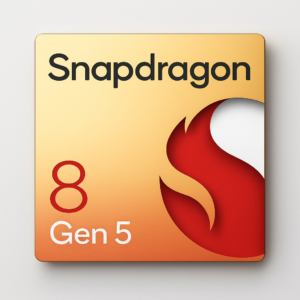
Qualcomm recently unveiled its flagship Snapdragon 8 Elite Gen 5 chipset, which powers several newly launched premium smartphones. Now, the company appears to be preparing for the arrival of the Snapdragon 8 Gen 5, the next-generation processor in its high-end lineup. Ahead of its official debut, reliable tipster Digital Chat Station has shared a detailed preview of the chip’s technical specifications and benchmark results.
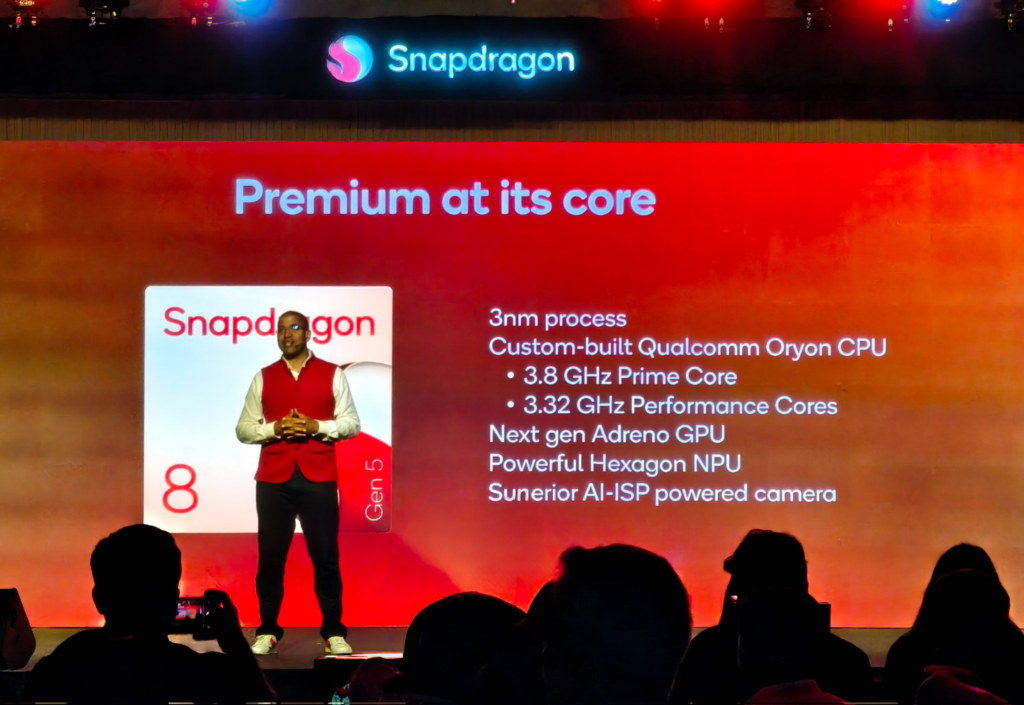
According to the leak, the Snapdragon 8 Gen 5 is built on TSMC’s advanced N3P process and features Qualcomm’s custom Oryon CPU architecture. The configuration includes two ultra cores clocked at 3.8GHz and six performance cores running at 3.32GHz, offering a strong balance of speed and efficiency.
For graphics, it features the Adreno 840 GPU, based on the same IP as the Snapdragon 8 Elite’s GPU but with slightly scaled-down performance and a 1.2GHz frequency.
In early benchmark tests, the chipset reportedly achieved over 3.3 million points on AnTuTu and scored around 3,000 (single-core) and 10,000 (multi-core) on Geekbench 6. On the Aztec 1440p benchmark, it managed close to 100 frames per second, highlighting impressive graphical power for high-end gaming.
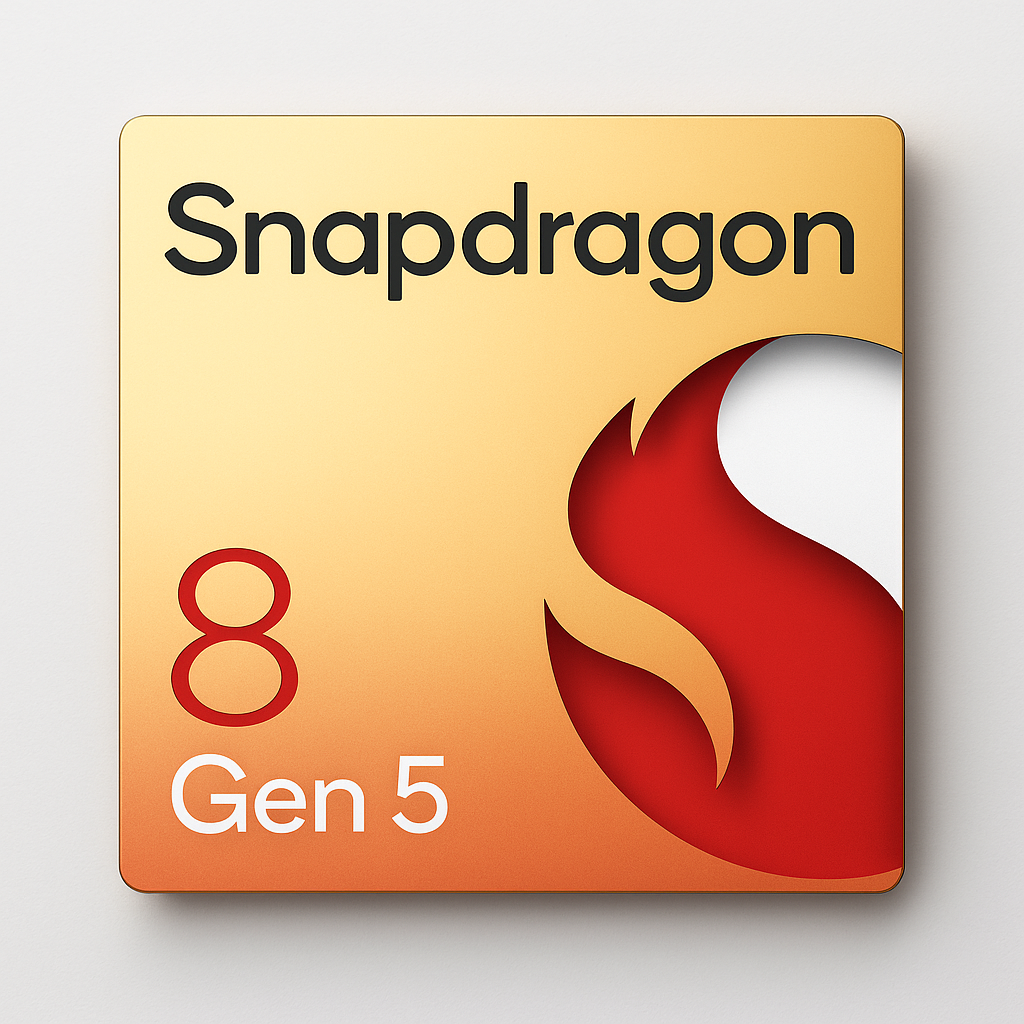
Performance-wise, the CPU output is said to be comparable to the Snapdragon 8 Elite, while the GPU performance is slightly lower. However, the N3P fabrication process is expected to deliver improved thermal management and energy efficiency, suggesting that the Snapdragon 8 Gen 5 will offer smoother performance and better stability despite its smaller scale design.
Reports suggest that the OnePlus Ace 6 Turbo, Vivo S50 Pro Mini, and Honor GT 2, which are expected to debut in November-December period, will be the first phones to feature it.
For more daily updates, please visit our News Section.
Stay ahead in tech! Join our Telegram community and sign up for our daily newsletter of top stories.
The post Snapdragon 8 Gen 5 key specifications, performance figures leaked ahead of launch appeared first on Gizmochina.

Vivo is expected to unveil the Vivo S50 and S50 Pro Mini smartphones in November in China. Earlier leaks suggested that the S50 Pro Mini would come equipped with the Dimensity 9400 Plus chipset. However, a new leak from a reliable source indicates that the upcoming device will instead be powered by a Snapdragon 8-series chipset, revealing several additional details about the compact flagship as well.

The Vivo S50 Pro Mini is said to feature a 6.3-inch flat display, confirming that it will continue the compact design language of the S30 Pro Mini. Reports indicate the screen will offer 1.5K resolution and a 120Hz refresh rate for smooth visuals.
According to the latest leak, the phone will be powered by the Snapdragon 8 Gen 5 chipset, replacing the previously rumoured Dimensity 9400 Plus. While Qualcomm has yet to launch this processor officially, early details reveal that it is based on a 3nm process, featuring a 3.8GHz prime core, 3.32GHz performance cores, and a next-generation Adreno GPU.
It is also reported that the OnePlus Ace 6 Turbo will be the first smartphone in China to debut with the Snapdragon 8 Gen 5, which suggests that the S50 Pro Mini could launch shortly after it.

The leak further claims that the S50 Pro Mini will feature a larger battery than the Vivo X300’s 6,040mAh unit. On the camera front, it is expected to offer a triple-camera setup that includes a periscope telephoto lens. Additionally, earlier leaks have mentioned a 50-megapixel front camera for selfies.
Rumours suggest that the Vivo X300 FE, which is expected to launch in global markets, could be a rebranded version of the China-exclusive Vivo S50 Pro Mini. Early reports indicate that the global variant may debut in the first quarter of 2026.
For more daily updates, please visit our News Section.
Stay ahead in tech! Join our Telegram community and sign up for our daily newsletter of top stories.
The post Vivo S50 Pro Mini / X300 FE leak reveals Snapdragon 8 Gen 5 chip, periscope camera and more appeared first on Gizmochina.

The global rollout of the HyperOS 3 update began last week, with the Xiaomi 15T series getting the first bite, and it’s now expanding to more models. The Xiaomi 15 is the latest to receive the Android 16-based update, which brings a redesigned user interface, exciting new features, AI upgrades, improved performance, and smoother animations.
The stable HyperOS 3 update for the global version of Xiaomi 15 is tagged with the firmware version 3.0.4.0.WOCEUXM and has a massive download size of 8.2GB. The download size should be significantly smaller for beta users. Regardless, you must ensure that the device has sufficient storage and battery before upgrading to HyperOS 3.
Here’s the complete HyperOS 3 changelog for global Xiaomi 15, as shared by Xiaomi Time:
As the rollout expands in stages, some Xiaomi 15 users may receive the update earlier than others. If you haven’t received the update notification yet, navigate to Settings > About Phone > System Update to manually check for the latest updates.
Remember to visit the HyperOS section regularly for the latest news and updates. You can also follow our Telegram channel and subscribe to our free newsletter for your daily dose of tech!
Also read:
1. Here’s when the HyperOS 3 update is coming to your device
2. HyperOS 3’s Hyper Island unlocked for all Redmi and Poco phones — but there’s still a catch
2. Here are the five biggest upgrades to HyperOS 3
The post HyperOS 3 update arrives for Xiaomi 15 globally appeared first on Gizmochina.

Huawei is expected to unveil the Mate 80 series of smartphones in November in China. Speculations are rife that the brand also plans to launch the Huawei Mate X7 foldable phone in the same month, probably alongside the Mate 80 lineup. Today, reliable tipster Digital Chat Station leaked the key specifications of the company’s upcoming foldable phone.
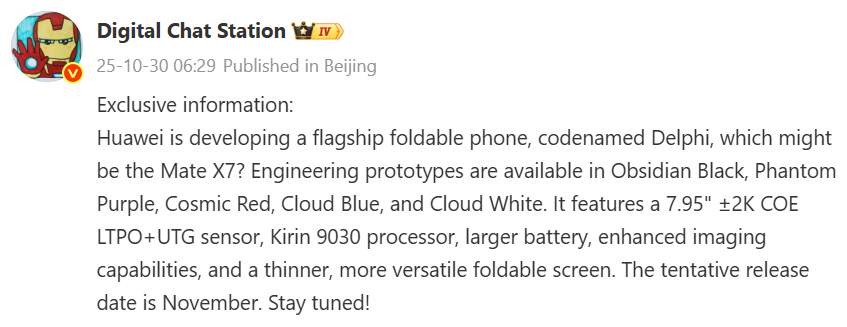
According to the tipster, the Huawei Mate X7, which has the codename Delphi, is tentatively scheduled to launch in November. The engineering prototype of the device is said to be equipped with a 7.95-inch foldable display with around 2K resolution, which combines Colour-on-Encapsulation (COE) technology for vivid visuals, LTPO for adaptive refresh rates that improve power efficiency, and Ultra-Thin Glass (UTG) for enhanced durability and a smoother folding experience.
Under the hood, the Huawei Mate X7 is expected to feature the new Kirin 9030 chipset. Rumors suggest that the Mate 80 Pro models will also be equipped with the same SoC.
The tipster added that the Mate X7 will offer a larger battery, enhanced camera system, and an even lighter, thinner design. As per other reports, the device may house a battery of around 5,500mAh capacity. The new leak also states that the device will come in five shades, namely Obsidian Black, Phantom Purple, Cosmic Red, Cloud Blue, and Cloud White.

In July, the tipster claimed that Huawei is testing two different camera sensors for the Mate X7. There’s one with a 50-megapixel 1/1.56-inch sensor and another with a slightly larger 1/1.3-inch sensor. Both are said to support a physical variable aperture. It is also said to feature a 50-megapixel periscope telephoto camera with macro capabilities and a multispectral sensor to improve overall image quality.
For more daily updates, please visit our News Section.
Stay ahead in tech! Join our Telegram community and sign up for our daily newsletter of top stories.
The post Huawei Mate X7 screen size, color variants, and more details tipped ahead of launch appeared first on Gizmochina.

Apple’s iPhone 17 arrived with a surprising twist this year, not just a generational spec bump, but a clear intent to undercut the dominance of aggressively priced Chinese flagships. With a $799 starting price, Apple is clearly recalibrating, offering ProMotion, a 48MP Ultra Wide camera, and the new N1 networking chip in a base model. But does that make it better than the likes of the Xiaomi 17, Vivo X300, or Oppo Find X9?
Let’s break it down.

The iPhone 17 features a 6.3-inch Super Retina XDR display with ProMotion support for the first time in a base model. It now supports up to 120Hz refresh rate and Always-On Display functionality. Peak outdoor brightness reaches 3000 nits, which is a significant step up from its predecessor.
Xiaomi uses a 1.5K OLED LTPO panel on the Xiaomi 17 that hits 3500 nits peak brightness. Vivo takes it further with the X300, offering 4500 nits peak brightness and 2160Hz PWM dimming for better eye comfort. The Find X9 also delivers a 3600-nit display with ultra-high-frequency dimming. Apple still leads in color calibration with True Tone, but Chinese brands now offer brighter panels with finer dimming and better display flexibility.
| Preview | Product | |
|---|---|---|
|
|
iPhone 17 256 GB: 15.93 cm (6.3″) Display with Promotion, A19 Chip, Center Stage Front Camera for… | Check Price on Amazon |
Please Note: When you buy something using the links in our articles, we may earn a small commission at no cost to you.
The A19 chip on the iPhone 17 is based on a 3nm architecture with a 6-core CPU and a 5-core GPU. Apple says the CPU is 1.5 times faster than the A15 in iPhone 13, with the GPU more than doubling the performance of the older generation. The new chip also includes a 16-core Neural Engine for AI tasks.
Xiaomi uses Qualcomm’s Snapdragon 8 Elite Gen 5 chipset, which includes an Adreno 840 GPU and supports advanced thermal management. On the other hand, Oppo and Vivo use MediaTek Dimensity 9500, which has scored over 4 million points on AnTuTu. Apple’s efficiency remains a strong point, but Chinese rivals now match or surpass the iPhone in raw performance, especially in multitasking and gaming workloads.
Apple upgraded the rear setup with a 48MP main and a 48MP ultra-wide camera. The front camera now uses an 18MP sensor with Center Stage, enabling AI-based field-of-view expansion and landscape selfies without rotating the phone. The iPhone 17 also supports 4K HDR recording on both front and rear cameras, and it introduces Dual Capture.
Xiaomi features a Leica-powered triple 50MP setup, including a Light Fusion 950 sensor and telephoto lens. Vivo uses a 200MP sensor paired with a Zeiss-certified periscope and telemacro lens. Oppo includes a 50MP triple-camera setup with Hasselblad tuning and a spectral sensor for accurate color capture. Apple closes the gap with better usability, but the hardware and flexibility of Chinese camera systems remain superior.
Apple claims up to 30 hours of video playback on the iPhone 17. The phone supports 40W USB-C fast charging and 25W MagSafe or Qi2 wireless charging. This marks the first time a base iPhone supports fast charging above 20W.
Chinese flagships dominate in this area. Xiaomi’s 7000mAh battery supports 100W wired and 50W wireless charging, along with reverse charging. Vivo includes a 6040mAh battery with 90W wired and 40W wireless speeds. Oppo uses a 7025mAh silicon-carbon battery with 80W wired and 50W wireless charging. Apple improves charging speed, but Android rivals continue to lead in capacity and endurance.
The iPhone 17 introduces Apple’s N1 wireless chip, which supports Wi-Fi 7, Bluetooth 6, Thread networking, and improved Personal Hotspot and AirDrop performance. It also retains Face ID and adds the new Ceramic Shield 2 coating for better scratch resistance.
Chinese phones come with more features on paper. Xiaomi, Vivo, and Oppo include in-display ultrasonic fingerprint sensors, infrared blasters, reverse wireless charging, and high-precision GPS with NavIC support. Vivo and Oppo both offer IP69 ratings, while Apple retains IP68. Apple maintains a smooth ecosystem and polished integration, but Android competitors push more hardware-level features.
Apple priced the iPhone 17 at $799 for the 256GB model, which is lower than the 256GB versions of the Xiaomi 17 and Vivo X300. This puts Apple in a more competitive position, especially in markets where iPhones traditionally cost more.
The Xiaomi 17 starts at 4499 yuan (around $630) for the 12GB + 256GB variant. Vivo’s X300 starts at 4399 yuan ($618) for the same configuration. The Find X9 is positioned higher at 999 Euros for the 12GB + 512GB model. Chinese phones offer better hardware value, but Apple’s improved base configuration and pricing strategy make the iPhone 17 an attractive option in more markets.
The iPhone 17 is not better than its Chinese rivals in raw specifications. It still lags in charging, camera versatility, and display brightness. But it fixes previous limitations in display refresh rate, camera quality, and charging speed while maintaining Apple’s ecosystem advantage.
More importantly, it now does this at a more competitive price. Apple is no longer just playing the brand card. The iPhone 17 brings value with real improvements, even if it doesn’t beat Xiaomi, Vivo, or Oppo in feature-for-feature comparisons. It is not the most advanced phone in this group, but it is the most balanced iPhone base model Apple has ever made.
For more daily updates, please visit our News Section.
Stay ahead in tech! Join our Telegram community and sign up for our daily newsletter of top stories! 
The post Is iPhone 17 better than Chinese flagships? appeared first on Gizmochina.

Meizu unveiled the Meizu 22, a compact flagship phone powered by the Snapdragon 8s Gen 4 chip, in September this year in China. At that time, it was introduced in black, white, and pink shades. In recent weeks, several flagship smartphones have arrived in the Chinese market, prompting Meizu to introduce a refreshed version of its compact flagship with a new colour option to stay competitive.

Meizu has officially announced the return of its most celebrated color, “Moon White Sky Blue”, with the Meizu 22. This new variant features a smooth ceramic-finish back cover inspired by the elegance of traditional Chinese celadon craftsmanship.
The design integrates a 0.8mm symmetrical “pure white” flat panel and a 6.3-inch frame that offers a refined and balanced in-hand experience.
According to Meizu, the new color variant symbolizes the brand’s commitment to combining modern design with oriental aesthetics. The new variant has a starting price of 2,999 Yuan (~$420) and will go on sale in China starting Oct. 30.
Alongside this, Meizu also introduced a special “Return Voyage: China Flagship Edition”, developed in collaboration with the China State Shipbuilding Corporation’s 714 Research Institute. This edition features design motifs inspired by naval vessels and aircraft, along with a customised UI and collectible accessories.
Meizu 22 specifications
The Meizu 22 is powered by the Snapdragon 8s Gen 4 processor and features a 6.3-inch 1.5K display with adaptive 1–120Hz refresh rate. It includes a triple 50-megapixel rear camera setup covering wide, telephoto, and ultra-wide lenses, as well as a 50-megapixel front camera.
The phone packs a 5,510mAh battery with 80W wired and 66W wireless charging support. Other highlights include ultrasonic fingerprint scanning, an X-axis linear motor, an IR blaster, and IP66/68-rated dust and water resistance.
For more daily updates, please visit our News Section.
Stay ahead in tech! Join our Telegram community and sign up for our daily newsletter of top stories.
The post Meizu 22 launches new “Moon White Sky Blue” color with matching white front bezels appeared first on Gizmochina.

It’s been a complete mess for Samsung—or at least it seems that way from the outside. First, the company was thought to be replacing the Galaxy S26 Plus with the S26 Edge.
Later, reports suggested that the S26 Plus was back in the lineup and that there wouldn’t be a Galaxy S26 Edge instead. In fact, the entire Edge series was said to have been dropped.
Now, a wild new rumor claims there’s more to this story. According to the Dutch site GalaxyClub, the S26 Edge has indeed been scrapped, but Samsung hasn’t given up on making a slim flagship. The company is reportedly developing another thin phone, internally codenamed “More Slim.”
The report states that Samsung has been working on this mystery device for a few months now, although its development began significantly later than previously thought to be the S26 Edge project.

The previous S25 Edge carried the internal codename “Slim,” so it does make “More Slim” sound like a deliberate continuation of that idea.
Now, we don’t know much about this More Slim device, except that the name itself hints it could be even slimmer than the now-scrapped S26 Edge.
We’re not entirely sure what Samsung’s logic is here. The S25 Edge was already an expensive phone for what it offered—you got a dual-camera setup with no telephoto lens and a small 3,900mAh battery.
Making the next iteration even thinner will likely drive up costs, as Samsung would need to custom-engineer components to fit more into even less space. And even then, how does the company plan to improve on common complaints about the S25 Edge, like battery in an even slimmer design?
Samsung must have a plan in mind, and we’ll likely learn more about it in the near future.
For more daily updates, please visit our News Section.
Stay ahead in tech! Join our Telegram community and sign up for our daily newsletter of top stories! 
(Source)
The post The Edge is dead because Samsung is working on even slimmer device called More Slim appeared first on Gizmochina.

Flagship smartphone launches used to be simple. There was one premium model, one Pro version for those who wanted more, and maybe a standard version for everyone else. But that line has almost completely blurred in 2025.
The so-called “base” models from major Chinese brands have grown powerful enough to challenge their own Pro siblings. They now offer high-end cameras, premium materials, and top-tier chips, all at prices that make Pro models feel unnecessary.

The latest proof of this comes from Vivo, Xiaomi, and Oppo, whose new phones — the Vivo X300, Xiaomi 17, and Oppo Find X9 — were launched within weeks of each other.
Although these three phones sit below their Pro counterparts, they look and feel like top-tier devices in their own right. What’s even more interesting is how differently each company interprets the idea of a flagship phone for everyone.
On paper, the three phones share similar footprints. The Vivo X300 and Xiaomi 17 are almost identical in size, hovering around 6.3 inches, while Oppo’s Find X9 stretches slightly larger to 6.59 inches.
All three offer some level of IP68 water and dust protection, though Vivo and Oppo go further with IP69 ratings, which means resistance to high-pressure water jets. This feature is almost unnecessary for most people (here’s why), but it’s here nonetheless.
There’s not much to separate them in display technology either. Each uses an LTPO AMOLED panel with up to 120Hz refresh rate, HDR10+ support, and color standards that now seem mandatory for phones at this price.
Only if we nitpick, Xiaomi claims that it can reach 3,500 nits peak brightness, Vivo claims 4,500 nits, and Oppo claims 3,600 nits. While these are peak figures and you’re rarely hitting these numbers, it’s reassuring to know all three should remain perfectly usable outdoors.
All three panels support HDR10+, Dolby Vision, and high-frequency PWM dimming, with pixel densities hovering around 460ppi. In real use, they’ll likely look nearly identical, though the default color calibration depends on how the brand prefers it.
The clearest separation between these phones comes from what’s inside. Xiaomi uses Qualcomm’s Snapdragon 8 Elite Gen 5, while both Vivo and Oppo rely on MediaTek’s Dimensity 9500.
On paper, Qualcomm still leads in raw CPU and GPU performance. Xiaomi’s 8 Elite Gen 5 uses custom Oryon cores with clock speeds up to 4.6GHz and the new Adreno 840 GPU.

Vivo and Oppo’s Dimensity 9500 chips are not far behind; they are built on the same 3nm process and have their own “C1 Ultra” cores running at 4.21GHz. But MediaTek’s focus is on efficiency and sustained performance, and in practice, the difference may be small unless you push the phones with extended gaming or AI workloads.
What’s more notable is how similar these three feel in day-to-day use. All three phones use UFS 4.1 storage and LPDDR5X RAM to ensure flagship-level responsiveness.
The biggest philosophical split lies in the camera systems. Vivo is the most camera-focused brand here, and it shows. The Vivo X300 leads with a 200-megapixel Samsung HPB main sensor, accompanied by two 50-megapixel cameras — one telephoto, one ultrawide.
Then it has Zeiss optics and the ability to import 3D LUTs. And it even supports a detachable telephoto extender lens sold separately, something previously reserved for its Ultra series.

Xiaomi 17 uses a triple 50-megapixel setup, each tuned in collaboration with Leica. The main lens is a 1/1.31-inch sensor with an f/1.7 aperture, and the telephoto offers 2.6x optical zoom. It also supports 8K video and Dolby Vision HDR, matching its Pro siblings in video flexibility.
Oppo’s Find X9, meanwhile, keeps things simple. It sticks with three 50-megapixel sensors but relies on the established partnership with Hasselblad for color tuning.
The 3x periscope telephoto offers real optical range, and image quality should remain strong thanks to the large 1/1.4-inch main sensor. Like Vivo, Oppo has a telephoto extender for the Find X9 series, but it’s reserved for the Pro model.
Battery life is where these phones start to feel generationally different. All three use silicon-carbon battery chemistry, allowing higher capacity without added bulk.
Oppo leads the group with a 7,025mAh battery, followed closely by Xiaomi’s 7,000mAh and Vivo’s smaller but efficient 6,040mAh pack. Despite the difference in capacity, Vivo claims its battery lasts as long as a typical 7,000mAh unit.
Charging speeds are fast across the board. Xiaomi supports 100W wired and 50W wireless charging, Oppo follows with 80W wired and 50W wireless, and Vivo offers 90W wired and 40W wireless. The phones can go from empty to full in under 40 minutes.
All three phones ship with Android 16, customized heavily by their respective skins: HyperOS 3 on Xiaomi, OriginOS 6 on Vivo, and ColorOS 16 on Oppo.
Each takes a different approach to personalization, and whether you like these skins or not largely comes down to preference. Each phone also includes an ultrasonic fingerprint sensor, dual stereo speakers, NFC, and infrared blasters. None offers a 3.5mm headphone jack, but all support high-resolution wireless audio.
In truth, there’s no clear winner here. The Vivo X300, Xiaomi 17, and Oppo Find X9 are all high-end devices with different priorities wrapped in similar price brackets.
The Vivo X300 is for those who care about photography above all else. Its 200-megapixel sensor and Zeiss collaboration make it a quiet powerhouse for imaging, and its compact design will appeal to users tired of oversized flagships.
The Xiaomi 17 is an all-rounder. Its Leica-tuned cameras, Snapdragon chip, and large battery make it easy to recommend to anyone who values both power and polish.
The Oppo Find X9 sits somewhere between the two. It emphasizes endurance and balance. It’s not as flashy as the Xiaomi or as ambitious as the Vivo. Still, it might be the most reliable of the bunch, combining excellent battery life, consistent camera output, and understated design.
For more daily updates, please visit our News Section.
Stay ahead in tech! Join our Telegram community and sign up for our daily newsletter of top stories! 
The post Xiaomi 17 vs Vivo X300 vs Oppo Find X9: A quiet flagship contest appeared first on Gizmochina.

We don’t know what’s happening, but Dreame seems to be on a spree of launching new products almost every day. The company has been expanding aggressively into new categories, from Mini LED TVs and soundbars to large home appliances like refrigerators.
It has also confirmed plans to enter the smartphone market. Now, Dreame is stepping into the garment care segment with the introduction of the P7 Steam Iron in the Chinese market. It is priced at 635 yuan ($89) and is now available on JD.com.

The Dreame P7 features a 90-degree rotating “butterfly wing” ironing panel designed for better comfort and efficiency. The patented horizontal layout increases the ironing surface to 172mm, allowing it to cover more area in a single pass. The steam output zone is physically separated from the grip area to ensure safe handling and prevent accidental burns during use.
The P7 is powered by a 1200W dual-core pressure-boosting system capable of delivering steam at a rate of approximately 12±5g per minute and a pressure of up to 200kPa. The dense and consistent steam penetrates deep into fabric fibers to eliminate wrinkles quickly.
The device uses Dreame’s multi-layer vaporization system to generate ultra-fine nano steam that prevents moisture buildup on fabrics. It also includes a 0.1-second touch sensor that instantly stops steam when the handle is released and resumes operation when it’s held again.

It includes five ironing modes that support both dry and steam settings, optimized for different materials such as silk, cotton, wool, linen, and synthetic blends. These modes adjust power and steam levels dynamically to match fabric types. In addition to wrinkle removal, the P7 also supports sterilization, promising 99.99% bacteria elimination and complete mite removal through high-temperature steam.
The device includes a detachable 100ml water tank that supports multiple garments in one session. It also has a self-cleaning mode that flushes the internal heating system with high-frequency water flow to prevent scale buildup and maintain long-term performance.
For more daily updates, please visit our News Section.
Stay ahead in tech! Join our Telegram community and sign up for our daily newsletter of top stories! 
The post Dreame launches P7 Steam Iron, its first entry into the garment care market appeared first on Gizmochina.

The global smartphone market shipped a total of 320.1 million units in Q3 2025, as per Omdia’s latest report. This resulted in a 3% year-on-year growth, but more importantly, it signals recovery from the muted performance in the first half of the year. Samsung secured the top spot by shipping 60.6 million units, while Apple is in second place.
Multiple challenges weighed down the first half of 2025. The list includes rising uncertainty following changes in the US tariff policy and associated supply chain restructuring. Then there’s slow retail traffic and inventory adjustment by vendors. All these resulted in market volume remaining flat compared to the previous year.
However, things moved in a positive direction in Q3 2025. Samsung, Apple, Transsion, and Honor reportedly shipped over two million additional units YoY (year-on-year). This drove the market’s return to growth.
Samsung is at the top with 6% year-over-year growth. The Galaxy Z Fold 7 and Z Flip 7 models, as well as the Galaxy A07 and A17, drove the company towards growth. Strong sales of the Galaxy A series in Asia-Pacific and the Middle East contributed to overall shipments.
Apple sits right below Samsung with 56.5 million units and 4% YoY growth. The report notes that the iPhone 17 surpassed expectations. Meanwhile, iPhone 17 Pro and 17 Pro Max reportedly continue to draw strong global demand. Rising markets like India are expected to support Apple’s full-year shipment growth.
Xiaomi could only manage a marginal 1% growth by shipping 43.4 million units in the quarter. The shipments in China took a hit after the subsidy program ended, but growth in the Asia-Pacific and other regions offset the decline. Transsion climbed to the fourth spot with 28.6 million units and a significant 12% YoY growth in shipments. Vivo is in fifth place with 28.5 million shipments and 5% annual growth.

Omdia reports that shipments in North America and Greater China declined YoY, while Asia-Pacific, the Middle East, and Africa recorded strong growth. This drove overall global market expansion in Q3. Africa saw shipments surge 25% YoY. Asia-Pacific recorded a 5% YoY increase, which is reportedly the highest quarterly volume since Q4 2021.
The global smartphone market continues to show “polarized growth,” with expansion in both low-end and premium segments, while the mid-range remains weak. The ultra-low-end segment (below $100) and high-end segment (above $700) are reportedly driving overall volume growth.
Talking about the market outlook, Omdia notes that despite the recovery in Q3, the component shortages and rising costs are challenging the industry. This could result in higher pricing of new products in the short term and hinder the growth of the low-end segment demand.

The post Global Smartphone Market Grows 3% in Q3 2025, Samsung Takes The Crown appeared first on Android Headlines.

A legal battle involving the Google Play Store has been going on for some time now. Now, we finally have a major victory for app developers and Android users in the United States. Following a multi-year legal saga with Epic Games (the creator of Fortnite), Google has been forced to open up its ecosystem, ending a practice that has defined the Play Store for years. Effective immediately for users in the United States, the strict requirement that app developers must exclusively use Google Play Billing (GPB) for in-app purchases is over, allowing third-party payment solutions.
This big change is the result of an injunction issued by a US District Court. The Mountain View giant just updated its Google Play policies to comply with the ruling as of October 29, 2025. Previously, the company had argued the mandatory billing system was necessary to “preserve user trust and safety.”
The new policies grant developers two key freedoms that shift power away from Google. Developers no longer have to use Google Play Billing for transactions in their apps. They can now implement their own payment systems. This way, they can bypass the substantial commission (often referred to as the “Google Tax”) that the platform historically collected.
Furthermore, developers gain the right to communicate with users about options outside of the Play Store. Google will not prohibit a developer from providing a link to external transactions or even linking to where the app can be downloaded outside the Play Store. Plus, a developer can now offer a lower price if the user chooses an alternative payment method. This gives them the power to pass savings directly to the consumer.
This change promises competitive pricing for consumers in the US. However, the fight with the tech giant continues.
Google has made it clear that while it complies with the current injunction, it will continue to legally challenge the ruling. The firm recently attempted to have the Supreme Court hear its case and pause these changes, but that request was denied.
For now, these newfound freedoms are strictly limited to the United States while the court order remains in effect. Users and developers in the rest of the world must still comply with the old Google Play restrictions. Other countries will have to wait and see if this landmark US ruling eventually forces a global shift in policy.
The post Google Play Store Finally Opens to Third-Party Billing in the US appeared first on Android Headlines.

Acer is one of a few different brands that are making Chromebooks, and this week it just announced the Chromebook Plus Enterprise 514 and the Chromebook Plus Enterprise 714, two new laptops that were designed to offer long battery life and premium experiences for users.
Acer says both are “priced in quantities for commercial customers,” which sounds like you need to buy multiple units if you’re a business, but you might end up getting a discount for buying more. The Enterprise 514 is available already, while the Enterprise 714 model isn’t shipping until Q4 of this year. Both Chromebooks are being positioned as premium offerings, and the prices certainly reflect that.
Anyone looking at that $1,499.99 price tag and thinking, “Why so expensive?” That’s an understandable reaction. A $1,499.99 price tag is a lot for a Chromebook. You can definitely do a lot with a Chromebook these days, but there’s still a lot you can’t do as well. It’s also worth remembering that this is the starting price, which means there are configurations that will cost more. On top of this, commercial customers looking to grab this or the Enterprise 514 model will probably have to buy several units.
Customers who opt for the latter model will be looking at a starting price of $1,099.99. This is the model that was available this week. When it comes to the Chromebook Plus Enterprise 714, the cost is up there with Google’s original top-end Chromebook Pixel, which had a retail price of $1,449.99. That potentially makes this the most expensive Chromebook to date, but this one from Acer certainly has better specs. However, customers should ask themselves whether or not the specs are really worth the price.






Acer’s two new Chromebooks come with some decent specs. With that in mind, it would be easy to dismiss the price tag of each as worth it, given the hardware. However, ASUS actually makes a Chromebook Plus model called the ExpertBook CX54, and it has almost all the same specs. In fact, one of the only differences is the display. Both models from Acer come with a 14-inch 1920 x 1200 display. The ExpertBook CX54 has a 14-inch display as well, but its resolution is higher at 2560 x 1600.
The rest of the tech specs vary, with ASUS coming out on top in some key areas. The base model from ASUS comes with 8GB of LPDDR5X RAM and 128GB of storage (this is less than Acer’s two new laptops). It also runs on Intel’s Core Ultra 5 115U processor, which is what both laptops from Acer are using. Also worth noting is that the Enterprise 514 model with the Core Ultra 5 CPU is the mid-tier model, and it’s priced at $1,249.99. So the $1,099.99 model comes with an even lower-tier CPU, the Intel Core Ultra 3 100U. ASUS also offers a larger battery at 63Wh compared to 53Wh on these laptops. So, the ExpertBook CX54 could very well last longer.
All of this is to say that for a very similar laptop experience, ASUS has something on offer for a lot less money. The ExpertBook CX54 retails for $699.99, and it’s even on sale for $579.99 right now. You get less RAM and storage, but everything else is right on par. That being said, Acer’s laptops are newer and seem to have better webcams.
The post Acer's new Chromebook is almost an entire month's rent appeared first on Android Headlines.

The Vivo X300 series was announced about two weeks ago in China. We knew that the global launch was coming today, and that’s just what happened; both the Vivo X300 and Vivo X300 Pro units have been announced for global markets.
The phones are pretty much the same as in China, with some differences in RAM + storage flavors offered. Both of them have a flat display, a flat frame, and a large circular camera island on the back. They’re actually quite similar design-wise.
The Vivo X300 Pro does have a number of advantages, though. It has a larger display, which is also slightly sharper, while the phone comes with a more powerful camera setup too. It also includes a larger battery, which is to be expected considering the size difference, and so on.
Both smartphones are made out of metal and glass, and both of them have a centered display camera hole up top. The bezels around the display are both thin and uniform, and that goes for both of these phones.
These phones are camera-centric, especially the ‘Pro’ model. Let’s take a look at what they each have to offer on the spec side of things. We’ll first talk about both of them at once, as there are some similarities between them. So we’ll go over the similarities first and then what’s different.
Both of these phones are fueled by the same chip, the MediaTek Dimensity 9500. That is the company’s brand new 3nm processor, and it’s immensely powerful, plus it has great power efficiency as well.
Both phones also come in 16GB RAM flavors, though do note that the Vivo X300 is also available with 12GB of RAM. LPDDR5X RAM and UFS 4.1 flash storage are present in both phones. Android 16 comes pre-installed on both phones, along with Vivo’s OriginOS 6. These are the first global Vivo phones that ship with OriginOS instead of Funtouch OS.

You’ll realize that both smartphones are also IP68/IP69 rated for water and dust resistance. They both come with two nano SIM card slots and an eSIM capability as well. Stereo speakers are a part of the package too, while they both include a 50-megapixel selfie camera (1/2.76-inch sensor size).
Alright, let’s talk about the differences. The Vivo X300 features a 6.31-inch LTPO AMOLED display with an adaptive refresh rate (1-120Hz). It supports HDR10+ content, HDR Vivid, and goes up to 4,500 nits brightness-wise.
This display has a resolution of 2640 x 1216 pixels, and a screen-to-body ratio of 90.5%. The display aspect ratio is 19.5:9. The display is flat, by the way.
The Vivo X300 Pro basically has all the same parameters except the size, resolution, and screen-to-body ratio. The size is 6.78 inches, while the resolution is 2800 x 1260. The screen-to-body ratio here is 91.6%.
Their battery packs are also different. The Vivo X300 has a 6,040mAh silicon-carbon battery. It supports 90W wired and 40W wireless charging. The Vivo X300 Pro, on the other hand, has a 6,510mAh battery, which is also a silicon-carbon unit. It supports 90W wired and 40W wireless charging too.
Their camera setups are also different. The Vivo X300 includes a 200-megapixel main camera (1/1.4-inch sensor size, f/1.68 aperture), along with a 50-megapixel ultrawide unit (1/2.76-inch sensor size, f/2.0 aperture). The third camera on the back is a 50-megapixel unit as well, a periscope telephoto camera (1/1.95-inch sensor size, f/2.57 aperture).
The Vivo X300 Pro, on the other hand, includes a 50-megapixel main camera (1/1.28-inch sensor size, f/1.57 aperture), along with a 50-megapixel ultrawide camera (1/2.76-inch sensor size, f/2.0 aperture). The third camera is a 200-megapixel periscope telephoto unit (1/1.4-inch sensor size, f/2.67 aperture).
The Vivo X300 measures 150.57 x 71.92 x 7.95mm, while it weighs 190 grams. It comes in Black, Blue, Purple, Pink, and Red colors. The ‘Pro’ model measures 161.98 x 75.48 x 7.99mm, and weighs 226 grams. It comes in Black, Brown, Blue, and White colors.
Price tags will differ from one market to the next. Vivo did not send us that info.








The post Vivo X300 Series Goes Global: Big Cameras, Ultra-Bright Displays & Much More appeared first on Android Headlines.

Google is introducing new AI-powered features for developers on both Google Play and within Android.
Starting off with Google Play, developers will be able to localize their apps with Gemini. Using Gemini-powered translations for apps, which is now integrated into the Play Console. It is also adding improved insights so developers can understand and act faster on their metrics. This is also powered by Gemini, which can automatically generate descriptions of charts, to help developers understand trends and events.
Moving onto the Android side of things, Google is going to make it easier for developers and their users to take advantage of Gemini Nano inside their Android Apps. This is part of the Alpha release of the ML Kit’s GenAI Prompt API, which will let developers unlock powerful on-device AI capabilities with Gemini Nano. This includes image understanding, intelligent document scanning, data transformation, content prompting, content analysis, and more.
Google is also bringing along more AI capabilities with Nano Banana and Imagen. New Agentic capabilities are also coming to Android Studio, allowing devleopers to use Agent Mode to upgrade APIs. It also brings the ability to bring any LLM to power the AI functionality inside Android Studio.
Finally, Google has a new resource for high-quality AI-assisted Android development. This is an upcoming Android benchmark which will evaluate LLMs against a range of common Android development areas to measure a model’s ability to navigate complex code bases.
These new features are rolling out starting today, making it easier than ever to build apps on Android using AI.
The post Google Supercharges Android Development with Gemini AI Tools appeared first on Android Headlines.

Mobile scams are a booming global business, powered by ever-more sophisticated AI tools that make phishing attempts and fraudulent calls difficult to spot. With hundreds of billions of dollars lost globally to these schemes, effective mobile protection is more critical than ever. While all smartphone platforms prioritize security, a recent wave of reports suggests that Android’s proactive, AI-driven privacy-and-security approach is giving great results at blocking fraud before it reaches the user.
Google has estimated that Android’s multi-layered defenses actively prevent over 10 billion suspected malicious calls and messages every month around the world. To understand how these numbers translate into real-world user experience, Google commissioned to YouGov a survey of 5,000 smartphone users across three continents.

The results demonstrated a clear difference in exposure. Android users were 58% more likely than their iOS counterparts to report that they had received zero scam texts in the week prior to the survey. This advantage became even stronger when comparing the Google Pixel directly to the iPhone. Here, Pixel owners were 96% more likely to report a clean text history. Conversely, the high volume of scam messages breaking through iOS defenses meant iPhone users were 136% more likely to report receiving a heavy stream of unwanted texts.
Independent security assessments reinforce these user findings. Researchers at Counterpoint Research found that Android smartphones offer a much more comprehensive suite of AI-powered protections. These measures address up to nine key security areas on Android. Meanwhile, the study noted that iOS offered AI protection in only two of those categories, highlighting a clear gap in defense breadth.
Furthermore, the cybersecurity firm Leviathan Security Group evaluated several new flagship phones. The results confirmed that Android devices provide the highest level of default fraud protection. They singled out Android’s call screening and real-time scam detection capabilities as key differentiators.






Android’s advantage comes from integrating these AI safeguards directly into the core system apps. For messages, Scam Detection uses on-device AI to analyze texts from unknown senders for conversational scam patterns. Then, it provides instant, on-screen warnings when relevant. Plus, this AI processing happens entirely on the device, ensuring user privacy.
When it comes to calls, the Phone by Google app automatically blocks known spam numbers entirely. If an unknown number attempts to call, features like Call Screen can answer on the user’s behalf to identify fraudsters. The in-call Scam Detection also warns users in real time if the conversation takes a suspicious turn. With these built-in intelligent defenses directly, Android keeps itself one step ahead of the evolving tactics used by fraudsters.
That said, there’s one key point you should never forget. When we talk about cybersecurity, the first and foremost shield is common sense. So, avoid making things easy for potential bad actors, even if you have all the protections of Android and Google on your side.
The post Android Security Shields: Users Get 58% Fewer Scam Texts Than iOS' appeared first on Android Headlines.

You won’t always have an AC outlet near you to plug in and charge your devices, and that’s why something like this Anker Nano Portable Charger that Amazon has a deal on is something you might want to consider tossing into your accessory lineup. This is a portable charger, or commonly known as a power bank, and it’ll give you just enough juice to power up a couple of phones or power up your phone a couple of times. It normally costs $59.99, but Amazon currently has it on sale for $39.99.
At that price, this is a really good value because this charger offers up quite a lot in the feature department. For starters, it has the capability to charge more than one device at a time. There’s a single USB-C port for charging output and a retractable USB-C port for charging, so you can charge two devices simultaneously if needed. There’s also a port for power input to charge the charger itself.
Now, if you’re curious about how much power is left in the charger, it has a small display on the front that will show you what the percentage is for remaining power. This will show up when in use, so you can easily tell how much power it has if you have devices plugged in. While its compact size already does a good job at making it a portable charger, it’s even more portable thanks to the carry loop on the side. You can fit this loop around your wrist or slip your fingers through it to carry this thing more conveniently.

The post This charger works even without outlets, and it's down to $40 appeared first on Android Headlines.

Samsung launched the Galaxy Z Flip 7 this past July as its latest premium clamshell-like phone. Its stylish design, large cover screen, and compact form factor make it more attractive than ever. However, just like any foldable, the advanced hinge and dual-screen setup require extra protection. A good case is essential to safeguard your investment. We’ve navigated the crowded market to curate a list of the best cases and accessories to complement your Samsung Galaxy Z Flip 7.
Are maximum security and tactile confidence your main priorities? Then the dbrand Grip Case designed for the Samsung Galaxy Z Flip 7 is for you. This case offers a superior handling experience for those who value these aspects in addition to high-level protection.

The sides of the dbrand Grip Case feature advanced, microscopic texturing. This purposeful design creates an unrivaled level of grip, dramatically minimizing the risk of the phone slipping from your hand. The specialized feel is both secure and ergonomic, ensuring comfortable handling whether you are moving quickly or simply using the device with one hand.
The dbrand Grip Case also delivers robust defense. It incorporates military-spec impact protection, engineered to shield your Samsung Galaxy Z Flip 7 from common daily shocks and accidental impacts. Plus, the case maintains perfect compatibility with dbrand’s complete range of custom skins. This lets you personalize your device’s aesthetic without sacrificing the secure, reliable grip that defines this protective cover. The style shown in the accompanying image represents just one of the many design choices available.
Maybe your highest priority is safeguarding your phone. Then the Spigen Tough Armor Pro is the definitive protective cover for the Samsung Galaxy Z Flip 7.

This accessory is engineered to absorb severe shock and impact. It relies on a hybrid construction, merging a soft, flexible thermoplastic polyurethane (TPU) inner layer with a rigid polycarbonate outer shell. For superior drop resistance, the corners integrate Spigen’s proprietary Air Cushion Technology, designed to disperse force upon impact.
Despite its durable, rugged build, the Tough Armor manages to keep its size modest and includes a convenient integrated kickstand. Precise openings ensure every port and button remains easily accessible. Elevated bezels also offer critical defense for both the display and the camera lenses. For those who face demanding environments or simply need absolute confidence that their Samsung Galaxy Z Flip 7 remains protected, the Tough Armor stands as an exceptionally secure option.
For the best all-around experience, Samsung’s own Silicone Case with Ring is hard to beat.
This case provides a perfect, glove-like fit that feels like a natural extension of the phone. The case is made from a soft-touch, matte silicone that adds a significant amount of grip, making the sometimes-slippery Z Flip 7 much easier to handle. The built-in ring on the back provides a secure way to hold your phone and doubles as a simple stand.
Samsung’s Silicone Case offers solid, everyday protection against scratches, scuffs, and minor drops without adding much bulk. It comes in a variety of colors that are designed to match or complement the Z Flip 7’s official colorways, allowing you to add protection while maintaining the phone’s stylish aesthetic. It’s the ideal choice for the average user who wants a seamless blend of style, function, and security.
If your main goal is to protect your Z Flip 7 from scratches without sacrificing its incredibly slim profile, the Thinborne Aramid Fiber Case is the ultimate minimalist solution.

Thinborne’s Aramid Fiber Case is made from 600D aramid fiber, a high-tech material that is stronger than steel but remarkably lightweight. It’s one of the thinnest cases you can buy, snapping on to the phone with precision and adding almost no bulk.
The Thinborne case features a fine, textured finish that provides a subtle, premium feel and enhances grip. It offers excellent scratch resistance for the back glass and sides, protecting your phone from keys and other items in your pocket. While it won’t provide heavy-duty drop protection, it’s the perfect choice for those who want to preserve the Galaxy Z Flip 7’s intended form factor.
To add a touch of class and premium protection to your Galaxy Z Flip 7, the TORRO Leather Case is an excellent choice.

The TORRO Leather Case is built using high-quality cowhide leather, resulting in an exterior that offers a refined and tactile feel. The material’s smooth texture provides a comfortable grip and naturally develops a unique aesthetic character as it ages.
The interior of the TORRO case features a soft microfiber lining. This case successfully combines premium components, practical design elements, and reliable structural protection.
The VRS DESIGN Terra Guard Modern Go handily solves the problem of carrying both a phone and a wallet.

VRS DESIGN’s Terra Guard Modern case cleverly integrates a semi-automatic card slot into its design, allowing you to securely store up to two cards. The slot is on the back of the bottom half of the phone, and a smooth sliding mechanism gives you quick access to your essentials.
In terms of protection, the Terra Guard is no slouch. It features a durable dual-layer body and Air Space Technology in the corners to absorb shock from drops. It also includes hinge protection, making it a great all-in-one solution for anyone looking to streamline their pockets without sacrificing the safety of their Z Flip 7.
The Spigen O-Mag Ring is a multifunctional attachment that improves both the handling and utility of your Samsung Galaxy Z Flip 7.

This magnetic accessory adheres firmly to the rear of your device, forming a stable, comfortable loop for your finger. This design enhances single-handed operation, providing a safer and simpler way to interact with both the large internal display and the smaller cover screen.
Beyond its function as a reliable grip, the O-Mag Ring also works as a viewing stand. The accessory features full 360-degree rotation, enabling you to position your Samsung Galaxy Z Flip 7 vertically or horizontally at numerous angles. This makes it ideal for everything from streaming content to participating in video calls. Its powerful magnetic connection allows users to quickly attach the ring when required and easily detach it for wireless charging.
While the Z Flip 7’s main screen comes with a pre-installed protector, the large cover screen and camera lenses are exposed. The IMBZBK Screen Protector Kit is a complete solution to protect all the glass on your device.

This kit includes multiple tempered glass protectors for the front cover screen, as well as protectors for the camera lenses. The 9H hardness tempered glass defends your cover screen from scratches, cracks, and impacts, while an oleophobic coating reduces fingerprints.
IMBZBK’s Screen Protector kit also includes an alignment frame, which makes the installation process simple and ensures a perfect, bubble-free application every time. This is an essential and affordable buy to keep your Z Flip 7 looking new.
The Z Flip 7 is designed for portability, and your power bank should be too. The Anker Nano Power Bank is the perfect companion, featuring a 5,000mAh capacity that’s enough to give your phone a significant boost or a full charge.

This charger’s standout feature is the built-in, foldable USB-C connector, which plugs directly into the bottom of your phone—no cables required. Plus, it’s about the size of a lipstick, making it effortless to slip into a small pocket or bag.
Anker’s Nano Power Bank supports 22.5W fast charging to get your phone powered up quickly. For Z Flip 7 owners who are always on the move, this cable-free, ultra-portable power bank is a must-have.
Colors: Black
Build Materials: Plastic
Recycled materials: N/A
Dimensions: 76.96 x 36.83 x 27.78 mm
Weight: 99.22 grams
The most convenient way to charge your Z Flip 7 at home is with the official Samsung 15W Wireless Charger Duo.

The official Samsung Wireless Charger is remarkably small, standing out as one of the most aesthetically pleasing charging pads currently available. It delivers up to 15W of wireless power, matching the maximum wireless input the Samsung Galaxy Z Flip 7 supports.
This charging pad integrates Qi2.0 standard support and securely fastens to compatible magnetic accessories. It features an exceptionally thin profile, measuring just 7mm, and connects via an attached 1.5-meter cable using a USB Type-C input.
Like most new phones, the Z Flip 7 doesn’t include a power adapter in the box. To get the fastest possible charging speeds (which for the Flip is 25W), the Anker 312 Charger is an excellent choice.

This charger delivers up to 30W of power, easily maxing out the Z Flip 7’s charging capabilities, and it does so in an incredibly compact package. Using GaN technology, it is tiny and features a foldable plug, making it the perfect travel companion.
Anker’s 312 Charger also includes Anker’s MultiProtect safety features to prevent overheating and overcharging. It’s an affordable, powerful, and portable brick that will charge your Z Flip 7 much faster than an old standard charger.
The post Best Samsung Galaxy Z Flip 7 Cases & Accessories appeared first on Android Headlines.
Samsung has pushed the October 2025 security update for several Galaxy devices, including the Galaxy S25 series, Galaxy S24 FE, Galaxy S23 FE, and Galaxy S22 series. The update is based on One UI 8 and focuses on improving system security, stability, and overall performance. Users can expect a smoother and safer experience after installing it.
For the Galaxy S22 series, especially in Korea, the update is more than just a security patch. It also brings the major One UI 8 upgrade. This means new features, better customization options, and improved performance. The update is designed to make the devices more user-friendly and enhance the overall experience.
Galaxy S25 series users who already received the October 2025 update are now getting a new build. This latest version includes additional improvements, optimizations, and bug fixes to ensure the device runs even better.

Users can check for updates by looking at their device’s One UI build number. Here are the relevant builds for each device:
To install the update, open the Settings app on your Galaxy phone, go to Software Update, and select Download and install. If an update is available, follow the on-screen instructions to complete the process.
Installing this update is highly recommended. It ensures your phone is protected with the latest security patches, runs smoothly, and is free from bugs. Samsung continues to focus on improving both performance and usability for all Galaxy users.
The post Samsung Galaxy S25, S24 FE, S23 FE, and S22 get new One UI 8 October update appeared first on Sammy Fans.
Google is planning a new feature for Android Auto that music and audio fans will love. Soon, users will be able to see multiple media cards on the dashboard and switch between apps without having to reopen them every time.
Right now, Android Auto shows only one music or audio card at a time. If you are listening to Spotify and then want to switch to YouTube Music, the Spotify card disappears. To go back to Spotify, you have to open the app again and start playing music. This can be frustrating, especially while driving.
The upcoming update will change that. According to the latest beta version of Android Auto (via Android Authority), the dashboard will show more than one media card at the same time. Users can swipe through these cards and quickly switch between apps like Spotify, YouTube Music, Audible, or other audio apps.
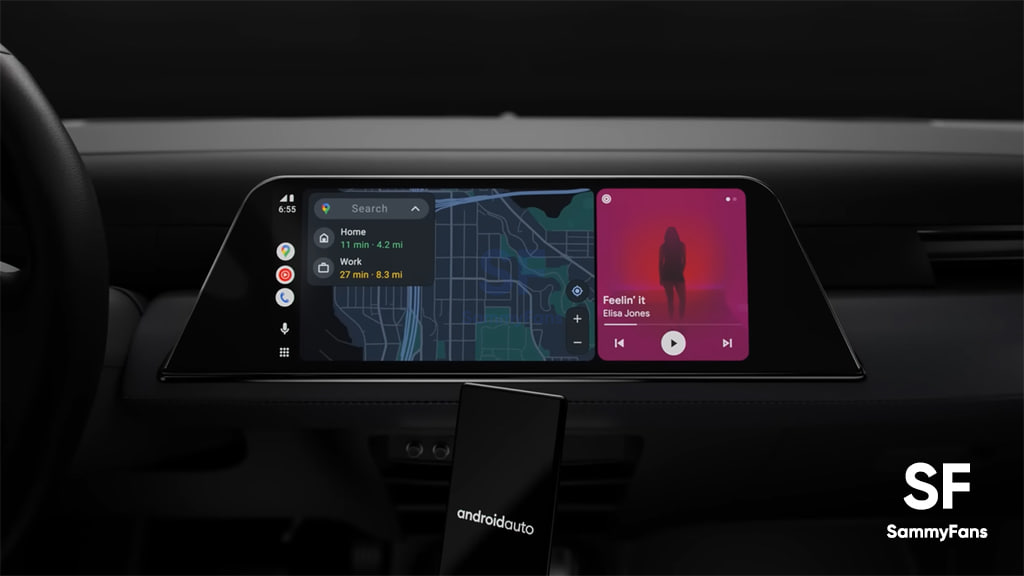
This feature is especially useful for people who listen to music, podcasts, and audiobooks during the same trip. For example, you might want to listen to music while driving on the highway and then switch to an audiobook in the city. With the new multi-card system, switching will be as simple as a swipe, without having to reopen apps.
Although the feature isn’t available to everyone yet, its presence in the beta version shows that it will likely arrive in a future Android Auto update. Along with other recent features, including Call Screening, Call Notes, and home screen widgets, Google continues to make Android Auto more helpful and easier to use.
This small change will make a big difference for anyone who uses multiple audio apps while driving. It gives them a smoother, more convenient experience on the road.
The post Android Auto may finally let you switch music apps without reopening them appeared first on Sammy Fans.
Samsung has announced that 2026 could be a big year for Exynos, which means Exynos 2600 will make its huge leap in performance competition, and we’ve compared early signs of upgrades through benchmarking against Exynos 2500 to get a better understanding of what’s heading our way.
Exynos 2600 is expected to be a major performance upgrade and power efficiency over previous top-tier processors. The reason behind these new developments is the 2nm technology process, and it appears that Samsung has also learned some new optimizations for system-on-chip design to make the processor competitive against its rivals.
This information makes the advanced chip launch worthwhile waiting, but we don’t have to wait for a full revelation for this chip to show its real power because Exynos 2600 has already appeared on Geekbench, and here’s what we’ve found in the listing.
Its base frequency is 2.76GHz and benchmarked with the 10-core architecture, the same as Exynos 2500, but with a different cluster combination.

Source – Jukanlosreve/X
Compared to this, the Exynos 2500 on Flip 7 had 2342 single-core and 7472 multi-core performance. Its base frequency is 1.80GHz, and the CPU architecture has four clusters, instead of three.

The Exynos 2600 is 1113 points ahead in single-core performance and 4149 points in multi-core. These are 47.52% and 55.33% performance improvements, respectively, in both segments.
That means the Exynos 2600 is faster for everyday tasks and heavy application usage, which makes it more reliable compared to Exynos 2500. The platform that the benchmark may also be a major factor, the new chip might receive a run on Galaxy S26, but the model wasn’t mentioned on the benchmarking platform.
Earlier in the Q3 business report, Samsung mentioned that it will opt for the Exynos Flagship in key flagship phones. Read more here.
The post Benchmark comparison of Exynos 2600 and Exynos 2500 reveals major performance upgrade appeared first on Sammy Fans.
AstrHori has unveiled its newest wide-angle prime, the 9mm f/2.8, an ultra-wide lens designed for APS-C cameras. Priced at $169, the compact lens offers a dramatic 111.4° angle of view with near-zero distortion, remarkable for a non-fisheye optic at this price.
A team of nine apprentices at Porsche Leipzig GmbH turned a high-performance Porsche 718 Boxster S sports car into one of the world's wildest camera cars.
Canva has announced the Creative Operating System and it is calling it the biggest evolution of its product to date. It includes a new AI model, a better video editor, and a new version of Affinity that combines all of its apps into one platform and delivers it to customers for free.
The all-new Affinity creative software has been unveiled, and it transforms the creative software landscape. It is a redesigned, all-in-one professional design app available now to everyone for free.
Smartphones have fundamentally changed photography, enabling people with no camera skill to shoot acceptable images. And that is largely down to something called computational photography that smartly manipulates the sensor so that shadows and highlights are visible in the same shot.
ProGrade Digital has announced the PG25 Pro, a Thunderbolt 5-equipped dock designed for professional creative workflows.
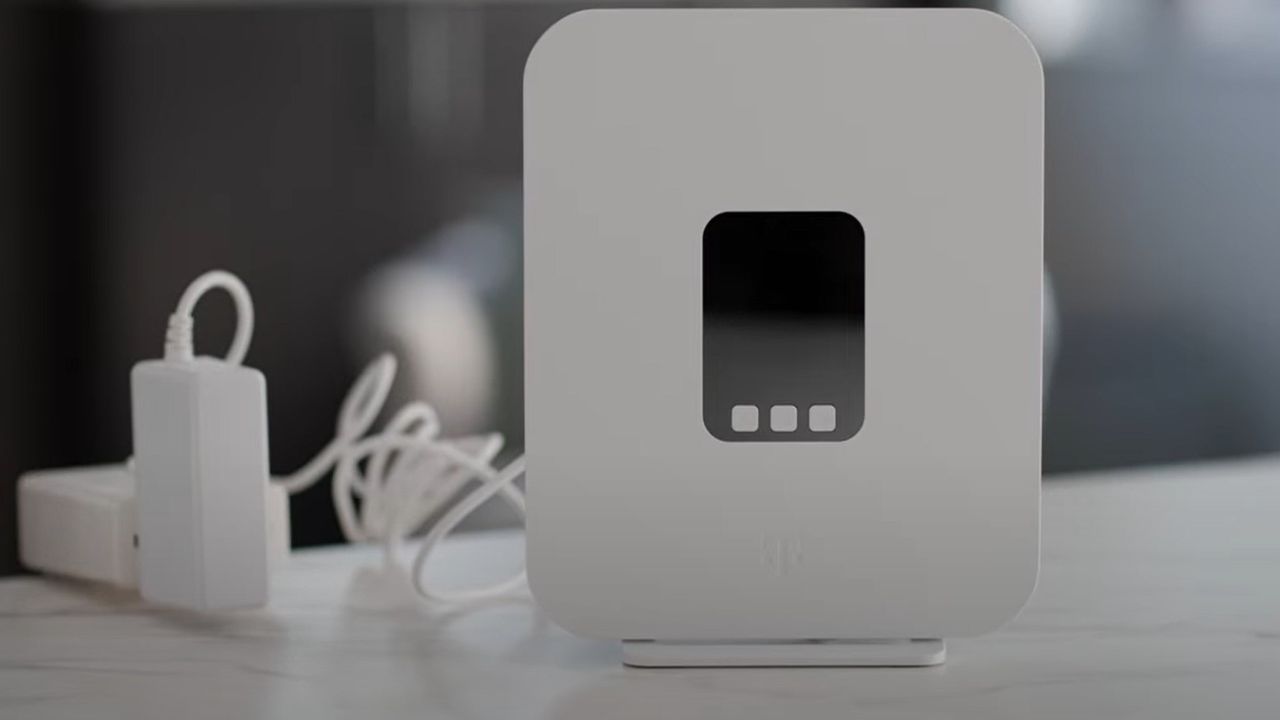
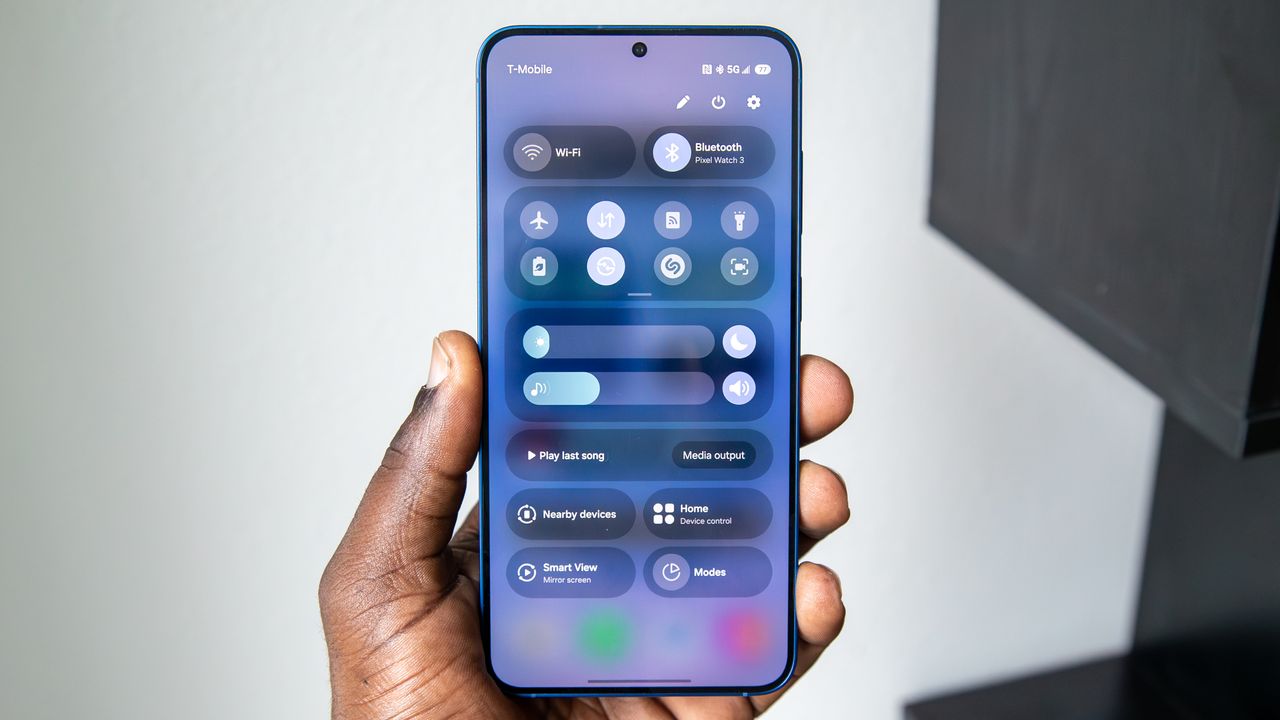
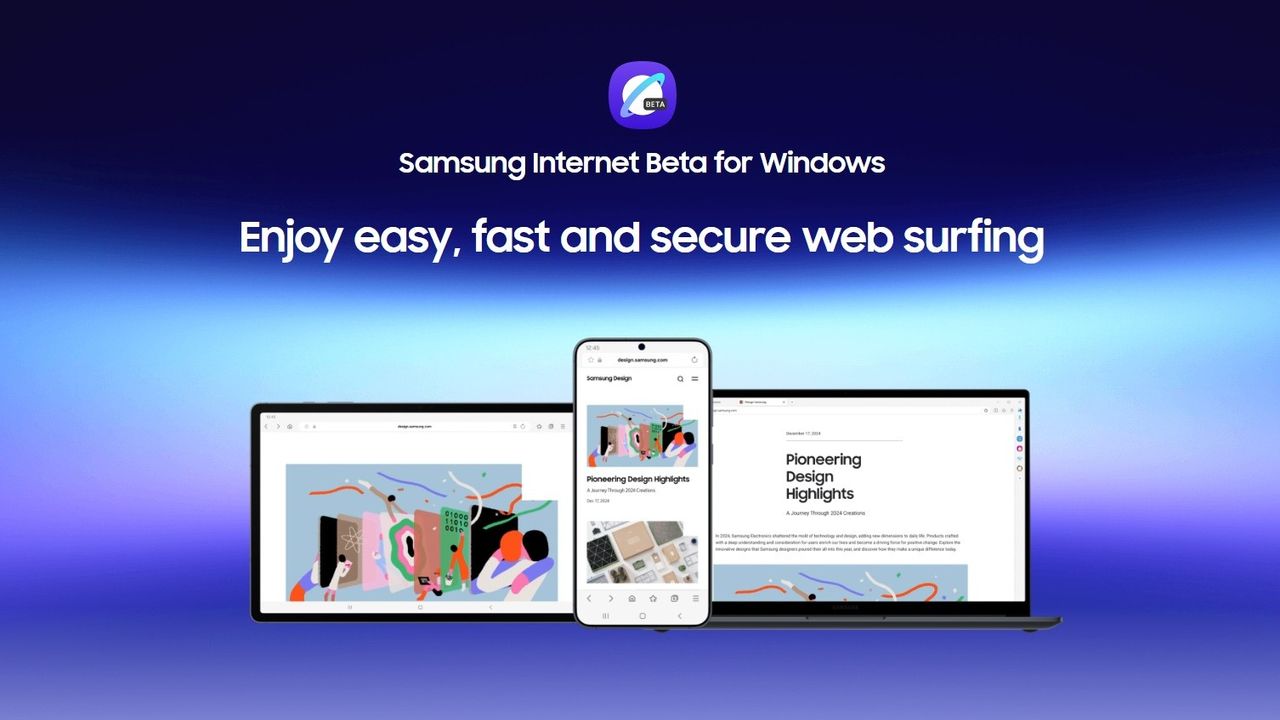
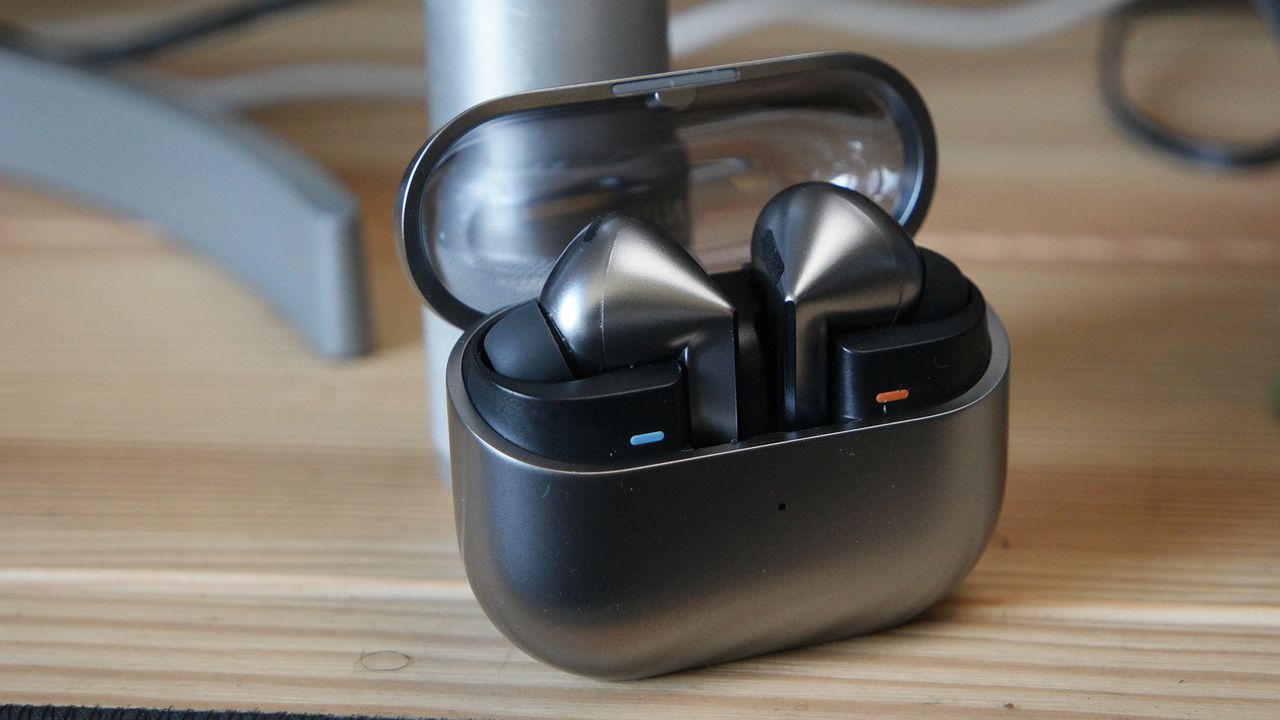
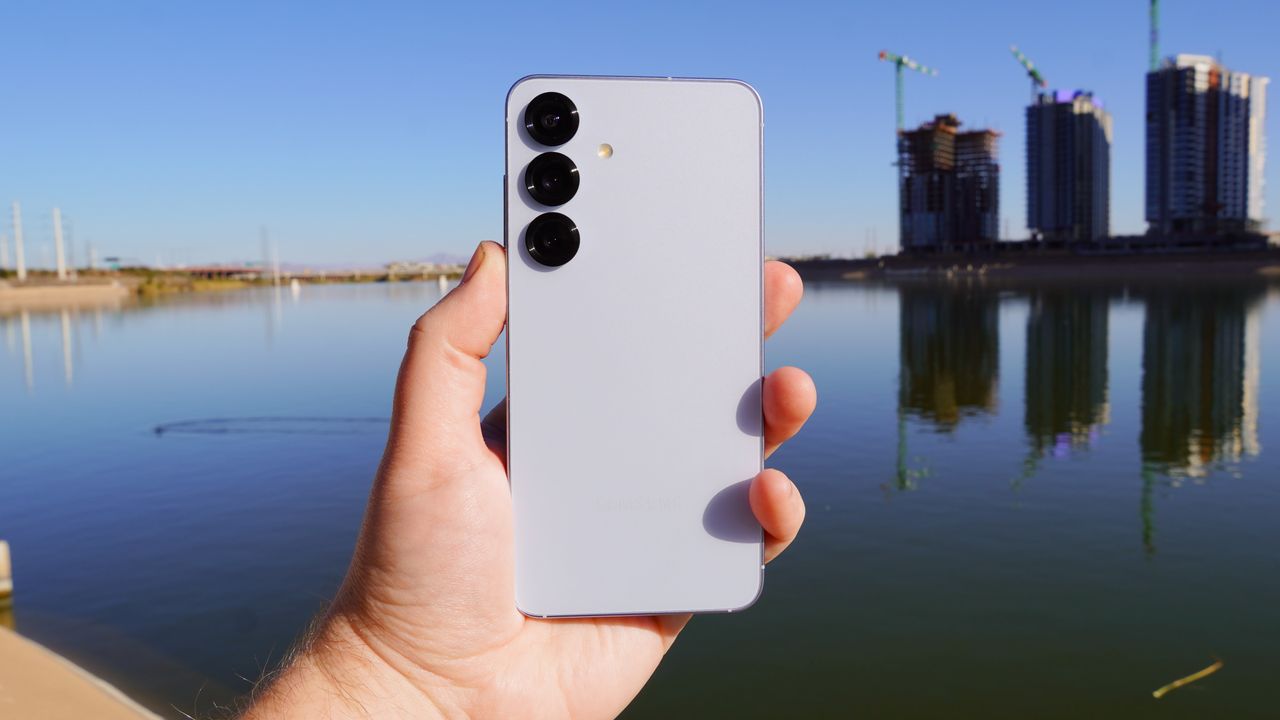
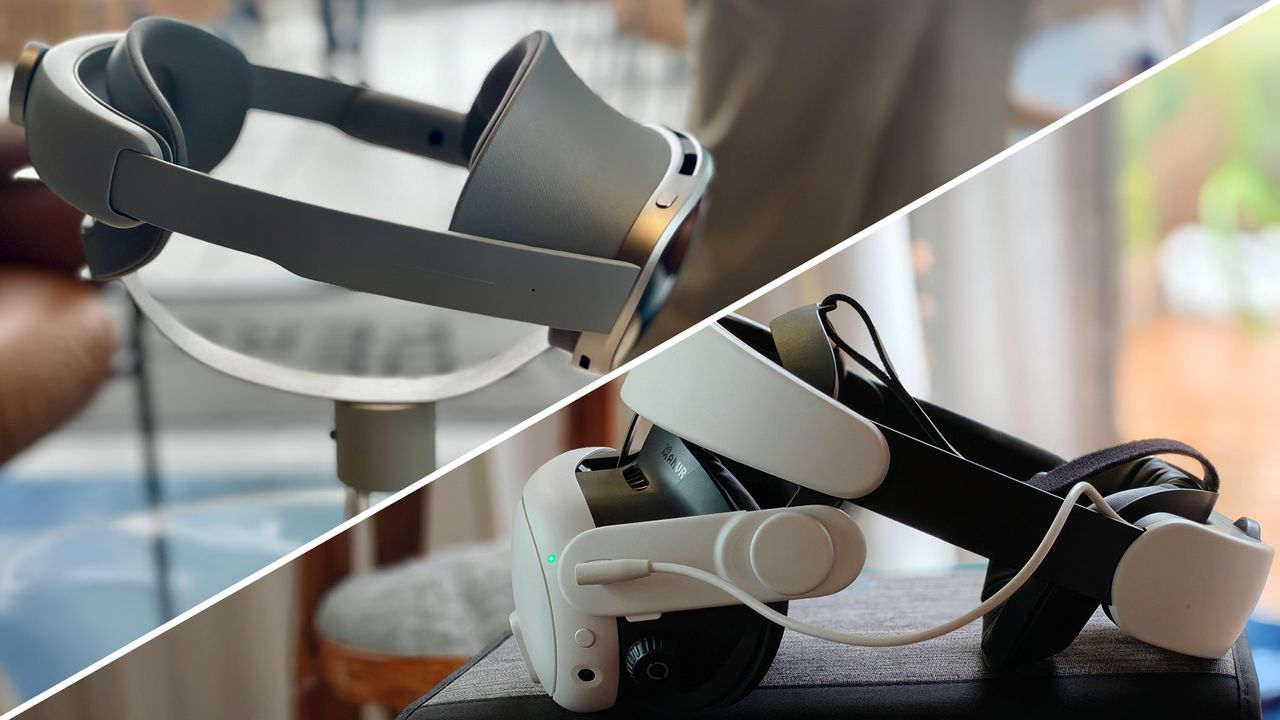







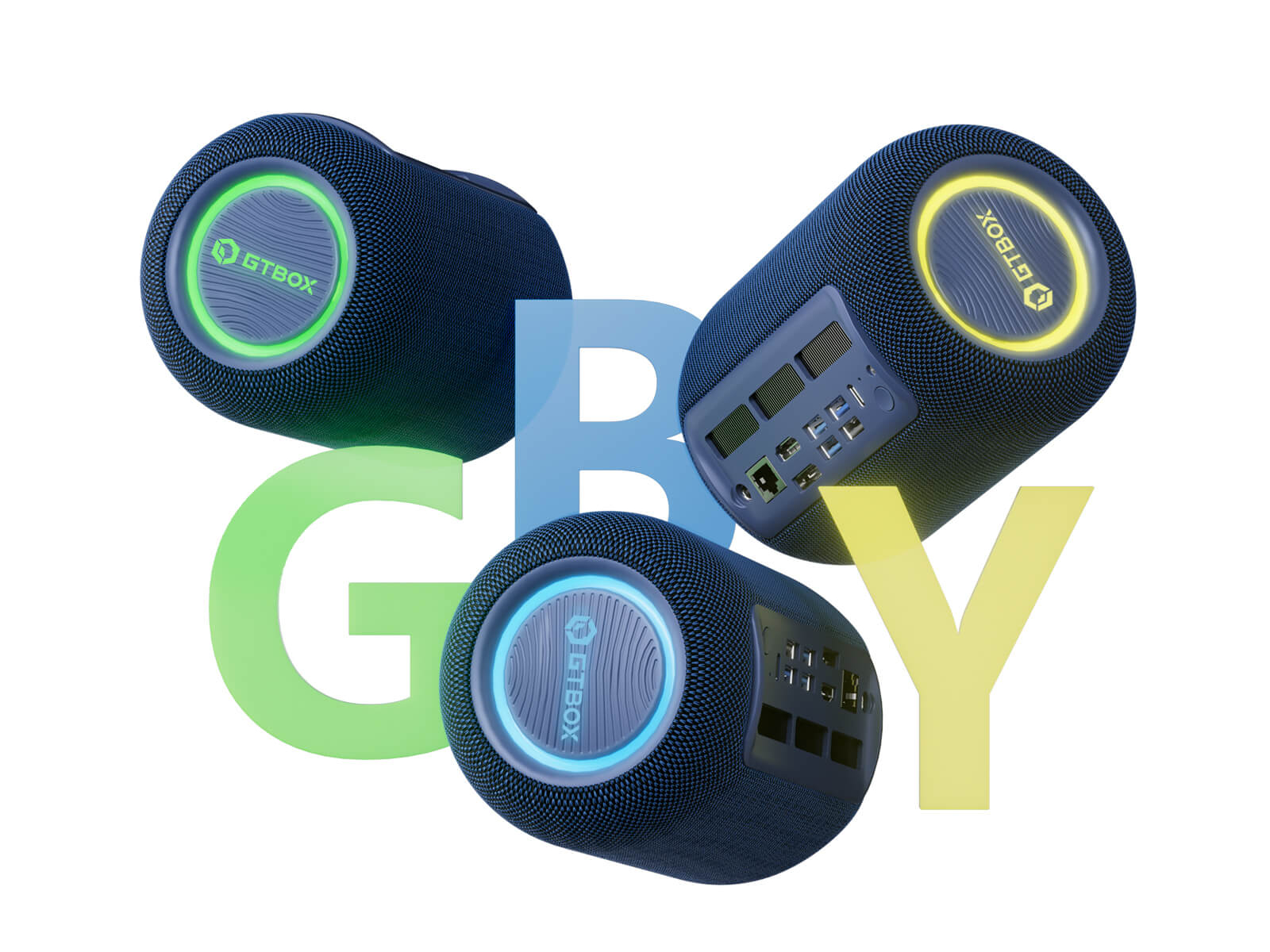

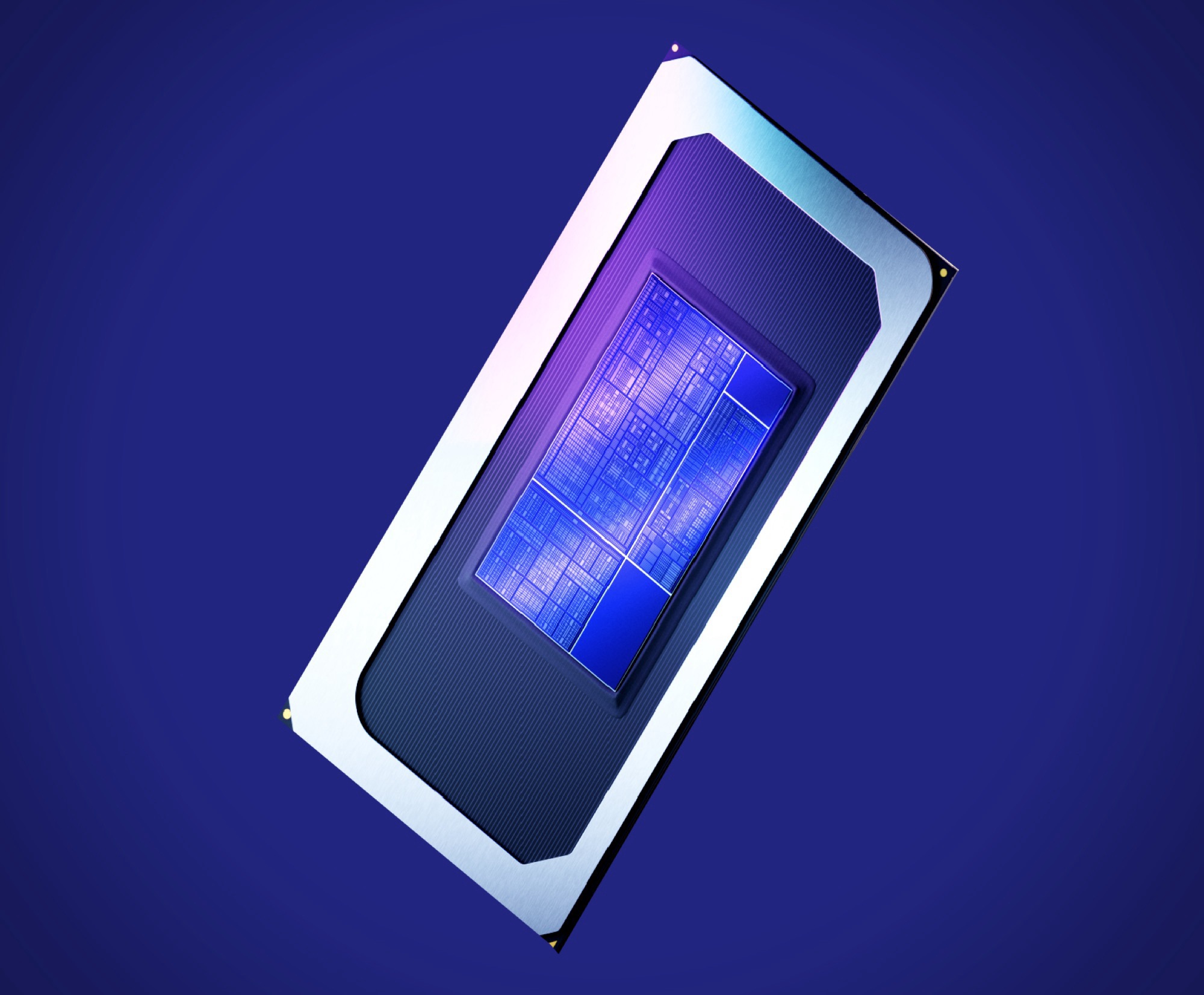
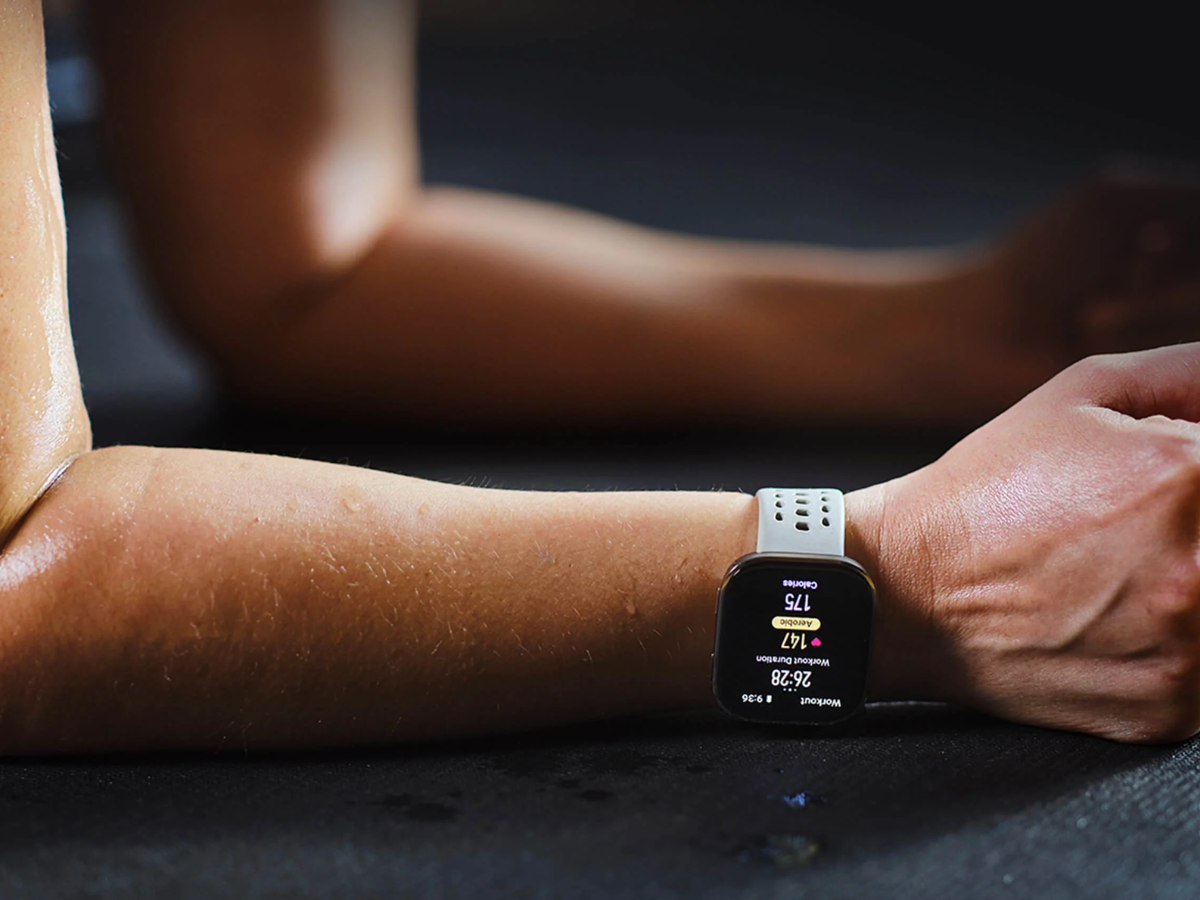

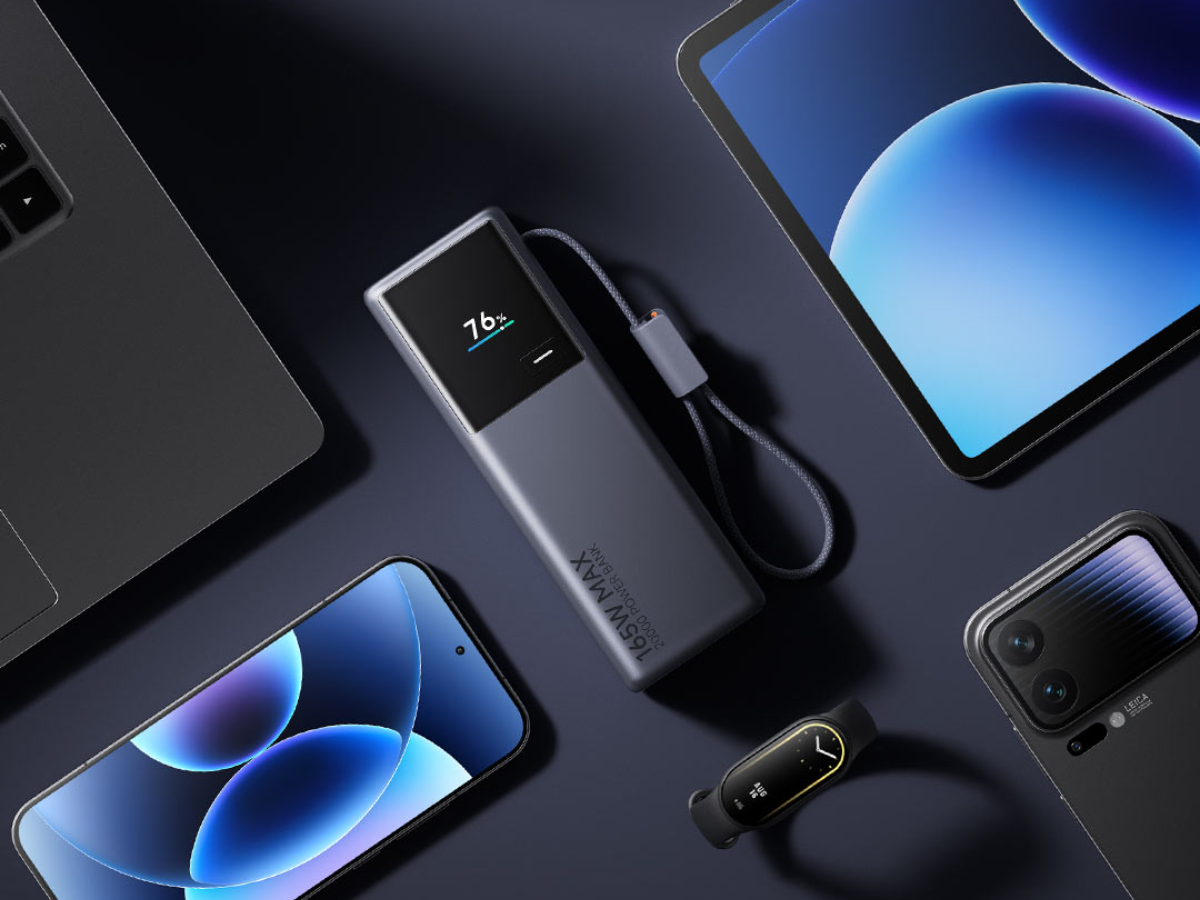

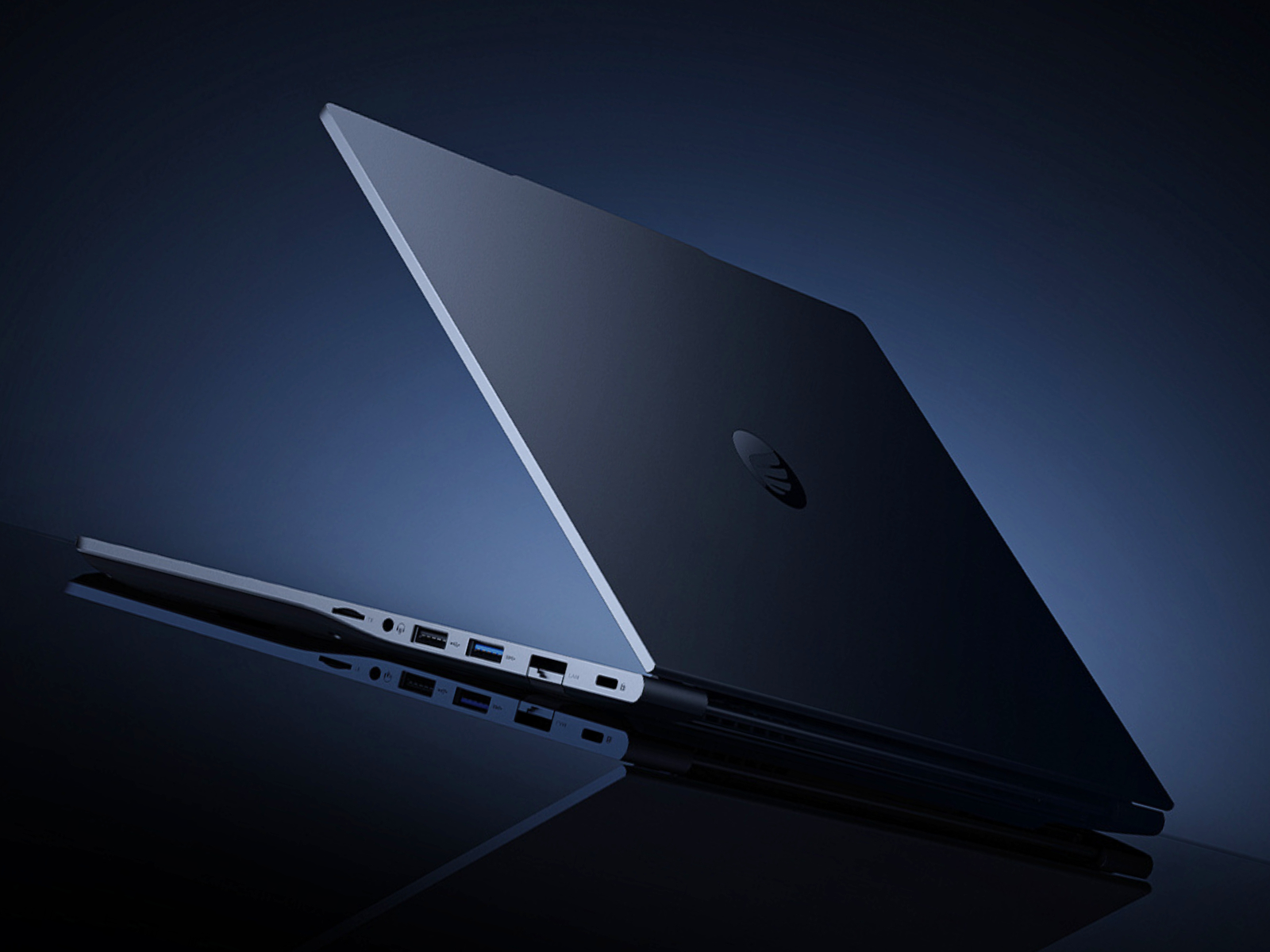
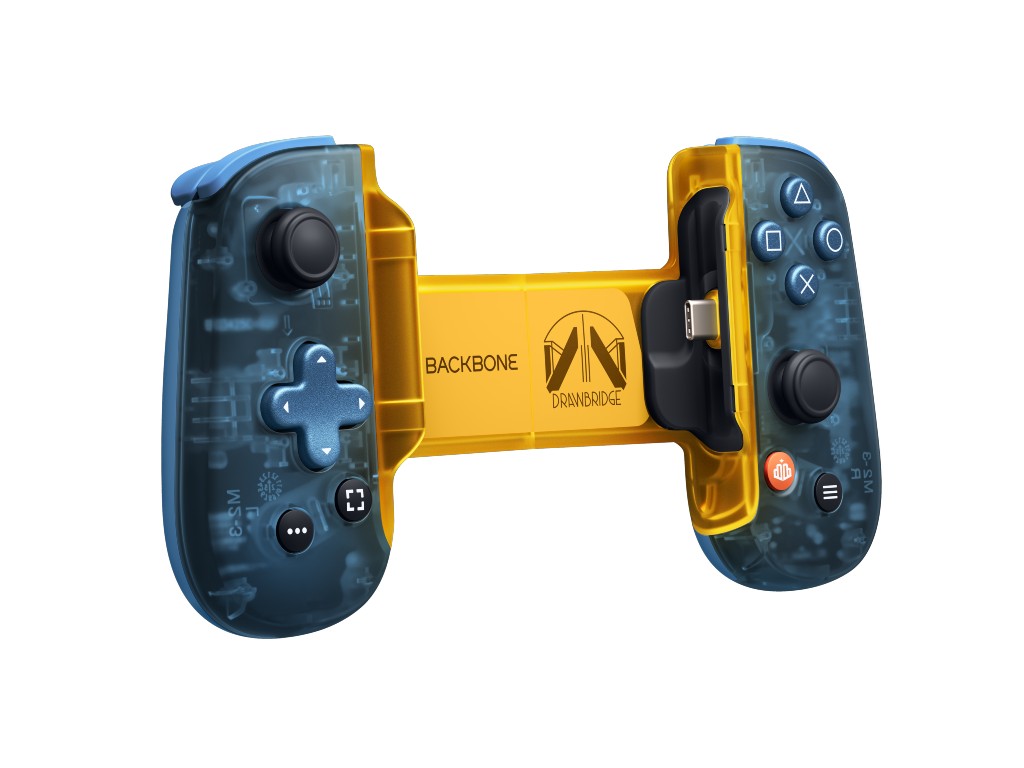

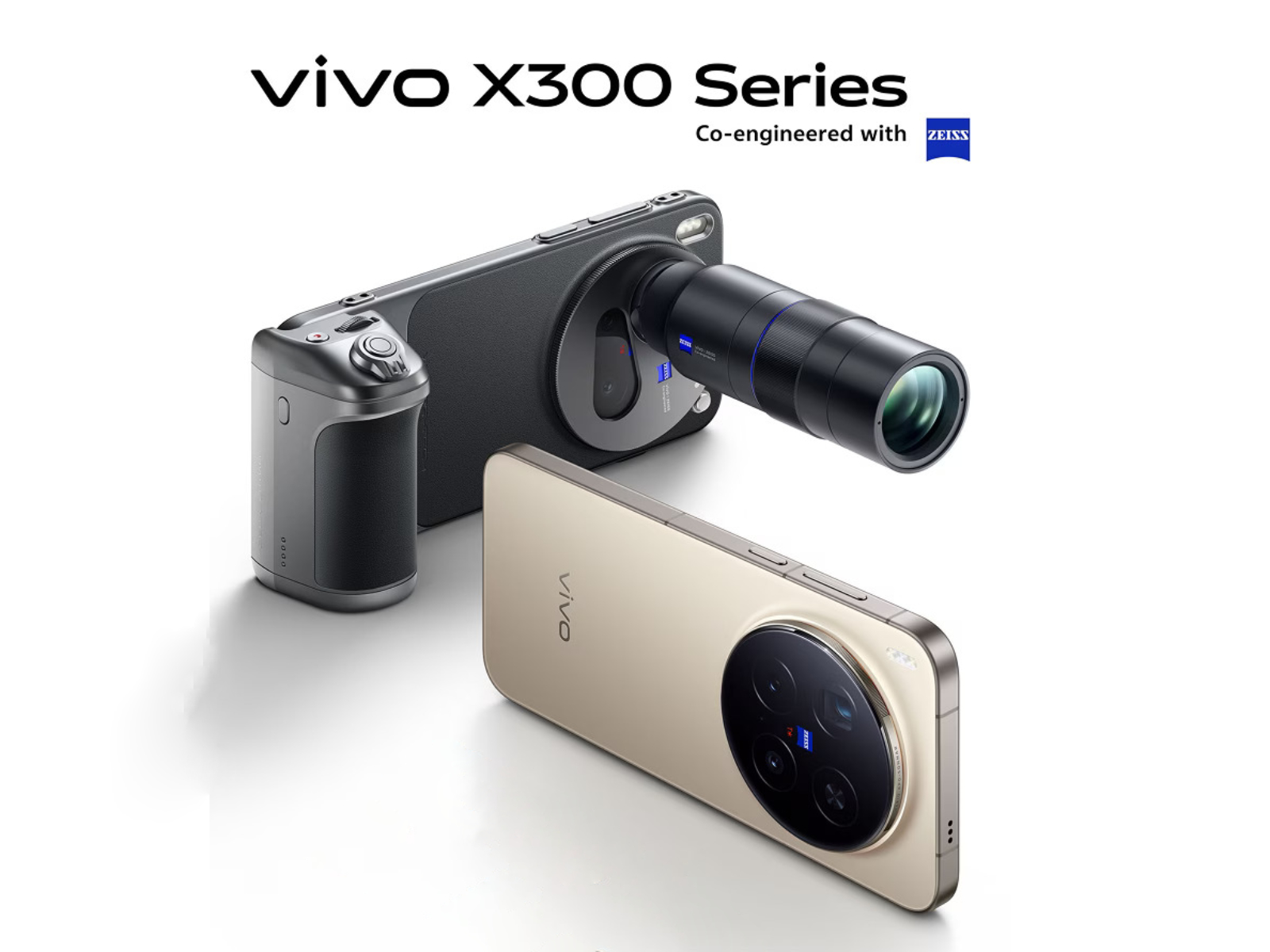


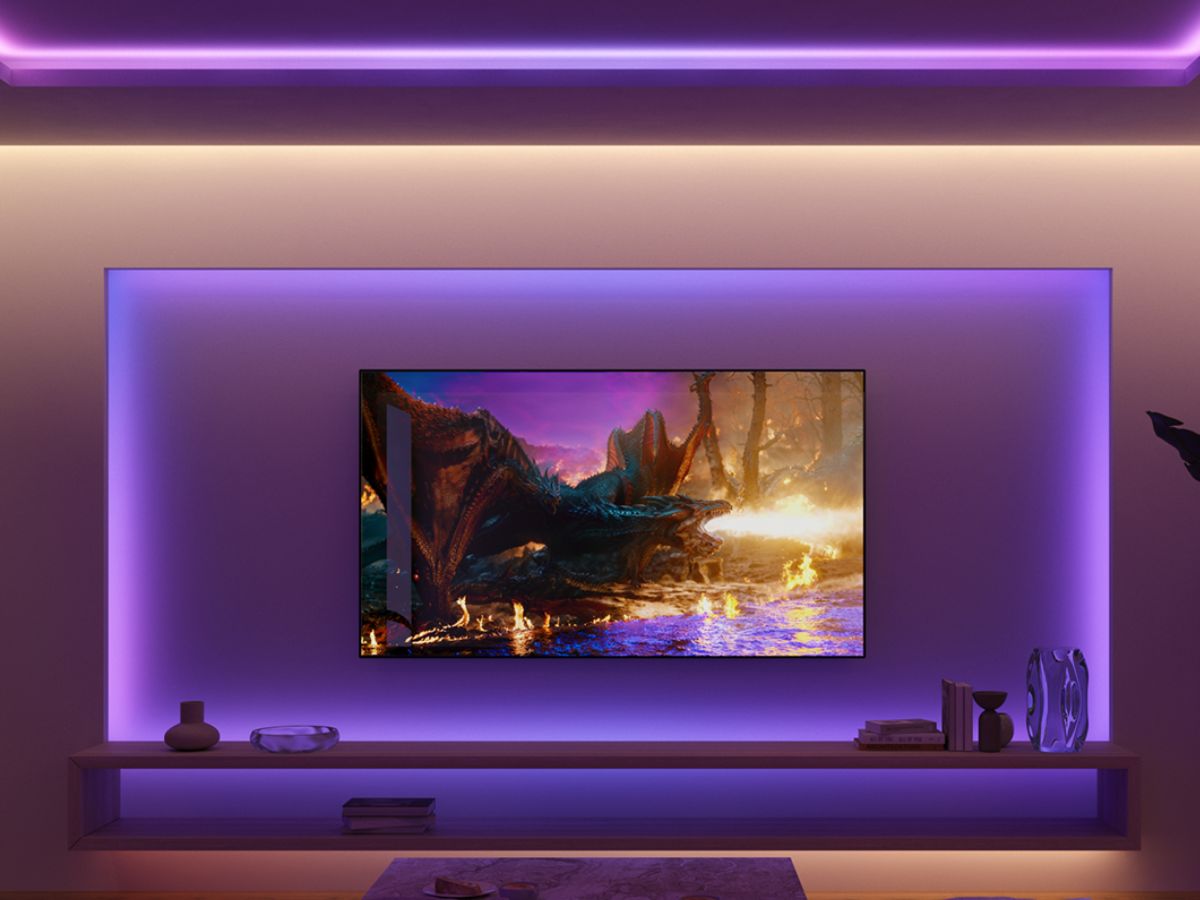


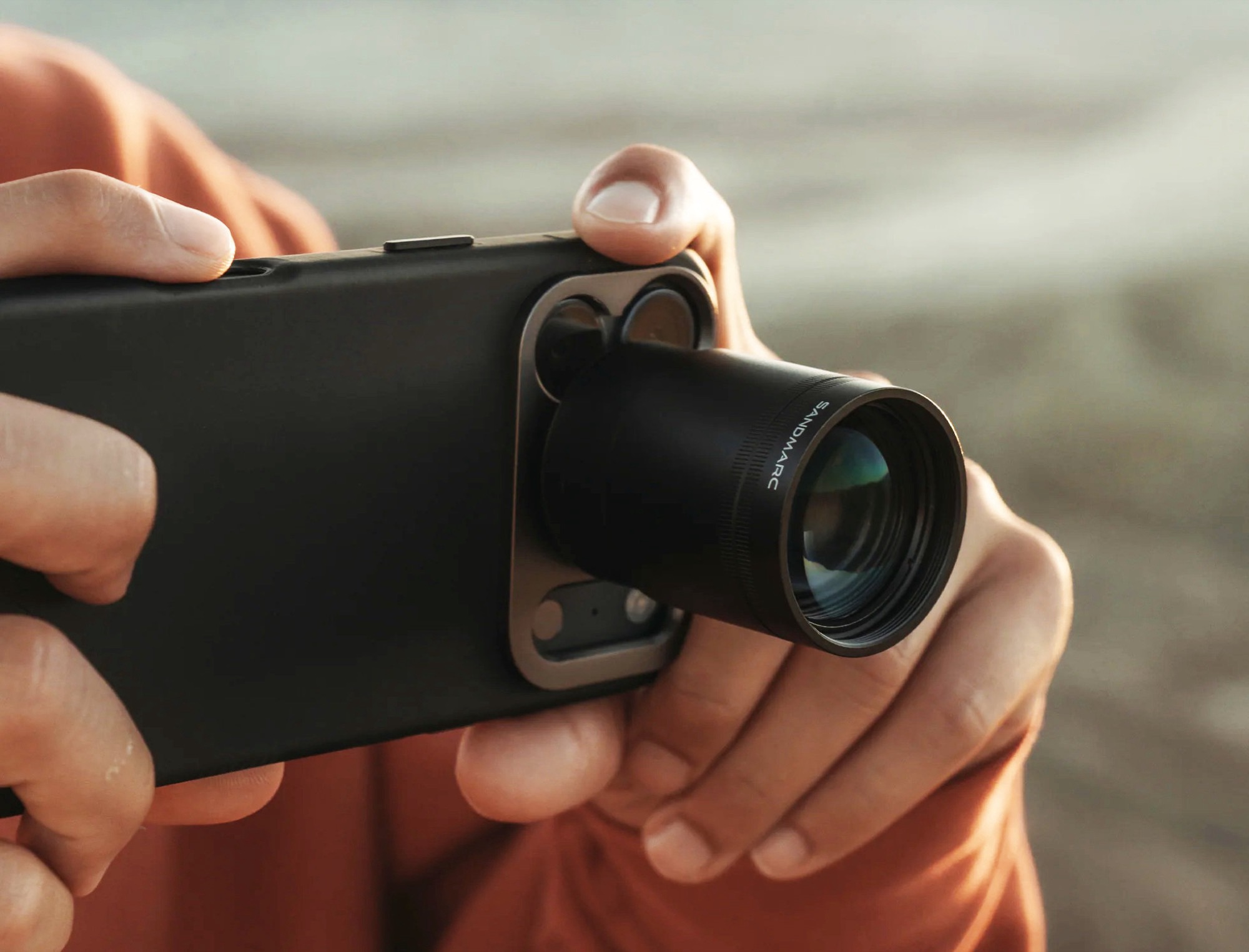

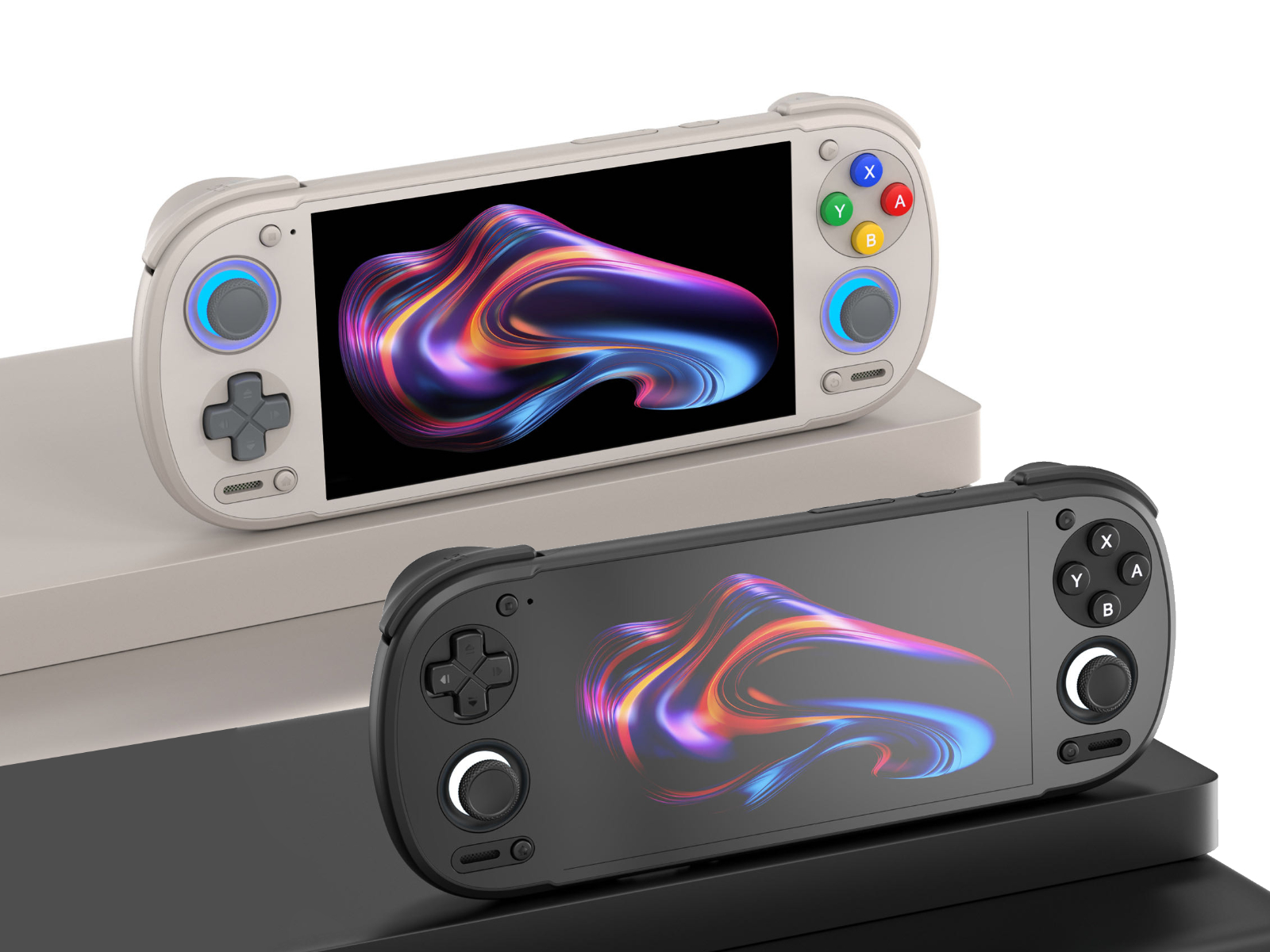


Earlier this month, vivo introduced the X300 and X300 Pro in China, featuring upgraded cameras, a refreshed design, and improved hardware like the flagship MediaTek Dimensity 9500 SoC. Today, at an event held in Vienna, the flagship phones have now debuted in Europe. vivo X300 Both phones support 90W wired and 40W wireless charging. The vivo X300 sports a 6.31-inch display, while the Pro variant has a 6.82-inch screen. The phones use an 8T LTPO panel with a 120Hz refresh rate and also feature an ultrasonic in-display fingerprint scanner. In the camera department, the X300...

Google Maps for Android is soon going to get a rather weird new power saving mode. This will work independently of your phone's power saving options. It was discovered through a dive into the code of the latest beta release of Google Maps for Android. It looks like you will activate the power saving mode by pressing your phone's power button. That sounds strange at first, but perhaps the idea here is that this would replace you turning the screen off entirely in order to save power? Anyway, once it's on, the interface becomes monochrome, and extremely minimalistic, as you can see in...

Samsung just published its financial report for the third quarter and used the opportunity to reveal some details about the upcoming Galaxy S26 series and Samsung’s strategy for Galaxy devices overall. The Samsung Galaxy S26 series will “revolutionize the user experience with user-centric, next-gen AI, a second-generation custom AP, and stronger performance, including new camera sensors,” said Daniel Araujo, VP of Samsung’s Mobile Experience Division (MX). AP stands for “Application Processor” and is the industry term for chipset. Why second generation, though? While it wasn’t...

The easiest way to charge more than one of your devices at a time is to have a single charger with several ports so you can do just that, and this 4-port charger from Baseus has that capability. Plus, it’s on sale, so there’s a good reason to consider it. It’s worth noting that this is listed by Amazon as a limited-time deal, and that could mean the price will increase before too long. If you enjoy picking things up at a discount, then you might not want to wait. When it comes to the regular price, this charger usually costs $79.99. So, you’d currently save $30.
Aside from having four charging ports, which is a huge benefit if you’ve got more than one device to charge at a time, this charger has an output of 140W. With that kind of power running through the charger, you’ll end up being able to charge devices like laptops and charge multiple devices quickly.
It’s worth noting, too, that the top two USB-C ports will each deliver up to 70W of power. So, you could charge two laptops with that, or a laptop and a handheld gaming PC. In addition to those two ports, you have a third USB-C port and one USB-A port. This charger has folding prongs as well, making it easier to pack for travel or commuting. This charger does not come with cables, so you’ll need to use ones you already have or pick those up separately. In addition to that, if you want the fastest possible charging, you need to make sure the cables you use support the maximum power output that each port can deliver.

The post If you hurry, you can grab this 4-port Baseus charger for $50 appeared first on Android Headlines.

It’s not hard to find a decent pair of true wireless earbuds, but it can be hard to find a decent pair that are so inexpensive, which is why this deal on the Soundcore P20i should be a top priority if you’re in need of a pair. Now, when we say decent, we’re talking about a pair of earbuds that will sound good, but they’re also comfortable and will last you a while between charges. The P20i earbuds tick all those boxes, and all for the low price of $19.99. These would normally cost you $39.99, so you’re getting these for 50% off. That’s pretty good.
For earbuds, you don’t just want something that sounds good. You also want something that’s comfortable to wear, so you could wear them all day if you wanted to. You also want something with a long-lasting battery that would actually keep going that long. These will last for 10 hours between charges. You’ll even get 2 hours of listening time if you put these in the charging case for 10 minutes. The charging case also extends battery life to a maximum of 30 hours before you need to recharge the case and the earbuds.
As for comfort, Soundcore designed them to be ergonomic so that they sit in your ears comfortably. These don’t come with active noise cancellation, but they do feature some decent bass, and you can control the EQ for further customized sound using the companion app. These come in five different colors as well, but only the black, white, and blue colors are on sale for $19.99.

The post Soundcore's $20 P20i earbuds will keep you grooving for 10 hours appeared first on Android Headlines.

Meta CEO Mark Zuckerberg announced that Meta will “add yet another huge corpus of content” to Facebook, Instagram, and Threads as AI makes it easier for people to create and remix media.
Meta’s strategy is now evolving around recommendation systems that use AI to curate and show relevant content in your feeds, including AI-generated posts. This marks the third phase of social media, following earlier stages dominated first by posts from friends and followed by pages, and later by creator content. He didn’t call this a third era, but it’s clear AI is taking over here.
The Verge reports Zuckerberg said recommendation systems that “deeply understand” AI-generated content and show you what you want will become “increasingly valuable.” This is why Meta plans to rely more on algorithms that learn what users like and push AI-made posts. This isn’t new, as the company already uses AI for recommendations, and it also aligns with Zuck’s take on AI as a companion.
Interestingly, these statements follow reports of a potential alliance between Mark Zuckerberg and Elon Musk in a financing deal for a bid to acquire OpenAI. For years, they have both openly criticized OpenAI.
Zuckerberg told investors that the company is increasing its budget for data centers and computing power. “The right thing to do is to accelerate this,” he said. “We need the compute for AI research and for all the new things we’re building.” Meta has already invested billions into training models, hiring top AI engineers, and improving its infrastructure.
Meta CFO Susan Li said users have already created more than 20 billion images in the company’s new Vibes app, which delivers a nonstop stream of AI-generated videos, similar to OpenAI’s Sora. Zuckerberg called the Vibes app a glimpse of what’s coming next. “I think that Vibes is an example of a new content type enabled by AI, and I think that there are more opportunities to build many more novel types of content ahead,” he said. In other words, Vibes is Meta’s test case for a faster, more automated kind of social feed.
In addition to this, Meta reports $51.24 billion in revenue for the quarter, up 26 percent from a year ago, though it recorded a $15.93 billion tax charge linked to President Donald Trump’s Big Beautiful Bill. The revenue tells us why the company is investing so heavily in AI-driven products. It wants to keep users engaged longer and grow new AI content into your feeds.
There are also concerns that more AI content will mean more confusion about what’s real and what’s generated. Meta has said it will label “AI-generated” and edited media, but many users doubt those tags will be clear or consistent after the updates.
The post Zuckerberg says Meta will flood your feed with more AI content appeared first on Android Headlines.

iRobot, once the company synonymous with robot vacuums, might not make it another year. For many years, iRobot was the company you thought of, when you thought of robot vacuums. It wasn’t “I have a robot vacuum”, no, it was “I have a Roomba,” even if it was another brand. Similar to Google and Search, or Galaxy and Android. But, as of late, iRobot has been struggling pretty hard.
Back in August of 2022, Amazon had announced it was going to acquire iRobot for $1.7 billion. But, regulators shut that down. So it abandoned this deal in 2024. Since then, iRobot has been spiraling the drain.
Since Amazon abandoned the deal, iRobot has been looking for new buyers for the company, with the last remaining buyer having withdrawn from negotiations this month. So now, iRobot is warning of bankruptcy if it cannot find a new buyer or secure more funding.
As a robot vacuum reviewer, one who has reviewed probably over 100 robot vacuums in the last 7 years, I saw this coming. Let’s explore why I saw this coming.

Let’s call a spade a spade, iRobot hasn’t been very competitive in years, in the robot vacuum space. It took them many years after the competition to finally add a mop to their vacuums. They were also far behind the competition in adding an auto-empty dock. While also charging more than many of its competitors, like Roborock, Dreame, Mova, and others.
iRobot was only selling decently because of its name. I’ve reviewed a couple of iRobot’s options over the past few years, and honestly, I was not impressed. Especially when you factor in their price. I reviewed their first vacuum and mop combo, the Roomba Combo j7+, which was $1,099, and I felt that it was overengineered compared to other combo vacuums. Instead of just lifting up the mop, iRobot had the mop lift up over the entire vacuum and sit on top of the vacuum. While cool, it was over-engineered and likely what drove the cost up.
Meanwhile, competitors had moved onto using dual mops, focusing on anti-tangling from hair, and other innovative features. In fact, many can go up and down stairs now. What about iRobot? Well, it can still clean your floors.
It’s almost like iRobot believes that the Chinese brands don’t exist in the US. That might work for Apple and Samsung in the US with smartphones, but for robot vacuums, that’s not a thing. Brands like Roborock, ECOVACS, Dreame, and Mova are all available in the US, and many are available in physical stores next to iRobot.

Like a lot of companies that we’ve watched fail over the years, iRobot was stuck in its ways. They were stuck thinking they were the only player in the world of robot vacuums. Which is far from the truth. Between the lack of innovation and the pretty high prices, iRobot just can’t compete these days.
On top of that, the world is in a recession, which is affecting all robot vacuum companies. These are not seen as necessities for most people. Not to mention the fact that some flagship robot vacuums are over $1,500 now. Meaning, they aren’t selling that many.
Back in March, iRobot admitted that it could go under for good in the next 12 months, and that was 7 months ago. So it’s unlikely that iRobot will be around for all that much longer, unfortunately. iRobot is also seeing some pretty huge drops in revenue, year-over-year. With a huge 44% drop last quarter, versus the year before. And that’s revenue, not profit. Meaning that iRobot isn’t even bringing in the money needed to stay afloat.
What could happen to iRobot? Well, it’s likely that the company would be sold for parts. Amazon originally wanted iRobot for its robot technology, not necessarily for robot vacuums. That technology is going to be very important to some companies, especially with everyone working on humanoids these days. It’s going to be very interesting to see what happens over the next year.
The post The Fall of iRobot: How the King of Robot Vacuums Lost Its Crown appeared first on Android Headlines.

Threads by Instagram hit 150 million daily active users, as announced by Mark Zuckerberg during Meta’s third-quarter earnings call. Threads is a text-based conversation app from Instagram that allows you to share updates or have conversations. This latest milestone comes after the company reported in August that Threads has more than 400 million monthly users.
Zuckerberg said that Threads could be the next big thing for Meta. The app is apparently “on its way to leading its category.” He adds that the time users spend on the app has gone up by 10%. He credits this to the changes in the AI-based recommendation systems. The app recently gained ‘Ghost Posts‘ and gave users the ability to post 10,000 words in one go.
Instagram chief Adam Mosseri, on Wednesday, said that Meta was also “exploring” algorithm personalization controls for Threads. This will enable users to independently influence which posts Threads show them. This is a similar feature that’s being tested on Instagram.
The growth of Threads comes at a cost. Meta confirms that it’s ramping up ads on the platform. During the call with analysts, Meta CFO Susan Li said that “ads are now running globally” in the Threads feed. Meta in April brought ads to Threads users in 30 countries after a limited test earlier this year.
A few days ago, Meta announced that it will expand ad formats and creative enhancements on Threads. This includes video ads. It’s increasing the maximum height of single-image and video ads on the Threads feed from a minimum 1:1 to 4:5. “We’re following our typical monetization playbook of optimizing the ad formats and performance,” CFO Susan Li said.
The post Threads Hits 150 Million Daily Users as Meta Expands Ads appeared first on Android Headlines.

Samsung’s very first tri-fold smartphone was shown off a couple of days ago, though it was placed behind glass at the time. Still, that didn’t prevent some people from trying to make estimates on its unfolded and folded thickness. That’s exactly what a new report did.
According to a report by The Korea Economic Daily, this tri-fold smartphone from Samsung measures 4.2mm when unfolded. That’s the same thickness that the Galaxy Z Fold 7 has when unfolded.
What about its folded state? Well, based on the report, the phone is somewhere between 12 and 15mm thick when folded. Do note that there’s possible there’s a margin of error here, as those are estimates made while the phone sits behind glass.
If true, however, when folded, this tri-fold smartphone will be thinner than the Galaxy Z Fold 2, 3, and 4, for sure. Those three phones are 16.8mm, 16mm, and 15.8mm thick at their thickest points.
Depending on where its thickness sits in that 12-15mm range, it may even be thinner than the Galaxy Z Fold 5 and 6, though that’s not as likely, at least when the Galaxy Z Fold 6 is concerned.
For comparison’s sake, both of Huawei’s tri-fold smartphones, the Mate XT and Mate XTs, have the same thickness when folded, they’re 12.8mm thick. It remains to be seen whether Samsung’s phone will be able to beat that.
Speaking of which, Samsung’s first tri-fold smartphone is expected to become official at the APEC Summit. That is taking place October 31 – November 1. So, only in a couple of days. That’s just an estimate based on a recent report, though, Samsung still hasn’t confirmed its launch date.
Even Google confirmed that the phone is coming, however, as the phone appeared in the Google app’s code.
The post Samsung’s Tri-Fold Phone Might Be Thinner Than You Think appeared first on Android Headlines.

Smartphone cameras have come a long way in recent years, with AI enhancements further improving the experience for consumers. Going by the current trend and developments, it wouldn’t be a total surprise to see even more advancements. If the current rumors are anything to go by, a smartphone with two 200MP cameras could soon become a reality. The brand that’ll allegedly embrace this setup is Huawei, and the phone could be the Huawei Pura 90 Ultra.
The Huawei Pura 90 Ultra will be a successor to the Huawei Pura 80 Ultra, which currently holds the top spot in DXOMARK smartphone camera rankings. Prolific leaker Digital Chat Station in a post on Weibo shared that one of China’s top five smartphone manufacturers is developing a dual 200MP camera setup, with the solution including a 200MP main sensor and a 200MP periscope telephoto lens. Both sensors could feature larger sensor bases than usual.
While the leaker hasn’t explicitly mentioned the brand name, comments point towards Huawei, likely for its upcoming Pura 90 series. The lineup may debut sometime in 2026. Interestingly, the Huawei Mate 80 Pro has also been rumored to get the 200MP camera setup, but there’s no clarity.

Another leaker, ExperienceMore, notes (via Huawei Central) that Huawei Pura 90 Pro+/Ultra variants are testing 200MP main and telephoto sensors. The Weibo even post goes to claim that Apple is also evaluating a 200MP imaging sensor for its next-gen iPhone models. However, we can’t confirm the authenticity of the leak at the moment.
While more megapixels don’t naturally mean top-class performance, it’s impressive that a brand is daring to incorporate two 200MP cameras. If the new leaks pan out, Pura 90 Ultra could be the world’s first smartphone with a dual-200MP camera setup. We’ve already seen a glimpse of what a 200MP camera can do with the Galaxy S24 Ultra and 25 Ultra. The larger sensors are capable of delivering sharper textures and richer details.

The post World’s First Dual 200MP Camera Phone Could Launch Next Year appeared first on Android Headlines.

In its Q3 earnings release, Samsung mentioned that it would introduce new form factor innovations in 2026. Which has many thinking that Samsung might be talking about its heavily rumored tri-fold device. The device was already shown off this week in a glass box at a summit in South Korea. So we have a general idea of what it looks like.
Like a lot of other new form factors we’ve seen at various trade shows, people were able to take photos, but were unable to touch or use the device. This is likely because the official announcement is set for next year. Somewhat surprisingly, Samsung is staying tight-lipped about this device.
The earnings release also says that the company will expand its AI leadership with “form factor innovations” and also expand AI smartphone sales. This likely means that we could see some other AI devices, maybe a wearable, or possibly the new AI glasses that Samsung teased at the Galaxy XR event a few weeks ago.
It likely doesn’t look like it from a consumer perspective, but Samsung is in trouble. Their flagships aren’t selling as well as they used to. Of course, a big reason for that is the very minor upgrades we’ve been seeing year-over-year. And flagships are where Samsung sees the most profit – as does any other company.
Samsung is also seeing tough competition outside of the US from Chinese brands like vivo, OPPO, HONOR and many others. While Samsung still owns the US, and likely always will, it’s been hard to grow in other countries like China and India.
However, new form factors like a tri-fold could really boost Samsung’s position. Obviously, a tri-fold is not going to be cheap. We’ve seen estimates at over $3,000 for this device. To put it in perspective, Huawei’s tri-fold Mate XT was priced at over $5,000 at one point, because demand was much higher than supply.
But the real question is, can this Samsung tri-fold make it onto our best Foldable smartphone list?
The post Samsung Confirms Major Form Factor Innovations Coming in 2026 appeared first on Android Headlines.

Netflix has announced its next big bet beyond traditional content streaming. At TechCrunch Disrupt 2025, the CTO of Netflix, Elizabeth Stone, confirmed that the platform is adding three new features to make the watching experience more social and immersive. The new features are made with an aim to make viewers feel involved, connected, and part of the show’s story in real time.
The CTO has announced the rollout of Netflix’s new real-time voting feature for live shows. This feature will let the viewers directly influence outcomes as they watch. Previously, it had already been tested on a live cooking show, and the official confirmed that they received a tremendous response.
Now, Netflix is expanding this to Star Search as it returns after 20 years. During the show, viewers will be able to vote live from their TV or phone to help decide which contestants move forward. Voting windows will be time-limited to keep things fair. Rewinding the livestream will result in losing the chance to vote.
Alongside the live-voting feature, Netflix has introduced a new interactive screen on its homepage. The first rollout is a Halloween immersive experience, followed by holiday and franchise-themed sets like Bridgerton. Above all, this feature is designed to bring the content to life through animation and dynamic special effects
After announcing the interactive features, the official revealed the new kids’ profile feature on Netflix. Now, it is rolling out globally with a redesigned homepage modeled after the adult experience, but tailored for children’s habits. Additionally, the kids’ interface includes a simplified layout with a top navigation bar. Moreover, it also gets a dedicated ‘My Netflix’ tab for saved and recently watched titles.
Apart from this, Netflix is creating party games for the TV, including Boggle, where players can use their phones as a controller. These launch later this year, with more games coming in 2026.
With these new features, the company wants its audience to feel more connected to the storyline playing on the screens. In addition, they want to change the traditional content viewing experience to something unique and more ‘personal.’
The post Netflix Announces Three New Features to Make Streaming More Interactive and Social appeared first on Android Headlines.
Samsung has officially started rolling out the One UI 8 update for all Galaxy Tab S8 models across the globe. The update is based on Android 16 and brings new features, better performance, and a smoother look and feel.
One UI 8 update for Samsung Galaxy Tab S8, S8+, and S8 Ultra models is live in Europe and the UAE (via APTIVI). Users can verify the update via One UI build version ending with EYJ4, and it is now available for both Wi-Fi and 5G models.
With this major update, Samsung has made the interface more powerful and user-friendly. It makes it easier to use your tablet for work, creativity, or entertainment.
Samsung enhanced the split-screen multitasking functionality. Galaxy users can now open three apps side by side in vertical app windows. The new software elevates the Samsung DeX experience with Android’s Desktop Mode integration.
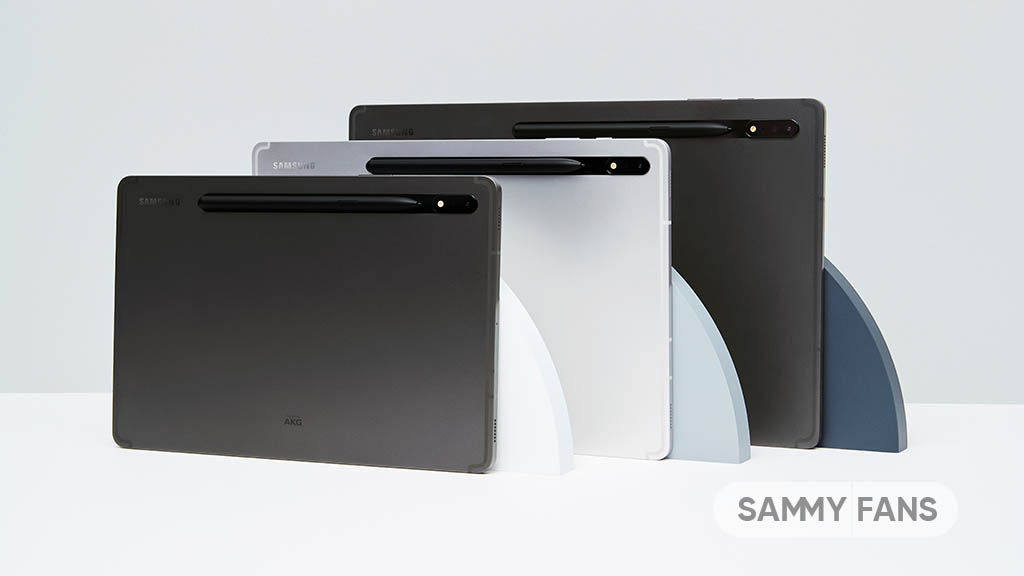
To get the update, open the Settings app, go to Software Update, then tap on Download and Install. Once you see One UI 8 at the top, tap Download, wait for it to finish, and then tap Install.
Make sure your tablet is charged and connected to Wi-Fi, as the update is around 3GB in size and may use a lot of data if downloaded on mobile networks. The whole process usually takes about 10 to 15 minutes.
Aside from this, Android 16 is the last major software update for the Galaxy Tab S8 series. However, users will still get One UI 8.5 next year with improvements and bug fixes. After that, newer versions like Android 17-based One UI 9.0 will not come to these tablets.
If you haven’t received the One UI 8 yet, don’t worry, as it may take a few days or weeks to reach your region. Once installed, you’ll enjoy a better design, improved speed, and new features that make your Galaxy Tab S8 more powerful.
The post Samsung Galaxy Tab S8 starts receiving One UI 8 update globally appeared first on Sammy Fans.
Samsung could be preparing to launch its first tri-fold phone in 2026, marking a new chapter in its foldable phone lineup. The company has been developing this unique device for several years, and now it looks like it’s finally getting closer to release.
In the Q3 2025 earnings report, Samsung mentioned that new “form factor innovations” are coming in 2026. This phrase has caught attention because it likely points to the long-rumored tri-fold phone.
Earlier this year, Samsung showed the tri-fold phone publicly for the first time at a tech event in South Korea. However, it was kept safely inside a glass case, and people could only view it from a distance.

Source – Chosun
Samsung hasn’t revealed any details about the phone’s design, features, or price yet. Still, showing it in public suggests the company is confident and ready to move forward with the project.
The tri-fold phone is expected to offer an even larger display by folding out in three sections, possibly working as both a smartphone and a small tablet. It might also include new AI-powered features.
If the hints are correct, Samsung’s tri-fold could become one of the most exciting tech launches of 2026. For now, fans will have to wait a little longer, but the future of foldable phones seems ready to unfold once again. Stay tuned for more information.
The post Samsung’s first Tri-Fold phone could arrive in 2026 appeared first on Sammy Fans.
Samsung Wallet is getting a bold new upgrade in India with loads of new features. The company is elevating its digital wallet-cum payments application with modern functionalities, even ahead of leading rivals in the market.
The new Samsung Wallet features will benefit millions of Galaxy users in India. The app is gaining support for seamless UPI onboarding as part of device setup, PIN-free biometric authentication, and enhanced Tap & Pay support.
In a bold move, Samsung has added Wallet setup to the initial setup of the device. That said, you will be able to register UPI on the Samsung Wallet app right after unboxing your new Galaxy and setting up the things for you.
Samsung Wallet is also eliminating the need for a PIN for UPI payments. NPCI has recently allowed the PIN-free UPI feature to be included in platforms. Now, you just need your fingerprint or facial authentication to make UPI payments.
You don’t need to separately set up fingerprints and facial data for UPI payments. Your phone’s lock screen authentication methods are enough. It will effectively reduce PIN theft, saving Indians from fraud if the device is stolen.
In addition, Samsung Wallet is also extending the supported merchants for stored credit and debit cards. You will be able to make payments at key merchants right away, even without keeping and holding credit/debit card details.
AU Bank cards will now be compatible with Samsung Wallet’s Tap & Pay feature. FOREX cards powered by WSFx Global Pay Limited will be supported on the app to let Galaxy users make seamless international transactions.
Samsung announced that the new features will begin rolling out across supported Galaxy devices soon.
Madhur Chaturvedi, Senior Director, Services & Apps Business, Samsung India, said:
“We are thrilled to introduce these breakthrough innovations to Samsung Wallet. With the new updates, Samsung Wallet is no longer just a digital wallet, it has become a universal and secure gateway for digital payments, travel essentials, identity cards, and digital keys. From the moment users set up their new Galaxy device to the way they pay, transact, and travel, we are removing barriers and redefining convenience.”

Source – Samsung
The post Samsung Wallet gets major upgrade in India: UPI setup, PIN-free payments, and Forex Tap & Pay appeared first on Sammy Fans.
Sony has released major new firmware updates for its pair of flagship Alpha mirrorless cameras, the a1 II and the a9 III. Version 4.0 for both cameras adds improved autofocus performance thanks to Real-time Recognition AF+, among other enhancements.
Leica, no stranger to expensive Leica-themed items that often have little to do with photo-taking, announced a new series of nine Leica-branded small black leather goods. The new line of stylish accessories is designed for Leica aficionados and ranges from $150 to $320.
Harlowe is launching two new continuous LED lights: the Max Air 40 and the Pro 300 Spectra. Both can deliver powerful light for photographers on location or in the studio.
A young amateur photographer in Spain has captured the first-ever images of a white Iberian lynx -- thought to be one of the rarest big cats on the entire planet.
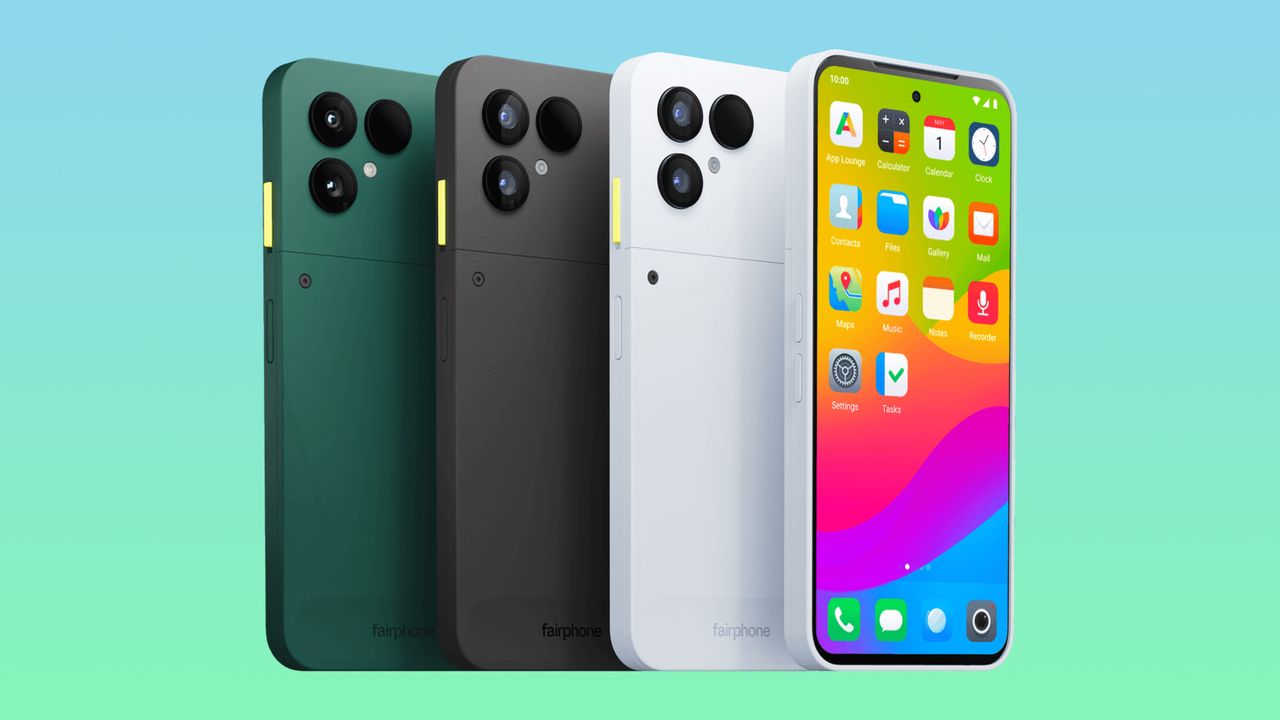
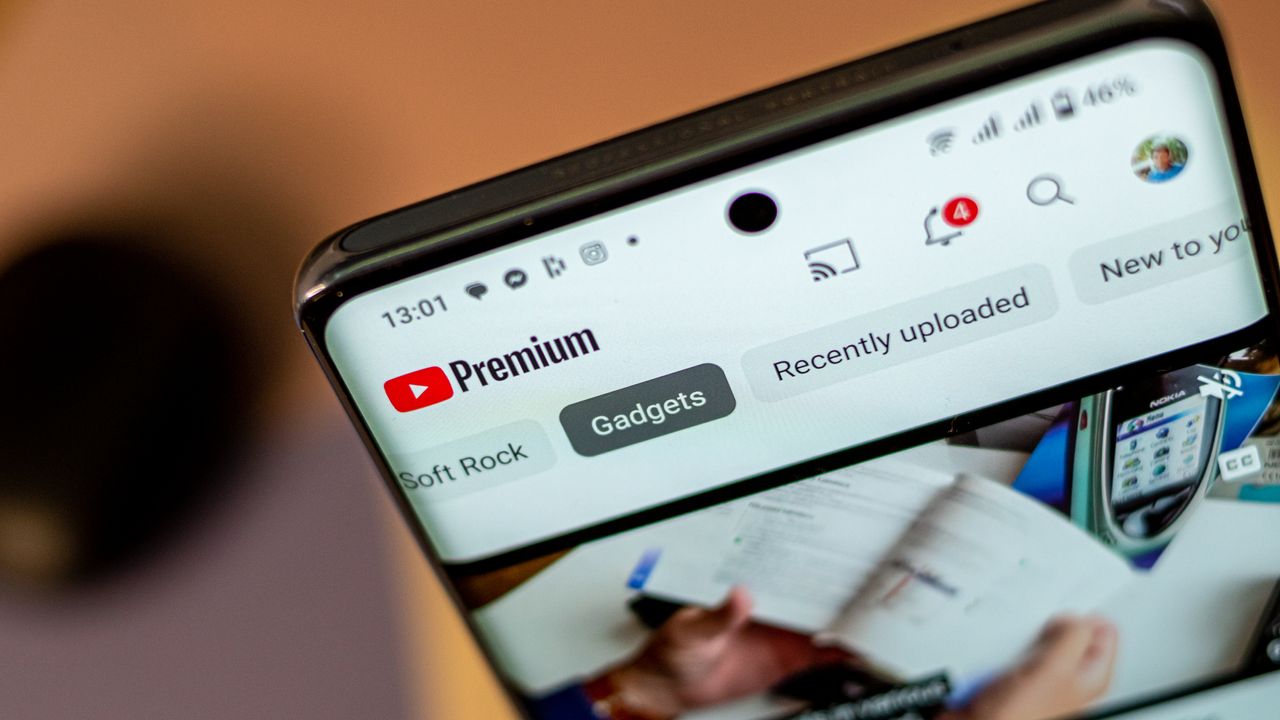
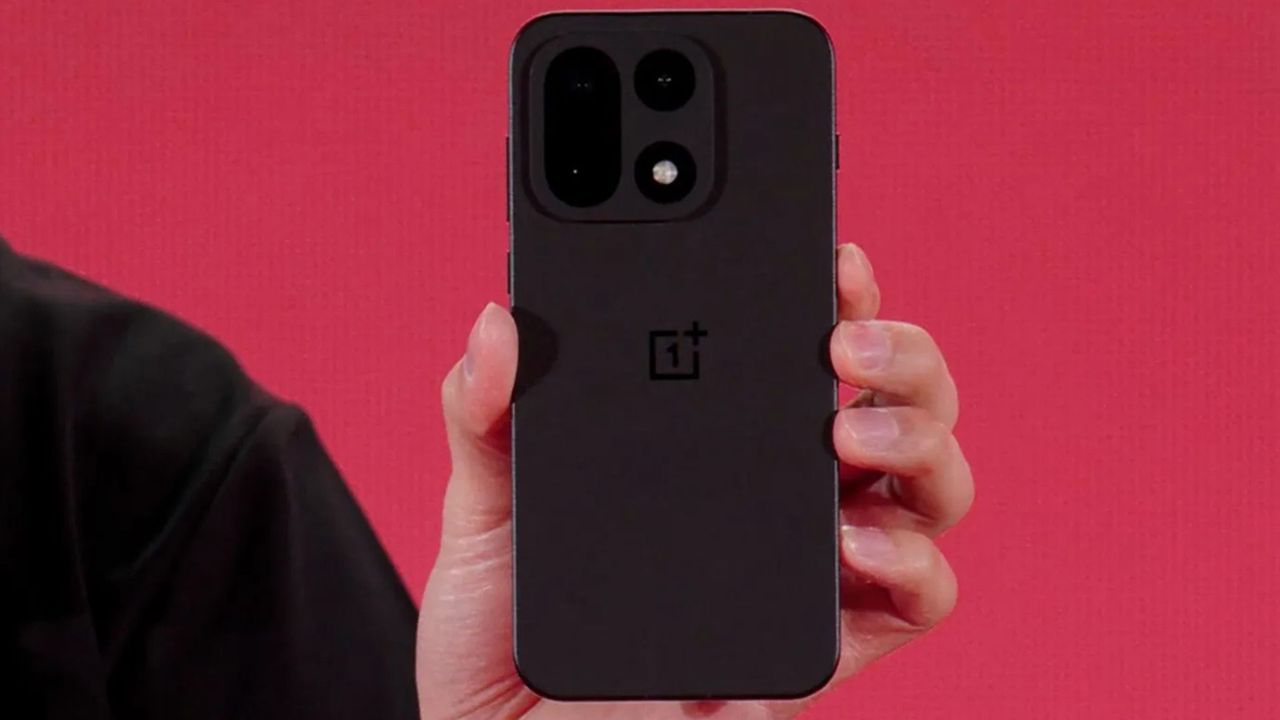

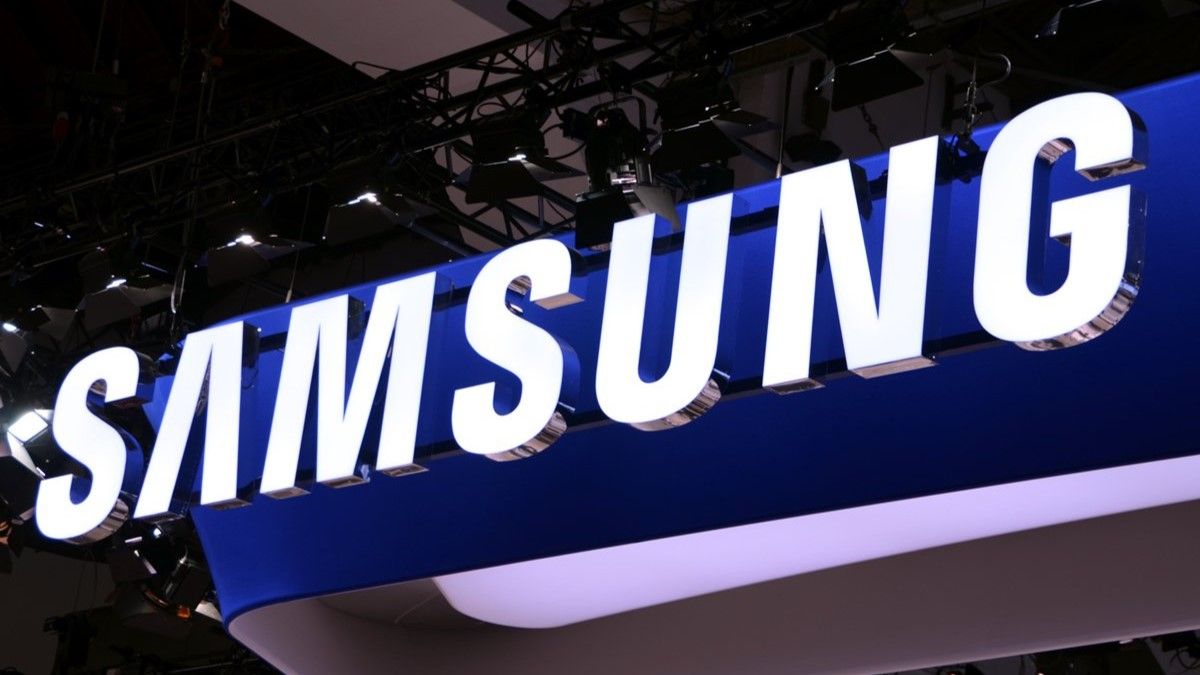
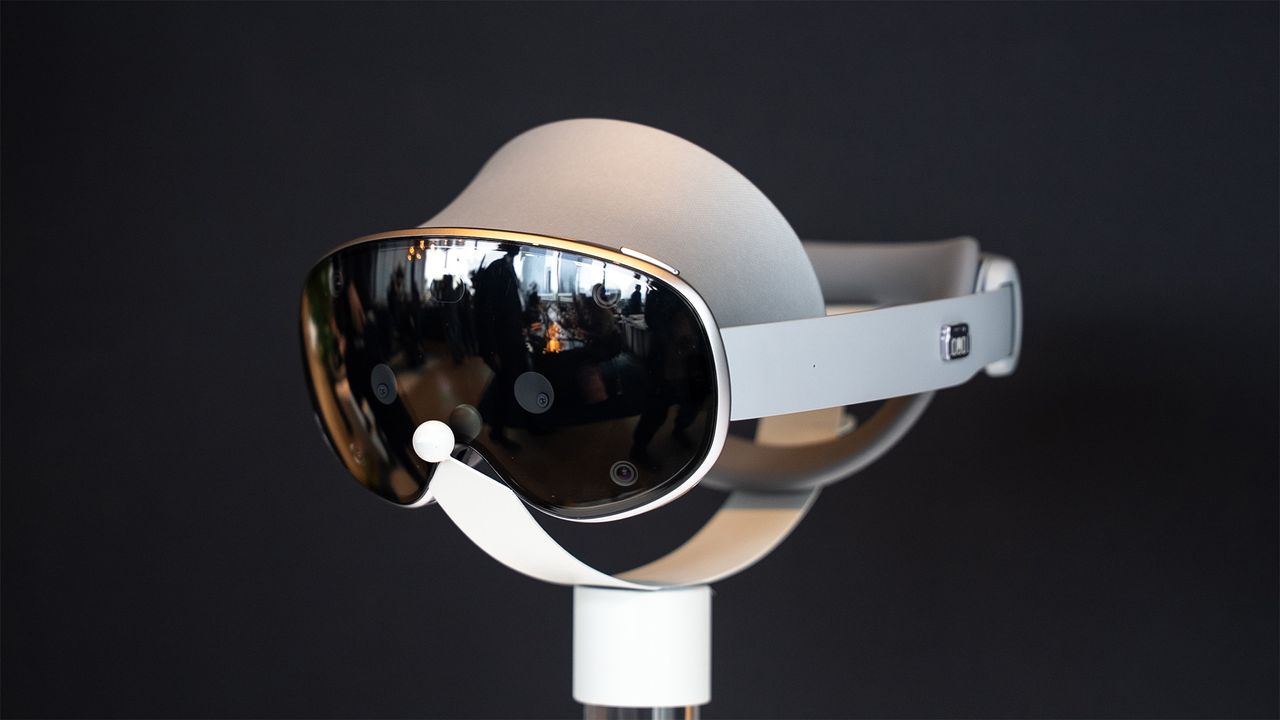
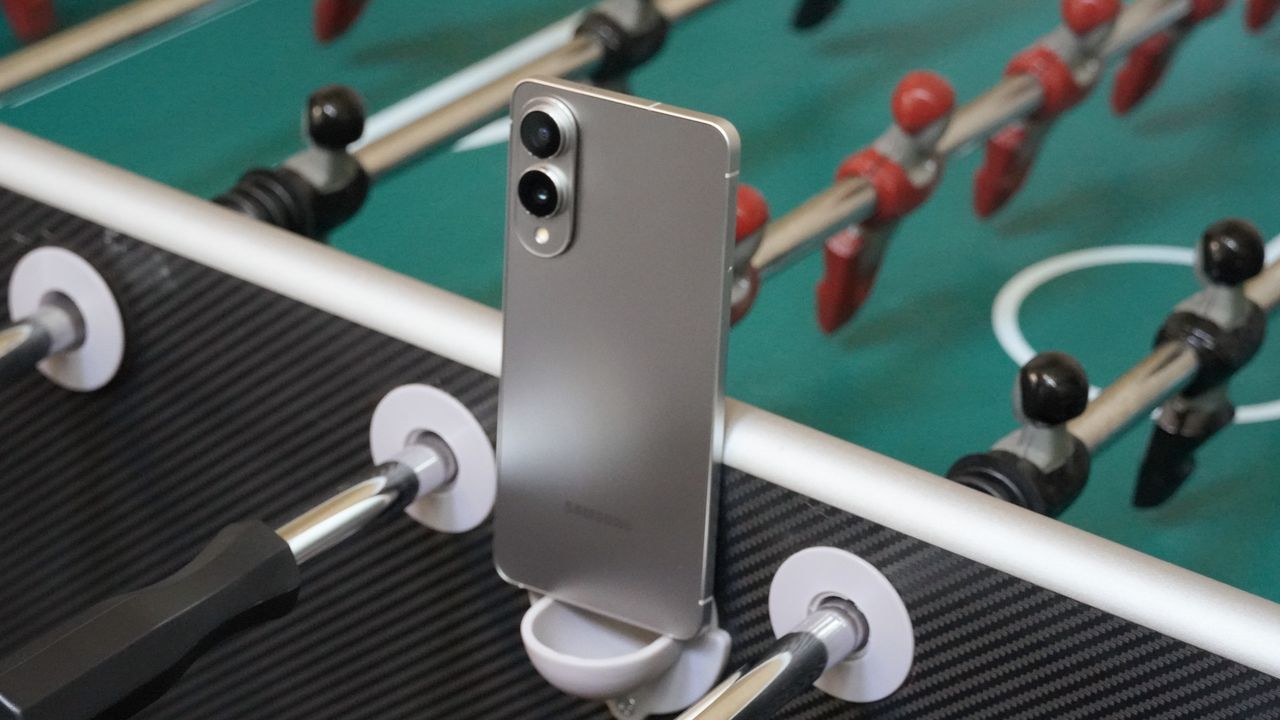
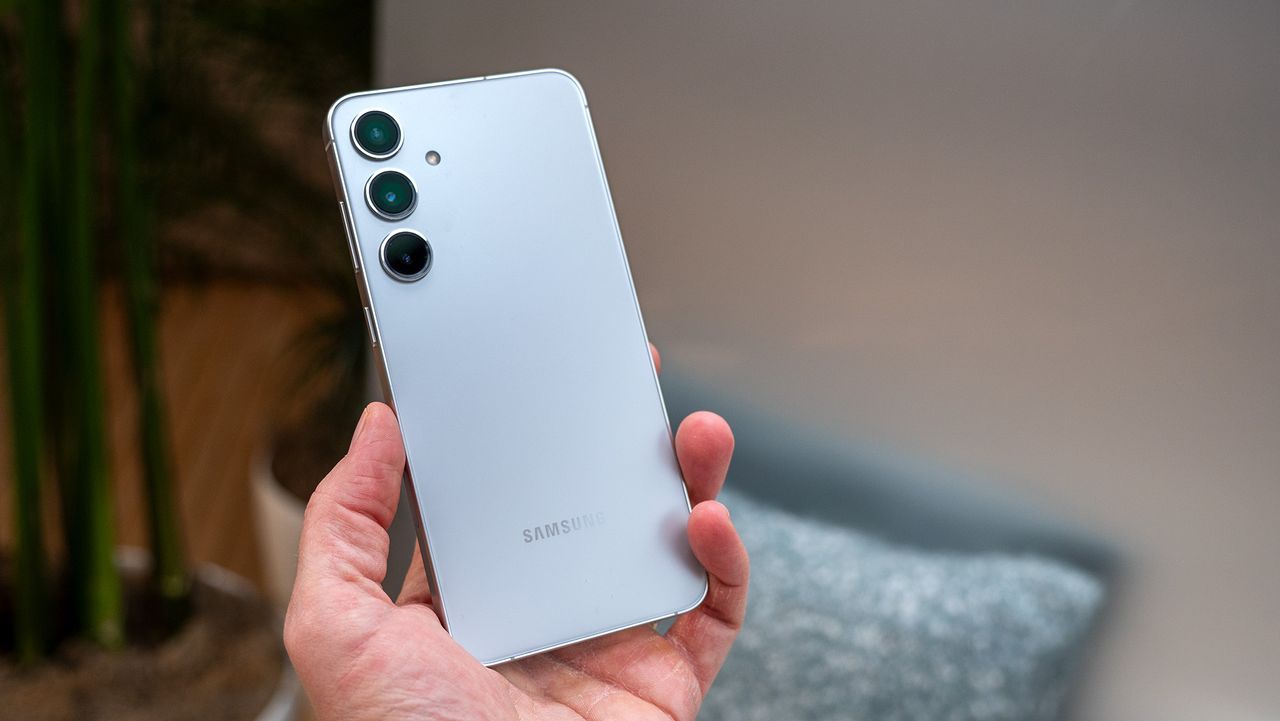

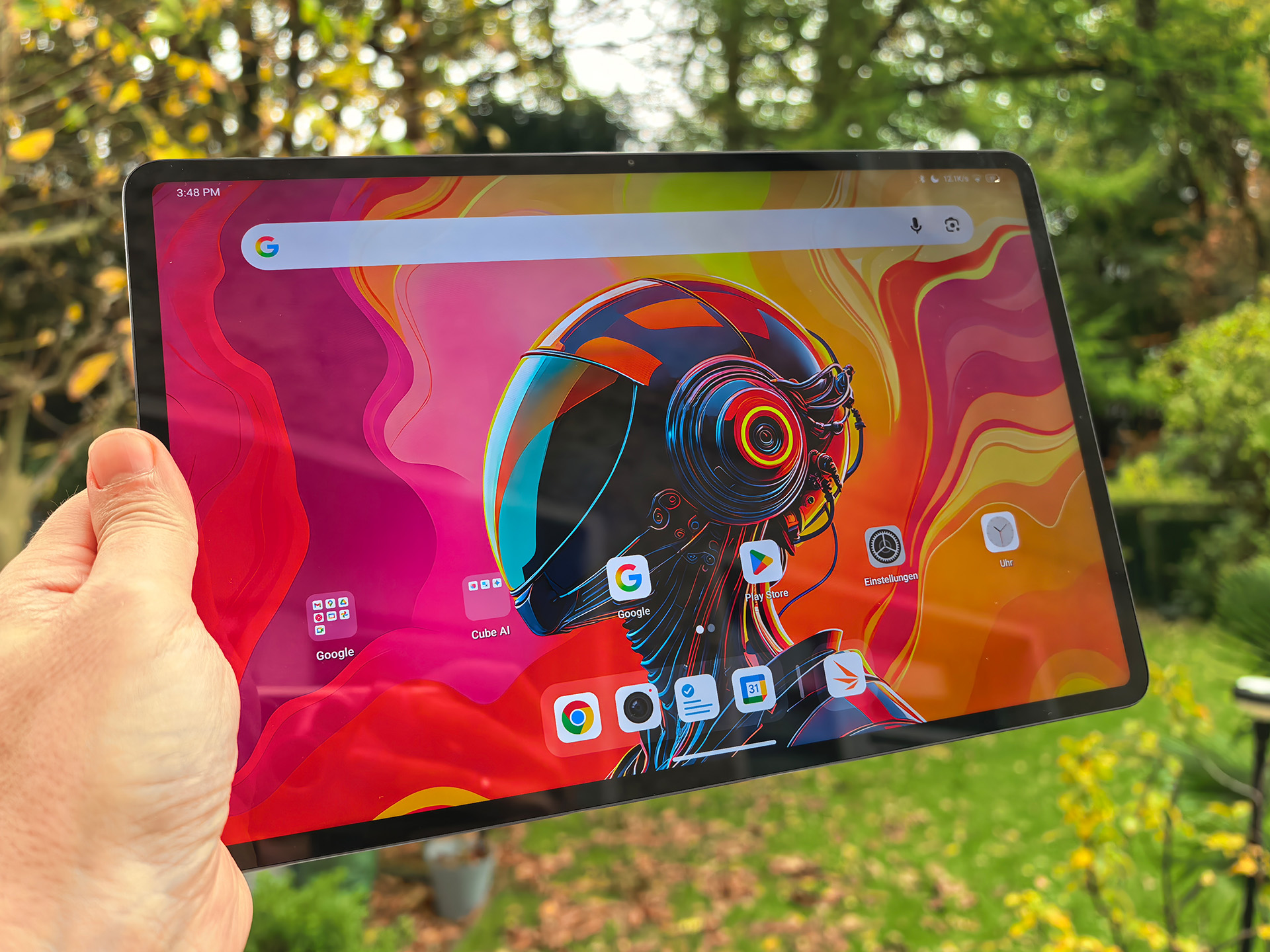
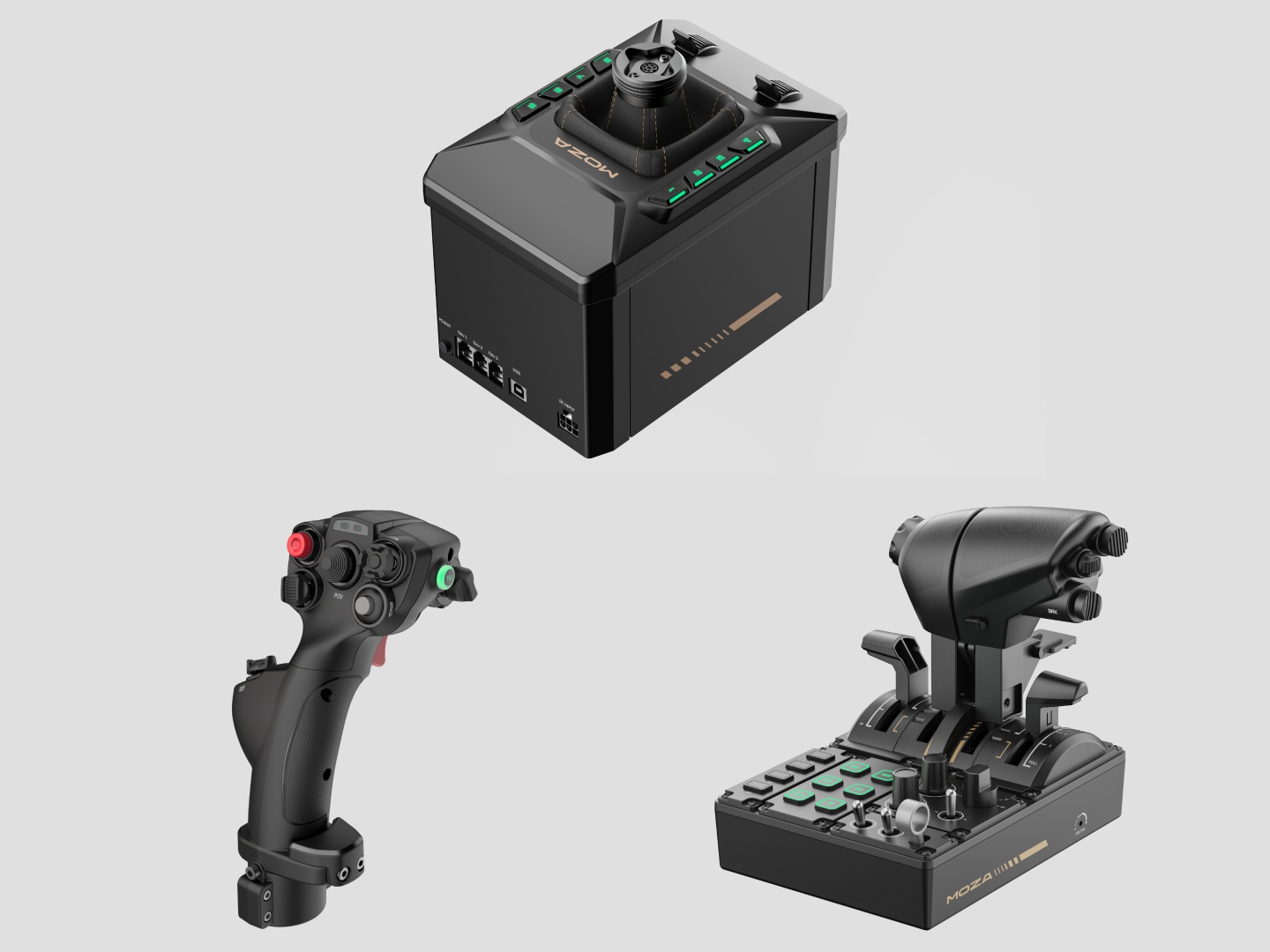

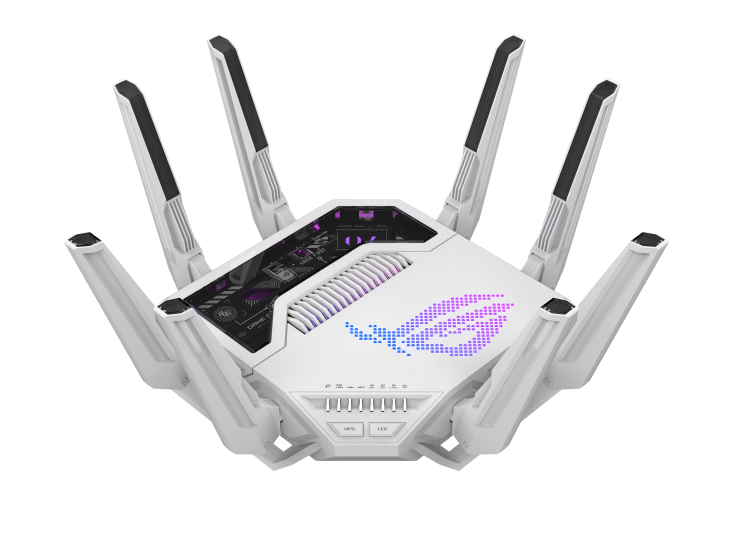








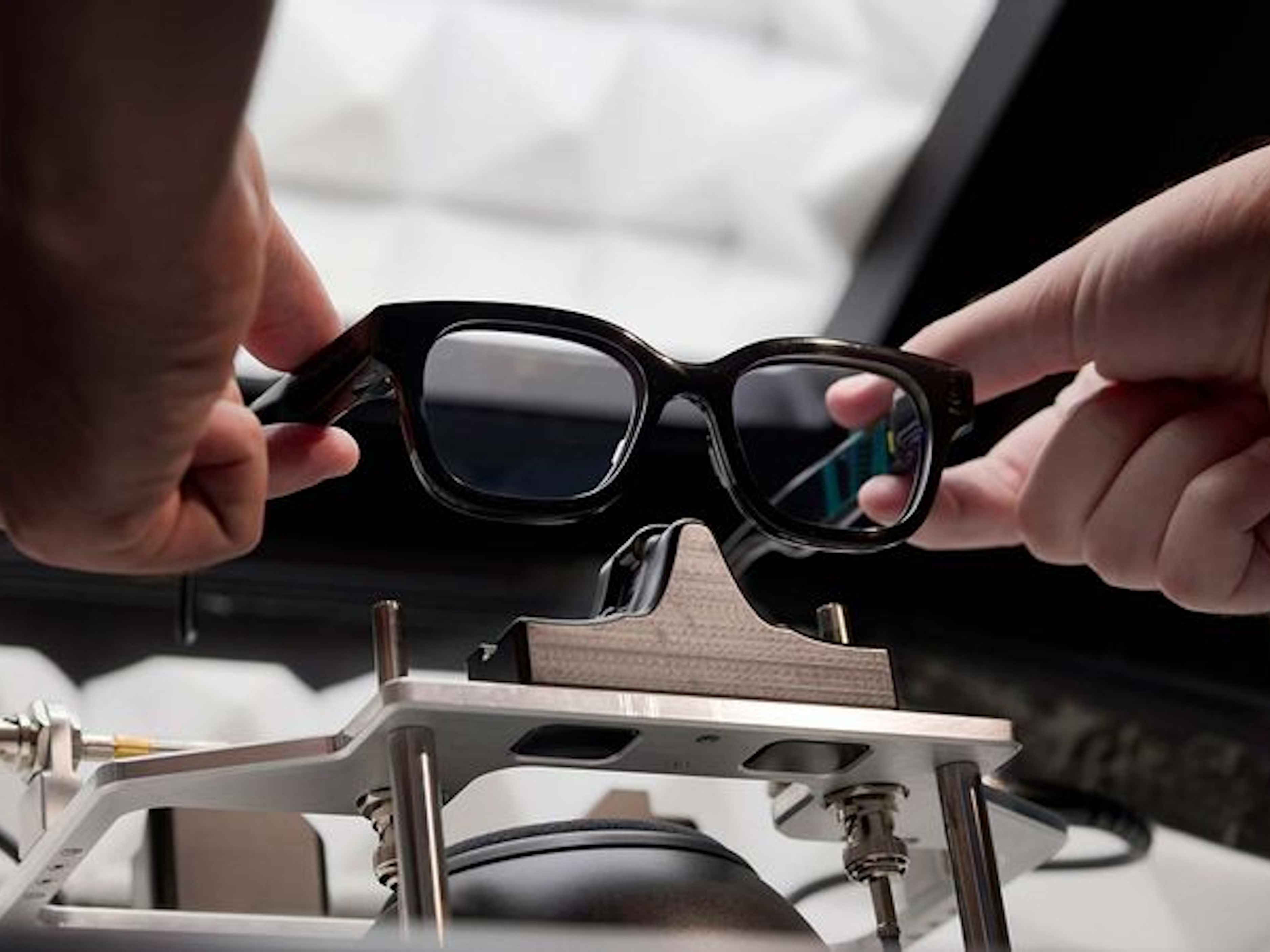
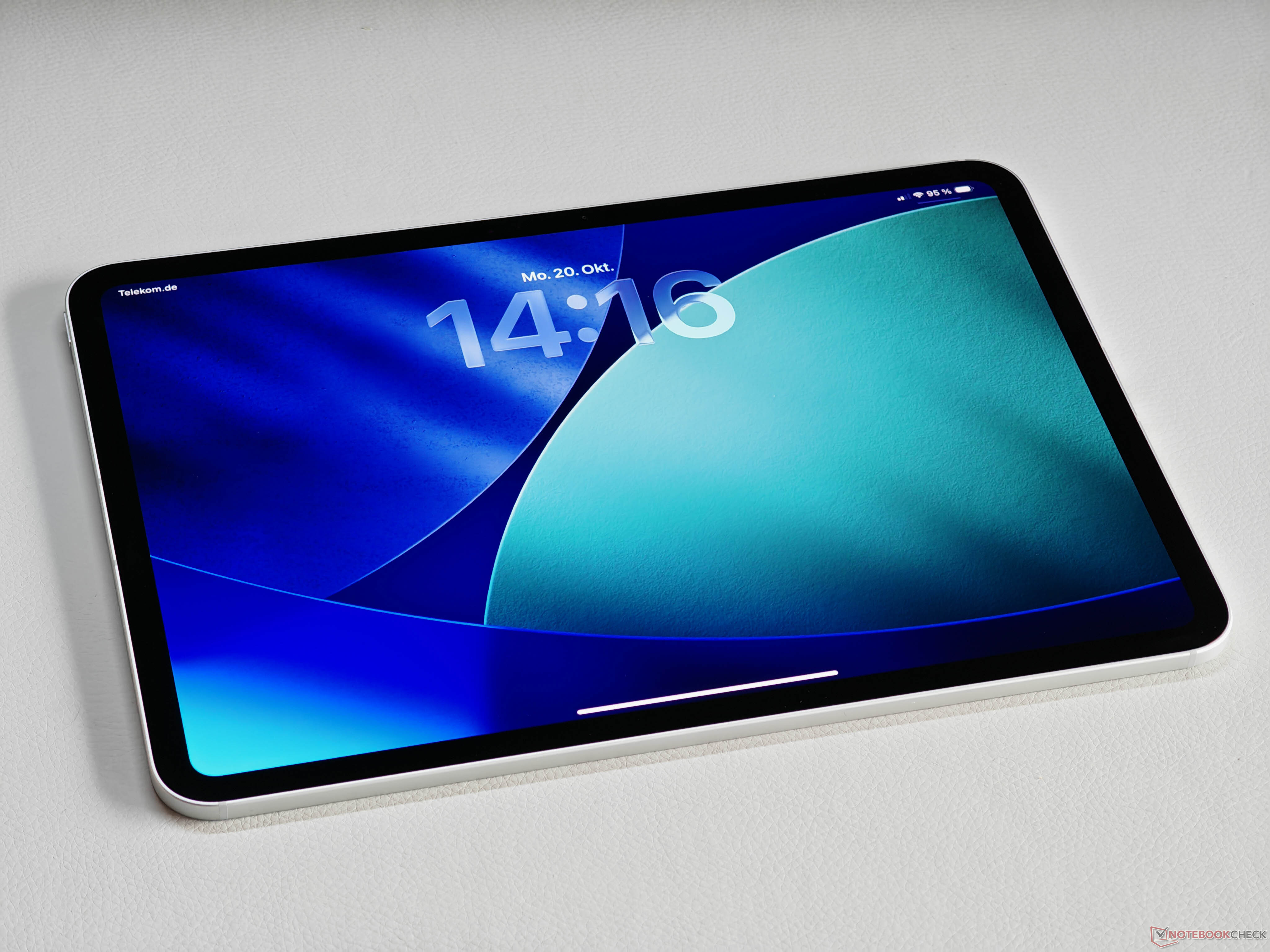
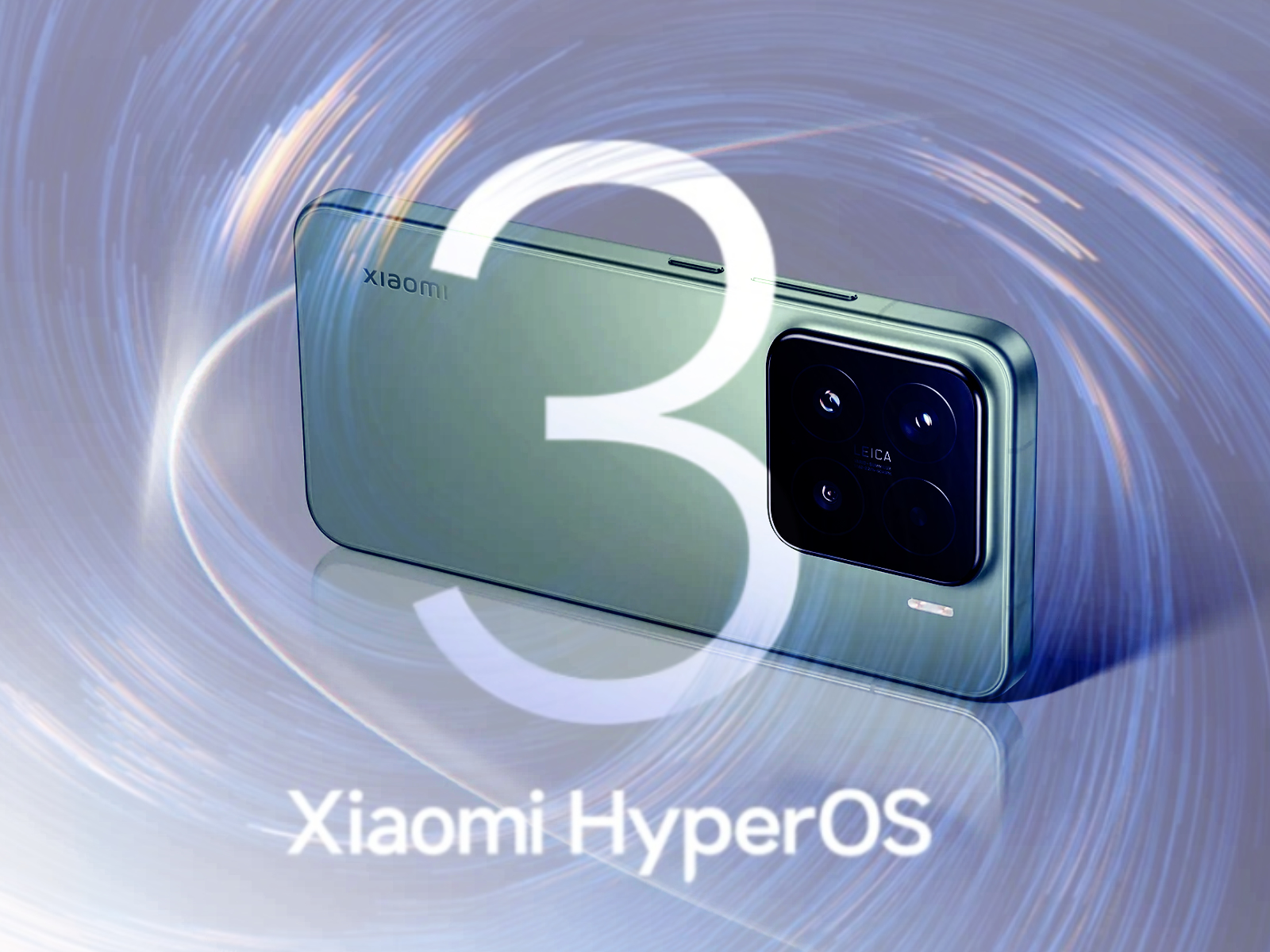

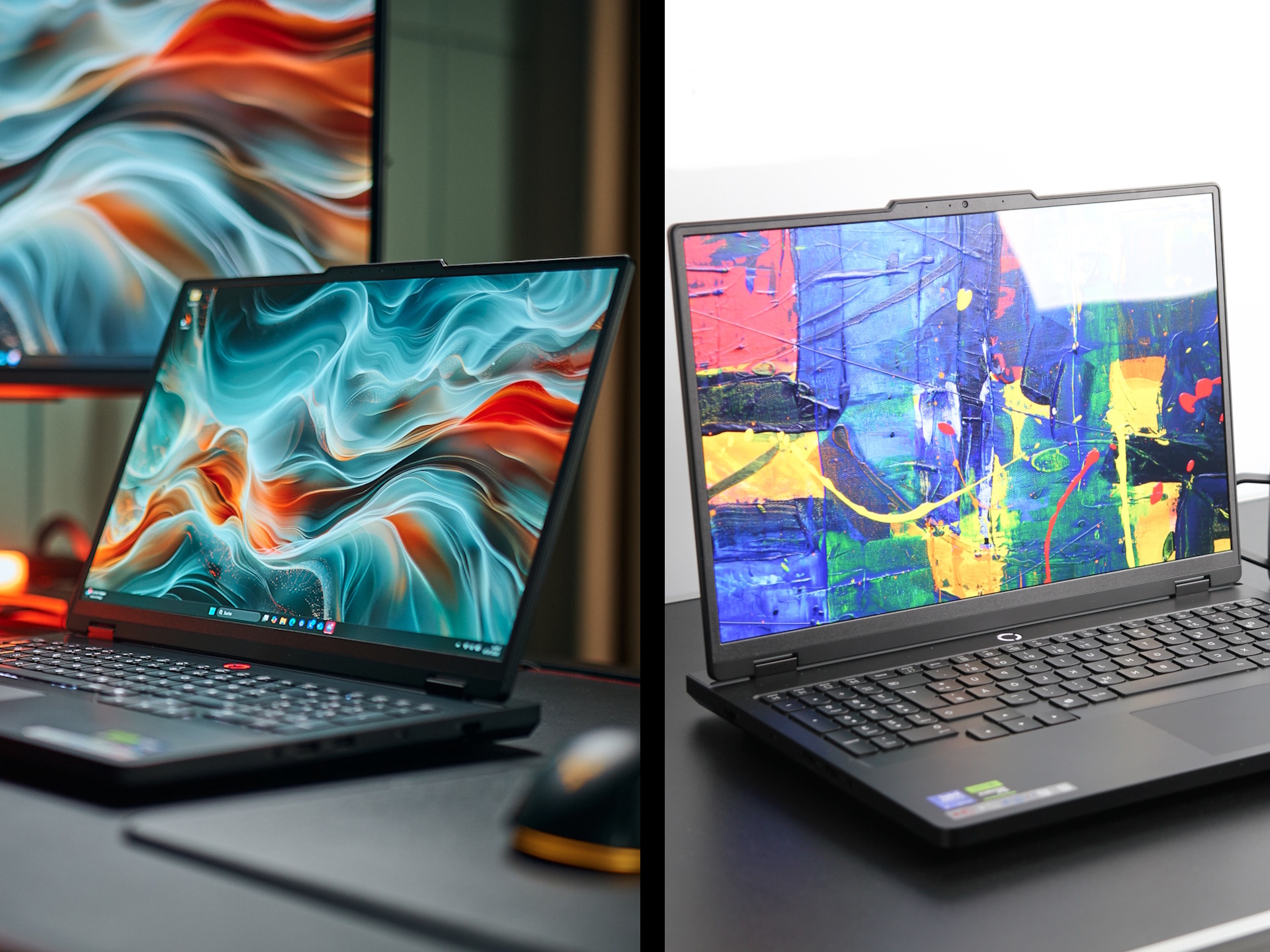
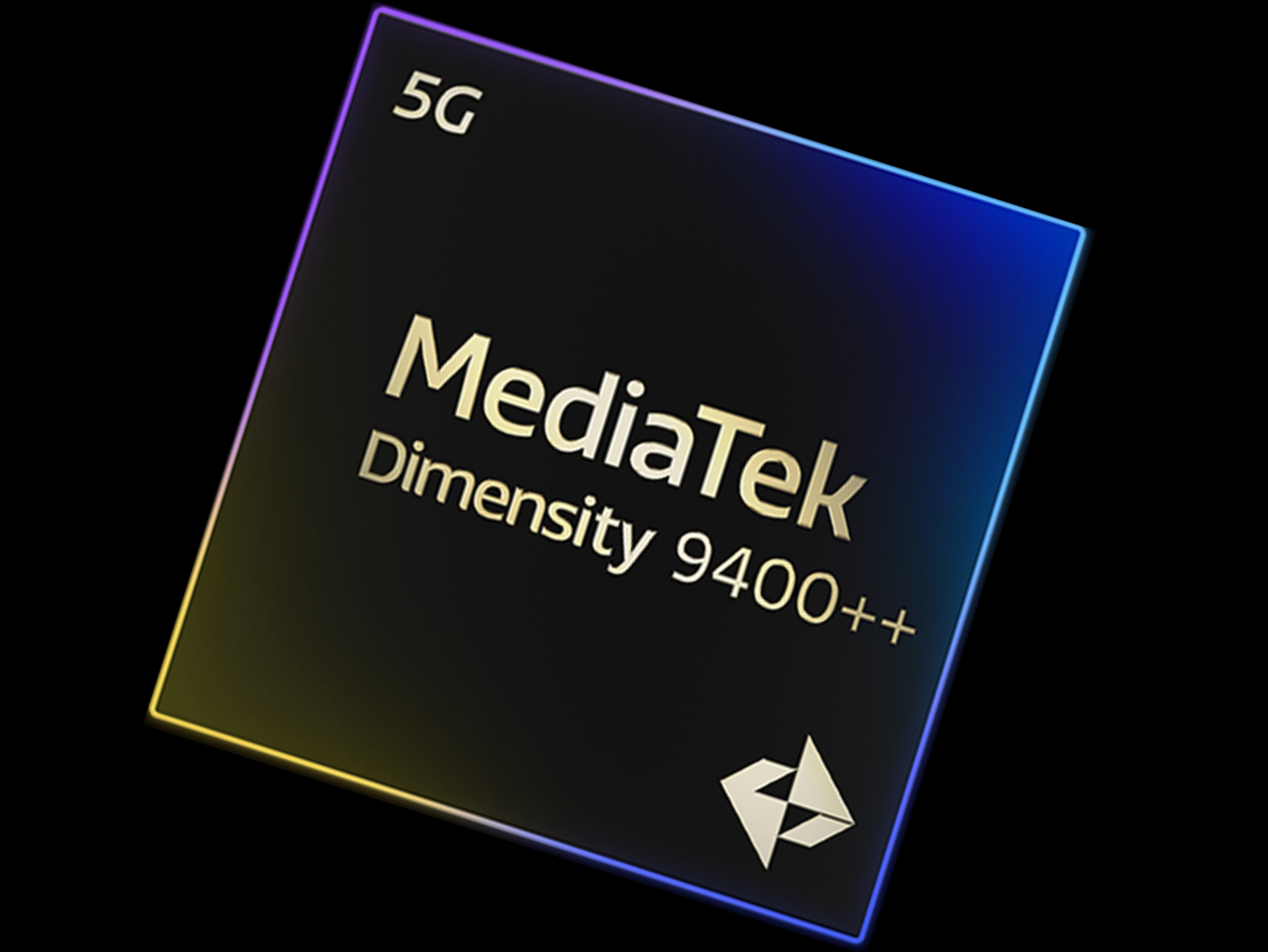


As promised, iQOO has unveiled the Neo11 in China. The phone is aimed at gamers and is powered by the Snapdragon 8 Elite SoC and features iQOO’s self-developed Q2 gaming chip. The iQOO Neo11 sports a 6.82-inch 8T LTPO AMOLED display that offers a refresh rate of 144Hz and a resolution of 3168×1440 pixels. You also get an in-display fingerprint scanner and a 16MP selfie camera. iQOO has packed a massive 7,500mAh battery inside the Neo11. It supports 100W wired charging as well. The Snapdragon 8 Elite SoC is paired with the Adreno 830 GPU. The phone comes with up to 16GB of LPDDR5X...

Back in July the first details about the upcoming Huawei Mate X7 got leaked, and today a new rumor out of China tells us when we should expect it to become official: next month. The device is allegedly codenamed Delphi and is currently being prototyped in Obsidian Black, Phantom Purple, Cosmic Red, Cloud Blue, and Cloud White. Huawei Mate X6 It features a 7.95" foldable LTPO OLED screen with "2K" resolution, a larger battery than its predecessor's (which has a 5,110 mAh capacity), improved imaging capabilities, and the Kirin 9030 SoC at the helm. The Mate X7 is also said to be...

Samsung posted its Q3 2025 earnings today. The company's consolidated revenue was KRW 86.1 trillion (€51.66b) with an operating profit of KRW 12.2 trillion (€7.32b). Revenue growth was 15.4% up on the second quarter. More than half of the total operating profit, KRW 7.0 trillion (€4.2b) came from Samsung's Device Solutions division and specifically its semiconductor, chip, and memory business. The memory business made record-high sales, fuelled by demand for HBM3E (high-bandwidth memory) and server SSDs. In 2026, Samsung will focus on mass-producing next-gen HBM4 memory. Samsung...

There’s more news about vivo’s upcoming S50 series, which is expected to include the S50 Pro and S50 Pro mini. The phones will succeed the S30 lineup that was announced in May this year. According to a new rumor, the vivo S50 Pro mini variant will not use a MediaTek Dimensity 9400+ chipset, but will instead be powered by the upcoming Snapdragon 8 Gen 5 SoC. Like its predecessor, the S50 Pro mini will also be a compact flagship. It is rumored to get a 6.31-inch flat display with 1.5K resolution and a battery larger than the vivo X300, which packs a 6,040mAh cell. Recent rumors...

Google is finally complying with the courts decision from their case with Epic Games. Where a jury ruled that the Play Store and its payment systme was acting like an illegal monopoly. So now, in order to comply with this decision, Google is rolling out some pretty big changes to the Play Store in the US.
Developers will now be able to inform their users about a better deal outside of the Play Store. Essentially, a game developer could say that this in-app purchase will cost $15 through Google Play, or $10 through their own website and payment provider. They can even share a direct download link for the app and bypass the Play Store altogether.
To ensure compliance with the injunction as of October 29, 2025, we have made the following changes for apps when serving users in the United States:
According to Google, there will be more changes to the Play Store in the near future. Sharing that “more program requirements and business model changes to preserve user trust and safety in the ecosystem” will be made soon.
Google could decide to take a page out of Apple’s playbook and make some absurd new restrictions that would make the freedom less attractive for developers and users. But we’ll have to wait and see how those trickle down.
For now, these changes only affect the US Play Store. And that will likely remain the case until courts in other countries force Google to make these changes.
The post Google Just Broke Up Its Own Monopoly — Thanks to Epic Games appeared first on Android Headlines.

Samsung has just confirmed that the Galaxy S26 series will use the Exynos 2600. Well, more or less confirmed it. The company said, during its Q3 2025 earnings release, that it will “strengthen the competitiveness of the Exynos processor for key flagship models.”
That’s not all, though. Samsung also teased “next-gen AI” and “new camera sensors.” So, it seems like the Galaxy S26 series will also deliver new camera sensors, despite what the reports are claiming.
Samsung does not specifically mention the Galaxy S26 series here, of course, but this is more than revealing. The only ‘flagship’ models that the company has to offer are the Galaxy S26 series phones and its foldables.
While it’s possible that the company was talking about the Galaxy Z Fold 8 and Galaxy Z Flip 8 here, that statement is almost certainly aimed mainly at the Samsung Galaxy S26 series phones.
At least the Galaxy S26 and Galaxy S26+ are expected to utilize this chip, but the Galaxy S26 Ultra is also said to use it, based on the latest reports. That chip is allegedly part of the reason why the company opted to postpone the launch of the Galaxy S26 series.
The phone will, allegedly, arrive in late February or early March, instead of launching in January next year. We still don’t know if there’s any truth to those rumors, but it certainly seems like it.
Speaking of which, the Exynos 2600 surfaced on Geekbench once again recently. It showed higher results than last time. It’s high enough for users not to be worried about the sheer power of this processor.
The thing is, we’re hoping that it will do good in the power consumption sector, and the same goes for thermals. That’s where it needs to match the Snapdragon 8 Elite Gen 5 and MediaTek Dimensity 9500. Well, at least come close.
The Exynos 2600 was not announced just yet, we’re still waiting for Samsung to do that. It is expected to be a 2nm processor, though, compared to 3nm chips from Qualcomm and MediaTek.
The post Samsung Just Dropped a Big Hint About the Galaxy S26’s Chip & Cameras appeared first on Android Headlines.

The OnePlus 13 has dropped down to just $849 right now, ahead of the global launch of OnePlus 15. This marks a $150 price drop, and it is for the 16GB/512GB model as well. The 12GB/256GB is also on sale for $783, but not quite as good of a discount.
The OnePlus 13 does sport a 6.82-inch QHD+ 120Hz LTPO display, powered by the Qualcomm Snapdragon 8 Elite, with up to 16GB of RAM and up to 512GB of storage. It also has a 6,000mAh capacity battery inside which does charge at up to 80W. It’s technically the largest battery you can get in a smartphone in the US, that is not a “gaming” phone.
At just $749, this is a really incredible discount, and one you won’t want to pass up, even with the OnePlus 15 right around the corner. The OnePlus 13 will continue to get updates for the next 3+ years. So it’ll still be supported for quite some time.

The OnePlus 13 256GB has now been lowered to its lowest price ever. At just $749, this is an incredible device to pick up, with the Snapdragon 8 Elite, 12GB of RAM, 256GB of storage, and a massive 6,000mAh capacity battery.
The post OnePlus 13 16GB/512GB can be yours for only $849 appeared first on Android Headlines.

Motorola is gearing up to launch a new mid-range phone in India, with a large battery as the key selling point. We’re talking about the Moto G67 Power. The new G-series offering from the brand will debut in the region on November 5th. This is the same day the Ultra-slim Moto Edge 70 is debuting globally. While we wait for the announcement, Motorola has jumped ahead by listing out the Moto G67 Power specs and images on its official website.
The Moto G67 Power will be available in three colors, all of which are Pantone-validated. It’ll come in Blue Curacao, Parachute Purple, and Cilantro shades. The company is offering a soft-to-touch vegan leather finish for the back panel, and it gets an IP64 rating for splash and dust resistance, as per Motorola. There’s a Corning Gorilla Glass 7i layer on the front for protection.
Despite having a large 7,000mAh silicon-carbon battery, the Moto G67 Power doesn’t strain your hands with its weight, which is 210 grams. It measures 8.6mm in thickness.






The Motorola Moto G67 Power gets the Snapdragon 7s Gen 2 under the hood. It has 8GB RAM and either 128GB or 256GB native storage. The phone runs on Android 15 OS, which is a bummer considering Android 16 is out. The company is only providing one OS upgrade, i.e., to Android 16. However, the device will get three years of security updates.
The phone has a 6.7-inch 120Hz FHD+ LCD display on the front with HDR10+ and anti-fingerprint coating, and Aqua Touch. There’s a 32MP selfie camera on the front within the punch-hole cutout, and it is capable of recording 4K videos. It has a triple camera system on the back, with a 50MP f/1.8 Sony LYTIA 600 sensor, an 8MP ultra-wide-angle camera, and a 2-in-1 flicker sensor. Both the primary and ultra-wide cameras can record 4K videos.
The rest of the Motorola Moto G67 Power specs include 30W fast charging, a side fingerprint sensor, Dolby Atmos, and MIL-STD-810H certification. Motorola should reveal the Moto G67 Power on November 5th. It’ll be available through Flipkart besides the official website.






The post Motorola Moto G67 Power Specs Listed Ahead of Announcement appeared first on Android Headlines.

The Exynos 2600 chip has reappeared on Geekbench, and this time around it’s showing even better results. This time, it’s faster than the Snapdragon 8 Elite and the Apple A19 Pro chipsets.
This time around, the Exynos 2600 managed to score 3,455 points in the single-core test and 11,621 points in the multi-core test on Geekbench. This is like the third time it surfaced. The first time, the results were completely off, while the second time they were a bit lower than they are now.

Even with such improvements, this chip is still behind the Snapdragon 8 Elite Gen 5. That chip managed to score 3,832 points in the single-core test and 12,170 points in the multi-core test. The difference is not that big, however.
Not many people will have an issue with this as long as the Exynos 2600 delivers in the other two sectors. Those sectors are power consumption and thermals. The chip needs to be well-optimized for power consumption and be able to compete in thermals with the Snapdragon 8 Elite Gen 5 and MediaTek Dimensity 9500.
This processor is expected to be made using Samsung’s 2nm node. As many of you know, both the Snapdragon 8 Elite Gen 5 and MediaTek Dimensity 9500 are 3nm chips.
The Exynos 2600 is expected to be used in at least half of Samsung Galaxy S26 series smartphones. Well, at least based on reports. Samsung is planning to use that chip in a number of markets. A recent report did mention that Samsung may not use it at all in the Galaxy S26 series, though.
That chip could be one of the reasons Samsung’s allegedly decided to postpone the launch of the Galaxy S26 series. Instead of in January, all three phones are tipped to arrive in late February or early March.
The post Samsung’s Exynos 2600 Is Back on Geekbench — and It’s More Impressive Than Before appeared first on Android Headlines.
Zomato, a popular food delivery app, started to utilize Samsung’s Now Bar on One UI 8. Some Galaxy smartphone users have begun getting real-time updates related to their food delivery orders from Zomato in India.
Samsung Now Bar is integrating Zomato, seemingly an app update-triggered action. Users say there’s no such option to enable or disable Zomato inside the Now Bar section.
It’s supported by Android 16’s Live Updated API, which third-party app developers can utilize to display real-time updates on devices. Samsung’s Now Bar is a Live Updates version tailored for its Galaxy phones and watches.
The status bar pill shows estimated time remaining with a tiny zomato logo. The extended pill features the app icon and name, as well as the venue from where your food is arriving attached with current time and arrival time.

Source – Retr0ash_ (Reddit)
Zomato’s live updates don’t seem to be an in-testing feature. It works across segments, including Live Notifications in Status Bar and Notification Panel, as well as Lock screen as scrollable and extended-mode cards.
You may miss out on live updates from Zomato in case your device doesn’t qualify for One UI 8. The Now Bar is available on One UI 7 devices too, but the expansion of apps and services is only taking place in the Android 16 version.
Keep your phone’s Zomato app updated to the latest version from the Google Play Store. There’s a toggle related to Live Updates inside the Developer options that you can enable, which pushes the experience even further.
The post Samsung Now Bar gets Zomato integration on One UI 8 appeared first on Sammy Fans.
Samsung has officially confirmed that Galaxy flagship phones releasing in 2026 will use the new Exynos processor with competitive performance.
The phone maker has made it clear that the next-gen Exynos chipset will be used for “key flagship models” in 2026. The company hasn’t clarified these models, but it’s likely to be referenced for the Galaxy S26 series. Exynos has been at the center of Samsung’s semiconductor strategy for Galaxy smartphones, but lacks in its foundry process for this chipset has caused a serious meltdown in performance.
On one hand, Samsung was troubled by the declining performance and poor thermal protection. On the other hand, Qualcomm kept on polishing its Snapdragon chip for flagship phones. Since Exynos is no longer taking part in the competition, Samsung fully turned its sights to Snapdragon’s premium chipset, and the Galaxy S series left all of the worries created by the Exynos chip.
The company is once again plotting a major shift in its chipset integration for the S-series phones. Leaks and rumors already indicate that the Galaxy S26 series will feature the Exynos 2600 chip, a sign of Samsung re-trusting this Snapdragon rival. This movement clearly reflects on the company’s Q3 business result, where Samsung remained quite vocal on Exynos’ next year’s implementation plan.
Rumors also had it that the Galaxy S26 series will fully adopt this chipset from the base to the Ultra model. If so, Samsung will have to lock this choice in some countries/regions. However, Samsung will include Snapdragon for the top model in the majority of markets due to its stable performance. We can add the possibility of Samsung shipping this chip with the non-Ultra models, just like the Galaxy S24 series. Similarly, the Galaxy Z Flip 8 and Fold 8 may also follow this chipset integration.
For 2026, Samsung is expected to launch the Exynos 2600 chipset, processed with its in-house 2nm technology. A recent Geekbench score leak shows that the company has come far from the 3nm processed Exynos 2500 featured in the Galaxy Z Flip 7.
Samsung’s optimism about the 2026 Exynos chipset is amusing, but its on-board performance will be worth comparing with Snapdragon 8 Elite Gen 5 while discussing some serious upsides of the 2nm technology battle.
The post Samsung locks on Exynos Flagships for 2026 appeared first on Sammy Fans.
Samsung is updating Good Lock and Home Up apps, providing fixes for some of the most annoying issues. The updates are available for download through Galaxy Store, bringing a more reliable user experience on Galaxy phones.
Samsung says it has fixed a severe glitch in Good Lock. The bug was causing an errorful installation status on the interface. The majority of users reported this problem that the installation icon keeps blinking even after it’s completed.
Good Lock’s Home Up plugin is also gaining improvements for DIY Home features. The plugin’s DIY Home section powers some heavy personalization tools, but the widgets were not functioning well on the home screen.
When DIY Home is in use, the Home Up turns home screen widgets a little larger. This bug not only enlarges the widget, but also hurts the alignment. The latest version of Home Up has the necessary fixes for this aspect.

Source – Samsung Community Korea
Samsung doesn’t include everything in its update release notes. Following the update, the apps will clean their Cache and remove unnecessary files. Additional improvements have been included to elevate the user experience.
To get the updates, head over to the Galaxy Store on your Samsung phone. If the updates don’t appear in the “Updates” section, you need to wait until the availability expands, as the rollout is currently limited to Korea.
Download updated versions of the apps:
(Source)
The post Samsung fixes two of Good Lock and Home Up’s most annoying issues in latest update appeared first on Sammy Fans.
An Associated Press photographer who snapped a viral image of a well-dressed young man near the Louvre heist in Paris has spoken about the photo he calls "not particularly great."

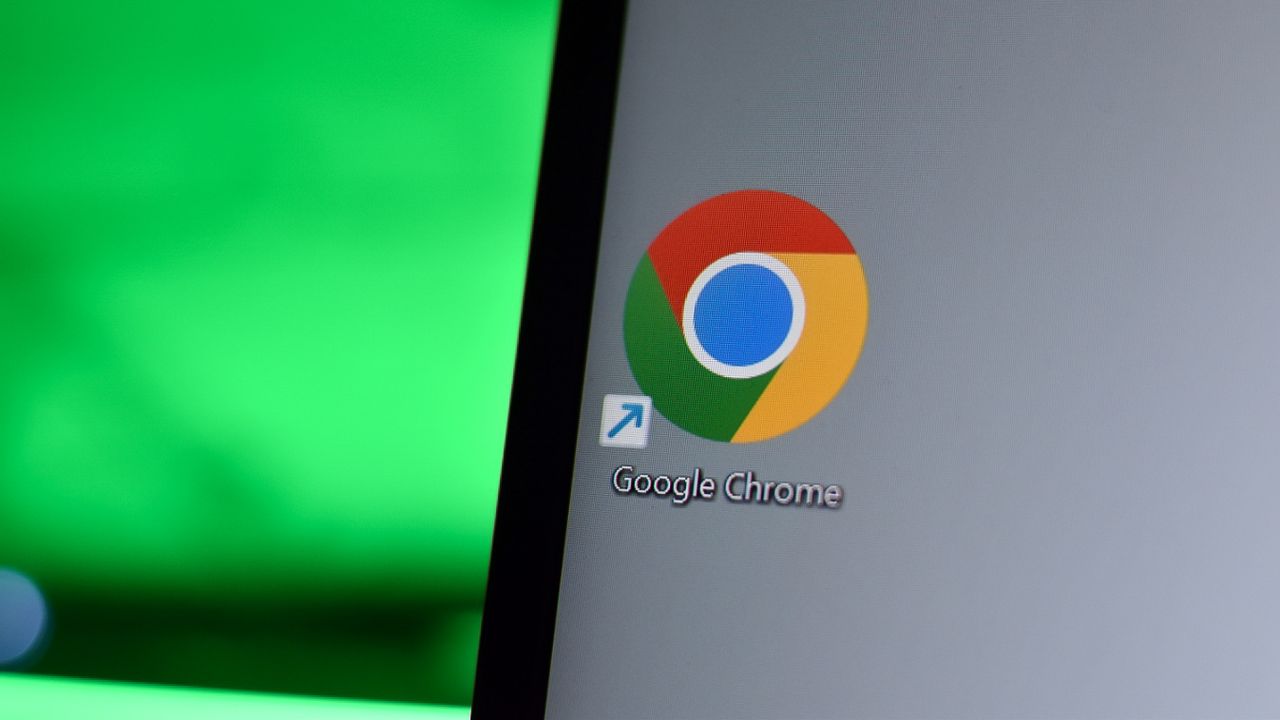






Earlier this month, Lava announced it would launch the Agni 4 in India in November, succeeding last year's Agni 3. The brand still hasn't divulged the Agni 4's launch date, but it has started the promo campaign of the smartphone on X and said the Agni 4 is "coming soon." [#InlinePriceWidget,13396,1#] One of the pictures Lava posted on X shows the Agni 4's right-side frame, which houses volume keys and a power button. You can also see an antenna line, and that's because Agni 4 will have a metal build, which wasn't the case with Agni 3. Forged from metal—because plastic dreams shatter...

Realme will bring over its flagship GT 8 Pro to global markets next month. The brand already announced the device in China alongside the vanilla GT 8, but it seems the Pro will be the only one to go global. Realme GT 8 Pro brings the latest Snapdragon 8 Elite Gen 5 chipset alongside a 7,000 mAh battery and a 6.79-inch LTPO AMOLED (QHD+ 144Hz). This is the first Realme phone with a Ricoh-tuned camera system with a 50MP main shooter, a 200MP periscope (3x optical zoom) and a 50MP ultrawide lens. Realme GT 8 Pro key specs It also brings a modular camera island bezel with...

Samsung is bringing its Internet browser to Windows PCs, with a beta version now rolling out in select regions. The Samsung Internet is the default browser pre-installed on Samsung smartphones. The PC version is said to offer a ‘seamless, connected browsing experience’ across various Samsung devices. The company is inviting users to try out the new PC application as part of a beta program available to Windows 10 and Windows 11 users in Korea and the US, with a wider rollout planned soon. The desktop browser supports syncing of bookmarks, browsing history, and other data between...

If you’ve never owned a security camera (or you’ve only dabbled with budget models), the Baseus S2 is an easy recommendation to start strong. It blends premium features—4K video, smart detection, and truly wire-free power—into a setup that’s simple to mount, simple to use, and designed to run indefinitely without you thinking about batteries or subscriptions.
First, the headline capability: power you don’t have to manage. The Baseus S2’s built-in solar panel automatically tracks the sun, harvesting more energy than a fixed panel and keeping the internal 7,800 mAh battery topped up. In multiple expert tests, that translated to real “set-and-forget” performance. It holds a charge pretty much, even when triggered frequently in regions with a lot of cloudy weather. That’s exactly the sort of reliability newcomers want from a first system.

The second pillar is its intelligence. The S2 combines radar with passive infrared (PIR) motion sensing, a dual approach designed to cut out phantom alerts from swaying branches or passing shadows. That means you’ll fewer false alarms than with typical PIR-only cameras. Baseus’ software implementation supports focused activity zones, privacy zones, and AI-based detections for people, vehicles, and pets. It’s a polished default configuration for beginners, yet still offers room to fine-tune as you get comfortable.

Image quality is another place the S2 feels like a premium device on day one. You get true 4K recording (8MP) with a 145° field of view, so license plates, faces, and distant details don’t turn into smudges when you zoom. A built-in spotlight enables full-color night clips when motion is detected; it delivers sharp daytime footage and useful clarity at night, without the usual compromises that plague many entry-level systems.
Crucially, the S2 is private by default and budget-friendly over time. Footage is stored locally on microSD (up to 256 GB), and there’s no requirement to pay a monthly fee to unlock core features—an increasingly rare stance that keeps total cost of ownership low. Ultimately, that translates to long-term value: you’re not into buying a subscription just to access person detection or face recognition. For a first camera, that simplicity matters; you install it, insert a card, and you’re protected—no contracts, no upsells.
Initial setup is beginner-friendly, too. The S2 arrives with a compact mount, pairs over 2.4 GHz Wi-Fi, and walks you through configuration in its mobile app. In under half an hour you can be naming zones, enabling two-way talk, and adding familiar faces for smarter notifications. If you’re new to smart home gear, that smooth onboarding is a difference-maker. It’s a straightforward process, and once it’s configured, it’s stable and consistent.

It’s also rugged enough for real-world placements. An IP67 rating means it’s built for all seasons, and the compact, tubular design never feels industrial or fussy. Add in useful touches—like voice-assistant compatibility, a bright spotlight, and audible alarms—and you get a well-rounded security package that covers porches, driveways, side yards, and sheds without running cables or hiring an installer.
The S2 hasn’t just impressed us; it made a splash at CES 2025, where its sun-tracking design and privacy-first approach drew lots of attention. That matters because it signals more than a spec sheet—it shows the S2 is part of a broader trend toward smarter, simpler, subscription-free security.
Specs at a glance:
– 4K/8MP video
– 145° field of view
– Color night vision with spotlight
– Radar + passive infrared motion detection
– Two-way audio
– IP67 weather rating
– Local microSD storage (no monthly fees)
– Solar auto-tracking panel with 7,800 mAh battery
Pricing fluctuates, but it’s frequently discounted—one more reason it’s such an approachable first step into smart home security.
The post The Baseus S2 Camera Is a Great Introduction to Premium Smart Home Security appeared first on Android Headlines.
As the One UI 8.5 evolves internally, Samsung has initiated testing its Glass UI design language. Leaked visuals give us our first look at how the user interface is being tested to meet the modern demands in 2026.
Samsung appears to be testing Glass UI design on One UI 8.5 internally. Screenshots emerged on the web show a significantly overhauled Quick Settings panel, app icons, and pop-up UI components of the software.
Samsung takes a new approach to redesigning the app icons.
In the latest One UI 8.5 build, Samsung has brought a Glass UI effect to the key component that rests above the icon overlay. It gave a more pleasing appearance to the app icon that looks clean and intuitive; however, it’s not finalized.
Image credit – Tarun Vats (X)
Samsung’s Quick Panel is about to see a massive Glass UI design.
One UI 8.5 is in its Alpha stage, and the most recent build has slapped a thin outline on the toggles and cards of the Quick Panel. Samsung took a similar path when transitioning from One UI 7 to One UI 8, adding the Frosted Glass design.

Image credit – Tarun Vats (X)
More leaked visuals suggest the Quick Panel may adopt Glass UI design like Apple’s iOS 26. The interface has improved transparency, one of the biggest changes we’ve seen ever in the endless streak of One UI 8.5 leaks.
The overhaul isn’t limited to the main Quick Panel interface, but also applies to the extended menu card. While the changes are not final, they give us a glimpse at Samsung’s work on One UI design language evolution.

Image credit – CID (X)
Since Glass UI adoption has entered testing, we may see even more elements look the same. Samsung needs to fix the transparency so it won’t ruin the visibility of text and other UI components that rest over it.
Samsung is expected to launch the Galaxy S26 series with One UI 8.5 in March 2026. The software may be available for testing via the Open Beta Program next month.
The post One UI 8.5 testing ‘Glass UI’ design language [Visuals] appeared first on Sammy Fans.
Samsung is working on the Galaxy S26 series, and the new flagship phones are set for key upgrades like AI and camera. We may also see a price jump in 2026 as the costs of materials continue to rise, apart from inflation.
Recently, Samsung disclosed its Q3 2025 earnings, and the company’s VP of the MX Division teased upgraded AI and camera for the Galaxy S26 series. The earnings press release also signals a potential price hike in 2026.
Daniel Araujo, VP of Samsung’s Mobile Experience Division, said that the Galaxy S26 lineup will “revolutionize the user experience with user-centric, next-gen AI, a second-generation custom AP, and stronger performance, including new camera sensors.”
Samsung is working on advanced Agentic AI and Ambient AI for the Galaxy S26 series. The company is also looking to offer even more AI agents in 2026. The work to make AI think more naturally (like humans) is also underway.
Snapdragon 8 Elite Gen 5 is official, and its “for Galaxy” version is expected to be used in the Galaxy S26 series next year. The company would ship Galaxy S26 and S26 Plus with Exynos 2600 in most countries in Asia and Europe.
While Exynos 2600 is almost confirmed, the camera upgrades in the Galaxy S26 series are the biggest development. Recent leaks about the Galaxy S26 camera setup had nothing but disappointment for Samsung fans.
Camera upgrades confirmation aligns with a recent leak, which revealed a Galaxy S26 prototype with a brand new camera setup. The primary and telephoto might be replaced with newer sensors, while the selfie camera will be retained.
Regarding the price jump, Samsung’s press release states the MX Division “will also maintain cost efficiency via process optimization amid uncertainties and increasing material costs.”
The post Samsung hints at Galaxy S26 AI and camera upgrades, with a price jump on the cards appeared first on Sammy Fans.
Following the Q3 2025 earnings call, Samsung also had a press conference with Korean media. Regarding the adoption of Exynos 2600 in the Galaxy S26 series, Samsung didn’t give a clear answer, citing that plans are still “under evaluation.”
Samsung has not yet finalized Exynos 2600 adoption in the Galaxy S26 series, reports BusinessKorea. It comes after we’ve seen reports of the chip’s development and commencement of mass production on the 2nm process.
In its press release, Samsung highlighted the fact that it will focus on strengthening the sales of its 2nm GAA products, including Exynos 2600. However, the decision to apply the chipset will be made by Samsung’s MX Division.
Samsung responded to the media, saying:
We have clear criteria for what we want to offer customers through flagship products, and we evaluate and select APs based on these standards.
Avoiding a “definitive answer” is a professional approach. The company can’t just confirm or deny its plans for a product, which will launch almost 4 months later. Well, the Galaxy S26 series is almost confirmed to power the Galaxy S26 series.
Recalling the Exynos in Galaxy Z Flip 7, the Samsung official explained:
For the Galaxy S26, AP evaluation is currently in progress, and it’s difficult to confirm the finalization for next year’s flagship lineup.
Samsung could be testing two versions of Exynos 2600 with different CPU speeds. We’ve seen benchmark scores of both versions. The most recent listing showed the chip hitting record-breaking scores in single-core and multi-core tests.
Galaxy S26 Edge has been sidelined due to sluggish sales of the Galaxy S25 Edge. After weeks of rumors of a reshuffle, Samsung is reportedly working on Galaxy S26, Plus, and Ultra; however, the Unpacked could be delayed to March.
The post Samsung treads carefully with Exynos 2600, says Galaxy S26 chips still under evaluation appeared first on Sammy Fans.
Samsung today announced its Q3 2025 revenue and profit results. The company’s consolidated revenue and operating profit have seen a steep surge, making the quarter a record-breaking period in recent years.
In Q3 2025, Samsung posted KRW 86.1 trillion ($59.8 billion) in consolidated revenue, an increase of 15.4% compared to the previous quarter, whereas the operating profit increased to KRW 12.2 trillion ($8.47$ billion).
HBM3E AI chip boom and Galaxy Z Fold 7 sales have played a crucial role in Samsung’s comeback. The company’s DS Division, which includes the memory business, reported a 19% increase in sales quarter-on-quarter.
Galaxy Z Fold 7 has also impressed Samsung with its strong sales. The company’s latest foldable smartphone helped MX Business to grow sales in both quarter-on-quarter and year-over-year sales and operating profit.
Samsung shared details insights for all of its key businesses. In addition, the company has also shed light on its future plans that include sales of its 2nm Exynos 2600 chips, advanced mobile AI, new camera sensors, and seasonal sales.
The company will rely on seasonal sales around the world to derive its Q4 2025 sales. 2026 will begin with the launch of the new flagship phones, the Galaxy S26 series, which will give a massive boost to sales in 1Q26 and 2Q26.
Exynos 2600 is sealed for the Galaxy S26 and S26 Plus. Samsung Display will also bring its advanced OLED solutions to widen the technological gap, and System LSI will expand the ISOCELL image sensor portfolio.
Besides mobile business, the Korean company will focus on the HBM4 AI semiconductors. The recent Nvidia certification on HBM3E has positively impacted its DS Division (memory business) apart from Tesla and OpenAI deals.
Division-wise sales details can be accessed in the press release.
The post Samsung posts explosive Q3 2025 growth on AI chip boom and Galaxy Z Fold 7 demand appeared first on Sammy Fans.
Samsung is rolling out support for the Filipino and Gujarati languages to Galaxy AI features. With the latest expansion, Galaxy AI now supports a total of 22 languages.
With Galaxy AI gaining support for two more languages, the total supported languages now tally 22. It strengthens the company’s commitment to lowering language barriers and expanding meaningful mobile AI experiences.
Filipino and Gujarati languages have already started rolling out to Samsung phones that support Galaxy AI. Users can download language packs from Settings to upgrade AI features with their preferred treasure of local vocabulary.
Belonging to the state of Gujarat, Gujarati is a prominent language in India, spoken by over 60 million people. Filipino is the national language of the Philippines, a country with a population of around 118 million.
Samsung Research centers in India and Indonesia played the key role in developing the Gujarati and Filipino languages for Galaxy AI. The support pushes Samsung to expand the Galaxy AI’s reach to even more people globally.
Pay attention, Galaxy AI features like Live Translate, Interpreter, Chat Assist, and Note Assist will benefit the most from the expansion of languages. These AI-powered functions help users communicate and stay productive.
The Korean tech giant is rapidly moving towards its goal of 400 million devices with Galaxy AI. A previous study found that over 70% Galaxy S25 users regularly use Galaxy AI and Gemini, with nearly half relying heavily on AI features.
As for the Indian market, the percentage of Galaxy S25 users engaging with Galaxy AI is a staggering 91%.

The post Samsung simplifies Galaxy AI for Gujarati and Filipino people appeared first on Sammy Fans.

Xiaomi recently rolled out the Android 16-based HyperOS 3 stable update for the Xiaomi 15T and 15T Pro's global units, and now it's the non-T model that's getting upgraded to HyperOS 3. The HyperOS 3 stable update for the global Xiaomi 15 is currently rolling out in some European countries for Mi Pilot members, but the rollout should expand to more regions soon. The stable HyperOS 3 for the global Xiaomi 15 comes with version 3.0.4.0.WOCEUXM and weighs a whopping 8.2GB. However, the download size could differ for beta and non-beta users. The update includes the October 2025...

Ever since its debut in early 2024, Samsung's Galaxy AI has kept adding support for more and more languages. The total number of supported languages reached 16 in April 2024, then 20 in December that year. It's been a while, but now Galaxy AI is finally adding two new languages, namely Filipino and Gujarati. These are now available for download as language packs in the Settings app. The former is spoken by an estimated 87 million people, the latter by around 62.5 million people. The Filipino and Gujarati languages for Galaxy AI were developed in collaboration with Samsung Research...
Samsung officially launched the Samsung Internet for PC, kicking off the Ambient AI era. The company is bringing its mobile browser to Windows 11 and Windows 10 PCs with a Beta launch.
The expansion of Samsung Internet for PC aims to offer a seamless, connected browsing experience across Galaxy devices. Samsung says it’s the first step toward the ambient AI era.
The browser is still in its Beta state, and it will unlock even richer, more intuitive browsing experiences for users. Under its Ambient AI project, Samsung Internet for PC will anticipate user needs for tailored assistance.
Samsung Internet will evolve with artificial intelligence to meet the demands of its users. The browser will redefine how users interact with the web, leveraging AI, while ensuring privacy.
Samsung Internet for PC is available as a Beta Program starting October 30. The company has restricted the Beta Program’s reach to South Korea and the US; it will be available in more countries in the near future.
OS Requirement:
To get the Samsung Internet for PC, you are required to create an account on the Samsung Developer Portal. Head over to the Samsung Internet Beta website and hit the “Join the Beta Program” button to participate.
Samsung’s aim with its PC browser is to allow users to sync their browsing data, such as bookmarks and history. If you’re browsing the internet on your Galaxy phone or tablet, you can seamlessly switch to your desktop.
It also features the Samsung Pass integration that allows you to sign in to websites or autofill profiles across devices. You will also be prompted by the browser while switching between a smartphone/tablet and a PC.

Image – Samsung Internet for Windows PC
Samsung equipped the Internet for PC with key Galaxy AI features for smarter and more efficient browsing. When logged into their Samsung Account, users can access features like Browsing Assist for summary and translation.
Its Smart Anti-tracking function effectively blocks third-party web tracker attempts to collect personal information. The Privacy Dashboard feature allows users to view and manage their protections in real time.
The post Samsung Internet for PC is official, kicking off Ambient AI era appeared first on Sammy Fans.

Realme is working on a new entry-level device in the C series - meet the C85 Pro, which has been leaked today. It will be available in black, green, and purple. Realme has already confirmed that it has a 7,000 mAh battery, and through certifications we know it charges at up to 45W. The C85 Pro is also expected to be IP69 rated for dust and water resistance. Realme C85 Pro in hands-on images A hands-on video from Vietnam (embedded below) also mentions a 6.8-inch FHD+ AMOLED screen, 8GB of RAM, 256GB of storage, a 50 MP main camera, and the fact that the handset is powered by...

According to a new rumor, HMD is working on a smartphone with a very interesting codename - Lord Chaos. This will allegedly come with an OLED display with 144Hz refresh rate and HDR10+ support. It will be powered by Qualcomm's Snapdragon 7 Gen 4 SoC, paired with 12GB of RAM and an unknown amount of UFS 3.1 storage. On the rear is a 108MP main camera. The Lord Chaos will run Android 16 from day one. It has a 5,000 mAh battery with support for 65W wired charging and Qi2 wireless charging. These are all the details that have been outed right now, we'll let you know when we find out...
Rode has announced the Wireless Micro Camera Kit, the successor to the current Wireless Micro system that promises to be more powerful, significantly more flexible thanks to universal camera compatibility, and easier to use thanks to an improved receiver unit with an integrated display.
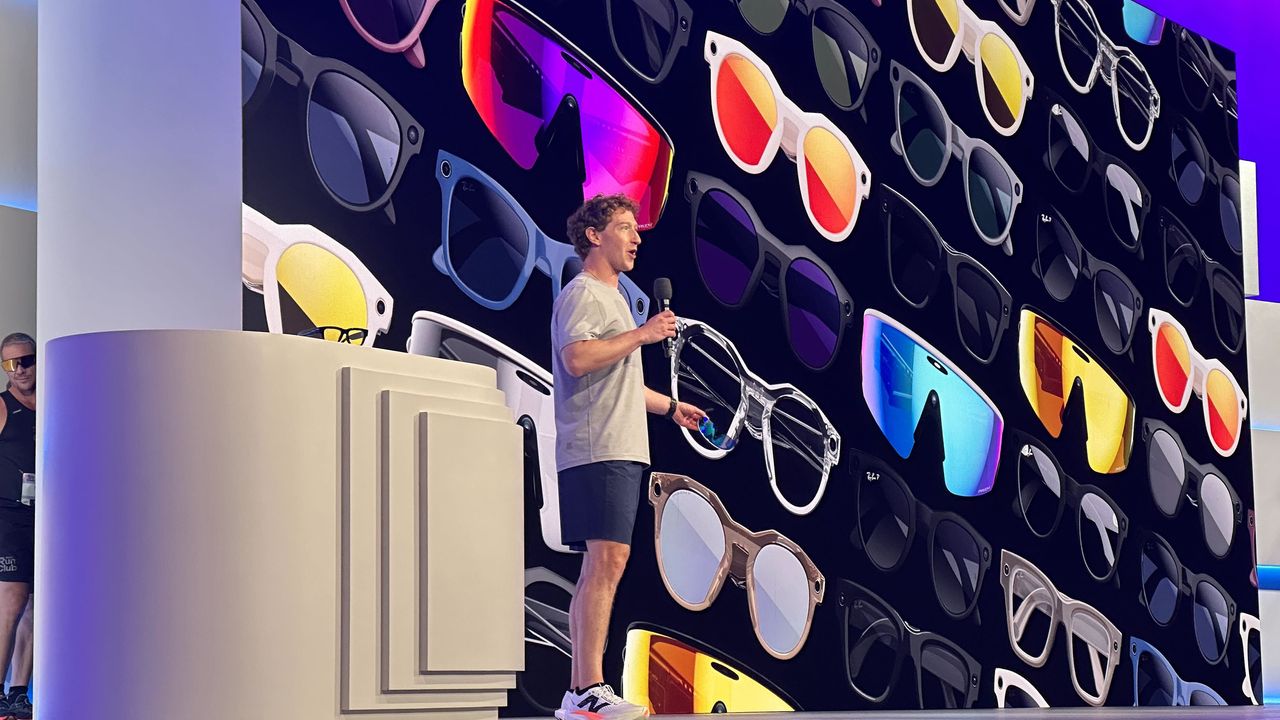


At the beginning of this month, Google unveiled Gemini for Home, alongside a bunch of devices for the home. Today, Gemini for Home has started rolling out in the US, but there's a catch. Gemini for Home is currently in early access mode, and if you want to be among the first people in the US to be able to test it, you need to request access. To do this, go to Google Groups settings > Global Settings, and make sure "Add me to their groups" is checked. Then go to the Google Home app, tap your profile picture or initials, and select Home settings. That's where the "early access" option...

Today YouTube has announced that it will start automatically AI upscaling low quality videos that are under 1080p resolution. This will initially upscale from SD to HD, but eventually will go all the way up to 4K "in the near future". It's intended for use on TVs only, at least for now, and whenever it's employed you'll see a "Super resolution" descriptor underneath each resolution option, as portrayed in the video below. Creators will be able to opt out of this if they want to. YouTube is also expanding the thumbnail file limit from 2MB to 50MB, so expect "new, stunning...

Becoming a creator on TikTok isn’t as simple as recording a video, uploading it, and calling it a day. There are a lot of strategies involved, such as how to cut/edit your content, music, hashtags, caption, time of posting, and so on. This can feel overwhelming for new creators, but TikTok is making it easier with some new AI-powered features.

During the TikTok US Creator Summit, the company unveiled a couple of new AI-powered features that will make it easier for content creators. One of those features comes in the form of AI Outline.
According to TikTok, AI Outline will help users structure their content ahead of recording. This means that instead of blindly recording a video with zero strategy, you can use this feature to get some ideas on how to structure, caption, and title your video. TikTok will even suggest the appropriate hashtags you can use to help your content be discovered.
For now, TikTok says that AI Outline is only available to content creators 18 and older. It is also currently limited to users in the US, Canada, and other select markets. But the good news is that broader availability is expected to arrive in the coming weeks, so hang in there.

The next AI tool TikTok announced comes in the form of Smart Split. Say you’ve already recorded a video for another platform like YouTube or Instagram Reels. Note that the video posting strategies for these platforms are different. Just because it was a hit on Reels doesn’t mean it will be a hit on TikTok.
With Smart Split, it will harness the power of AI to clip, reframe, and transcribe longer content. You can then create multiple short videos that are TikTok-ready. This is perfect for YouTubers who might have longer-form content they want to bring over to TikTok. However, take note that the feature is only available on TikTok Studio Web. We’re not sure if there are plans to bring the feature over to the app.
In addition to these AI-powered features, TikTok announced a revenue share update for its Subscription product. According to TikTok, this update will allow creators to earn up to 90% of profit payouts.
TikTok says, “Now, after fees, creators receive 70% of TikTok’s revenue share, and those who meet other requirements (10K followers, 100K views in the last month and 3+ subscription-only videos posted in the last month) can unlock an extra 20% monthly reward on top of that, for a total of up-to 90% of the revenue.”
The post TikTok Launches New AI Features to Help Creators Plan and Edit Content appeared first on Android Headlines.

In the past few months, YouTube has announced a bunch of new features. While most of them cater to web and mobile audiences, the new features announced today will improve the TV viewing experience. So, if you prefer watching YouTube on your smart TV, you’d be happy to know that the platform is introducing a new feature that will upscale low-resolution videos to high-resolution.
YouTube says that the new feature uses AI to upscale video to higher resolutions. For example, a video that is initially loaded in 480p will have 720p and 1080p versions of it. This way, you’ll have more resolutions to choose from and watch YouTube videos in higher quality.
YouTube is labeling these as Super Resolution. For now, AI upscales videos below 1080p, with support for 4K videos coming soon. Although the tool upscales the videos, YouTube says that the original resolution and files are kept intact. Given the controversy around the upscaling of Shorts videos, YouTube is giving creators an option to opt-out of this feature.
YouTube has also bumped the thumbnail size limit to 50MB alongside video upscale feature. Previously, it used to be 2MB, which made thumbnails look dull on the TV. Moving on, you’ll also soon see “impressive previews” of a channel on the homepage when you “flip through [your] favorite YouTube channels.” Additionally, you’ll see contextual search results when you’re on a channel page. YouTube says that this will prioritize videos of the channel you’re on.






Apart from video upscale and other features, YouTube has announced two new shopping-focused features i.e., QR codes and timed product moments. YouTube notes that scanning QR codes will land you on a product page. The Google-owned video streaming platform is also testing a feature that allows creators to feature a specific product at a specific time in their video. As of now, there’s no information on the roll out timeline of these two features.
The post YouTube Announces AI-upscaled Video Resolution to Improve TV Experience appeared first on Android Headlines.

A new Android malware called Herodotus has been discovered, and it has some potentially damaging capabilities. Malware is nothing new to the world of Android or computing devices in general. However, it’s always a little concerning when a new one pops up because you want to make sure your device is safe. Lest you run into a major problem in the future if the malware isn’t caught in time.
In the case of Herodotus, it was discovered by cybersecurity firm ThreatFabric (via Android Authority), which has explained in pretty great detail what this malware can do. The main thing to keep in mind is that it can take over your device, and it mimics human behavior, so the user isn’t aware their phone is infected. Both of these are real issues, but also easily avoidable.
The malware can also grab sensitive data like passwords, intercept SMS messages to see your 2FA codes, and log keystrokes. All of this could lead to many other major problems, including bank transfers or fraudulent purchases.
While there’s no guarantee, it’s always the same for any piece of malicious software that can end up on your mobile device. Users simply need to be vigilant about where they get their apps. In this case, staying within the confines of Google Play means you can avoid installing an app with any known versions of this malware. Google says that Google Play Protect would detect it.
In a statement to Android Authority, the company notes that “Based on our current detection, no apps containing this malware are found on Google Play. Android users are automatically protected against known versions of this malware by Google Play Protect, which is on by default on Android devices with Google Play Services. Google Play Protect can warn users or block apps known to exhibit malicious behavior, even when those apps come from sources outside of Play.”
In other words, if you aren’t sideloading apps, you probably won’t run into this malware. At least when it comes to user-executed app installation. According to ThreatFabric, Herodotus has also taken root through phishing and smishing links. Users should avoid clicking on any suspicious links in this case to further protect themselves from the threat this malware poses.

The post This Android malware mimics human input to mask its nefarious intent appeared first on Android Headlines.

Samsung‘s tri-fold phone has been popping up in some way, shape, or form more recently of late, and now it’s being referenced in Google’s Android app, which is possibly hinting at the launch date for the upcoming device. It’s worth noting that so far, Samsung has not formally announced any sort of launch date for the phone, and it’s not even clear what the phone looks like officially, at least in its entirety. It’s also not clear where Samsung plans to launch the phone. However, recent rumors suggest that Samsung may be looking to launch the phone before the end of October, which means it would have to happen within the next few days. That’s still possible, but time is certainly dwindling.
According to this week’s earlier rumor, Samsung wouldn’t be looking to launch the phone in the US at this time. That doesn’t mean Samsung won’t launch the phone in the US at all. That being said, the reference to the phone in Google’s app seems to suggest the phone may end up in the US at some point. It would just be a matter of when.
The presence of the phone’s “tri-fold” label alongside the 2025 timeframe points to a launch sometime in 2025, and since there’s only about two months of the year left, a launch is probably not far off. That leaves a question of whether or not Samsung plans to launch the phone in the US at the same time as other regions, and if not, where the company plans to launch first. For the latter, Samsung could be aiming to launch the phone in South Korea first, and this would make sense. Samsung is a Korean company, after all.
In fact, the phone may launch in South Korea, the greater Chinese market, and the UAE, with Samsung unveiling the phone on October 31. The official name for the device hasn’t been revealed yet, but it seems likely that “tri-fold” will be part of the name. Every other Samsung mobile device has the Galaxy moniker as well, so it wouldn’t be surprising to see that with this device.
The post Google app possibly hints at the launch of Samsung's tri-fold phone appeared first on Android Headlines.

Android Auto has been missing the home screen widgets feature for a long time now, but it seems Google is prepping it behind the scenes. The new feature, codenamed “Earth,” is reportedly in the works and allows you to add widgets directly from their mobile apps to Android Auto’s dashboard.
Folks over at Android Authority managed to get the feature working by tinkering the Android Auto app version 5.6.154404-release.daily (beta). So, how can you enable the feature? In the current test build, there’s a new menu in Android Auto settings called “Customize Earth.”
Once the feature is live, you’ll likely see an option called “Home Screen Widgets” instead of “Customize Earth.” Tapping on that menu opens a Widget Companion page, where you can add, scale, and remove widgets. When you click on the “+” icon, you’ll see a list of widgets that you can choose to add to Android Auto’s home screen.










After you select a widget, it’ll be visible on the Android Auto dashboard. Once a widget is added, Android Auto’s dashboard is divided into two halves. The widget panel, which you can see on the left, takes around 35-40 percent of the screen area. Whereas the regular stuff is visible on the right side, taking up to 60-65 percent of the screen area.
From the looks of it, we can tell that when choosing widgets for the Spotify app, you get all the playback controls. Since the widgets are designed for a horizontal layout, you won’t see track or artist names, at least that’s what is visible in the screenshots. You can also check what widgets from other Android apps look like below.












As of now, there are several limitations related to Android Auto’s home screen widgets feature. First and foremost, you can only add a single home screen widget. That also means selecting a new one automatically replaces the existing widget. Next, you only have the option to resize the widget using a scaling slider.
Many widgets shown above don’t behave as intended when you give an input. The good news is that Pixel Weather widgets work best for now, with limited functionality working well for Clock, Weather, and Calendar widgets. By the looks of it, the feature appears to be in the early stages of development. So, it’s unclear when or if the home screen widgets feature will roll out to the masses.
The post Google is Prepping 'Home Screen Widgets' for Android Auto appeared first on Android Headlines.
Many children and adults struggle with focus and attention, which can make learning, completing tasks, and managing daily activities difficult. To help, Samsung and Pearson, a global education company, have joined forces to launch Revibe, a wearable solution that helps improve focus, attention, and self-control.
Revibe works on the Samsung Galaxy Watch 7 and uses AI technology to track behavior such as task completion, fidgeting, steps, and exercise. It then provides helpful reminders and gentle vibrations to keep users on track.
On-screen tips, called “light bulb moments,” offer guidance without disturbing others. By turning real-time data into useful insights, Revibe helps users, teachers, and healthcare professionals understand focus patterns and provide better support.

Image via Samsung Newsroom
The system combines Pearson’s attention-improving software with Samsung’s secure and reliable technology. Samsung Knox keeps personal data safe, while Freestanding Mode allows the watch to work without a smartphone. Kiosk Mode keeps the watch focused on the Revibe app, reducing distractions and making it easier to use.
Revibe also has a simple dashboard that shows progress in near real time. This allows parents, teachers, and clinicians to customize support for each user, helping them improve focus and succeed in school, work, and daily life.
Currently available on the Galaxy Watch 7, Revibe will expand to other Samsung devices. The app is designed for individuals, families, educators, and healthcare teams. It shows how technology can make learning and focus support easier and more effective for everyone.
The post Samsung and Pearson launch Revibe to help kids and adults focus appeared first on Sammy Fans.
Samsung America has announced that its TVs will be the first to support HDR10+ content on Disney+ and Hulu. This means viewers can enjoy movies and shows with brighter colors, deeper contrast, and more detail than ever before.
HDR10+ is an advanced form of high dynamic range (HDR) that adjusts the brightness and contrast for every scene. It ensures that each frame looks sharp and clear while staying true to the creator’s vision. HDR10+ also adapts to the lighting in your room, so the picture always looks its best.
Disney+ users can now enjoy over 1,000 Hulu titles in HDR10+ through the Disney+ app. More Disney+ and Hulu content will be added in the future.
HDR10+ works on Samsung Crystal UHD TVs and above from 2018 onward, including Neo QLED 8K, Neo QLED 4K, OLED, The Frame Pro, The Frame, QLED, and Samsung Micro RGB, the first TV to cover the entire UHD color range with full accuracy. Some Samsung Smart Monitors are also compatible.

Image via Samsung
Samsung TVs also feature Vision AI, which enhances picture and sound while offering smart functions. The new Samsung Vision AI Companion lets users interact with the TV, ask questions, and even translate closed captions in real time.
With HDR10+ now available on Disney+ and Hulu, Samsung viewers can enjoy movies and shows like never before, as more vivid, lifelike, and immersive than ever. Samsung has continued to lead the TV market, holding the top spot globally for 19 consecutive years.
The post Samsung TVs take Disney+ streaming to the next level with HDR10+ appeared first on Sammy Fans.
Google is working on a new feature for Android Auto that will let you add home screen widgets to your car’s display. The feature, which is currently called “Earth,” is still being tested but already shows how much more customizable Android Auto could become.
Right now, Android Auto only has “Taskbar Widgets” for quick actions like controlling music. But with home screen widgets, you’ll be able to add small app tools, such as weather, a clock, or music controls, directly to your dashboard. The screen will be split into two parts, one side for the widget and the other for your usual apps and shortcuts.
To try it, users will go to Settings >> “Customize Earth.” From there, you can give permission to create widgets, pick one from a list of supported apps, and adjust its size using a slider. Only one widget can be active at a time, so choosing a new one will replace the previous one.

Image via Android Authority
Some widgets already work nicely. The Clock app’s Stopwatch and Google Calendar widgets also function, though some features still show warning messages when tapped. The Spotify widget looks good, but doesn’t fully display song details yet, as it’s not designed for Android Auto’s layout.
There are still limits. You can only use one widget, move it slightly, and not all widgets respond properly to touch. Still, this early version gives us a good idea of what’s coming.

When finished, the new home screen widgets should make Android Auto more personal and useful without picking up their phones. It’s a small but exciting change for the road ahead.
The post Android Auto working on home screen widgets to boost customization appeared first on Sammy Fans.
Gemini on Android now looks even better with a new true black theme. The Gemini shortcut, which is part of the Google app, has replaced its old dark gray background with a deep, true black color. This small but welcome change is already rolling out to users with the latest version of the Google app.
In earlier versions, Gemini used a dark gray shade known as “eerie black.” It looked almost black but had a slight blue tint. Now, Google has replaced that with a true black background, which gives the app a cleaner and sharper look in dark mode.
This update might seem minor, but it makes a big difference for those who prefer darker themes. True black is easier on the eyes, especially in low light, and it can also help save battery life on phones with AMOLED screens. Many phone makers, including Samsung, already use true black in their apps, and now Google is finally joining in with at least its Gemini.

Image via Android Authority
The difference between the old gray and new black is subtle, so you might not notice it unless you compare them side by side. The new black theme feels smoother and gives the app a more modern appearance.
However, not everything has changed, as the input box still stays gray, which now contrasts more with the black background. But the new change shows Google is listening to users who prefer a pure black dark mode.
The post Gemini on Android finally nails the perfect Dark Mode appeared first on Sammy Fans.
From clearing out cameras to upgrading lenses, MPB supports photographers and videographers at every stage of their creative journey. It offers a trusted hub for buying and selling high-quality used gear. It is a safe, reliable, and straightforward way to sell gear you don't want and score great deals on the gear you do.
Sandmarc has announced a new Telephoto 48mm lens for Apple's latest iPhone models, designed to take Apple's tetraprism camera even further.
Steve Irwin's son Robert, famous in his own right and a talented photographer, recently revealed that he is constantly having to deal with thieves stealing his photo gear.
Nature's Best Photography has unveiled their winning photos for the Nature's Best Photography Awards 2025 competition. This year marks the contest's 30th anniversary. The grand-prize-winning photo shows a pair of Emperor penguins looking down at their fluffy chick amid a snowstorm.
Former White House photographer Pete Souza is no fan of President Donald J. Trump and in recent days has taken to social media to express his displeasure at the demolition of the East Wing.
Not even four months after American technology company Nvidia rode the AI surge to become the world's first $4 trillion company, it has become the first ever to cross the $5 trillion threshold.
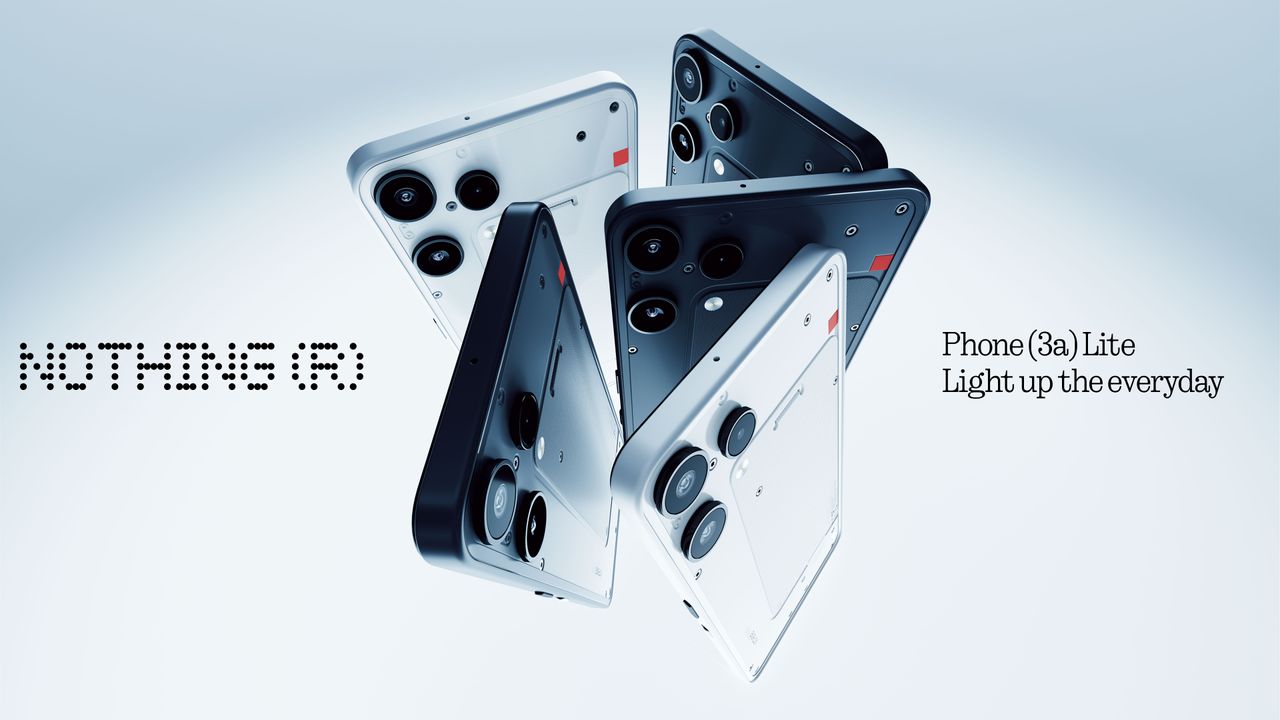
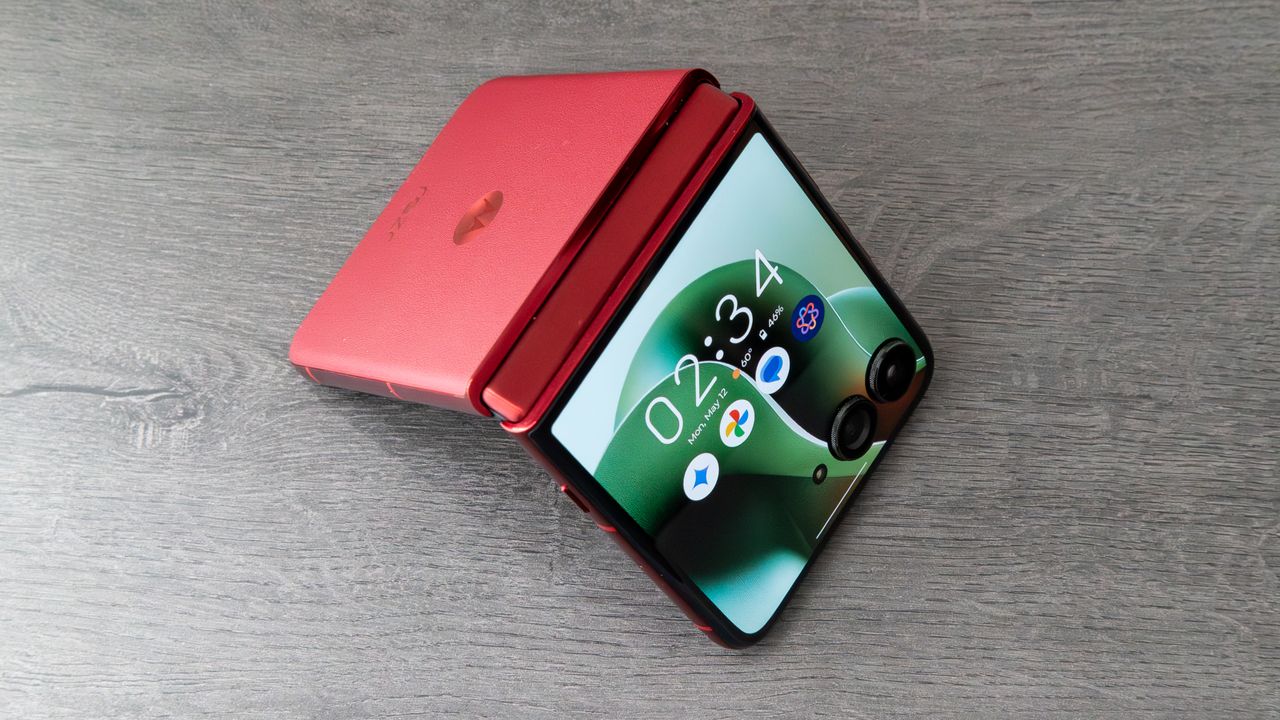

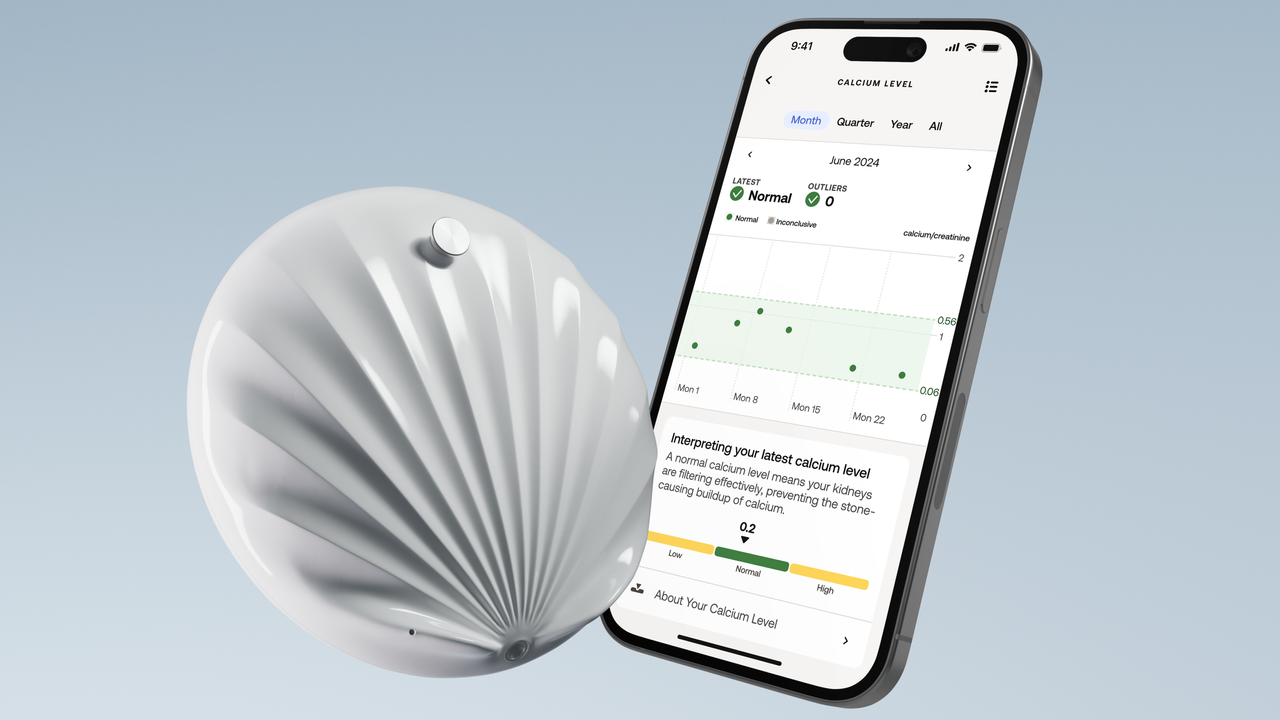
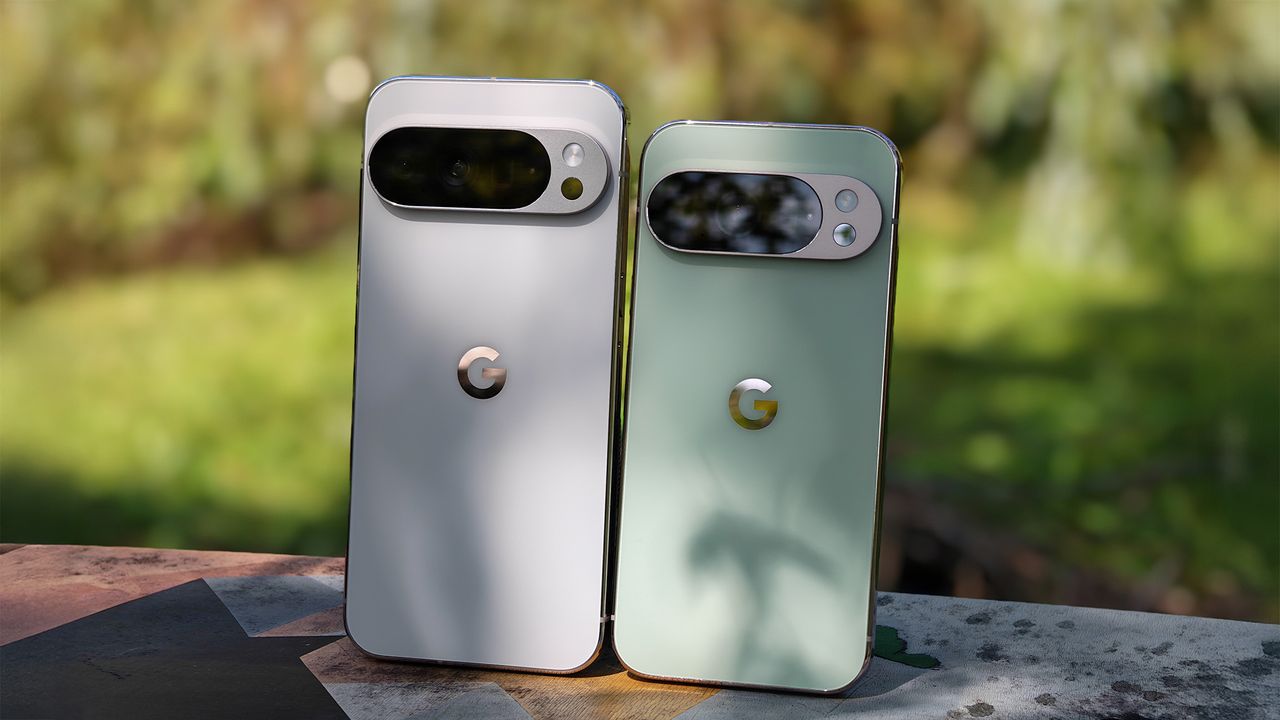
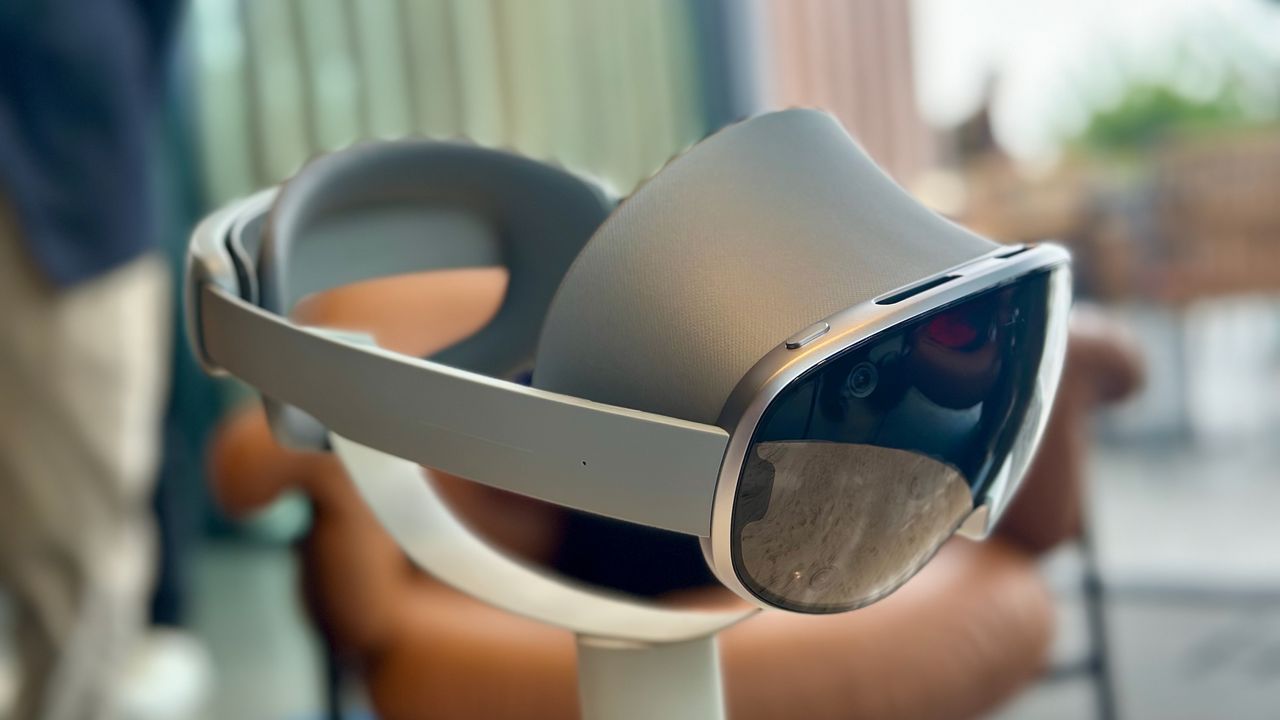

We've had a Nothing Phone, a Nothing Phone Plus, a Nothing Phone Pro, and a few CMF Phones, but this is the first time Nothing has released a Lite phone ever. Meet the Nothing Phone (3a) Lite, the brand's first entry-level phone under its own brand. Upon further inspection, the Nothing phone (3a) Lite is a close counterpart to the CMF Phone 2 Pro, but that phone is a bit lighter and has a more capable camera system. The rest of the specs are nearly identical though - you get a 6.77-inch 1080p 120Hz AMOLED, a 5,000mAh battery with 33W charging, and a 4nm MediaTek Dimensity 7300 Pro...

It's been a wild ride over the past few weeks in Samsung rumor land. The Korean company was initially said to be replacing the Galaxy S26+ with the Galaxy S26 Edge, but then it apparently went the exact other way round, with the S26 Edge cancelled and the S26+ back in action. Now a new rumor claims there's more to the story, and while the originally planned S26 Edge has indeed been scrapped, this is now likely to be replaced with another phone. That's because a device with the codename More Slim is now allegedly in development, which is interesting since the S25 Edge was codenamed...

vivo unveiled the X300 and X300 Pro in China earlier this month, and the two are going to be launching in Europe tomorrow, on October 30. Ahead of that, a new report claims to have the pricing for the duo in one European market, namely Czechia. Both the X300 and the X300 Pro are said to only be available in one version, with 16GB of RAM and 512GB of storage. The X300 will allegedly cost CZK 26,990, which is about €1,100, while the X300 Pro should go for CZK 34,990, which translates into about €1,400. Those are definitely flagship prices for flagship phones. If this pans out, it...

The competitive world of flagship smartphones is heating up again, with Chinese brands bringing a new wave of premium devices. Two of the latest models to hit the market are the Oppo Find X9 Pro and OnePlus 15. While the former is a high end smartphone with cutting edge cameras, the latter focuses on performance. So both serve a different purpose despite being the latest gen flagships. So here’s a quick comparison from display and design to hardware performance and camera systems to help you decide which model fits your priorities.
These are both top of the line smartphones from Oppo and OnePlus, so you get a premium build quality that uses metal and glass, along with high end IP rating for water and dust resistance, and uniform bezels. So picking between the designs is based on personal preference. However, the display on the front immediately showcases the different focus of the two smartphones.

The Find X9 Pro sports a 6.78-inch LTPO AMOLED display with a 2780×1264 resolution, 3840Hz PWM dimming, Dolby Vision, a 120Hz refresh rate, and up to 3600 nits of peak brightness. Meanwhile, the OnePlus 15 has a similar 6.78-inch LTPO AMOLED panel with a 1.5K resolution as well. However, it bumps up the max refresh rate to 165Hz, which appeals to mobile gaming enthusiasts.
Under the hood, these phones take different paths once again. The Find X9 Pro is equipped with MediaTek’s latest and greatest Dimensity 9500. On the other hand, the OnePlus 15 gets Qualcomm’s flagship Snapdragon 8 Elite Gen 5 SoC. Both models offer up to 16GB of RAM and 1TB of internal storage. You can expect high end performance on both models, from everyday use to intense tasks like gaming.

However, the OnePlus 15 was clearly built to double as a great gaming phone as well. A gigantic 7,500mAh battery pack powers the Find X9 Pro, which supports 80W wired fast charging and 50W wireless fast charging. While OnePlus’ latest flagship has a slightly smaller 7,300mAh cell, it makes up for this with a faster 120W wired fast charging and 50W wireless fast charging support.
Photography is another area where each device offers distinct priorities. Oppo’s Find X9 Pro places a big focus on offering a flagship grade camera experience. It features Sony’s new 50MP LYT828 primary sensor (1/1.28″, OIS, f/1.5), 200MP Samsung HP5 periscope telephoto shooter (1/4″, OIS, f/2.1), and 50MP ultra wide angle lens on the rear. For selfies and video calls, there is a 50MP Samsung ISOCELL JN5 camera on the front. Just like before, the cameras are also tuned by Hasselblad.

Last year, the OnePlus 13 was a bit similar to the Find X8 Pro. But now, the OnePlus 15 has made some downgrades to its camera system. The 1.4-inch main camera is now a smaller 50MP Sony 1/1.56-inch primary sensor (OIS, f/1.8), which is coupled with a 50MP ultra wide angle lens, and a 50MP periscope telephoto shooter with a 3.5x optical zoom. Gone is the Hasselblad tuning, being replaced by Oppo’s LUMO Condensed Light Imaging. While it would be wrong to call the camera worse outright, photography is clearly not a major focus anymore.
Taking all of this into account, it isn’t surprising that Oppo’s Find X9 Pro has a higher starting price tag of 5,299 Yuan, which is roughly around 746 US Dollars, for the 12GB + 256GB configuration. In comparison, the OnePlus 15 is a lot more affordable with a 3,999 yuan starting price (roughly 561 US Dollars) for the same storage option.

So in choosing between the OPPO Find X9 Pro and the OnePlus 15, your decision comes down to what you value most. If you’re after absolute photography capability and long battery life, the Find X9 Pro emerges as a strong pick. On the flip side, if you prioritise raw performance, relatively affordable pricing, ultra-fluid display and a chipset built for gaming or heavy tasks, the OnePlus 15 may be the smarter choice.
For more daily updates, please visit our News Section.
Tech enthusiast? Get the latest news first! Follow our Telegram channel and subscribe to our free newsletter for your daily tech fix! 
The post Oppo Find X9 Pro vs OnePlus 15: Which 2025 Flagship Should You Pick? appeared first on Gizmochina.

Nvidia is betting big on the future of intelligent connectivity, investing $1 billion in Nokia to accelerate work on AI-driven 5G and 6G networks. The move gives Nvidia a 2.9% stake in the Finnish telecom giant and signals a deeper partnership aimed at blending AI and radio access networks (RAN) — what both companies are calling AI-RAN.
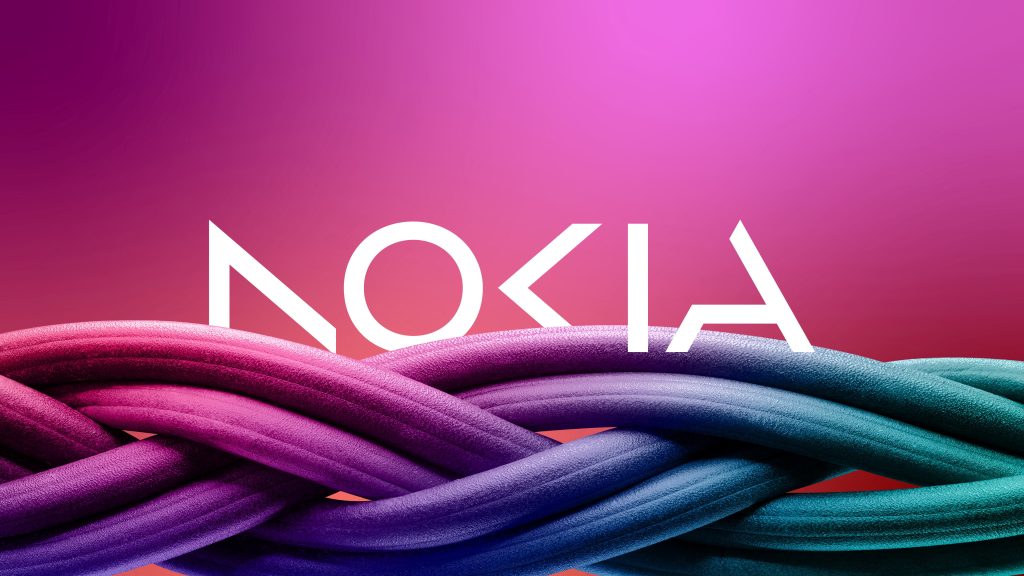
Under the deal, Nvidia will buy almost 166.4 million new Nokia shares at $6.01 each, pending regulatory approval. The funding will help Nokia speed up its development of AI-based RAN software, expand its cloud and data center solutions, and enhance its optical and switching technologies — all key to building the next generation of AI-ready infrastructure.
The collaboration will see Nvidia’s CUDA and AI platforms integrated into Nokia’s telecom systems, effectively turning networks into smart, adaptive systems capable of handling AI workloads closer to the user.
T-Mobile US is already signed on as a partner, with field trials planned for 2026 to test performance, power efficiency, and real-world scalability.
Nokia CEO Justin Hotard described the partnership as a “fundamental redesign” of how networks operate — bringing computing intelligence to the edge of connectivity. Nvidia’s Jensen Huang added that telecommunications form the “digital nervous system” of modern economies and that AI-RAN could be a generational shift for national infrastructure.
The deal also pulls in Dell Technologies as part of the broader ecosystem, hinting at new opportunities in data center and edge computing integration.
If successful, this could mark one of the most significant shifts in telecom since the rollout of 4G — paving the way for 6G networks that think, learn, and adapt in real time.
The post Nvidia will invest $1 billion in Nokia to push AI-powered telecom networks appeared first on Gizmochina.

Huawei’s Mate lineup has always been about pushing boundaries, and the upcoming Mate 70 Air looks like it’ll continue that trend — only slimmer and sleeker. Fresh leaks suggest that the Mate 70 Air will pack a quad-curved display and extra RAM, giving it an edge over the standard model ahead of its rumored November debut.

The standard Mate 70 already sets a solid foundation with a 6.7-inch flat OLED display, 120Hz refresh rate, and 1.5K resolution (2688 × 1216). It supports 1.07 billion colors, P3 wide color gamut, 1440Hz PWM dimming, and 300Hz touch sampling — all protected by second-gen Kunlun Glass, which Huawei claims is impressively durable in terms of both scratch and drop protection. Inside, there’s the Kirin 9020 chip, 12GB of RAM, and storage options up to 1TB.
According to tipster Fixed Focus Digital, the Mate 70 Air takes things a step further. It’s said to feature a quad-curved display — curved on all four edges — for a more immersive, near bezel-free experience. The screen could measure around 6.9 inches, with a slightly different aspect ratio from the Mate 70’s layout.

Storage options will likely include 12GB/256GB, 12GB/512GB, and possibly a 16GB variant. The device will ship with HarmonyOS 5.1, with an upgrade path to HarmonyOS 6.0 later. Despite its slim profile — reportedly just over 6mm thick — the Air is expected to hold its own in battery life, likely surpassing rivals like the iPhone Air and Samsung’s S25 Edge.
As for timing, FixedFocus claims Huawei is planning a “warm-up for autumn” release, pointing to the first week of November 2025.
The Mate 70 was announced toward the end of November last year, measuring 7.8mm thick and housing a 5,300mAh battery. With the Moto X70 Air (5.99mm) entering the slim phone race with a 4,800mAh cell, it’ll be interesting to see how much Huawei’s battery tech can manage. Pricing remains under wraps for now, but we should learn more as the launch draws closer.
Don’t miss a thing! Join our Telegram community for instant updates and grab our free daily newsletter for the best tech stories!
For more daily updates, please visit our News Section.
The post Huawei Mate 70 Air leak hints at curved display and more RAM than the standard model appeared first on Gizmochina.

Xiaomi has shared a new HyperOS Weekly Bug Report outlining the latest issues, fixes, and updates under review. The company continues to refine HyperOS with help from testers and users who report problems affecting daily performance.

In Germany, some Xiaomi 15 users have reported that Wi-Fi is not working on version OS2.0.225.0.WOCEUXM (Beta). Xiaomi has confirmed that this issue is being analyzed. Another problem has been found on the POCO F7 running OS2.0.206.0.VOLEUXM, where Wi-Fi stays connected but does not work properly or disconnects automatically. A temporary solution is to reconnect to Wi-Fi or grant “Notification” permissions to the app, which may fix the issue for now.
Some Xiaomi 15 users running OS2.0.225.0.WOCMIXM (Beta) and OS2.0.225.0.WOCEUXM (Beta) have noticed that the screen recording button pop-up window does not appear. Xiaomi said this will be fixed in an upcoming update.
For Redmi Note 12 Pro 5G and Redmi Note 12 Pro+ 5G, users have reported slow charging, especially when the device is warm. This problem has been fixed in version OS2.0.7.0.UMOIDXM, and Xiaomi recommends updating to this version to apply the fix.
Xiaomi listed several known issues that will be fixed in future updates:
Users facing any other issues can report them through the Feedback App or post in the ROM Subforum. For update schedules and discussions about specific device problems, Xiaomi suggests joining its Official Telegram Channel and device-specific groups for support.
In related news, Xiaomi has started rolling out the HyperOS 3 update, based on Android 16, to a new batch of devices in China. Devices now receiving the update include the Xiaomi MIX Flip 2, CIVI 5 Pro, Redmi K80, Redmi Turbo 4/4 Pro, multiple Xiaomi Pad 7 models, Redmi K Pad, Xiaomi TV S/Mini LED 2025 series, and the Xiaomi Watch S4 lineup. Xiaomi has also begun the global rollout of HyperOS 3, starting earlier this week with the Xiaomi 15T and 15T Pro. According to the official schedule, the update will reach more than a dozen additional devices by next month.
For more daily updates, please visit our News Section.
Stay ahead in tech! Join our Telegram community and sign up for our daily newsletter of top stories!
(Source)
The post Latest HyperOS Bug Report Highlights Issues on Xiaomi 15, POCO F7, and Redmi Note 12 Pro appeared first on Gizmochina.

MediaTek is not just about powering Android smartphones with its Dimensity or Helio line. The company continues to expand its reach across connected devices, and its latest effort in doing so is the Kompanio 540, a new processor built specifically for Chromebooks.
MediaTek says the Kompanio 540 is a chip built for superior performance and all-day battery life in student Chromebooks. The chipmaker claims it delivers up to 35% better power efficiency compared to the previous Kompanio 520.
While that is to be proven in real-world usage, the Kompanio 540 brings an architecture upgrade designed to improve overall performance.
It features an eight-core CPU based on a 2+6 configuration, which includes two high-performance Cortex-A78 cores clocked at 2.6GHz and six power-efficient Cortex-A55 cores running at 2.0GHz. In comparison, the Kompanio 520 includes two Cortex-A76 cores (2.0GHz) and six Cortex-A55 cores (2.0GHz).

The chip also comes with ARM’s Mali-G57 MC2 GPU that enables support for 4K displays at 60Hz or dual 2.5K monitors when connected to external screens. For a Chromebook, that’s a notable step forward in display flexibility and graphical capability, especially for users who rely on multitasking setups.
The Kompanio 540 supports Wi-Fi 7, Bluetooth 6.0, and Bluetooth Low Energy (LE) for connectivity. Storage and memory options are also flexible. The chip supports both LPDDR5-6400 and LPDDR4x-4266 RAM, as well as eMMC 5.1 and faster UFS 3.1 storage.
Last but not least, it’s also compatible with USB 3.2 Gen 2 and PCIe Gen 2 for peripheral expansion. The Kompanio 540 will make its debut in consumer devices starting January 2026.
For more daily updates, please visit our News Section.
Stay ahead in tech! Join our Telegram community and sign up for our daily newsletter of top stories! 
(Source)
The post MediaTek’s latest Kompanio 540 chip is built for student Chromebooks appeared first on Gizmochina.

Gmktec has launched its latest ultra-compact desktop globally, the NucBox M7 Ultra. The Mini PC starts at $309.99 for the base configuration and goes up to $429.99 for the top-end model with 32GB RAM and a 1TB SSD. Early buyers who place their orders before November 9 will receive a free USB Hub expansion dock as part of the launch promotion.

The NucBox M7 Ultra is powered by AMD’s Ryzen 7 Pro 6850U processor, which features 8 cores, 16 threads, and a maximum boost frequency of 4.7GHz. The chip is built on TSMC’s 6nm FinFET process and supports three power profiles, with the top mode reaching 54W TDP. The company claims a Cinebench R23 multi-core score of 13,521, placing it well above typical Mini PCs in terms of raw performance.
Gmktec has equipped the M7 Ultra with the integrated AMD Radeon 680M GPU. The GPU includes 12 compute units clocked at 2200MHz and supports up to 2GB of shared VRAM. According to the company, the graphics performance is close to that of the Nvidia GTX 1050 Ti.

The device supports dual-channel DDR5-4800 SO-DIMM RAM and allows memory expansion up to 64GB. Storage includes two M.2 2280 PCIe 4.0 x4 SSD slots, supporting up to 8TB each. The M7 Ultra also includes PCIe 3.0 SSD options in its pre-configured variants.
On the connectivity front, the Mini PC includes dual USB4 ports with 100W power delivery and DisplayPort 1.4 output, HDMI 2.1, and DisplayPort 2.0. These ports allow up to four displays to run simultaneously at 8K resolution. It also features an OCuLink port on the front, enabling full-speed external GPU support via PCIe Gen4 x4 bandwidth.
The M7 Ultra includes dual Intel 2.5G LAN ports, Wi-Fi 6E, and Bluetooth 5.2. It supports Windows 11 Pro out of the box and is also compatible with Linux and Ubuntu. The device uses a dual-fan cooling system and produces less than 38dB of noise under load.
The compact aluminum chassis measures 132 × 125 × 58 mm and weighs approximately 604g. The design also includes VESA mount compatibility for flexible placement in home or office setups.
In related Gmktec news, the company has also introduced the NucBox M5 Ultra Mini PC recently powered by the Ryzen 7 7730U, along with the M6 Ultra Mini PC featuring the Ryzen 5 7640HS and Radeon 760M graphics.
For more daily updates, please visit our News Section.
Stay ahead in tech! Join our Telegram community and sign up for our daily newsletter of top stories! 
(Gmktec)
The post Gmktec launches NucBox M7 Ultra Mini PC with Ryzen 7 Pro 6850U, USB4 & up to 64GB DDR5 RAM appeared first on Gizmochina.

Samsung is working on its next big UI update, One UI 8.5, which will be based on Android 16. The update will debut with the Galaxy S26 series next year. Initially, a beta program was expected to open in November, but recent reports suggest it’s been delayed, possibly because of changes in Galaxy S26 launch plans. Regardless, this isn’t stopping the leaks coming our way. In our latest dose, we’re hearing that Samsung may add presets for the Pro camera controls with One UI 8.5.
In the latest One UI 8.5 builds, folks at Android Authority have spotted lines of code that suggest Samsung may introduce presets. With this change, you can switch to a particular preset at any point in time without going through manually changing the controls every time you want to click a photo with Pro mode.
This has apparently been the most requested feature for years from Galaxy users. It now looks like Samsung is finally listening to the feedback. However, it’s unclear how many presets a user can save in total.
Furthermore, the report notes that Samsung may also let users select specific cameras for the Pro Mode preset. The strings reveal the ability to choose presets for the wide, ultrawide, telephoto, super telephoto, and front cameras. The presets will reportedly let you reserve values for various camera settings, including focus type (manual or autofocus), ISO, Kelvin value, Manual color tune (saturation, contrast, highlights, shadow), Shutter speed, White balance, Focus length, and Exposure.
Not just saving a present, Samsung may even let users share the camera presets with other Galaxy users through the Quick Share app. However, we’ll have to see how it will handle the preset compatibility. This is considering that each Galaxy phone has varying camera specs and features.
Samsung isn’t the first brand to offer camera presets; The source notes that they’re already present on several Android flagships. This means Samsung is finally catching up with the competition.
The post Samsung's One UI 8.5 May Boost Pro Camera Mode with Presets appeared first on Android Headlines.
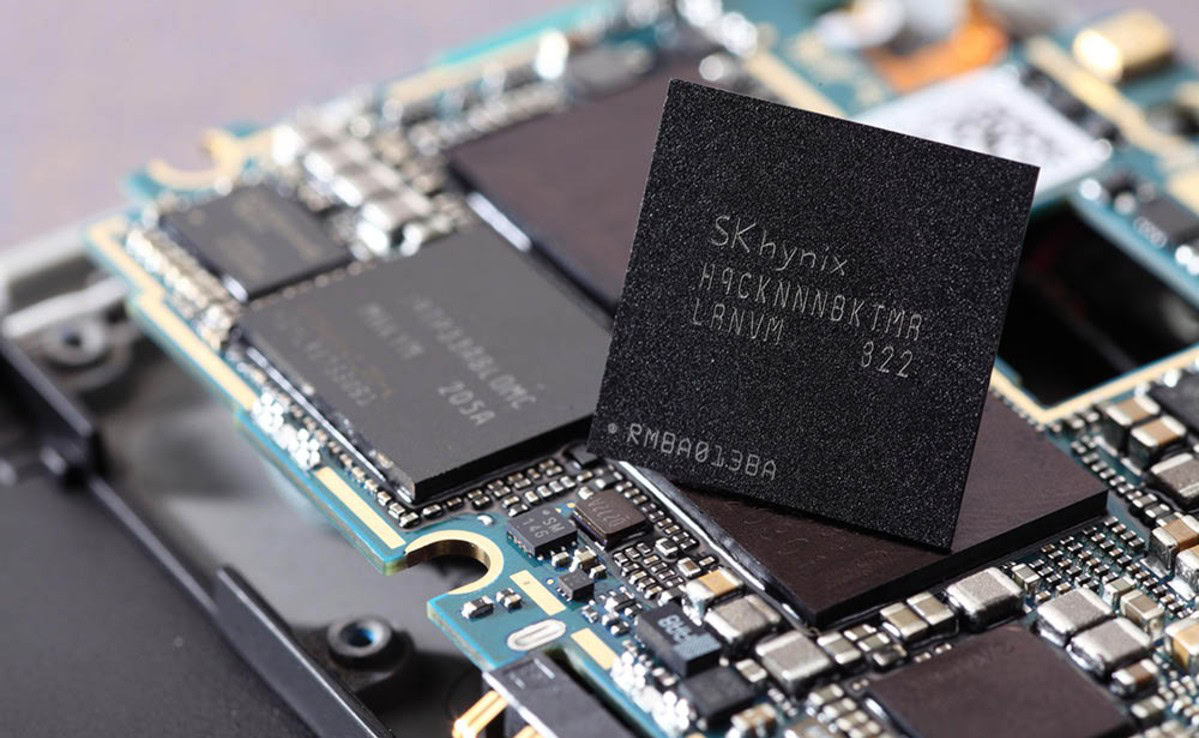
The soaring demand for artificial intelligence is about to hit your wallet in a place you might not expect: your phone’s RAM. We typically focus on the price of components like the main processor. Every so often we get news about increasingly expensive Snapdragon chips, for example. However, the cost of the RAM memory used in our phones is set to skyrocket, creating a headache for every major manufacturer.
The reason is a heated tech market conflict for raw production capacity between high-performance AI servers and your pocket-sized device.
The culprit behind this price surge is High Bandwidth Memory (HBM). HBM is the powerful, specialized RAM essential for feeding massive AI models in data centers. Demand for HBM is showing no sign of slowing, and since HBM consumes a large amount of the available silicon, it is swallowing up the wafer capacity needed for conventional server memory (DDR5). Also the memory used in your phone: LPDDR5x.
LPDDR5x is the high-performance, low-power RAM/memory required by modern flagship phones. Because it competes with HBM for the same production resources, this imbalance is causing chaos in the mobile supply chain.
According to a new report from market research firm TrendForce, this structural supply shortage is deepening. TrendForce has dramatically revised its forecast for general DRAM pricing—which includes LPDDR5x—for the end of 2025. Now they expect growth of 18–23%, up from an earlier forecast of 8–13%.

Here is where the memory market takes an unexpected turn. Initially, HBM was far more profitable for suppliers, commanding a price premium four times higher than DDR5. However, as the HBM market becomes more competitive and server demand for standard DDR5 remains robust, that gap is shrinking fast.
TrendForce predicts that by the first quarter of 2026, the profitability of standard DDR5 will actually surpass that of HBM3e. When this happens, manufacturers may shift production resources away from HBM to secure earnings from DDR5. This might eventually stabilize the HBM market. But it means the price pressure on LPDDR5x will remain high well into 2026.
Manufacturers are already sounding the alarm. Lu Weibing, president of Xiaomi, recently noted that the rise in storage costs is “much higher than expected and will continue to increase.”
What do rising memory and storage costs mean for you? Smartphone manufacturers operate on extremely thin margins. This is especially true for flagship devices that also include expensive components like cutting-edge camera sensors and high-end 2nm processors.
When the cost of LPDDR5x memory jumps by nearly 20%, manufacturers have few options other than passing that cost along to the consumer. For anyone planning to upgrade their flagship phone next year, the price tag will likely be significantly higher. It seems the AI revolution will make our future smartphones a little more expensive.
The post AI Memory Demand to Force Higher Smartphone Prices in 2026 appeared first on Android Headlines.

Elon Musk has entered the knowledge arena, launching Grokipedia, a new online encyclopedia powered by his xAI models. As its name suggests, it is a direct competitor to the massively popular Wikipedia. In fact, Musk claims Grokipedia will “purge out the propaganda” found on Wikipedia and exceed its rival “by several orders of magnitude in breadth, depth, and accuracy.”
However, the man who co-founded Wikipedia, Jimmy Wales, disagrees with that statement. Speaking at a recent CNBC summit, Wales dismissed Grokipedia’s threat, arguing that the underlying technology—Large Language Models (LLMs)—simply isn’t capable of producing a reliable encyclopedia.
Wales’ skepticism stems from Grokipedia being powered by AI. He is aware of the flaws of LLMs like Grok and ChatGPT, which have a tendency to “make massive errors” and fabricate sources—namely “AI hallucinations.” Wales shared an example where a Wikipedia community member found that a source had used an LLM to generate book citations. This allegedly resulted in the chatbot “very happily mak[ing] up books.”
To test LLMs, Wales often queries obscure topics, such as the identity of his wife (a “not famous but known” figure in British politics). He claims that this search consistently results in a plausible but ultimately wrong answer.
“We know ChatGPT and all the other LLMs are not good enough to write wiki entries,” Wales stated. He emphasizes that the reliance on human verification and community oversight that Wikipedia has developed over decades.
Musk and his allies frequently criticize Wikipedia for alleged “woke bias” and for excluding conservative media as sources. Grokipedia’s own entry on Wikipedia accuses the site of having a “systemic ideological bias.”
Wales strongly defended Wikipedia’s editorial policy. He said the organization’s priority is sourcing neutrality. “We don’t treat random crackpots the same as The New England Journal of Medicine, and that doesn’t make us woke,” Wales said. He also added that responding to criticism by “doubling down on being neutral and being really careful about sources” is essential.
The Wikimedia Foundation still acknowledges that AI poses challenges—notably the decline in human visits and the increased scraping of Wikipedia data to train AI models. However, he considers Wikipedia’s approach to be better and more reliable. “This human-created knowledge is what AI companies rely on to generate content; even Grokipedia needs Wikipedia to exist,” notes the Foundation.
Ultimately, Wales views the biggest threat not as a direct AI replacement. Instead, he sees it as the ability of LLMs to generate plausible fake websites, which could fool the general public.
The post Elon Musk's Grokipedia Launches, but Wikipedia Isn't Scared appeared first on Android Headlines.

Car chargers can be an incredibly useful accessory, but even more so if you have multiple devices to charge at once, or multiple people in the car who want to charge devices, and that’s why this deal on the Lisen 4-port car charger is one you should consider. Normally, this charger would cost you $27.99, but right now you can pick it up for $16.14, which is a discount of 42%. You’re saving almost half the regular cost, and that makes this a really good value.
For starters, this is a four-port car charger. You can charge up to four devices simultaneously. If you have kids, you definitely want one of these for longer car rides. This charger also includes two retractable cables, one of which is USB-C and the other is a Lightning cable. This helps cut down on car clutter and lost cables because two of them are built into the charger itself. That means you only need to bring two cables to use for those other ports.
Additionally, this charger supports up to a maximum of 69W, so you can charge devices quickly. This charger also features a 180-degree angled design that you can adjust to meet your needs. That bendable hinge is way more useful than you might think, especially if you have people in the backseat charging, or if you have phones stuck to a dash mount and need to angle the charger upward.

The post Cut down on car clutter with this $16 four-port car charger appeared first on Android Headlines.
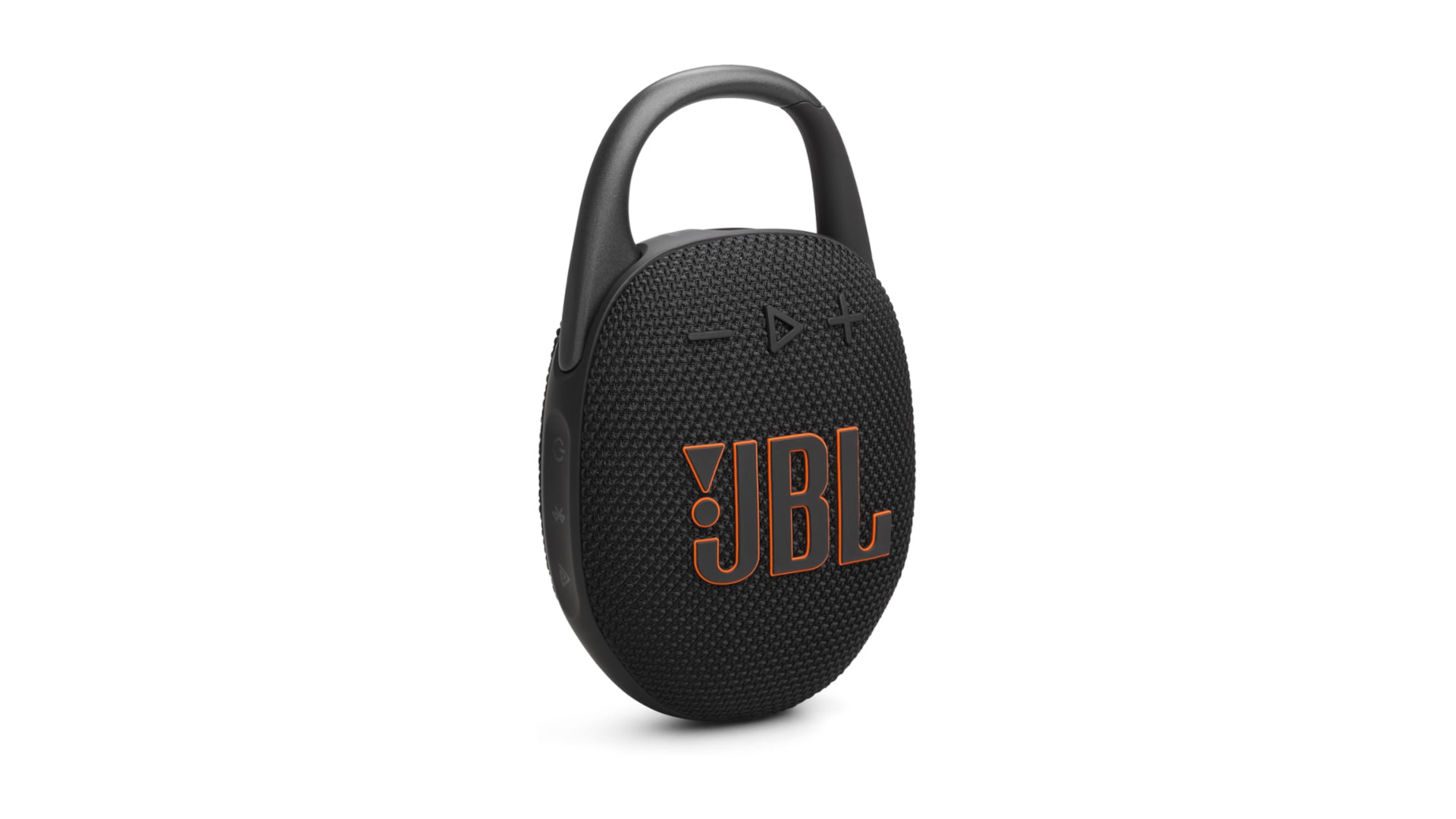
Bluetooth speakers are a versatile piece of tech, and speakers like the JBL Clip 5, which Amazon currently has a deal on, are some of the best options for a Bluetooth speaker because they’re extremely portable. The JBL Clip 5 is perhaps the poster child for portable Bluetooth speakers, because it’s not only compact, but it can be clipped to stuff so you don’t even have to carry it with your hands or put it in a bag. And now, it’s down to just $59.95. Normally, the JBL Clip 5 costs $79.95, so you’re saving about $20 here. Worth noting is that Amazon has this labeled as a limited-time deal. So, you’re going to want to take advantage of the discount while you can.
Aside from its portability, the JBL Clip 5 is also waterproof. Go ahead and take it with you to the pool, the lake, or anywhere there might be some water that can splash around and potentially get the speaker wet. It has up to 12 hours of battery life on a single charge, which means it should have no trouble lasting you an entire day. It might even last several days, depending on how long you use it each time you connect it to something.
The carabiner clip design is really what sets this apart, though. Clipping it to bags is one thing, but this design also makes it possible to hang the speaker from various things around the house. You could easily use this as a shower speaker if you wanted. As a nice little bonus, the JBL Clip 5 comes in several different colors.

The post JBL's Clip 5 is the go-anywhere speaker and it's now just $60 appeared first on Android Headlines.
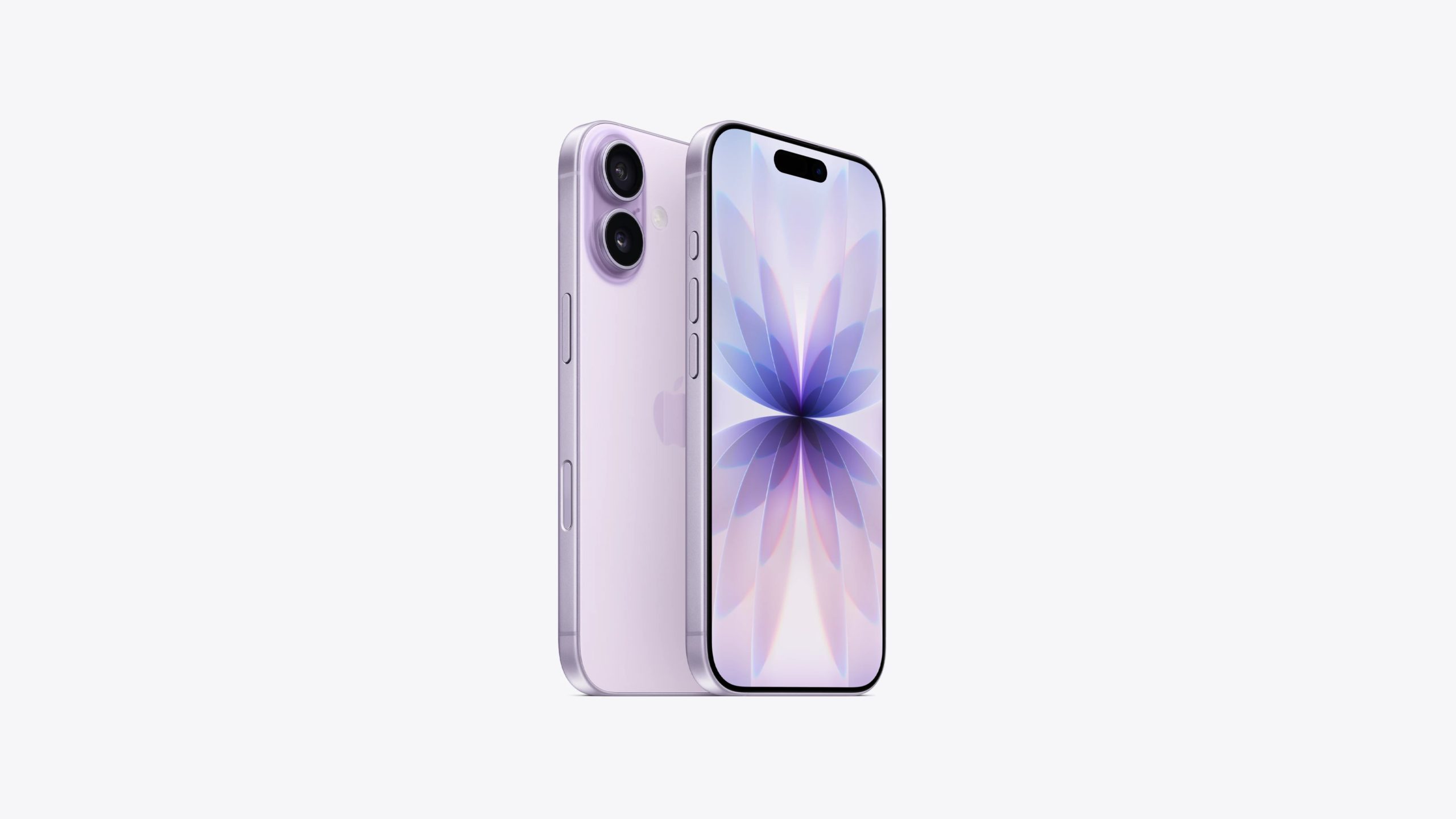
If you just picked up a shiny new iPhone 17, you’re probably already thinking about how to keep it safe — and maybe even level up its everyday use. Apple’s latest flagship doesn’t come cheap, and with all that glass, titanium, and MagSafe-ready power, a good case and the right accessories are basically essential. Whether you’re after ultra-slim protection that still shows off the new color options, a rugged MagSafe case that can take a drop, or accessories that make the most of that upgraded Qi2 charging and USB-C port, we’ve got you covered.
In this guide, we’re rounding up the best iPhone 17 cases and accessories you can buy right now — from premium brands like Nomad and TORRAS to budget-friendly favorites that punch above their price. We’ll cover everything from chargers and power banks to screen protectors, mounts, and more, so you can protect, charge, and personalize your iPhone 17 in style.
We believe that the best case for the iPhone 17 is actually the Apple Silicone case. Apple has really updated this case to be quite good. And it does have the camera control button included.
If you’re looking for a case that matches Apple’s polish and leverages every accessory-advantage in the iPhone 17 ecosystem, the Apple Silicone Case with MagSafe is a strong pick. Designed to fit the iPhone 17’s curves precisely, it gives you that soft-touch finish where premium meets subtlety. On the outside you get a smooth, silky silicone layer; inside there’s a microfiber lining to guard against micro-abrasions and the dreaded pocket lint surprise.
But this isn’t just about looks and feel — the case also incorporates built-in magnets that seamlessly align with the iPhone 17’s MagSafe system for fast, reliable wireless charging and accessory attachment. And for photography lovers, it adds support for Apple’s “Camera Control”-capable feature (via a sapphire crystal + conductive layer) so your manual controls aren’t hindered by the case.
Of course, you’re paying Apple premium pricing here, but what you get is full ecosystem compatibility, a snug fit that preserves the iPhone 17’s minimalist lines, and the confidence of Apple’s rigorous testing to better handle day-to-day knocks and bumps.
There’s a lot of great, clear cases on the market for the iPhone, but we do believe that what ESR has is the best option right now.

If you want full clarity so your iPhone 17’s color and design shine through, yet still demand serious protection, the ESR Classic Hybrid Magnetic Case nails the balance. Its transparent back means you’re not hiding that sleek finish you paid for — unlike some so-called “clear” cases that add opaque patches or heavy frames.
But this isn’t just about style: ESR ramps up the specs with anti-yellowing material on the clear shell, so it won’t turn cloudy over time as many budget transparents do. It supports MagSafe with strong magnets and includes a dedicated cut-out or coverage for the new Camera Control button on iPhone 17, meaning you don’t lose functionality for visibility.
On the protection front you’re looking at “military-grade” drop defence from its reinforced “Air Guard” corners, with raised lips around screen and camera edges to absorb shock and protect the lens module. All told, this case delivers transparent style without sacrificing substance — a smart pick if you want minimal-visual bulk but maximum everyday safeguarding.
The iPhone 17 is already pretty strong, but with a good rugged case it can be almost indestructible. Perfect for those who might be a bit tough on their devices.

This case is built from the ground up with protection as the priority: UAG’s Monarch Pro features a multi-layer construction including a shock-resistant core, impact-resistant rubber surrounds, a shear plate and reinforced armor frame. That kind of architecture signals you’re getting more than just decent drop protection — you’re getting something designed for real-world abuse.
The raised edges around the screen and the camera module help prevent scratches and lens damage when you set the phone down face-up or back-down. And while “rugged” cases often bulk up too much, the Monarch keeps MagSafe compatibility built in — meaning you don’t have to give up wireless charging or accessory compatibility to have serious protection.
iPhones are known for being very popular devices for YouTubers, and photographers. So a case that is great for photography like the Peak Design Everyday case is a really good option.

If you’re serious about photography with your new iPhone 17, the Peak Design Everyday Case for iPhone 17 is a standout pick. Designed for creators who carry their phone like their mini-camera, it combines slick aesthetics with pro-level functionality. On the surface it’s a slim, protective MagSafe-compatible case with a precise cut for the iPhone 17’sCamera Control button and a tactile finish that feels premium.
But what makes it truly photography-worthy is how it integrates into the wider Peak Design Mobile ecosystem. The case features the SlimLink magnetic system so that accessories adhere cleanly and securely—critical when you’re balancing a phone on a tripod or mounting it in unusual positions. From the official product page: it “brilliantly connects to the entire Peak Design Mobile Ecosystem.”
Pairing this case with the Peak Design Mobile Tripod takes it a step further. The tripod snaps on magnetically via the SlimLink interface, then unfolds into a mini rig you can use to shoot low-angle handhelds, landscape time-lapses, or stable 4K video.
There are a lot of leather cases available for the iPhone, but it’s hard to find something better than what Nomad offers. Nomad does also offer a lot of styles and colors for the iPhone 17 series.
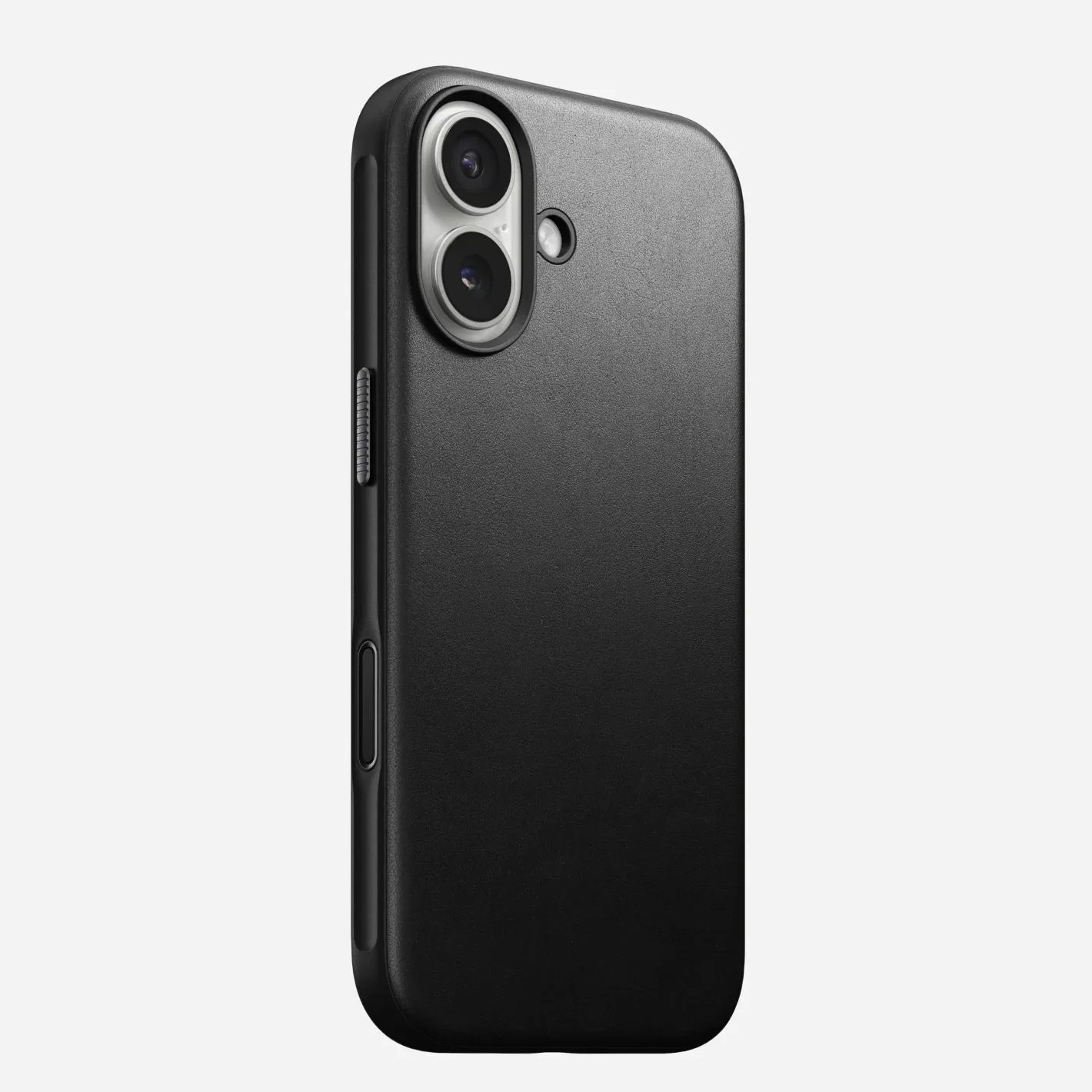
If you want a case that screams premium without sacrificing protection, the Nomad Modern Leather Case for iPhone 17 is the one to get. Crafted from full-grain leather sourced from the renowned Danish tannery Ecco, it develops a beautiful patina over time — meaning it actually looks better the more you use it. This isn’t faux leather that flakes or fades; it’s the real deal, with warm tones and a smooth, refined texture that elevates your phone’s aesthetic.
Underneath that elegance is real protection. Nomad built the Modern Leather Case with a 360° TPE bumper that absorbs shocks and keeps your iPhone 17 safe from drops up to 2.4 meters. The raised edges guard your camera and display, while anodized aluminum buttons give it a satisfying, tactile feel.
It’s also fully MagSafe compatible, so you can use it with Apple’s chargers or Nomad’s own line of accessories without missing a beat. And thanks to its slim, precisely engineered design, it slides easily into a pocket or bag while still looking boardroom-ready.
We’ve also rounded up some great accessories that you can buy to make the most out of your iPhone 17 experience.

The Apple Watch Series 11 is perfect to pair with the iPhone 17 because it has all of the latest features from Apple, and works really well with the iPhone 17. Since it was made specifically for it.
It comes in Space Gray, Silver, Rose Gold, and Jet Black, starting at $399, with options that bring it up over $699.
It does also come in two sizes: 42mm and 46mm. We believe this is the better option for the iPhone 17 over the Apple Watch Ultra 3, because of the cost. And most people buying an iPhone 17 don’t need the adventurous features of Watch Ultra.

If you own the AirPods Pro 3 alongside your new iPhone 17, you’re looking at one of the most seamless audio pairings Apple has ever offered. From deep integration with iOS to killer hardware upgrades, these buds deserve a spot at the top of your buyer’s guide.
Firstly, they pack what Apple calls the “world’s best in-ear Active Noise Cancellation (ANC),” delivering up to 4× more noise reduction than the original AirPods Pro. That means when you’re commuting, working from a café, or trying to focus, the sound isolation is truly elite. On top of that, the acoustic architecture—custom driver, high dynamic range amp, H2-chip—gives you rich sound, wide soundstage, and clean vocals.
For the iPhone‐17 user, the ecosystem perks shine: effortless pairing, automatic device switching, deep integration with the Fitness app (thanks to the new heart-rate sensor built into the AirPods Pro 3) and Live Translation support for on-the-go multilingual conversations. They’re also IP57 rated (dust & sweat resistant) which means they hold up when your day takes a turn into gym time or weather-worse commutes.

If you’re on the hunt for a top-tier MagSafe charger to pair with your iPhone 17, the UGREEN MagFlow MagSafe Wireless Charger stands out as a serious contender — and here’s why it deserves “best charger” status in your buyers guide.
First off: the magnetic grip. UGREEN built this charger with a strong array of magnets that lock into your iPhone’s MagSafe alignment, making sure the phone snaps on securely and stays in place — no annoying sliding off the pad mid-charge. The precision alignment also boosts charging efficiency because the coil is properly positioned every time.
Then there’s support for the newer charging standard. The MagFlow lineup supports Qi2 or MPP magnetic charging protocols which push wireless charging speeds beyond the old 15 W ceiling to up to 25 W on compatible devices. While your iPhone 17 may or may not hit the full 25 W (depending on Apple’s specification), investing in this now gives future-proofing for accessory compatibility and faster wireless power.
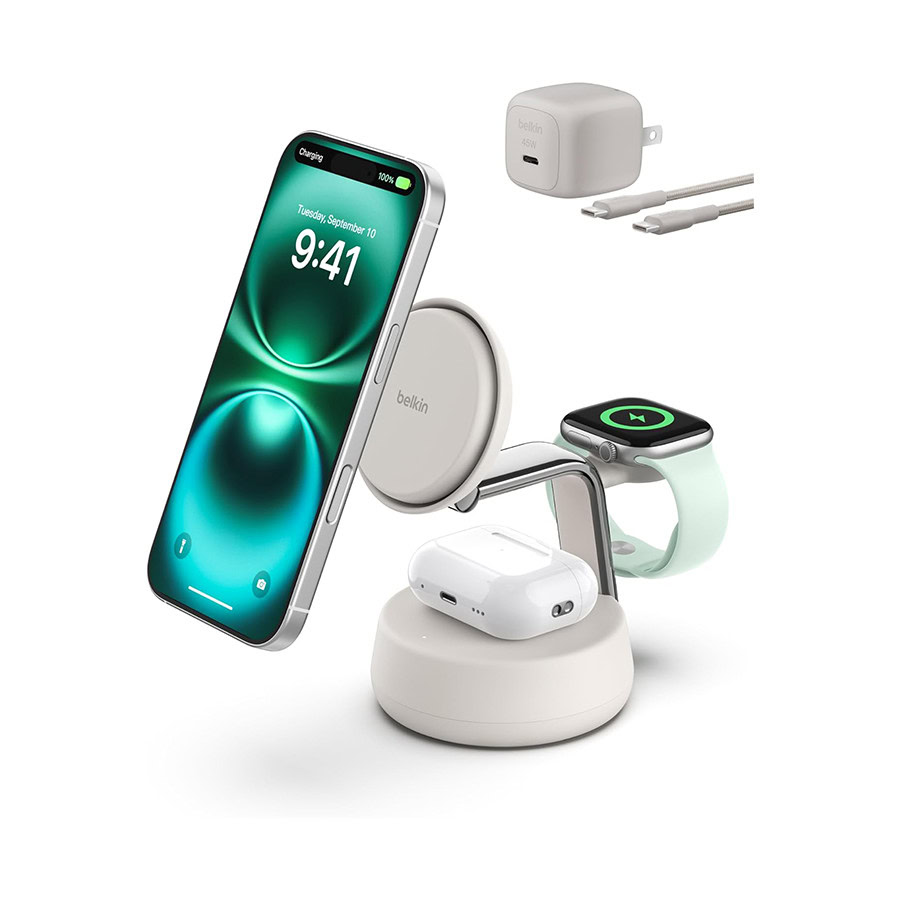
If you want the best wireless charger for your iPhone 17, the Belkin Boost Charge Pro is the one to get. It’s fully MagSafe-certified, so your phone snaps perfectly into place every time — no guessing or slow misaligned charging. The strong magnetic connection keeps your iPhone secure, whether it’s on your desk, nightstand, or charging at an angle.
Belkin also nails speed and reliability. This charger delivers up to 15W MagSafe power, letting your iPhone 17 charge faster than most generic Qi pads. It’s built with premium materials and a solid, non-slip base, giving it that polished Apple-like look and feel.
You can even grab the 2-in-1 or 3-in-1 Boost Charge Pro versions if you want to charge your AirPods or Apple Watch alongside your iPhone — perfect for keeping everything powered overnight.
The post Best Apple iPhone 17 Cases & Accessories appeared first on Android Headlines.

Baseus makes quite a few products, and while it makes plenty of chargers and power banks, it also makes things like these Inspire XC1 Open Earbuds, which are now on sale thanks to this deal at Amazon. While Baseus isn’t as recognizable for its audio gear, these earbuds actually have their sound done by Bose, which gives them a significant bump in recognition.
Since these are open earbuds, they don’t come with active noise cancellation, so if you’re looking for a pair of earbuds that have that kind of feature, there are better options. However, if you want something open with a wider sound stage, these are definitely that. The open design lets a little more noise in, so things sound more natural. It also means that you have a better grasp of your surroundings because you have a little bit of ambient noise, giving you more awareness.
In terms of fit, these are pretty comfortable and designed to be worn all day without discomfort. If you tend to wear earbuds for long periods of time, or you’ve wished you could, then you should consider these. Because they might just be the most comfortable pair of earbuds you’ve ever worn. They’ll last for up to 8 hours per charge, too. So you could wear them for most of the workday before you need to charge them. Speaking of charging, these come with the charging case that extends the battery life up to 40 hours.

The post These open earbuds from Baseus are down to only $110 appeared first on Android Headlines.
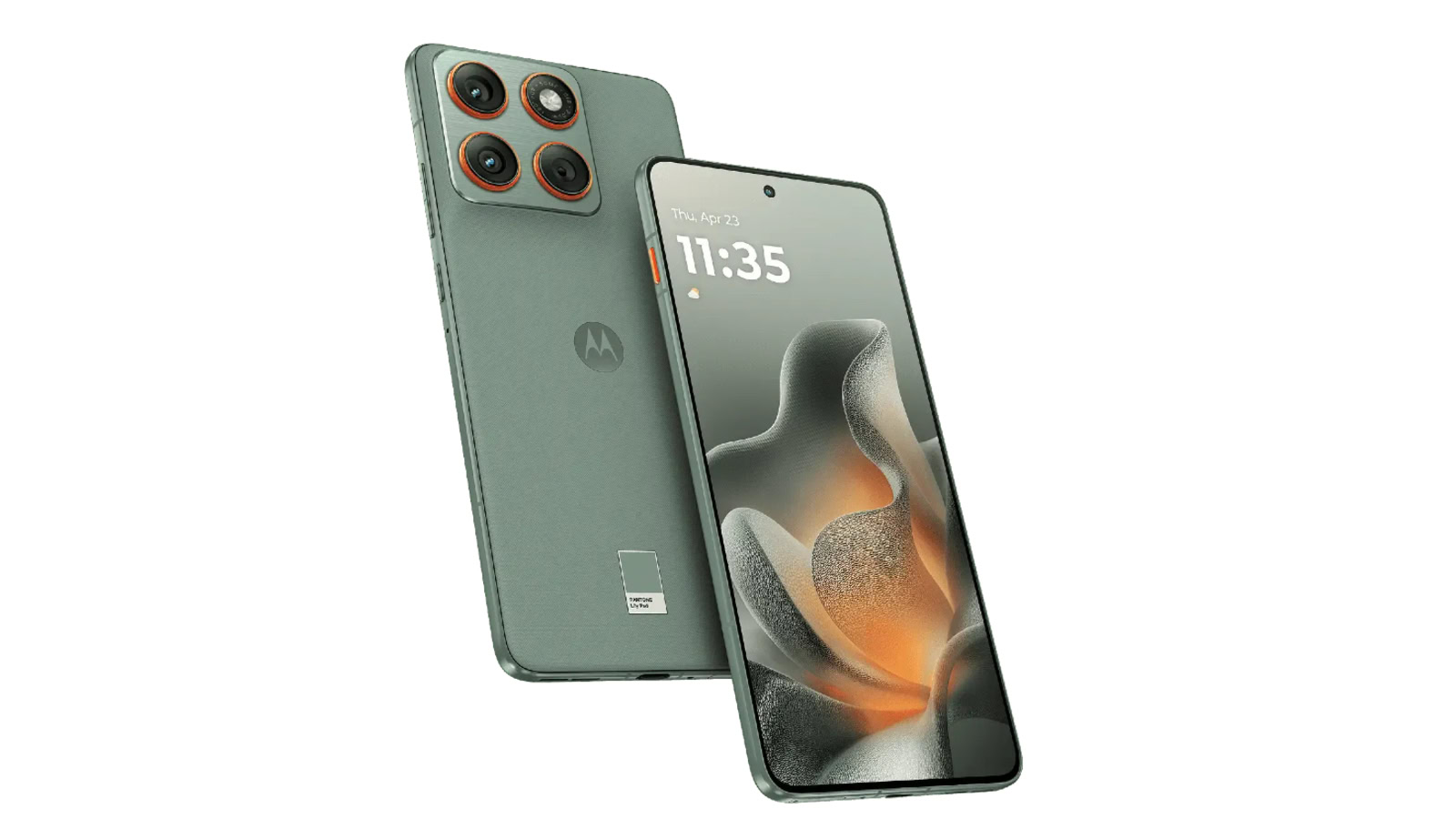
Motorola will launch its ultra-slim Edge 70 phone globally on November 5th. It’s basically the same phone as the Moto X70 Air, which is available in China. We’ve already seen the design of the phone through some leaked renders. Now, as we inch closer to the announcement, Motorola has listed the Edge 70 on its official Polish and German websites, which show off more images and complete specs.
The official listing confirms the Motorola Edge 70 will be available in three Pantone colors: Gadget Grey, Lilly Pad, and Bronze Green. We’ve already seen the phone in the latter two colors via leaked renders. It features a unique nylon-textured finish on the back, offering a good grip. The frame is made of aircraft-grade aluminum, while the display gets a Gorilla Glass 7i protection layer. Motorola says the body has passed MIL-STD 810H standards.
The Motorola Edge 70 is just 5.99mm in thickness and is “feather light,” weighing around 159 grams. In comparison, the iPhone Air is 5.6mm thin and weighs 165 grams. There’s an IP68 and IP69 rating for water and dust resistance. It gets Water Touch support, so you can continue using it even if you’re by the pool or out and about on a rainy day.
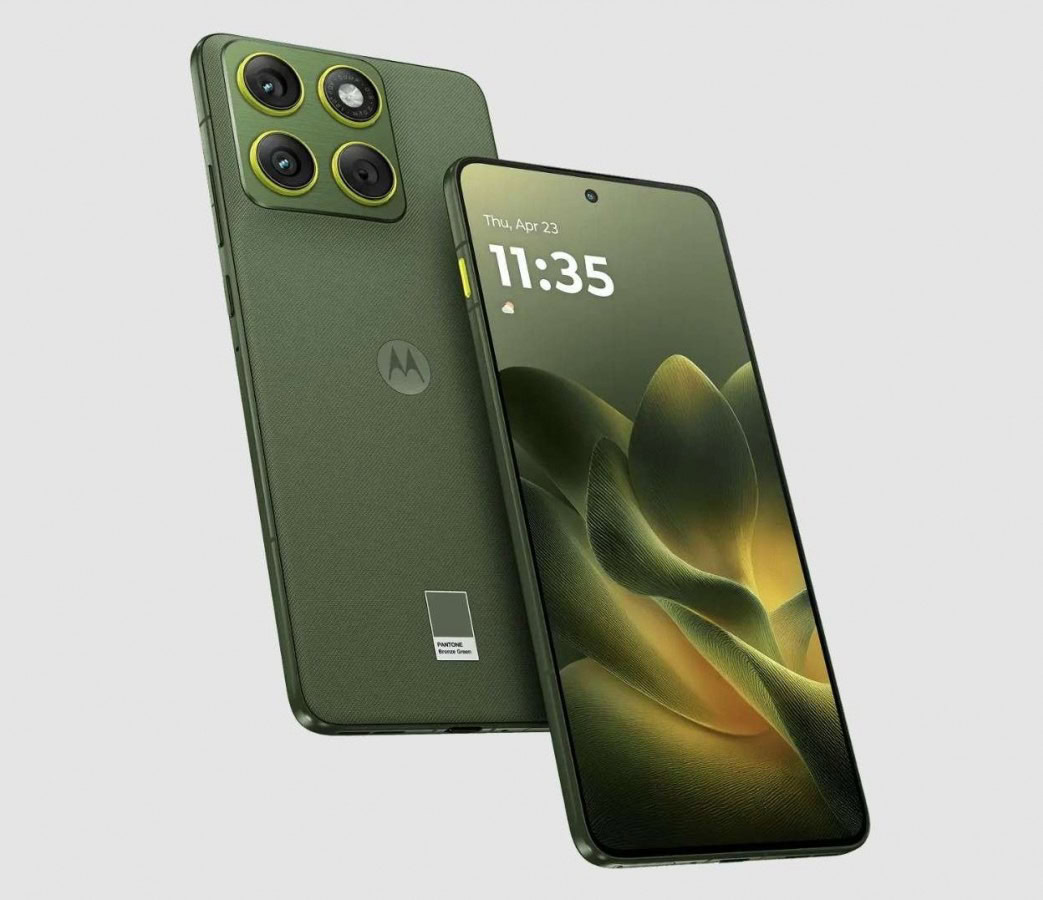



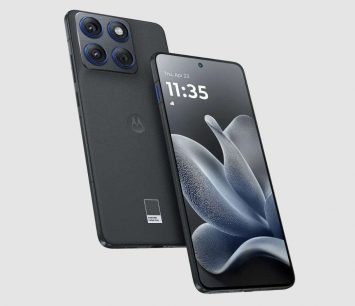

Moving to specs, the Moto Edge 70 will feature the Qualcomm Snapdragon 7 Gen 4 processor. In comparison, the Edge 60 had the MediaTek Dimensity 7300. You get 12GB LPDDR5x RAM and 512GB native storage. It’ll boot Android 16 OS with Motorola’s OS, which is close to stock UI, on top. The software offers a bunch of Moto AI features like Note Assist, Playlist Studio, and Circle to Search.
The Edge 70 features a 6.67-inch 120Hz pOLED display with 100% DCI-P3 color space, 4,500 nits peak brightness, and HDR10+. The panel is Pantone validated for correct colors. You get a dual camera setup on the back, with a 50MP main f/1.8 lens with OIS and a 50MP f/2.0 ultra-wide-angle lens. There’s another 50MP lens on the front for your selfie needs.
Though the rest of the hardware sounds quite juicy, the battery department may not be pleasing. It has a moderate 4,800mAh silicon-carbon battery. This seems like a tradeoff for being slim. However, Motorola is promising up to 29 hours of continuous video playback and up to 66 hours of music. You get 68W fast charging and 15W wireless charging.
Connectivity options of the phone include 5G, Bluetooth 5.4, Wi-Fi, NFC, GPS, Glonass, Galileo, and a USB Type-C. You get dual Dolby Atmos stereo speakers. There’s an in-screen fingerprint sensor and ThinkShield facial recognition for authentication. Motorola will share the price and availability details of the Edge 70 on the day of its launch.
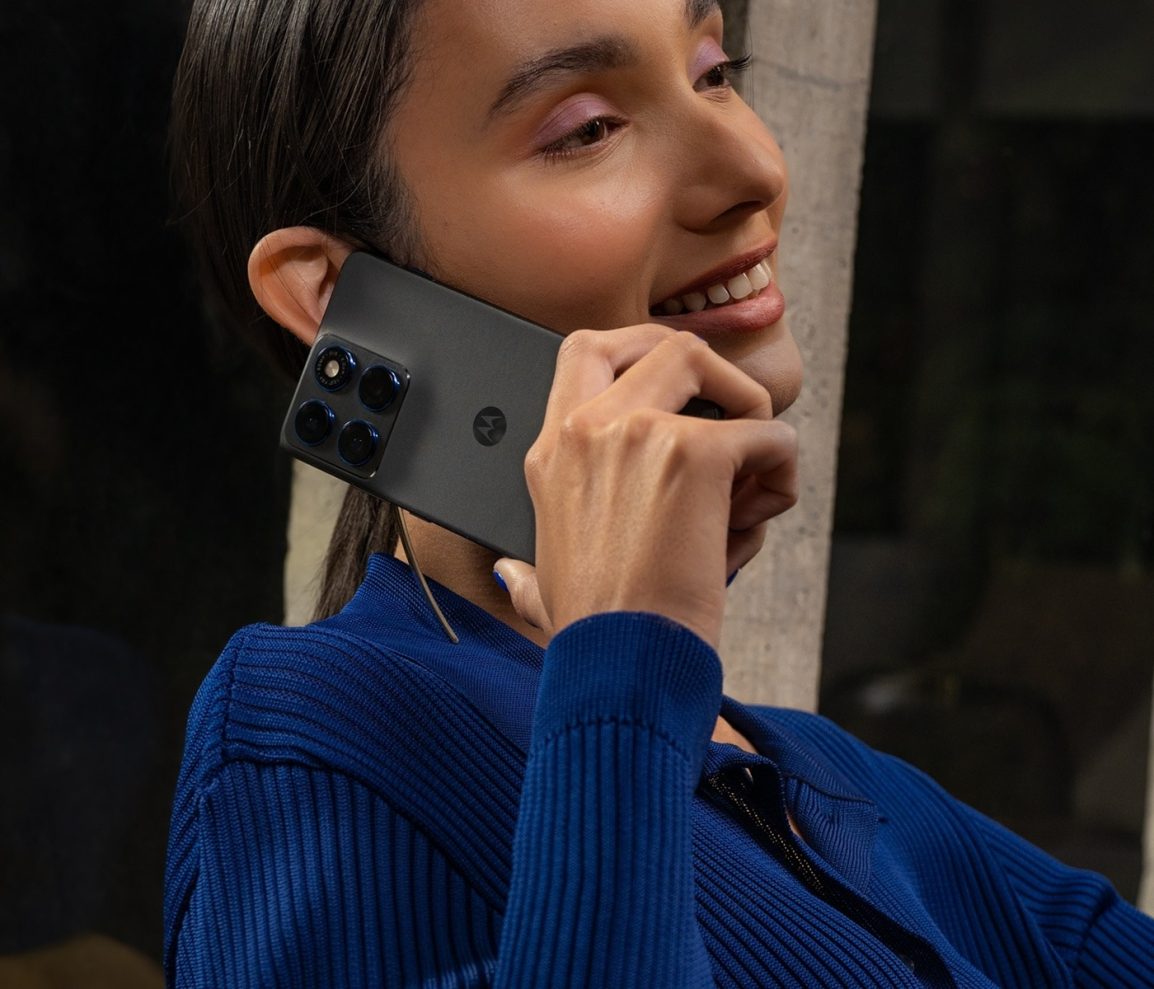
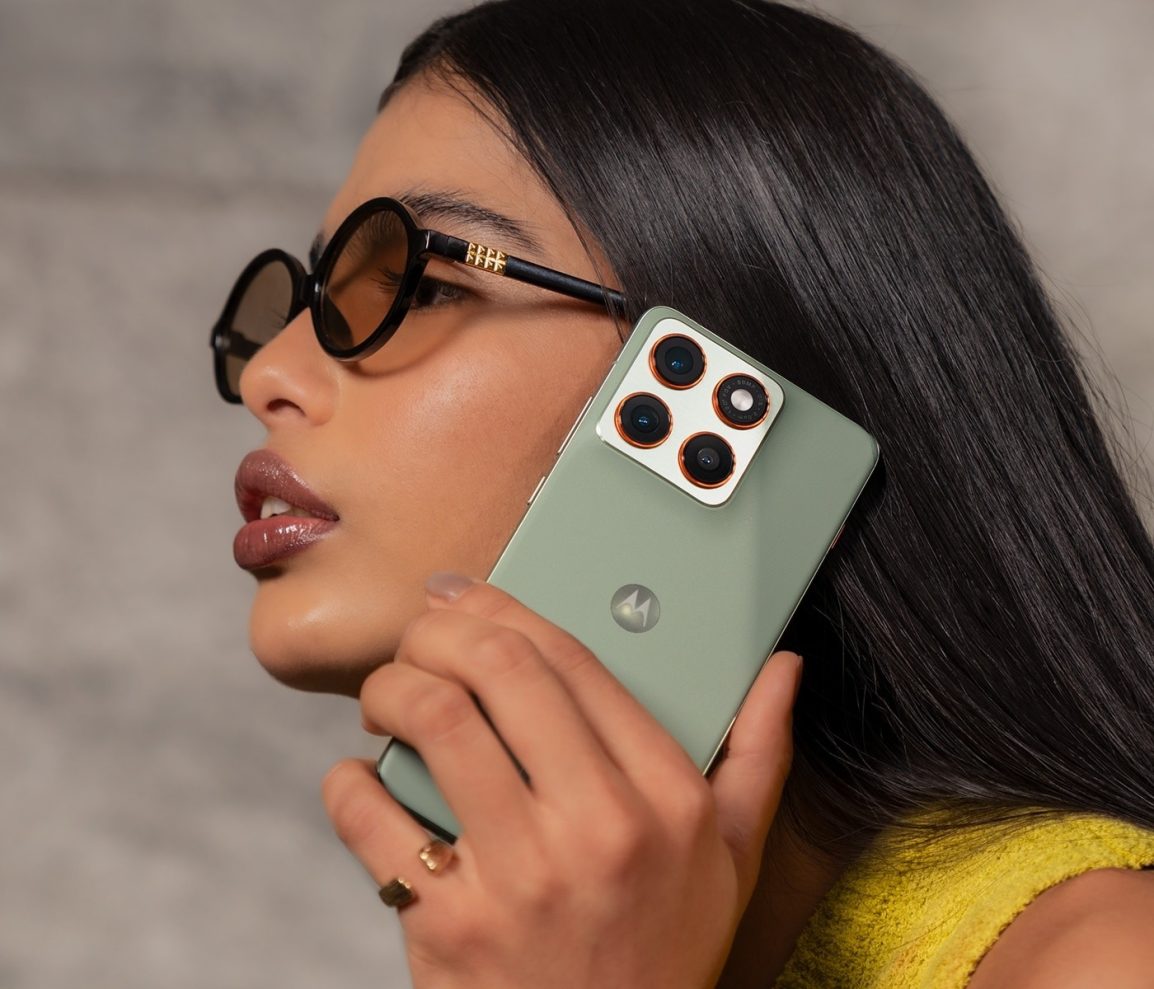

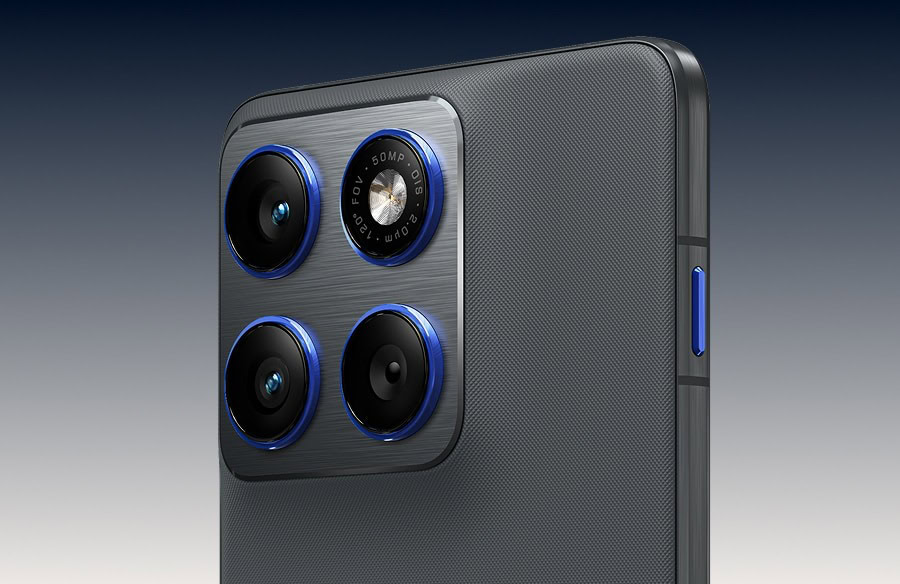


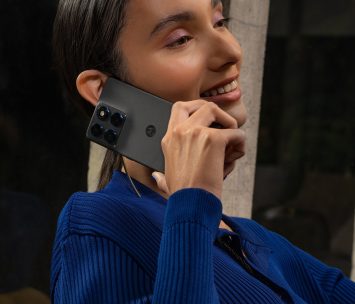

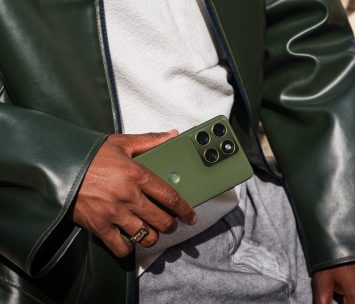
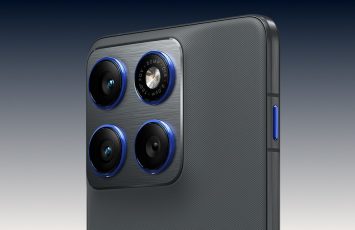


The post Ultra-Slim Motorola Edge 70's Images & Specs Listed Before Launch appeared first on Android Headlines.

Despite being in high demand, compact phones seem to continue to be a niche for device makers. Only a few brands out there cover this segment adequately, and the list is even shorter outside of China. Well, meet the Vivo X200 FE, a pseudo-flagship handset—in the same category as the OnePlus 13R, OnePlus 13s, or Samsung Galaxy S25 FE, among others—that wants to fill this space.
The X200 FE isn’t exactly a budget phone, but it’s not as expensive as other devices that top—or even exceed—the $1,000 price tag. Its price tag places it at a nice spot in the flagship segment. Plus, its compact form factor makes it stand out in an industry populated by “mini tablets.” Add in a massive battery, long life, and remarkable cameras with ZEISS optics and tuning, and overall, you have a pretty attractive—although not perfect—package. Below, we will review all the pros and cons of this handset.

Vivo X200 FE is a solid pseudo-flagship phone that combines pretty good cameras, a huge battery, high performance, and premium design in a compact package.
The manufacturer provided us with a review unit of the Vivo X200 FE. We used it as our primary device for approximately one month before writing this review, which was not sponsored.
| Display | 6.31-inch, 1,216 x 2,640 px, 120Hz LTPO |
| Processor | Mediatek Dimensity 9300+ |
| RAM | 12GB, 16GB |
| Storage | 256GB, 512GB |
| Battery | 6,500mAh |
| Cameras | 50MP main (f/1.9 aperture, 1/1.56″, OIS), 50MP telephoto (3x zoom, f/2.71 aperture, /1.95″), 8MP ultrawide (f/2.0 aperture, 120° FOV) |
| Colors | Luxe Grey (Black Luxe), Frost Blue (Blue Breeze), Amber Yellow (Yellow Glow), Pink Vibe |
The design of the Vivo X200 FE is one of its strengths. With a display measuring just 6.31 inches and a body weighing around 188 grams, this is one of the few premium phones you can truly use with one hand without feeling like you might drop it. This point alone could be a great plus for many. After a long time—years—using phones of at least 6.7 inches, the change felt refreshing. I really thought I would find the screen too small, but I got used to it quickly.
The phone’s frame is crafted from aerospace-grade aluminum. In terms of real-world use, it feels sturdy, durable, and premium. There have been no signs of scratches in the time I have used it. Regarding the overall design, it is simple, clean, and practical. The rear panel features a textured glass finish that does an excellent job of resisting fingerprints and smudges. However, it also makes the phone quite slippery, so you’ll need to be careful if you like to carry it “uncased.”
The overall build quality is solid, with no creases or flex. As you may expect on a high-end “camera-focused” phone, the camera bump is notably raised. That means you’ll notice a lot of wobbles if you try to use the phone’s screen while it is laid on a flat surface—again, if you prefer not to use a case.
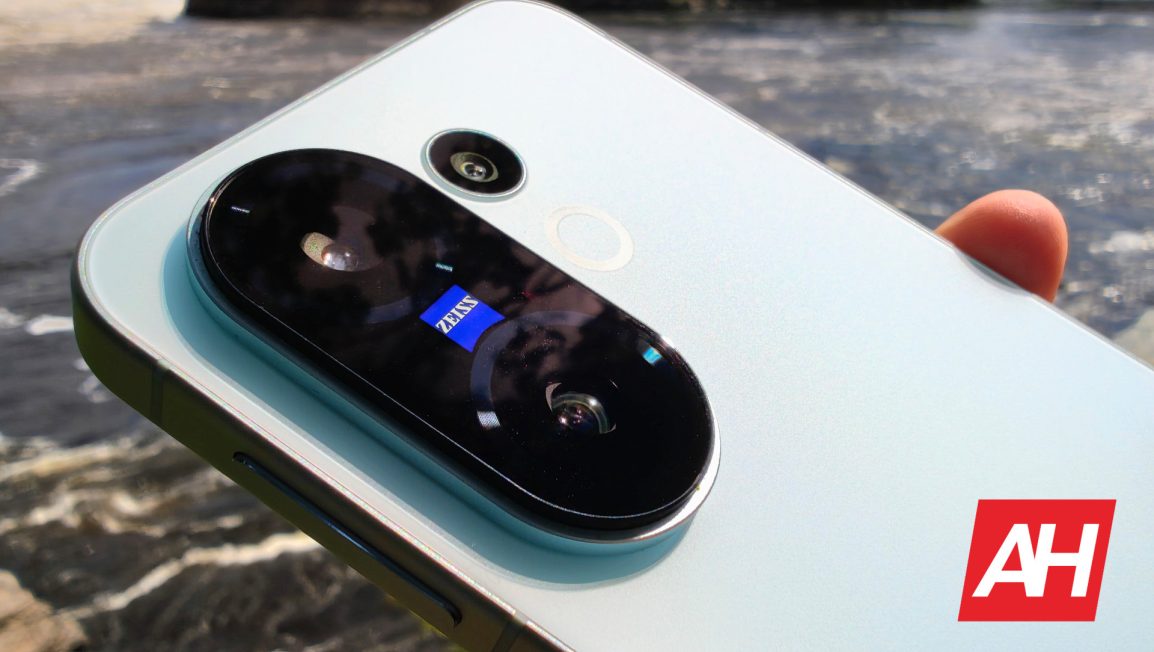

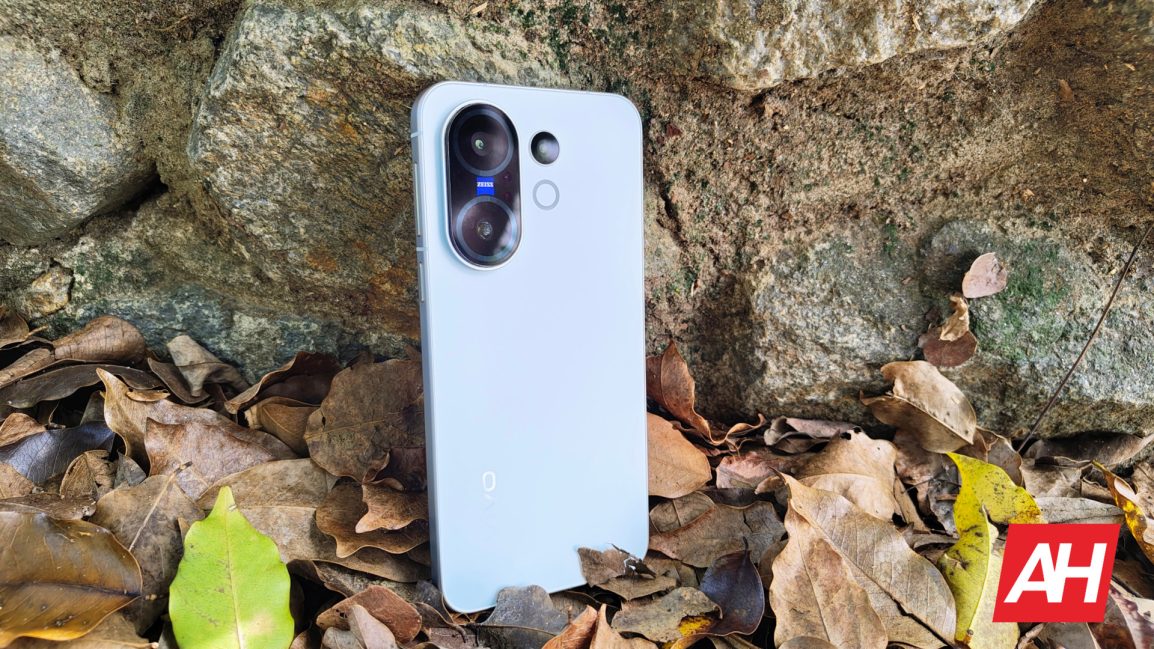
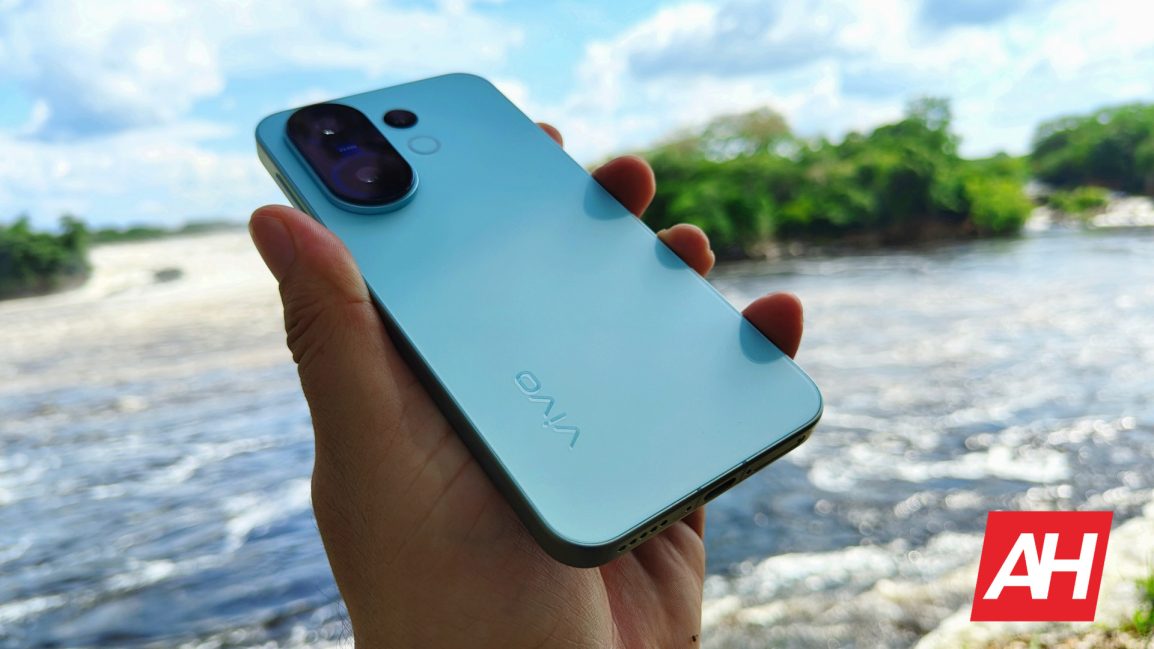






Beyond the aesthetics and in-hand feel, the X200 FE comes with an IP68 and IP69 rating. This means it’s fully protected against dust and can even handle high-pressure water jets. I submerged it in water for testing, and everything continued to work correctly. However, you will find that using the wet screen becomes complicated. This is a familiar situation for most phones out there, though.
The display has protection, but probably not the kind you’re used to. There’s a layer of Schott Xensation Core glass, a rarity in a segment dominated by Corning. Anyway, the phone comes with a pre-applied plastic protector that has been pretty resilient so far.
The phone is available in up to four colors: Amber Yellow, Frost Blue (our unit), Luxe Black, and Pink Vibe. It’s noteworthy that the availability of certain colors may be limited to specific markets. That said, Vivo includes a color-matching case. The case seems quite durable and feels nice in the hand. However, the material’s finish also makes it a bit slippery—though less so than the bare phone itself.
As for the ports and buttons, you’ll find the volume and power buttons on the right side, a USB-C port at the bottom, and a stereo speaker setup. Personally, I prefer the volume and power buttons on different sides of the frame, as the placement makes it easier to take screenshots with one hand. Anyway, I got used to having the buttons on one side after a few days.
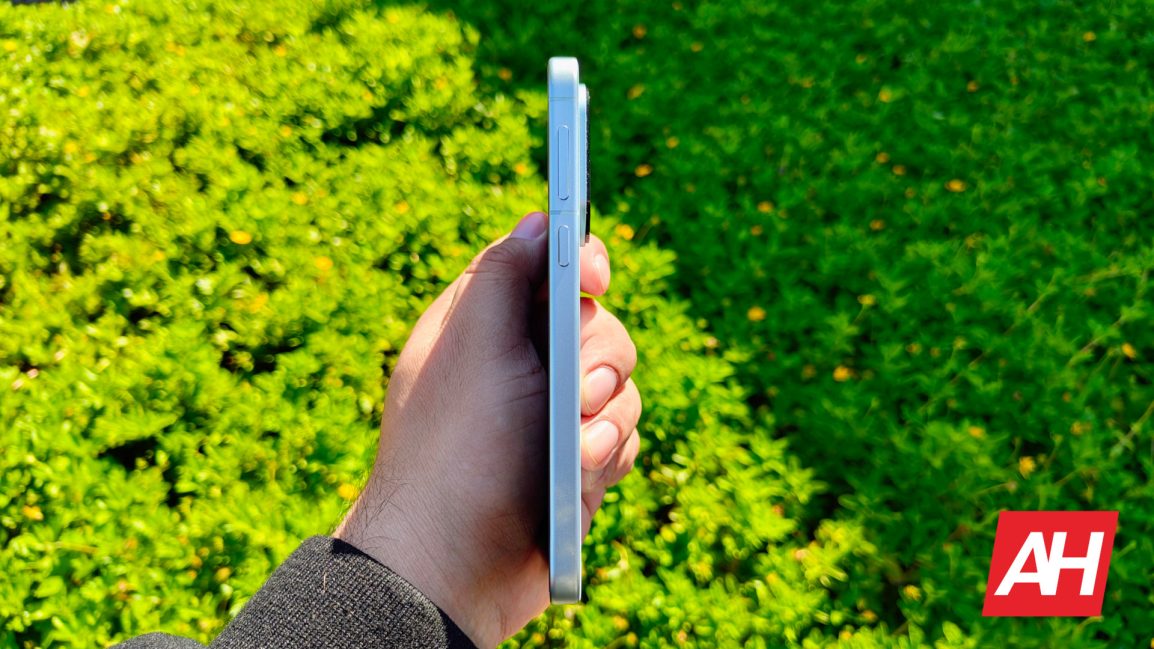
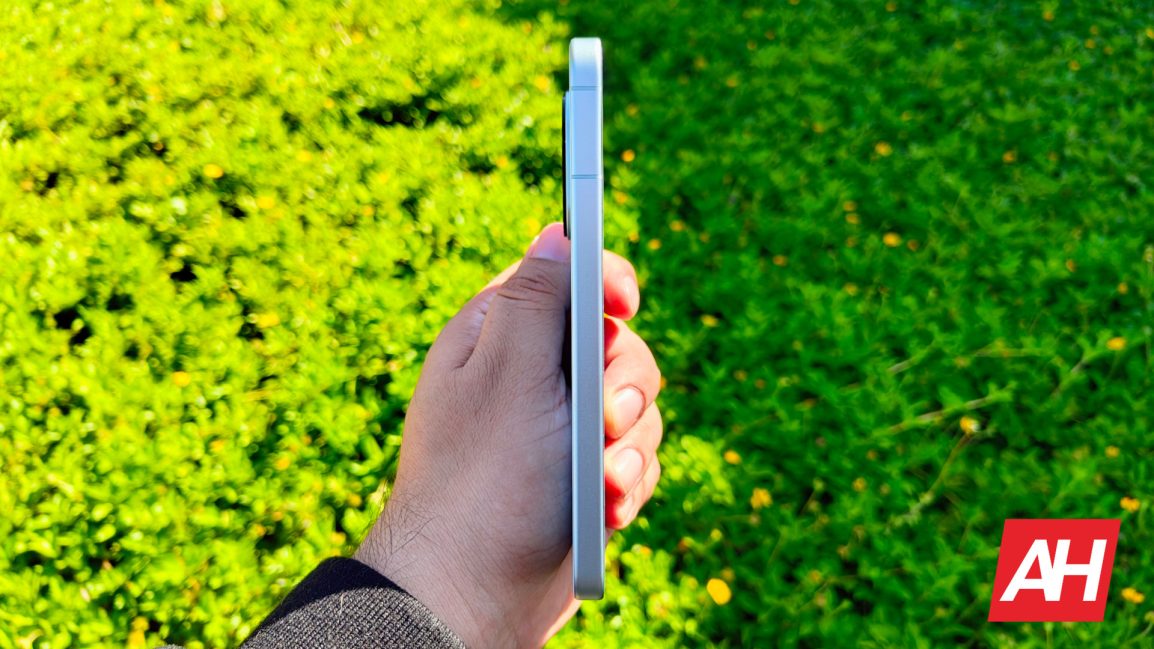
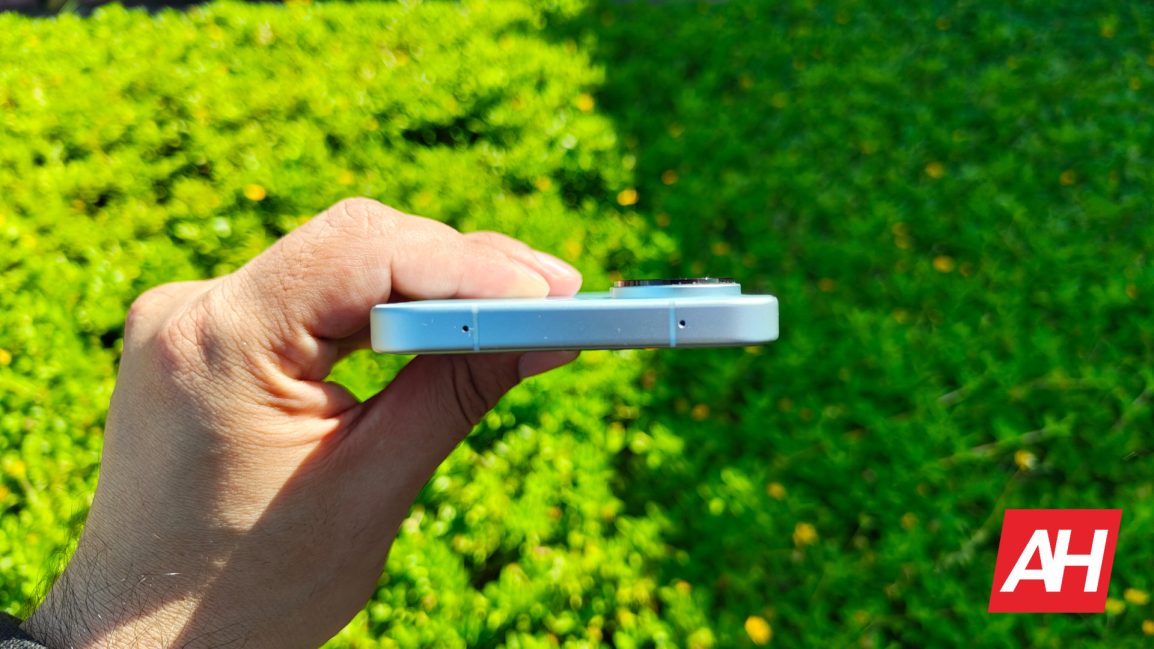
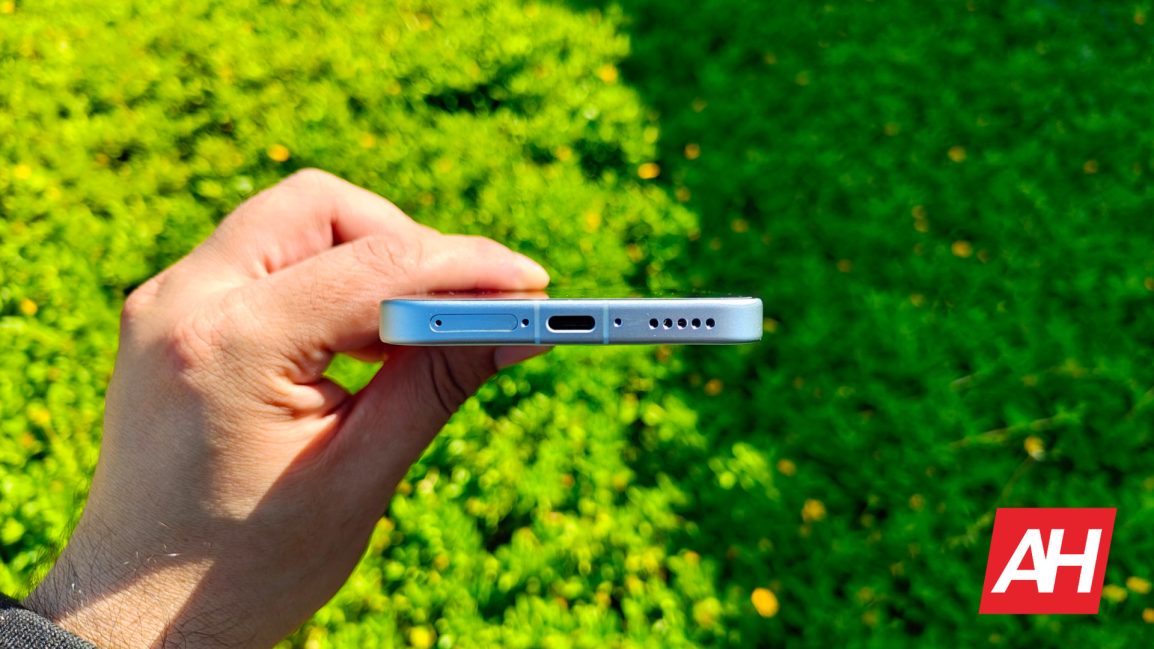
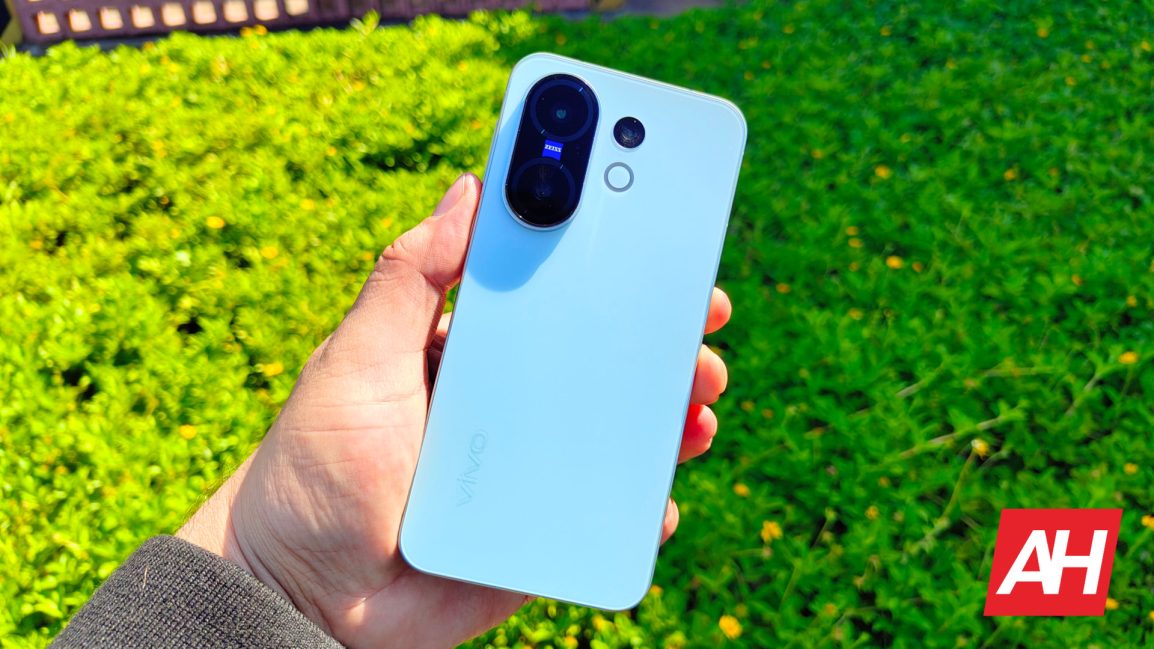





The USB-C 2.0 standard is a bit of a curious choice at this price point, as it limits data transfer speeds. While this isn’t a dealbreaker for most users, it is something you should know. Surely those who tend to constantly transfer large files between their phone and PC via USB would have preferred a more current, faster standard.
In short, the Vivo X200 FE is designed as a legitimate compact premium phone. It’s good-looking, durable, and reliable. You will not find compromises in this section.
The screen is a key aspect of our smartphones—especially premium ones. Fortunately, the Vivo X200 FE also excels in this section. The phone sports a 6.31-inch 8T LTPO AMOLED panel with a 2640 x 1216p resolution and a smooth 120Hz refresh rate. How does this translate into the real world? A sharp, smooth as butter user experience.
Whether you’re watching a series, a movie, or even a sporting event, the experience with the Vivo X200 FE’s display is truly pleasant. HDR-compatible content takes full advantage of the device’s display, boasting its ability to represent everything from deep blacks to bright highlights without the “black smearing” effect of cheap displays. It’s extremely responsive as well, which is especially notable when playing titles that require rapid reaction times.
The LTPO tech allows the refresh rate to dynamically adjust from 1Hz to 120Hz based on the content. In my experience, this happens perfectly smoothly, without lags or hangs here and there.
Regarding brightness, Vivo claims a peak brightness of 5,000 nits. That said, you won’t get these brightness levels under normal conditions but rather under certain specific situations (such as watching HDR-supported content) and in certain sections of the display. Anyway, I have been able to use this phone without any problem even in bright sunlight. Special mention to the operation of automatic brightness. Even though it may seem like a basic feature, not all phones handle it well. However, the Vivo X200 FE is capable of offering you the ideal levels for practice in every situation. This isn’t a device where you have to constantly adjust the brightness bar, which is just great.
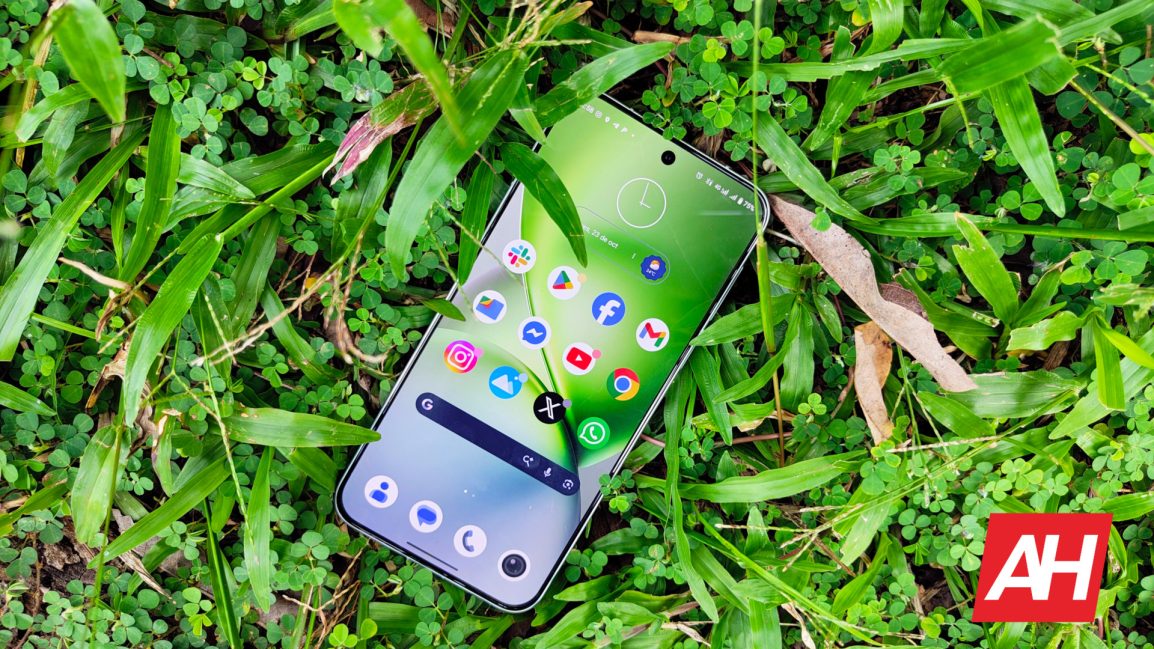


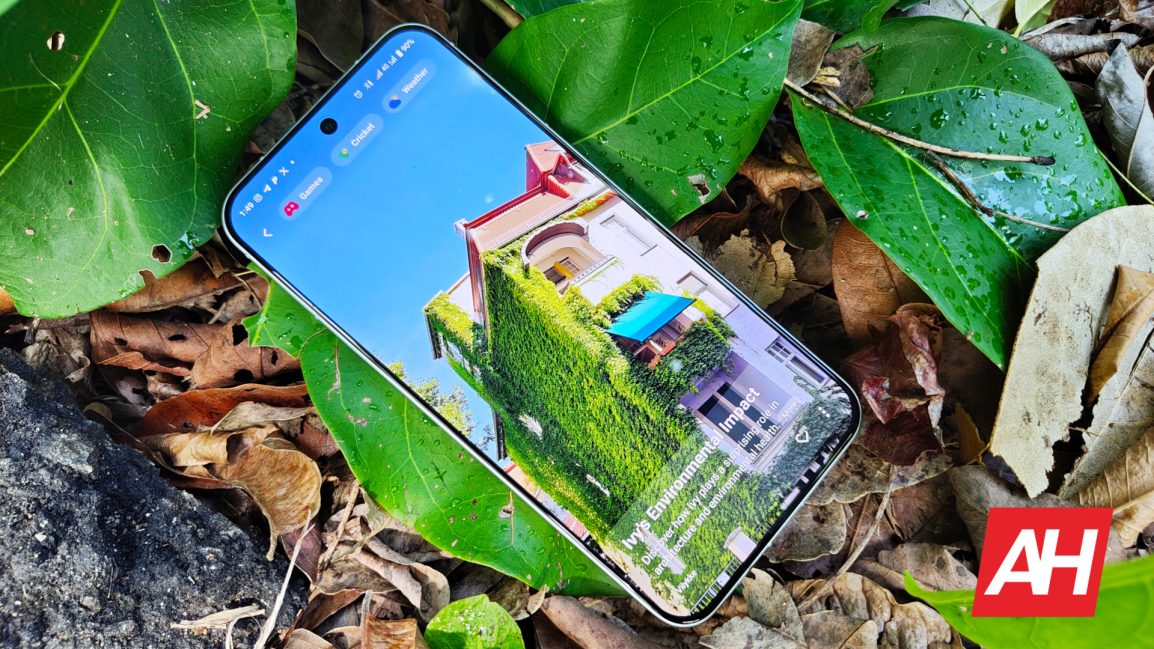






Vivo has also integrated a 2,160Hz PWM dimming that will help your eyes not feel fatigued even during long reading sessions or late-night scrolling. My visual experience with this phone has been quite positive under any lighting conditions.
The screen has a responsive optical fingerprint sensor embedded, which is fast and reliable. I can’t recall a single instance where the fingerprint reader failed.
Overall, the Vivo X200 FE delivers a great viewing experience. It undoubtedly feels like one of the best phone displays you’ll find in this segment.
Under the hood, the Vivo X200 FE is powered by the MediaTek Dimensity 9300+, a flagship-grade processor from the previous generation. This chip is paired with up to 16GB of LPDDR5X RAM—12GB in our unit—and 512GB of UFS 3.1 storage. While the Dimensity 9300+ is still a powerhouse, the inclusion of UFS 3.1 storage is a bit of a curious choice at this price point, as many rivals have moved to the faster UFS 4.0 standard. This, along with the slower USB 2.0 port, is the only real hardware compromise.
In day-to-day use, the phone feels incredibly fast, fluid, and responsive. Apps open instantly, multitasking is seamless, and there is no hint of lag or stuttering, even with a demanding workload. The performance gap between the Dimensity 9300+ and newer processors is minimal and something most users will never notice.
For gamers, the X200 FE performs really well. The vapor chamber cooling system (3800 mm²) also has a lot to offer. Although it’s not a gaming phone, it has enough raw power to satisfy the vast majority, even considering its compact screen. However, keep in mind that this is a compact handset. Therefore, there’s less inner space available for heat dissipation than in larger devices.
In Call of Duty: Mobile, both “Graphics Quality” and “Frame Rate” are set to “Max” by default, with features like anti-aliasing and real-time shadows turned on. Changing the frame rate to “Ultra” sets the graphics quality to “Medium.” However, every round will be extremely smooth and lag-free with these settings. In Genshin Impact, the game automatically sets the graphics quality to “High,” with most graphics options set to “High” (except for “Shadow Quality,” which is set to “Medium”) and 30fps. You can play it at 45fps by setting “render resolution” to “medium.”

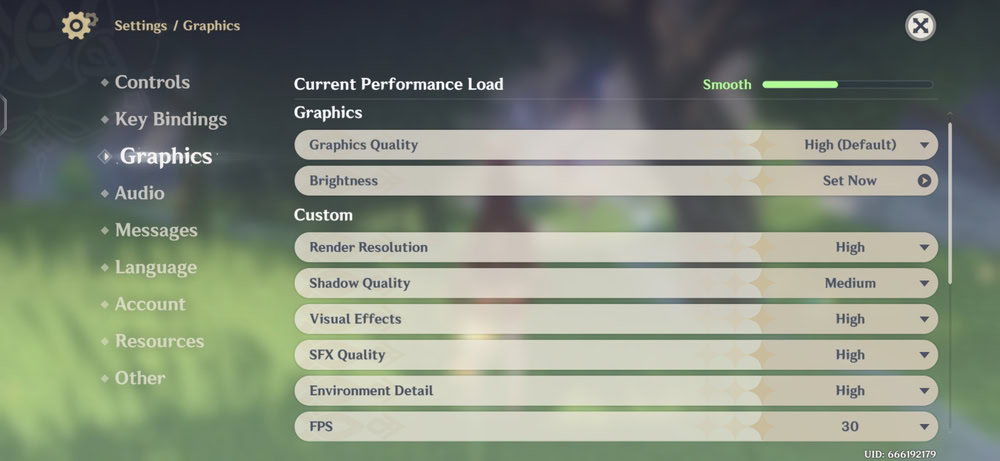


Vivo has put a lot of effort into the gaming aspect of the device. Funtouch offers an “Ultra Gaming” mode that goes far beyond what Android natively includes. It does the typical thing, which is to optimize available hardware resources to get the best possible performance while you play. However, you’ll also find a lot of additional options that aren’t just bloatware but quite useful. These options will be available from a sidebar that you can display by sliding from the left side of the game UI.
These “gaming boosters” are divided into two main sections: “Performance Panel” and “Game Tools.” As the name suggests, the former allows you to intuitively tweak the game’s performance and display the touch sampling rate using a pair of sliders. Game Tools, on the other hand, includes a plethora of options, including mapping actions to motion gestures and screen recording, and enabling 4D vibration feedback for improved haptics. You can even activate “Charge Bypass” to play connected to a power brick without draining your battery.
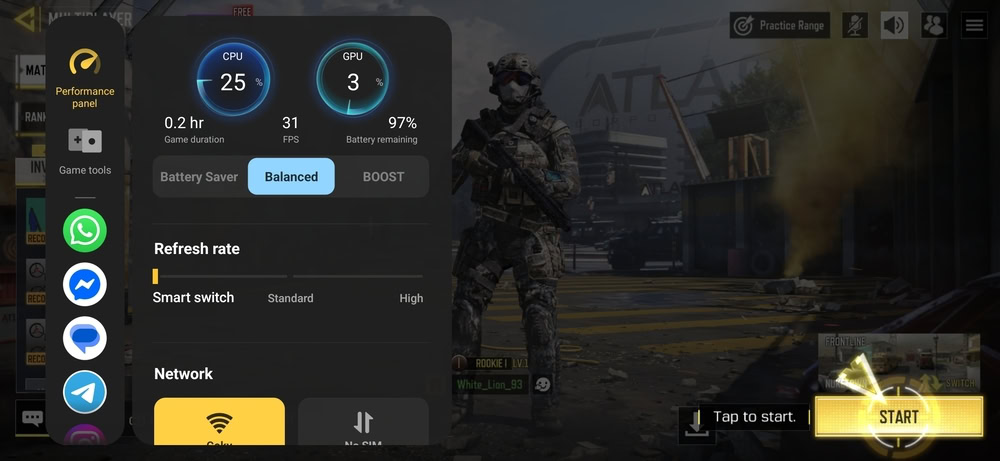
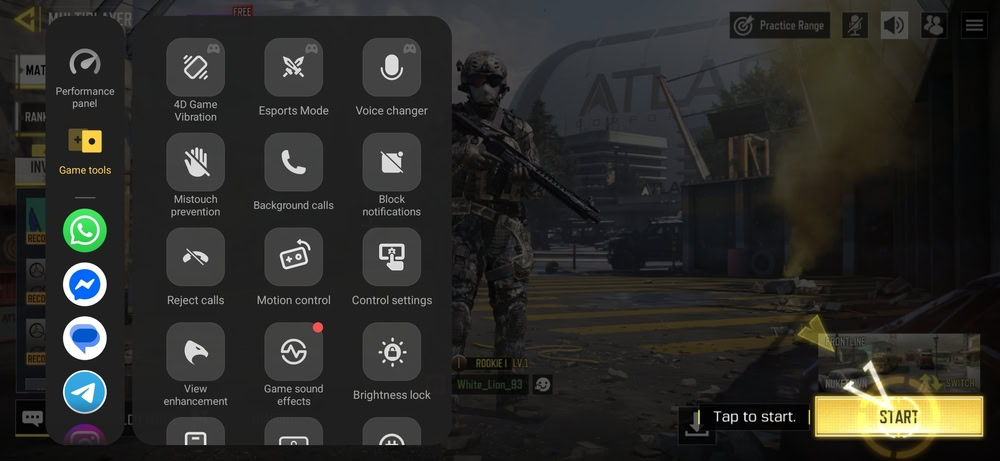


In synthetic benchmarks, the X200 FE delivered excellent scores. Due to its compact form factor, it’s not the smartphone that handles heat the best. However, we also can’t say that the device suffers from overheating under high-demand conditions. It’s just a little warmer than other handsets out there.
Geekbench:
Starting with Geekbench 6, the device achieved scores of 2,189 and 7,029 on the single-core and multi-core tests, respectively.
| Device | Single-Core | Multi-Core | GPU |
| Vivo X200 FE | 2,189 | 7,029 | 14,753 |
| POCO F7 Ultra | 2,889 | 8,326 | 17,293 |
| Google Pixel 9 Pro | 1,961 | 4,715 | 6,519 |
3D Mark’s Wildlife Extreme Stress Test:
We also ran the 3D Mark’s Wildlife Extreme Stress Test on the phone. This is one of the most demanding graphics benchmarks out there. It pushes your phone’s hardware to the limit, to the point where some models are even unable to complete it due to the temperature they reach. So, it’s ideal not only for testing your phone’s GPU but also its thermal control capabilities.
The benchmark consists of running 20 laps of the same graphically demanding test. At the end, the Vivo X200 FE managed to complete the test with a 58.4% stability score. This is perhaps where the smaller form factor becomes noticeable. That said, it will only impact your gaming experience in the most demanding titles and at the highest settings after a certain period of time.
| Device | Best Loop | Lowest Loop | Stability |
| Vivo X200 FE | 4,511 | 2,633 | 58.4% |
| POCO F7 Ultra | 5,981 | 4,141 | 69% |
| Google Pixel 9 Pro | 2,573 | 2,051 | 79,7% |
Antutu:
We also put the handset to the test in the very popular Antutu benchmark.
| Device | Score |
|---|---|
| Vivo X200 FE | 1,958,355 |
| POCO F7 Ultra | 2,533,644 |
| Google Pixel 9 Pro | 1,148,512 |
Regarding thermals during benchmarks, the results were quite acceptable for a powerful compact phone. Below you can see the maximum temperature the device reached during each test.
| Benchmark | Temperature |
|---|---|
| Geekbench | 45,3 °C/113.54 °F |
| 3D Mark Extreme Stress Test | 48 °C/118.4 °F |
| Antutu | 41,6 °C/106,9 °F |
We also tested the Vivo X200 FE’s thermals during 4K/60fps video recording, the most demanding recording setting available.
| Device | 5 minutes | 10 minutes |
| Vivo X200 FE | 34.83 °C/94,7 °F | 37.36 °C/99,26 °F |
| POCO F7 Ultra | 34.66 °C/ 94,4 °F | 35.16 °C/95,3 °F |
| Google Pixel 9 Pro | 35 °C/95 °F | 37.27 °C/99,1 °F |
While the storage and USB port choices are a bit underwhelming, the core performance delivered by the Dimensity 9300+, the LPDDR5X RAM, and the 12-core Immortalis-G720 GPU is really good.
One of the most surprising and impressive aspects of the Vivo X200 FE is its battery. Despite its slim and compact form factor, the phone is powered by a massive 6,500mAh silicon-anode cell. This is a capacity you would typically find in a much larger, more expensive device, and it is one of the biggest batteries available in a smartphone today.
This massive battery delivers exceptional endurance. In our tests, the phone comfortably lasted a full day and a half with moderate to heavy usage, and even the most demanding users should be able to get through a full day with charge to spare. More specifically, we are talking about easily achieving 10+ hours of on-screen time if you use Wi-Fi most of the day or around 8:30+ hours with heavy use of mobile data.
Charging the phone is equally impressive, thanks to 90W fast charging support. With a compatible charger, you can fully charge the phone from 20 to 100% in just around 45 minutes, according to the company. In our tests, the phone charged from 1% to 100% in just over 55 minutes. That said, the device doesn’t include a charger in the box in Europe, so that’s something you should check. However, the handset supports both USB-PD and PPS charging protocols, so you can exploit its charging capabilities with non-proprietary adapters. I also tested it with a third-party 65W USB-PD charging brick, and it worked perfectly.
Below you can find the results of the Vivo X200 FE in our battery endurance test compared to other devices.
| Device | Battery life | Charging |
| Vivo X200 FE | 23:57:17 | 0:55:17 |
| POCO F7 Ultra | 21:30:12 | 0:28:20 |
| Google Pixel 9 Pro | 21:54:40 | 1:18:30 |
One of the advantages of these huge batteries is that you can limit their charge to extend their lifespan. Since you don’t need 100% capacity for your daily use, you can charge it up to 90%, for example. In fact, Funtouch 15 offers an option that allows you to do just that on this device.
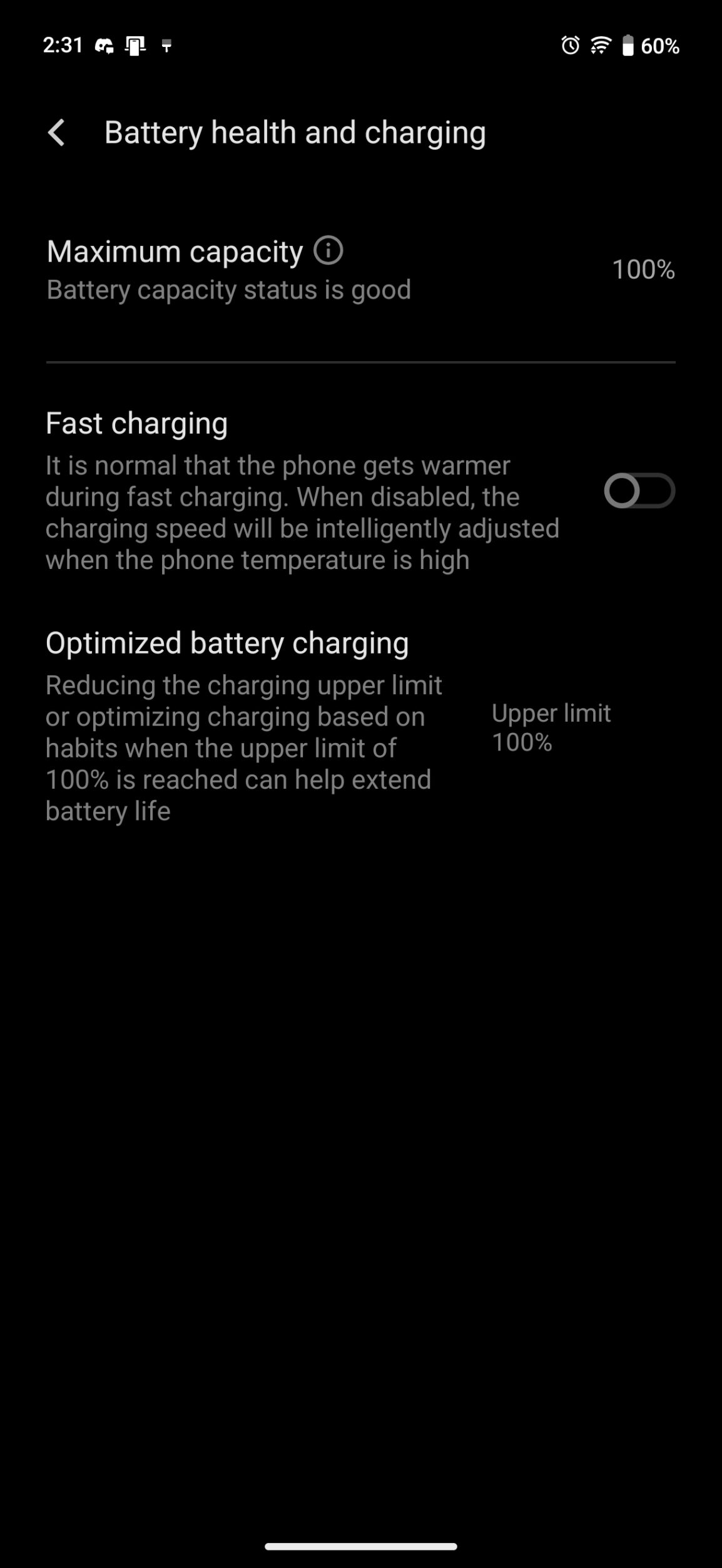



The Vivo X200 FE comes out of the box running Funtouch 15, which is based on Android 15. Vivo promises four years of Android updates, so it should receive even Android 19 in the future. This particular model is set to get monthly security updates as well. During our tests, the phone received four updates to improve camera quality and add a security patch. The device is set to get Android 16 in November along with the other, more expensive Vivo X200 models, by the way.
The software experience is a mixed bag of clean design and useful features. At first glance, the interface looks quite streamlined and practical.

However, looking at the colorful “Material” design language of the Pixel phones, the countless customization possibilities of One UI, or even riskier bets like Apple’s Liquid Glass, Vivo’s UI may be starting to feel a little “outdated.” On the good side, the OS is as stable as it can be, offering a well-optimized, smooth/snappy experience. Gone are those times when custom skins from Chinese Android brands negatively impacted performance or introduced more problems than solutions.

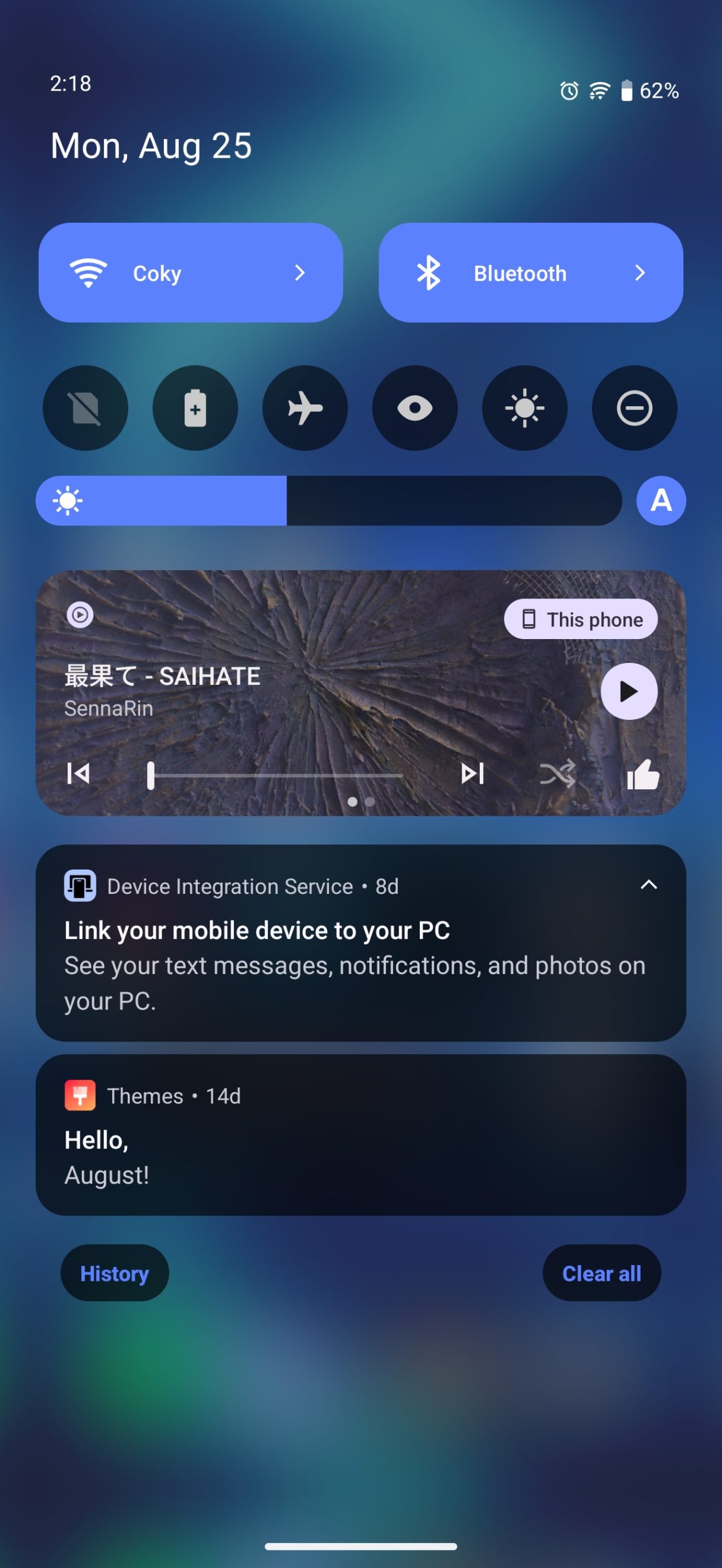
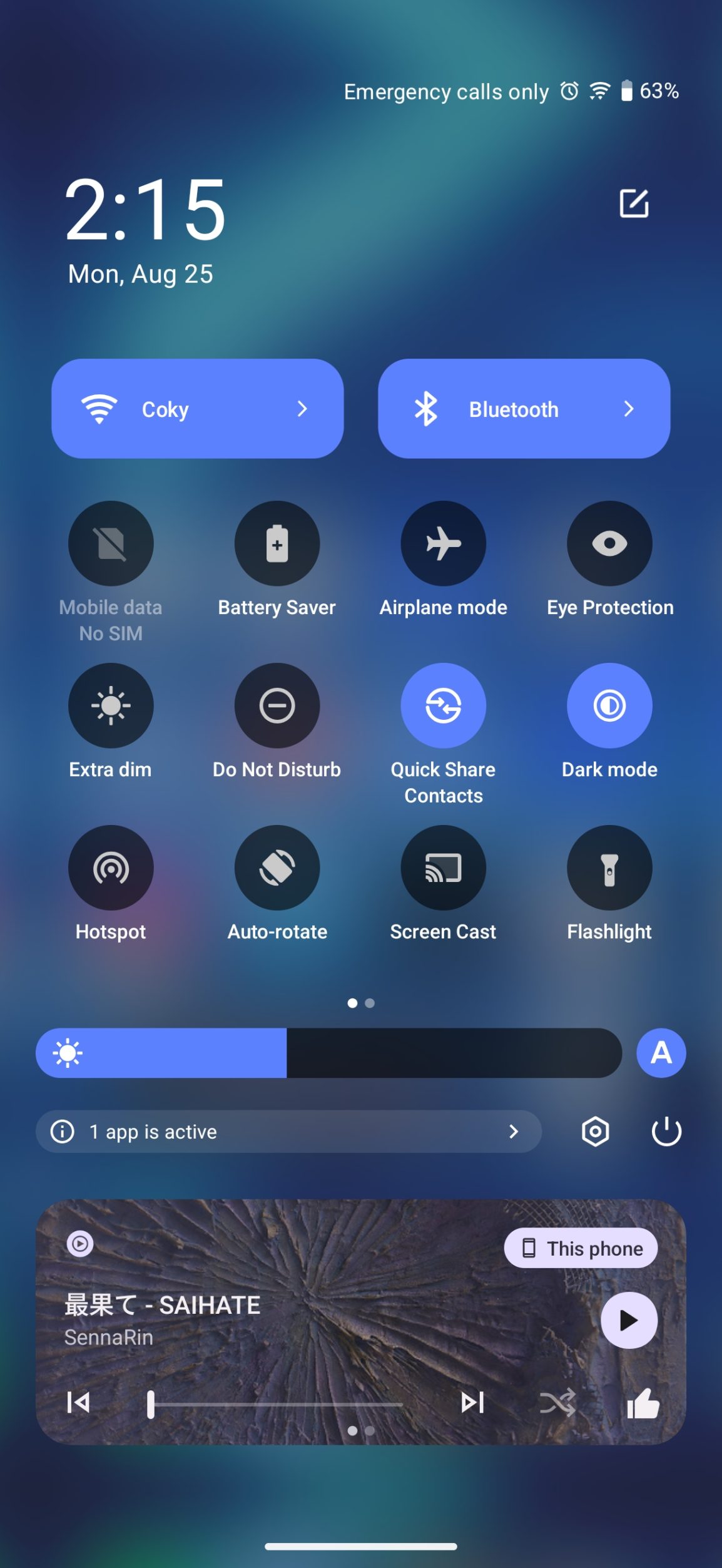


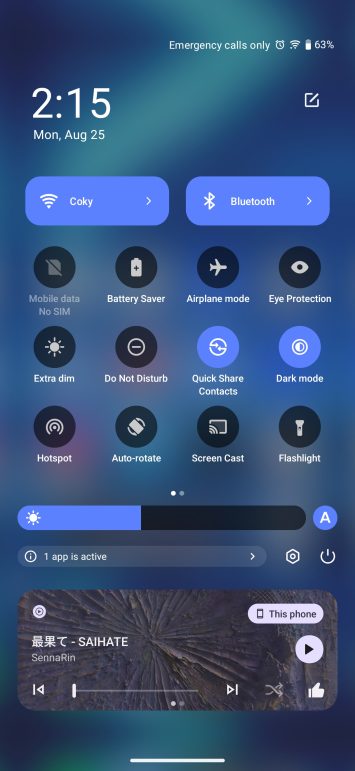
The software also offers some AI features that are actually useful. There’s an AI writing assistant integrated into the Notes app, a live call translation feature, and an AI Transcript Assist that can summarize spoken conversations. Vivo also includes its DocMaster tool, which simplifies file conversion and editing. You’ll also find Google’s Gemini integration, bringing features like Circle to Search and on-screen content translation.
Vivo integrates its own Gallery app, which, as you might imagine, also offers AI-powered features. There’s an “AI Photo Enhance” option that restores—or boosts—the quality of your photos. However, I must say that, at least currently, the result is a mixed bag. Often, it helps improve the photo, but in other cases, the AI processing leaves notably artificial results—especially in portraits. On the other hand, the AI-powered eraser works quite well and even lets you remove unwanted reflections from glass in pictures. Vivo’s Gallery app also offers an option to quickly generate PDF files with the images you want.






While the OS is pretty good, there are a few things here and there that could be better. Vivo includes its widget section within the app drawer, which can be a bit disruptive for users expecting a clean app list, for instance. Customization fans will also find their options somewhat limited. For starters, the launcher doesn’t support third-party icon packs, which is a bummer.

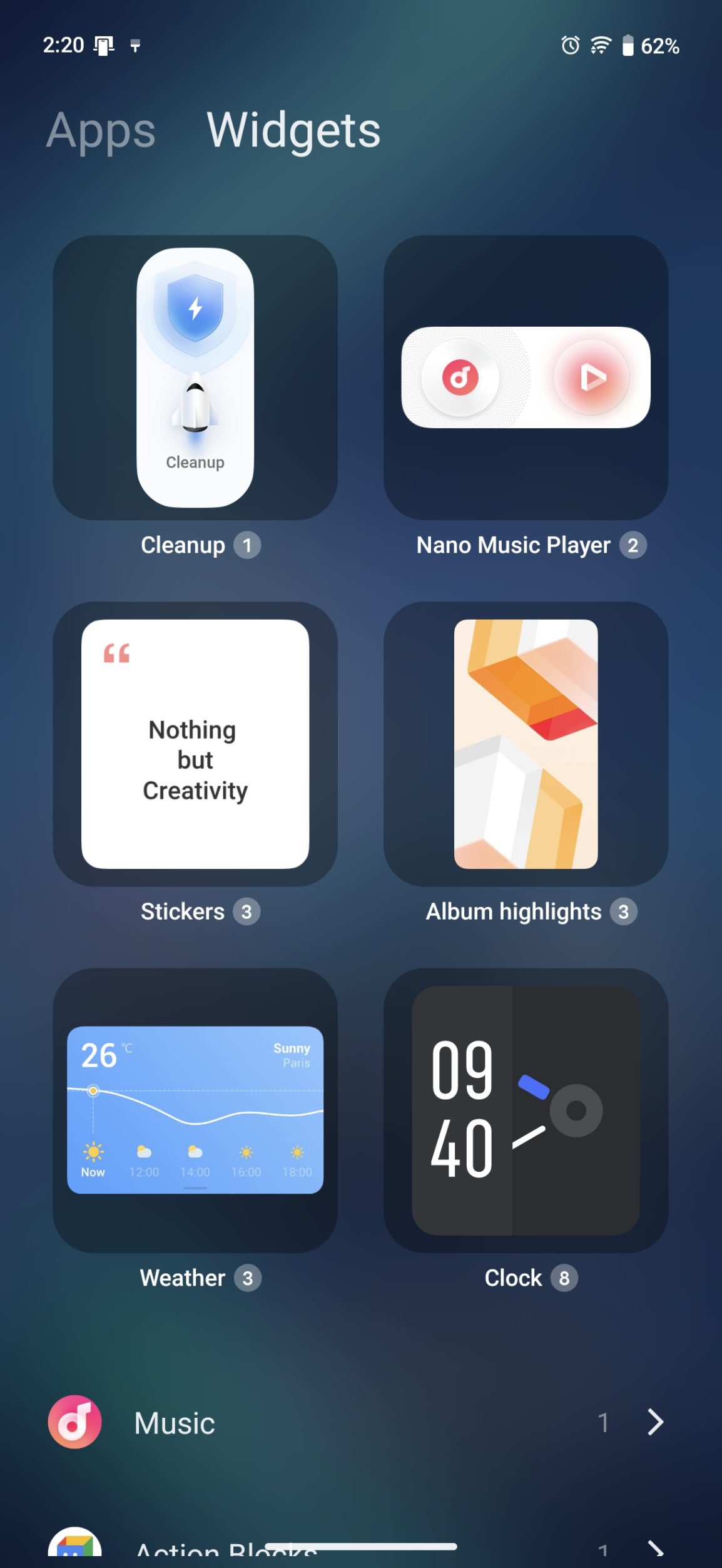
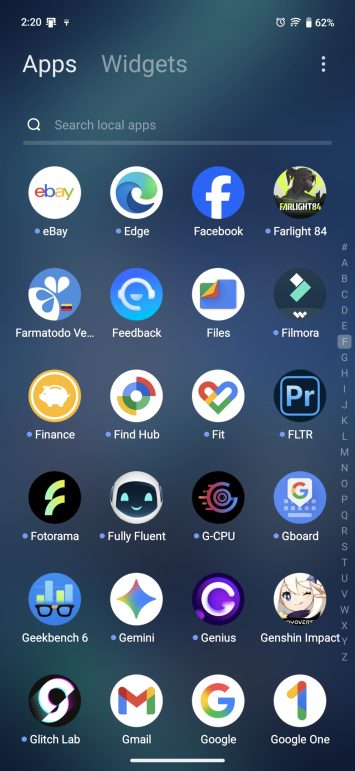

There’s also no option to remove the bottom app dock, leaving a large, empty space between the dock icons and the rest of the home screen. While you can solve these problems by downloading a launcher, it would be great to have these options natively. Hopefully, Vivo can address these couple of things in the upcoming updates.
Either way, the OS still supports Android’s theming feature. So, you can apply a uniform color tone to most of your app icons and key UI items. You can also change the icon shape (square, circular, or “squircle”). Sadly, there are apps whose icons don’t support the theme feature, which is a bummer if those apps include some of your favorites. There is also an option to hide the name labels of the app icons on your home screen for an even more minimalist look.
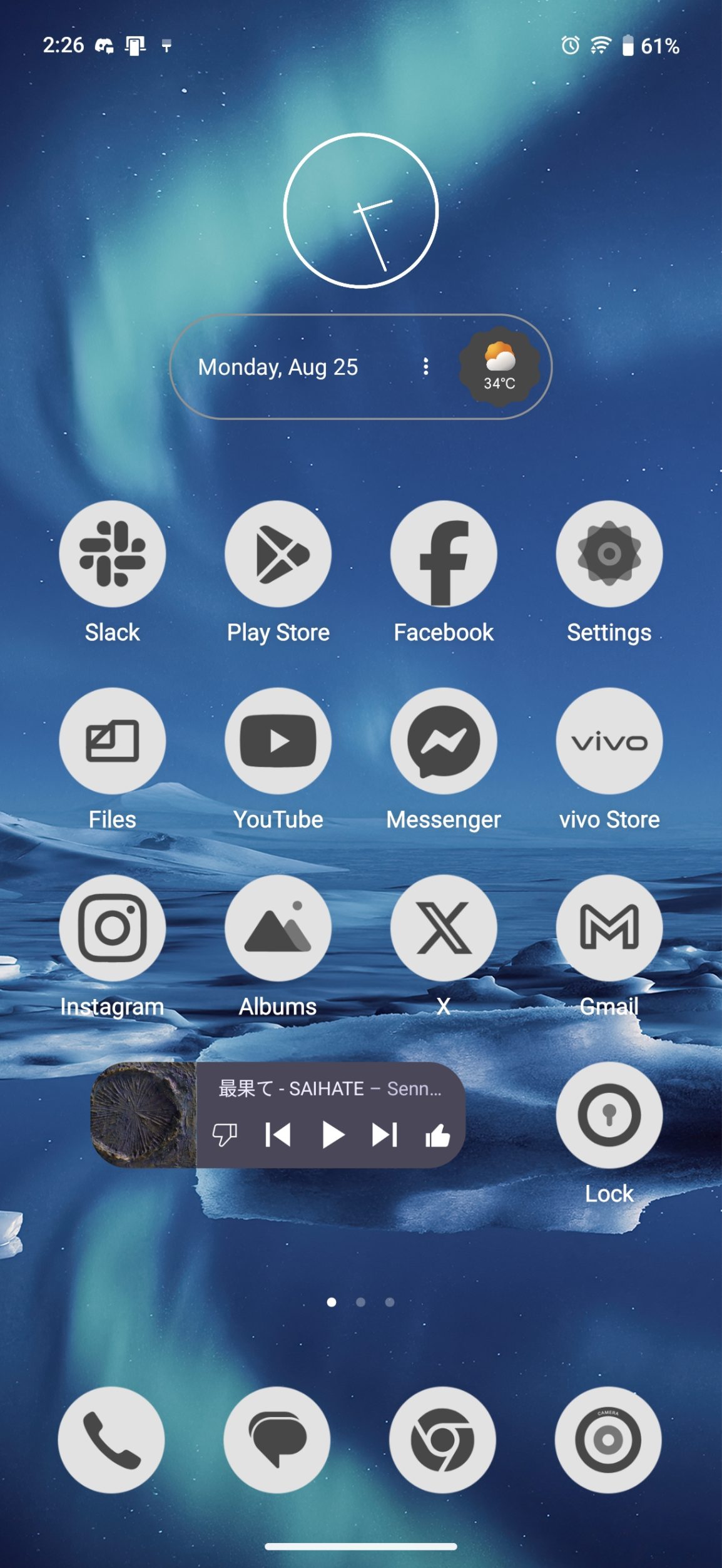
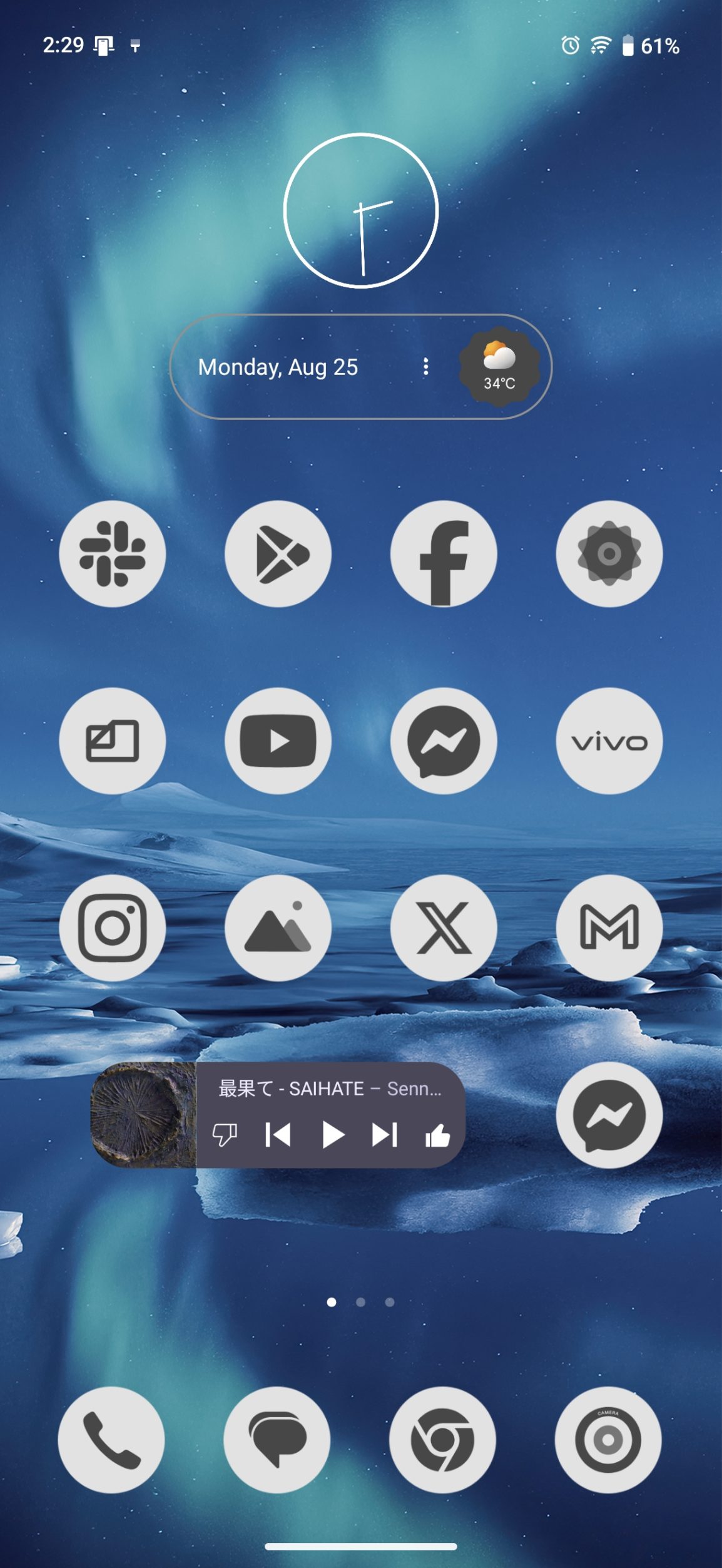
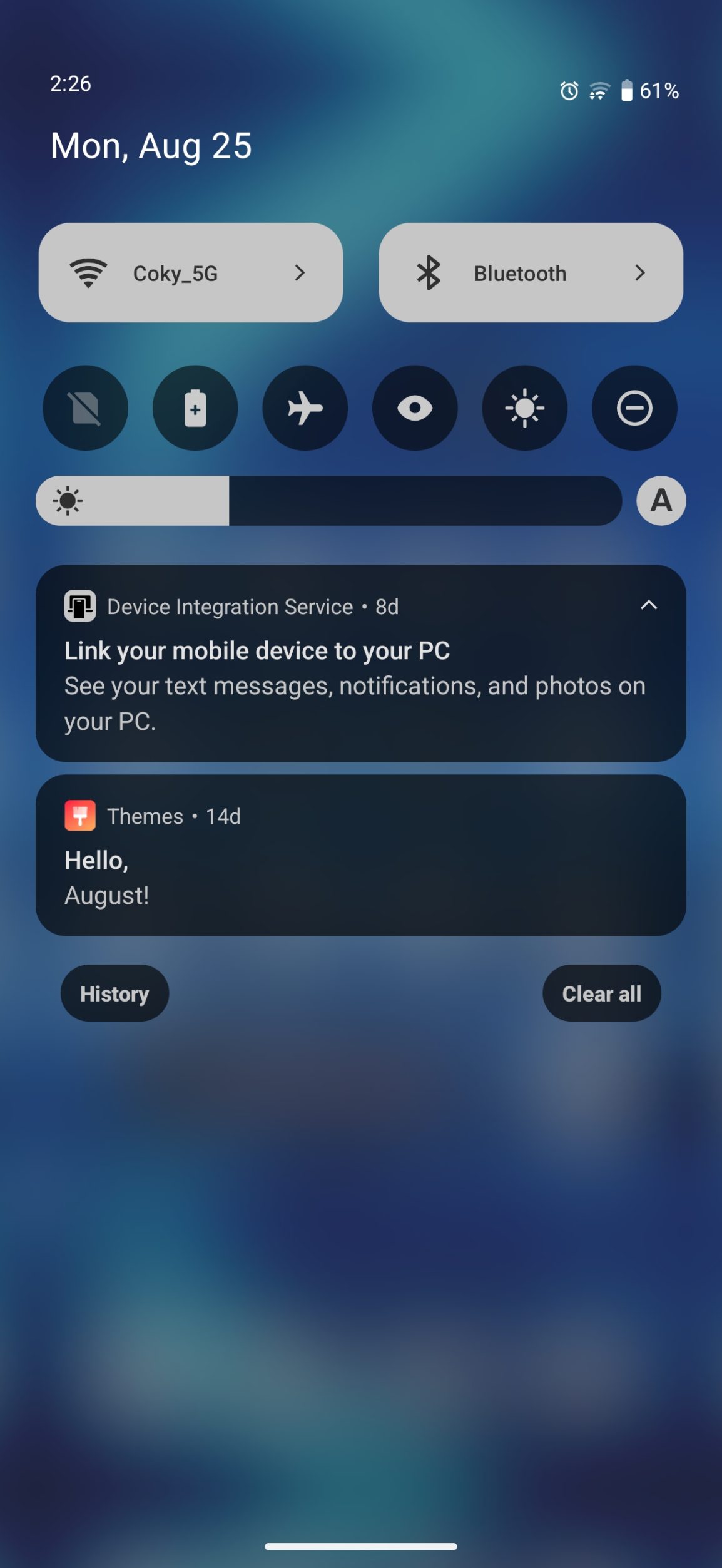

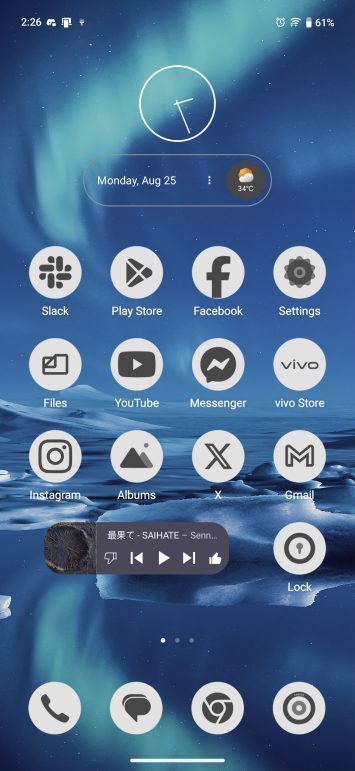
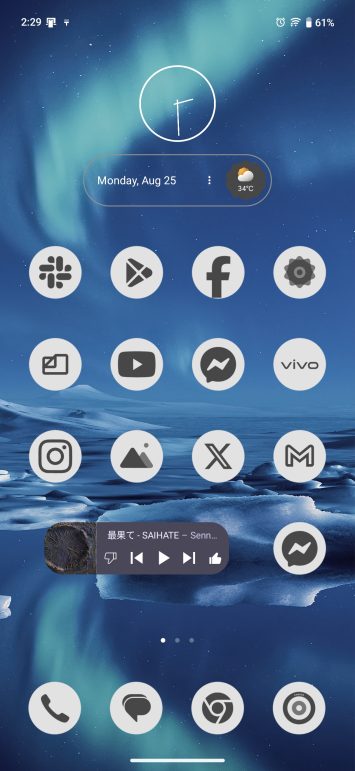
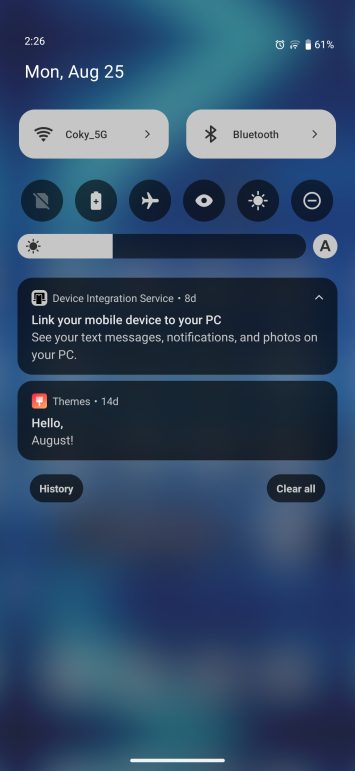

If privacy options are important to you, Funtouch 15 will likely satisfy you. You can encrypt access to your apps using a PIN or biometrics. If you prefer, there’s also an option to directly hide the app from the drawer and home screen. You can also check when apps have accessed your location, camera, and microphone in chronological order.
The Vivo X200 FE is a camera-focused phone, which its rear bump makes clear. You won’t find huge 1-inch sensors here, but the overall package makes for a remarkable content creation experience. There are three sensors, the main one being a 50MP Sony IMX921 with an f/1.88 aperture and a 1/1.56″ size. It’s not the most powerful sensor available out there, but it’s capable of delivering really good results full of detail.

However, you might be even more interested in the 50MP periscope Sony IMX882 sensor with support for 3x optical zoom. This is almost the same periscope lens as the vanilla Vivo X200, with the difference that the company opted for an M-style prism on the FE model. What’s the difference? Well, this format allows for a slimmer phone design, but it also means losing the lens’s macro capabilities. That’s right, you won’t find a dedicated “Macro” mode on this phone. So, keep that in mind if it’s important to you.
Both lenses boast OIS and ZEISS optics, which, in theory, should improve light transmission and reduce the lens flare effect. That said, both the main and telephoto sensors offer excellent performance. Special mention to the almost-instant shutter speed, something that even some premium flagship phones struggle to achieve.
Main camera samples:
Starting with the main lens, the results are generally good in all lighting conditions. Photos are detailed and vivid, without the dreaded “washed-out textures” effect that other brands suffer from due to overly aggressive image processing. HDR management is another strong point of the Vivo X200 FE, showing a good balance of lights and shadows.





















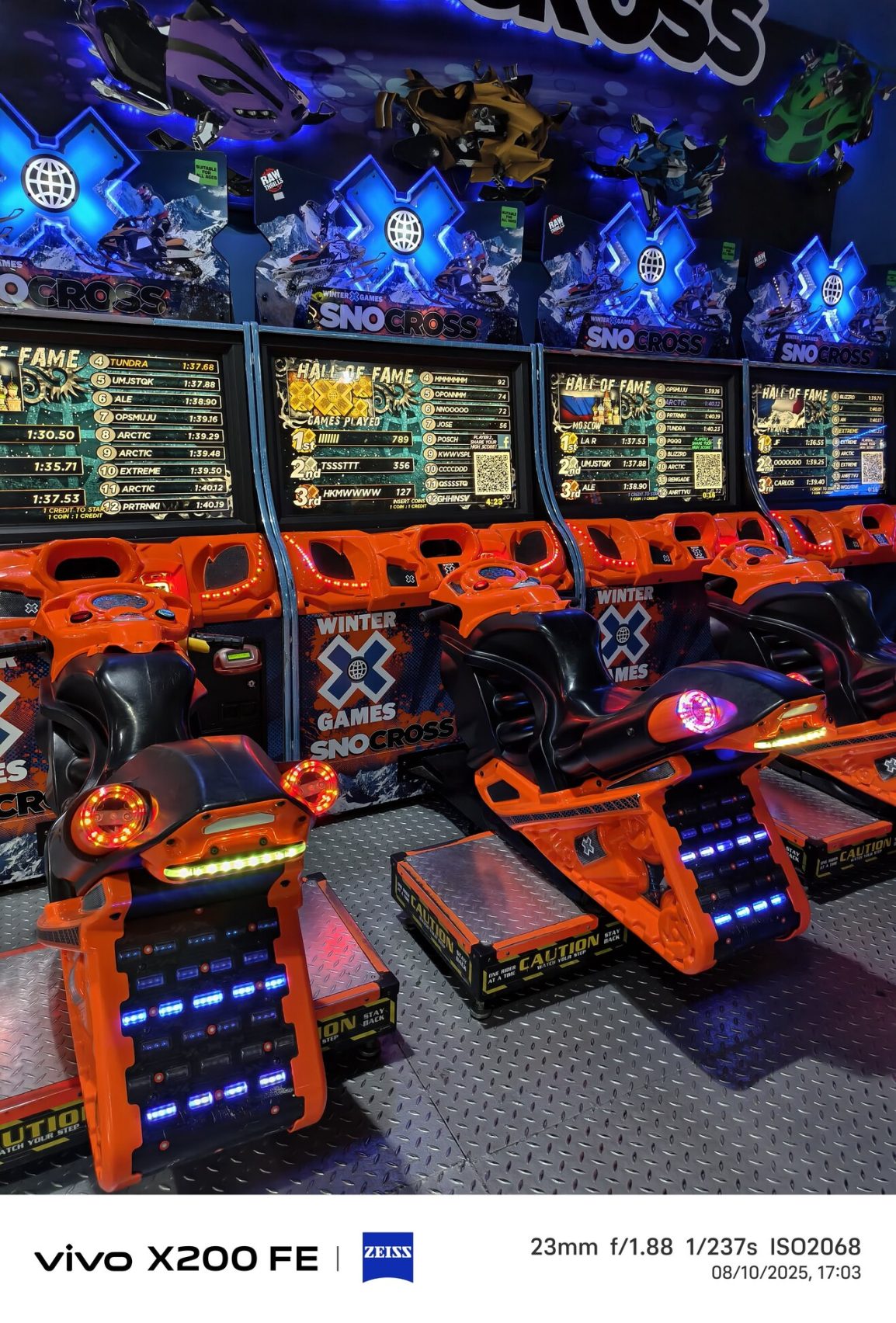











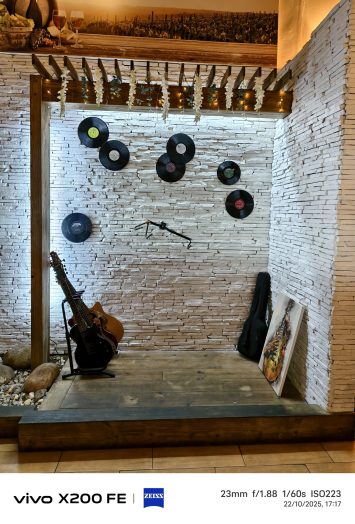




















When night falls, the main sensor continues to perform quite competently. However, at this point it becomes more noticeable that we’re not dealing with a proper flagship. You’ll primarily notice significantly worse light control, although the level of detail is still acceptable—there is no “oil paint” effect typical of mid-rangers. Just be careful in scenes with many artificial light sources.


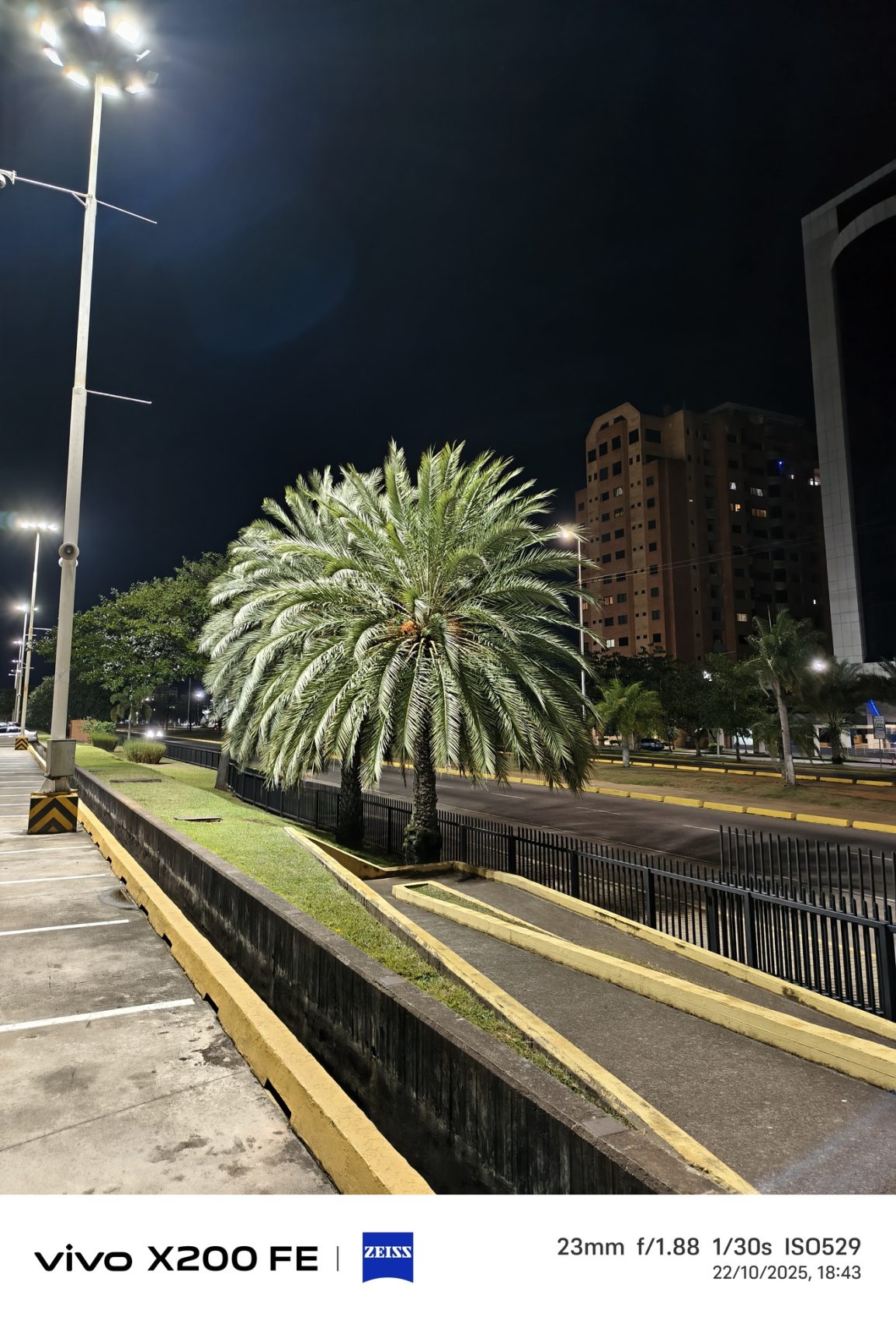







3x telephoto samples:
Regarding the periscope sensor, it offers excellent image quality. The best thing is that, unlike some other similar solutions, there’s no “foggy effect” in the photo. Vivo has been offering some of the best camera phones available for years, so they have a lot of experience with image processing, and you’ll notice that here. The camera app offers four preset zoom levels: 0.6x, 1x, 2x, 3x, and 10x. However, if you long-press the zoom selector, you can use a carousel to fine-tune the zoom levels up to 100x. Although, as you might imagine, the images at the maximum digital zoom level will be barely usable in most cases.
Below you’ll find samples taken with the 3x telephoto periscope lens.














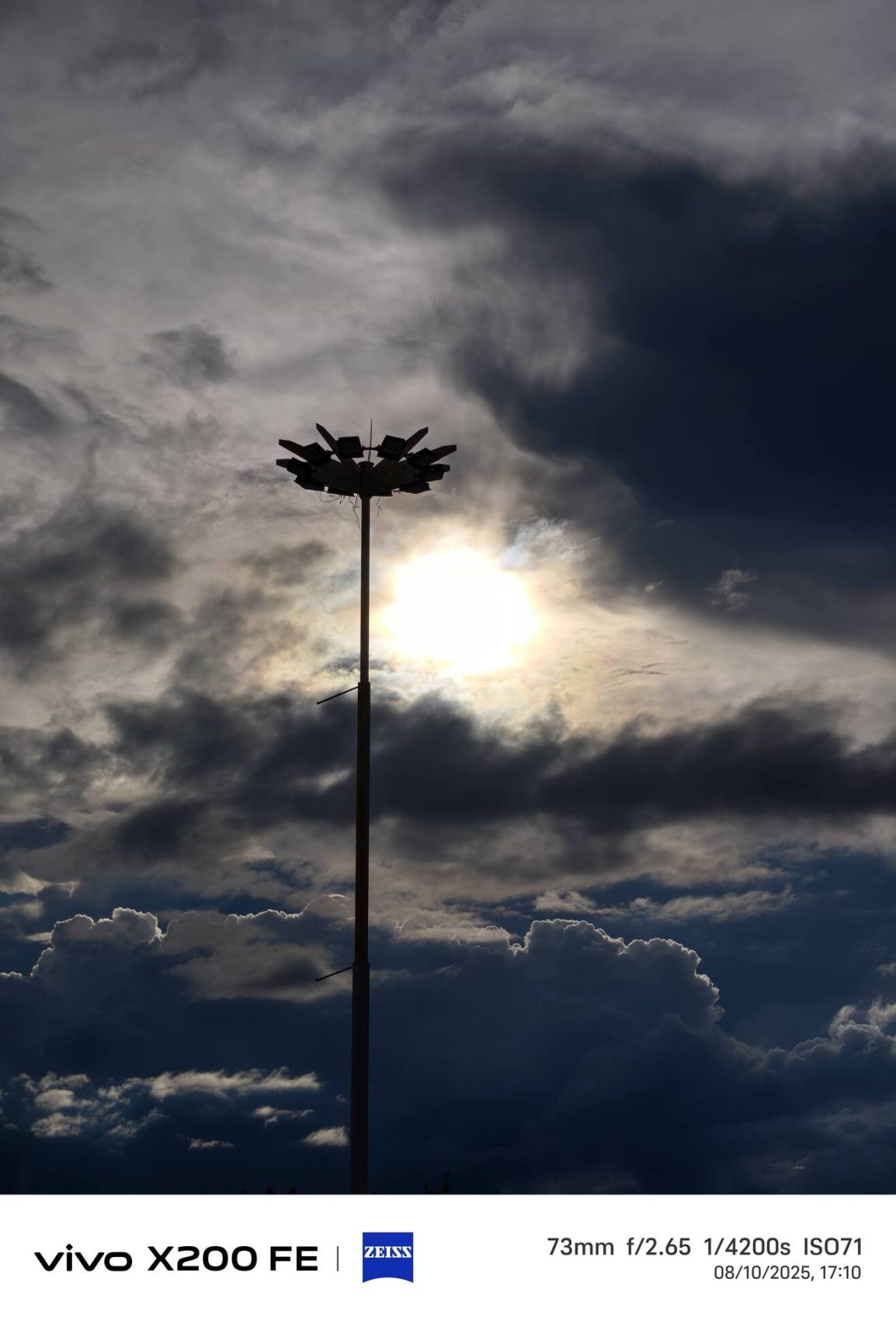


















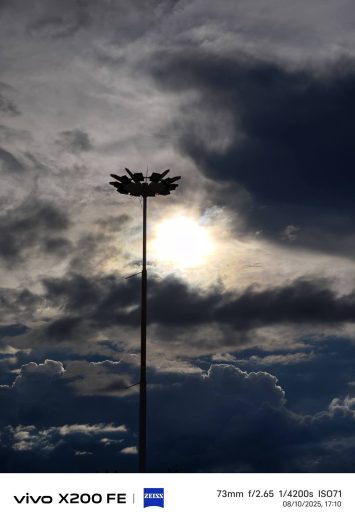




If you are interested in even higher zoom levels, 10x zoom results are better or worse depending on the scene. There are cases where the “AI reconstruction” is more evident than in others. In my experience, the device is capable of delivering “almost optical” quality up to 5x zoom. Beyond that, the AI’s participation in photo reconstruction will be much more evident.
Regarding nighttime performance, the 3x telephoto sensor continues to perform quite well, similar to the main camera. Texture details aren’t blurred in the shadows, which is great. It may easily be one of the best 3x telephoto lenses available out there, and it’s nice to have it in a handset that doesn’t cost as much as a premium flagship.










Ultra-wide samples:
For the ultra-wide lens, there’s nothing to write home about here. The handset has an 8MP lens that’s quite out of place with the rest of the camera package. These sensors are more typical of affordable phones, and we would have liked to see something better on this device. The best we can say about the Vivo X200 FE’s ultra-wide camera is that it’s simply “usable.” As expected, it performs just acceptable in ideal lighting conditions, but don’t expect a level of detail similar to that of the other sensors. Still, Vivo’s decent image processing helps improve things a bit.




















In low-light situations, the ultra-wide sensor is barely usable. Light control is quite poor, and details become blurred easily. These are the situations when it’s most noticeable that we’re talking about a low-end camera. A 12MP sensor at least would have been much more suitable for this phone.










By the way, the phone offers a “Supermoon” mode:

Regarding Vivo’s camera app, it offers a ton of “styles.” There are the three main ones: Texture, Vivid, and Zeiss. The latter is the mode that promises the most realistic results, and it’s the one we used for camera testing. However, Vivo sets the “Vivid” mode by default, aware that most users prefer photos with punchier colors for social media.
There’s a set of other styles you can play with and experiment with to get the results you like best. There are even dedicated modes for “Food” and “Stage”—a mode designed for taking photos at concerts, taking advantage of the phone’s zoom capabilities. You can also enable a “Smart Focus” setting that will automatically track subjects. The camera app is full of modes and options that photography fans will appreciate.

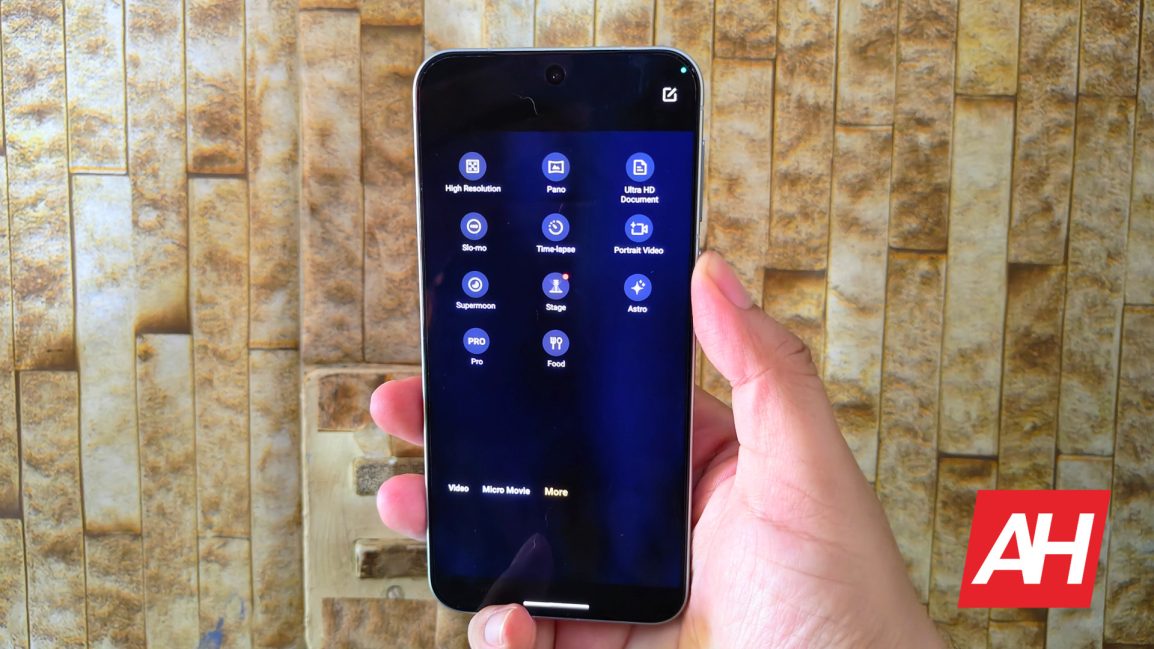
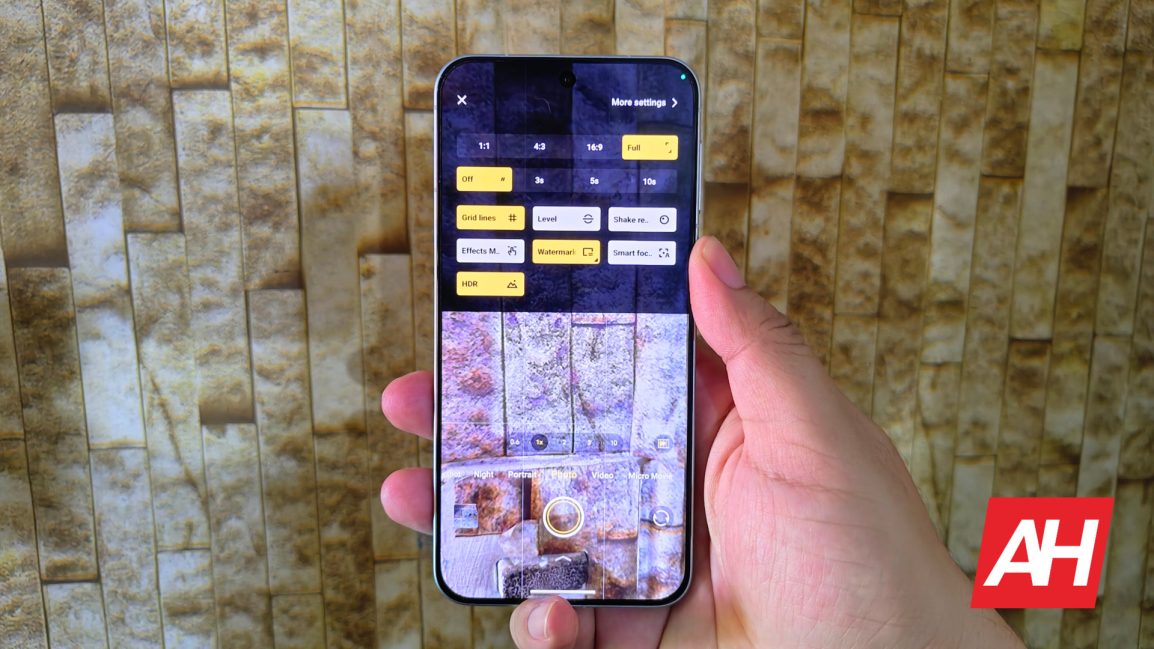

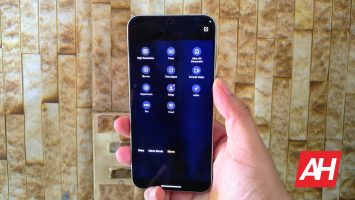

As an interesting fact, the phone’s flash is not monotone. It can switch between different levels of cool and warm. You can adjust the tone manually or let the phone do it automatically based on the scene. Vivo calls this “Aura Light,” whose intensity is also adjustable. There are even a pair of discreetly integrated front-facing flashlights for selfies.
The Vivo X200 FE is one of those great phones that, unfortunately, is not available in the US market. However, it was launched for €799 in EU countries and from ₹51,990 in India. At this point you could probably get it for less. This phone is a serious competitor to other compact devices like the OnePlus 13s and the Google Pixel 10 in its range. It’s an easy recommendation for anyone in the market for a compact phone that doesn’t compromise on the core experience.
The post Vivo X200 FE Review: A Compact Beast That Won't Break Your Bank appeared first on Android Headlines.
Samsung has started rolling out the Android 16-based One UI 8 update for the Galaxy F55 and Galaxy F15. The update brings smoother performance, new features, and a refreshed look to make the phones faster and easier to use.
One UI 8 update for Galaxy F55 and F15 update comes with build numbers E556BXXU4CYJ4 and E156BXXU7CYJ5. The download size is about 2.3 GB, and it comes with the October 2025 security patch. The update is currently live for users in India, and the company will make it available for all models soon.
One UI 8 brings several exciting features. The Weather app has a fresh new look, while the Now Bar and Live Notifications show more information at a glance. Users can also enjoy the new 90:10 split-screen ratio and new clock styles.

The animations throughout the system have been improved, making switching between apps feel faster and more natural. Samsung has also added Google’s Circle to Search support with this update for Galaxy F15, giving users more functionality.
If you own a Galaxy F55 or F15 in India, you can check for the update by going to Settings >> Software update >> Download and install. Once the download is complete, tap Install now, and your phone will restart with the latest One UI 8 features. This update makes the Galaxy F55 and F15 more reliable, faster, and enjoyable to use.
The post Samsung Galaxy F55 and F15 users can finally enjoy One UI 8 features appeared first on Sammy Fans.
Android 16 is introducing a useful new feature that makes app updates much quicker and easier for everyone. The new feature, Seamless App Updates, helps reduce the time an app is frozen during an update. This means your apps will update faster and with almost no interruption to your phone use.
Normally, when you update an app, Android briefly freezes it so it doesn’t crash while files are being replaced. For large or system apps, this freezing time could last a few seconds, which makes the app unusable for a short while.
But with Android 16, this time has been reduced from seconds to just a few milliseconds. It means that you’ll barely notice it happening during app updates.
This improvement comes from a smart change in how Android processes app updates. The system runs scripts called dexopt and dex2oat, which prepare an app’s code to make it run faster. In older versions, these tasks were done while the app was frozen, causing delays.
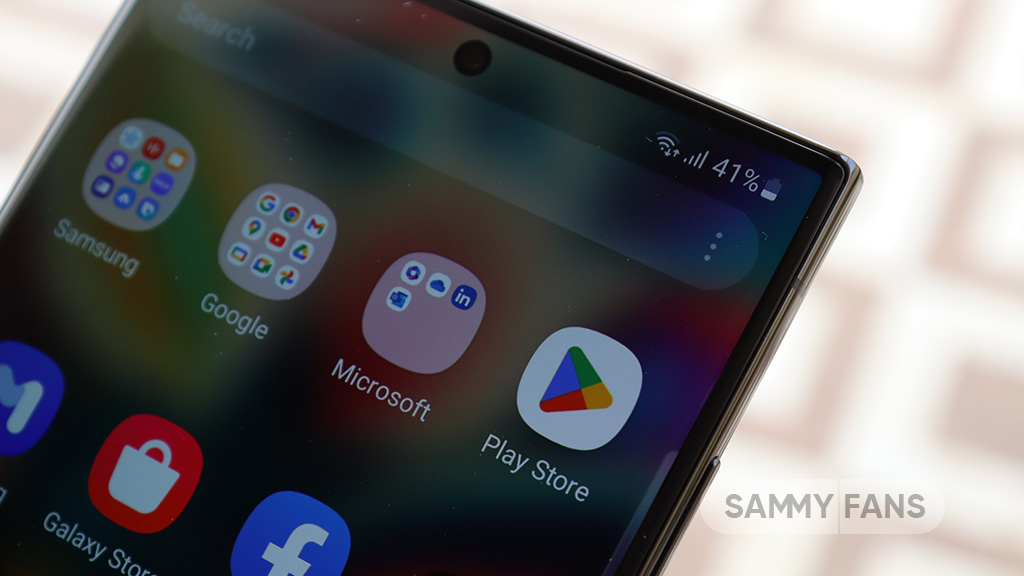
Android 16 now performs these optimizations earlier in the update process, so when the app is swapped with the new version. And the freezing happens for only a split second.
This update doesn’t just make things faster, as it also makes the whole experience smoother. It’s especially helpful for larger apps or for users who install several updates at once through the Play Store.
Although Google hasn’t shared every technical detail, the results are clear as apps now update almost instantly. Seamless app updates may seem like a small change, but it’s a big improvement in everyday use, saving time and making Android 16 feel faster and more reliable overall.
The post Android 16 makes app updates faster by reducing freeze time appeared first on Sammy Fans.
Mahindra Electric has introduced a smart new way for its customers to access their cars. The company has partnered with Samsung to bring Digital Car Key support for the Mahindra Electric Origin SUV through Samsung Wallet. This new feature lets Galaxy smartphone users unlock, lock, and start their vehicle using just their phone, so no physical key is needed.
The setup is simple and secure. The digital key works through NFC and UWB technology, which allows the phone to communicate directly with the car. To ensure safety, users must confirm their identity with a fingerprint, face ID, or a PIN before using the feature.
Sharing the car is also easier now. Owners can send a temporary digital key to friends or family members, giving them access for a limited time. It’s a handy option for families who share vehicles.
Samsung has also added a safety backup. If someone loses their phone, the Samsung Find service can remotely lock the device and delete all sensitive data, including the car key. This keeps both personal information and the car secure.

Image: Samsung
The feature will first be available for select Mahindra Electric Origin SUVs, and it will expand across India in the coming months. This step shows Mahindra’s growing aim to make its electric vehicles more connected and user-friendly.
Samsung Wallet already supports digital car keys for brands like Hyundai, Kia, Audi, and Mercedes-Benz. With Mahindra Electric now on that list, Indian customers can enjoy the same modern, digital convenience as drivers of global brands.
With this partnership, Mahindra Electric is taking another step toward a smarter future. It provides a seamless driving experience for EV owners in India.
The post Samsung Wallet adds Mahindra Electric Origin SUV to its digital car key lineup appeared first on Sammy Fans.
It is becoming more common to see celebrities and pop stars using classic cameras as the vintage aesthetic continues to burn white hot. However, most tend to stick with digital -- Taylor Swift and Selina Gomez both really like the Olympus EM-10 Mark IV, for example. Sabrina Carpenter is going even further back in time though as she has been spotted sporting a beautiful Contax G2.
A photographer with a penchant for making his own camera gear is embarking on an ambitious project to create the world's first anamorphic lens for a rangefinder camera.
Photographer and YouTube creator Mathieu Stern saw an incredible piece of cinematic and optical history show up on an auction site. While it was outside his price range, it was not beyond the reach of Atlas Lens Co., known for its Orion and Mercury series cinema lenses. The lens in question was a Bausch + Lomb CinemaScope anamorphic lens attachment, which could turn a traditional cinema lens into a then-groundbreaking anamorphic optic.

